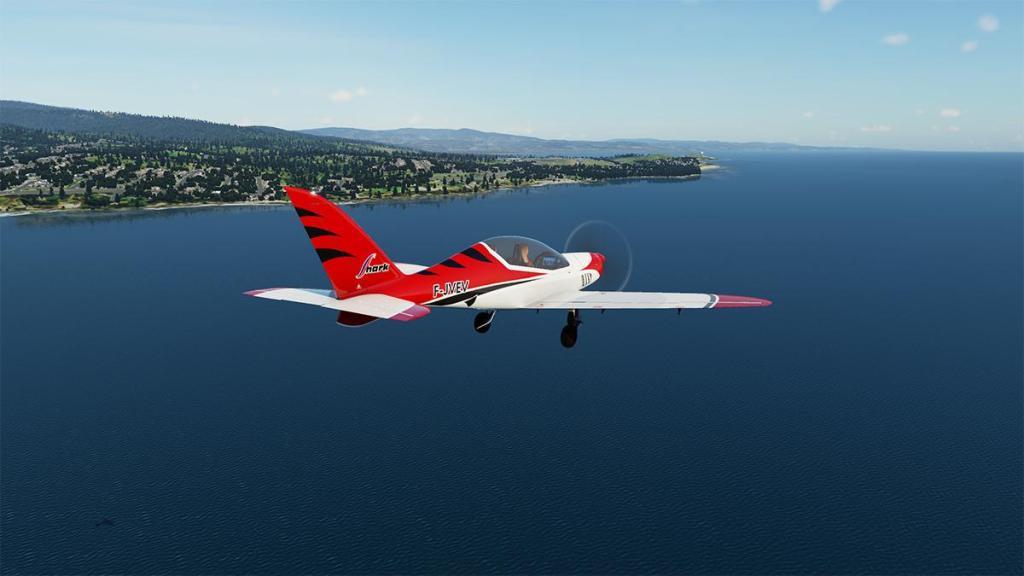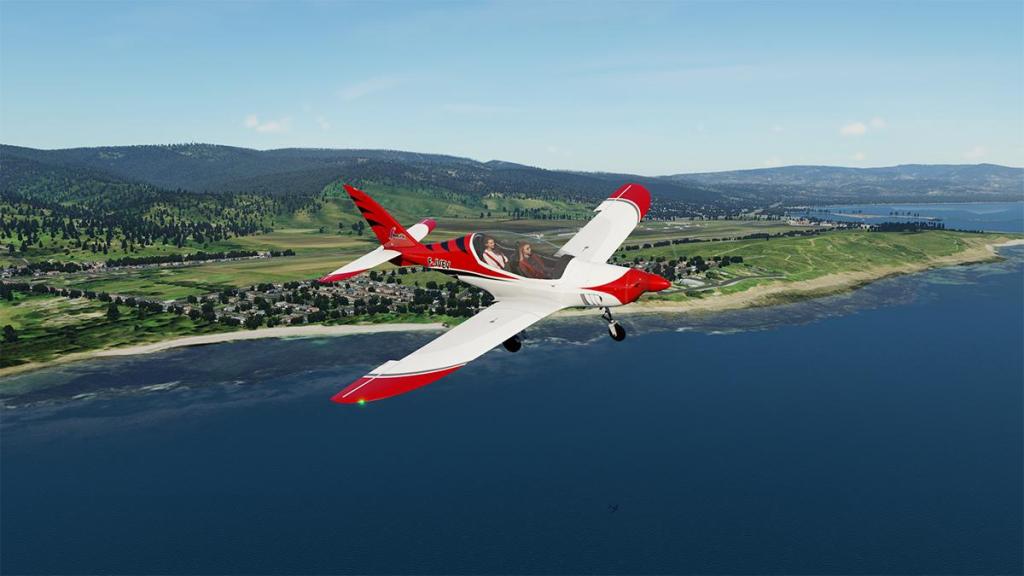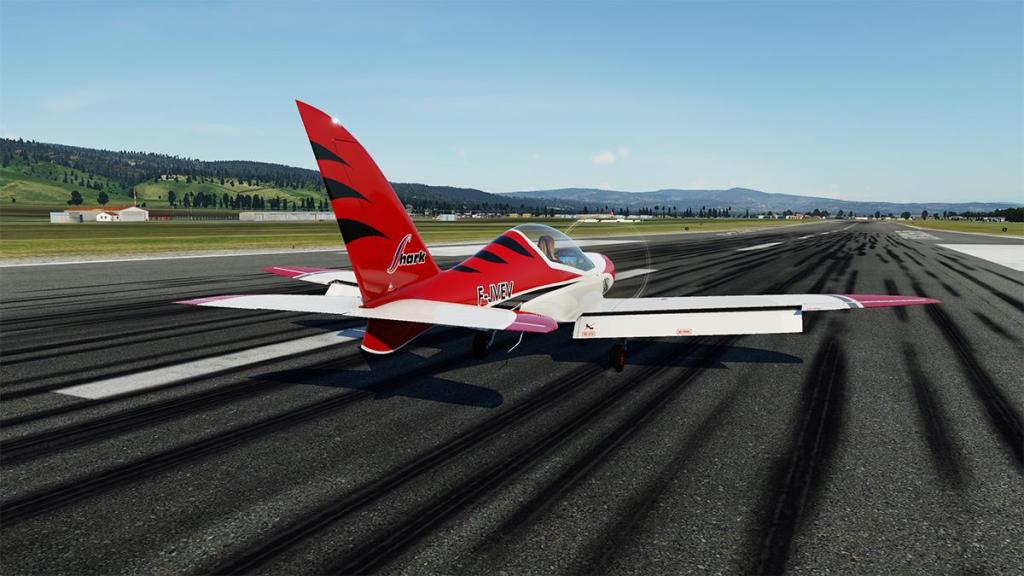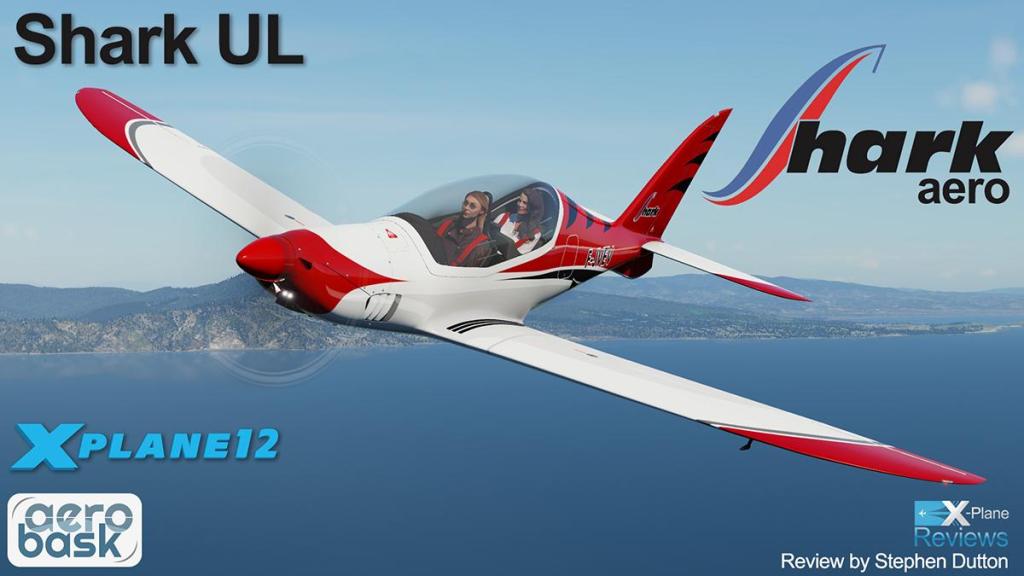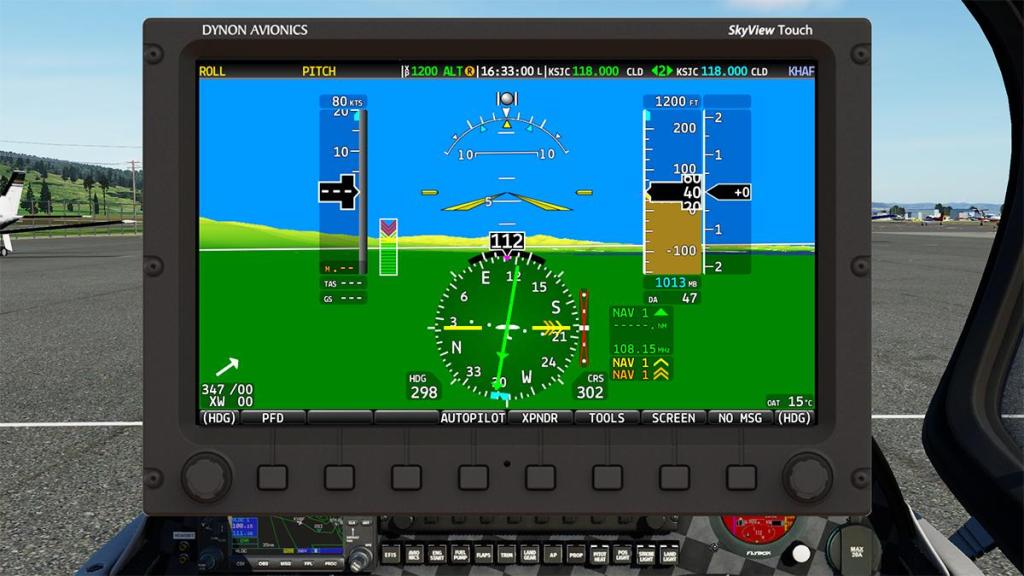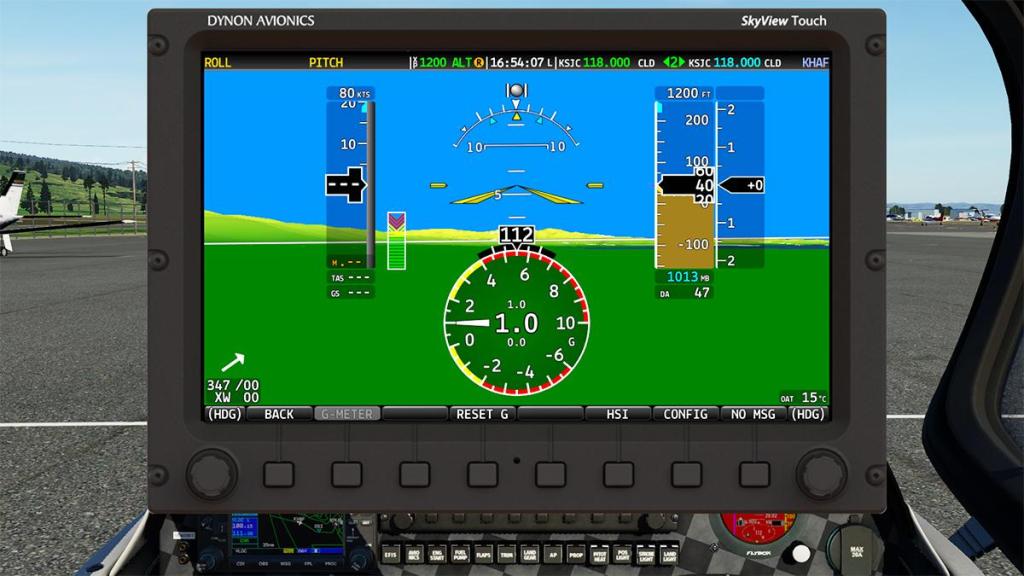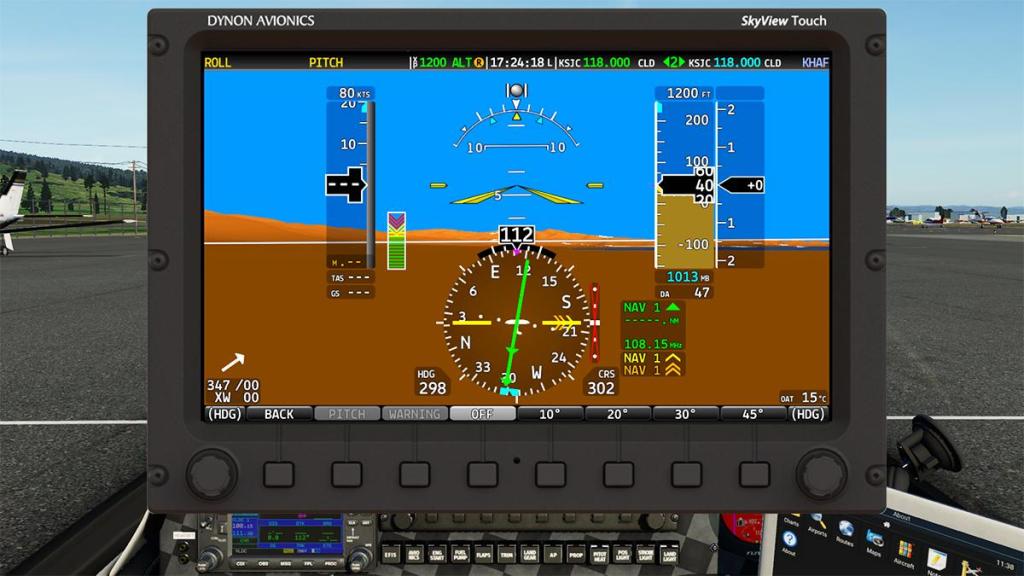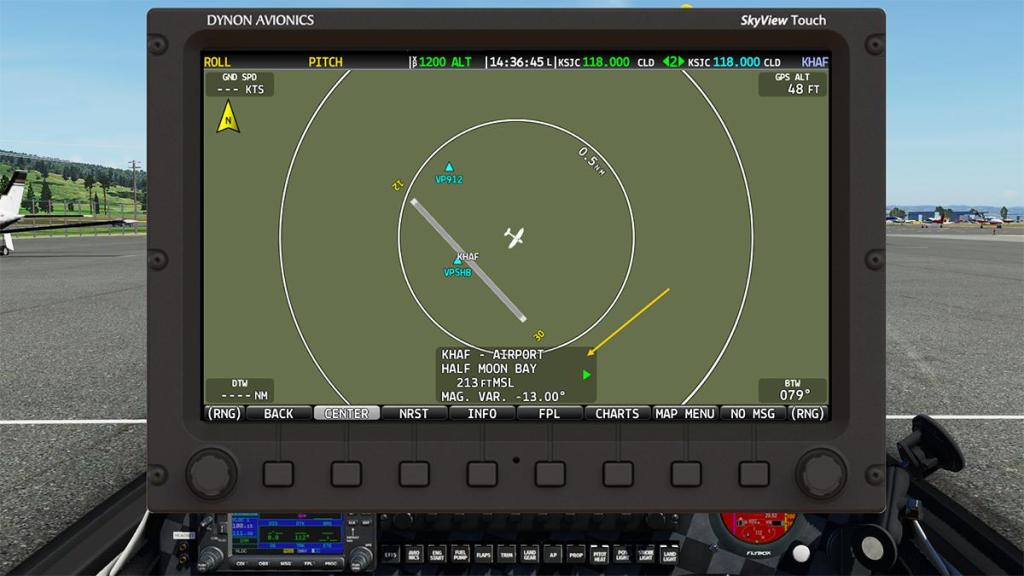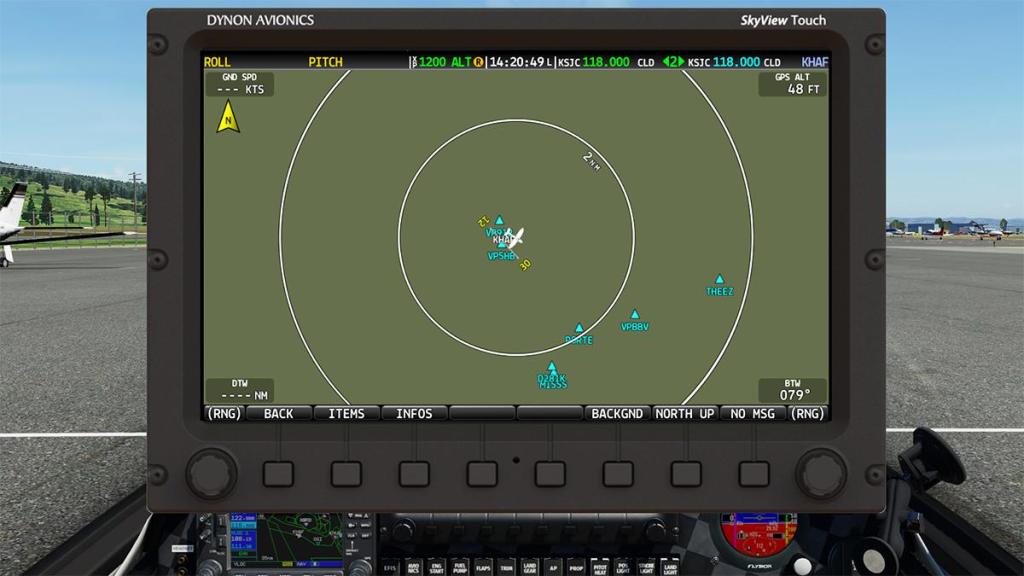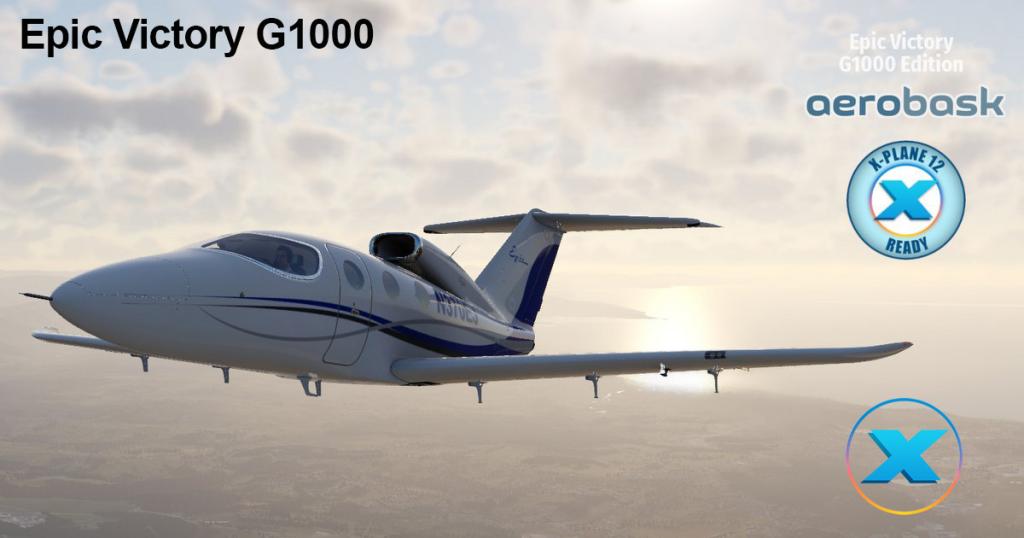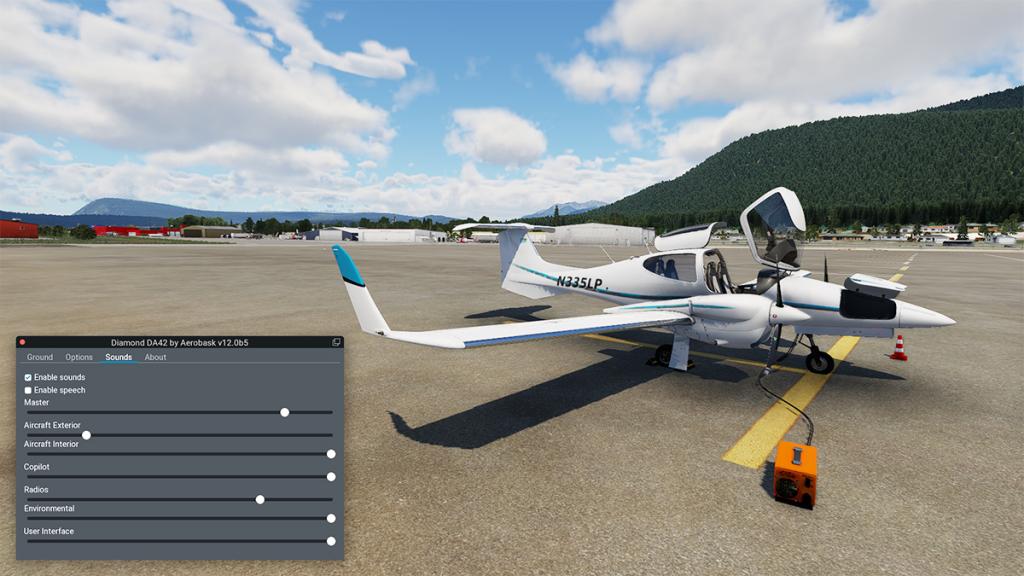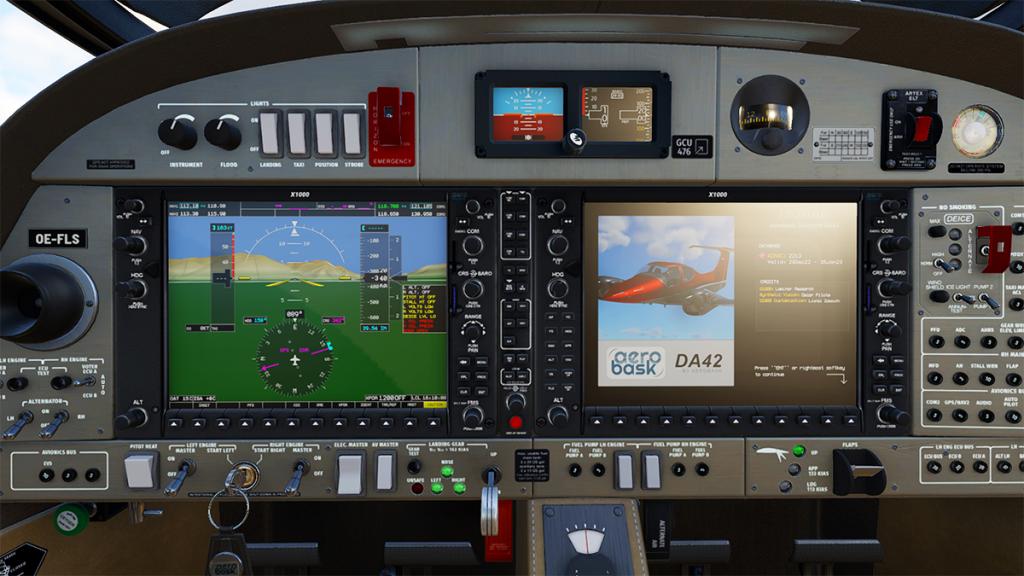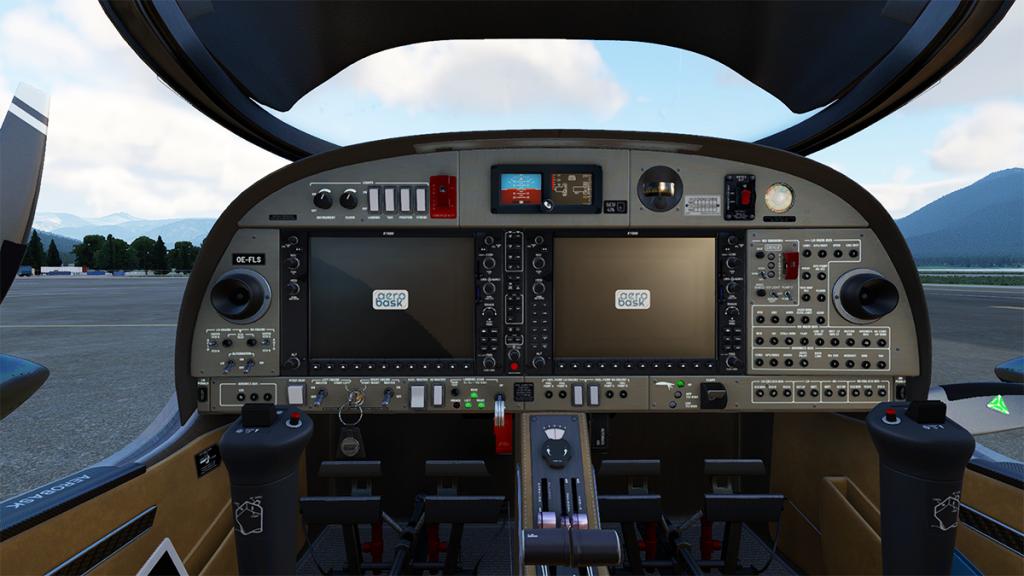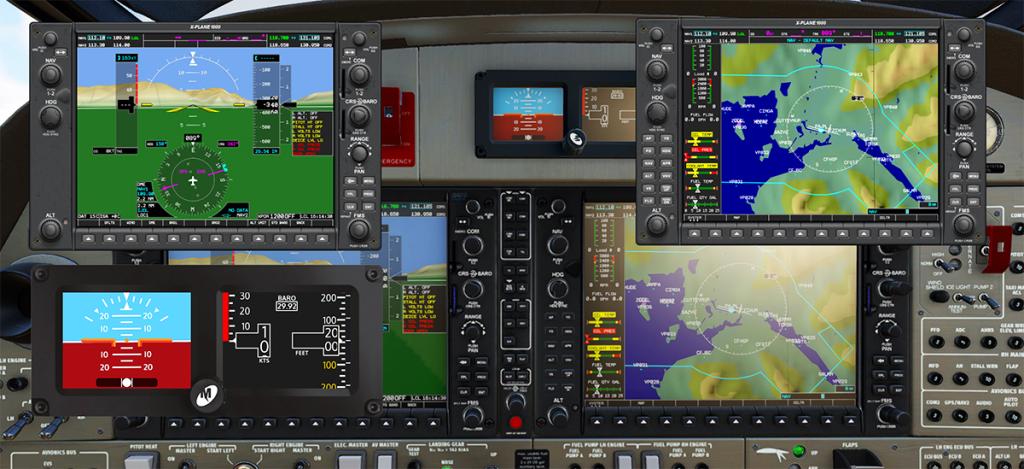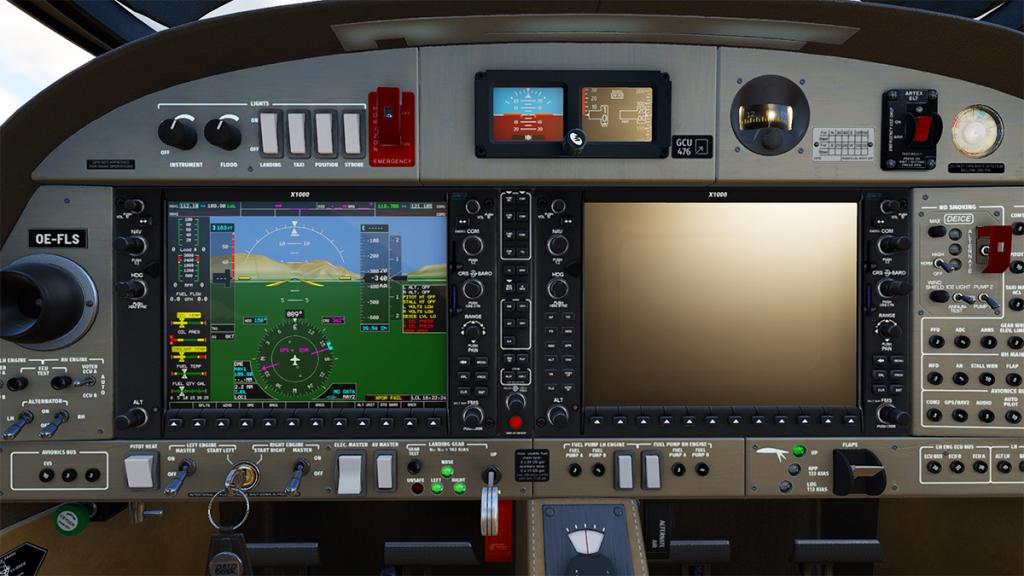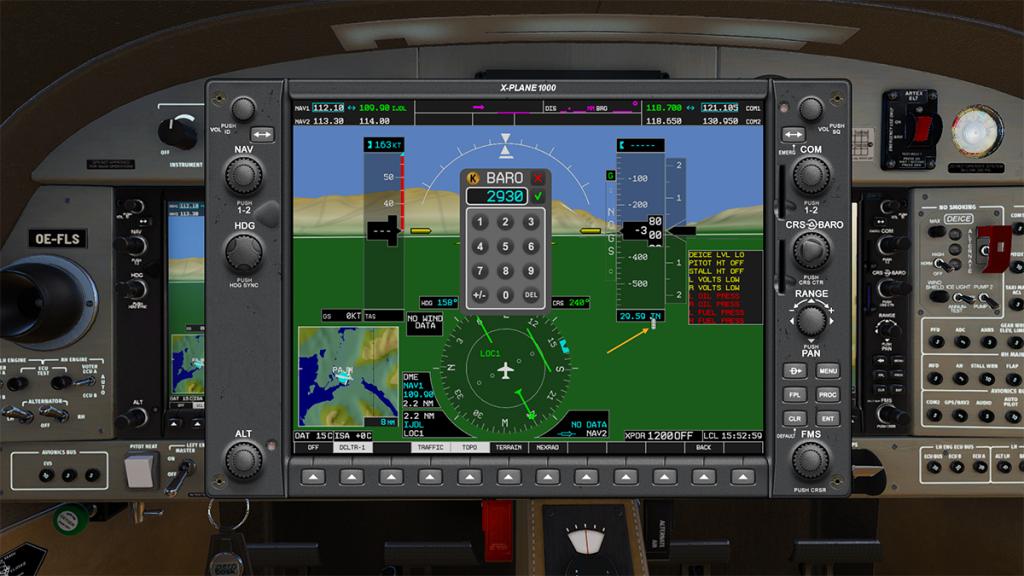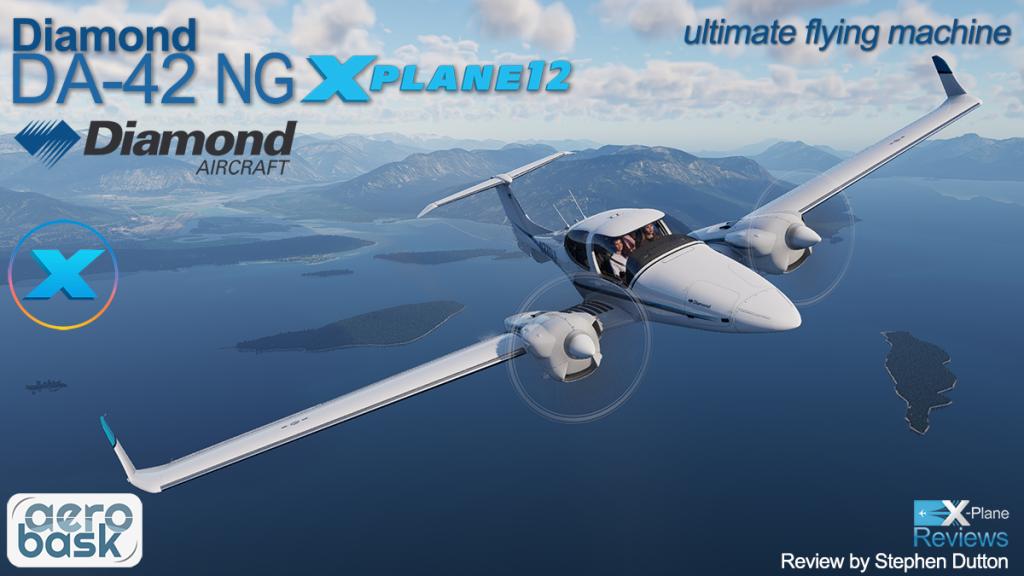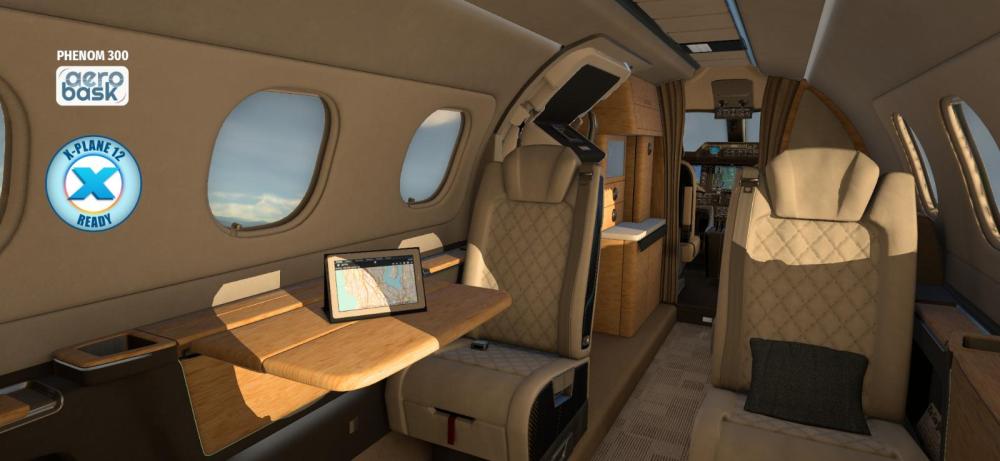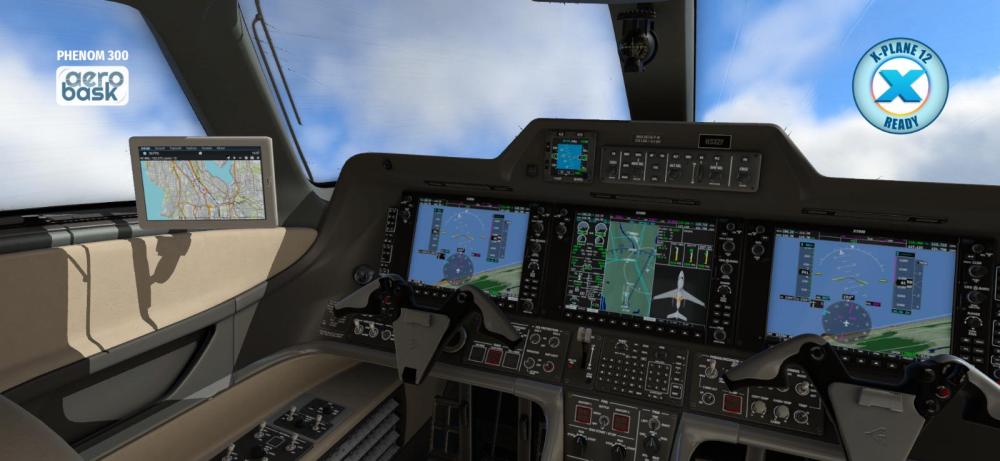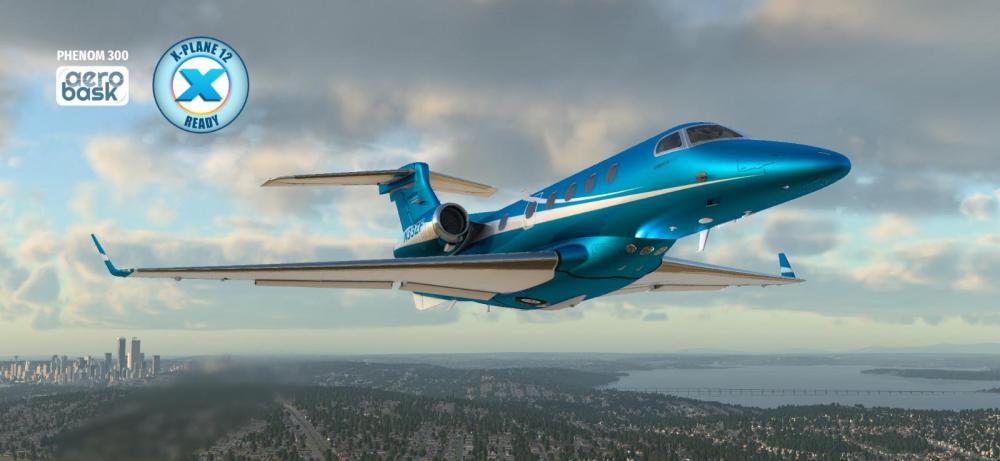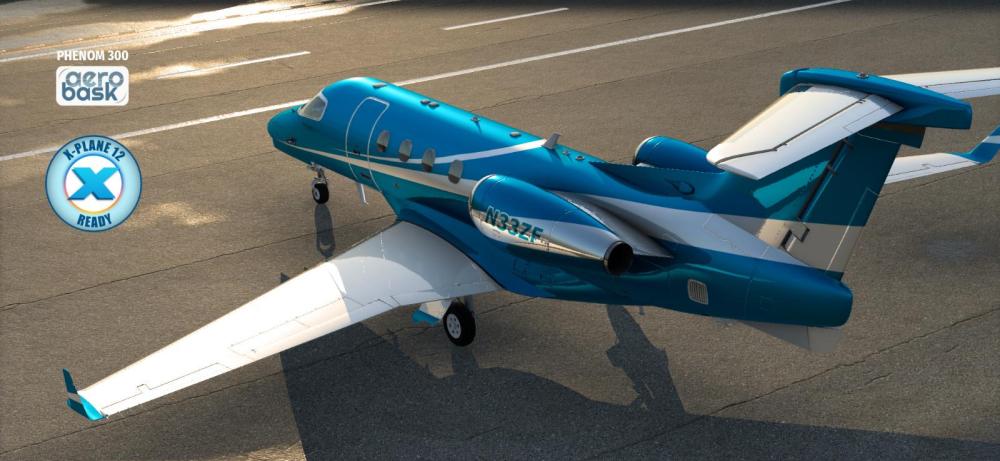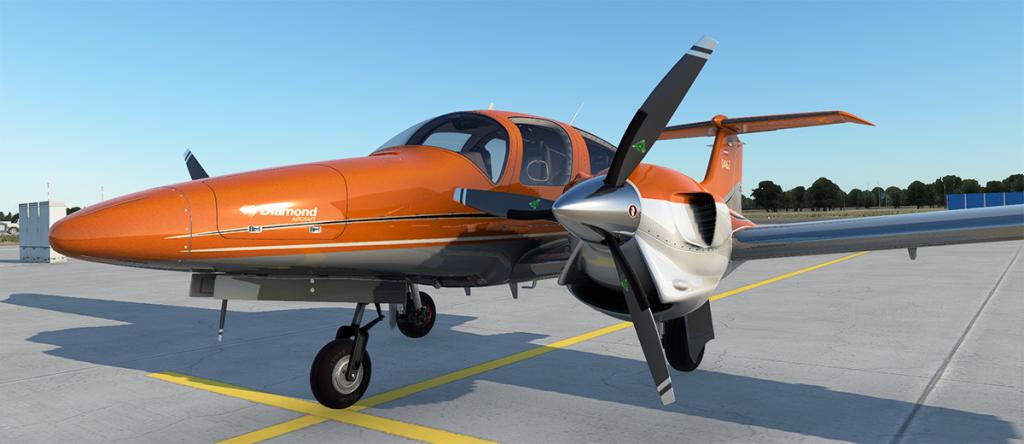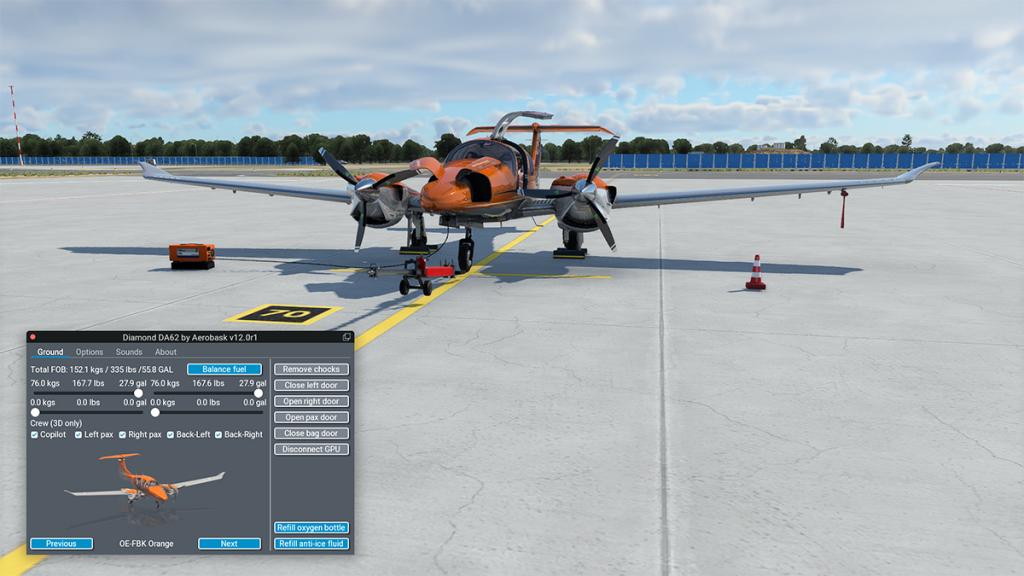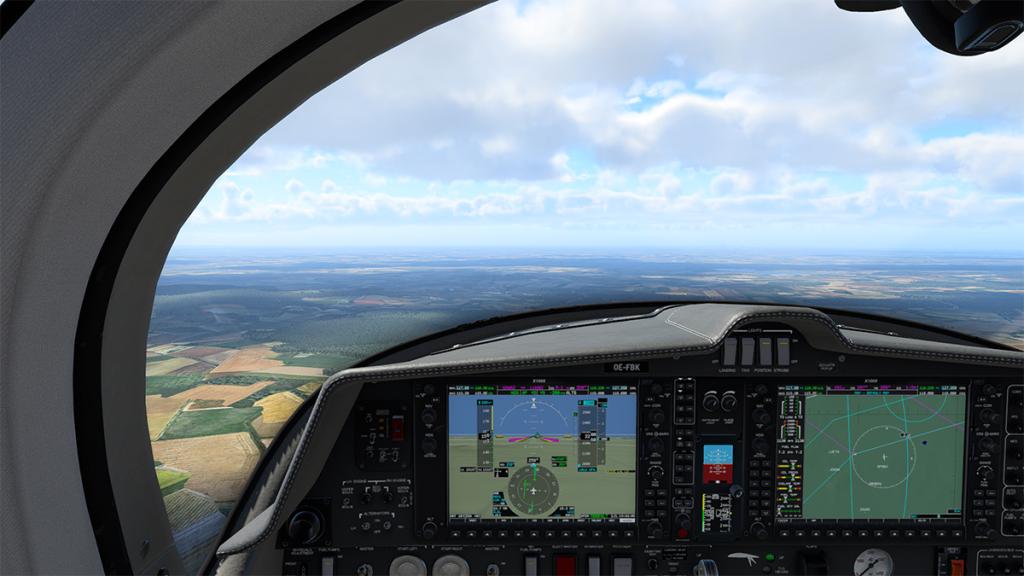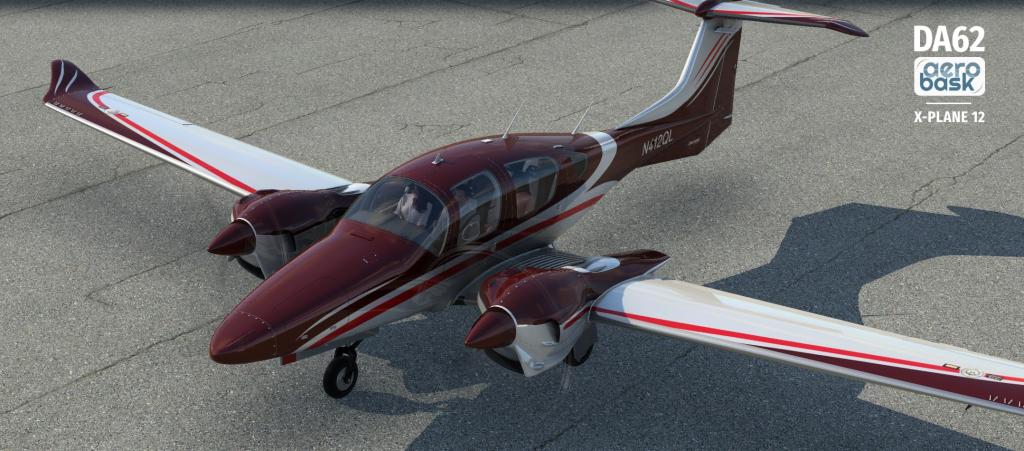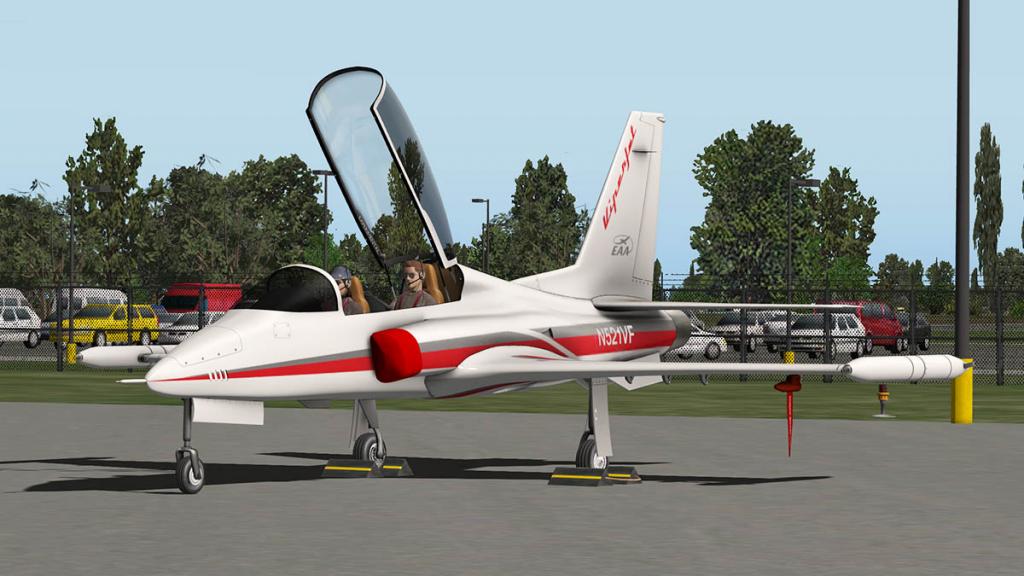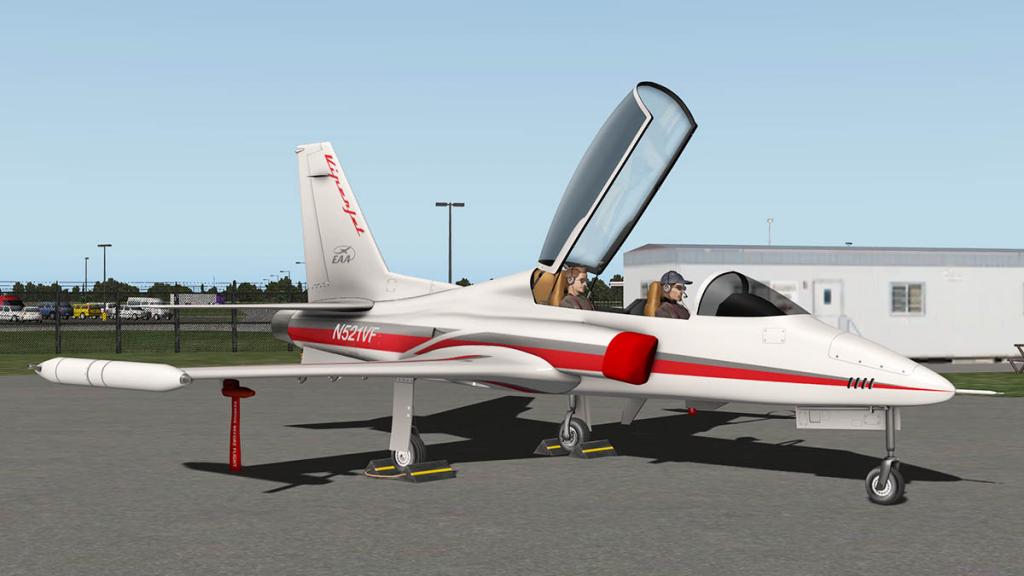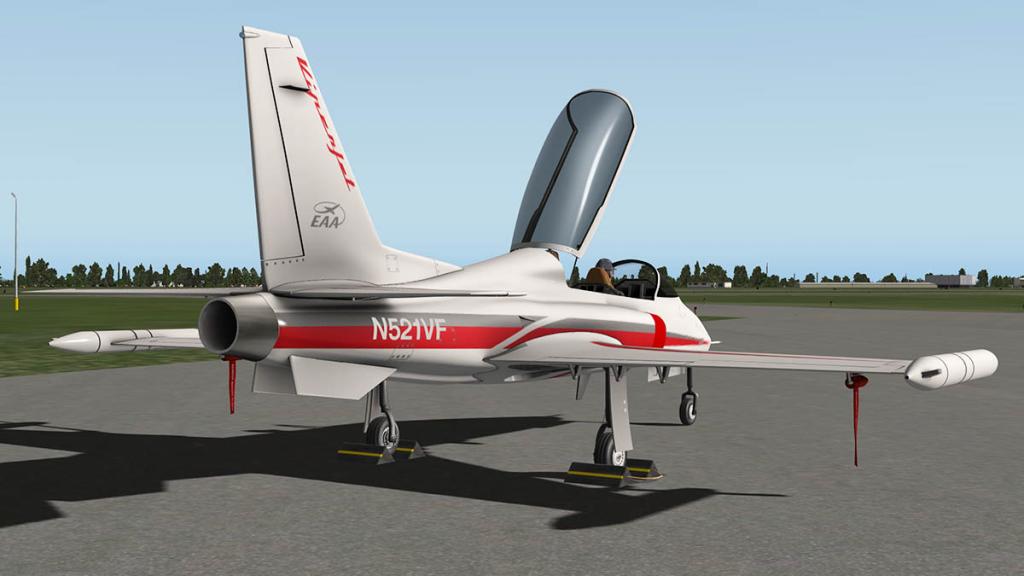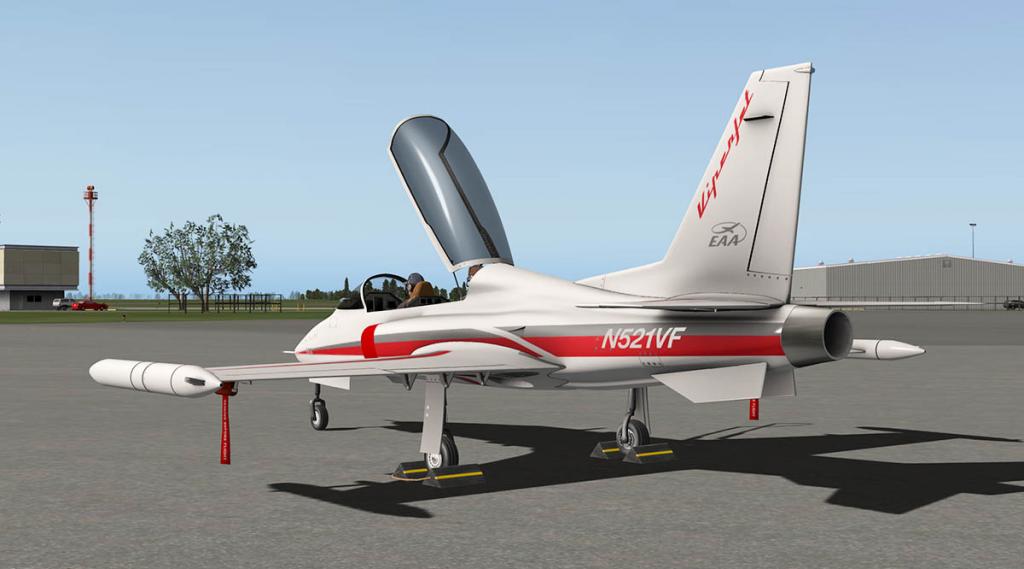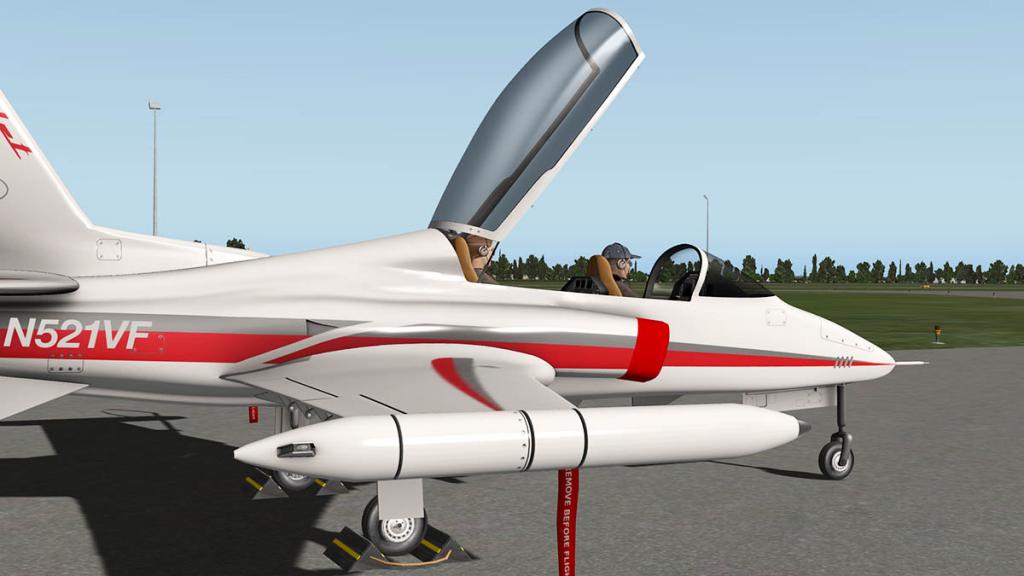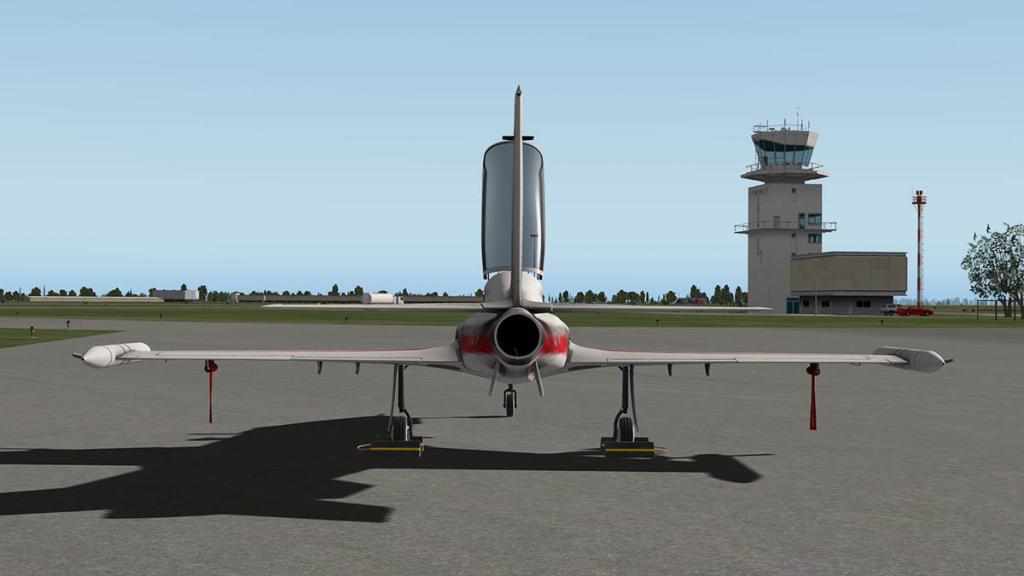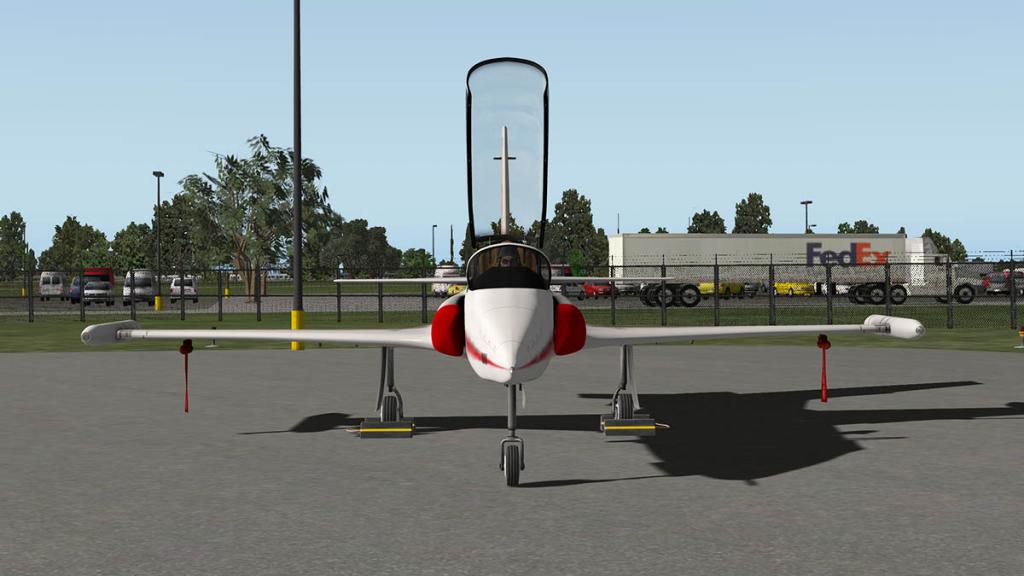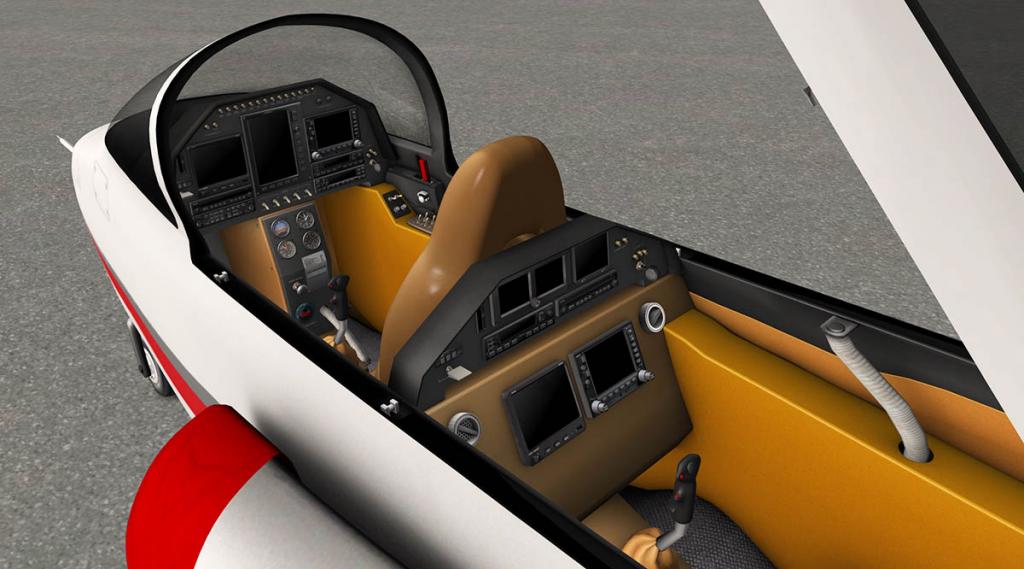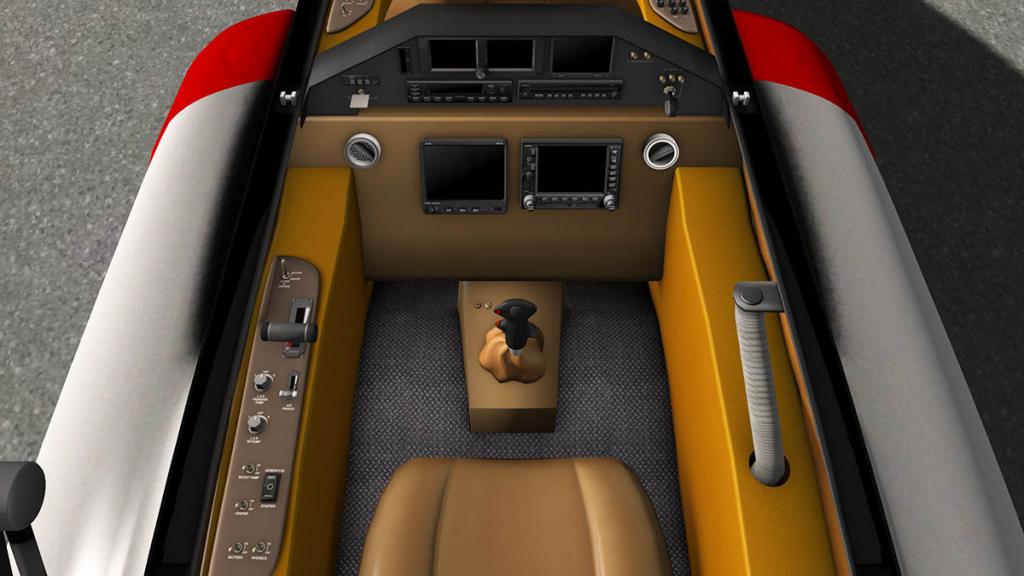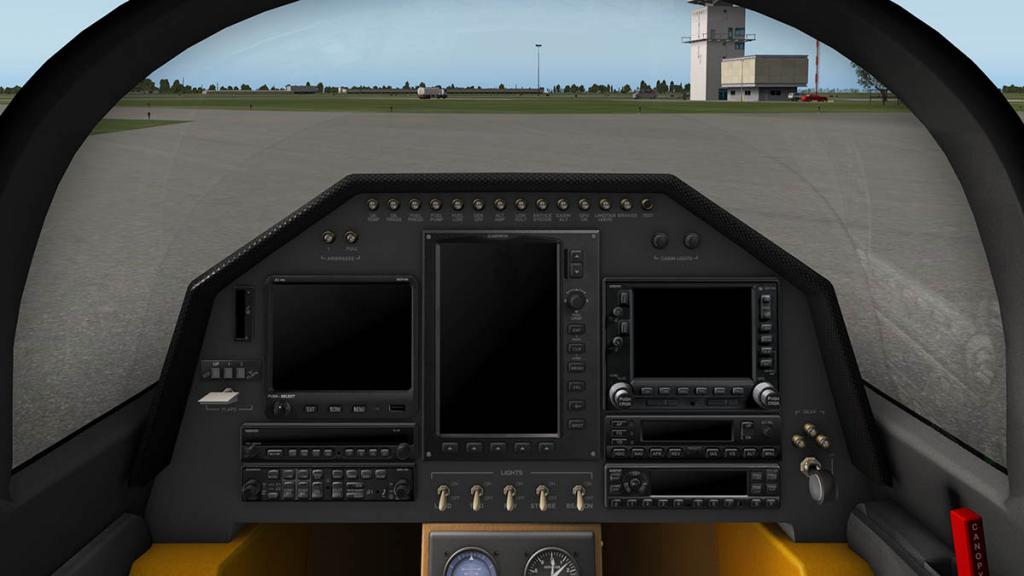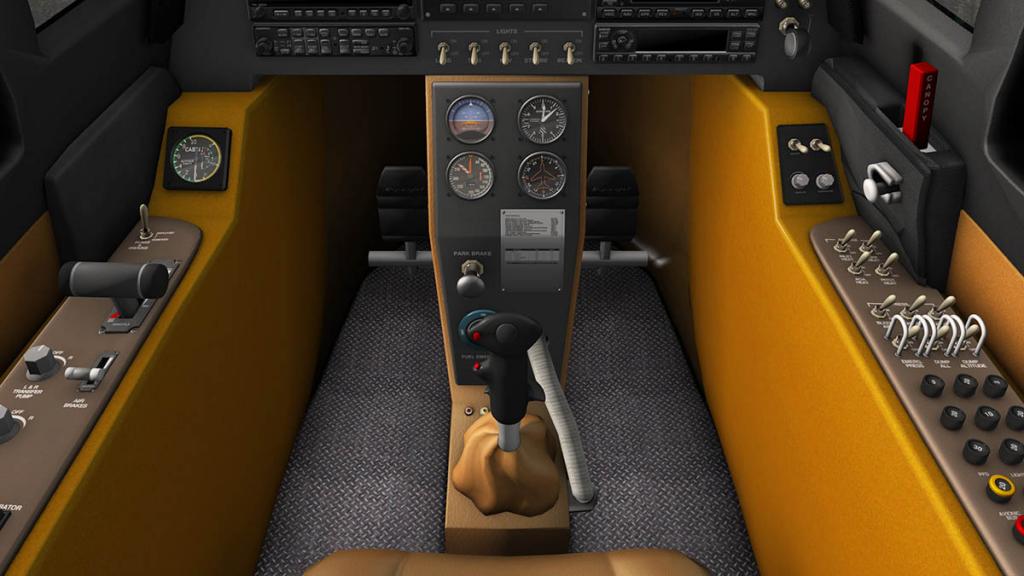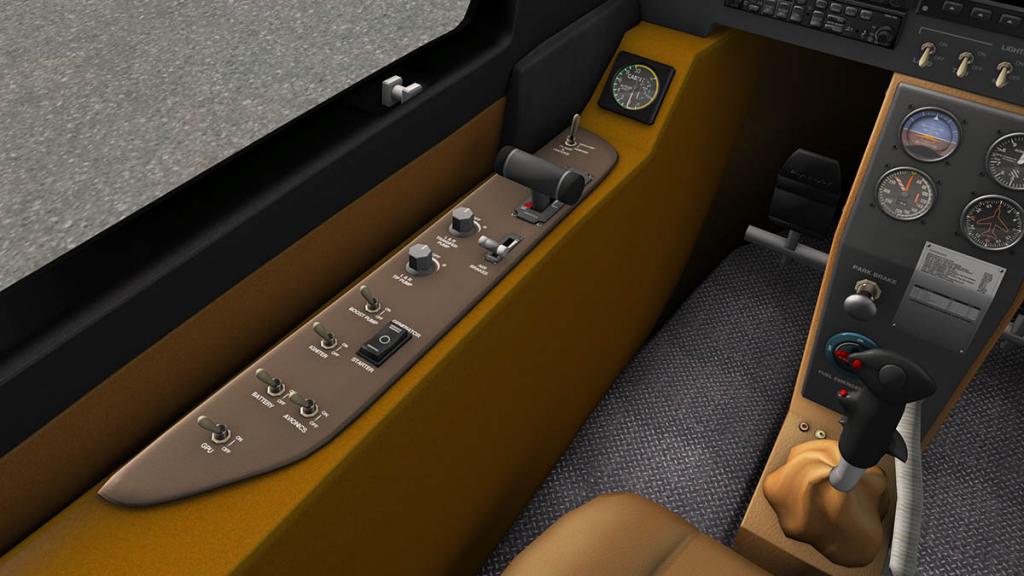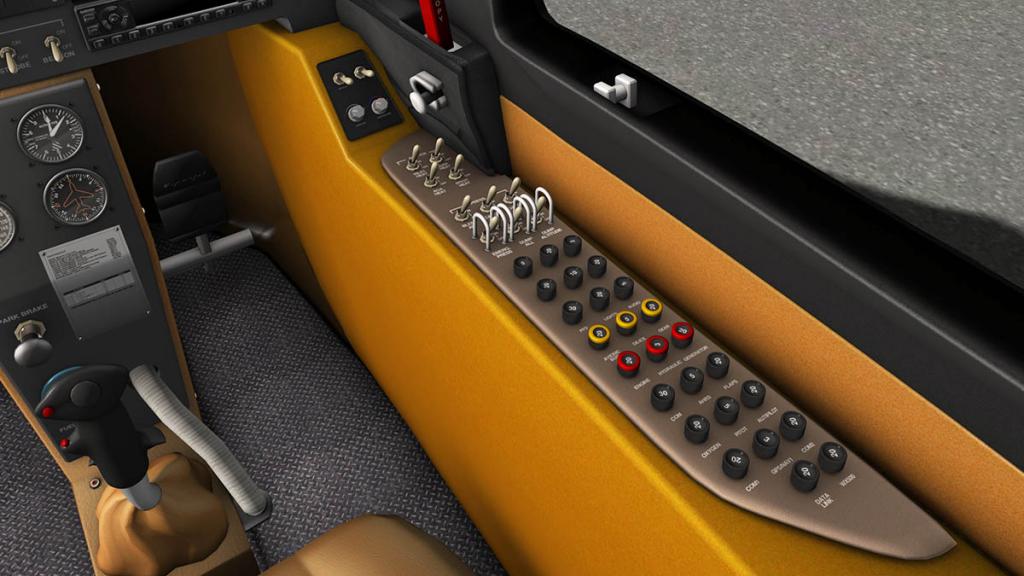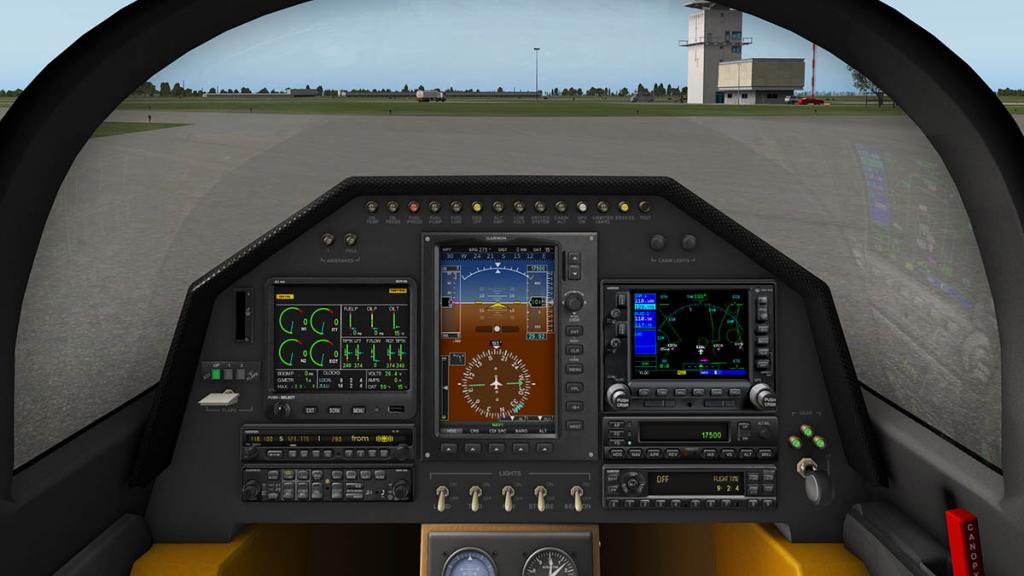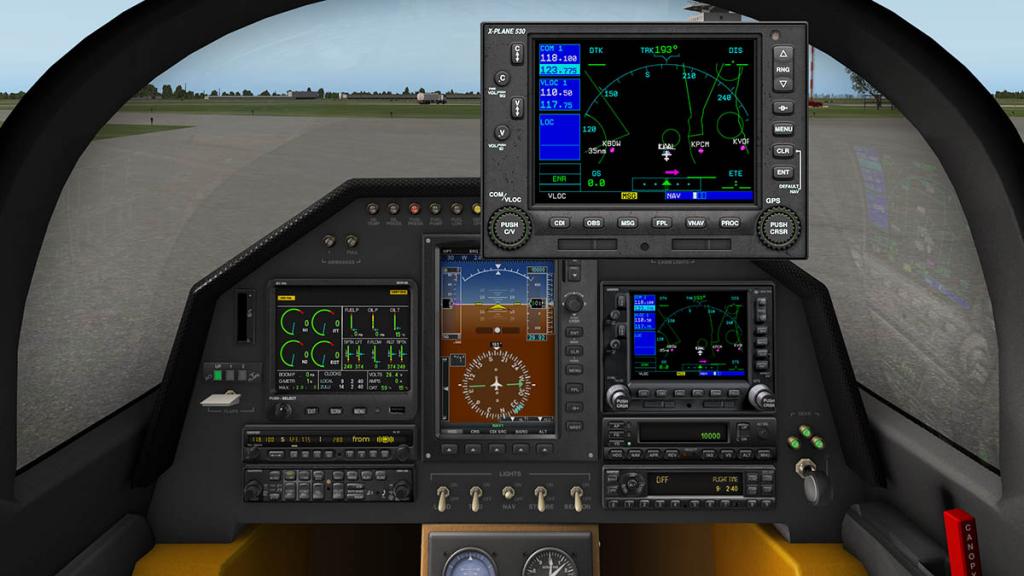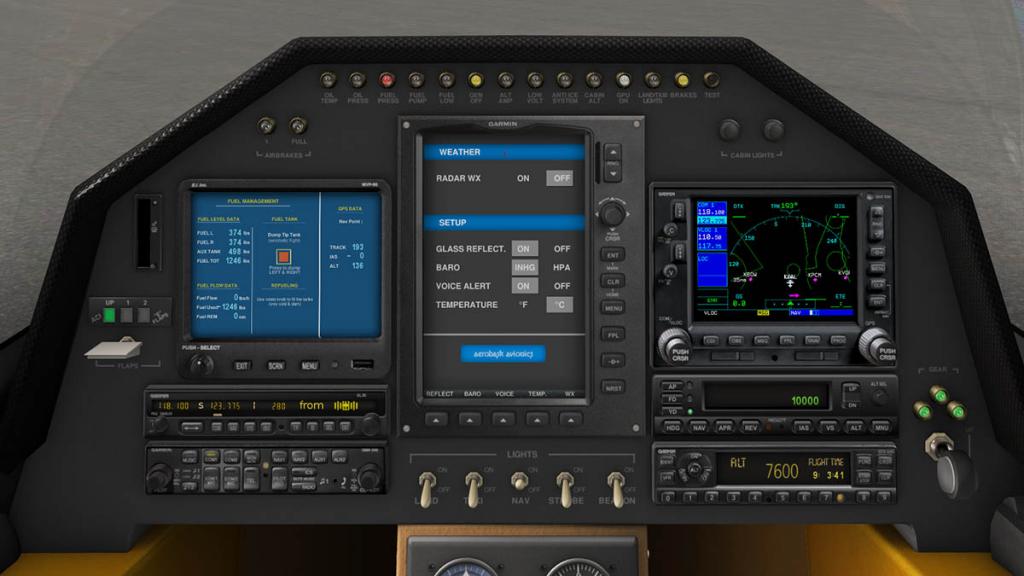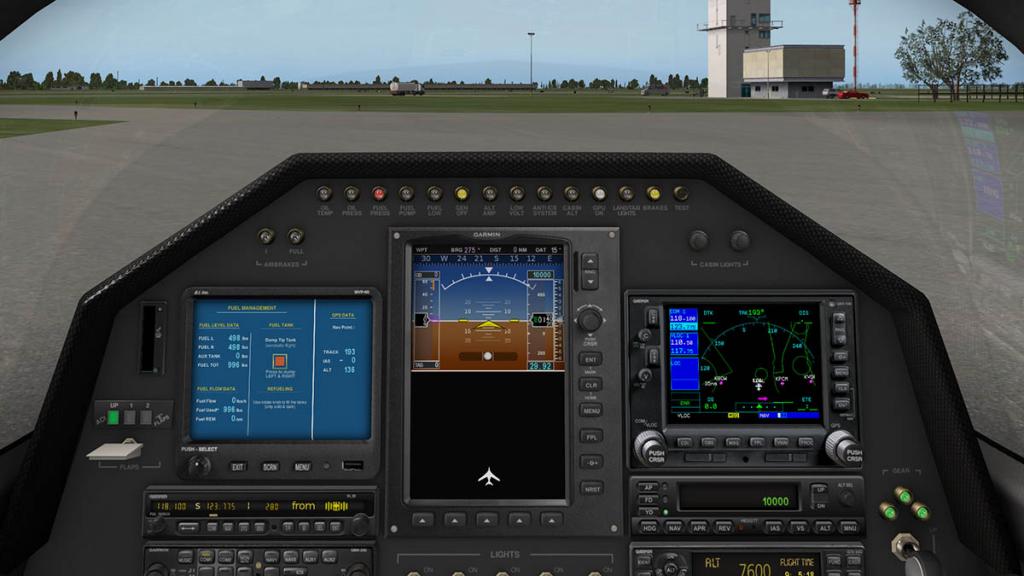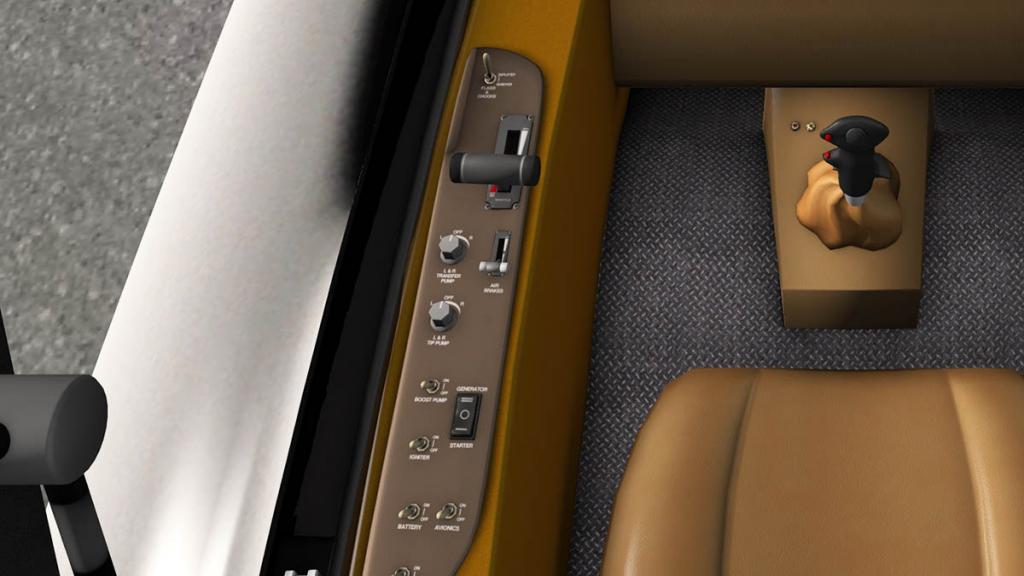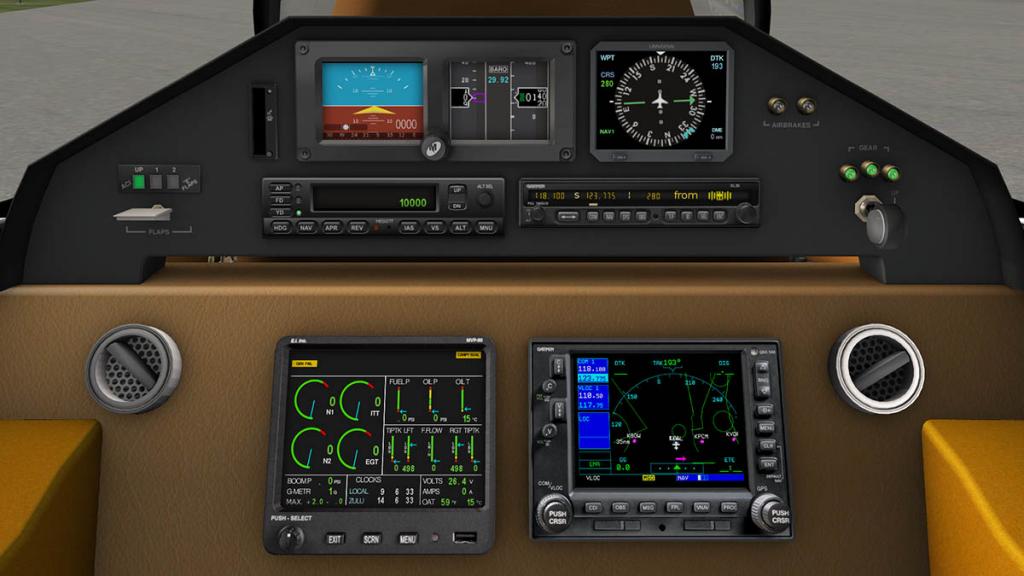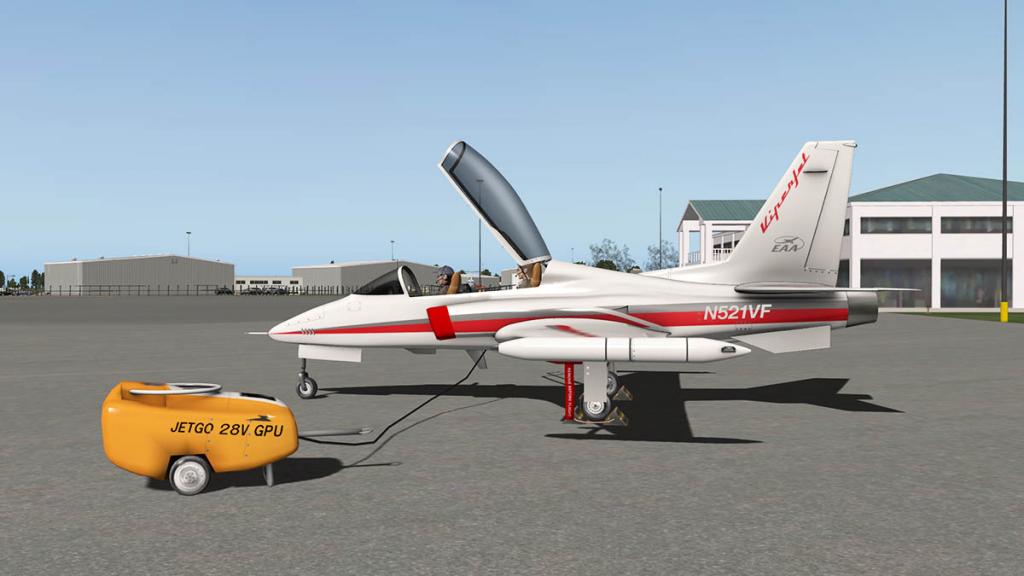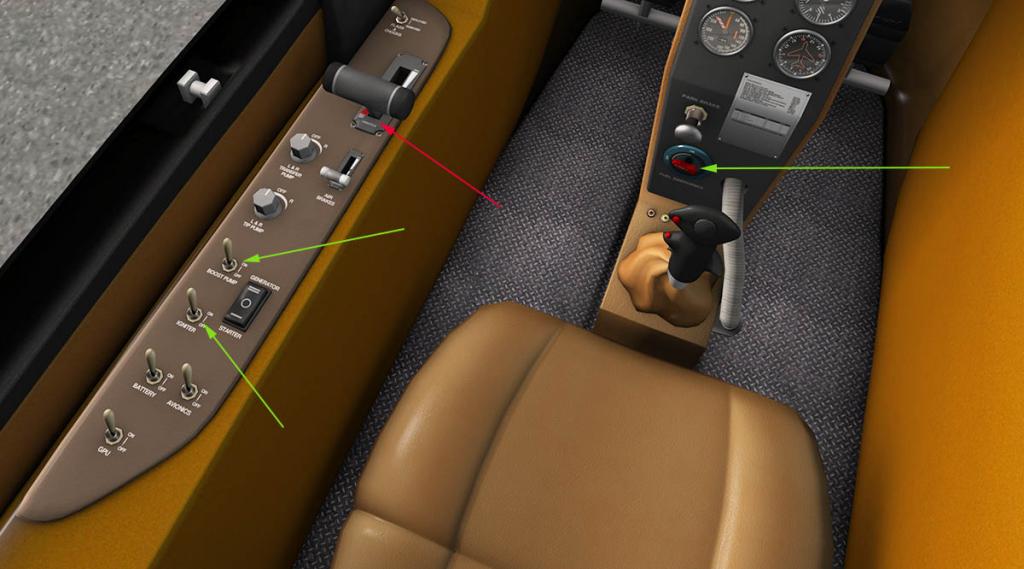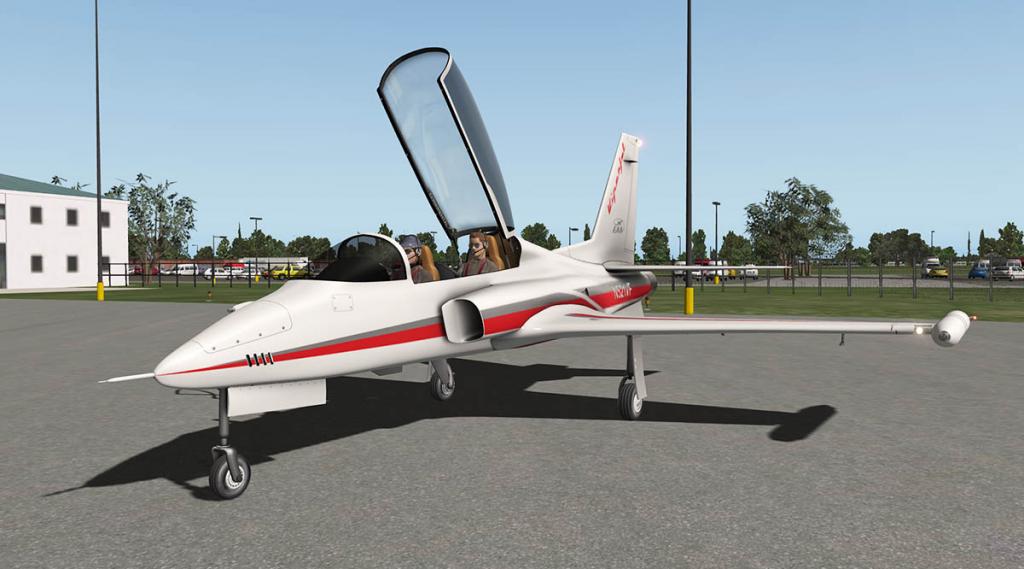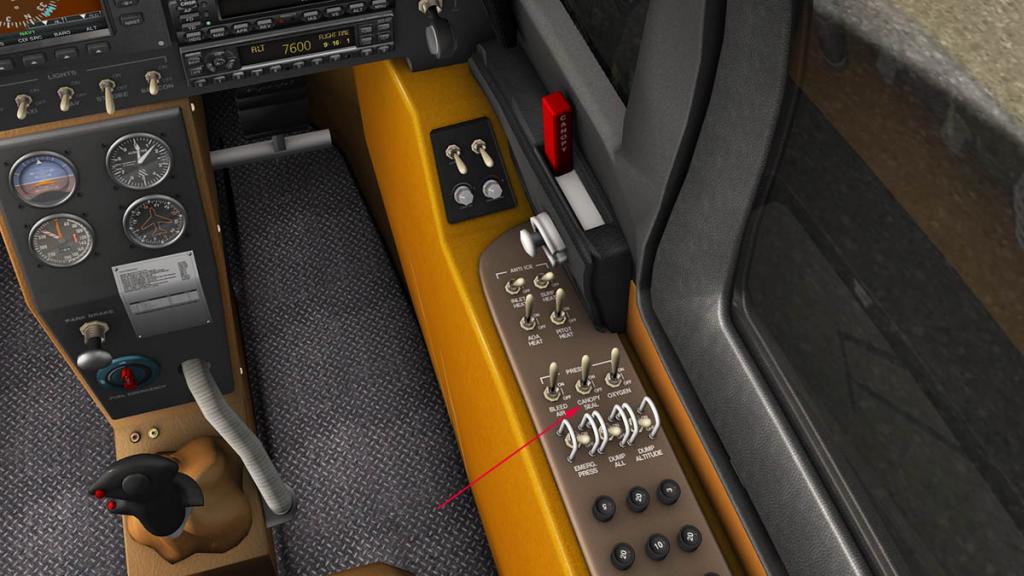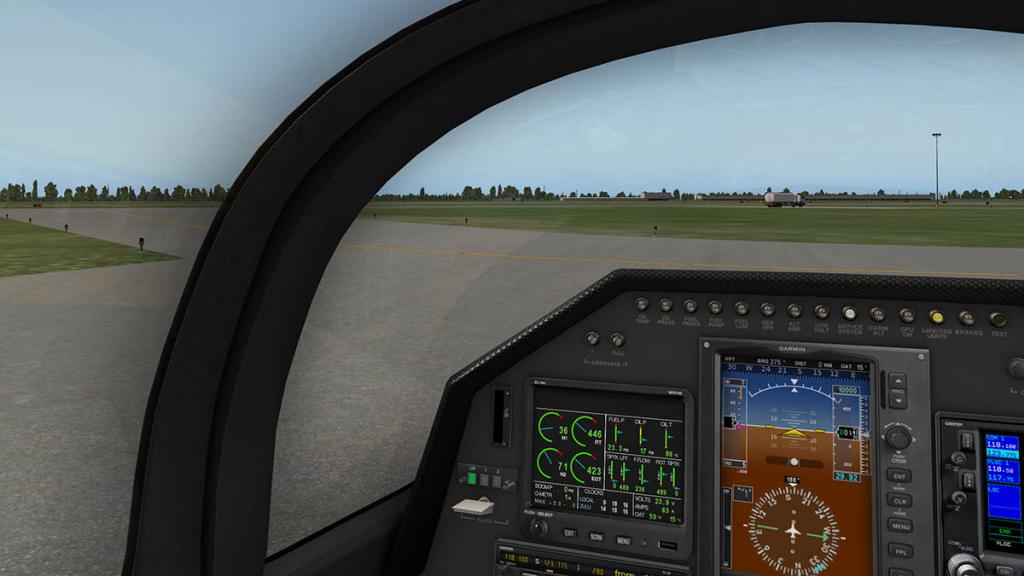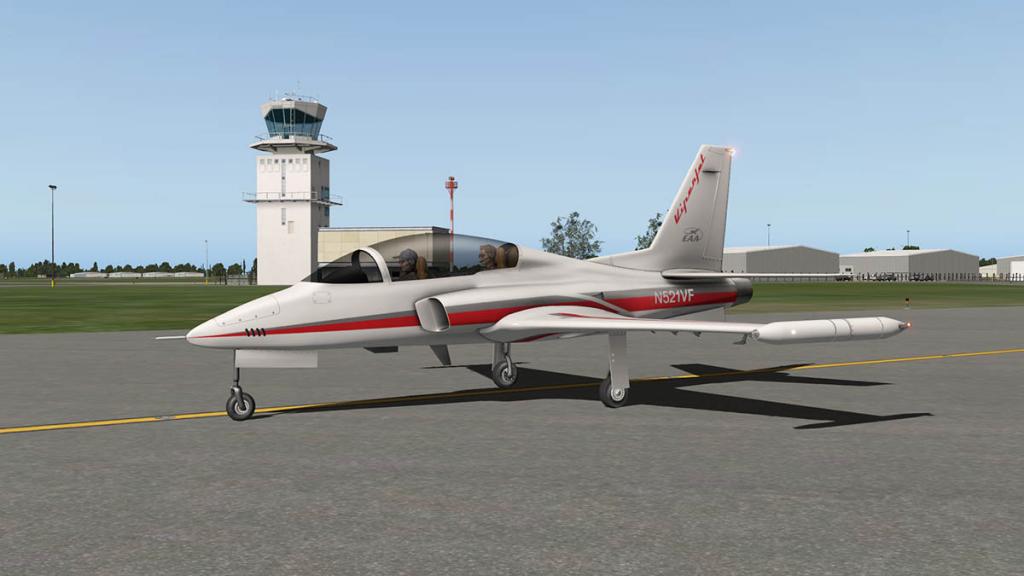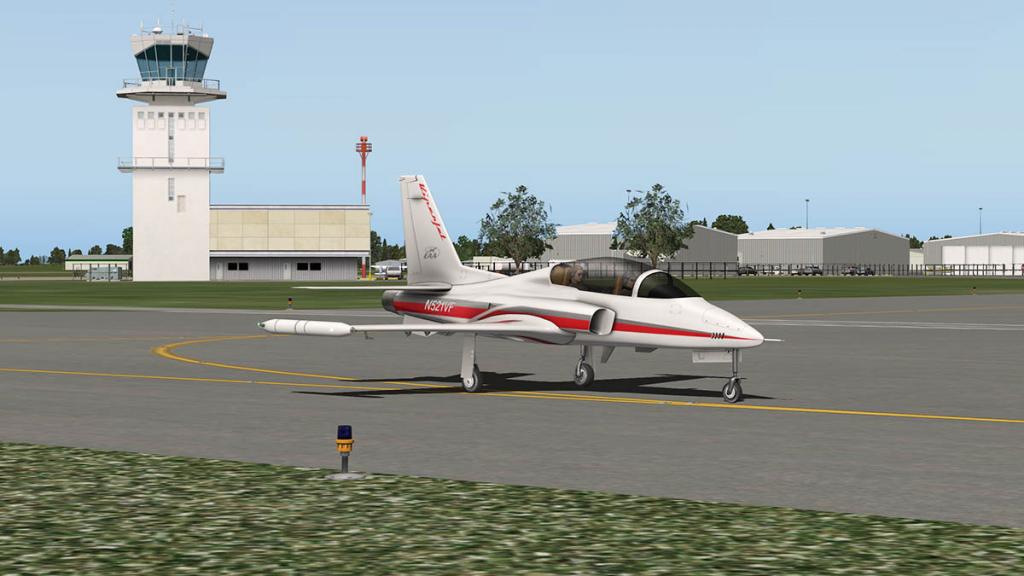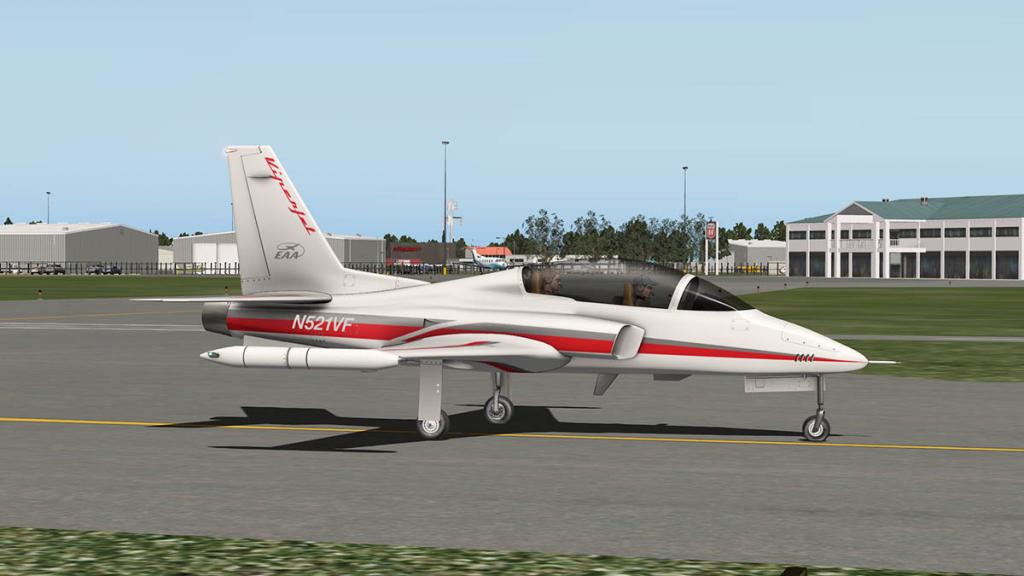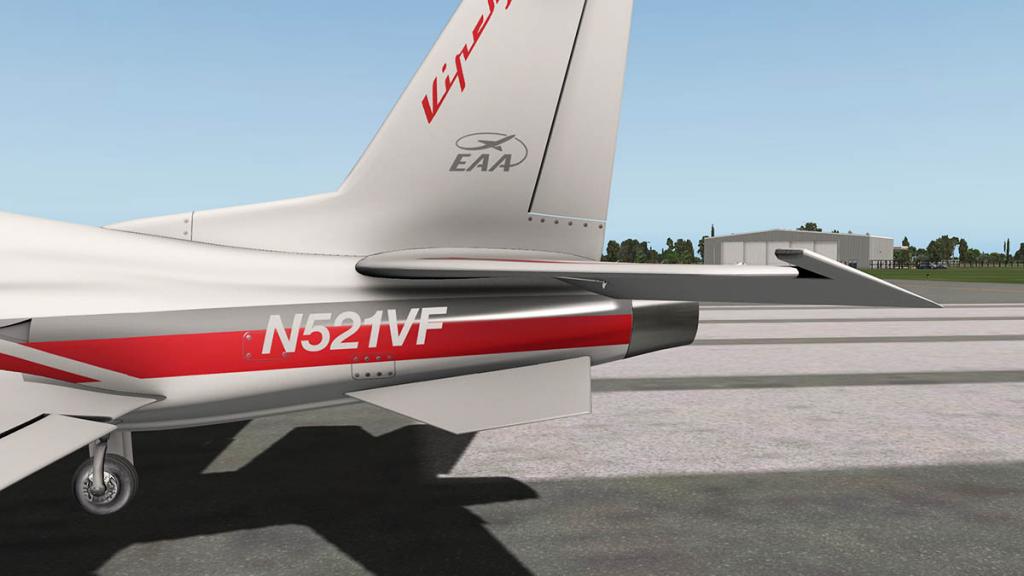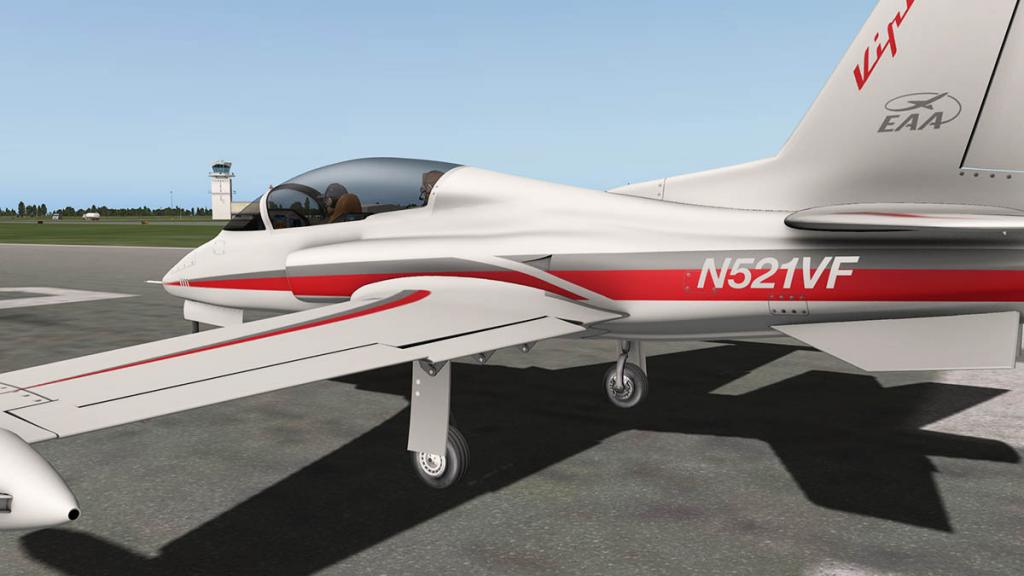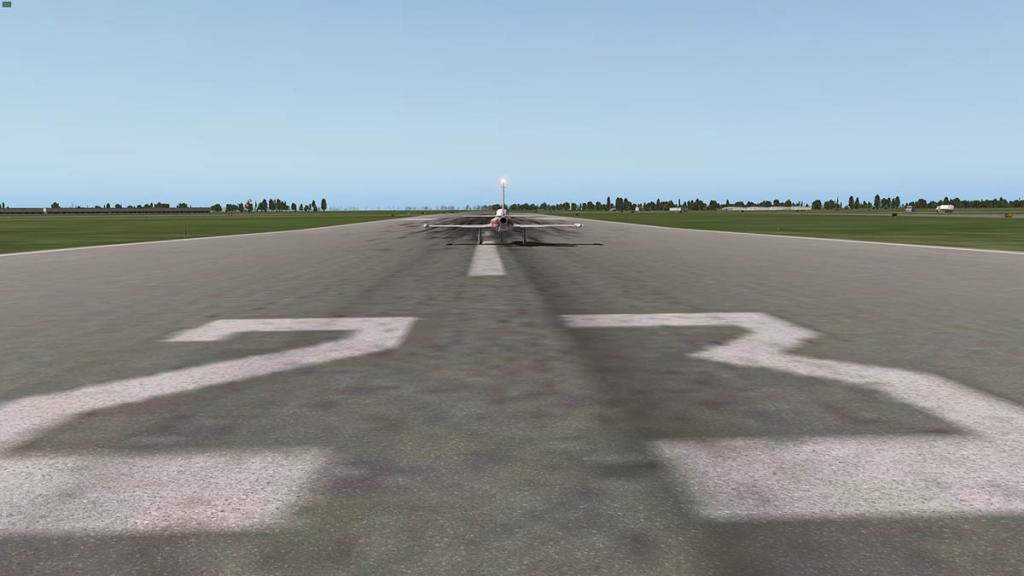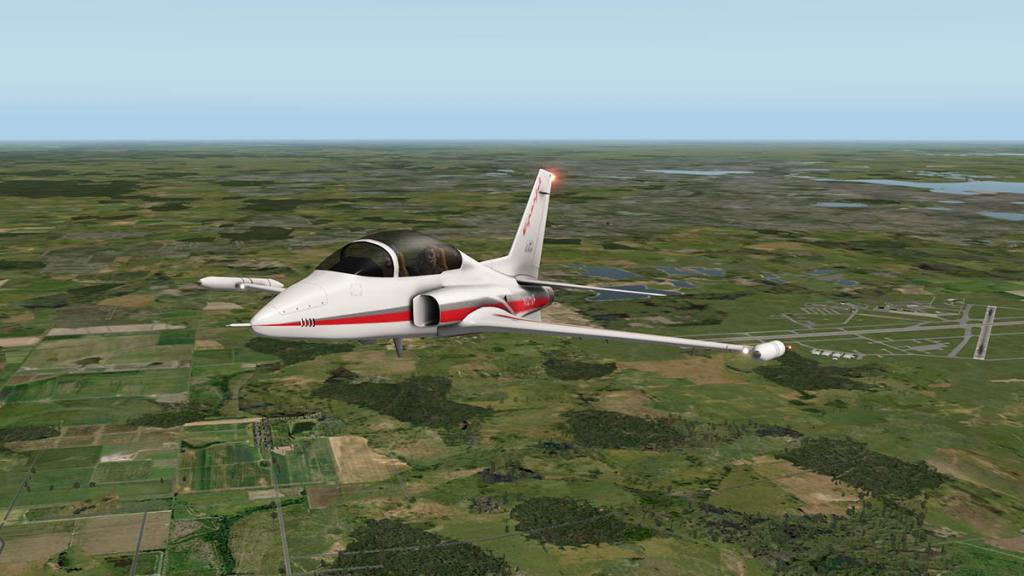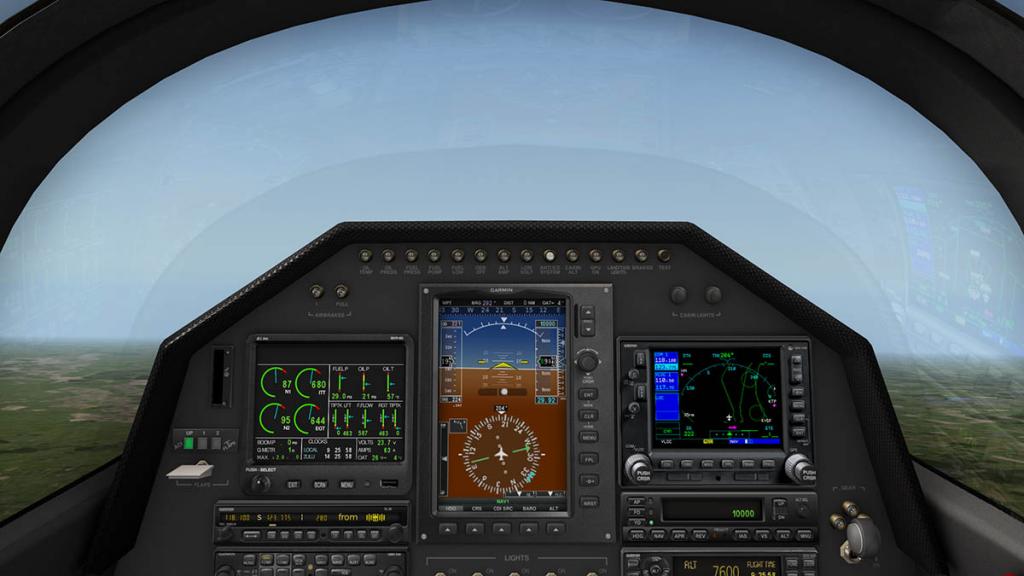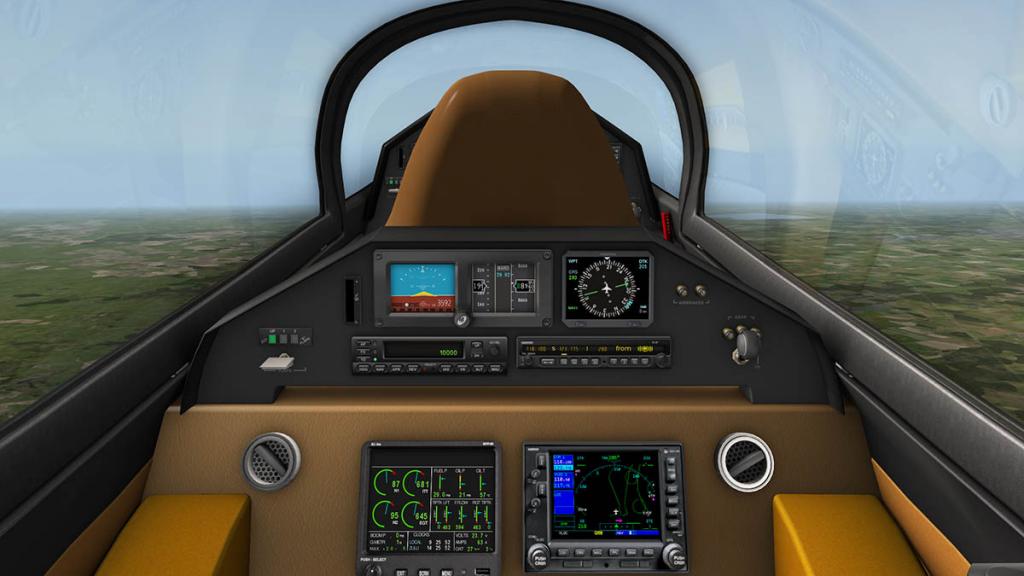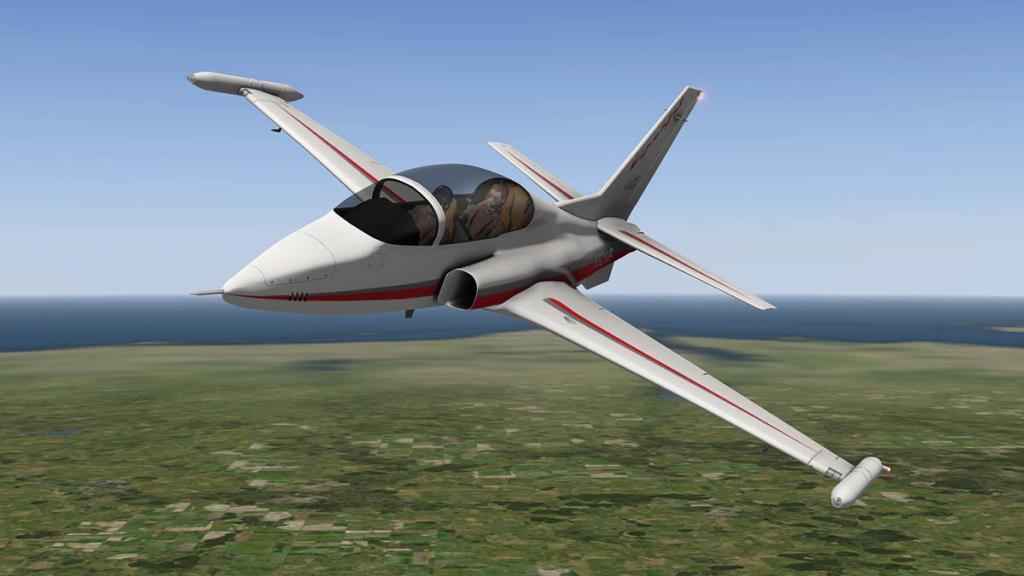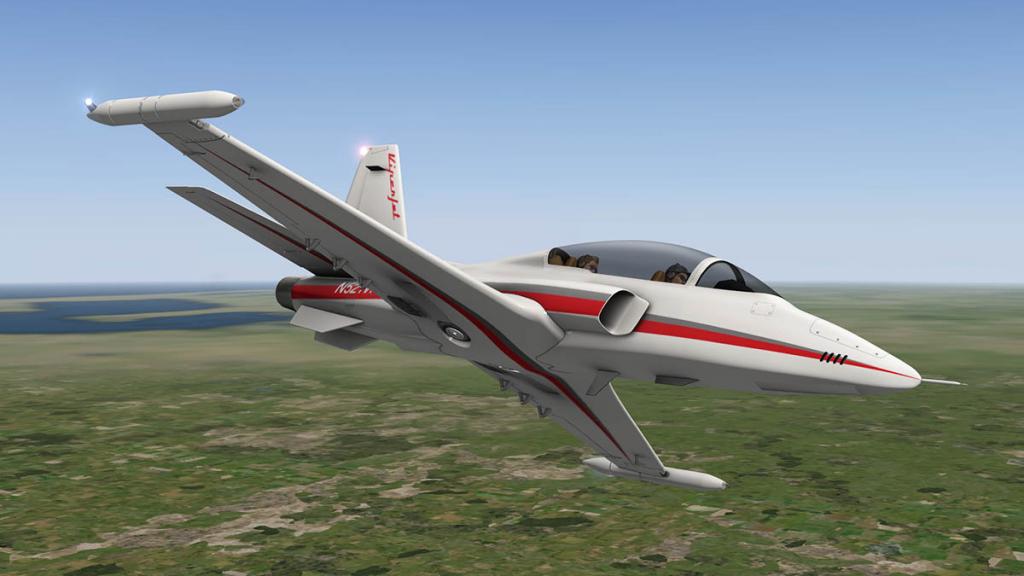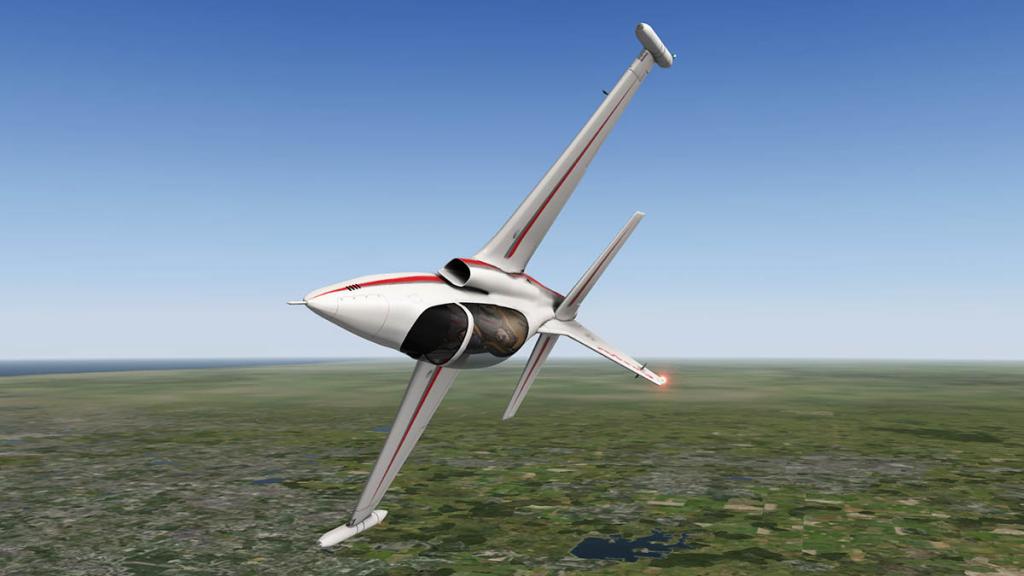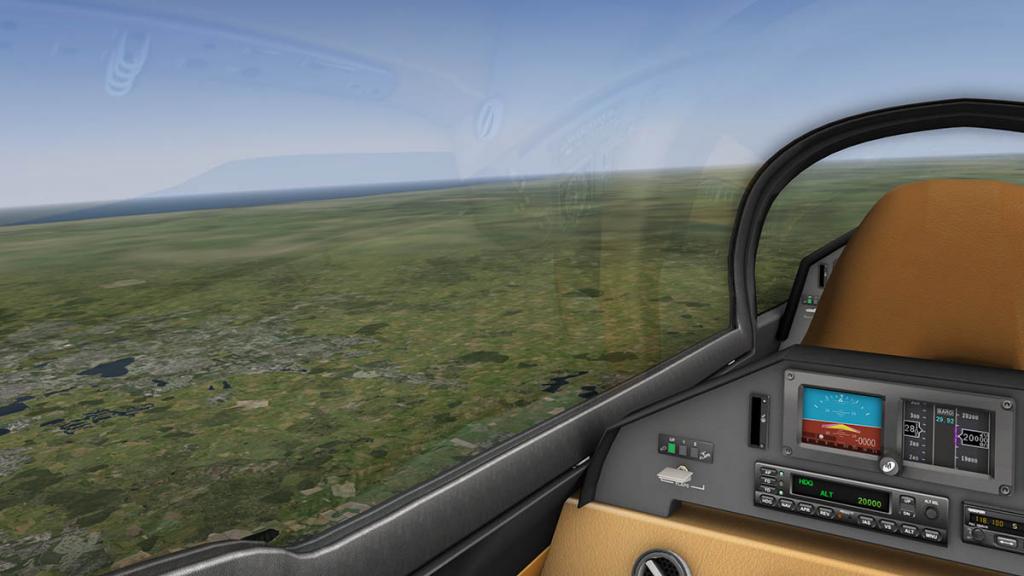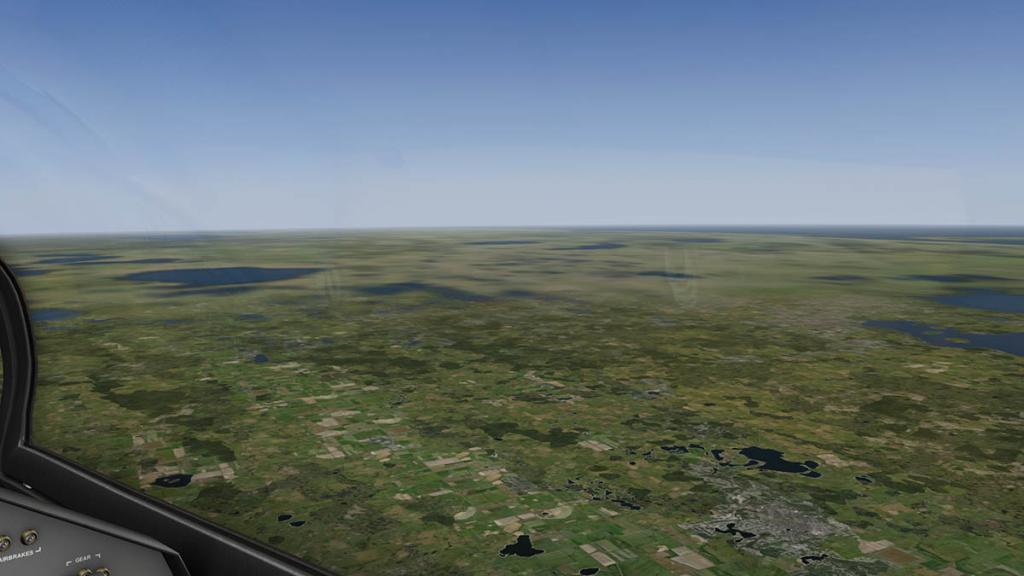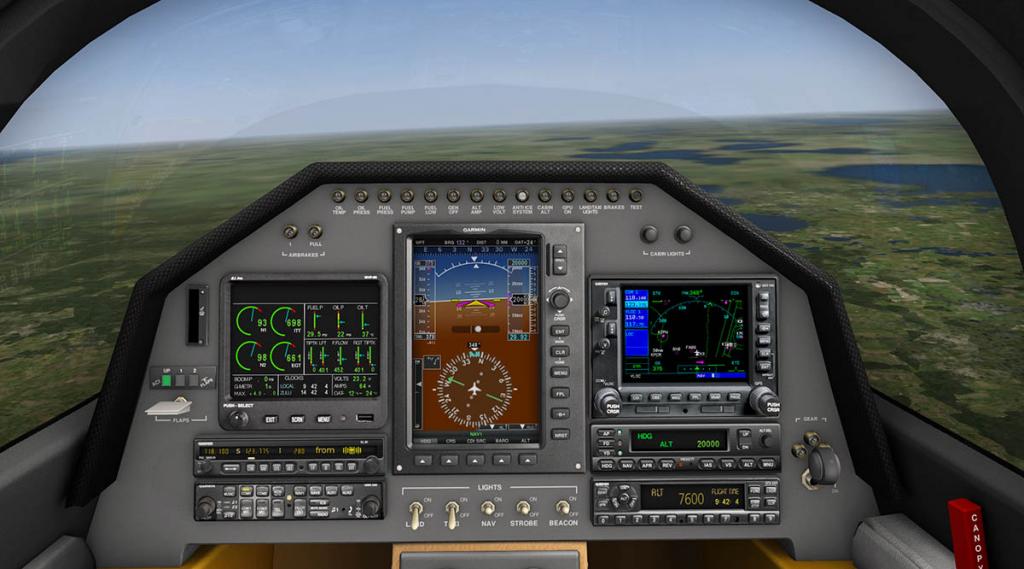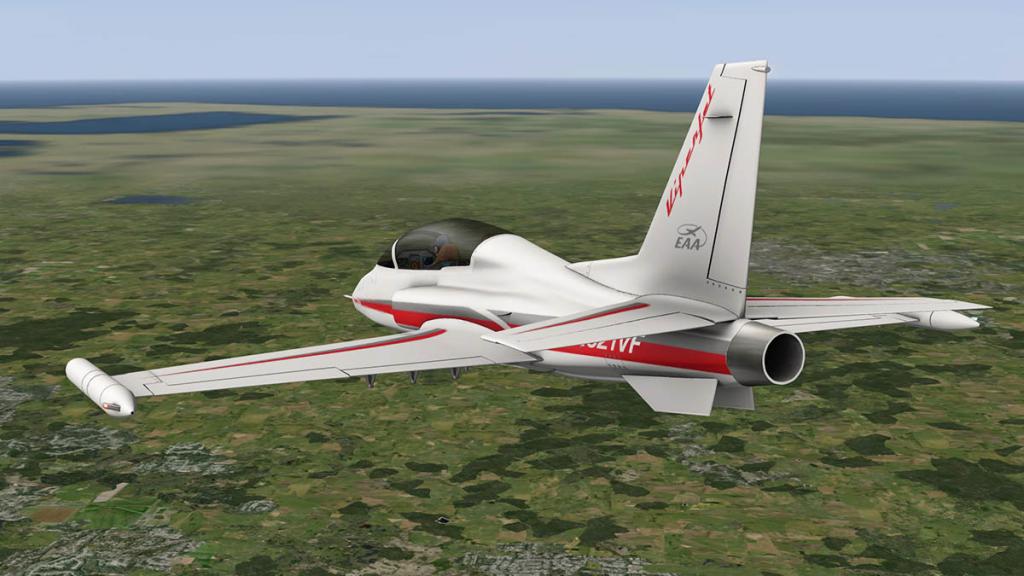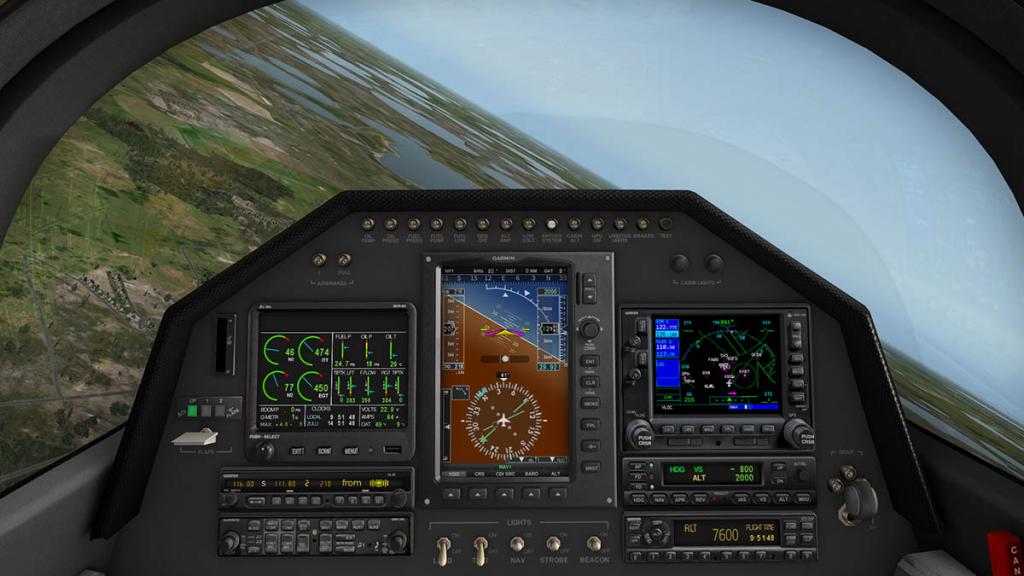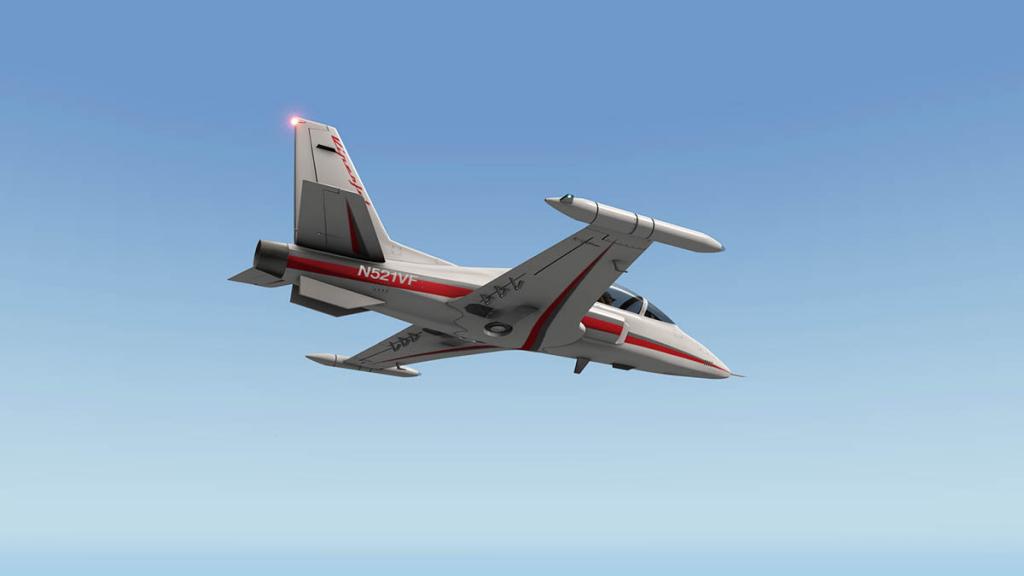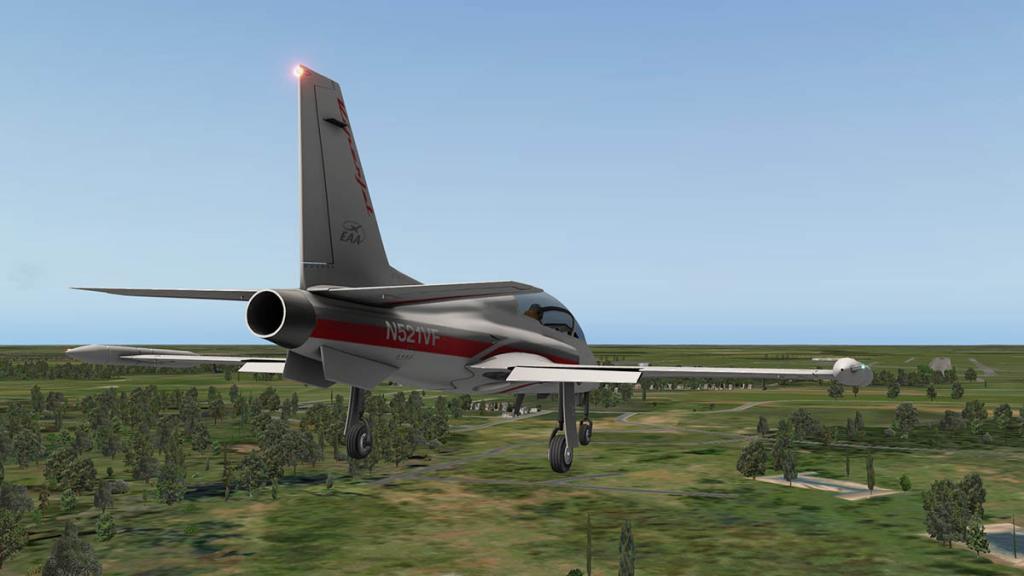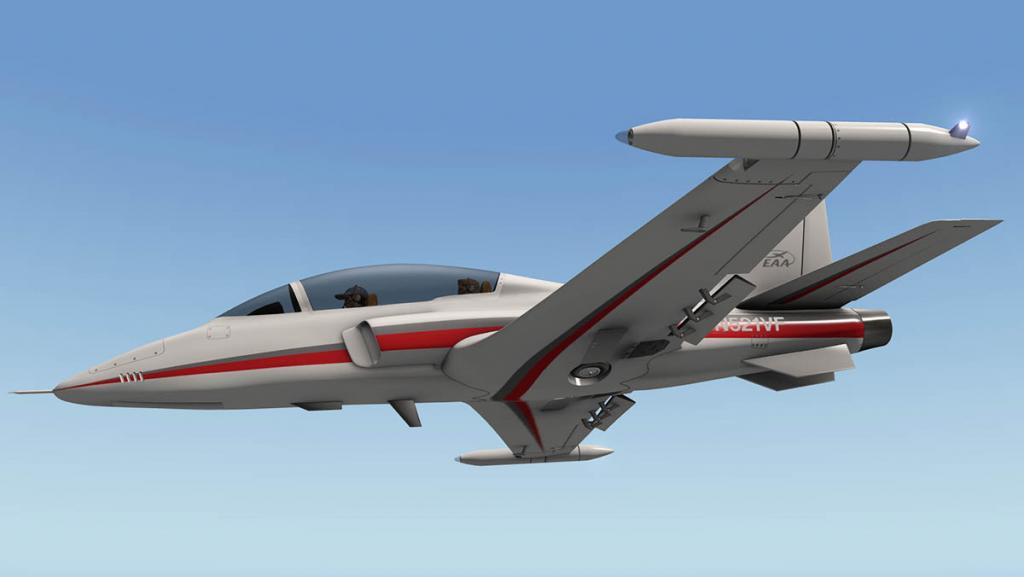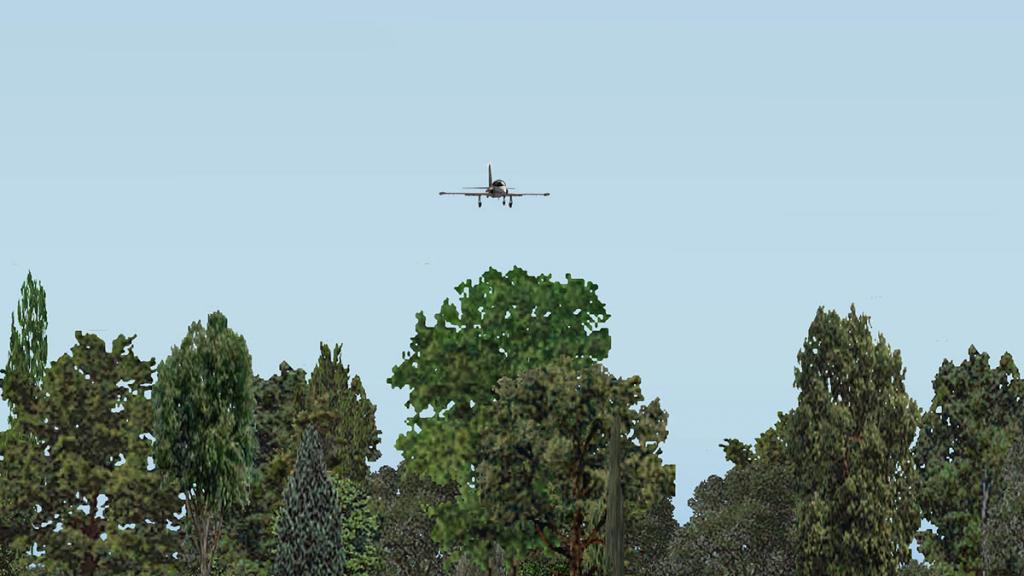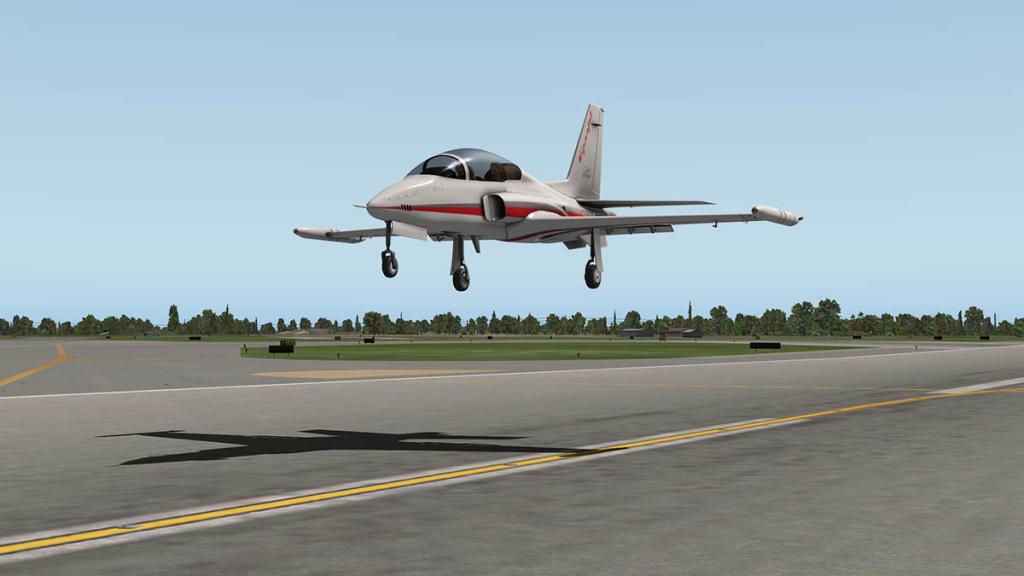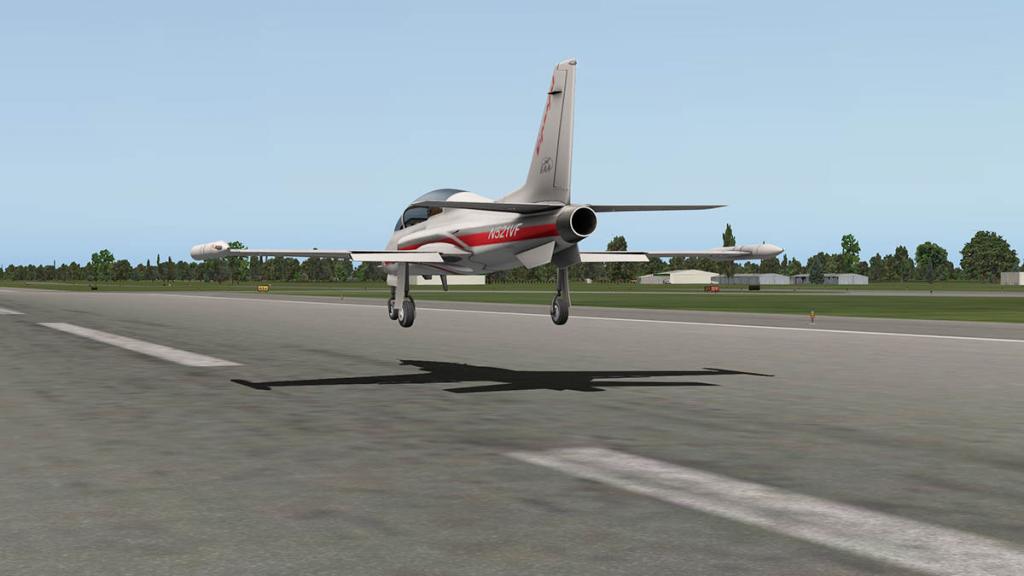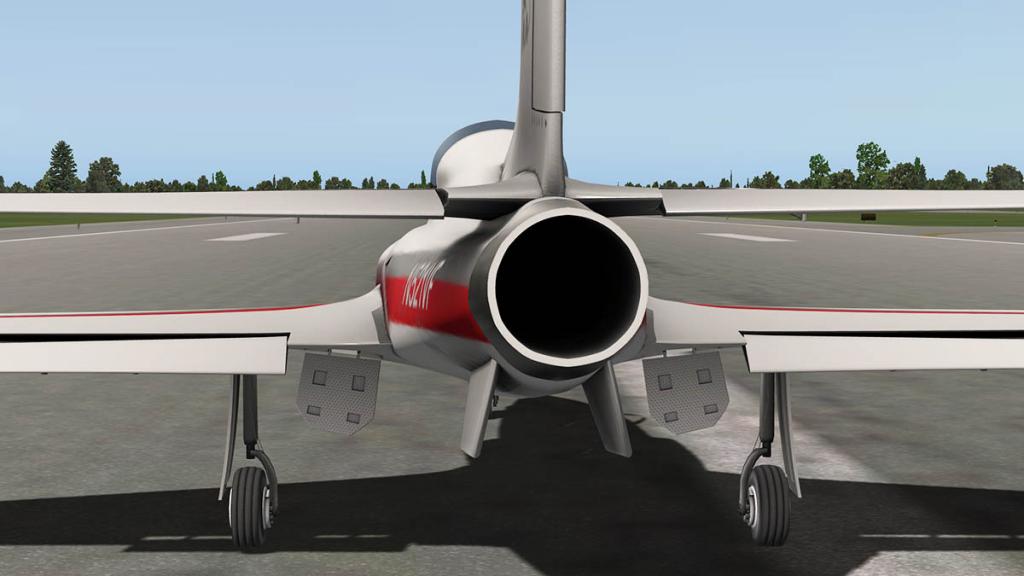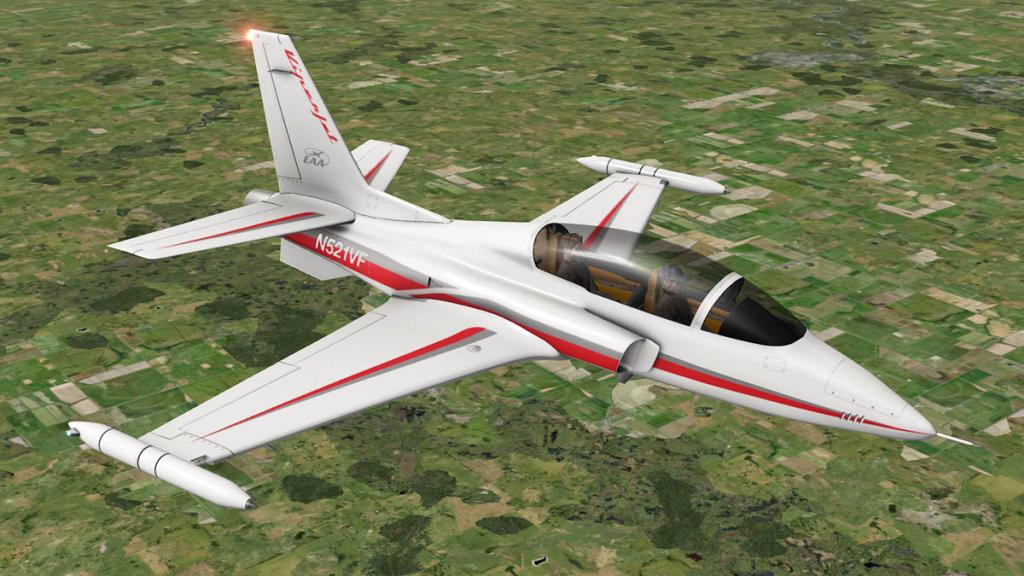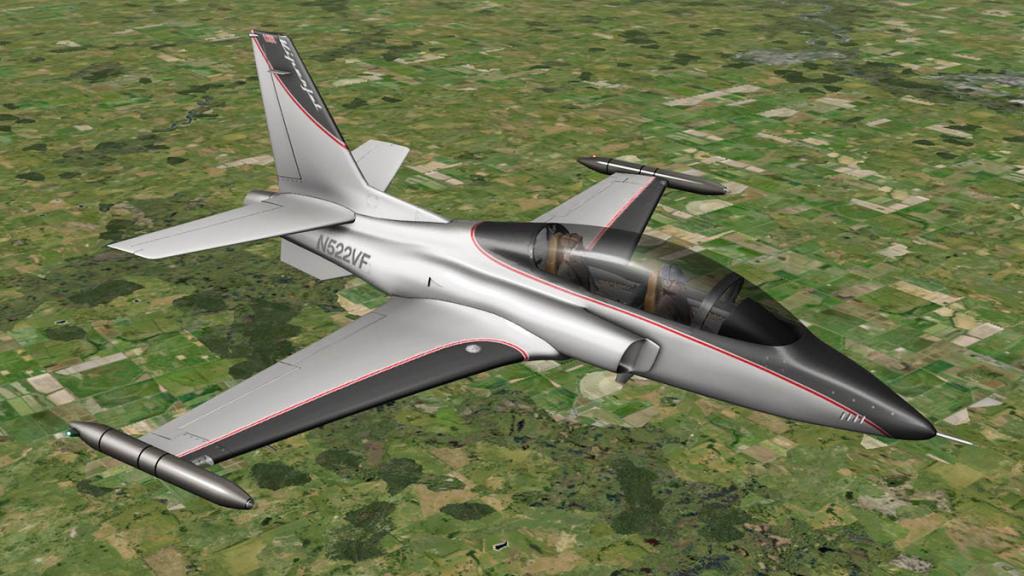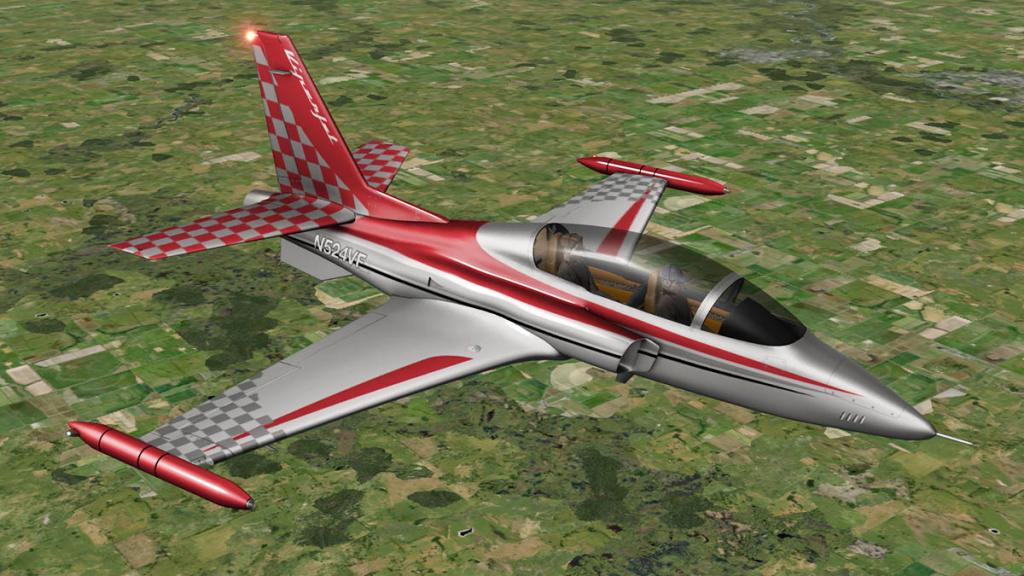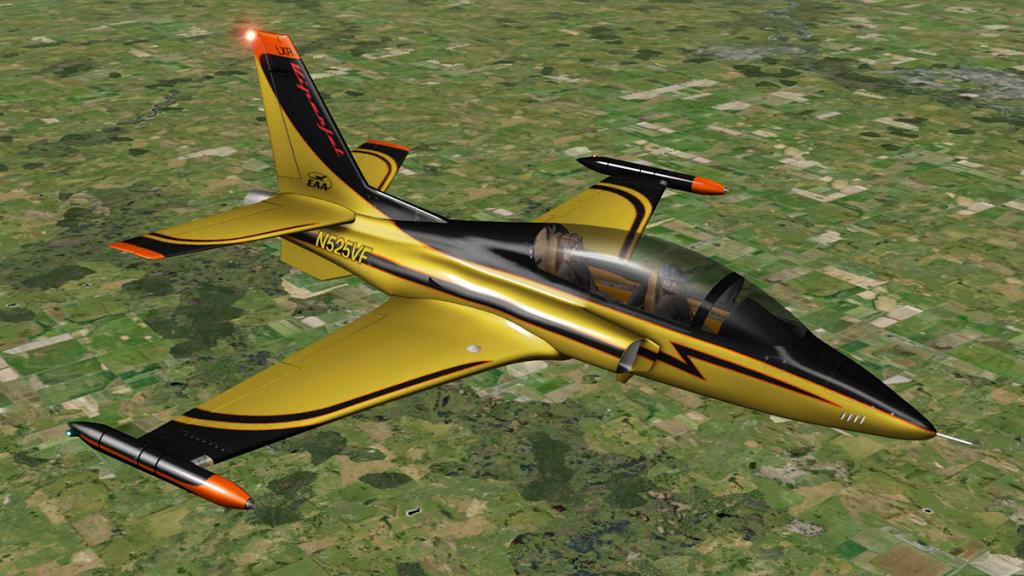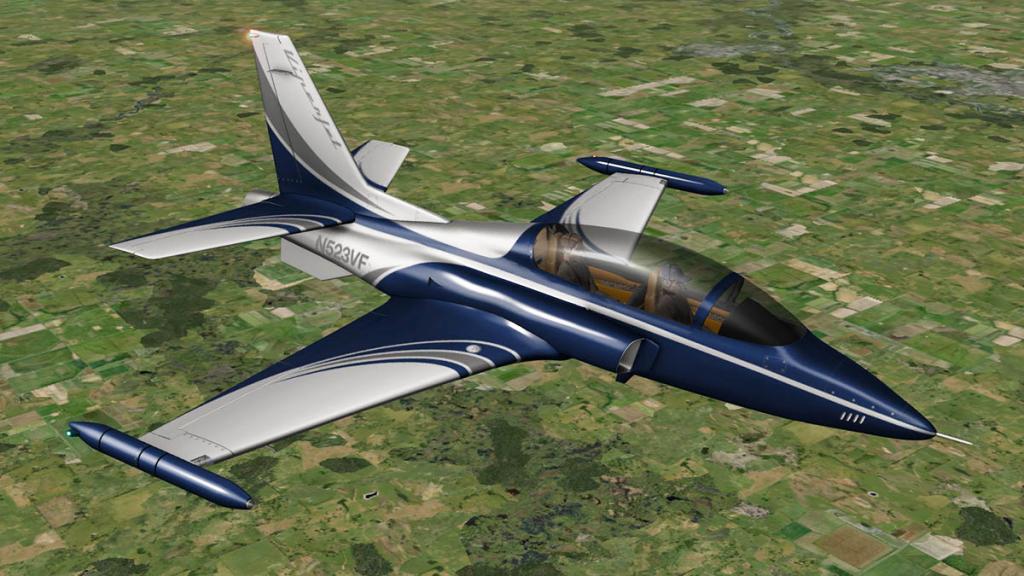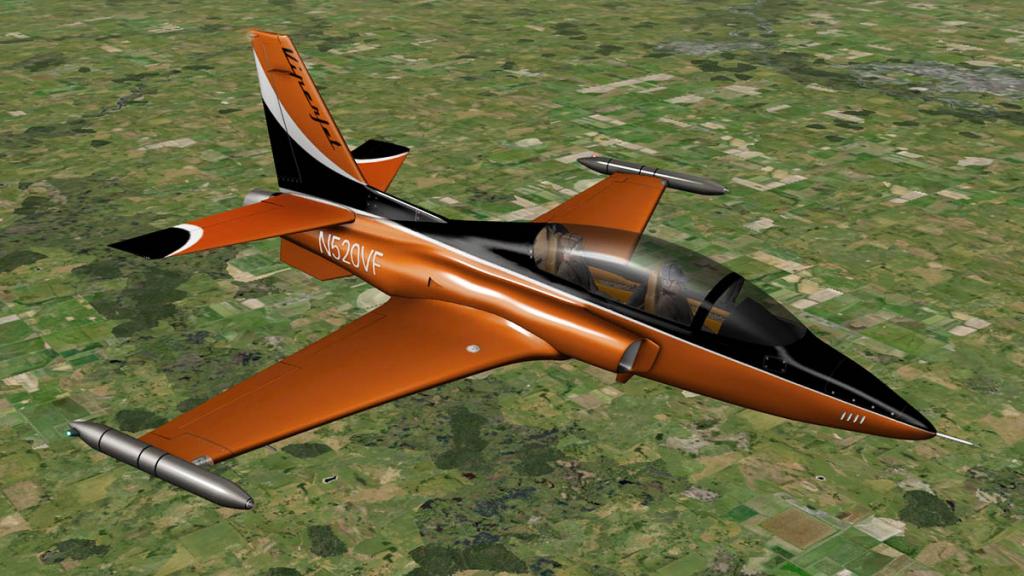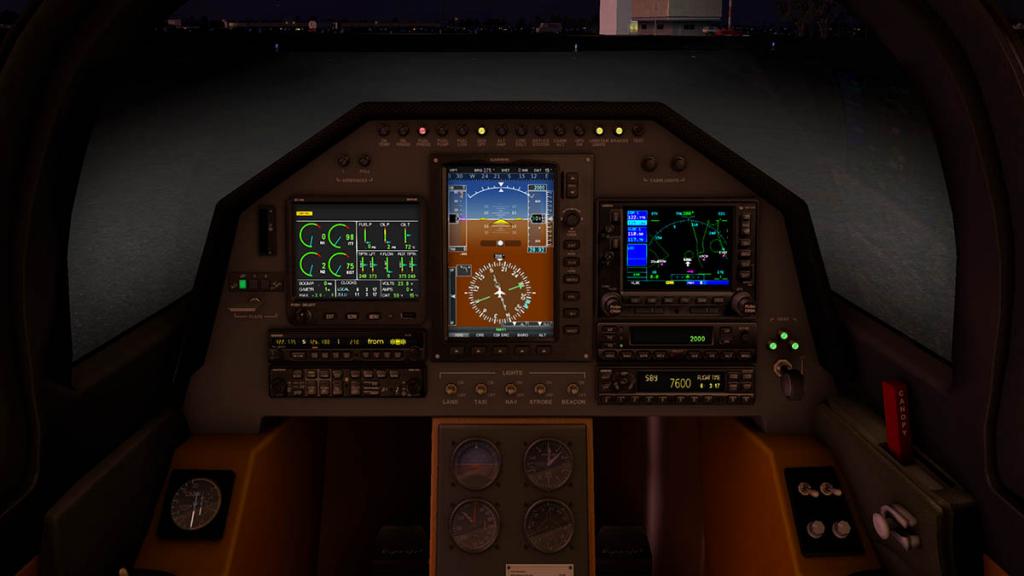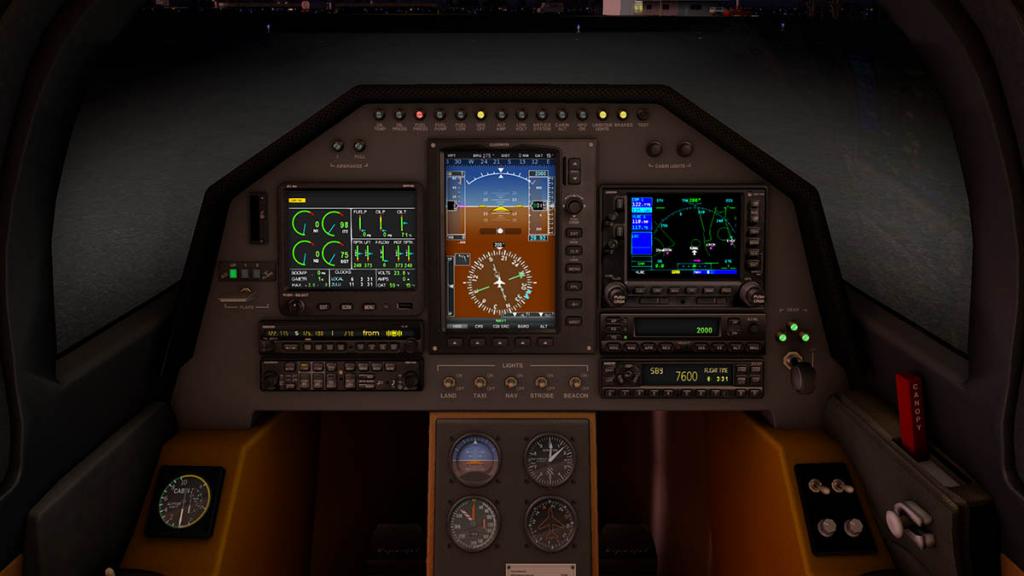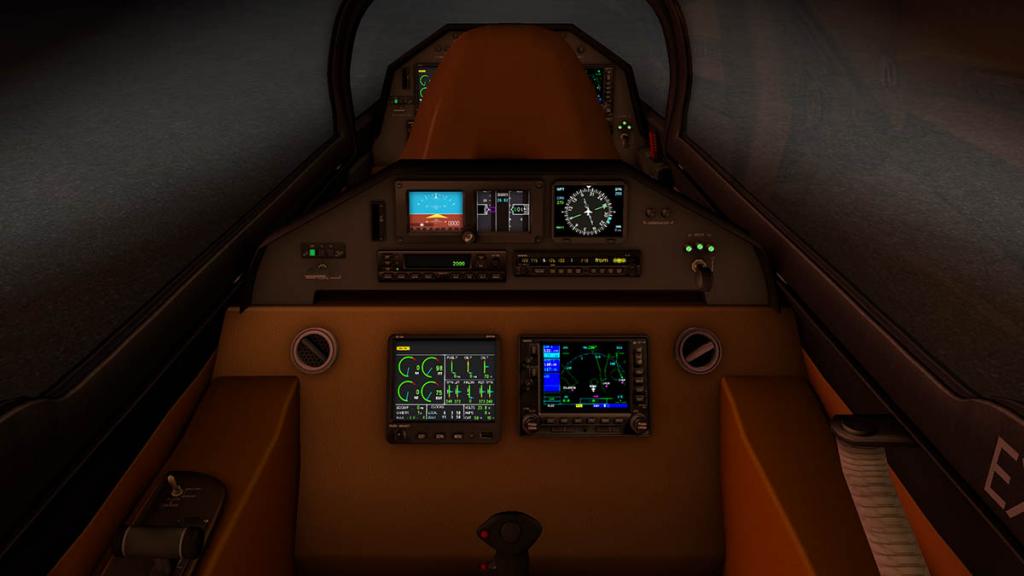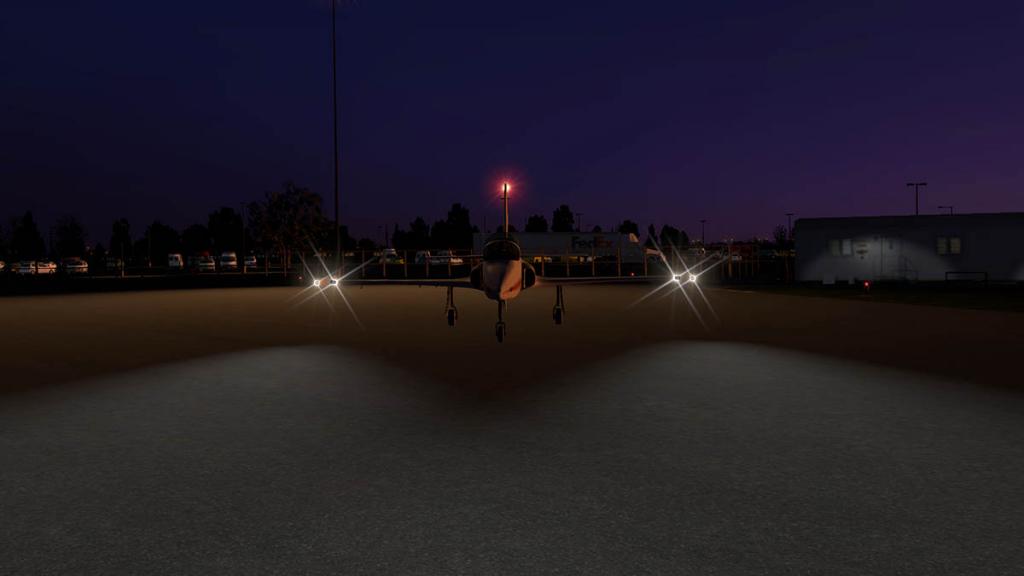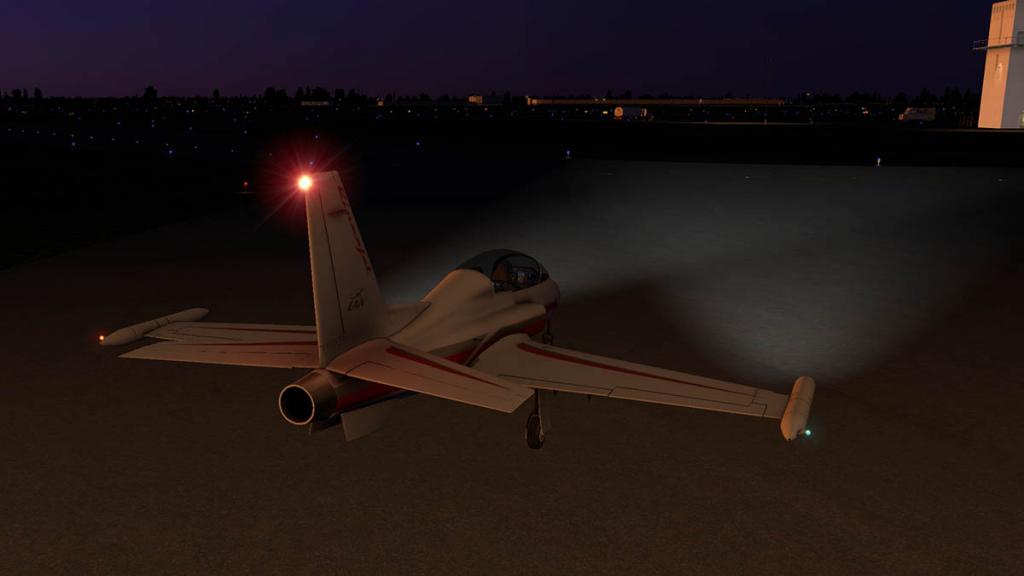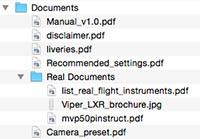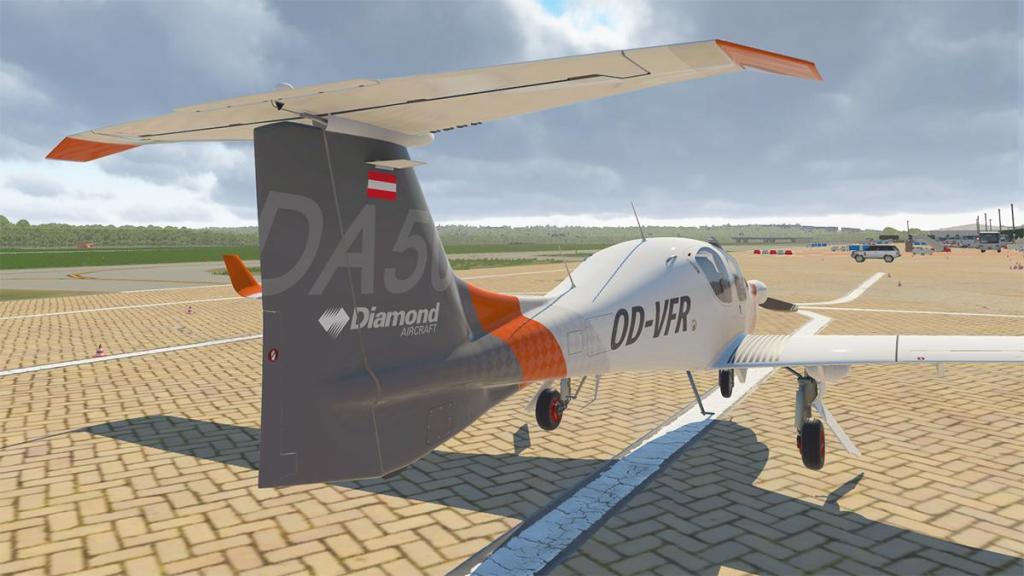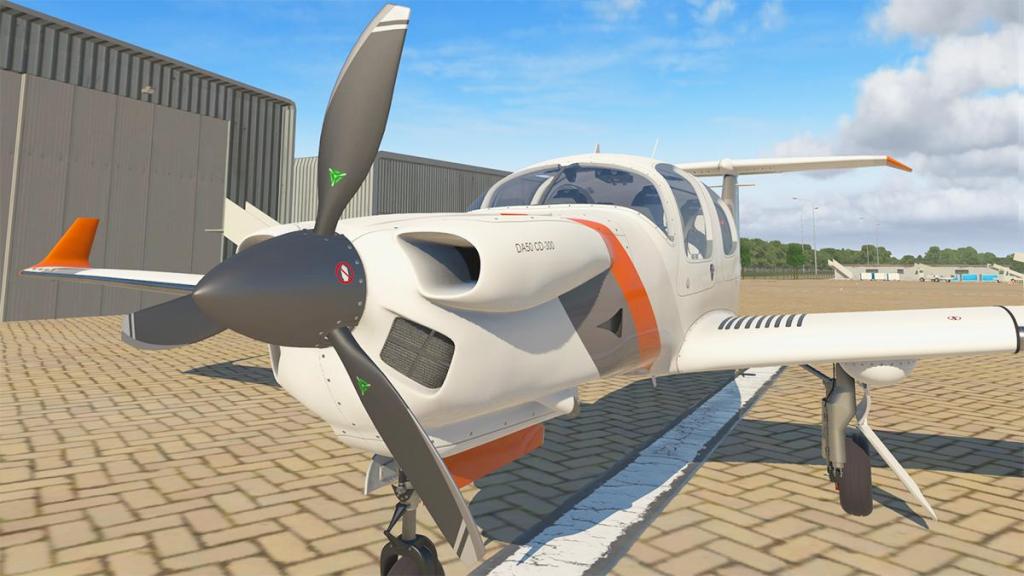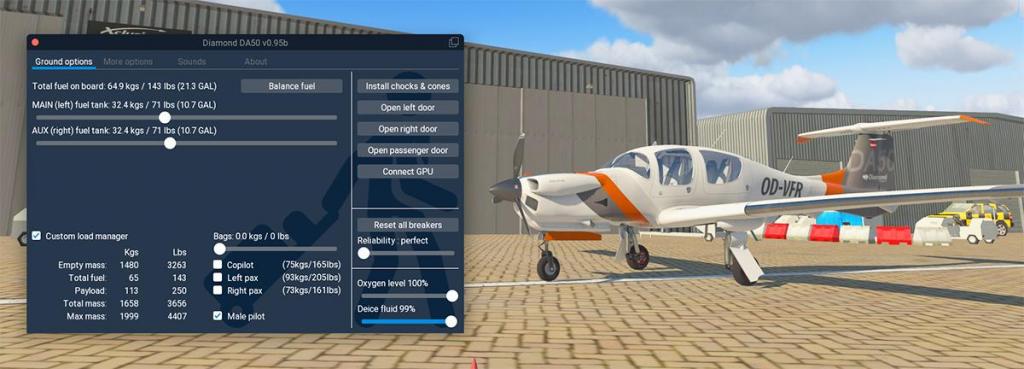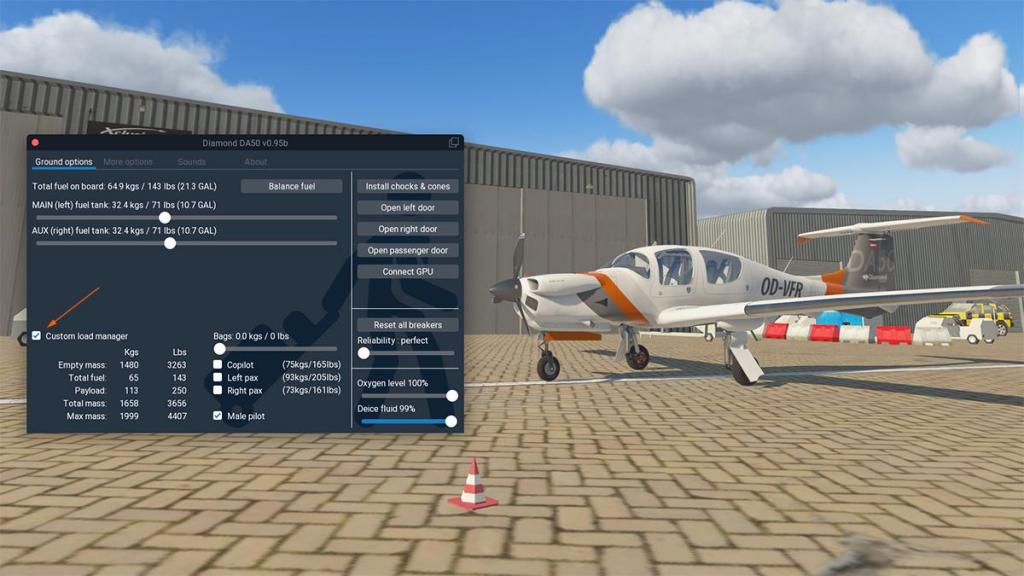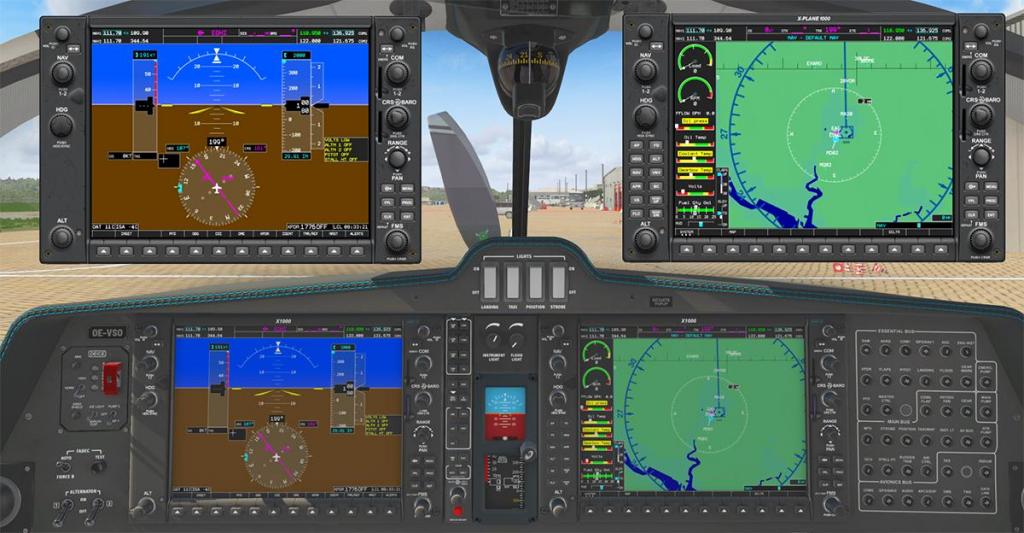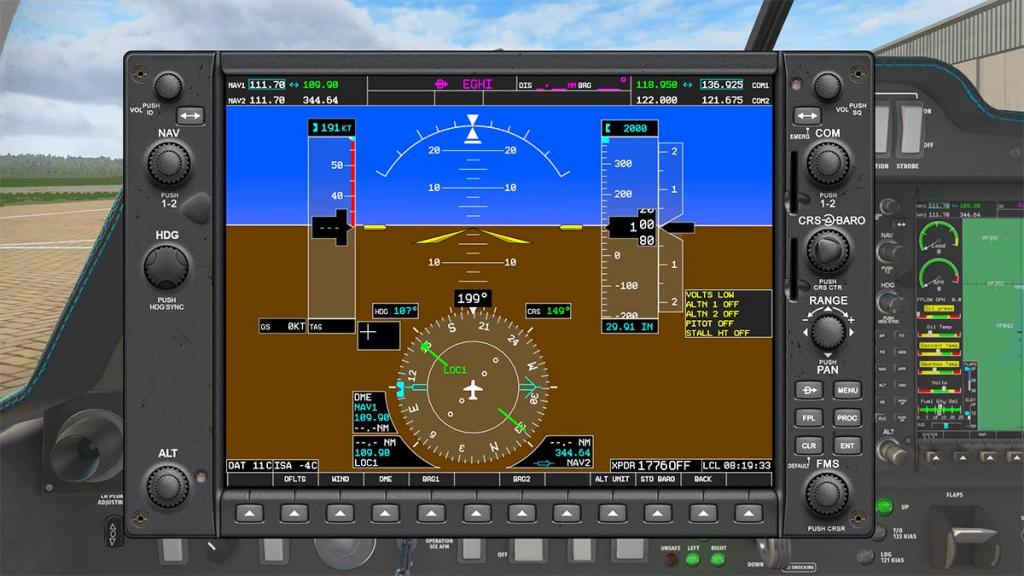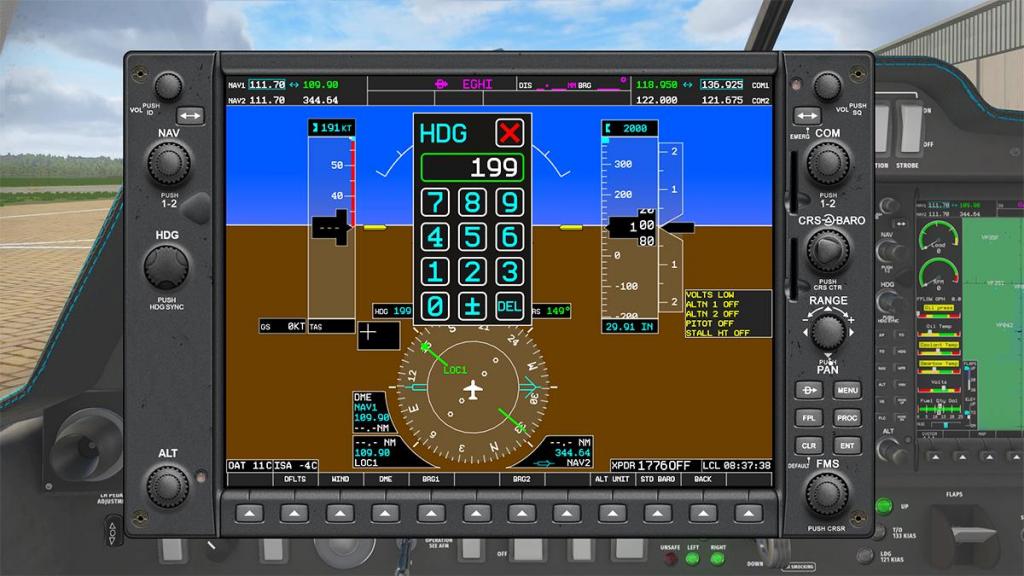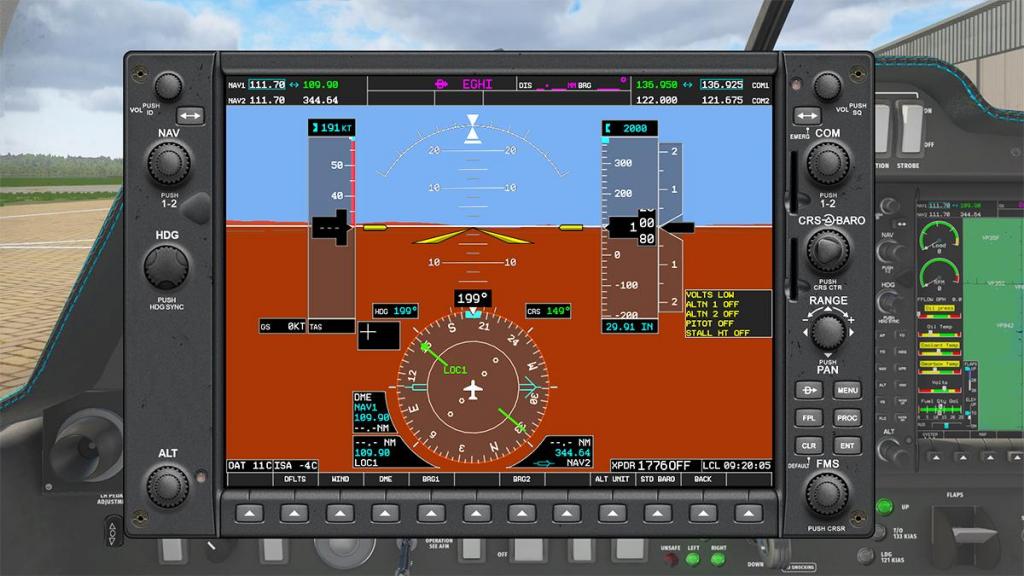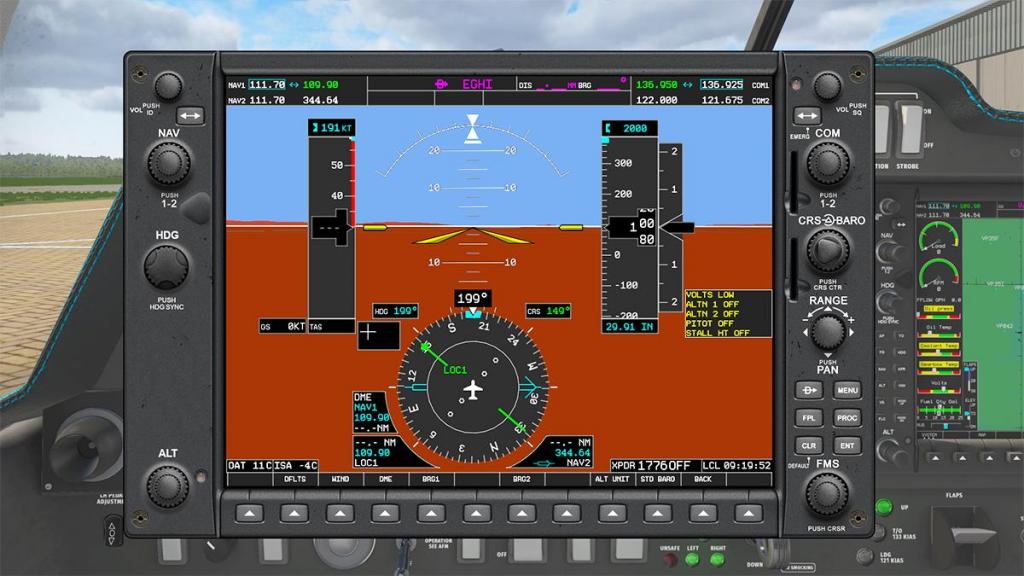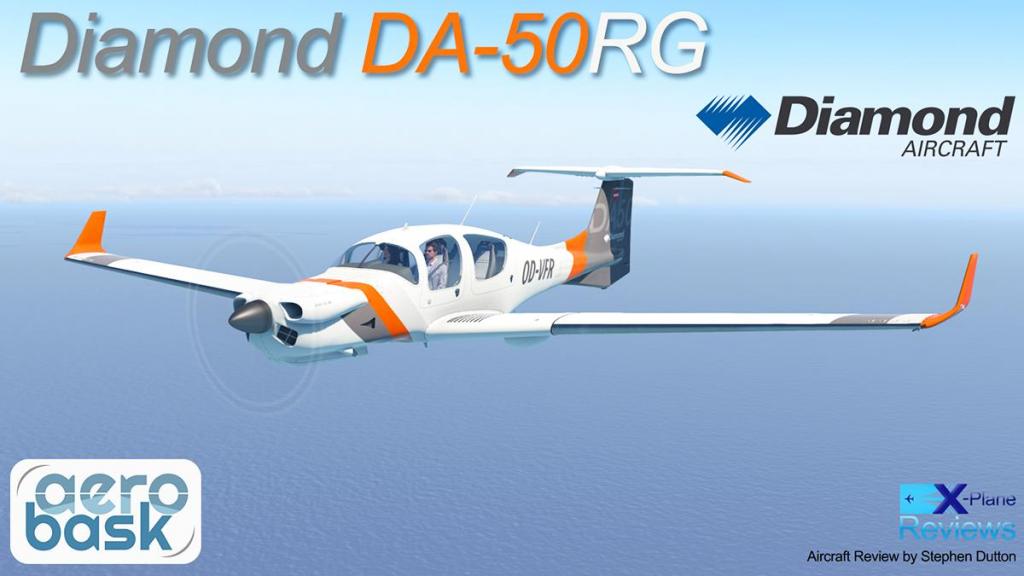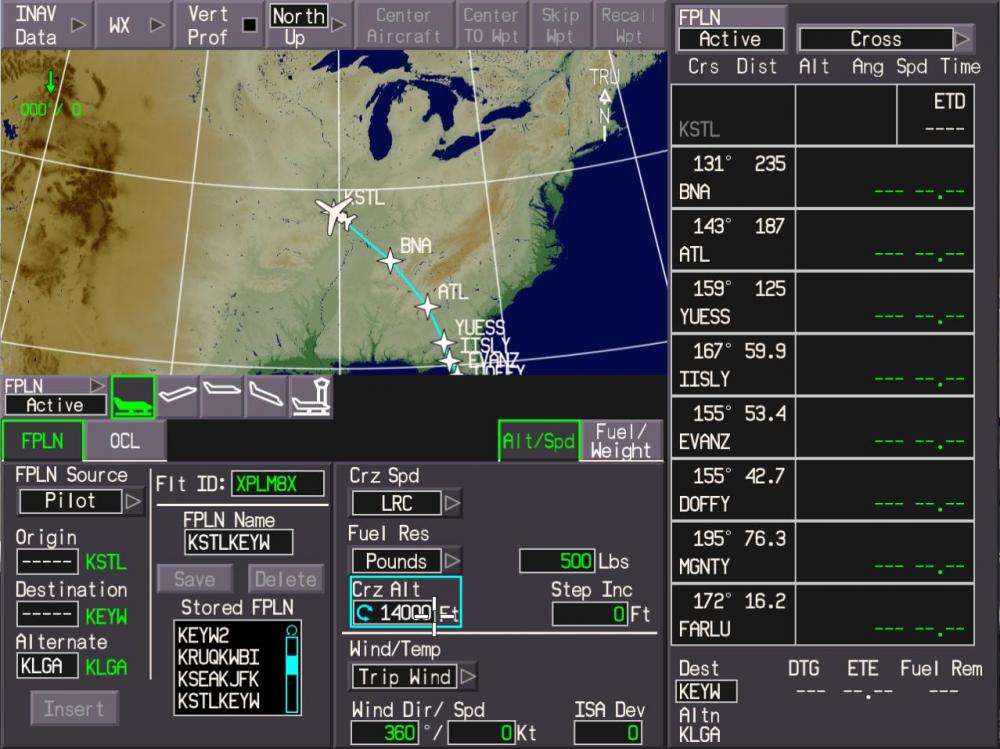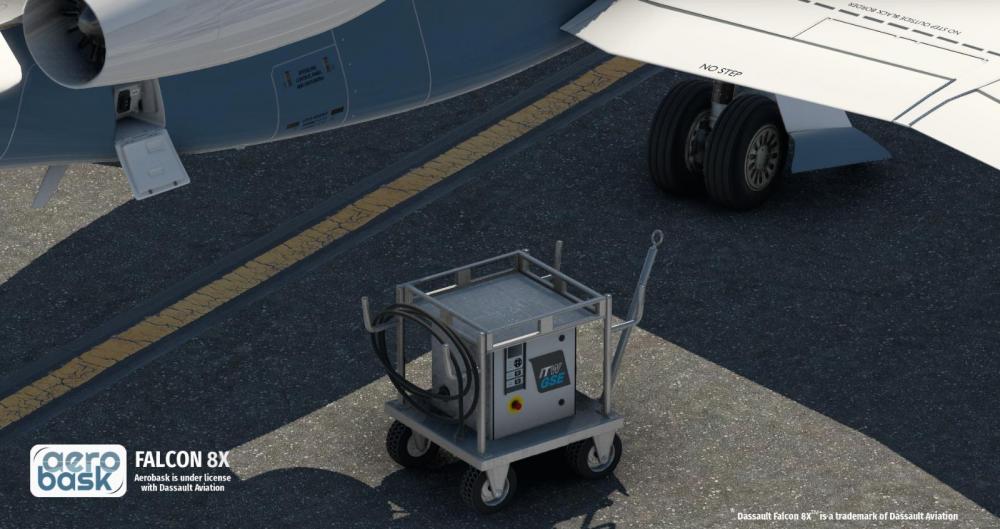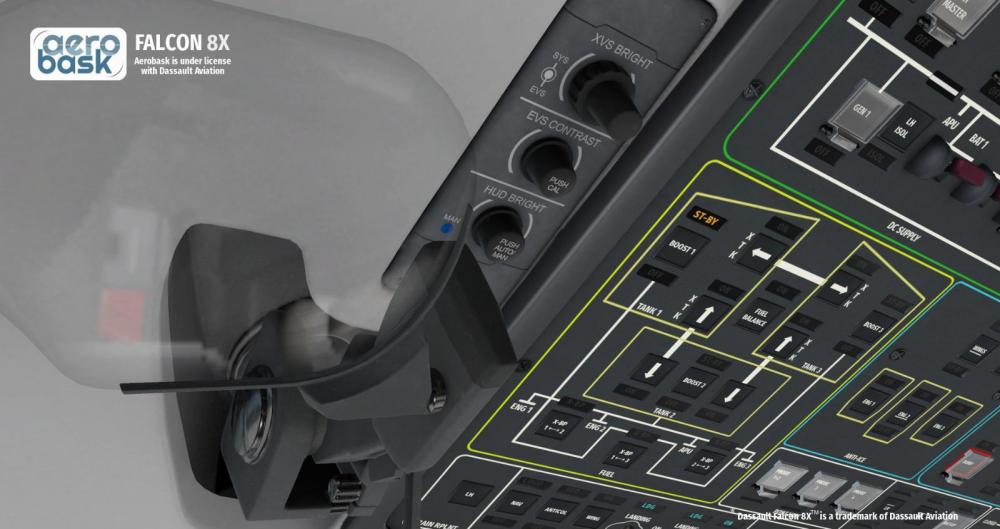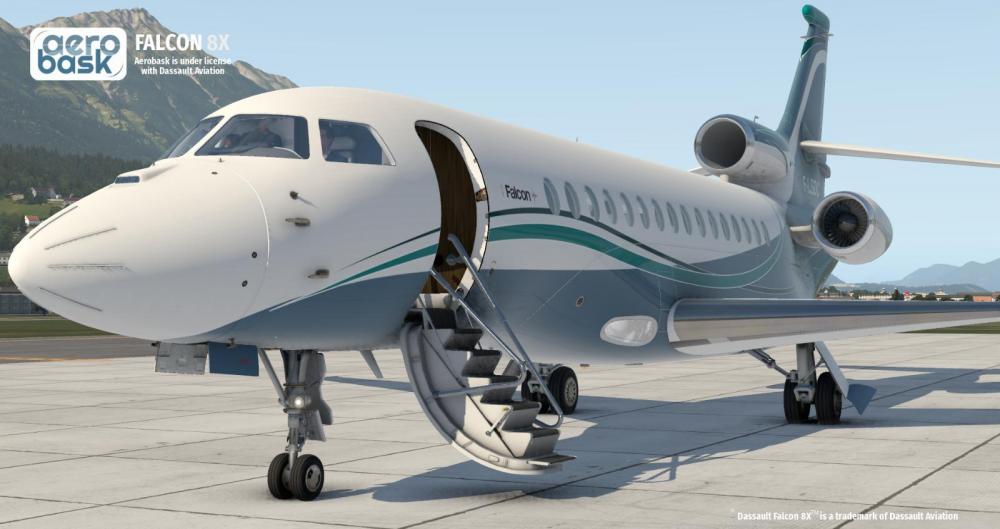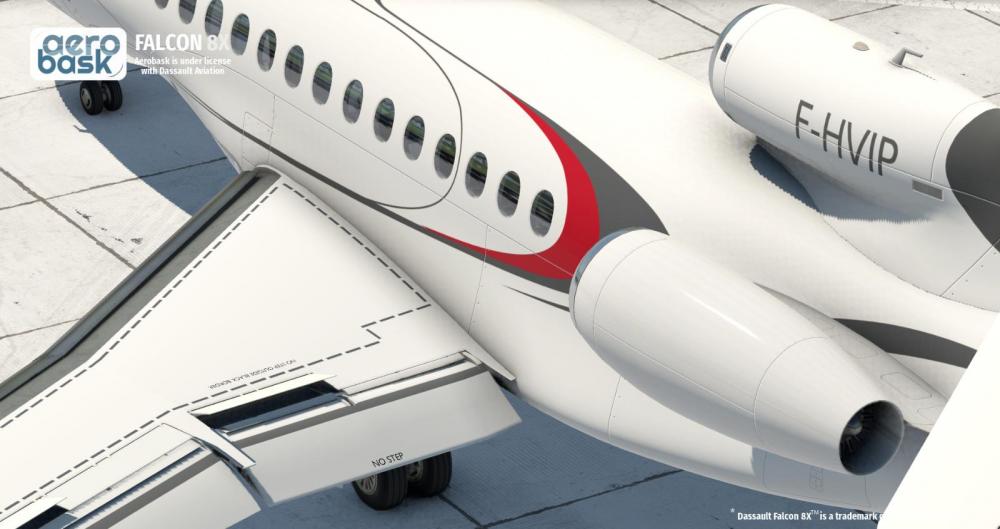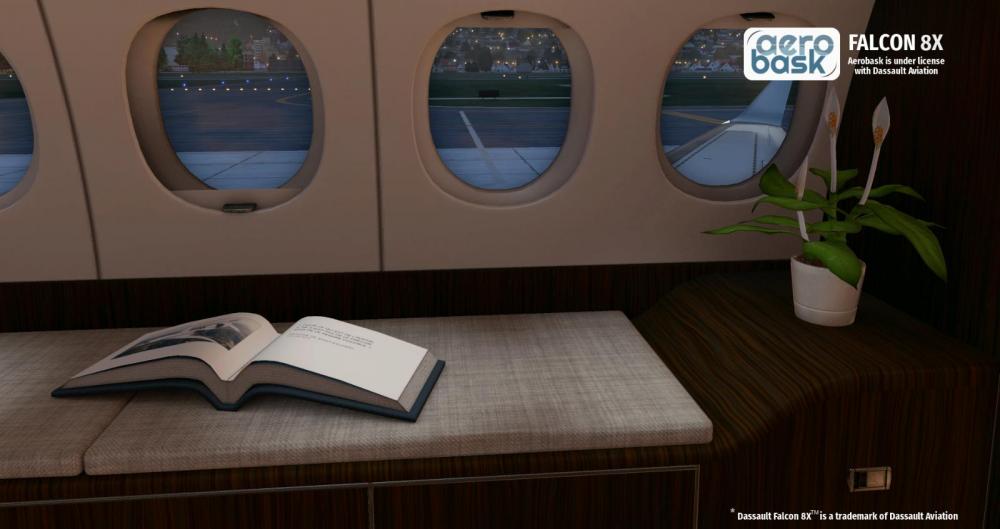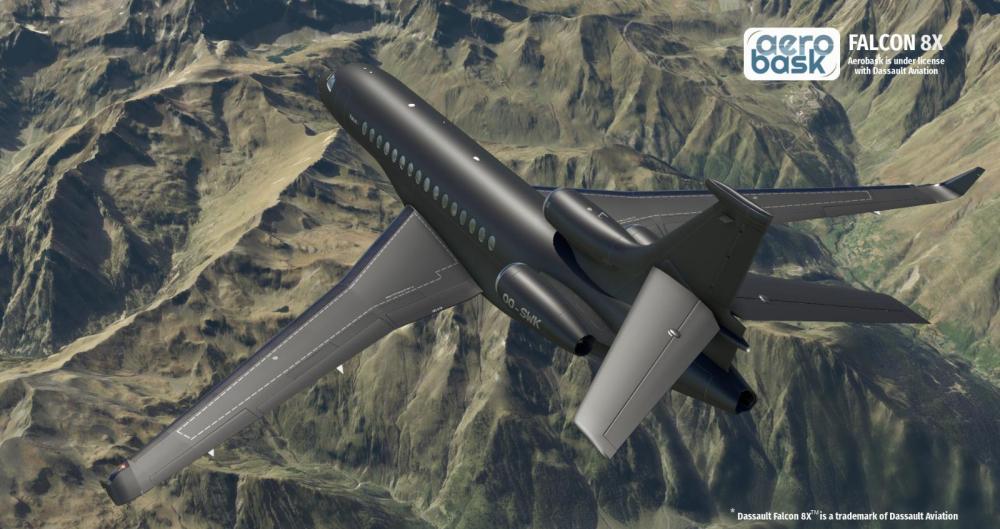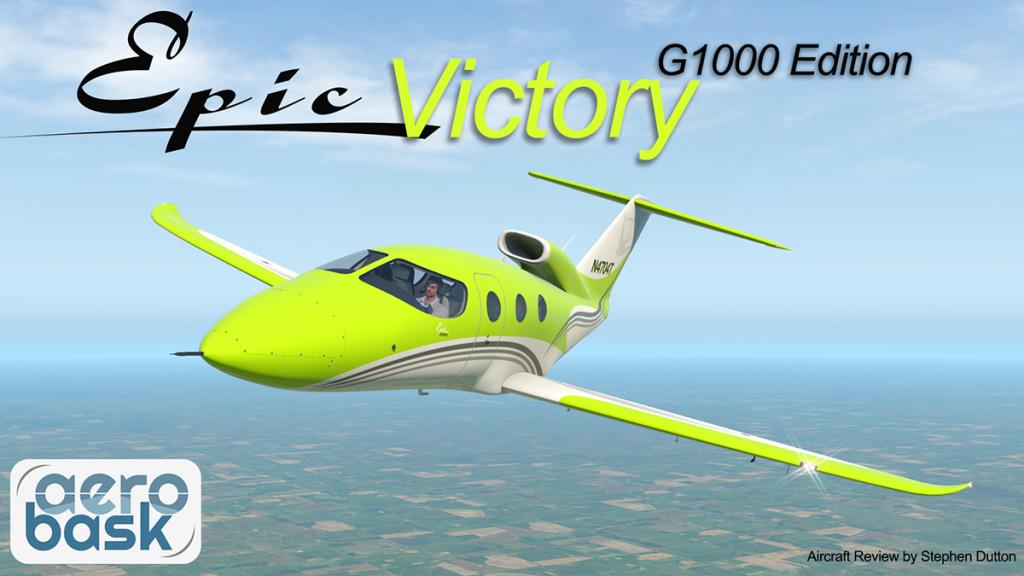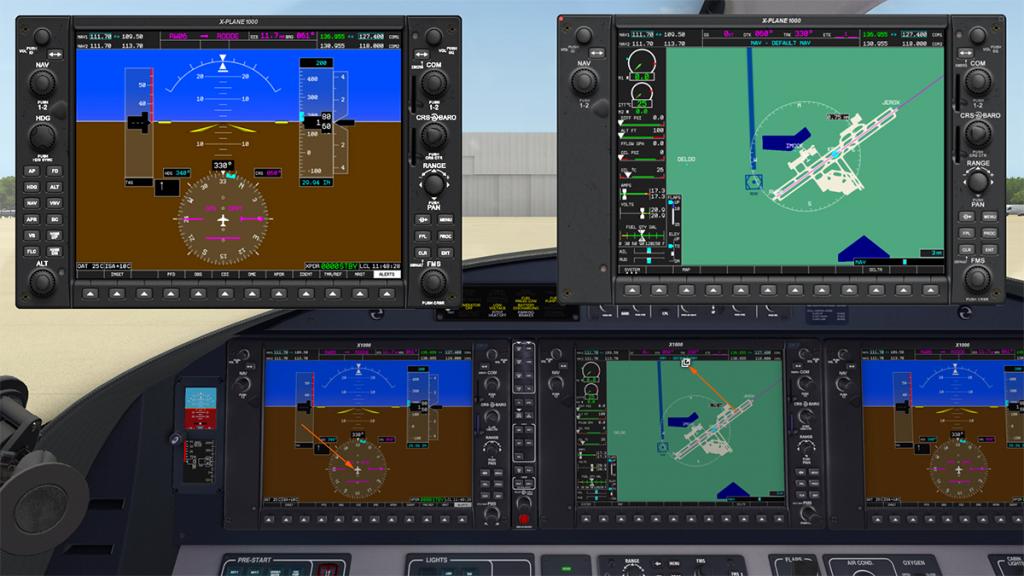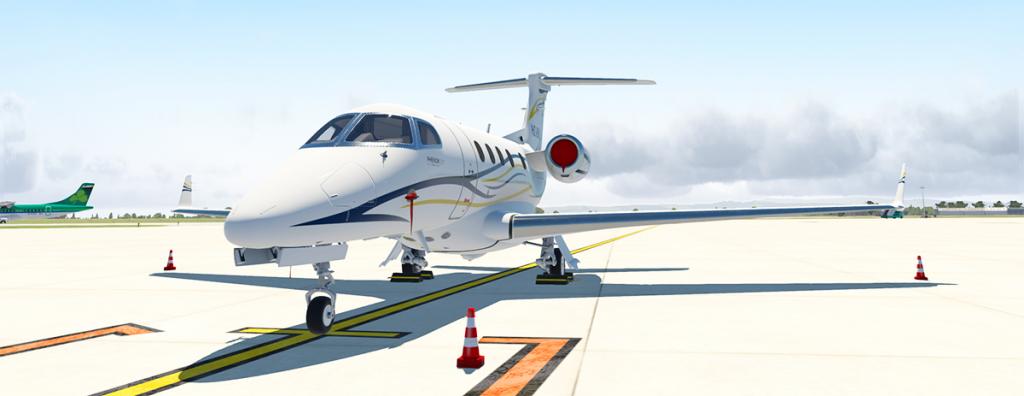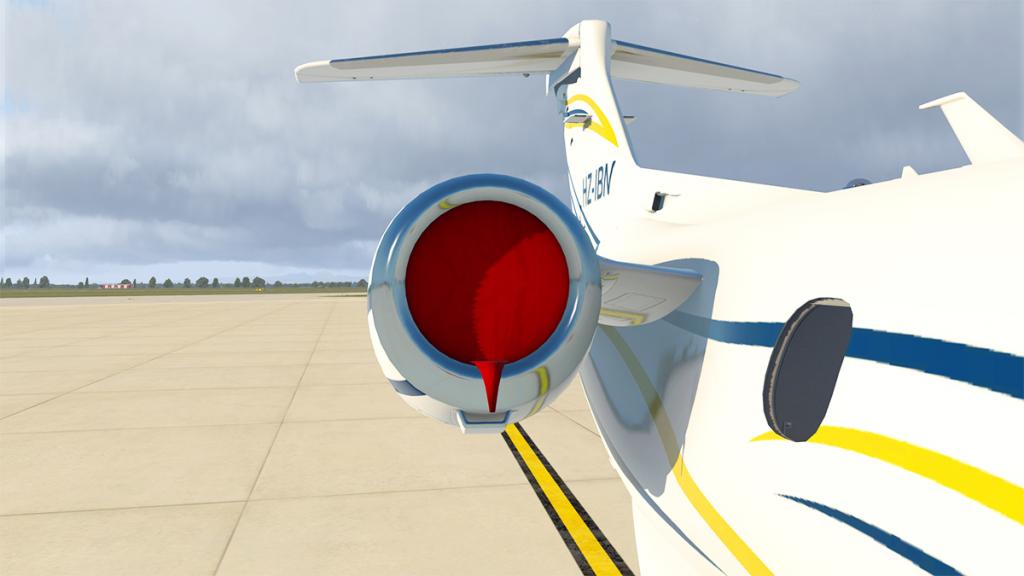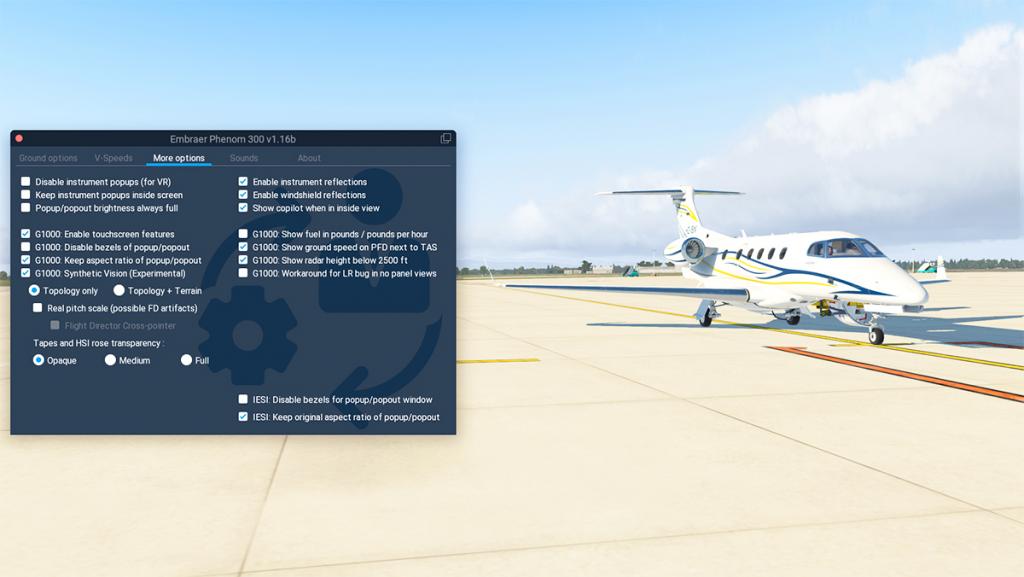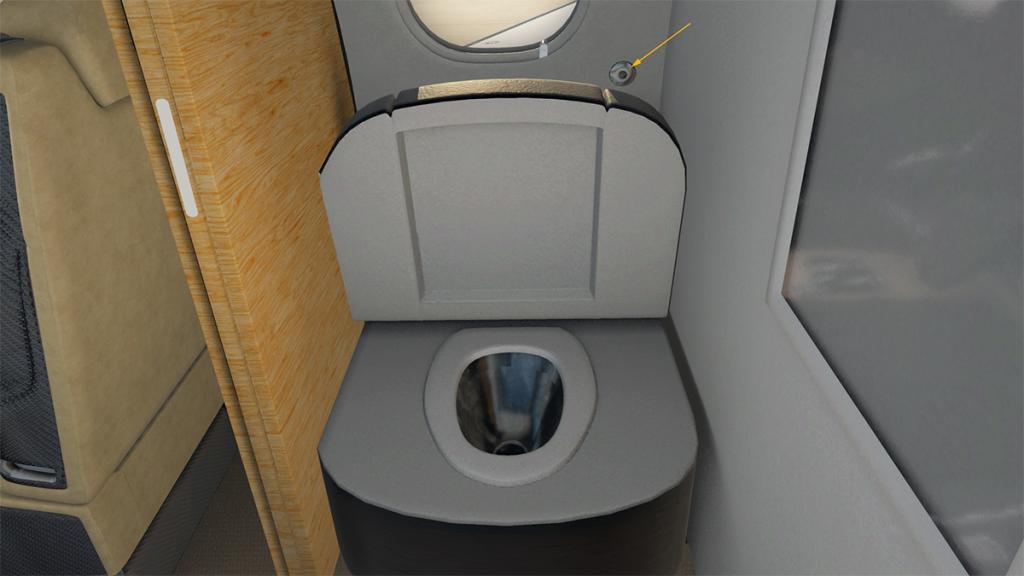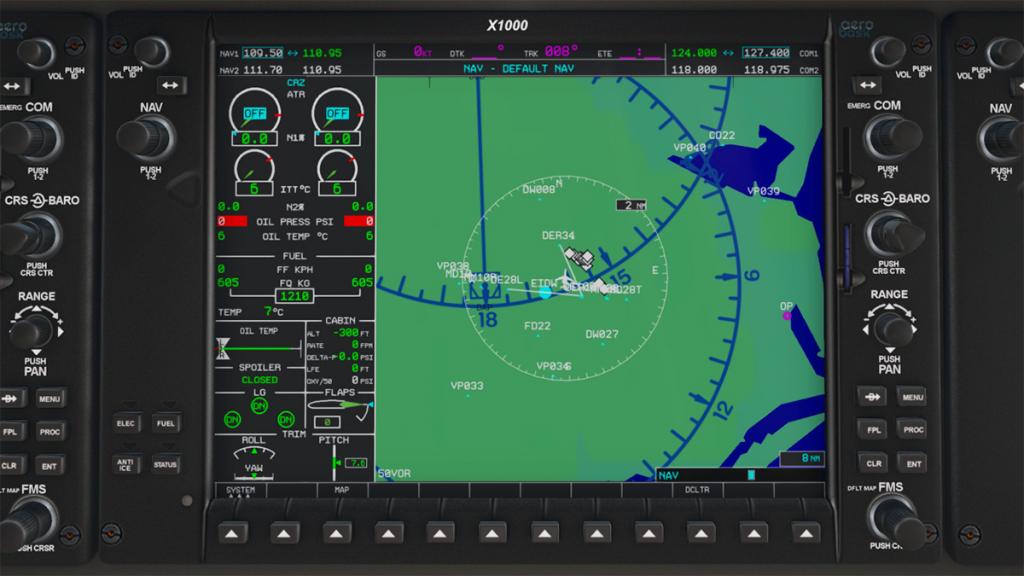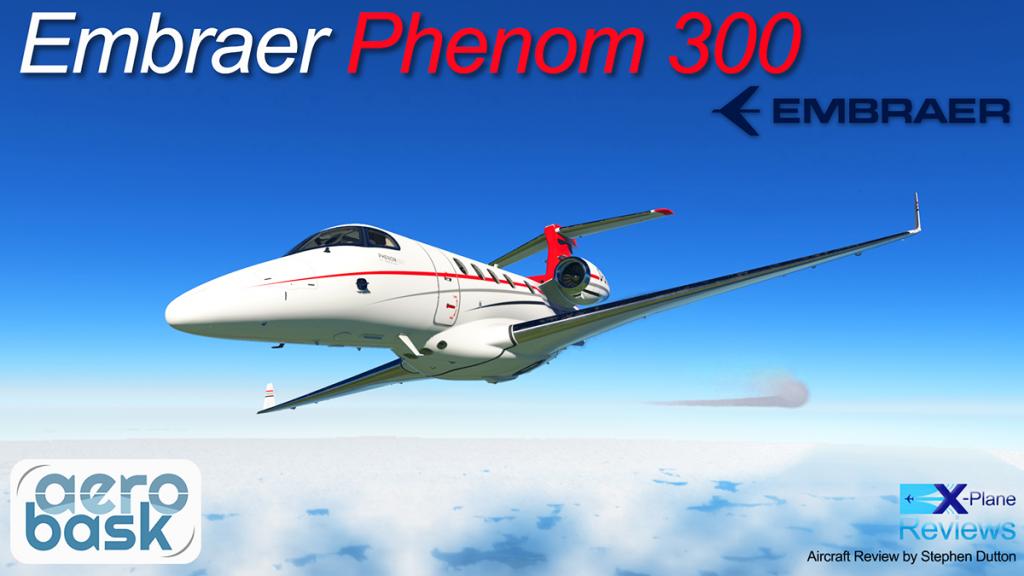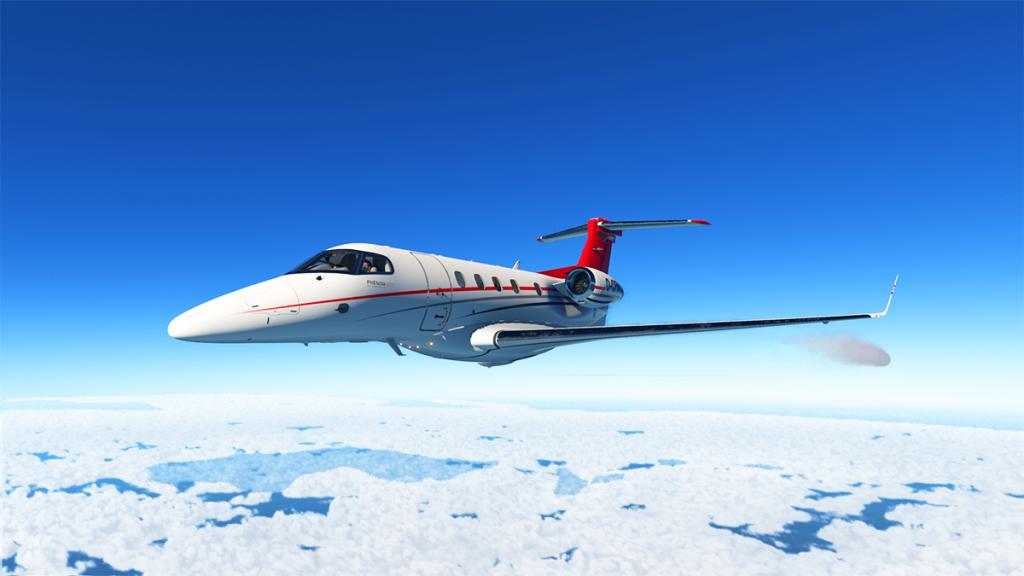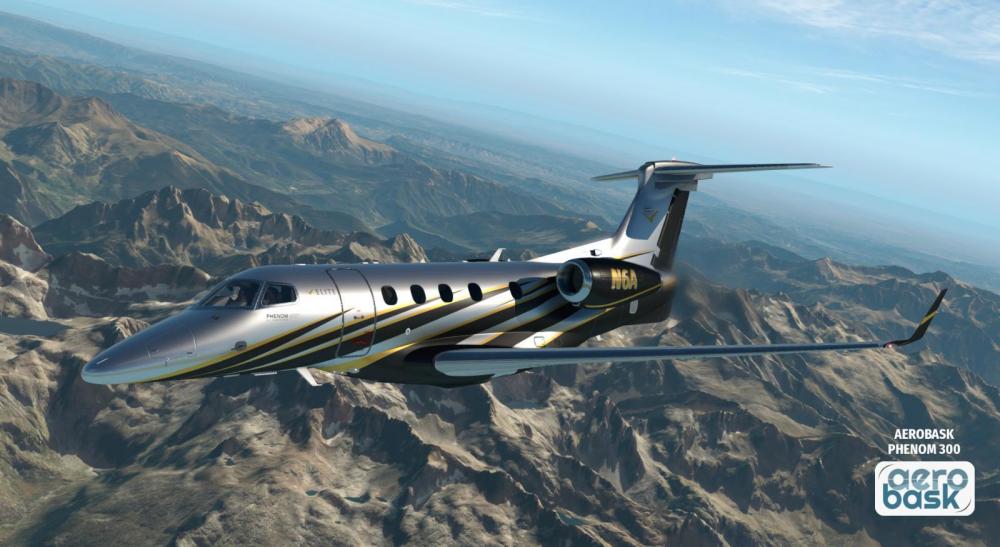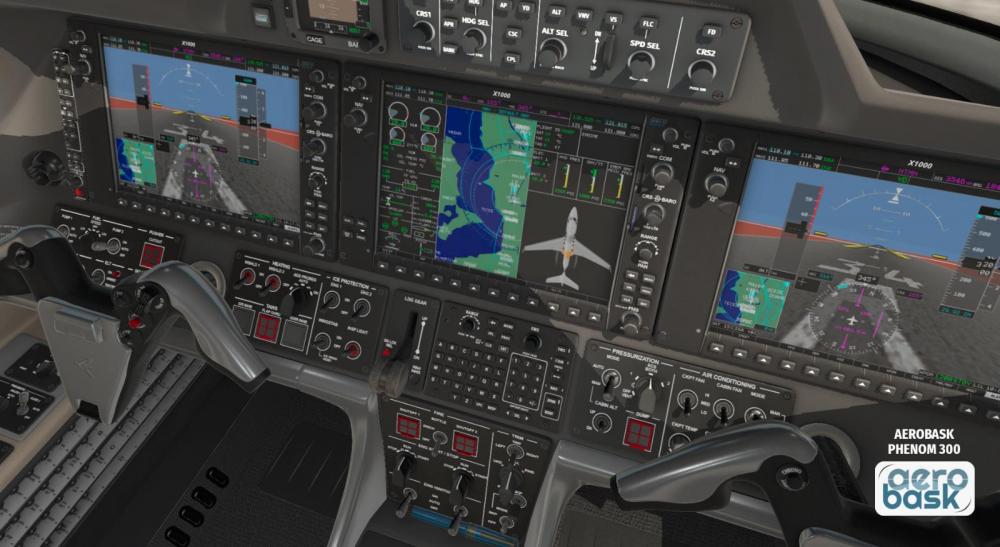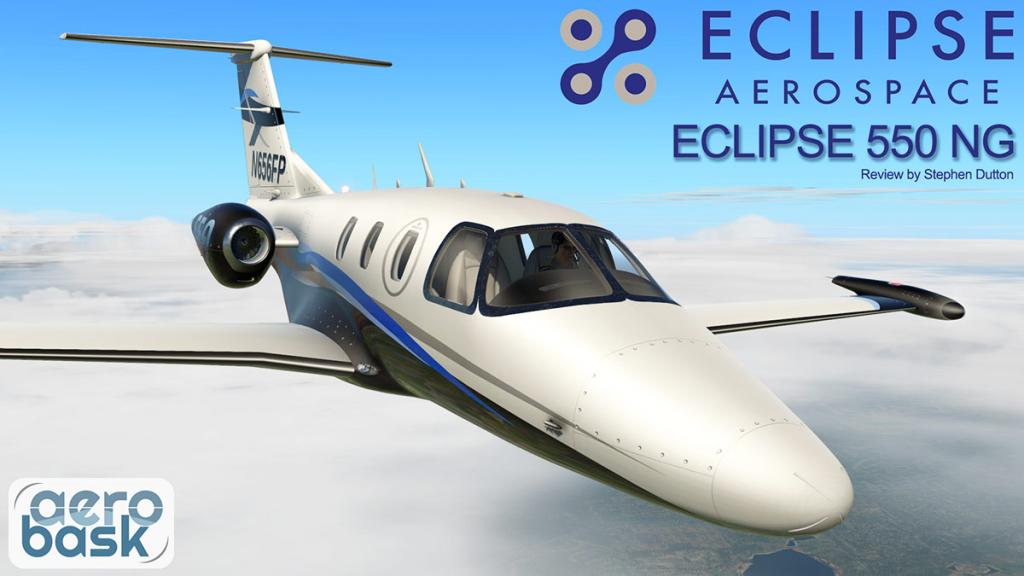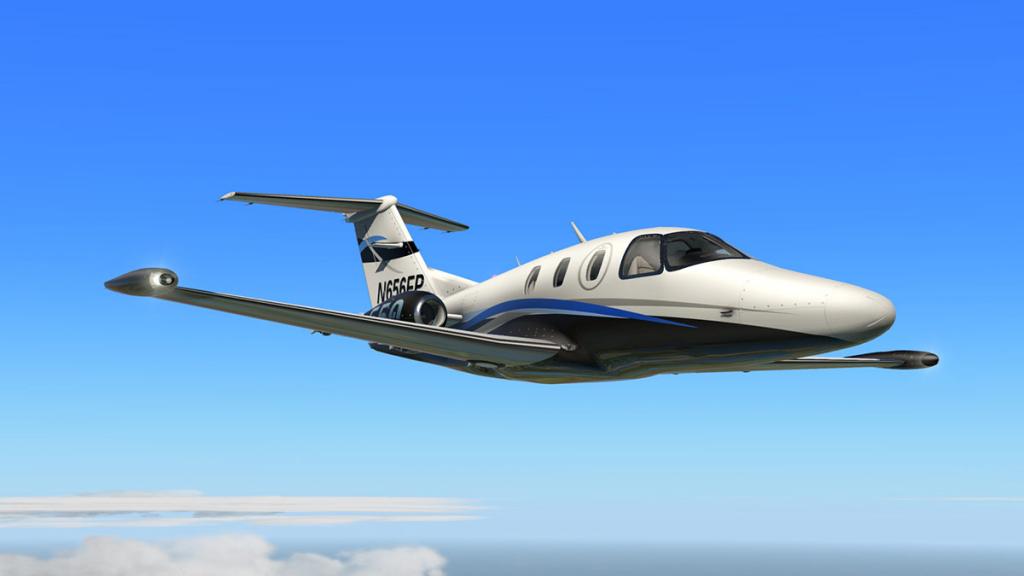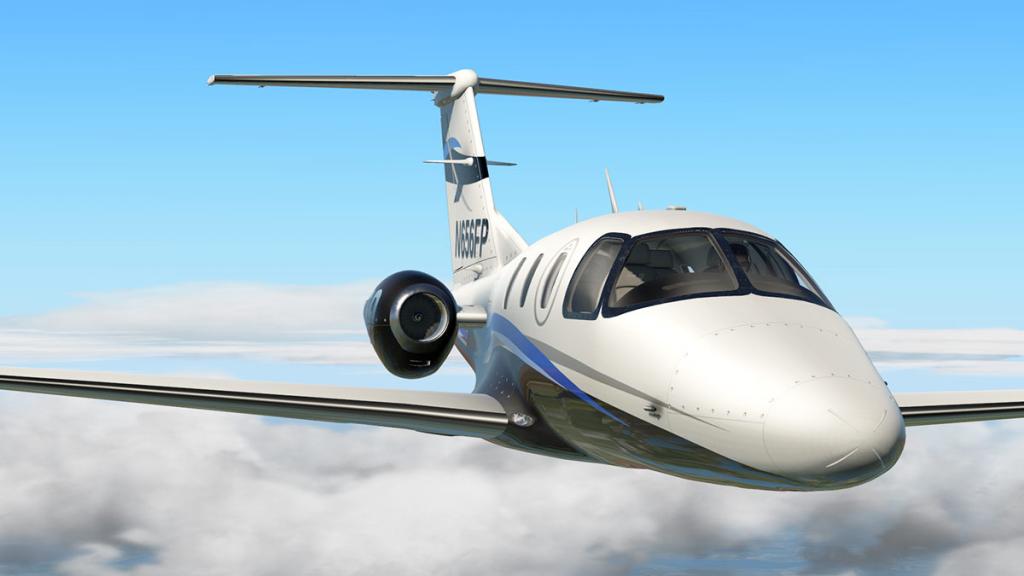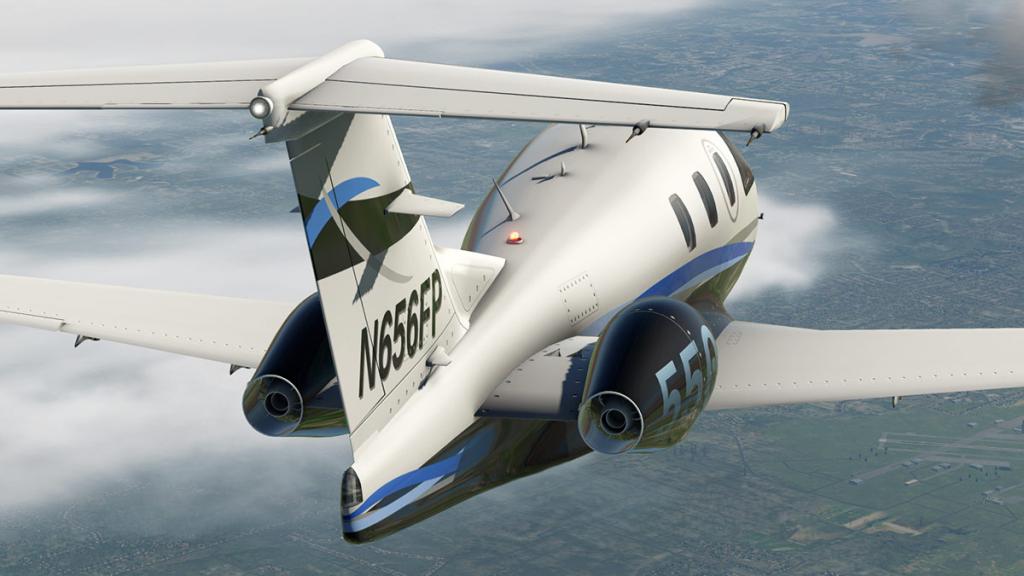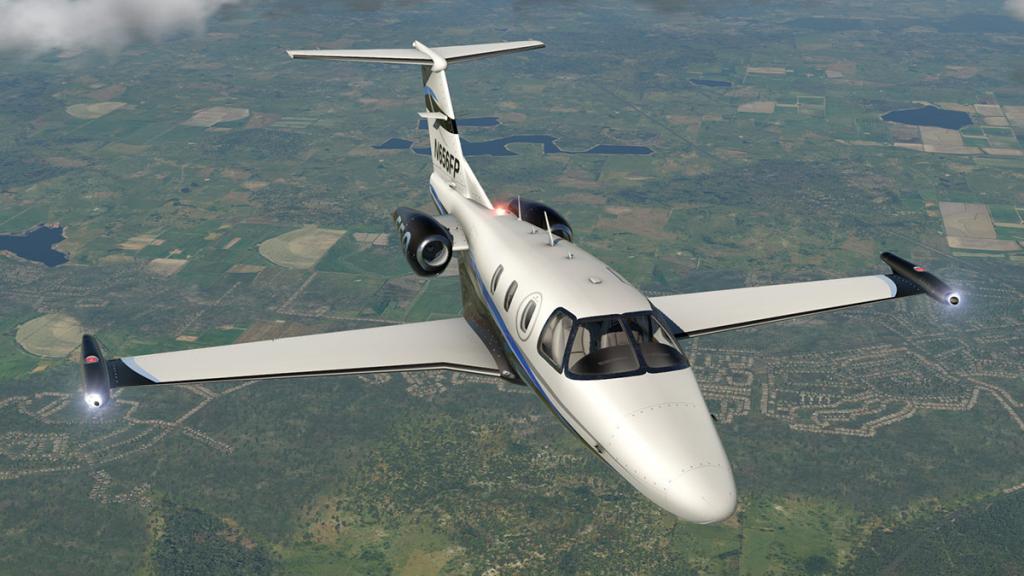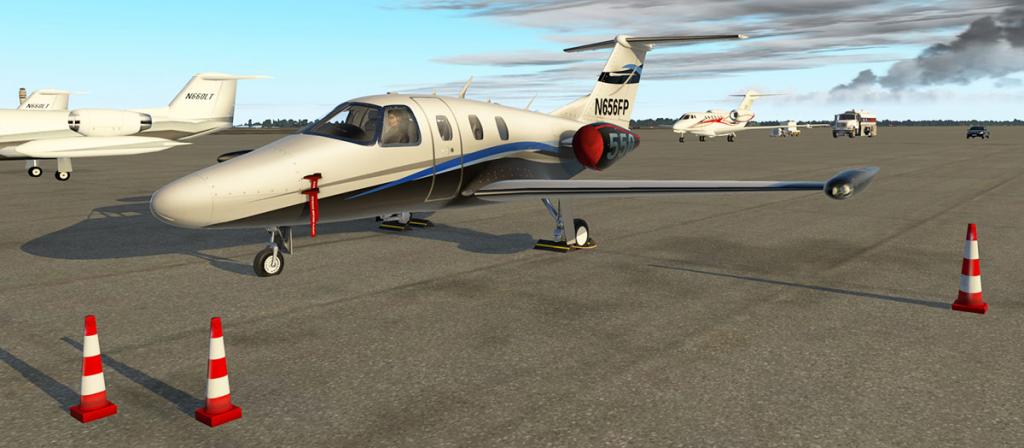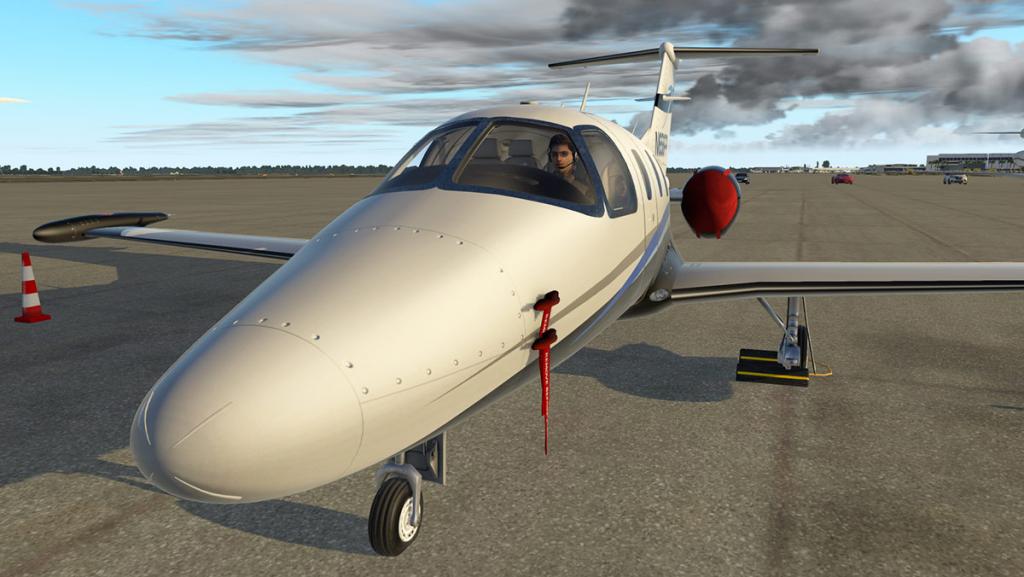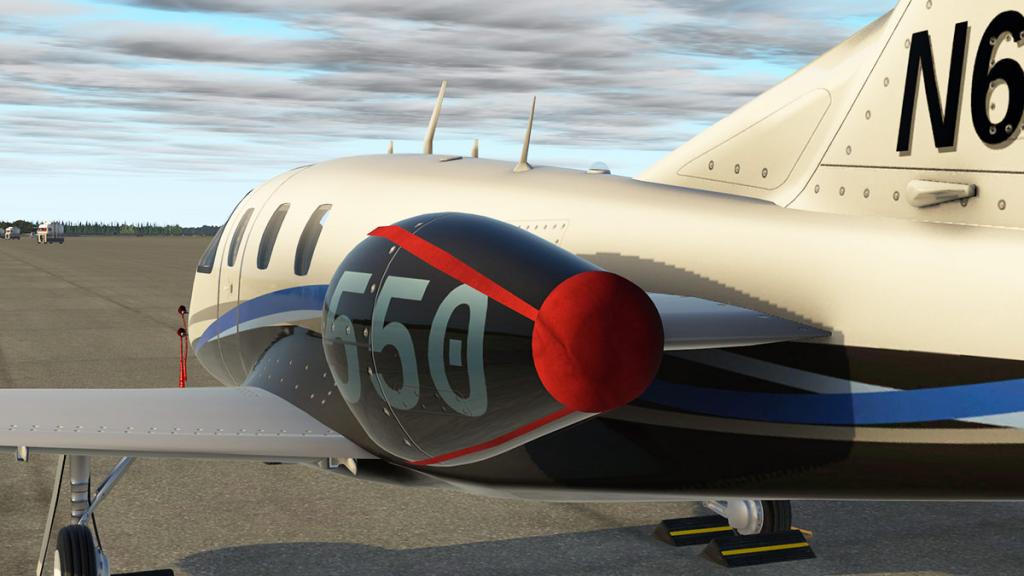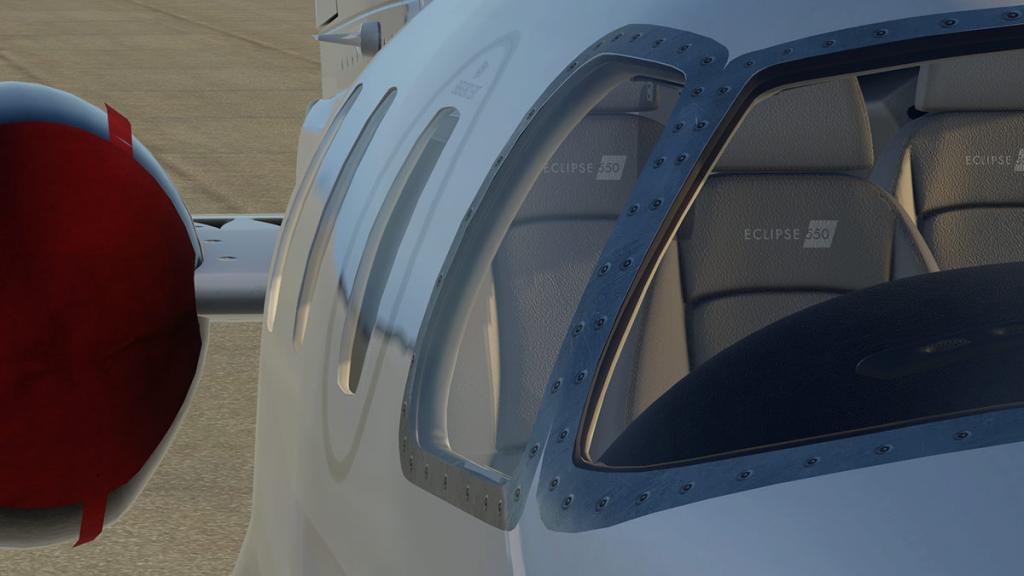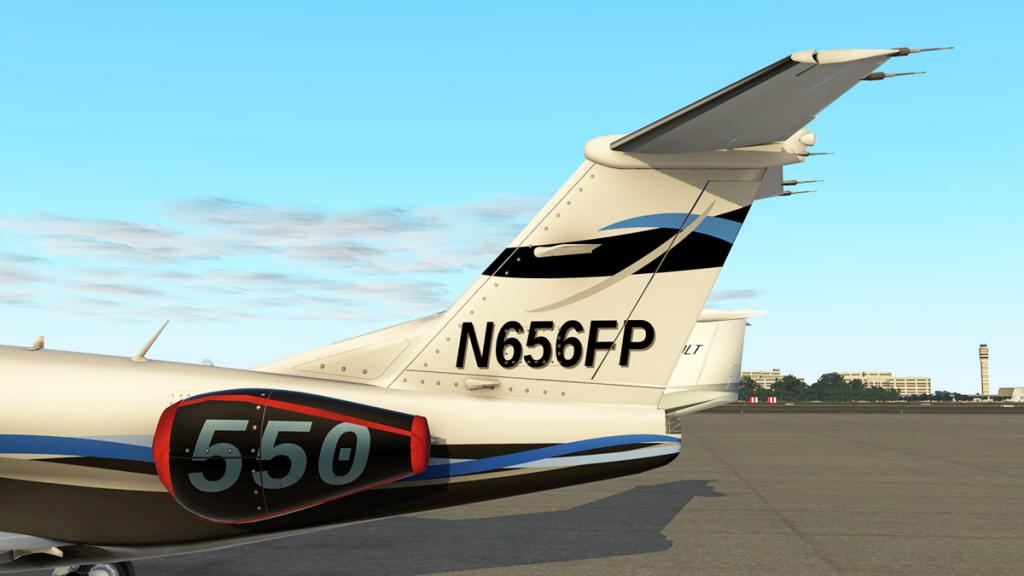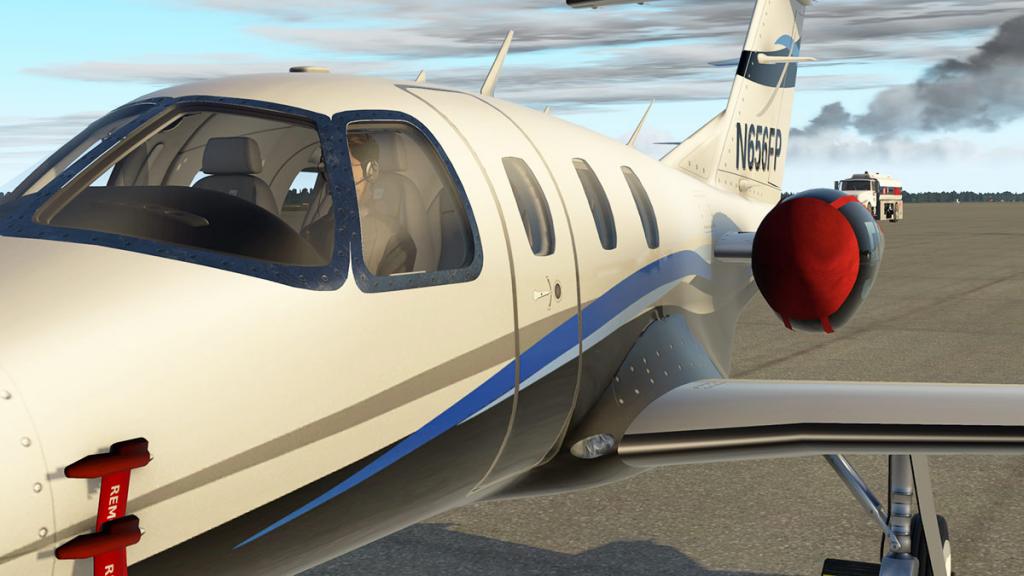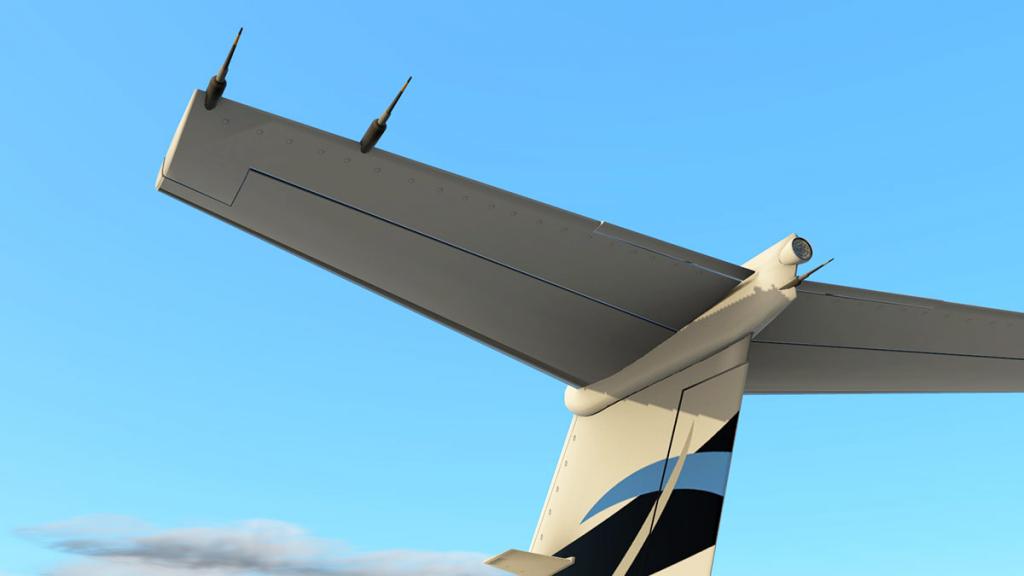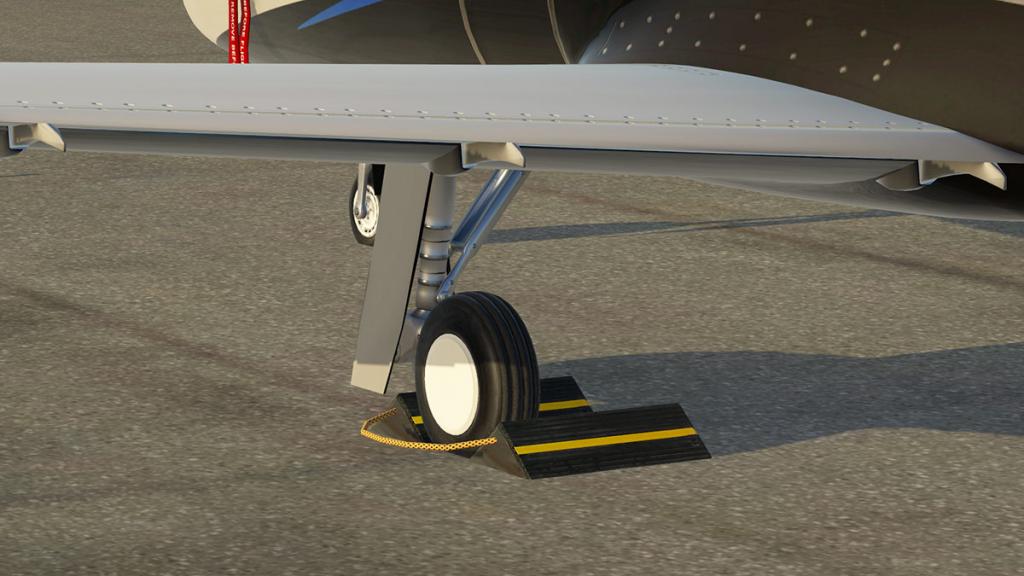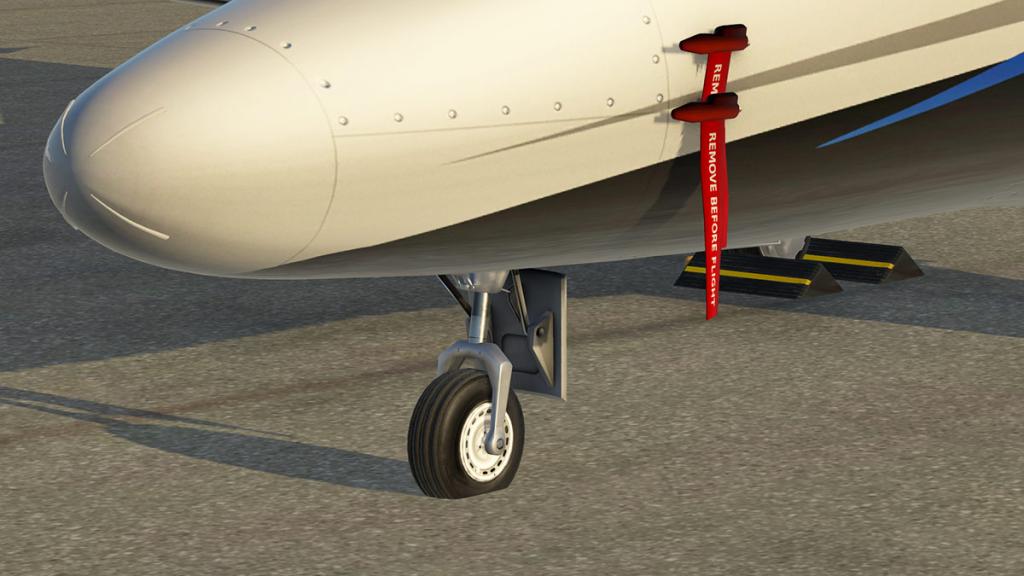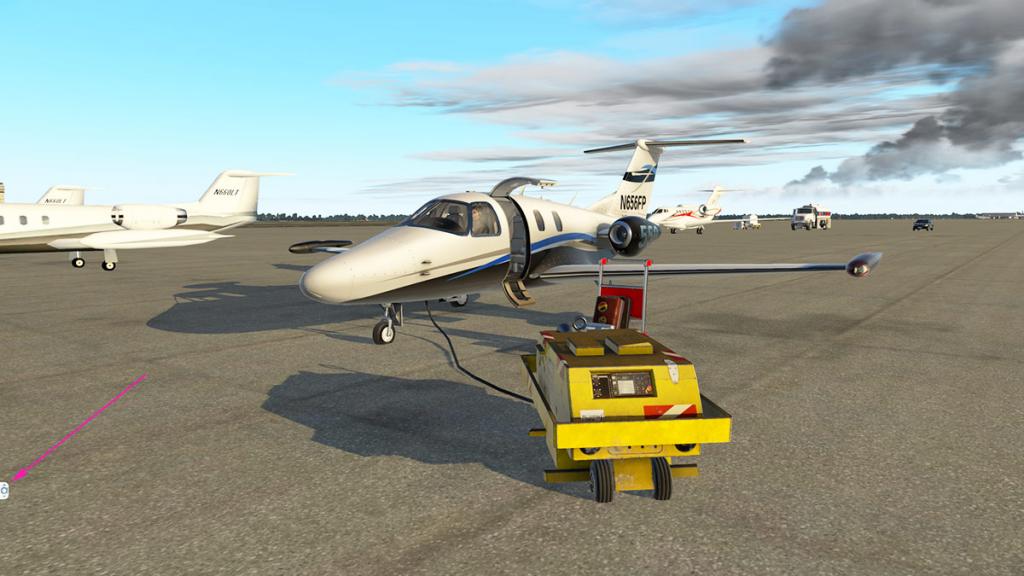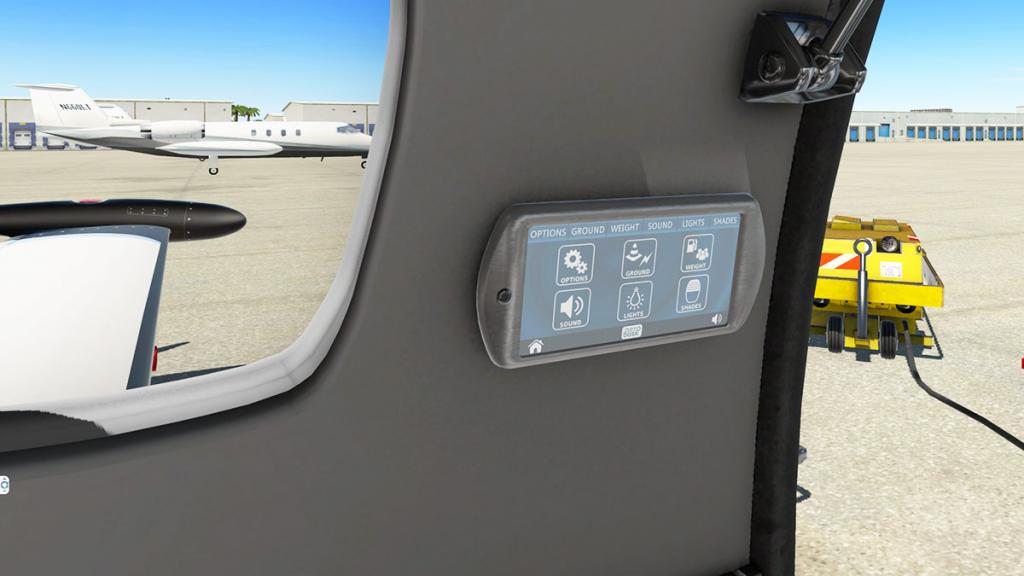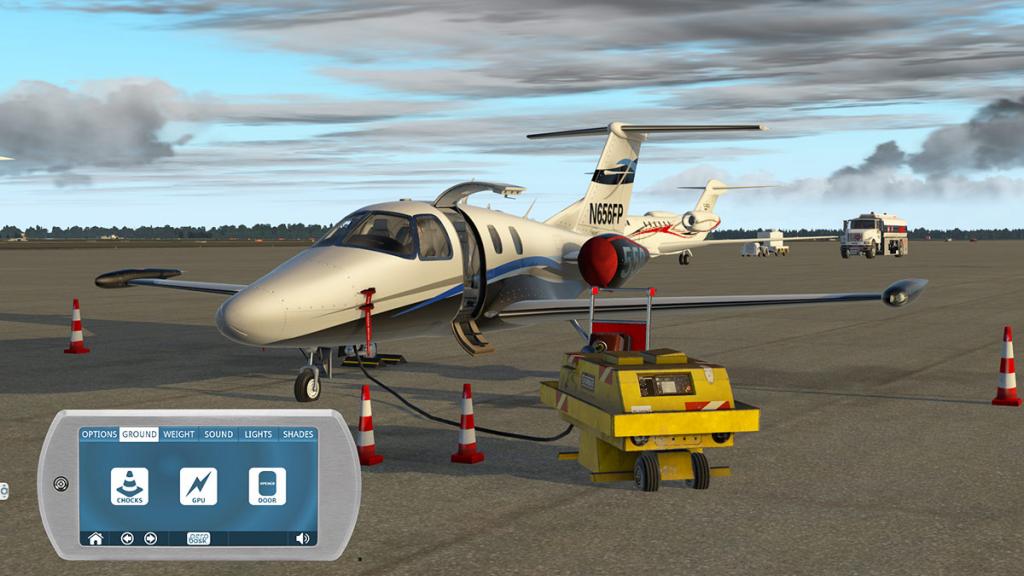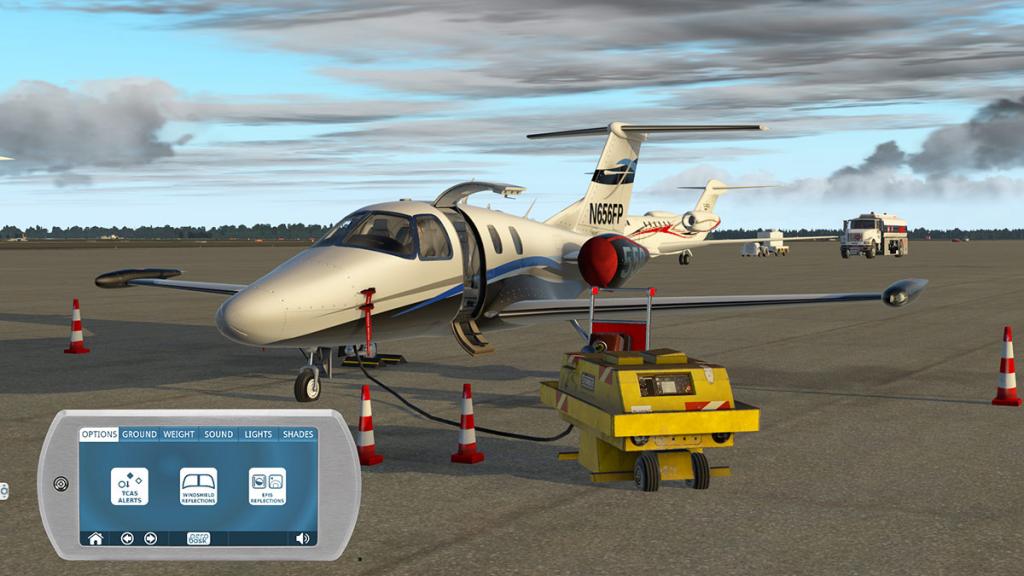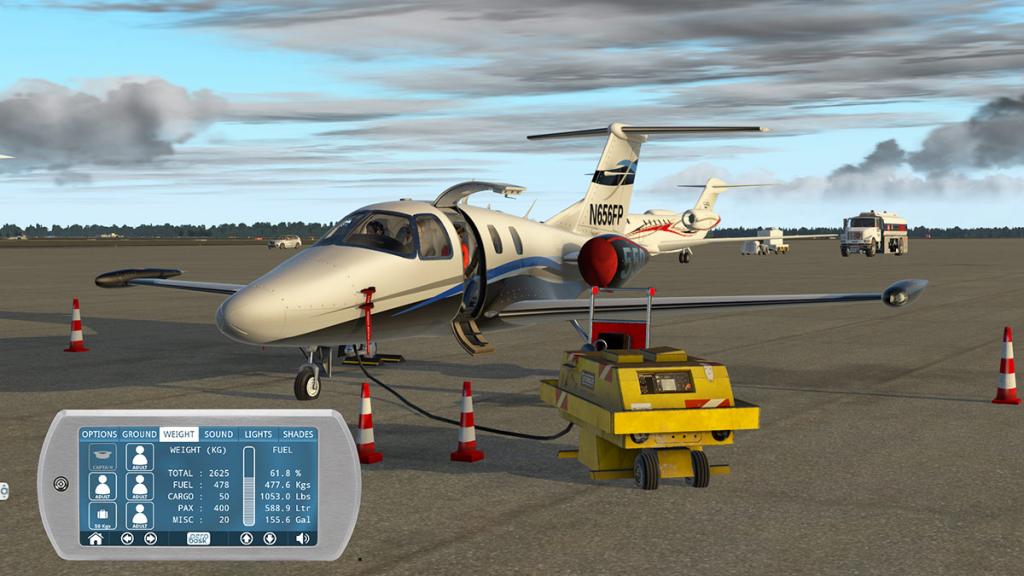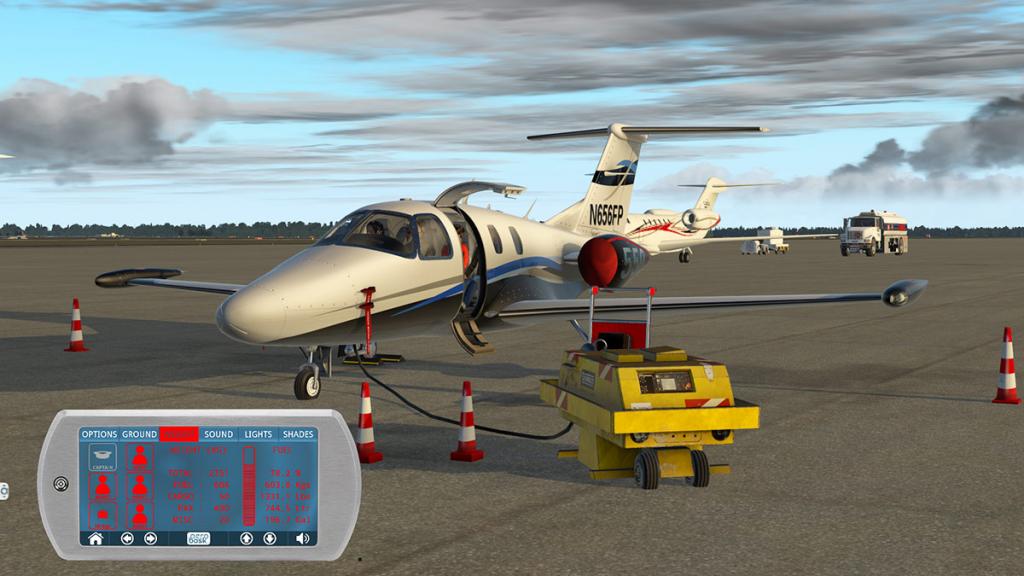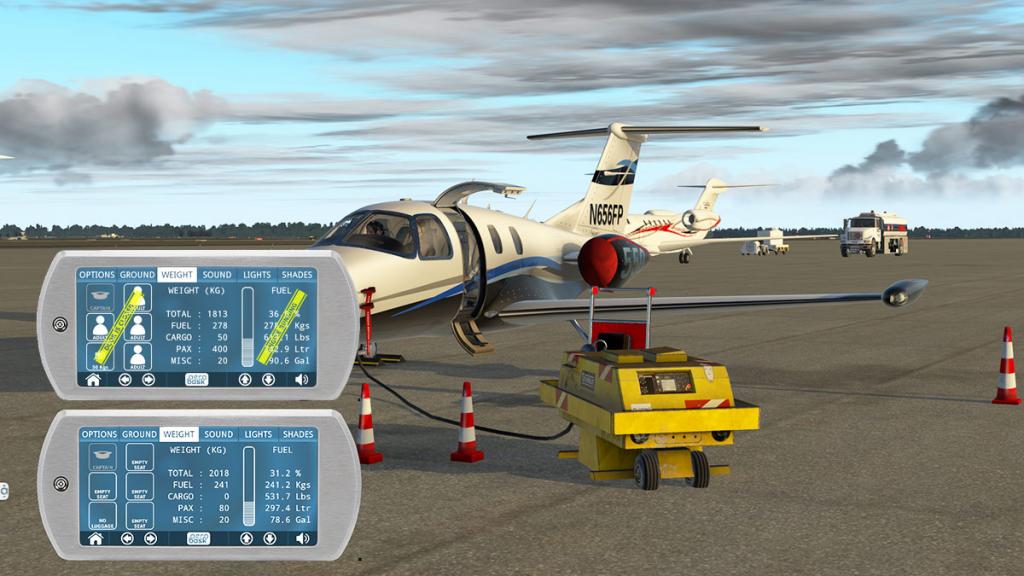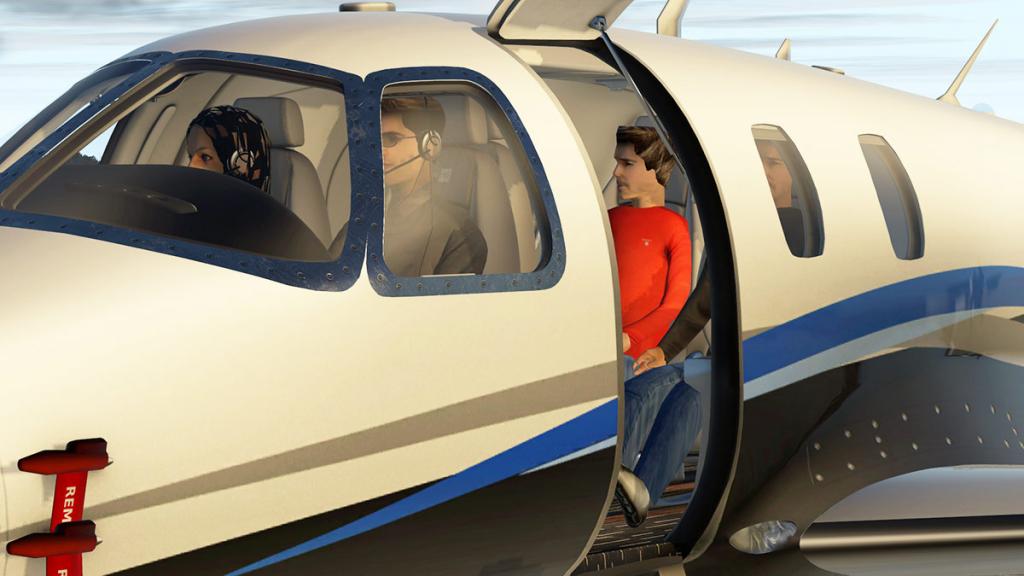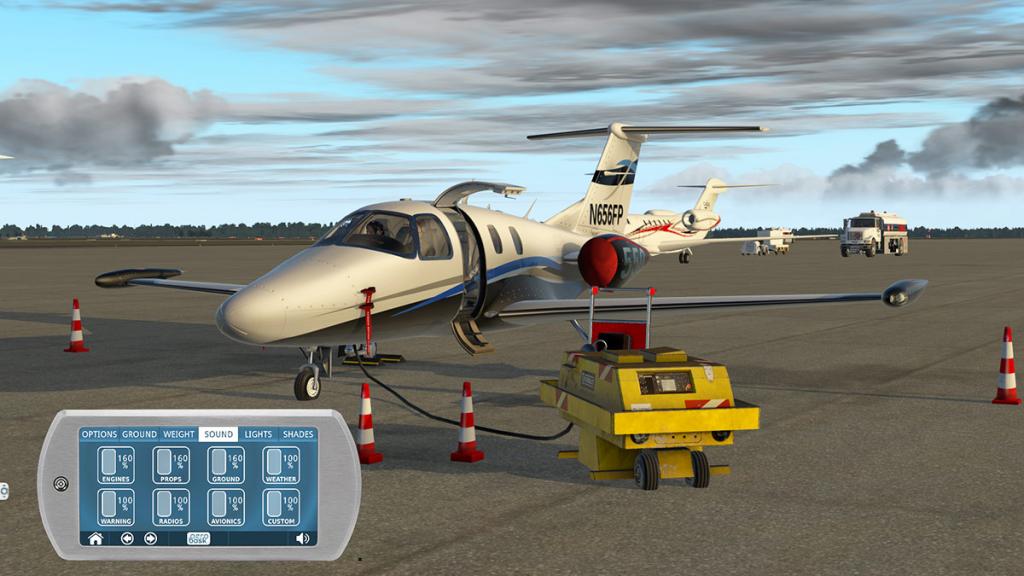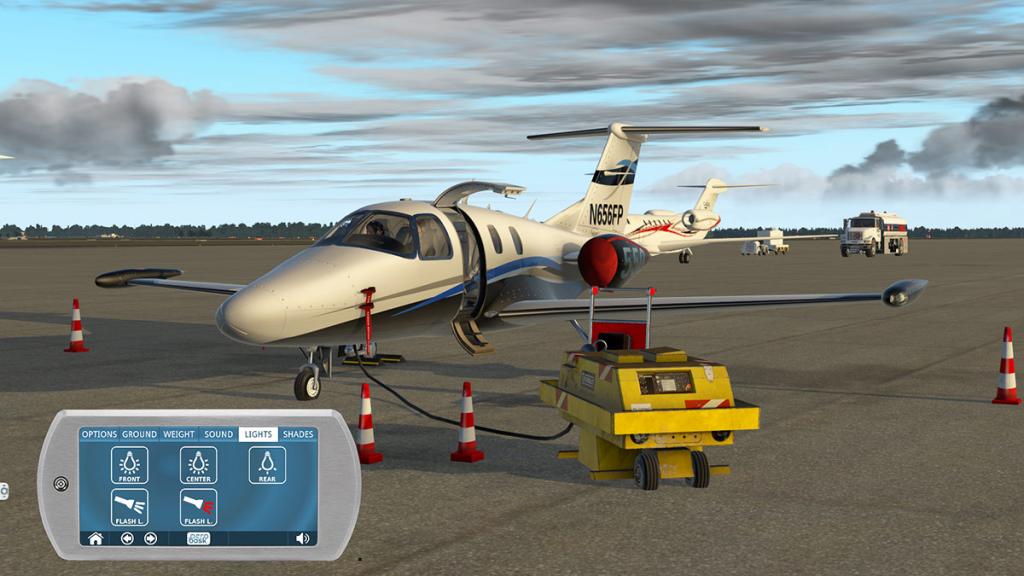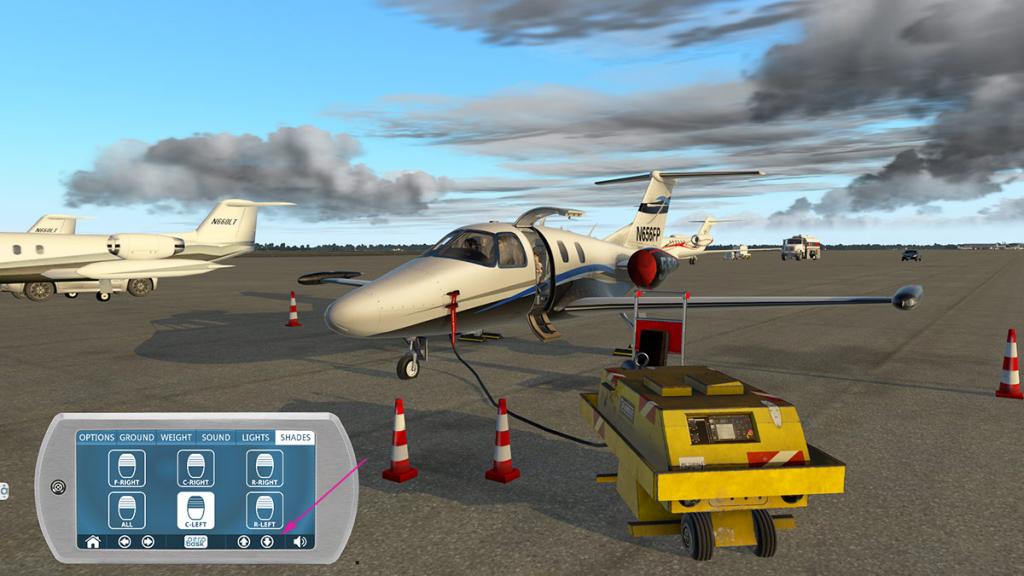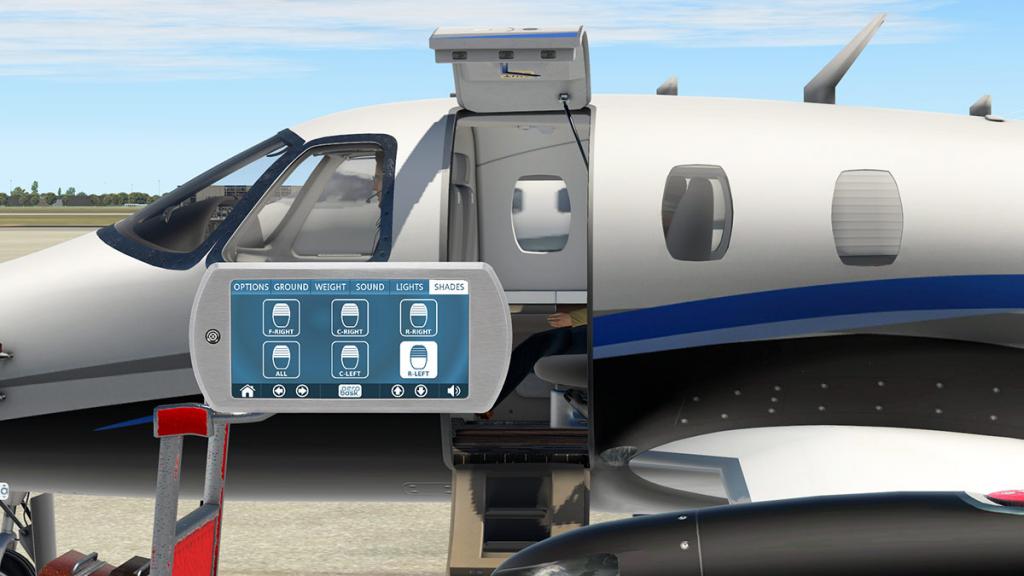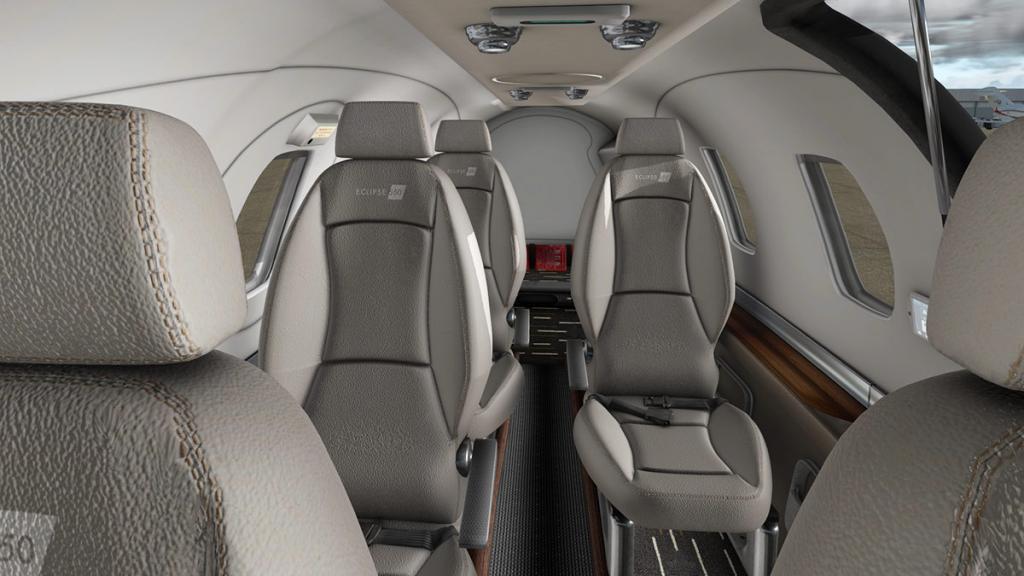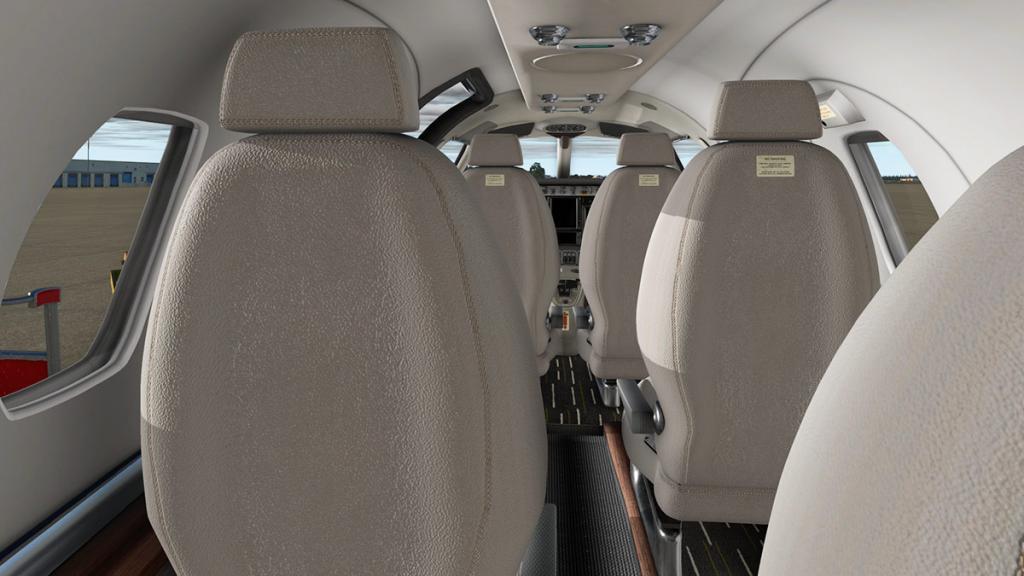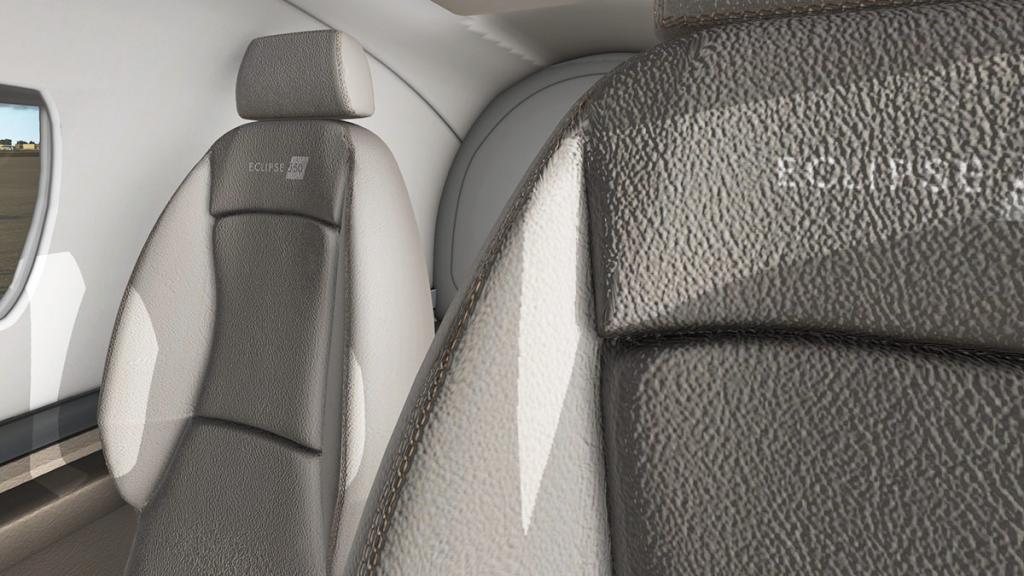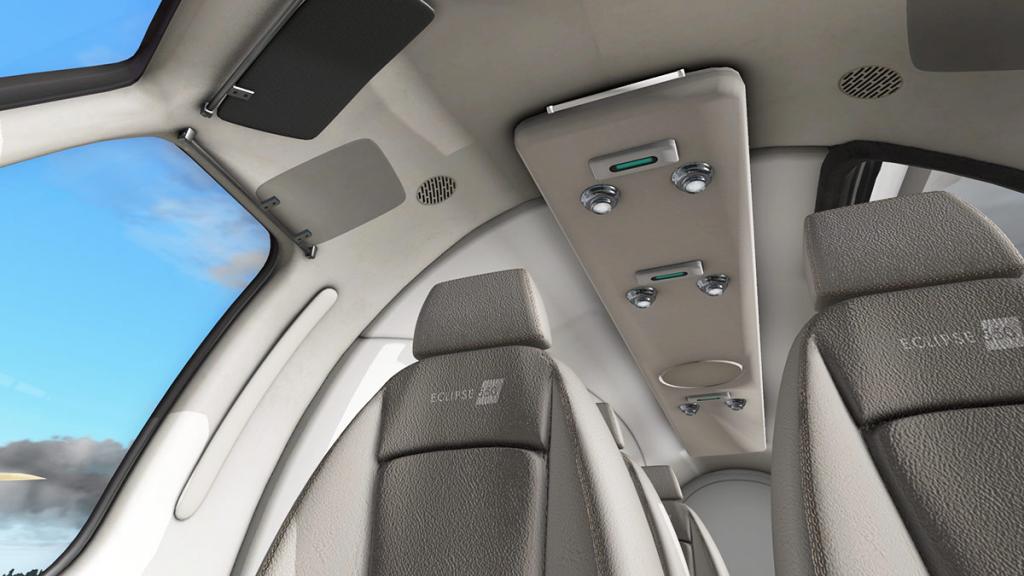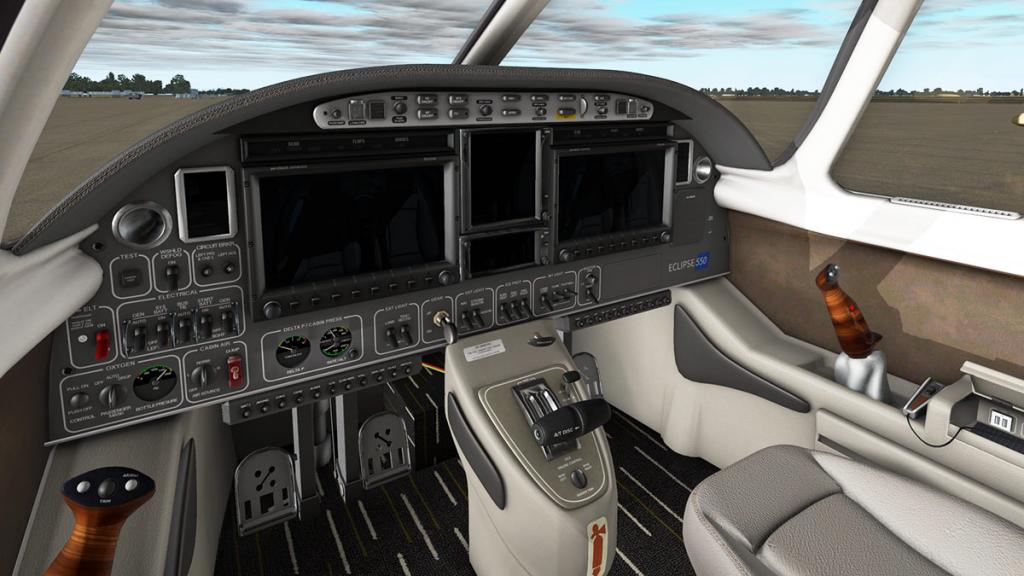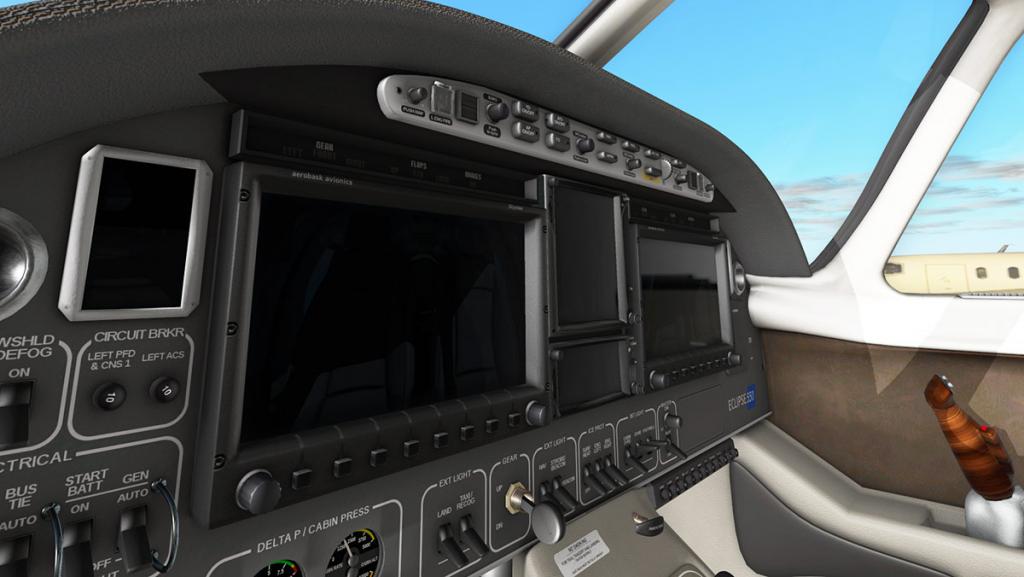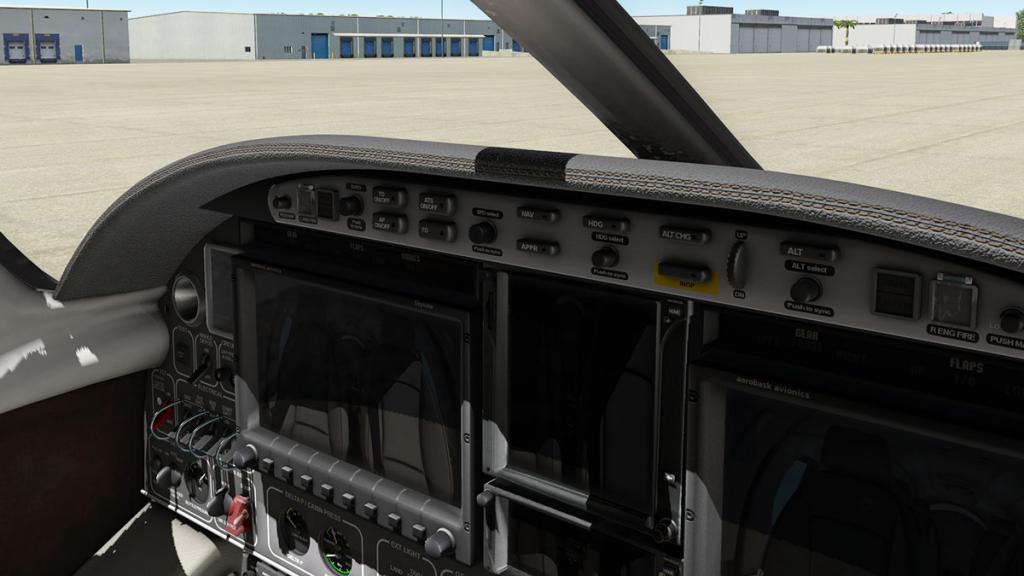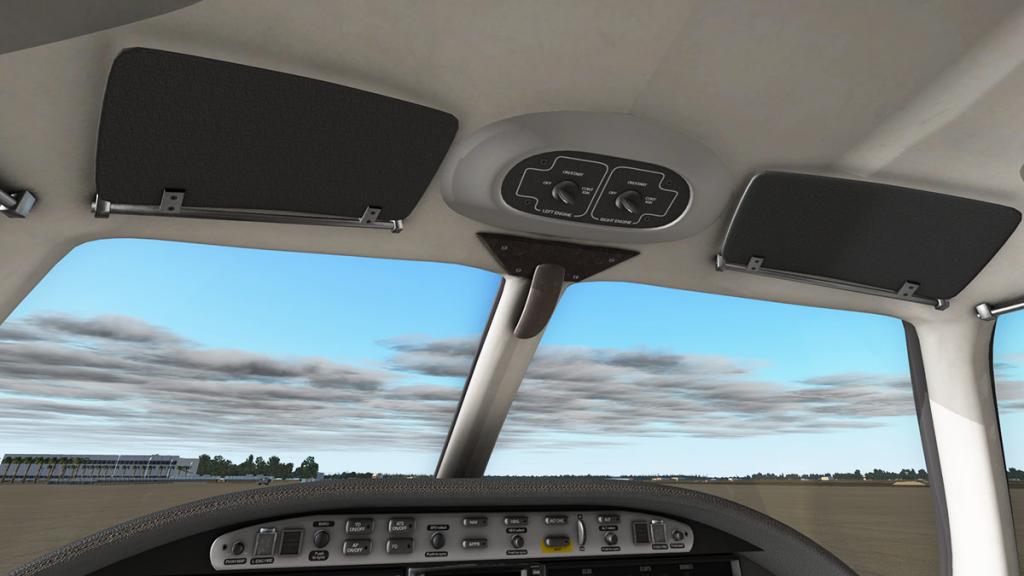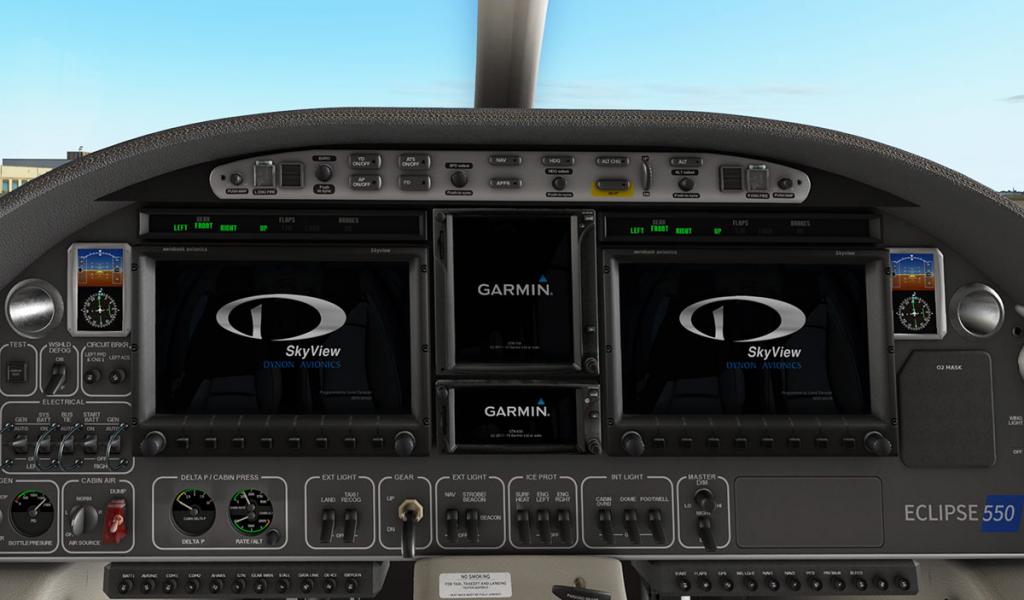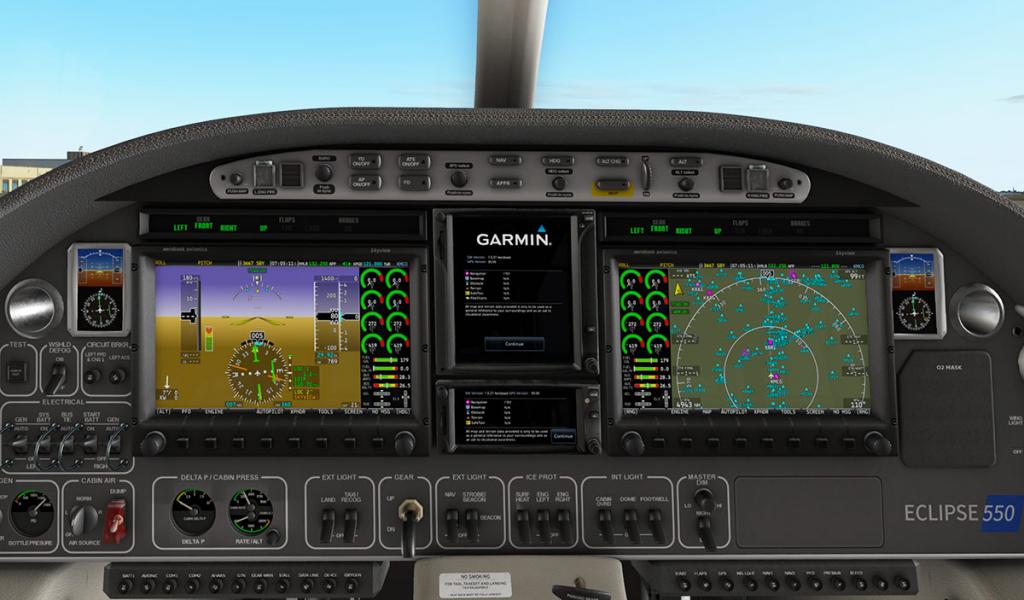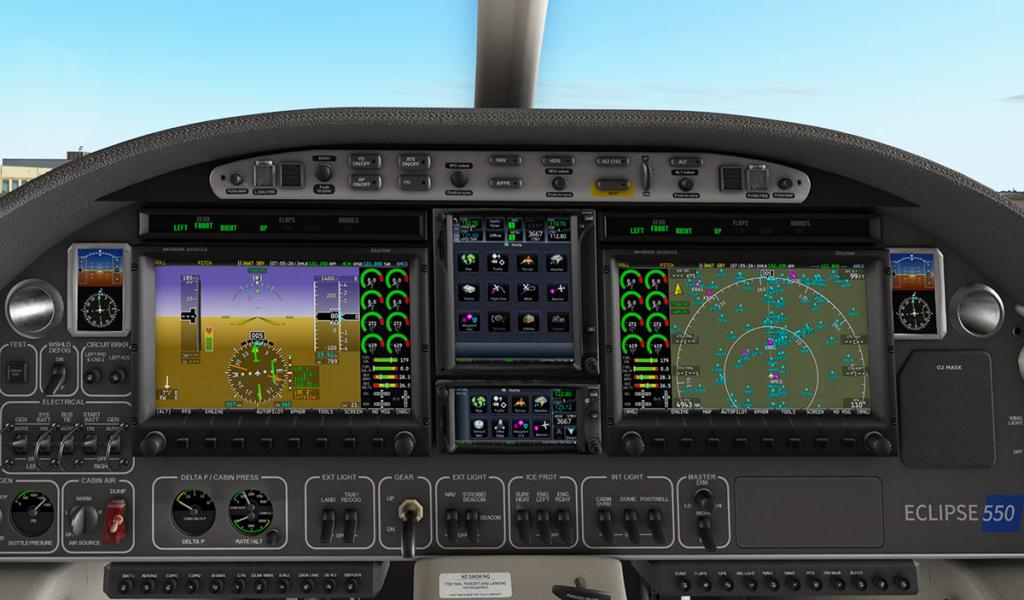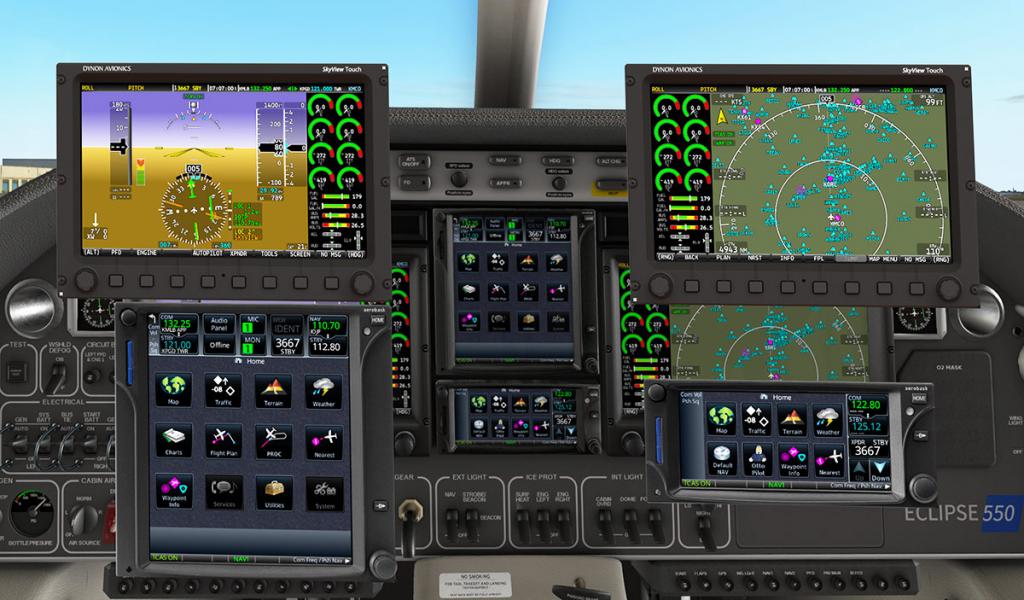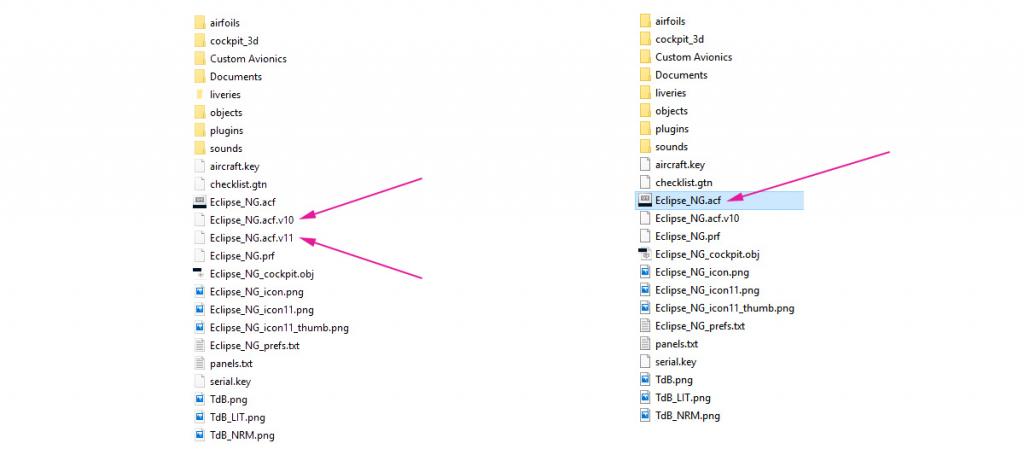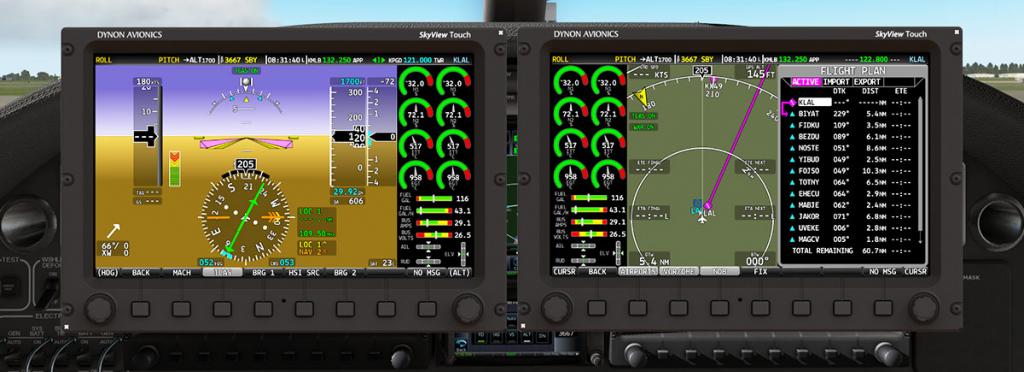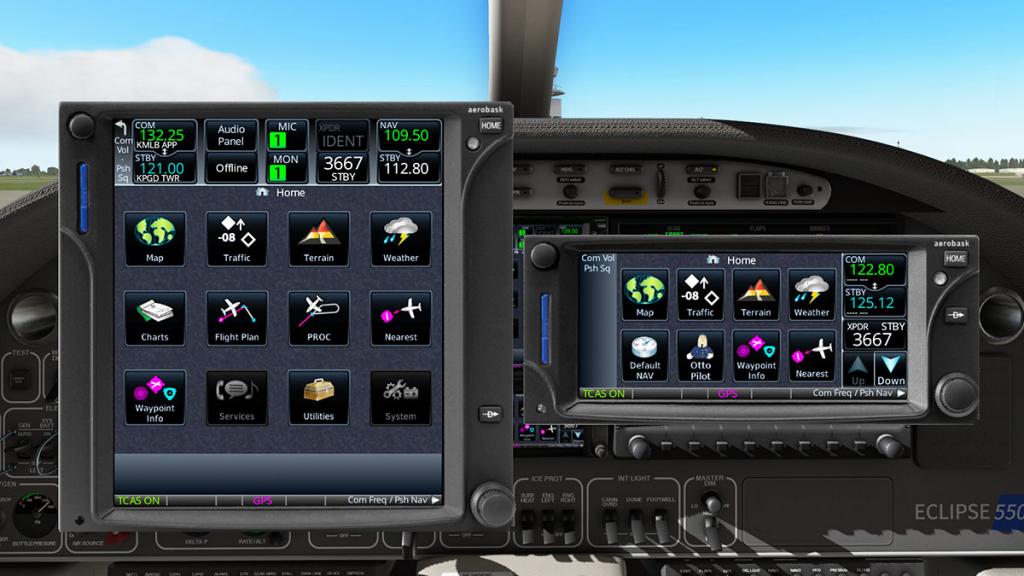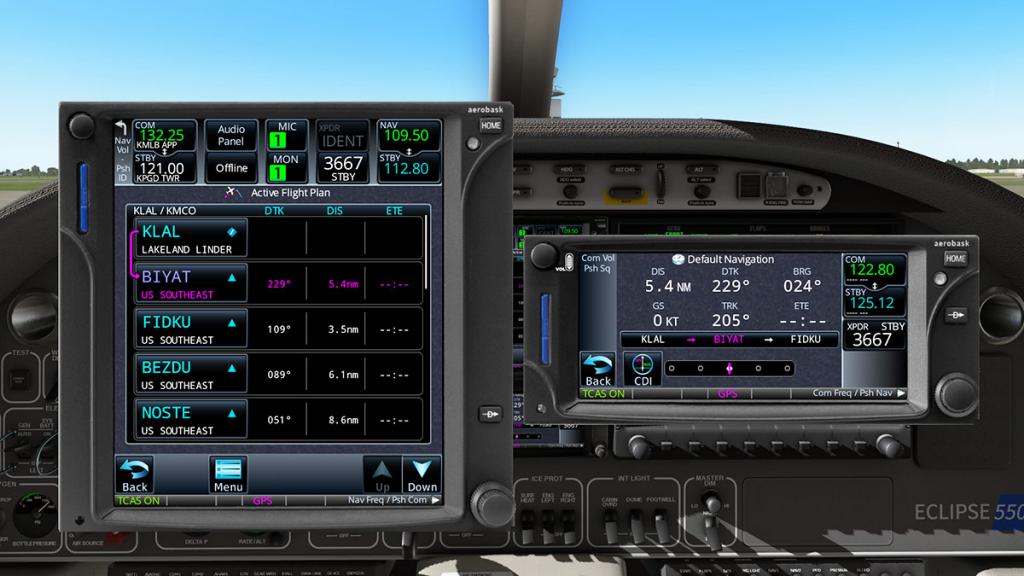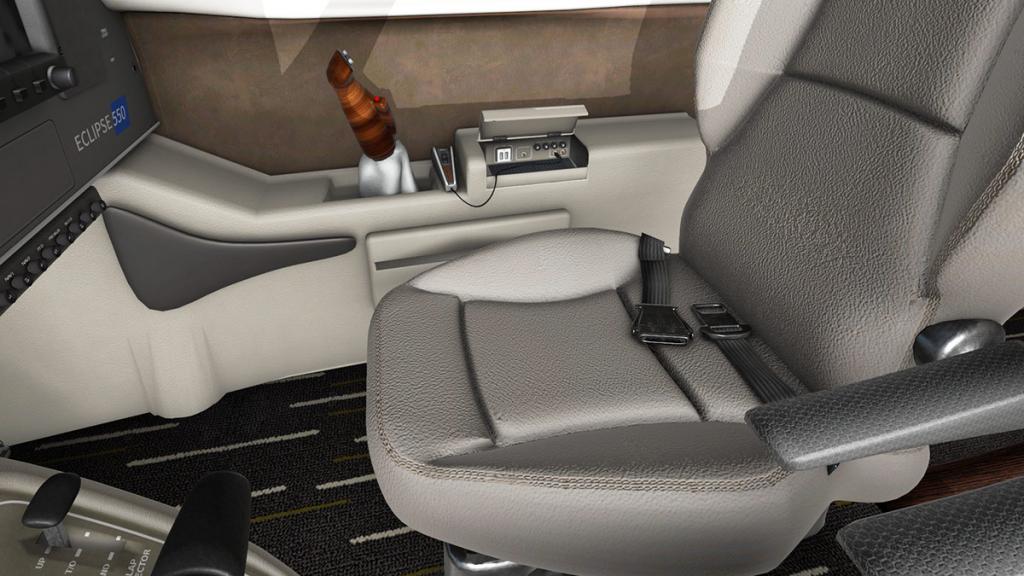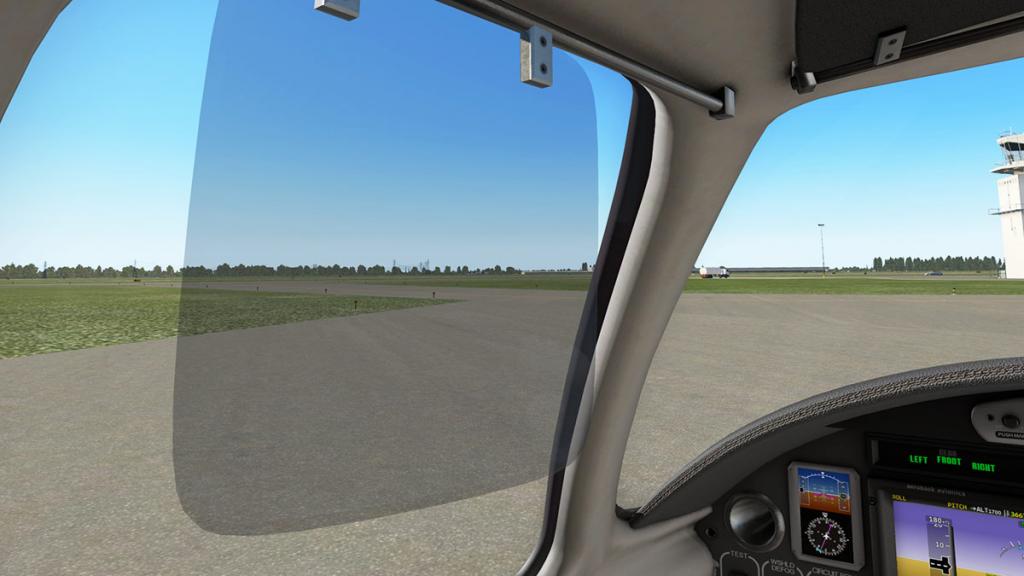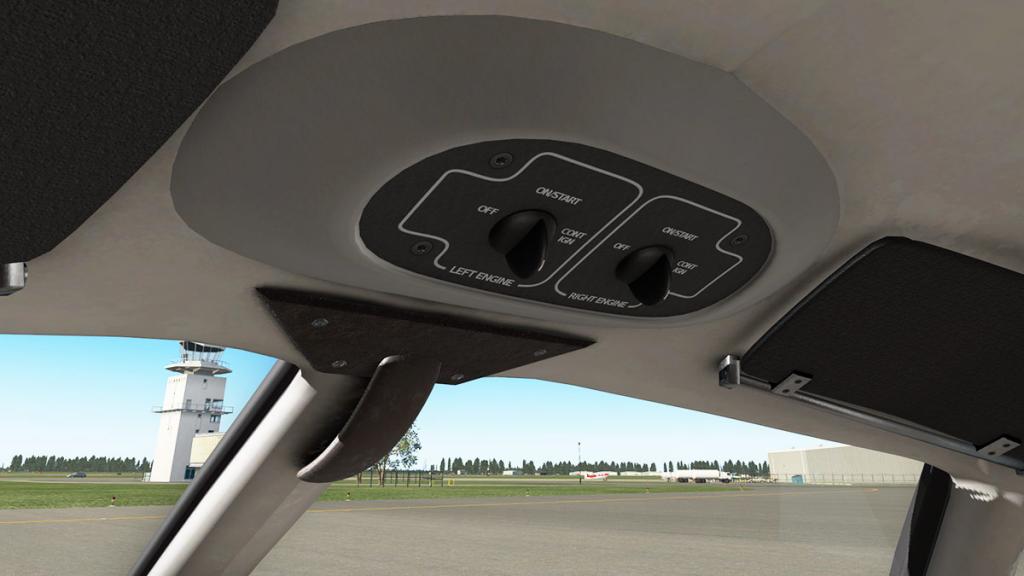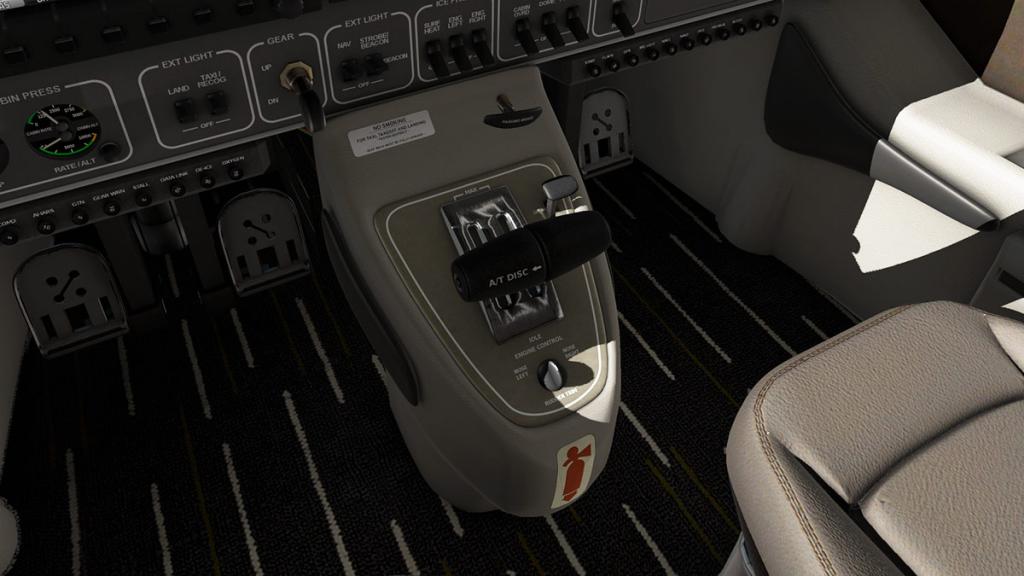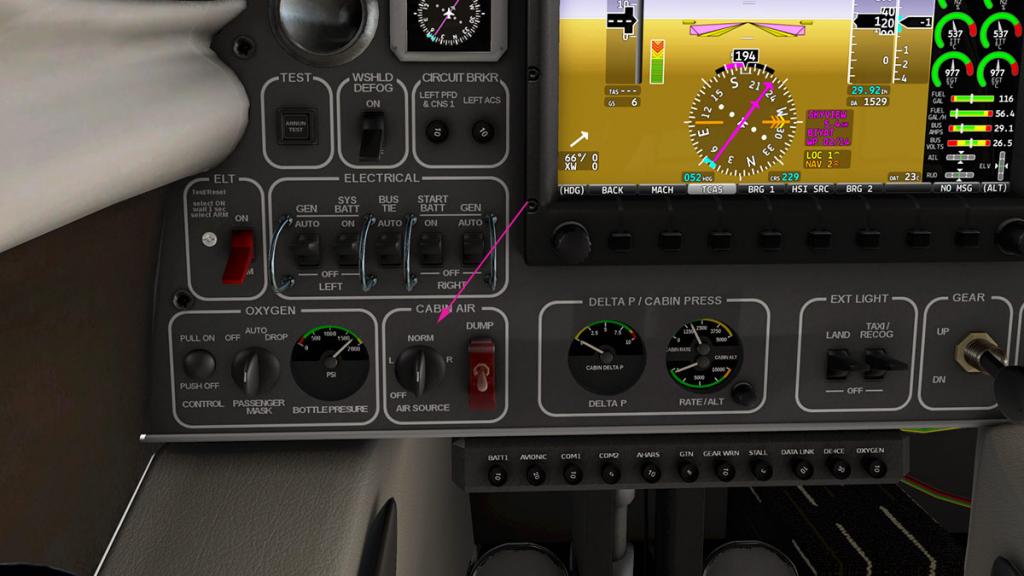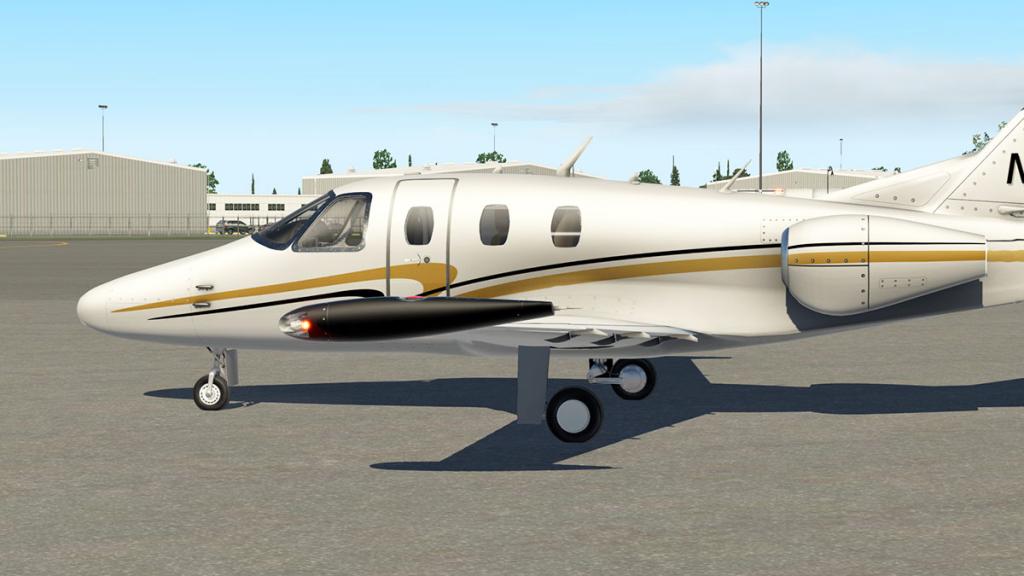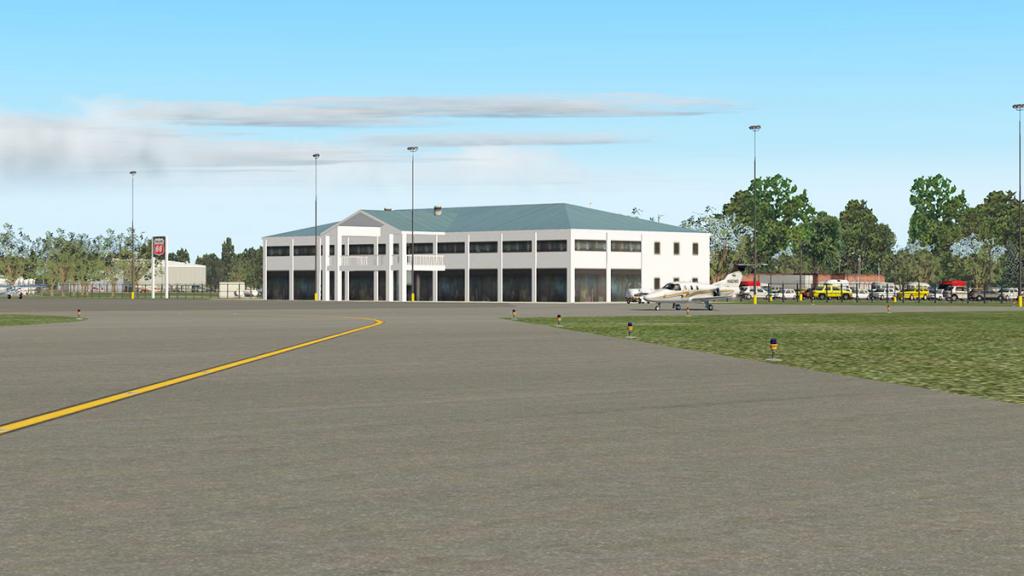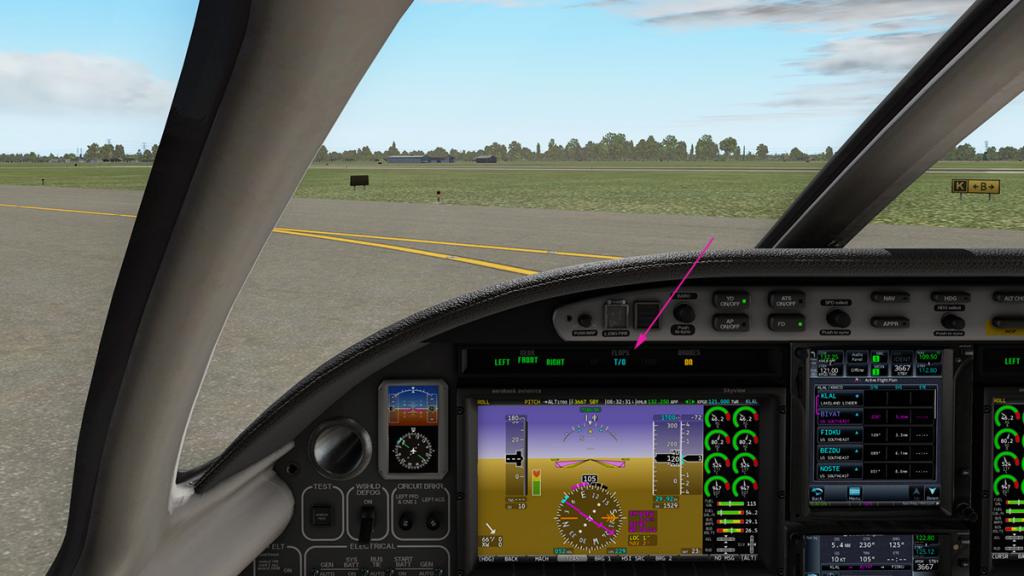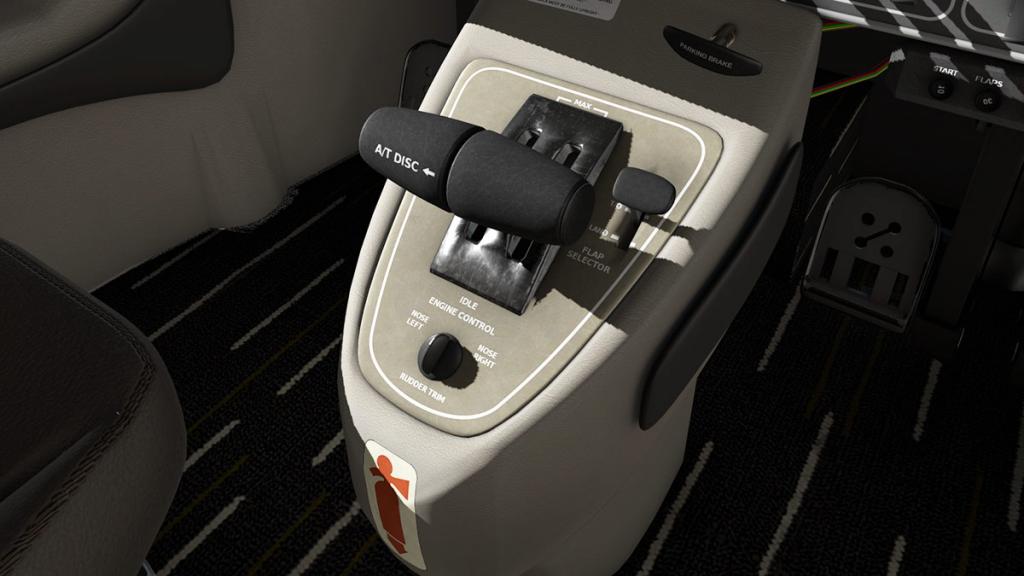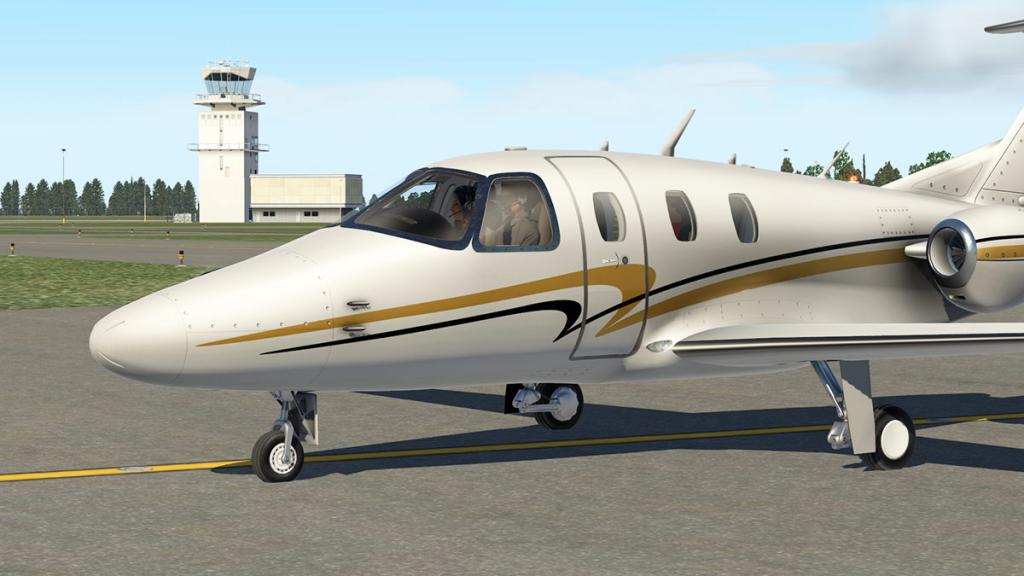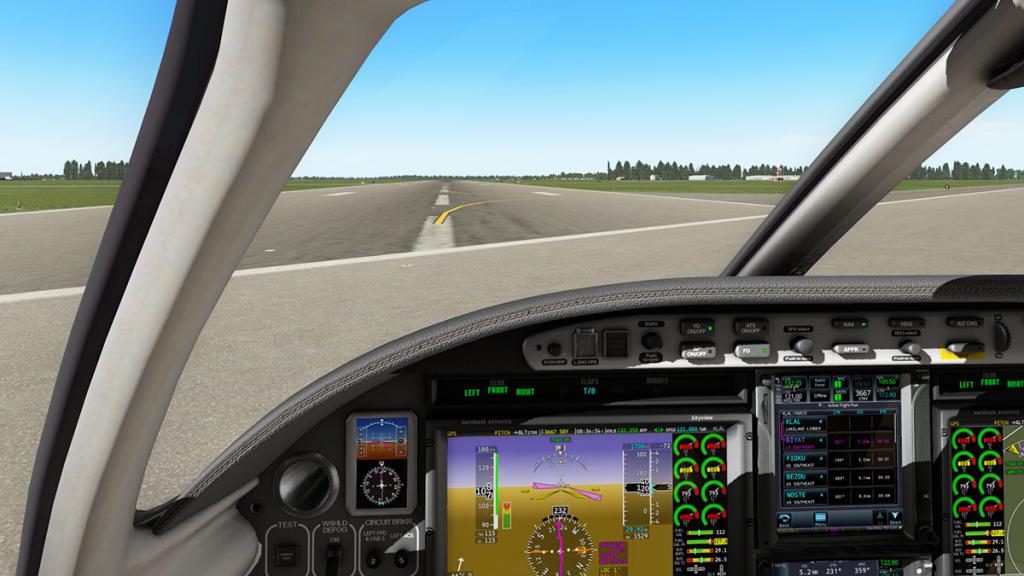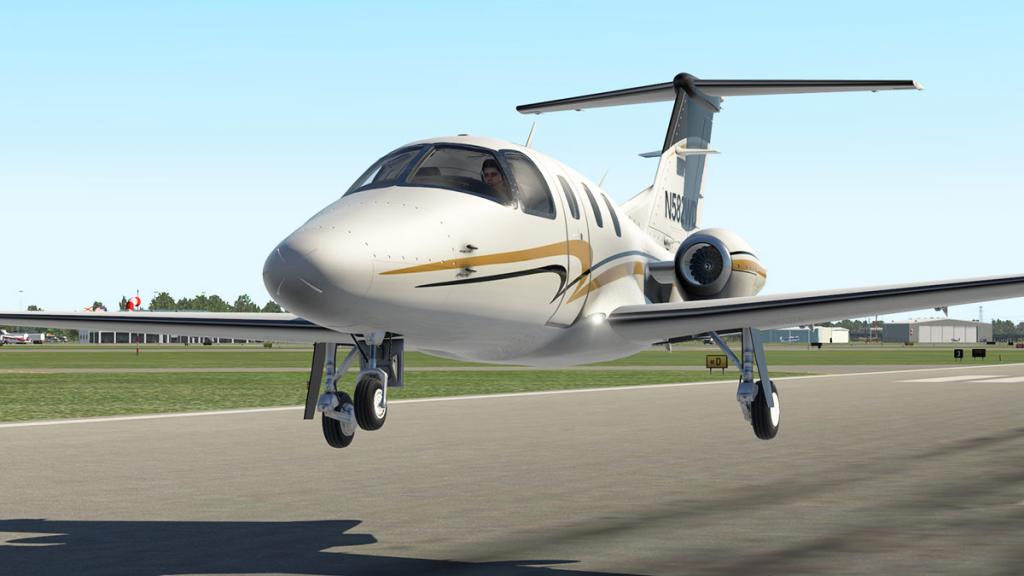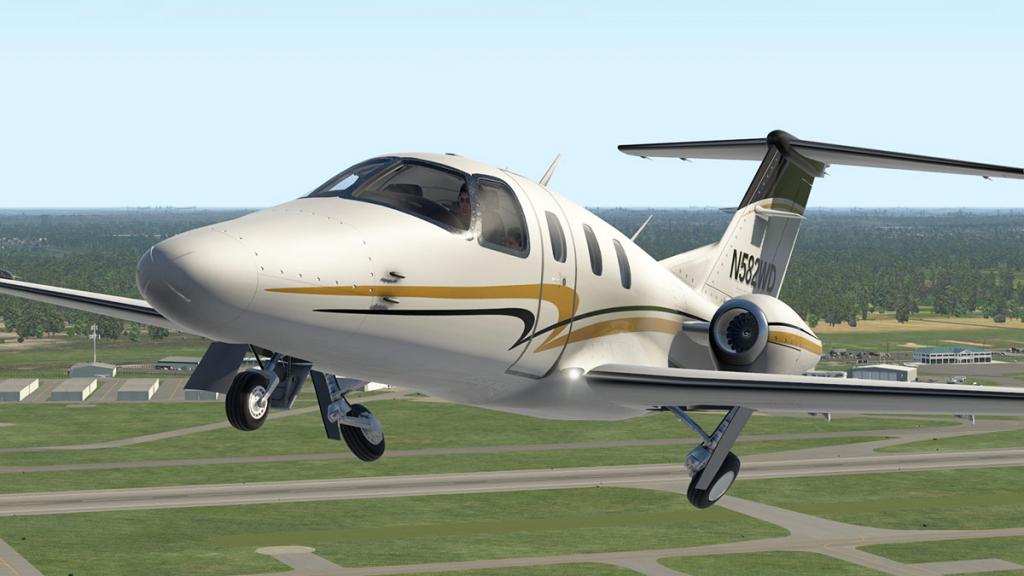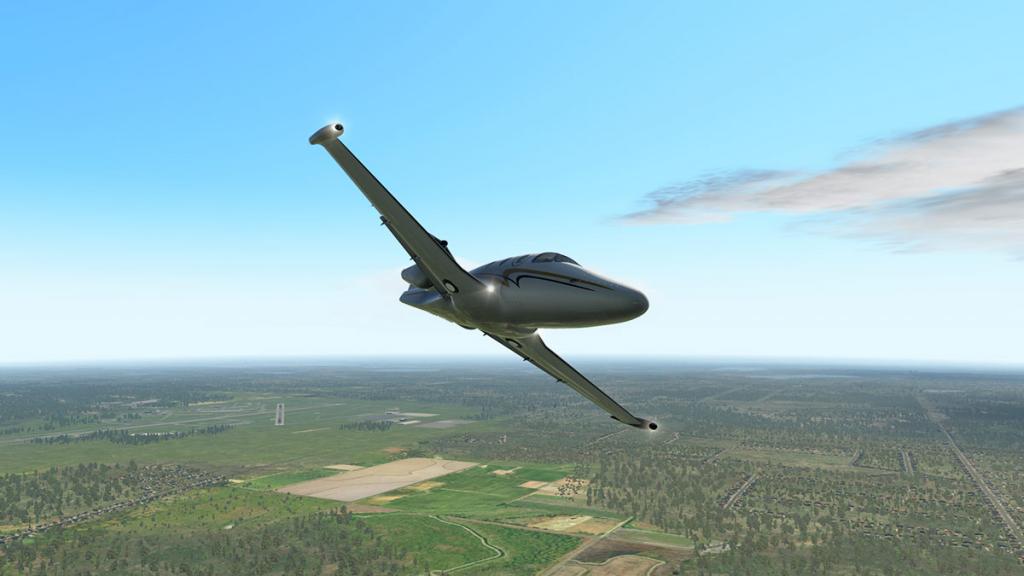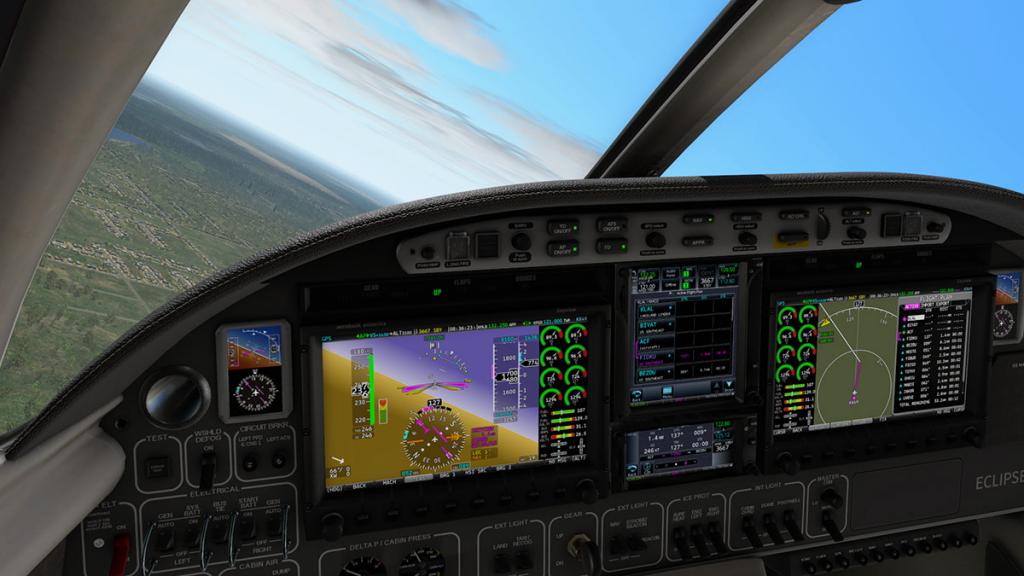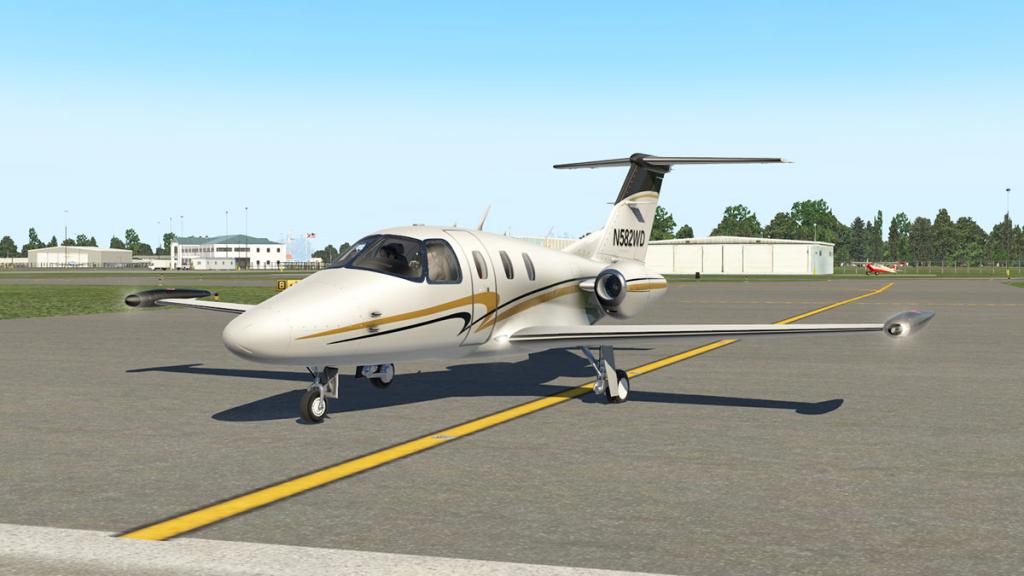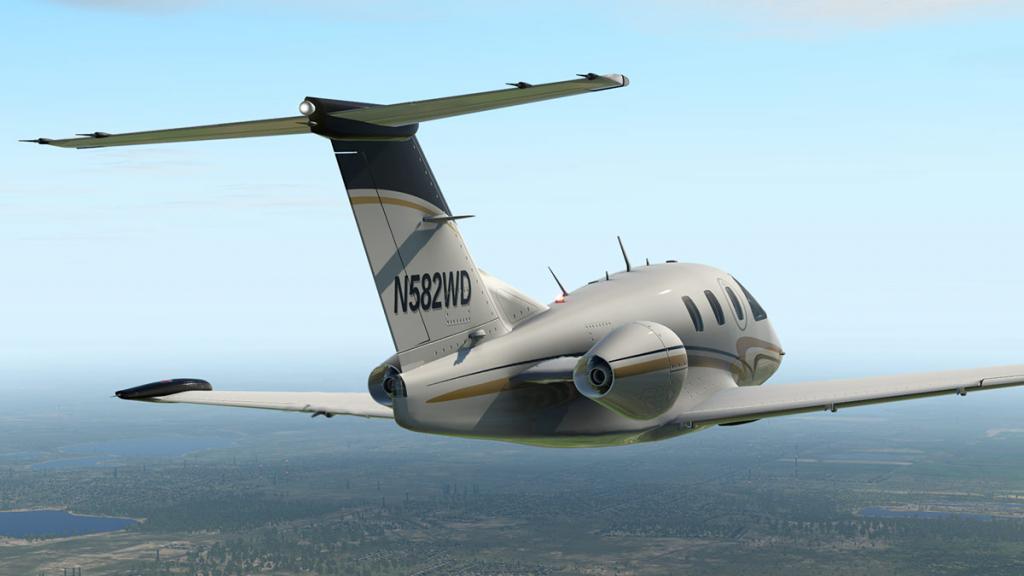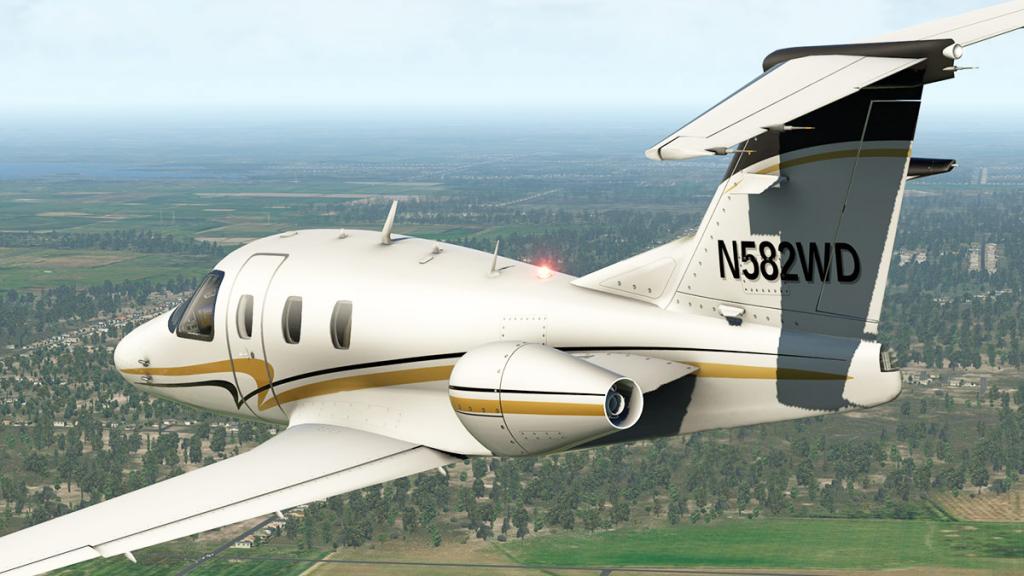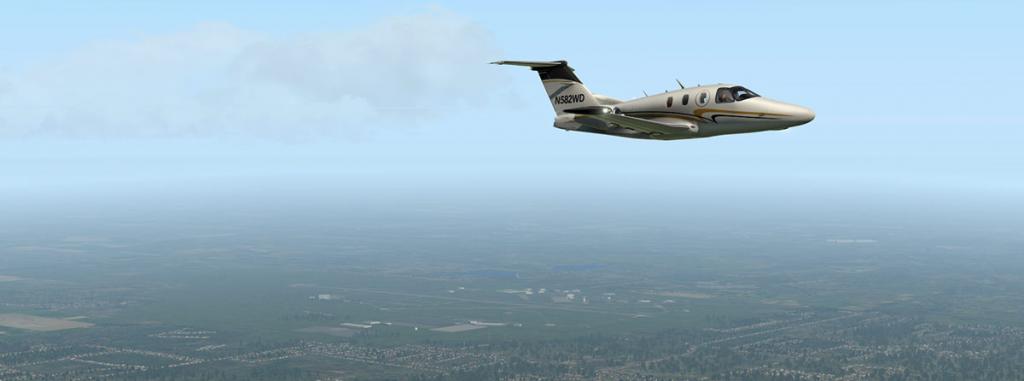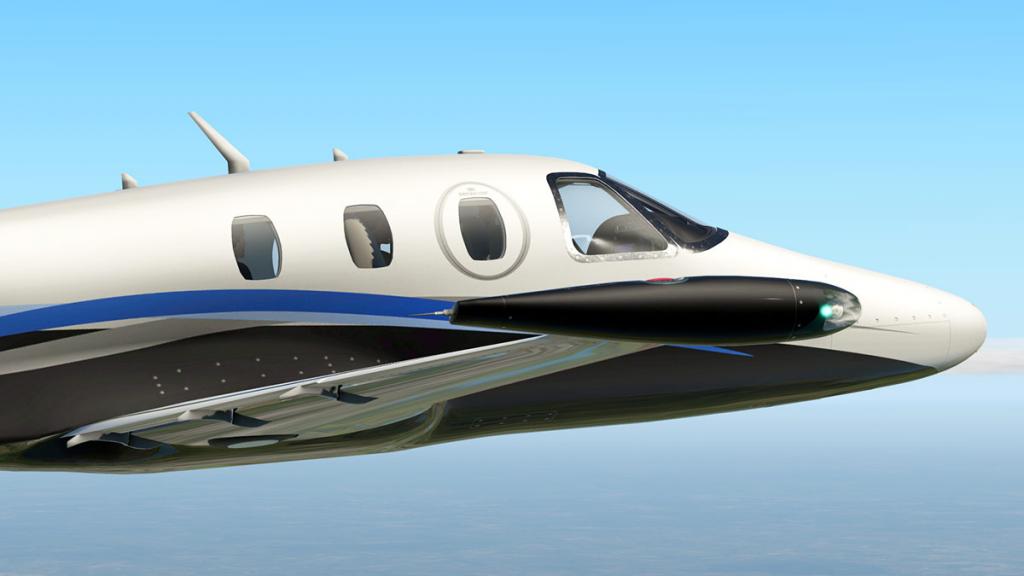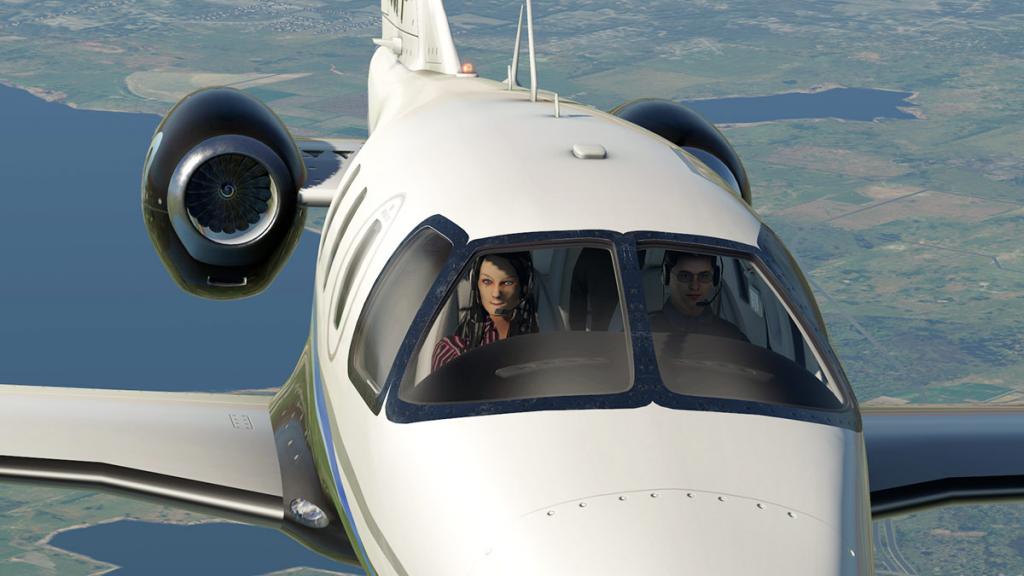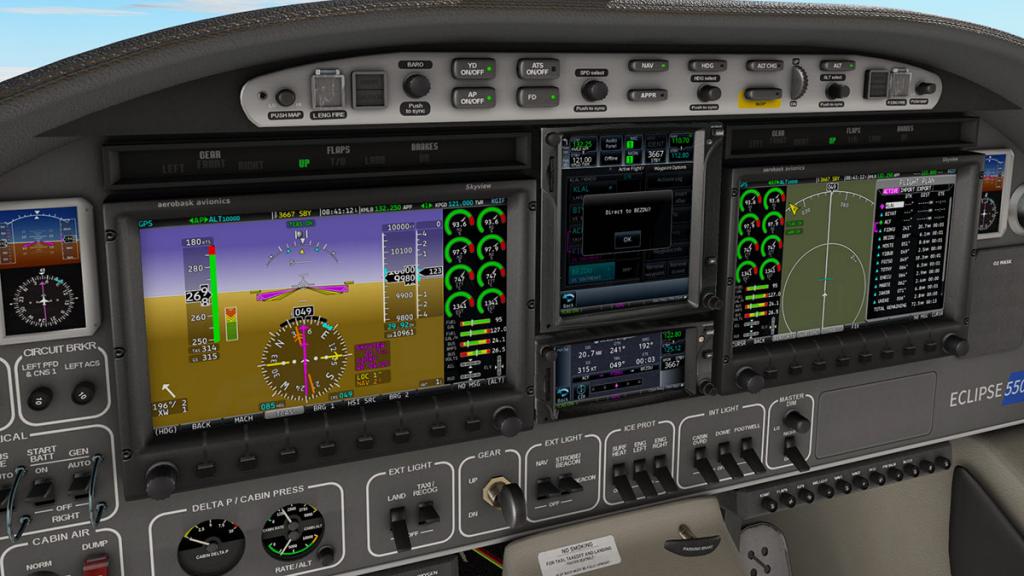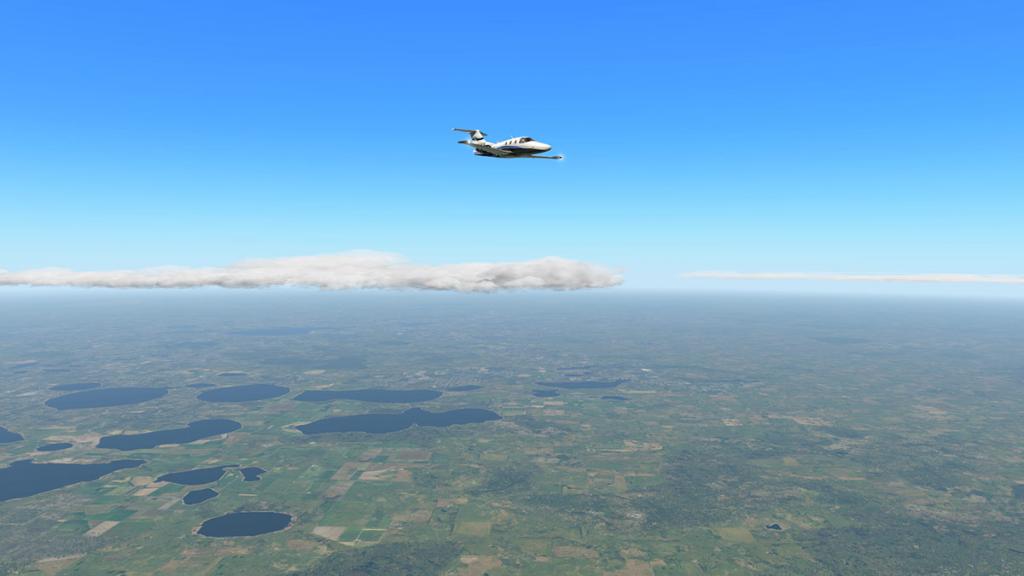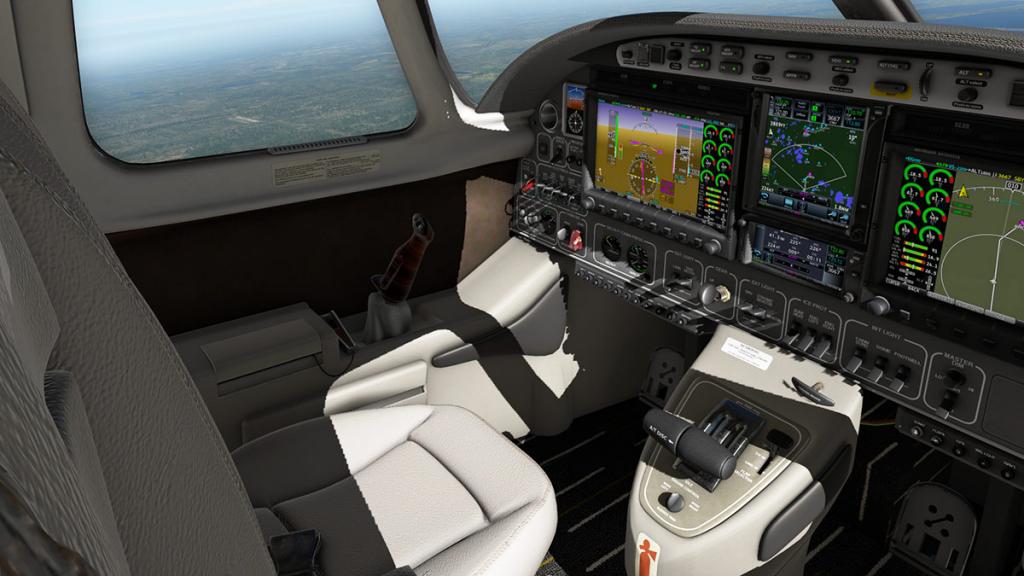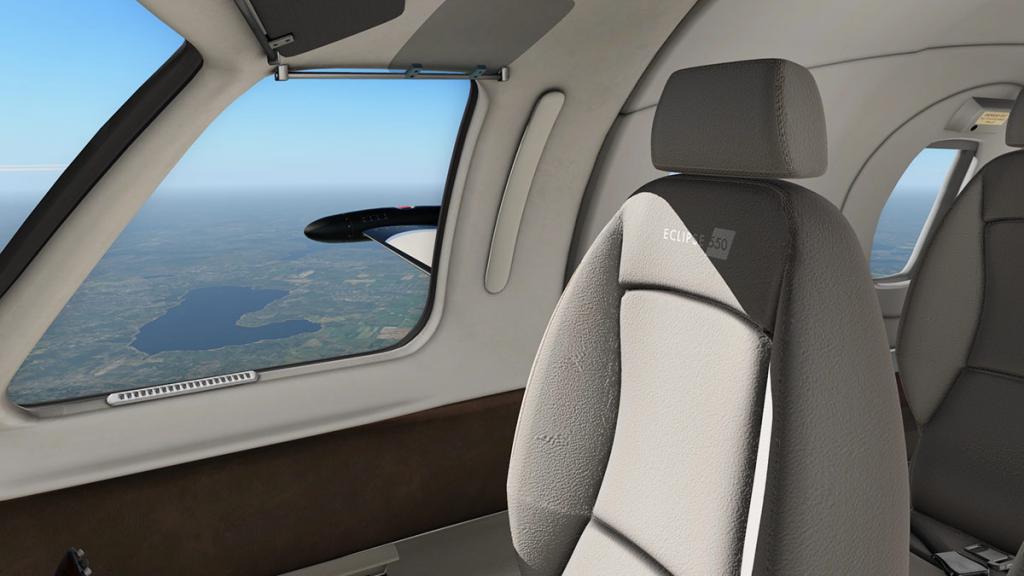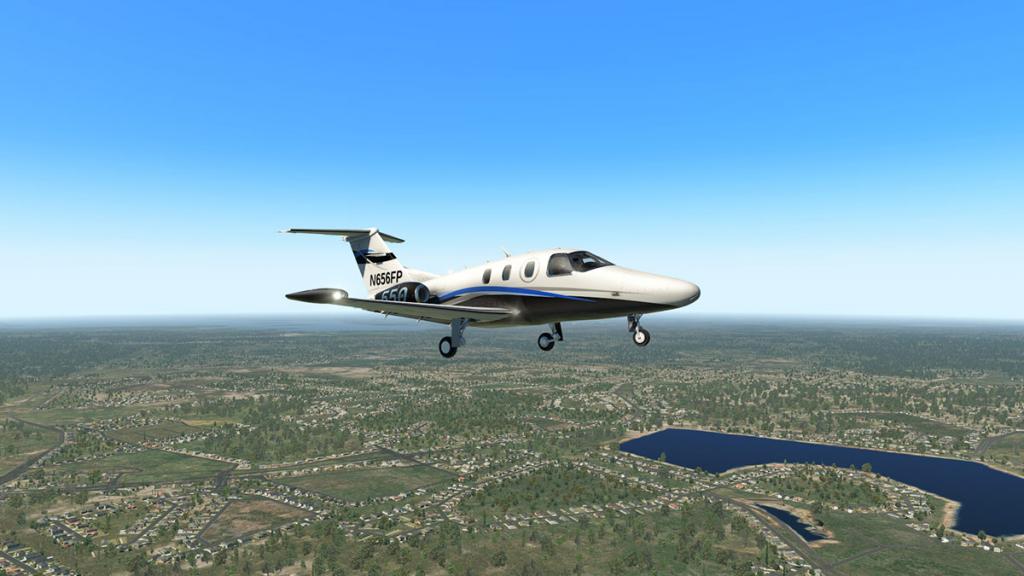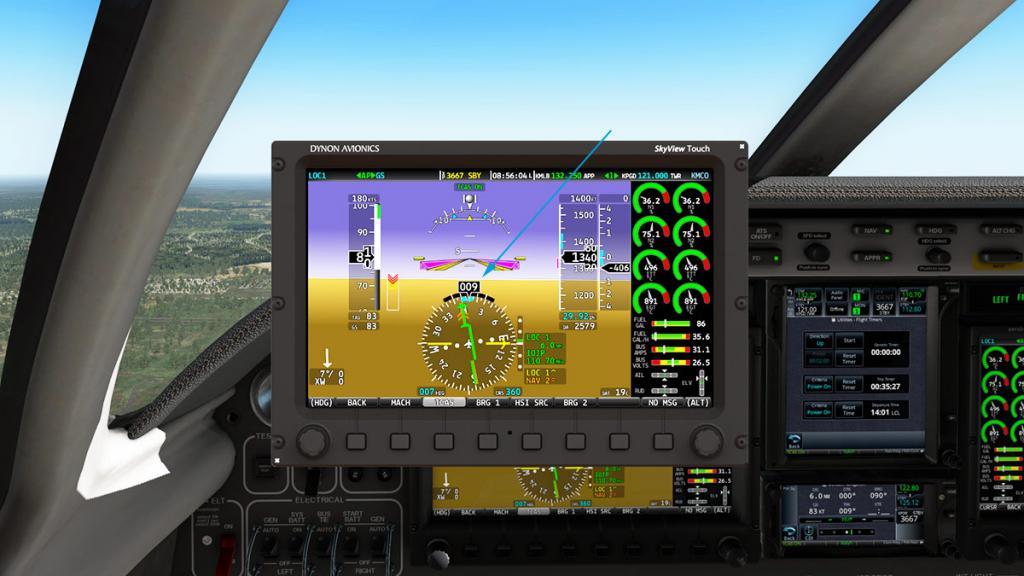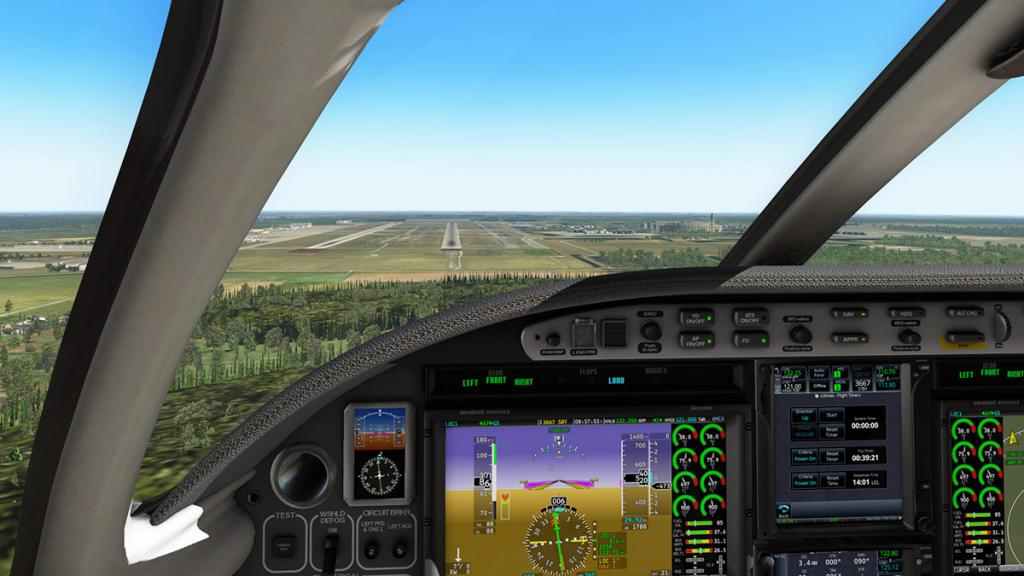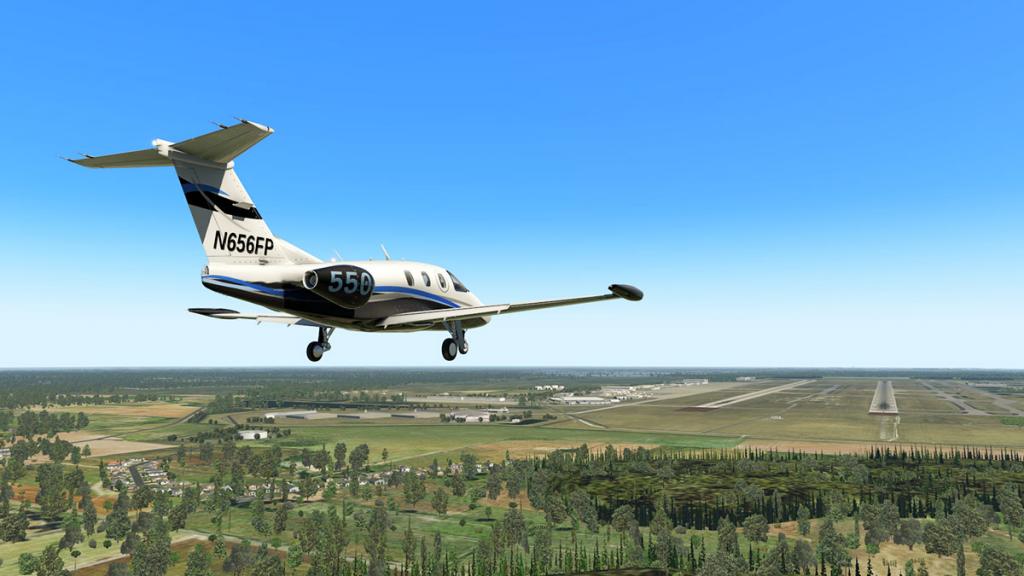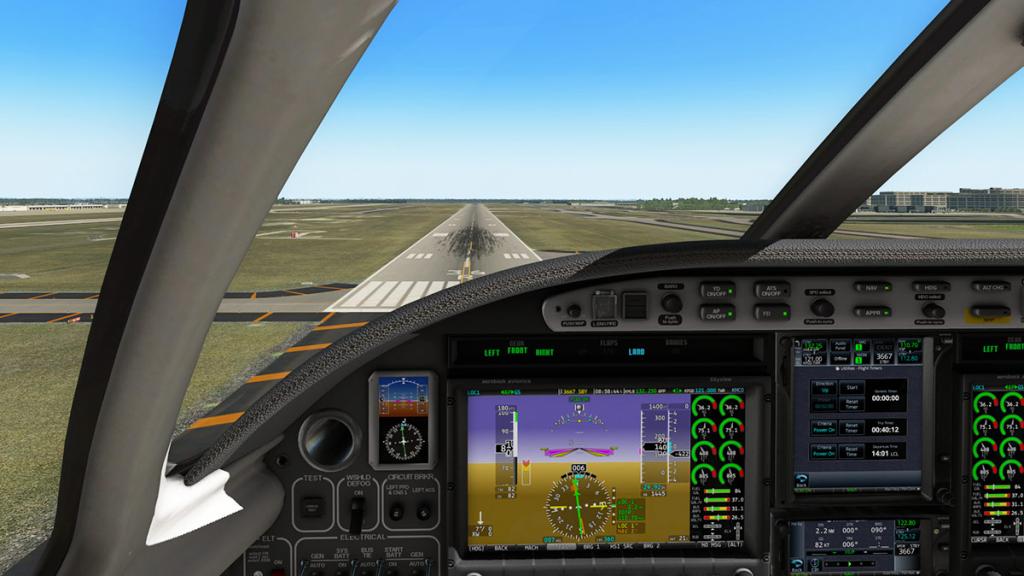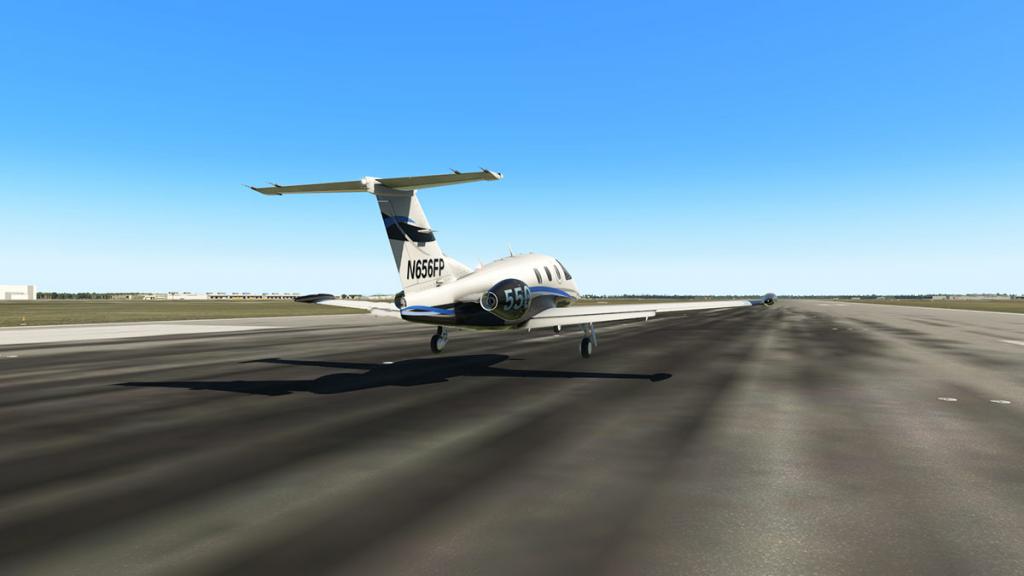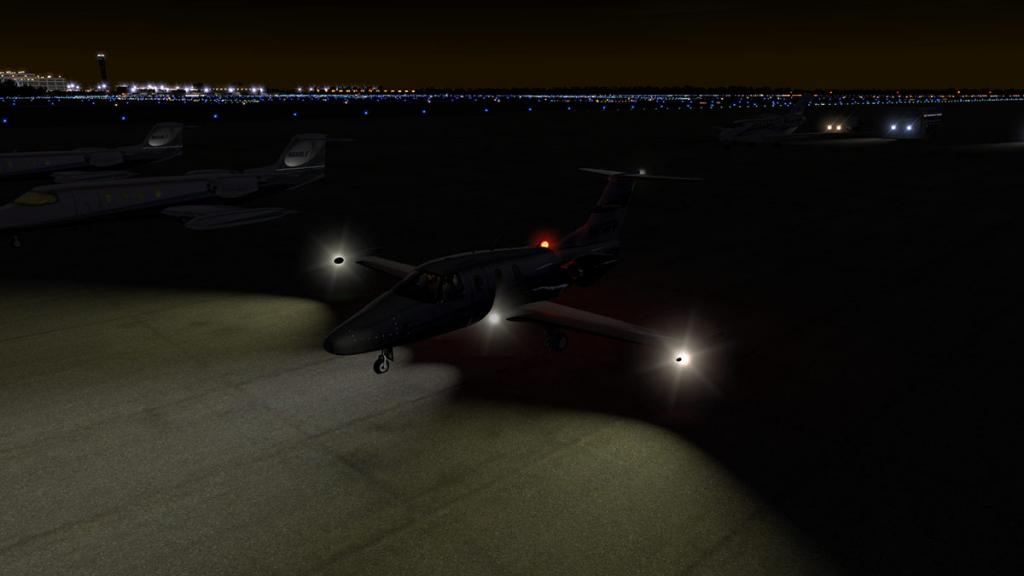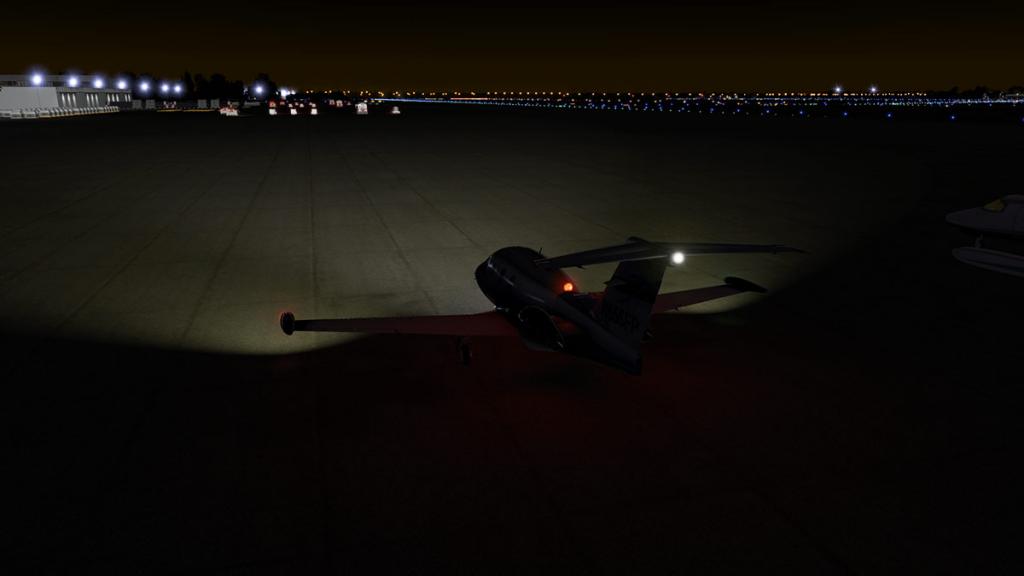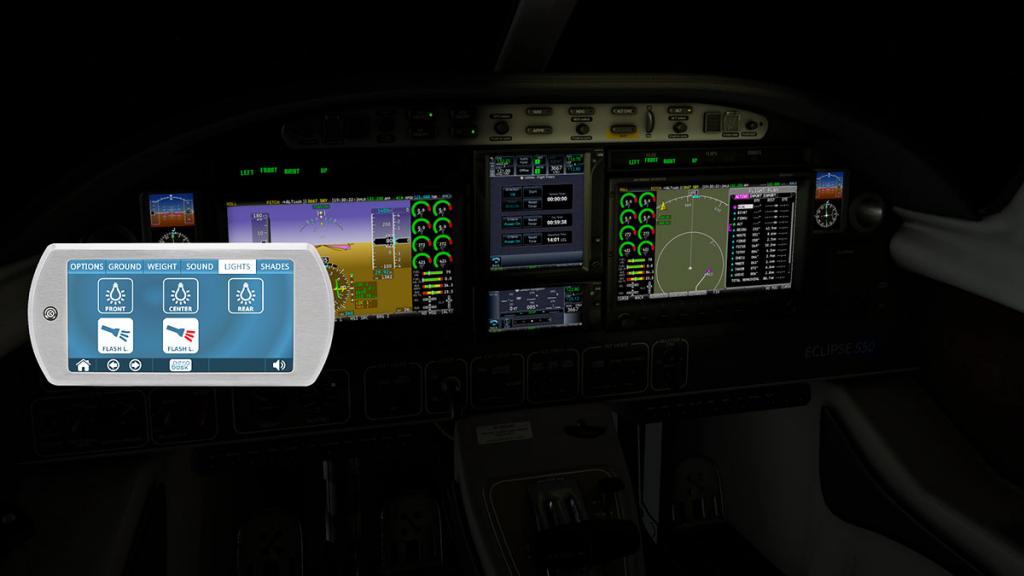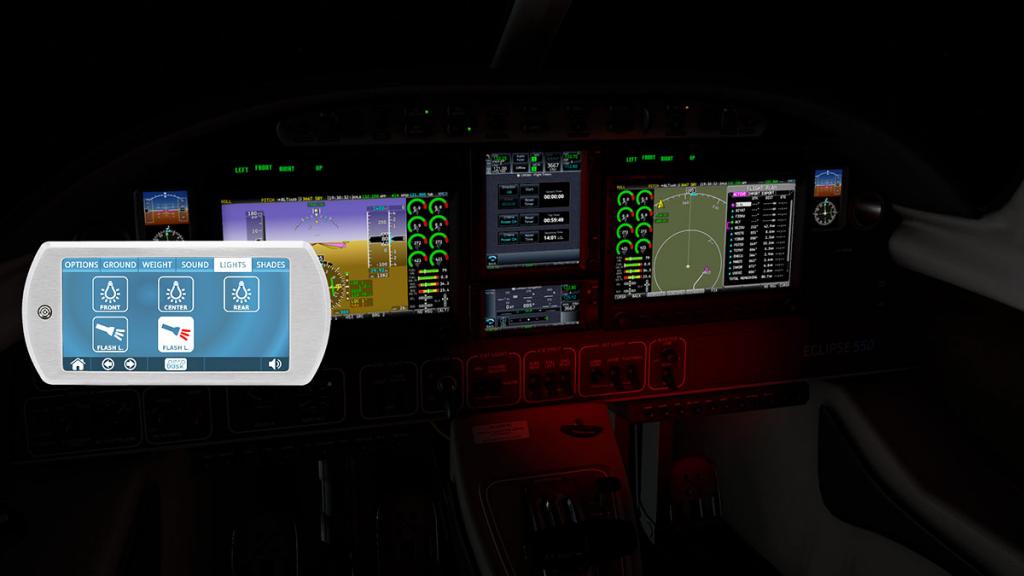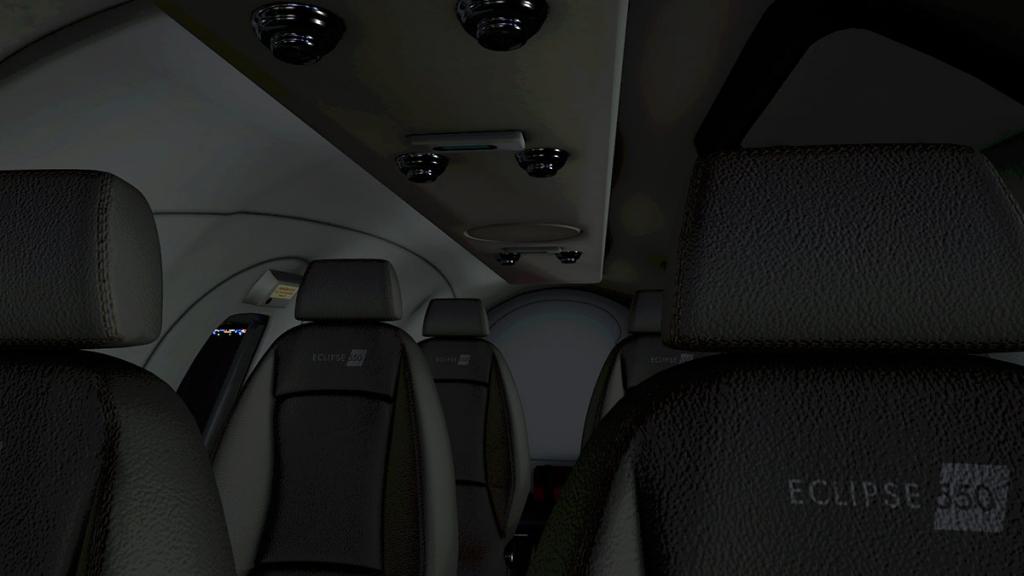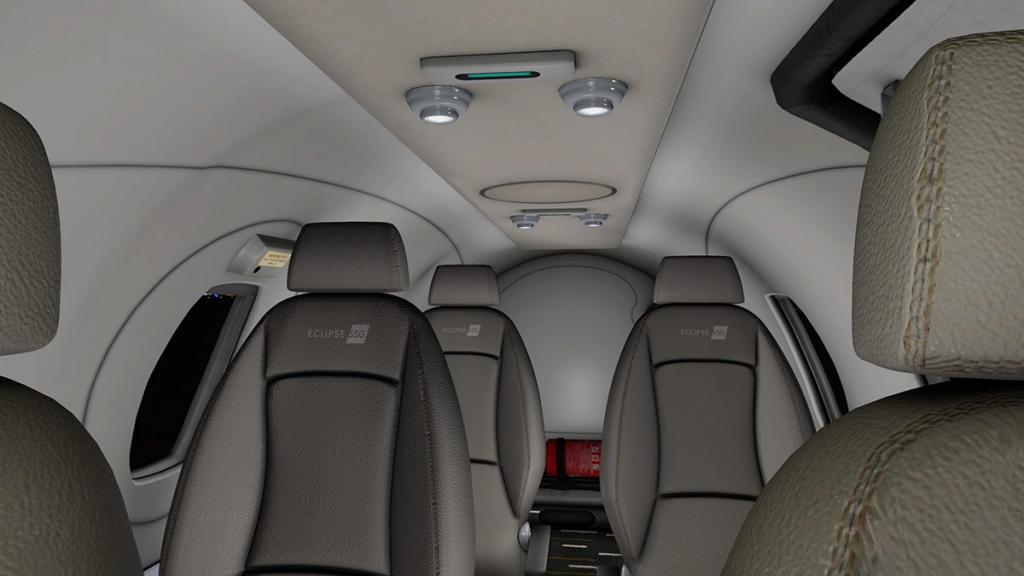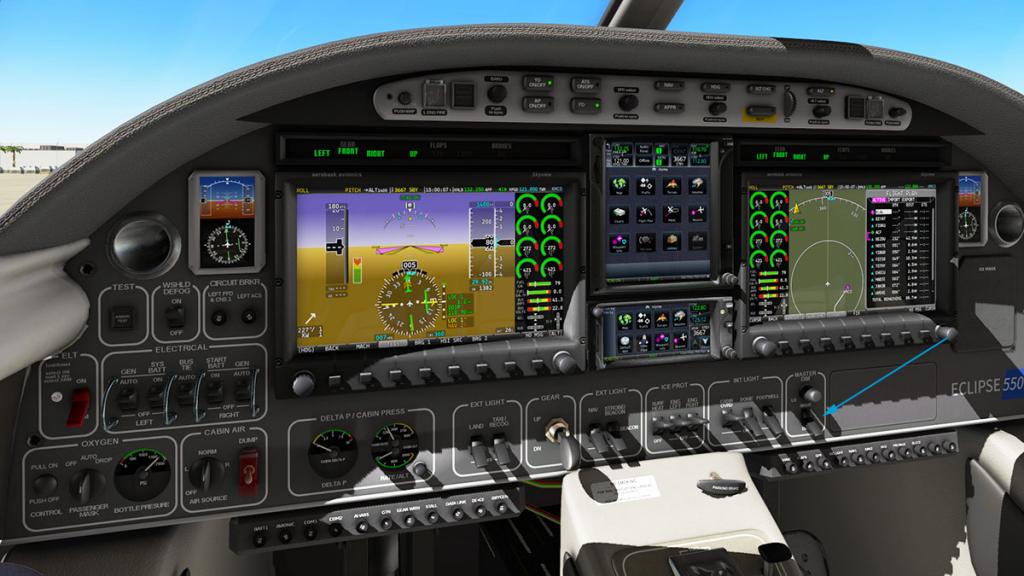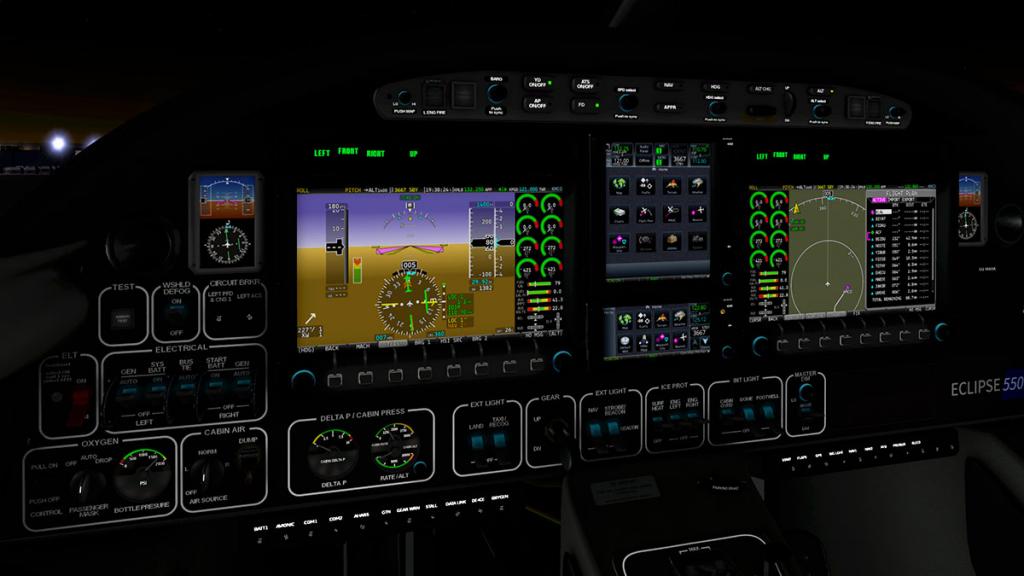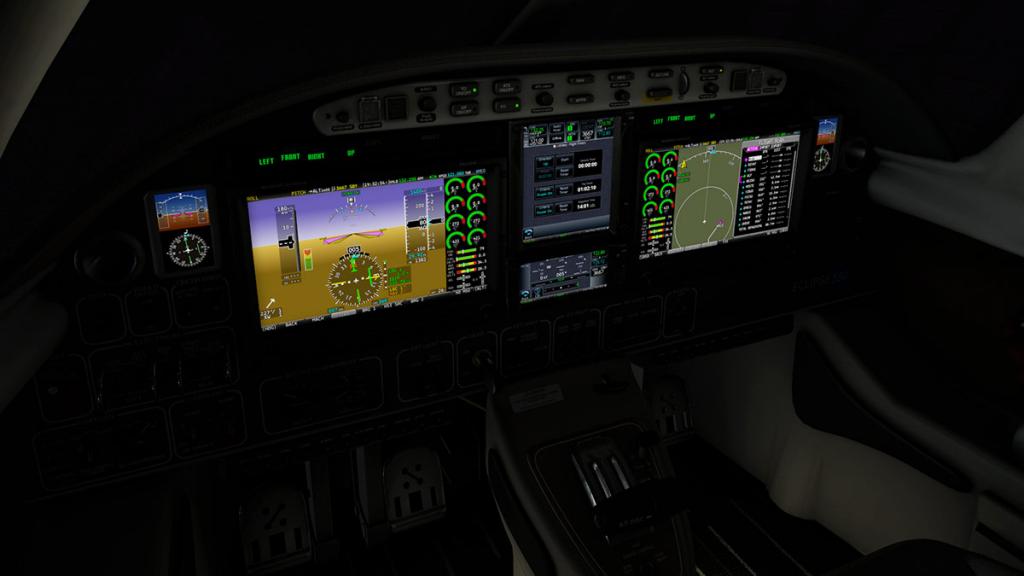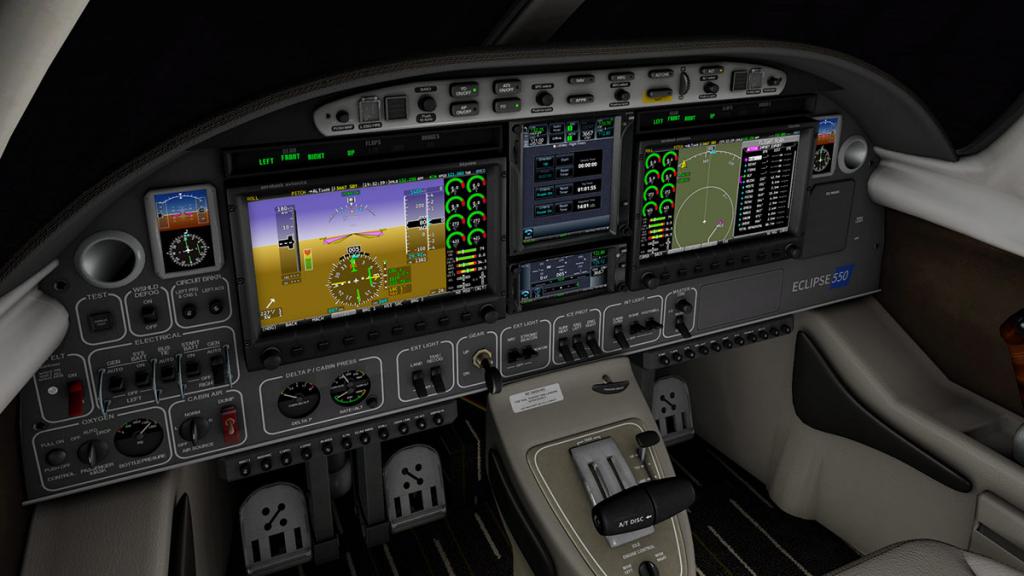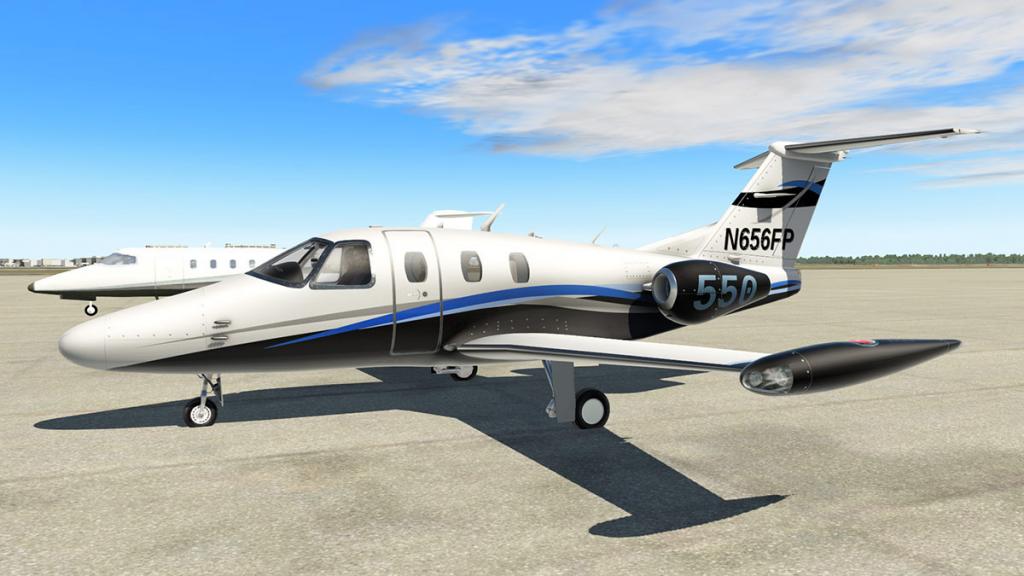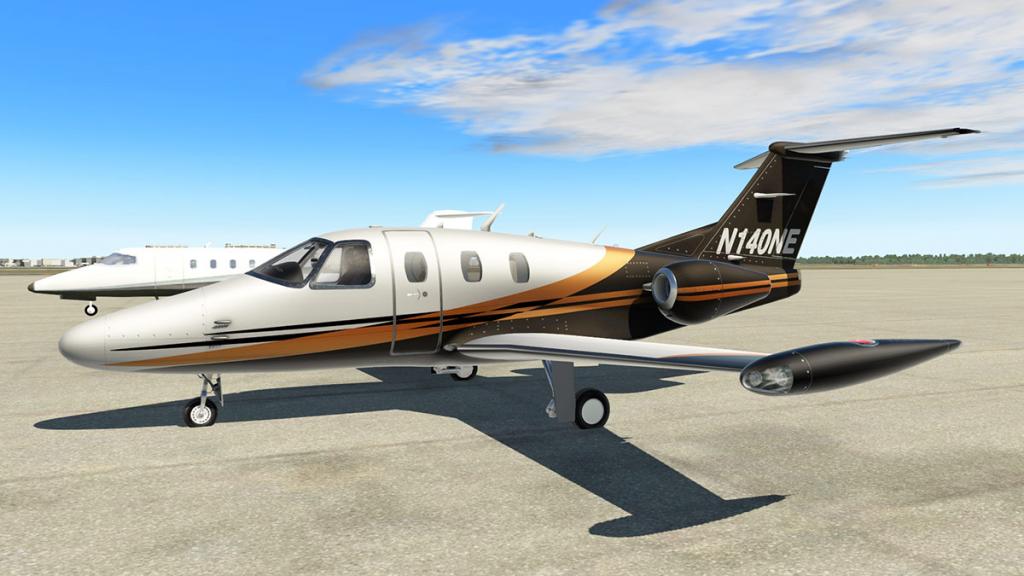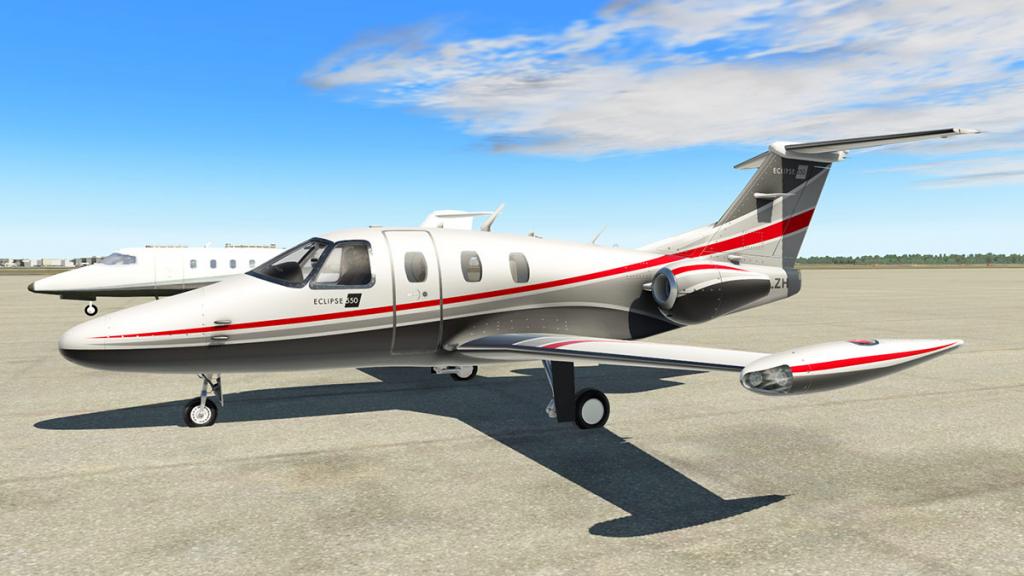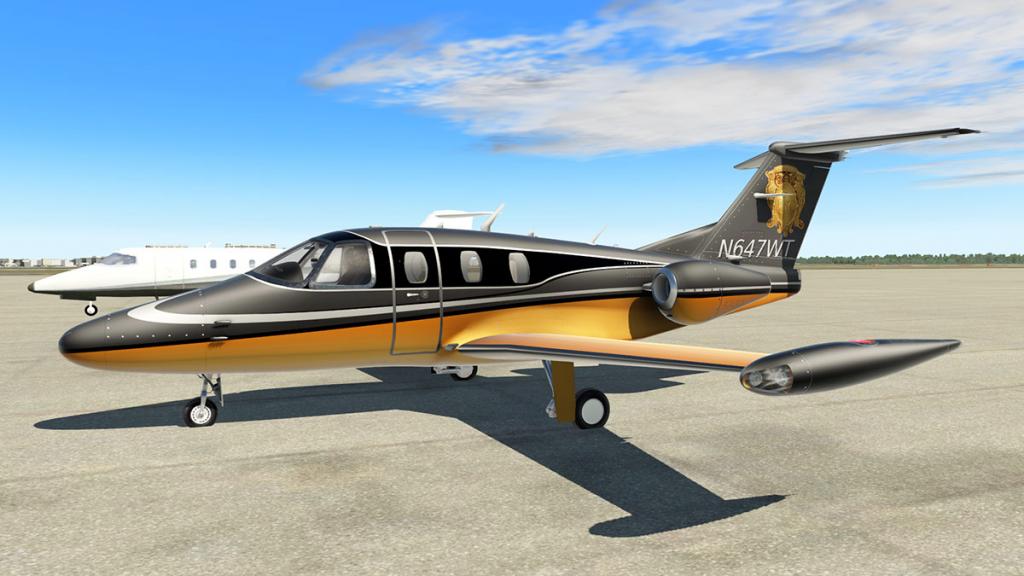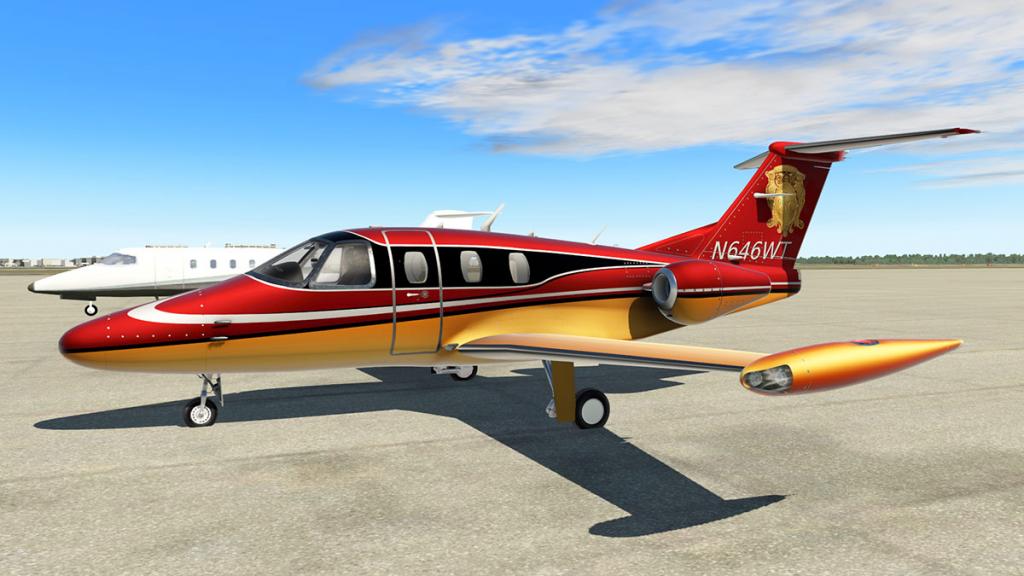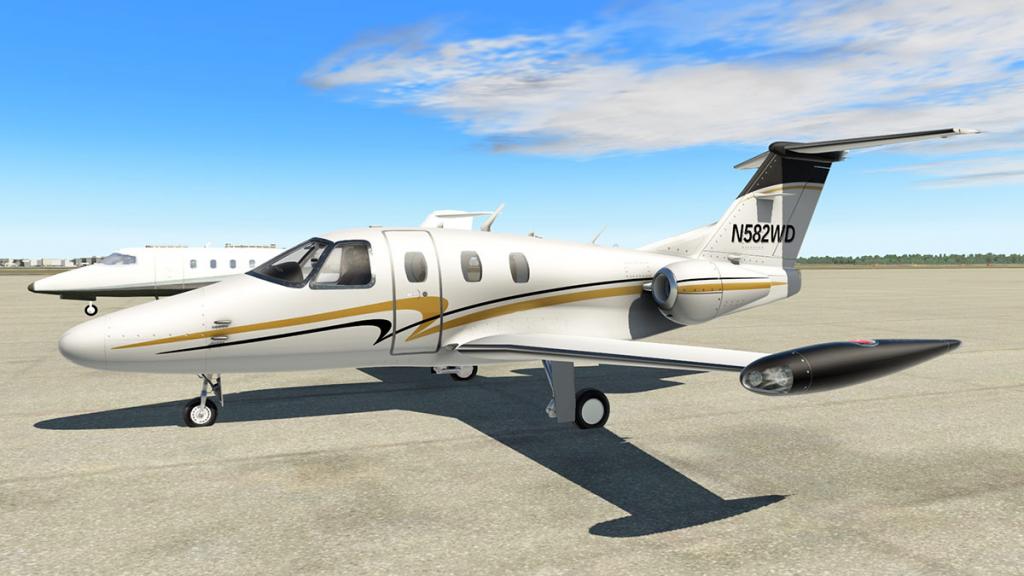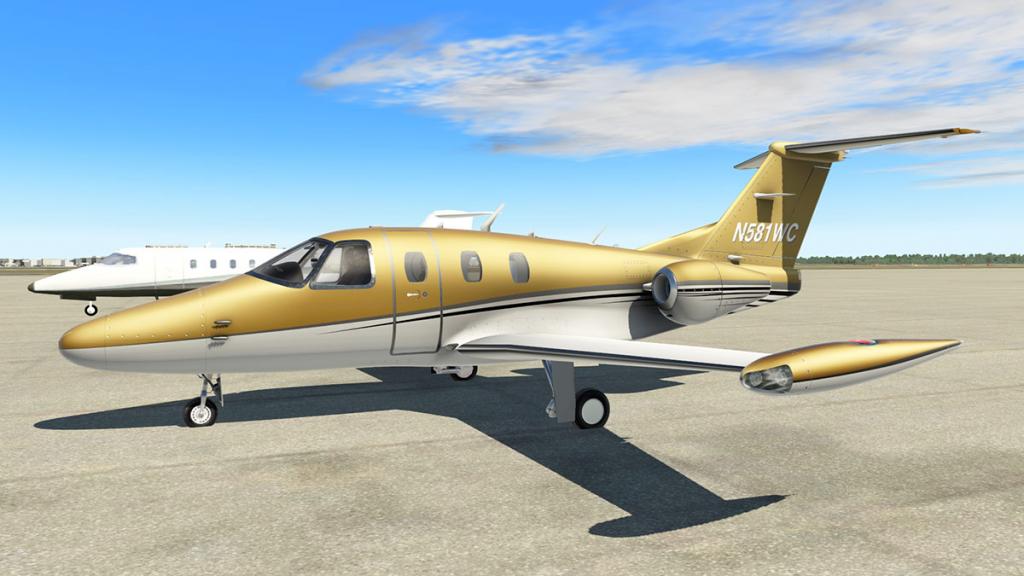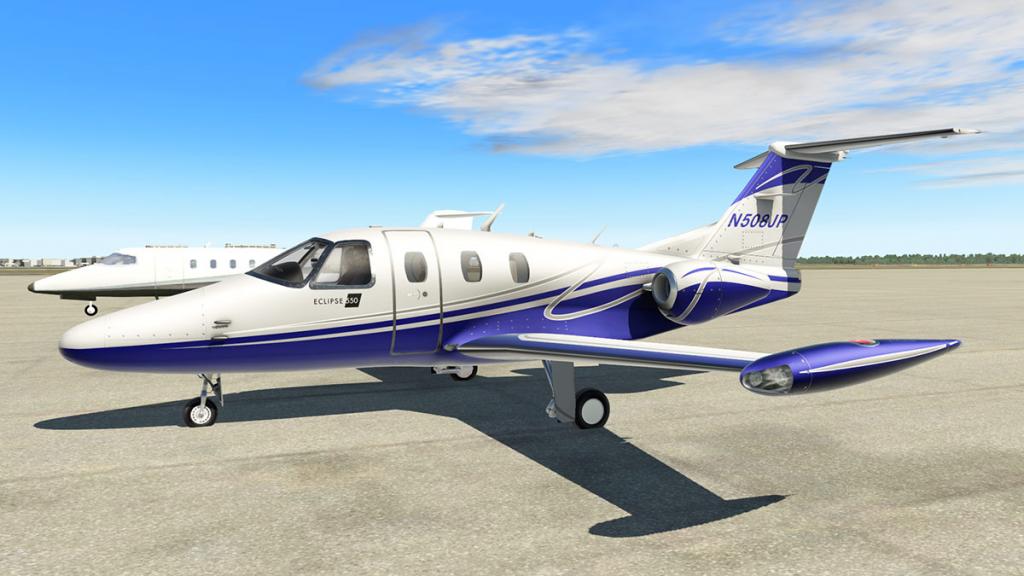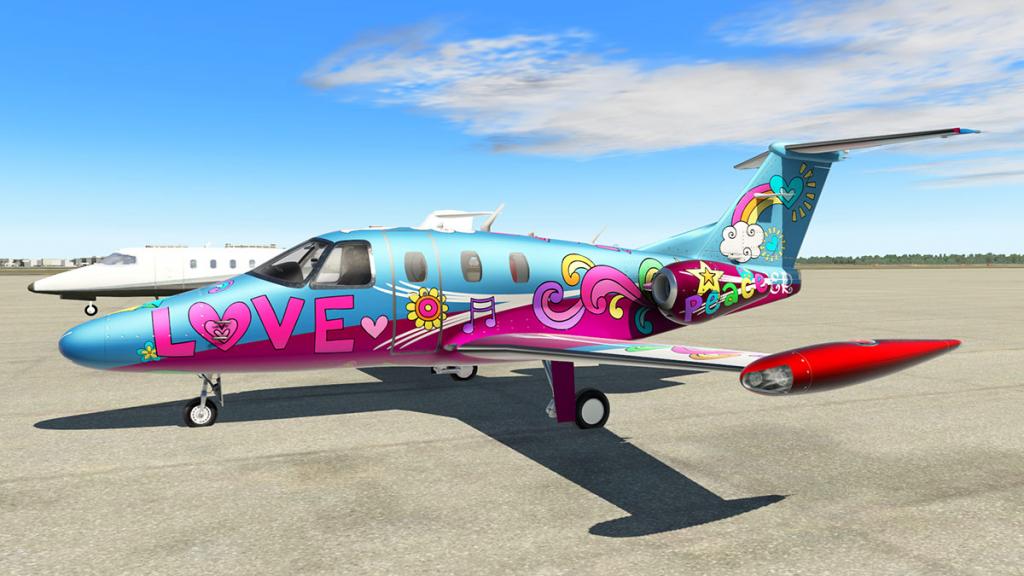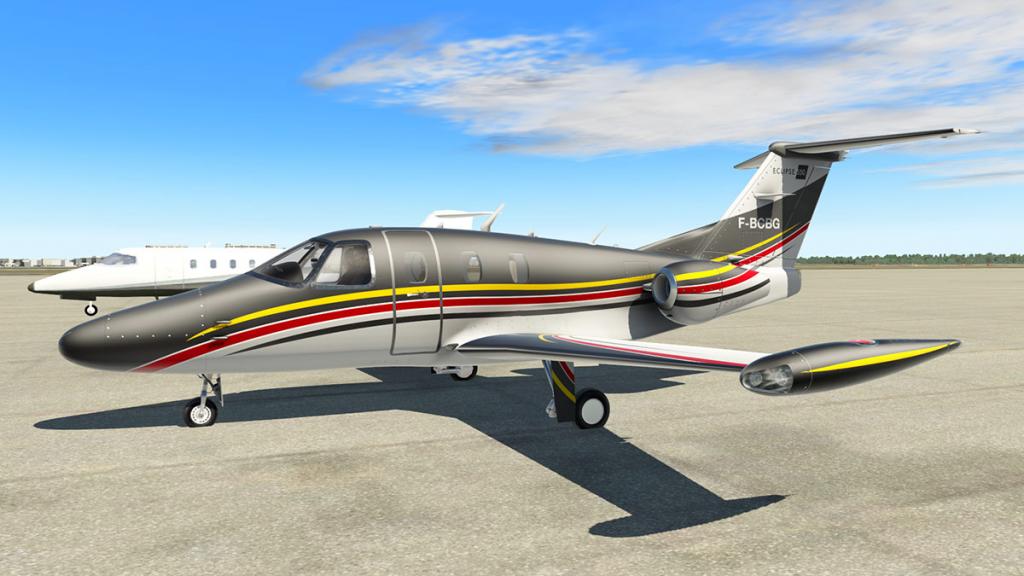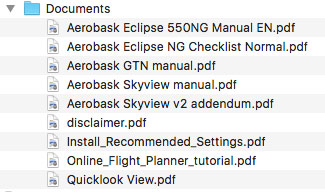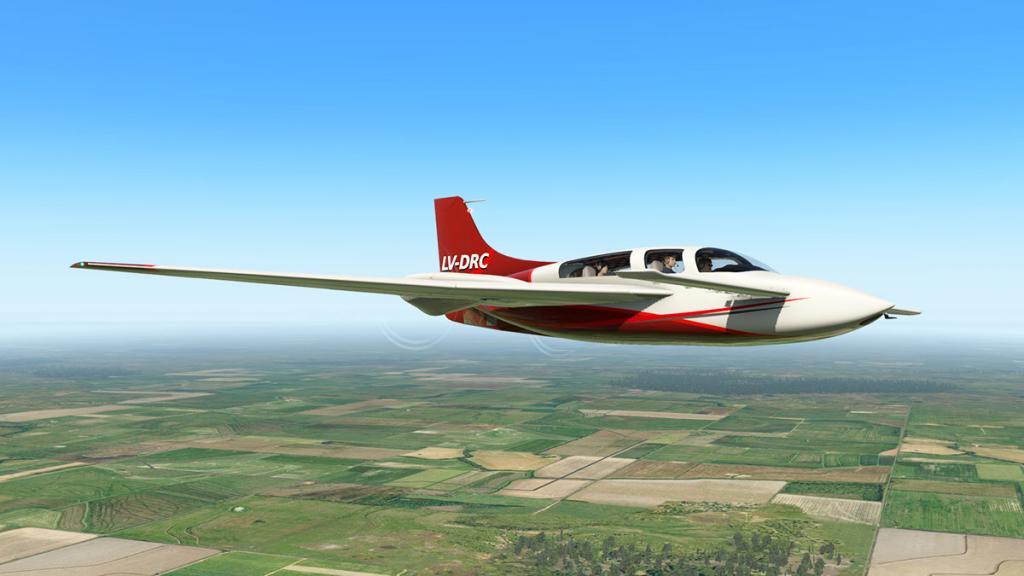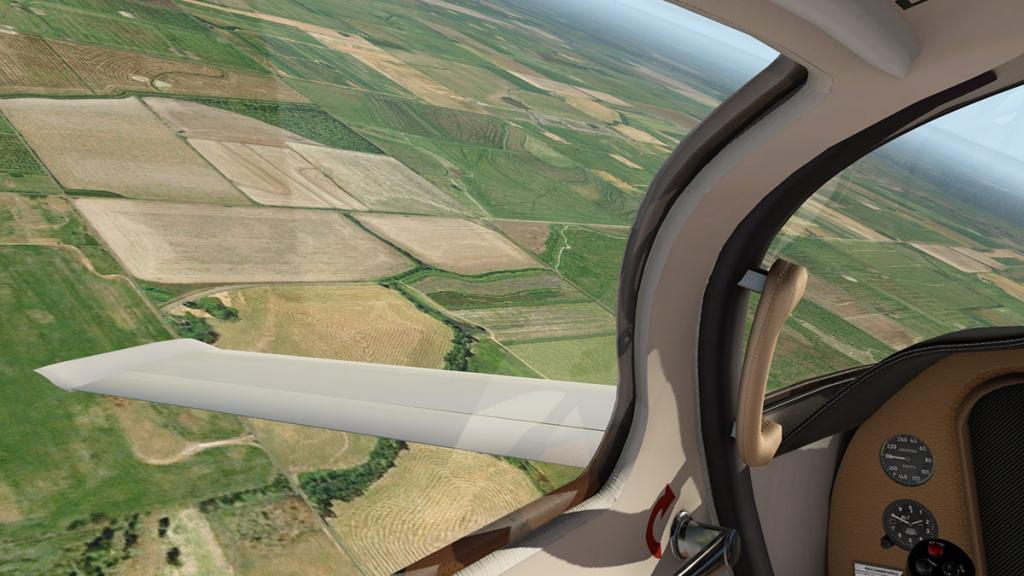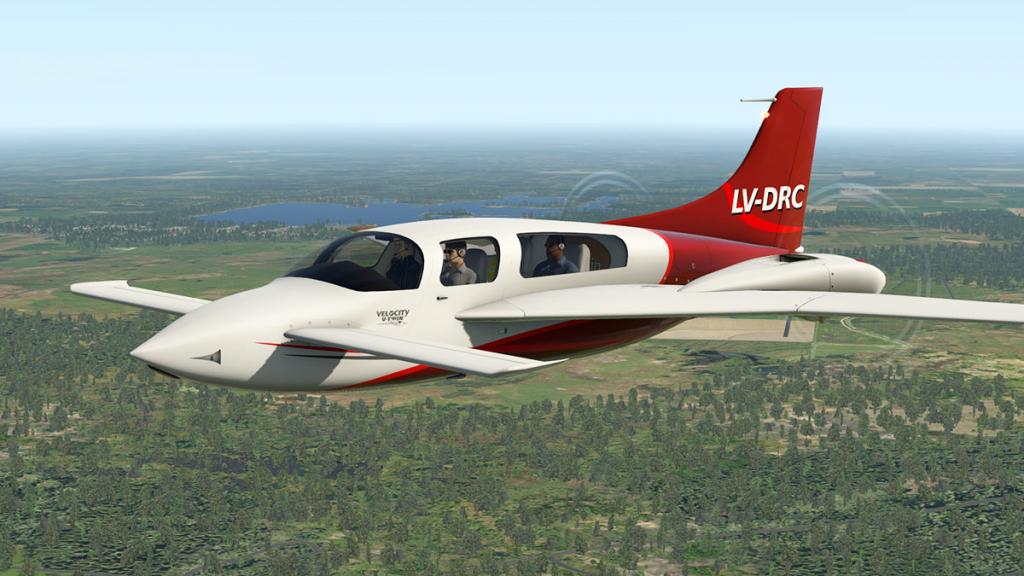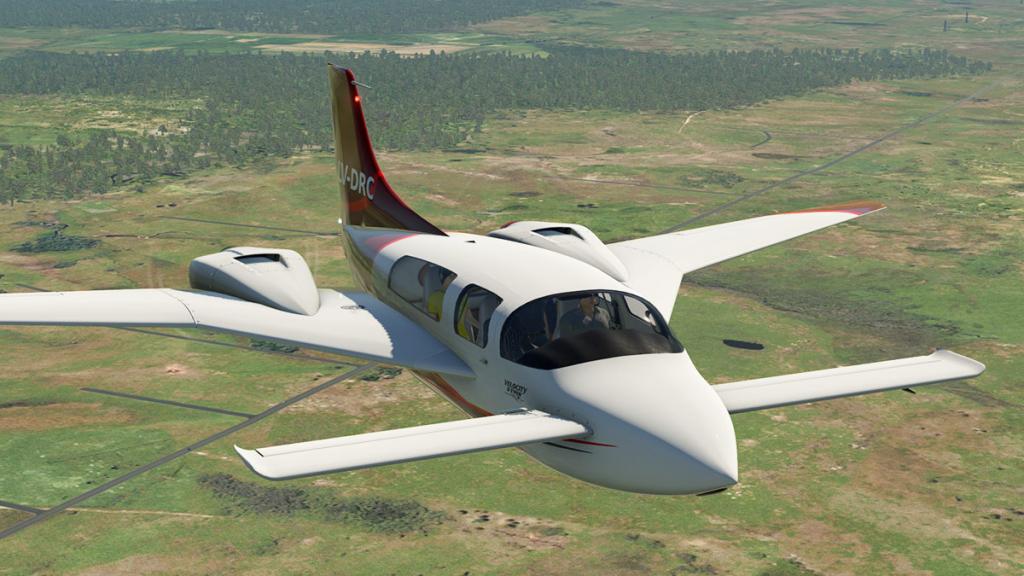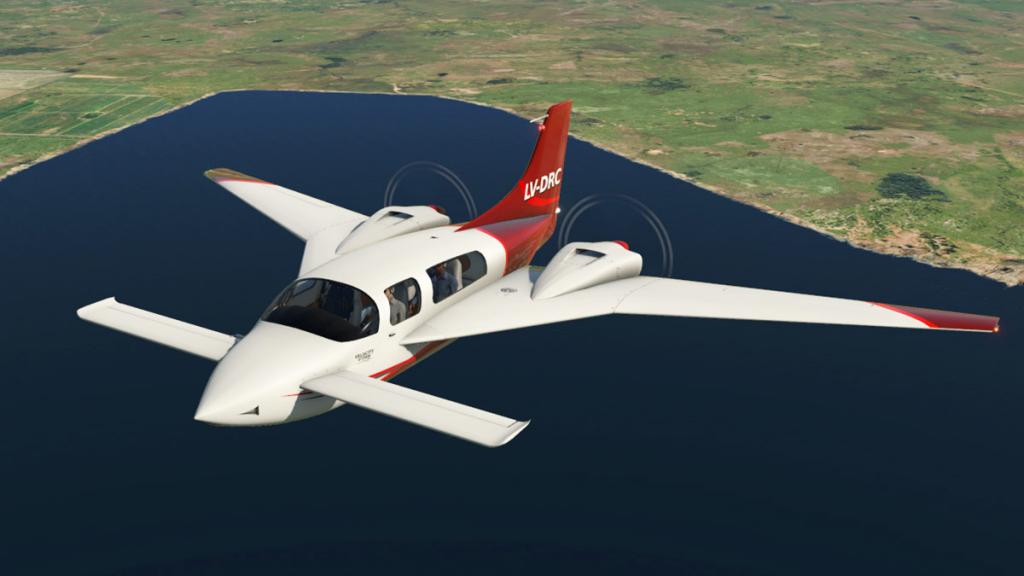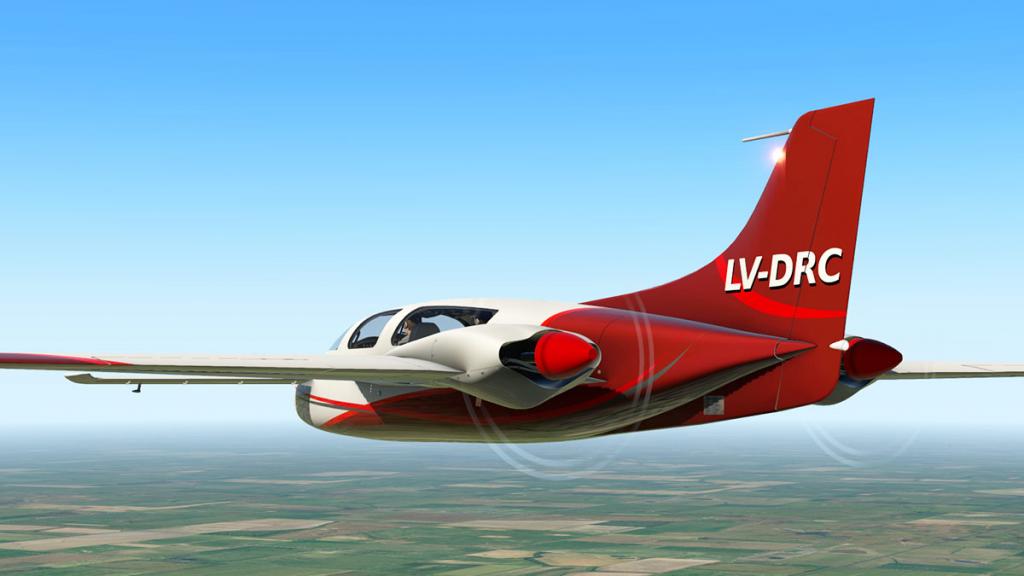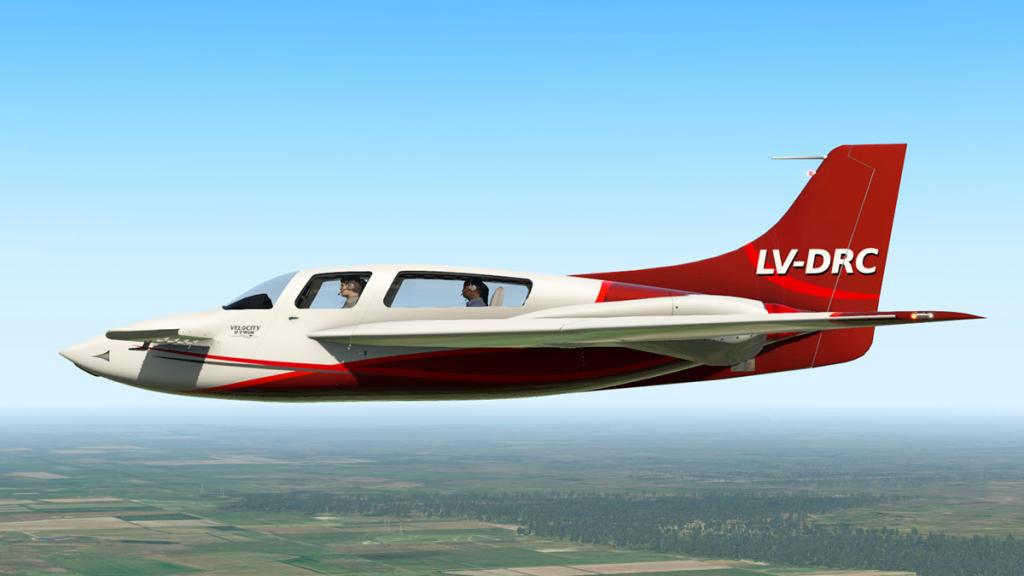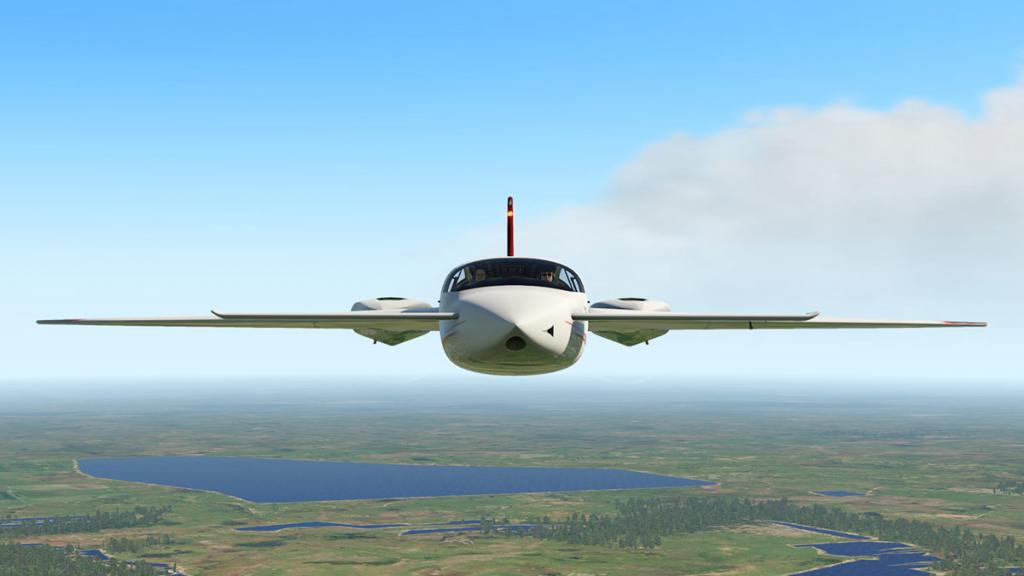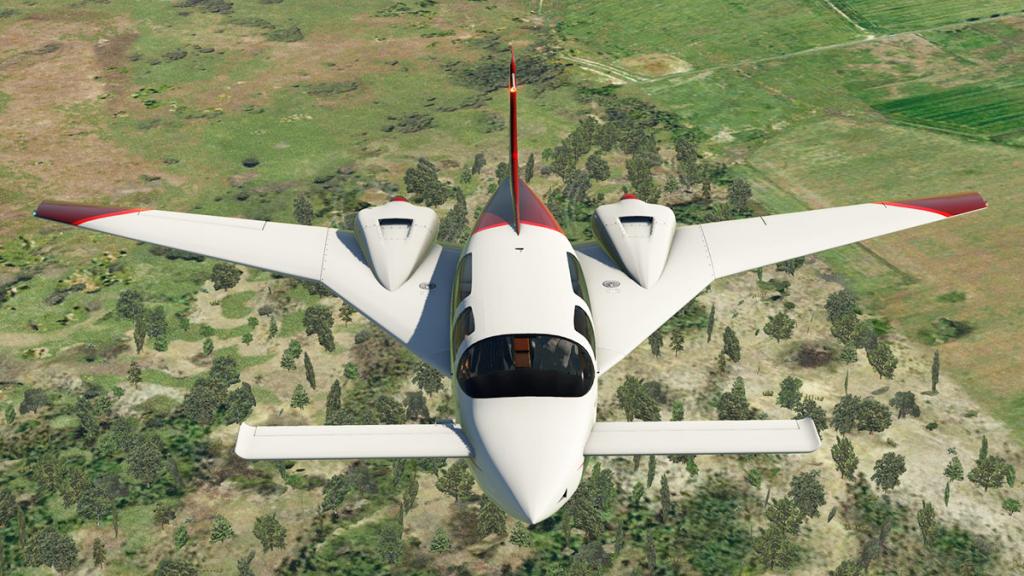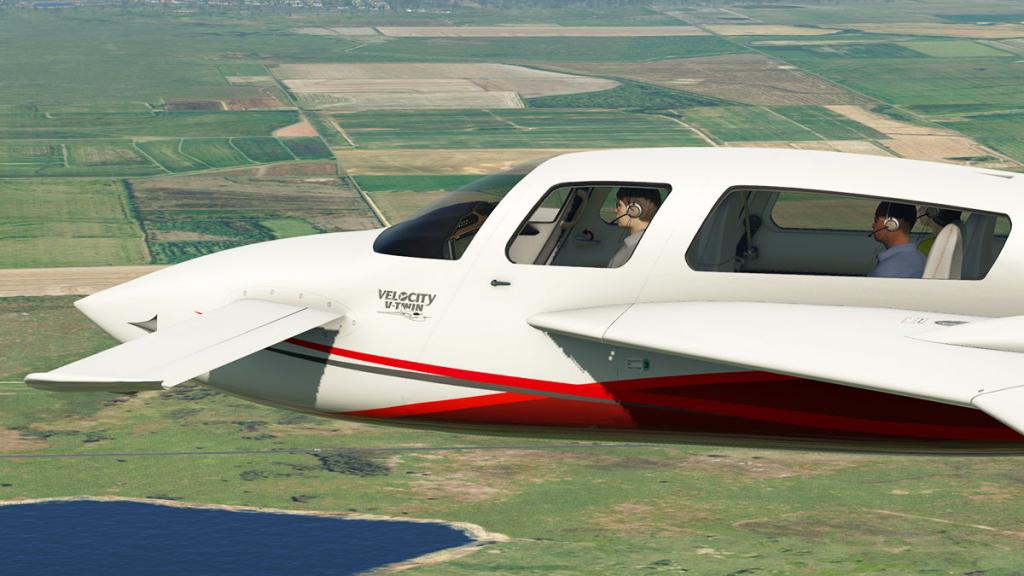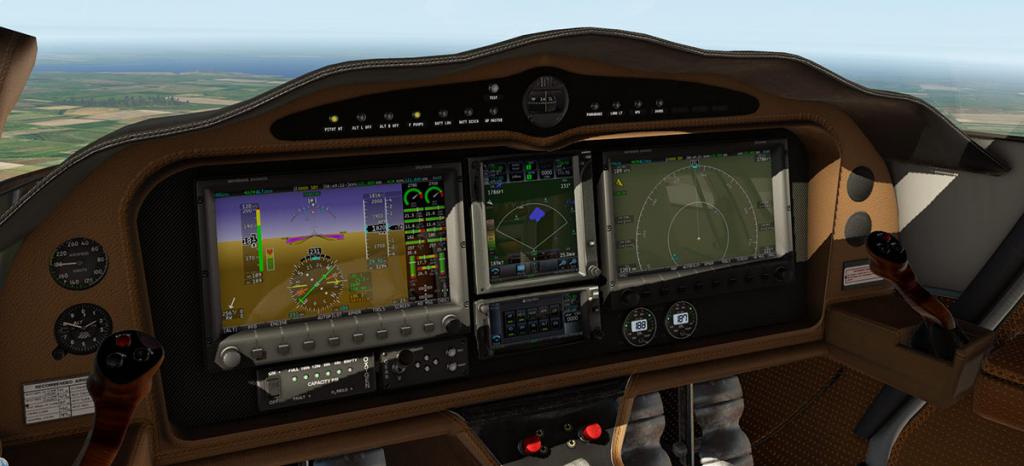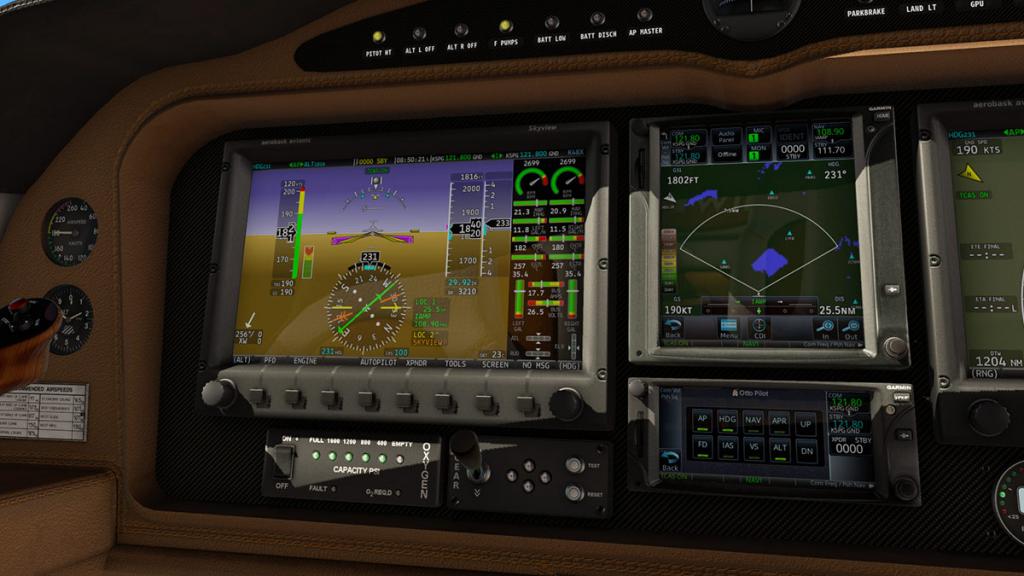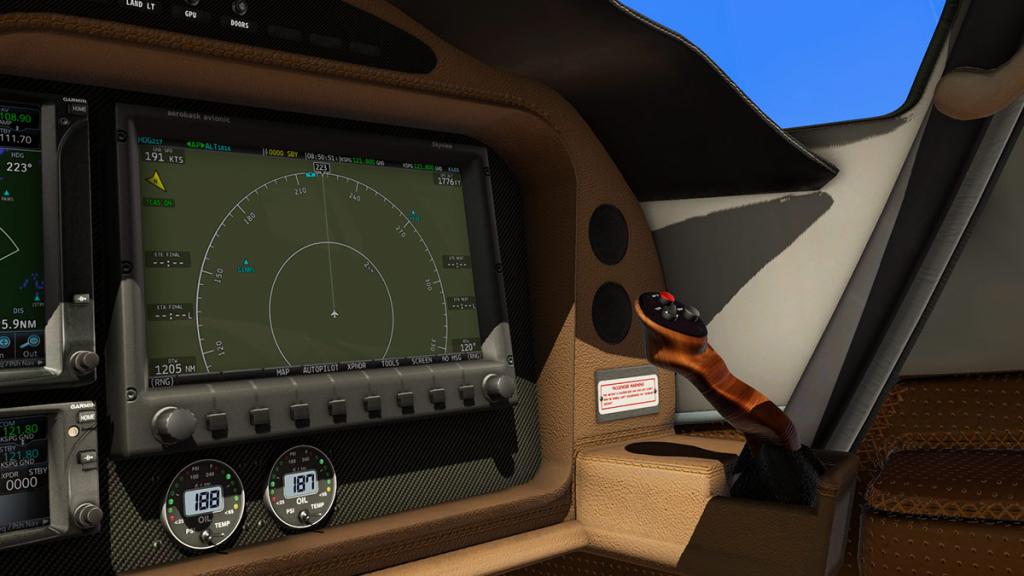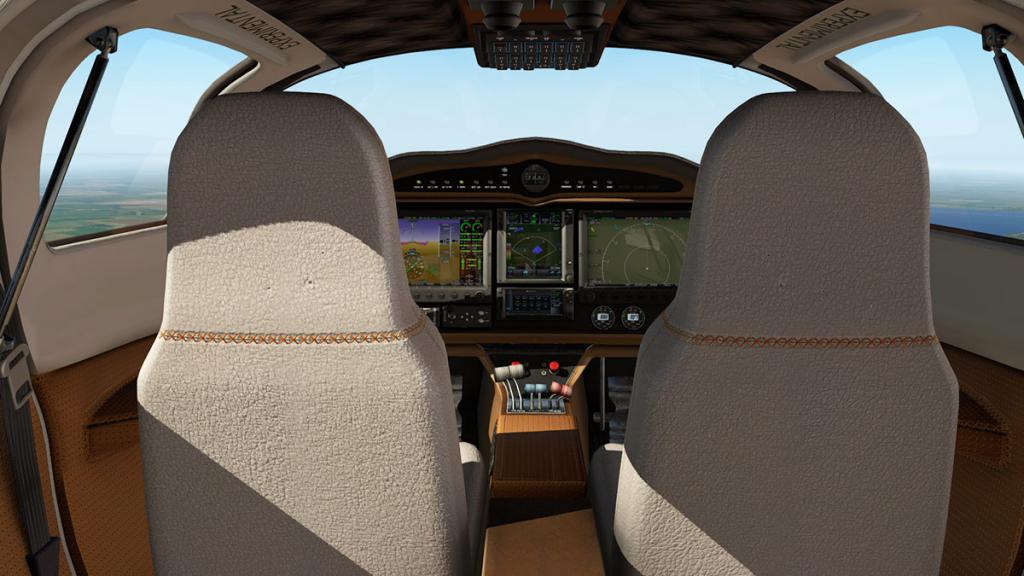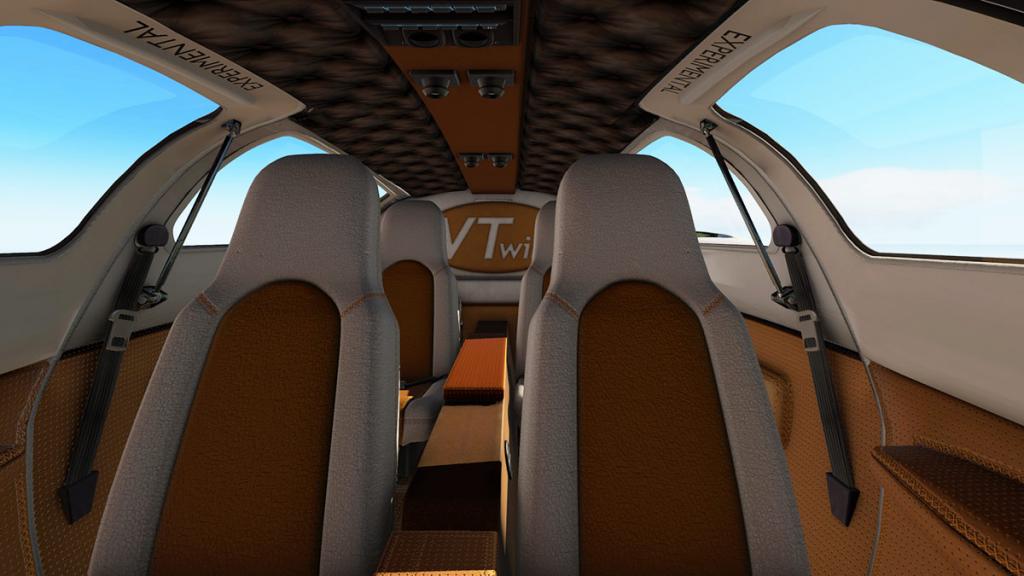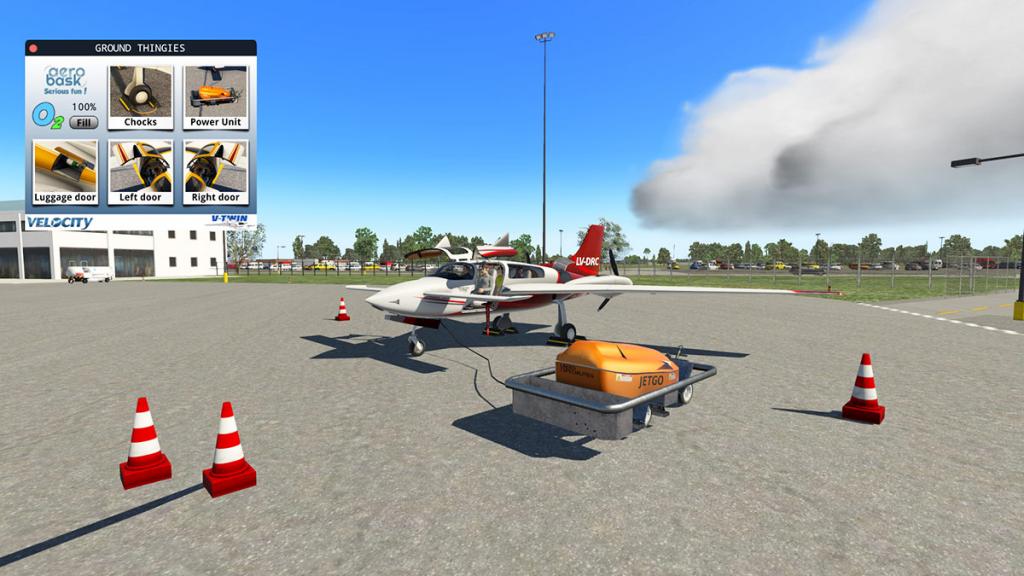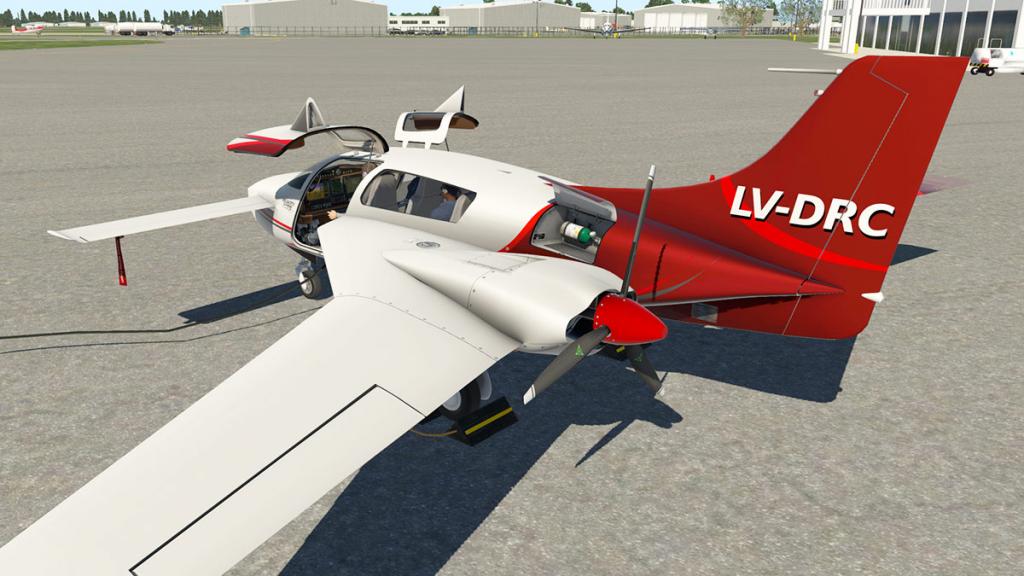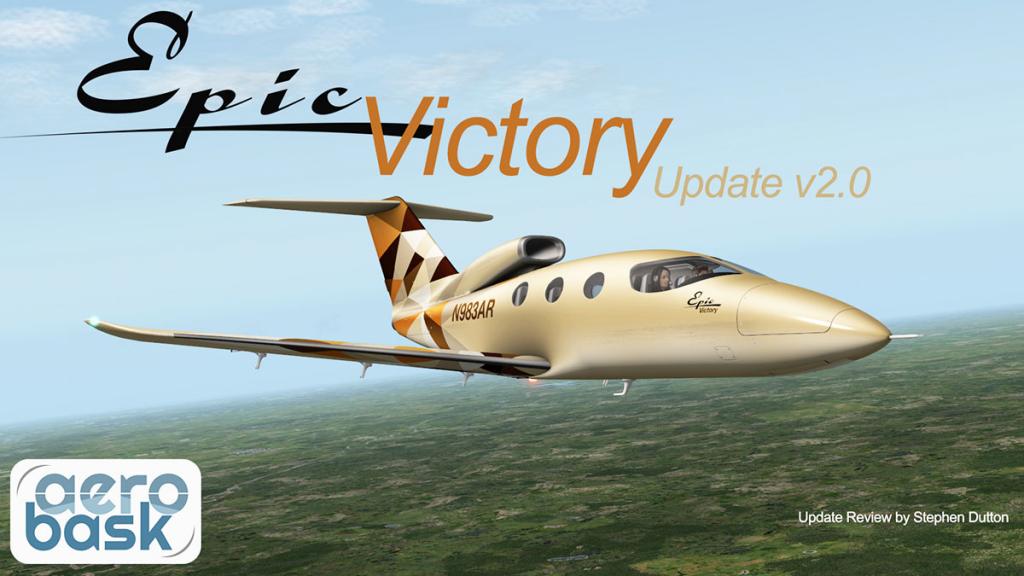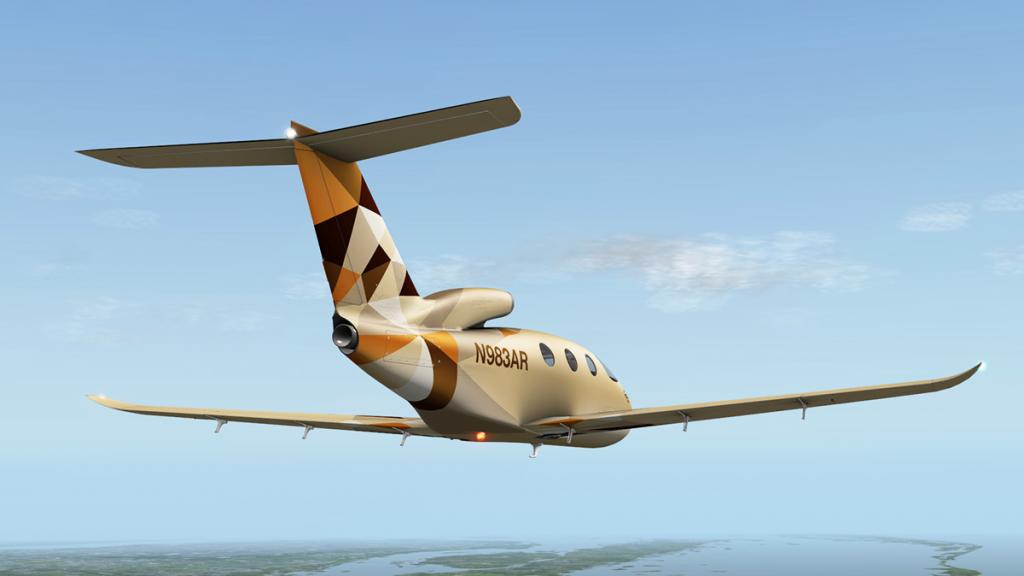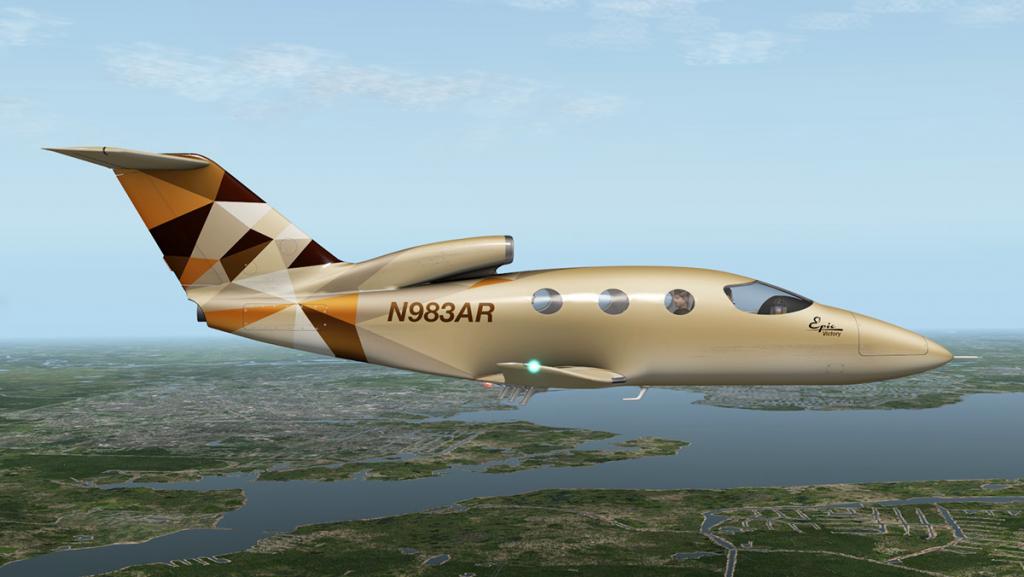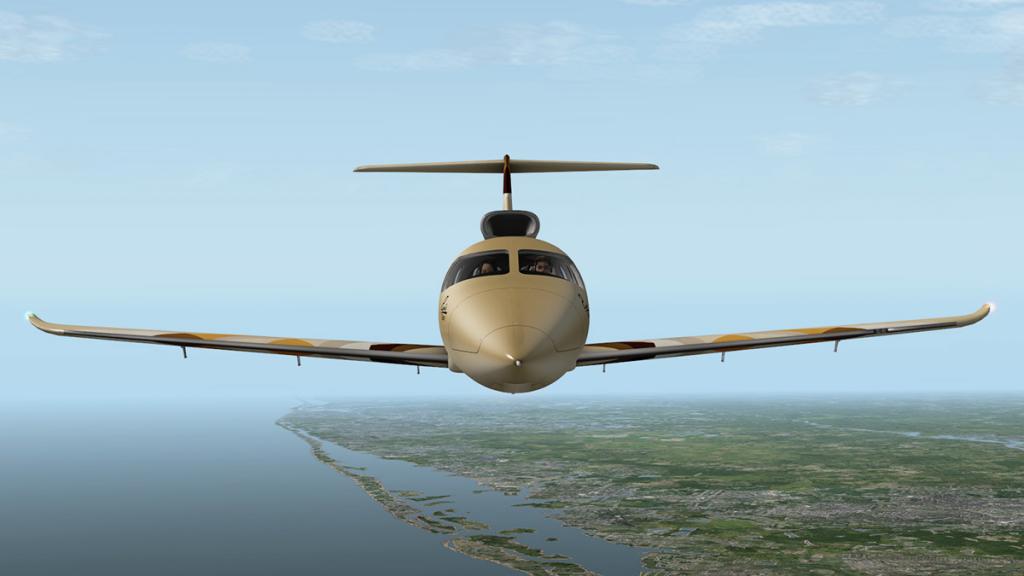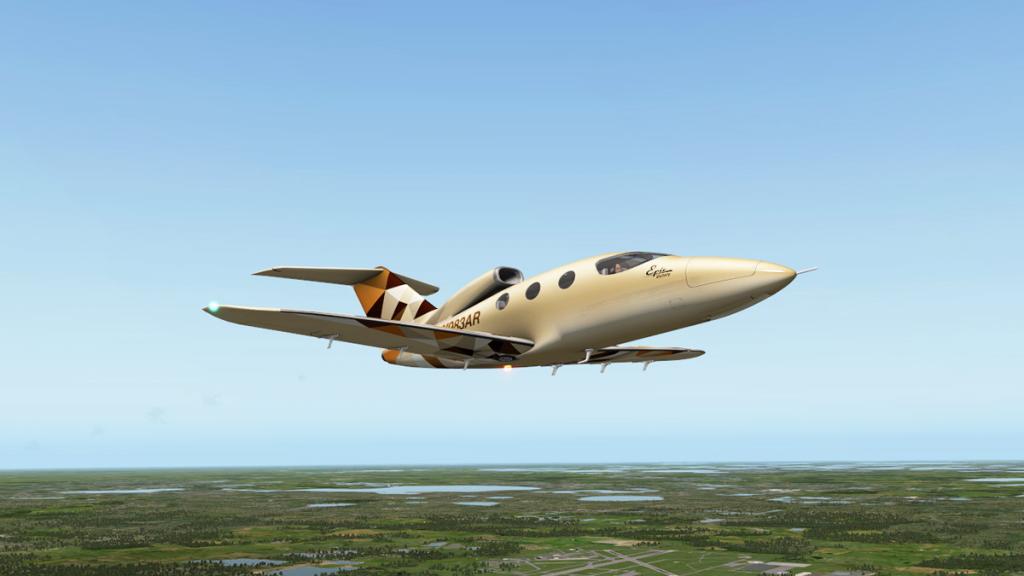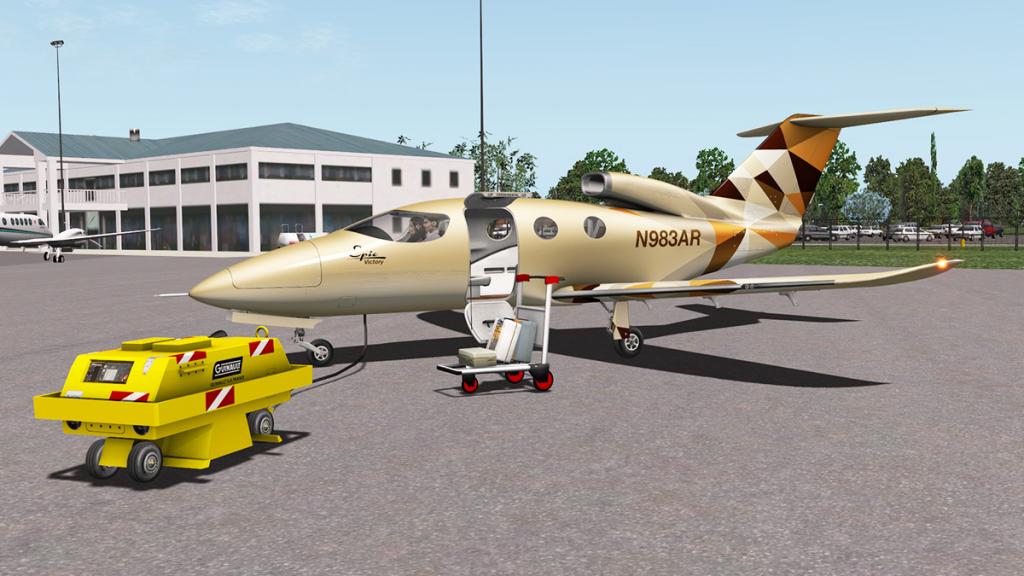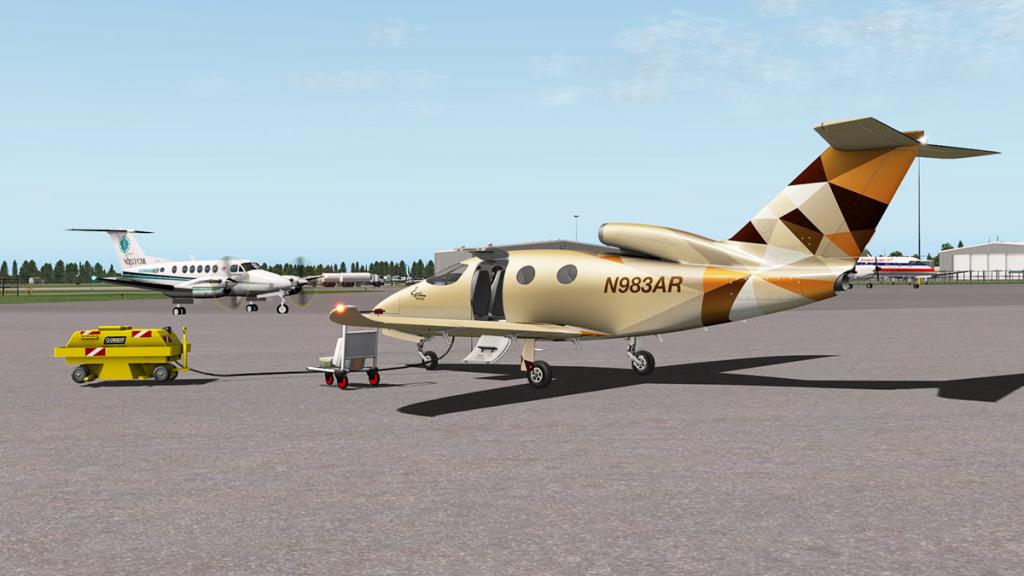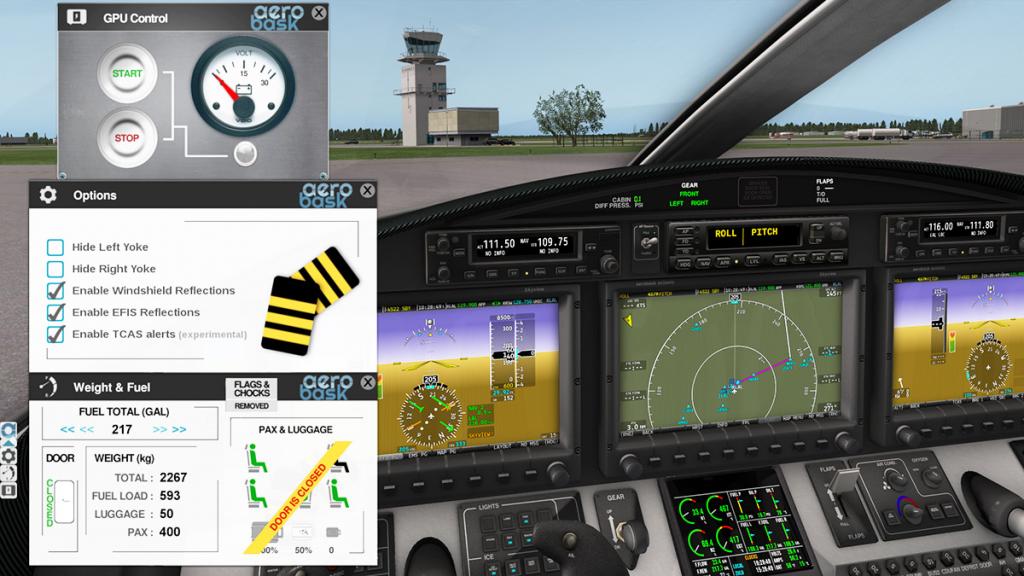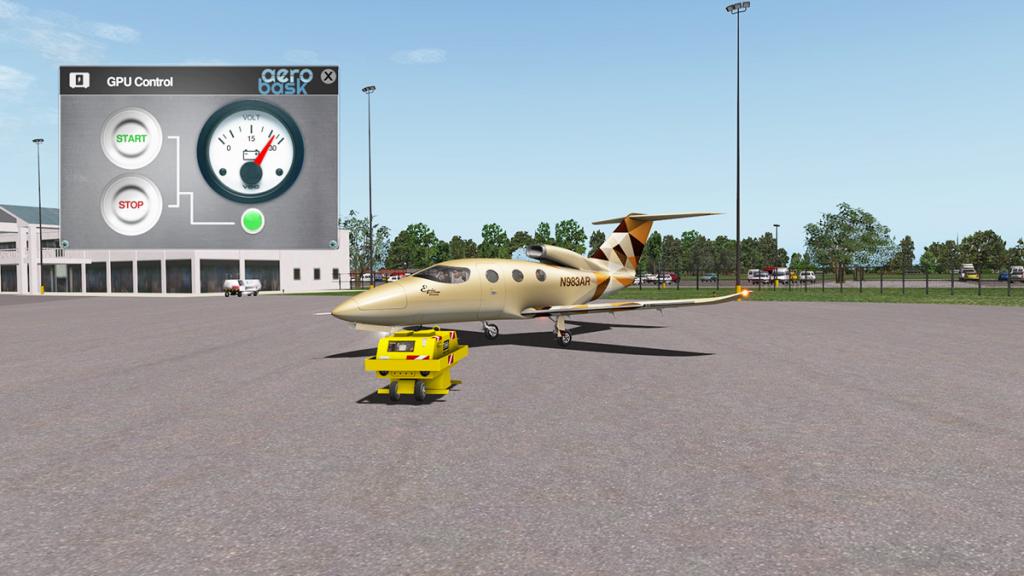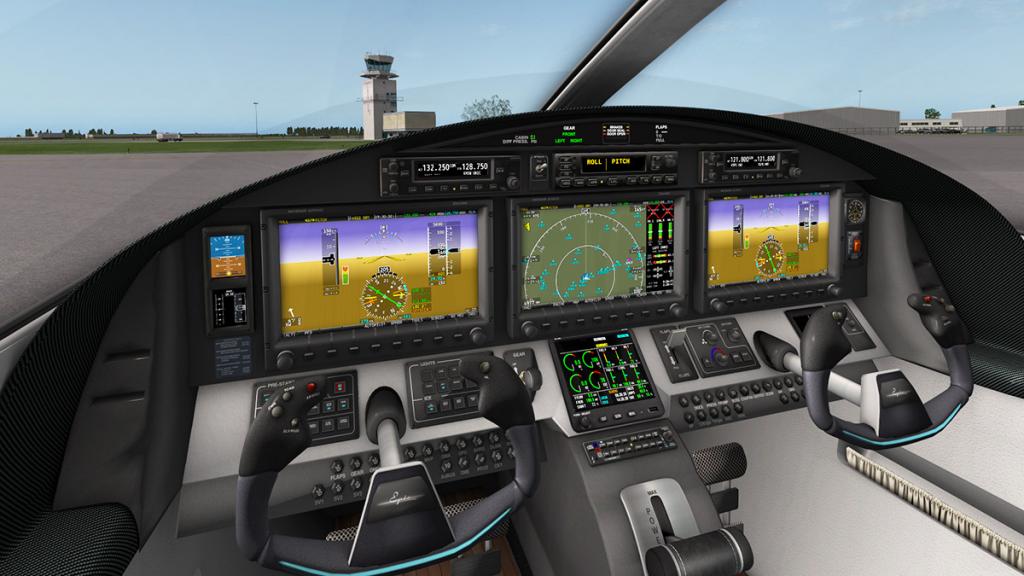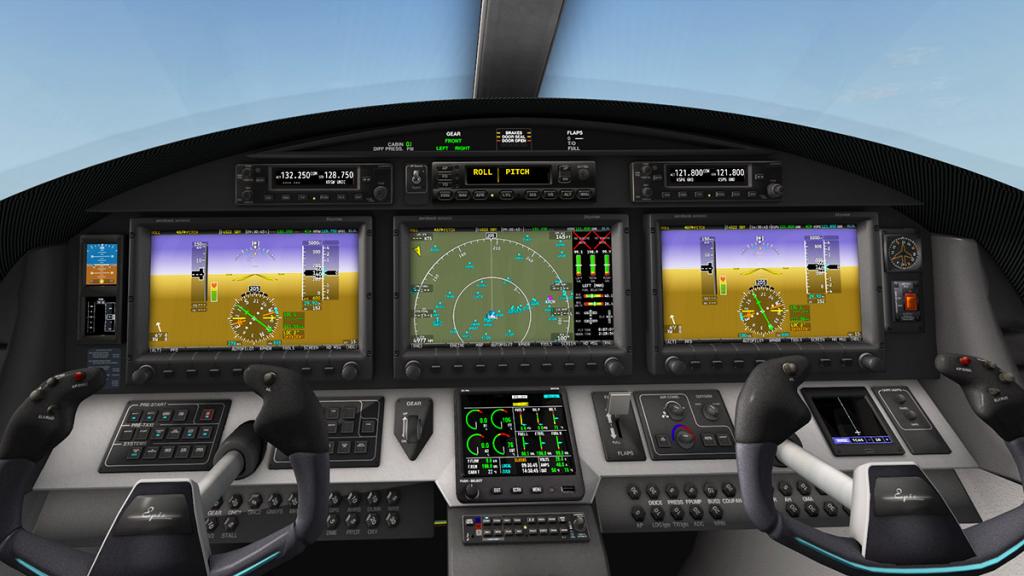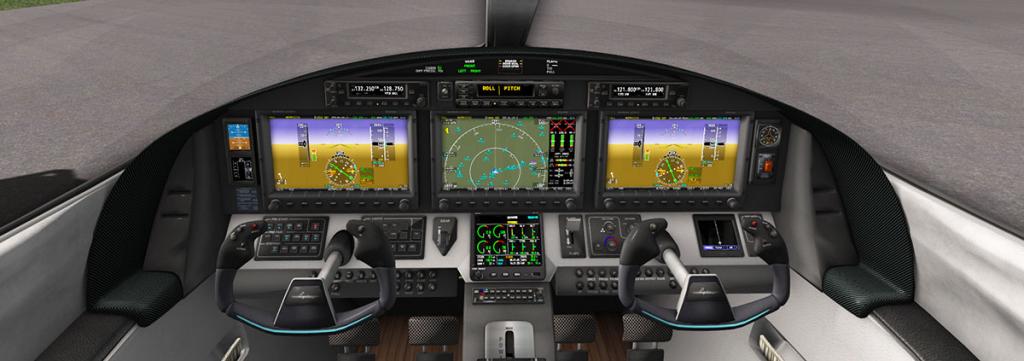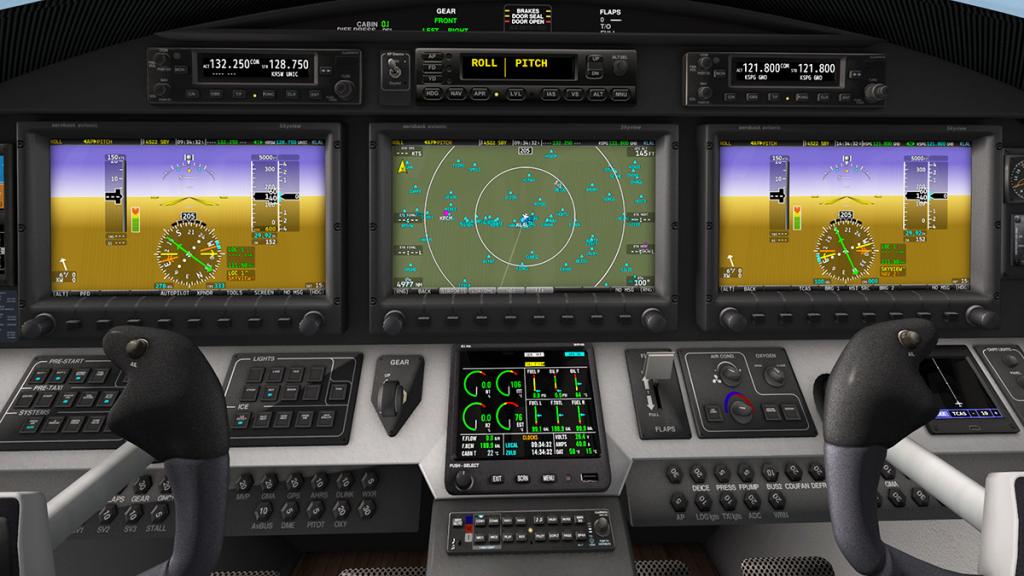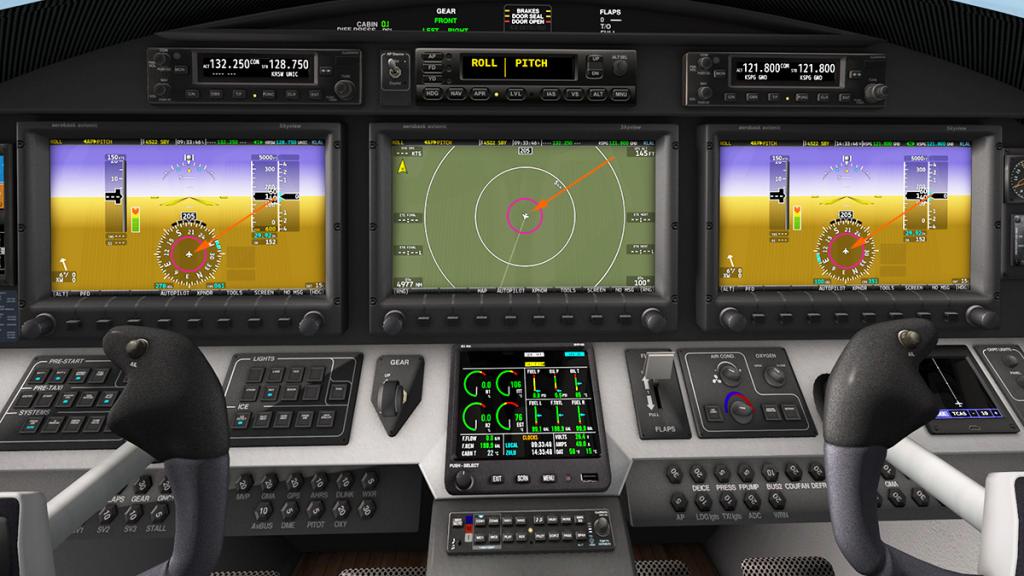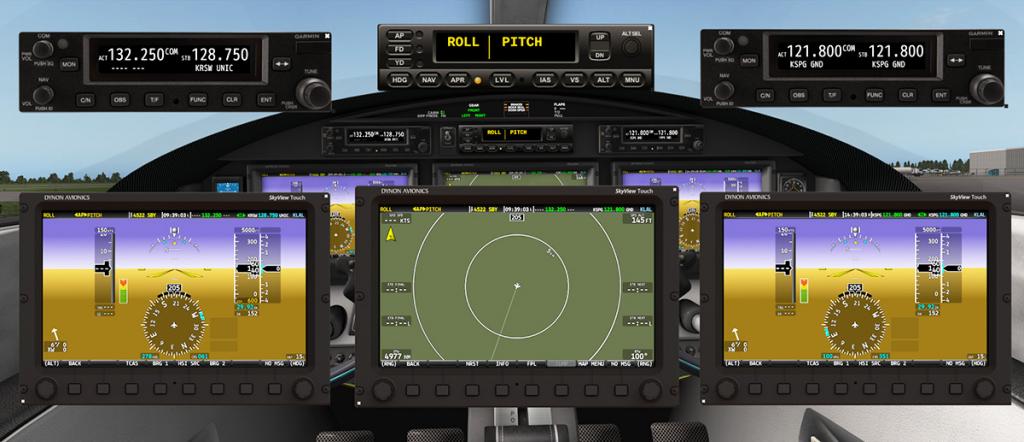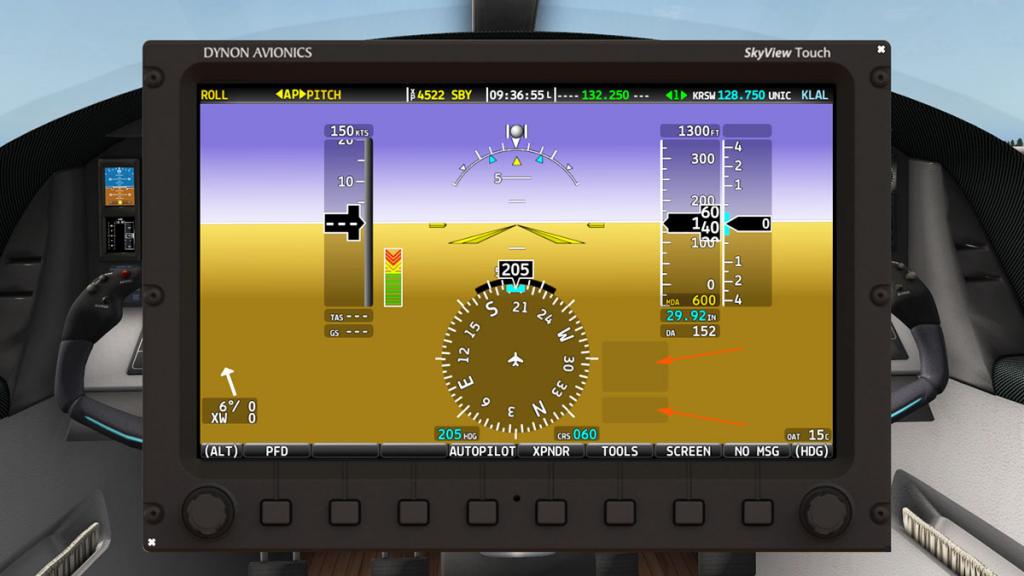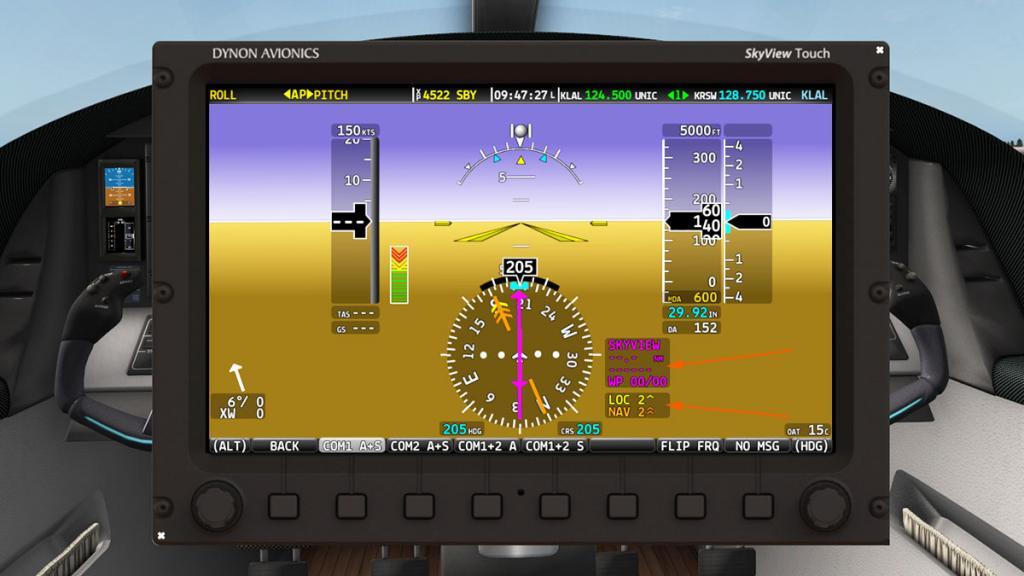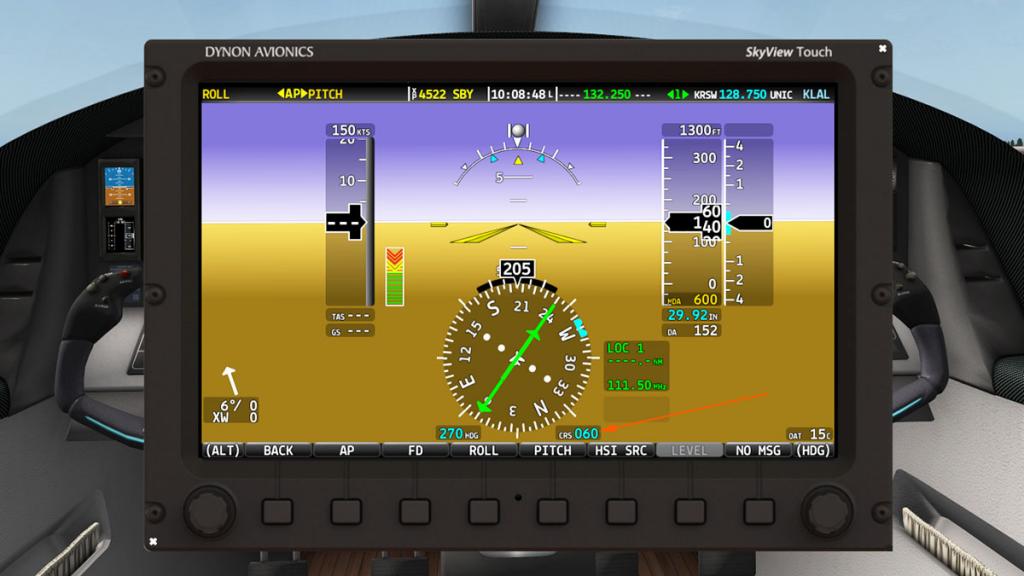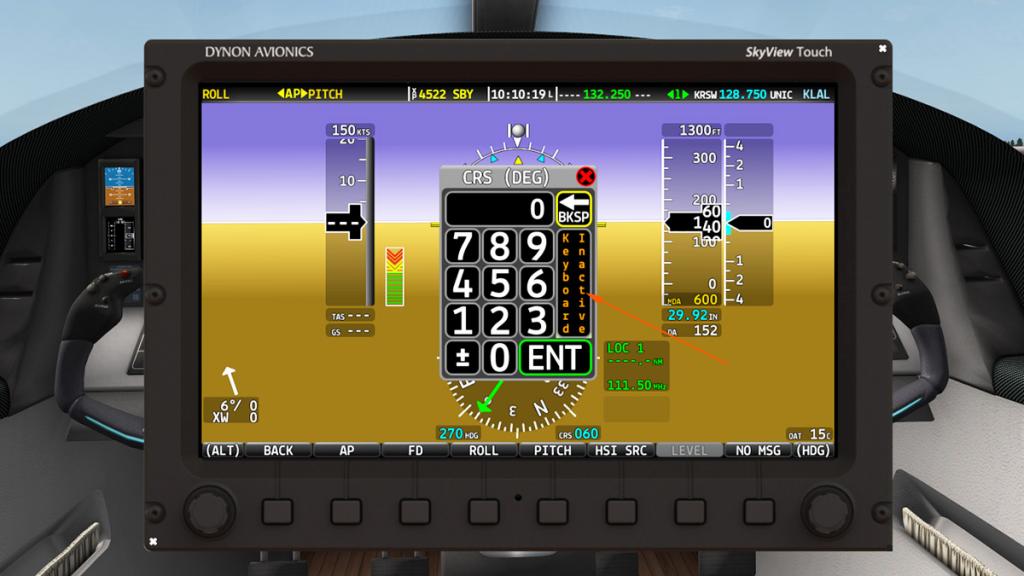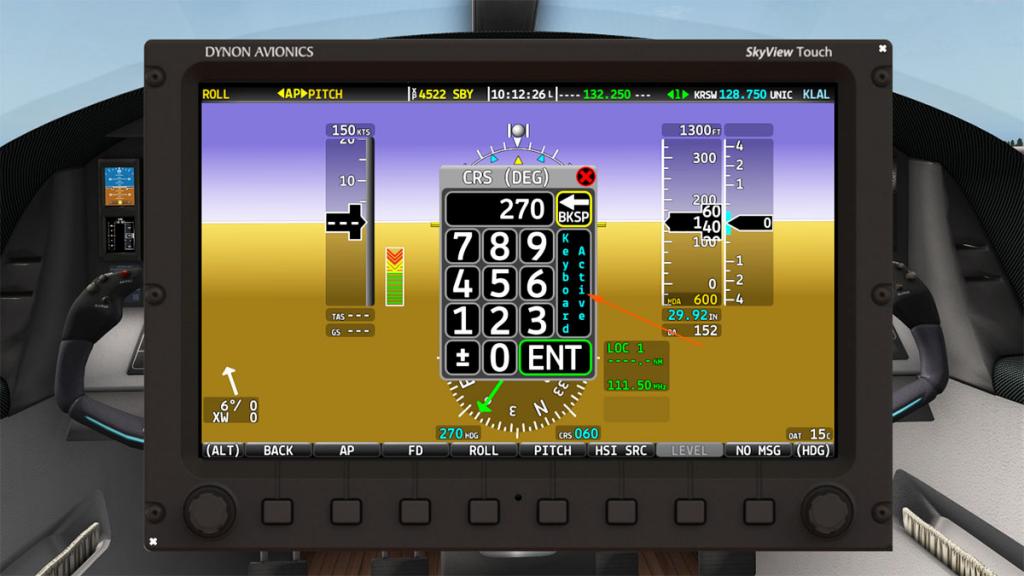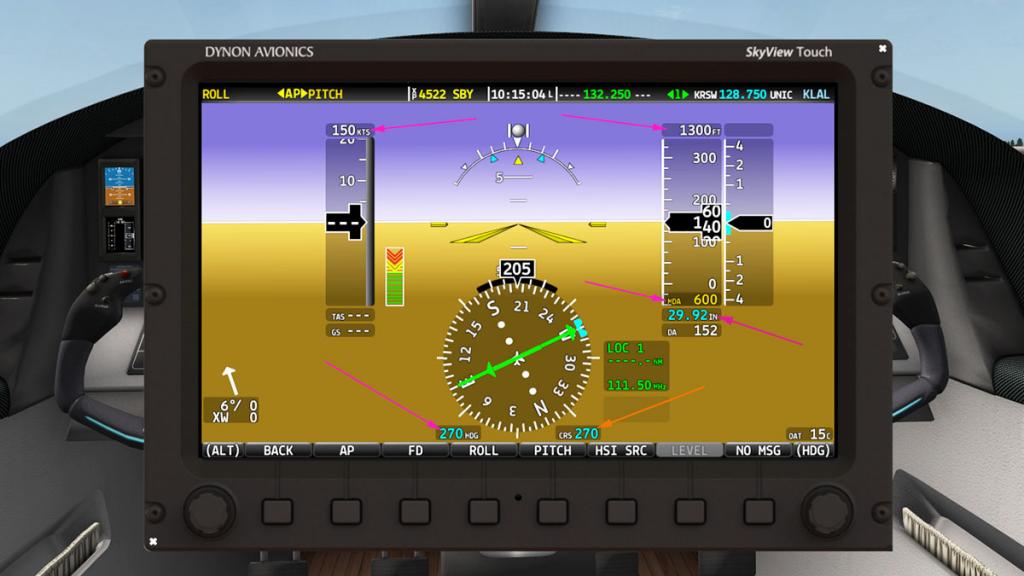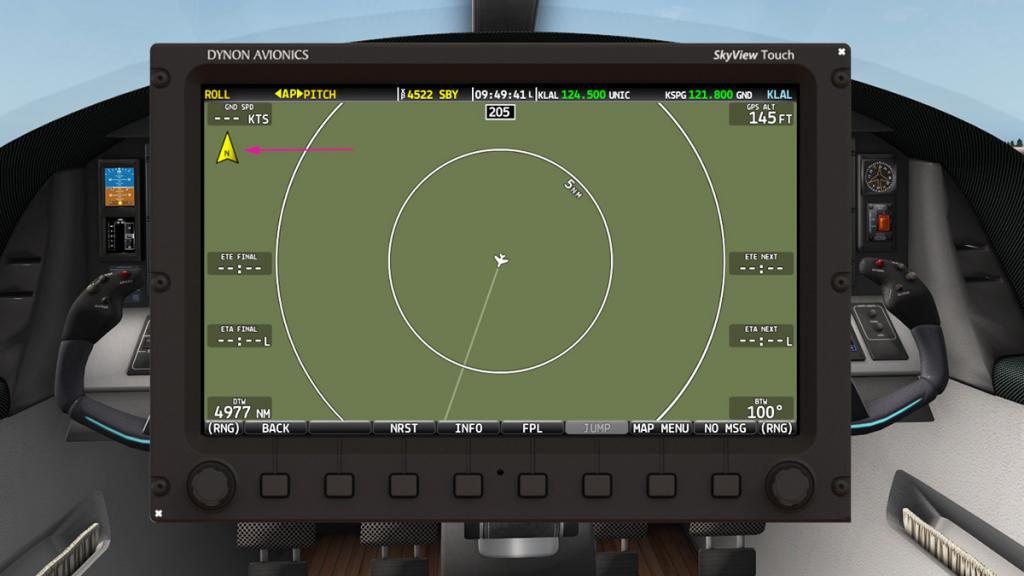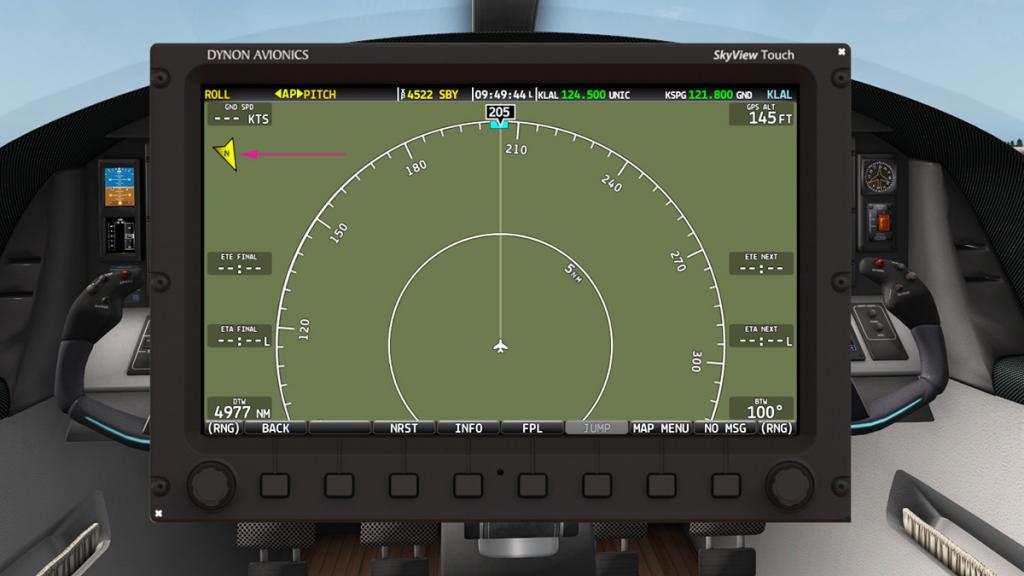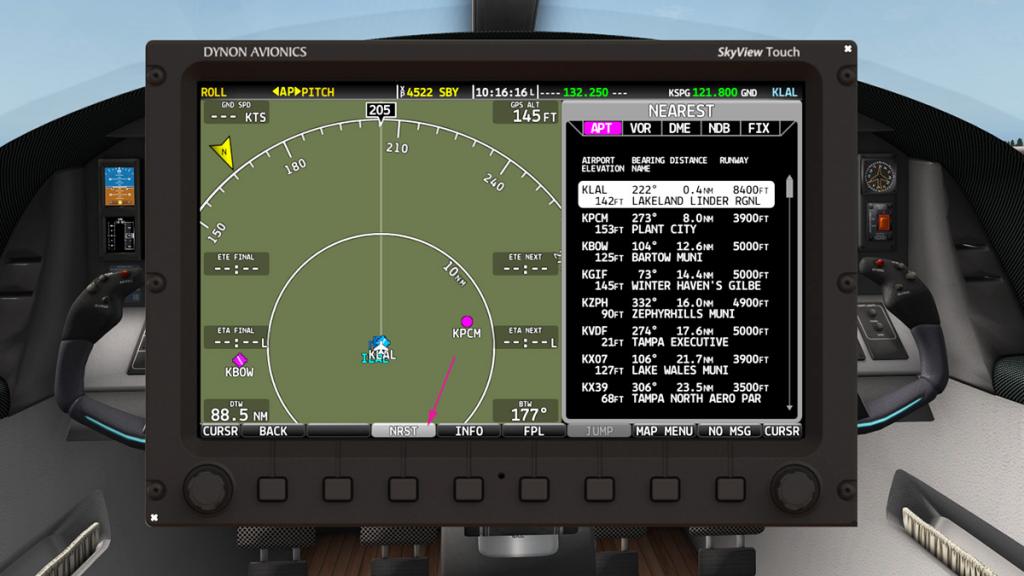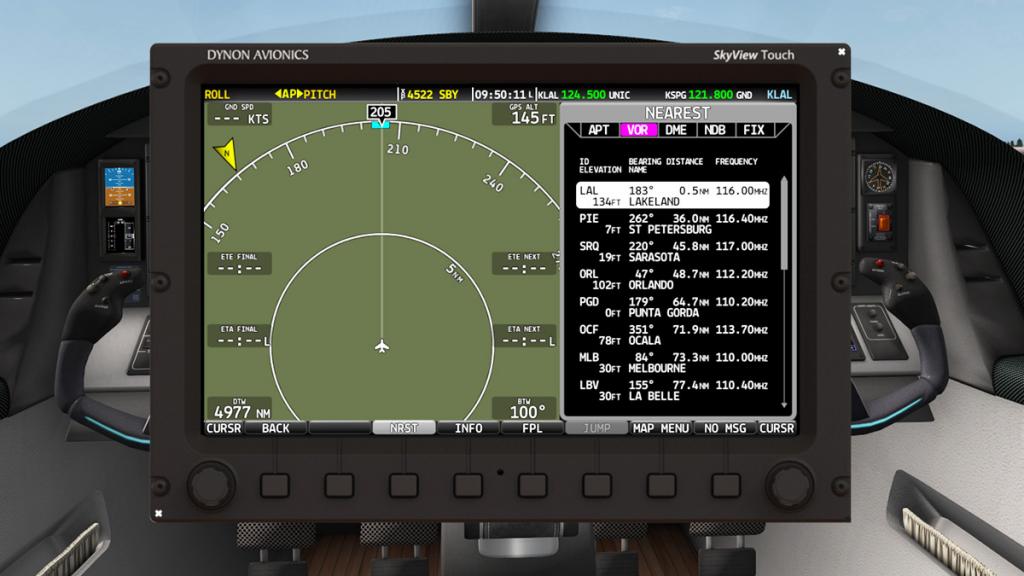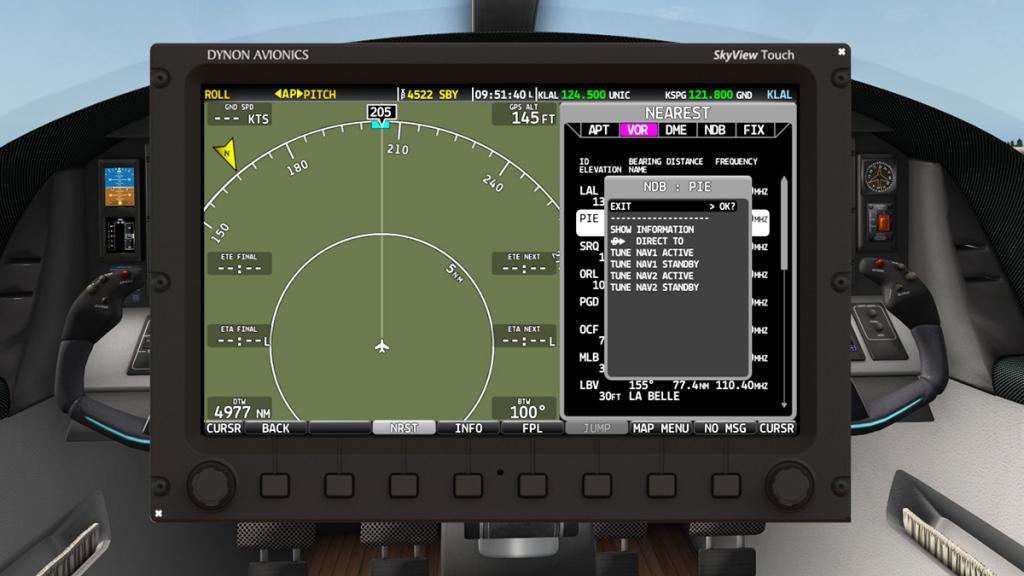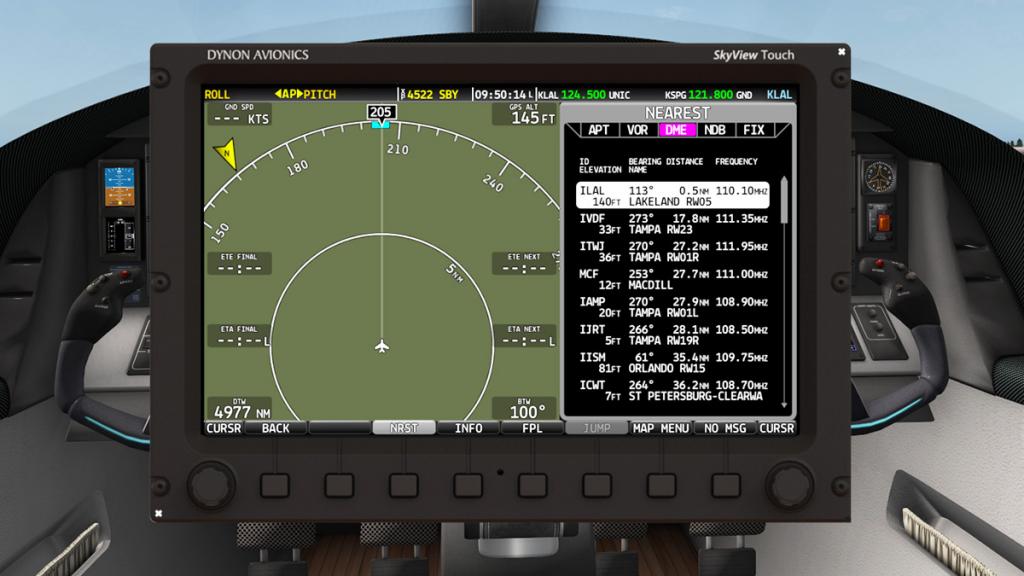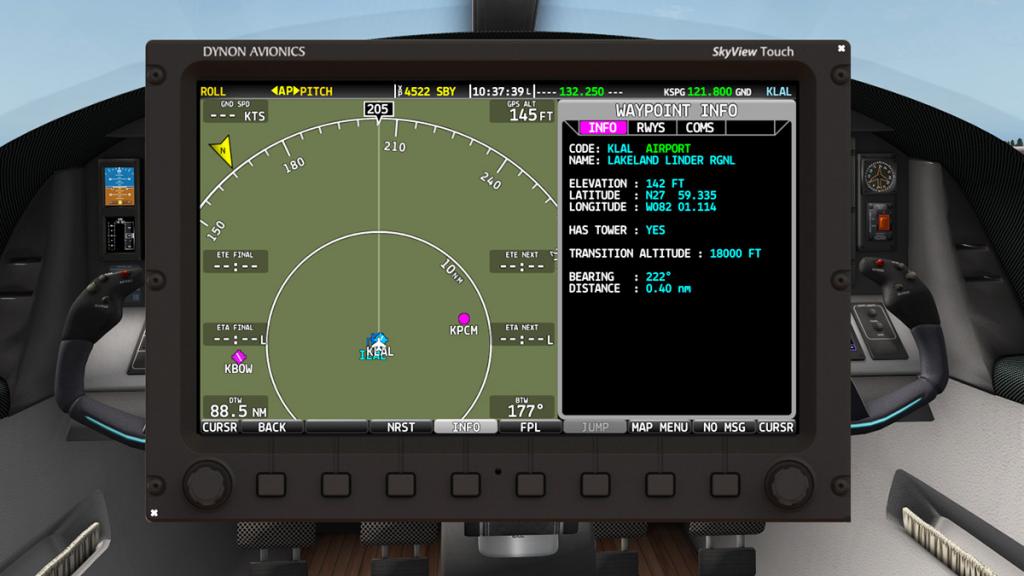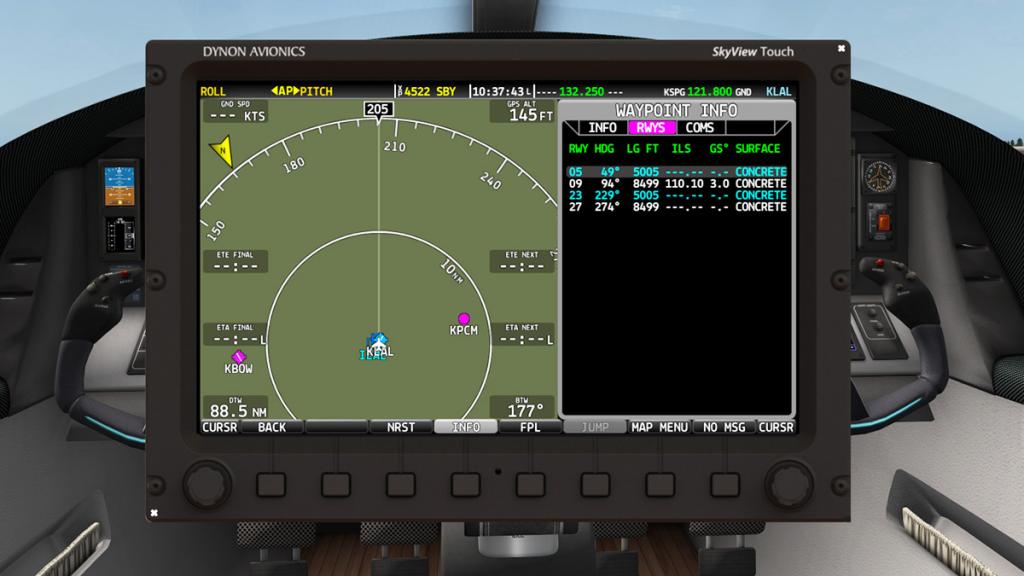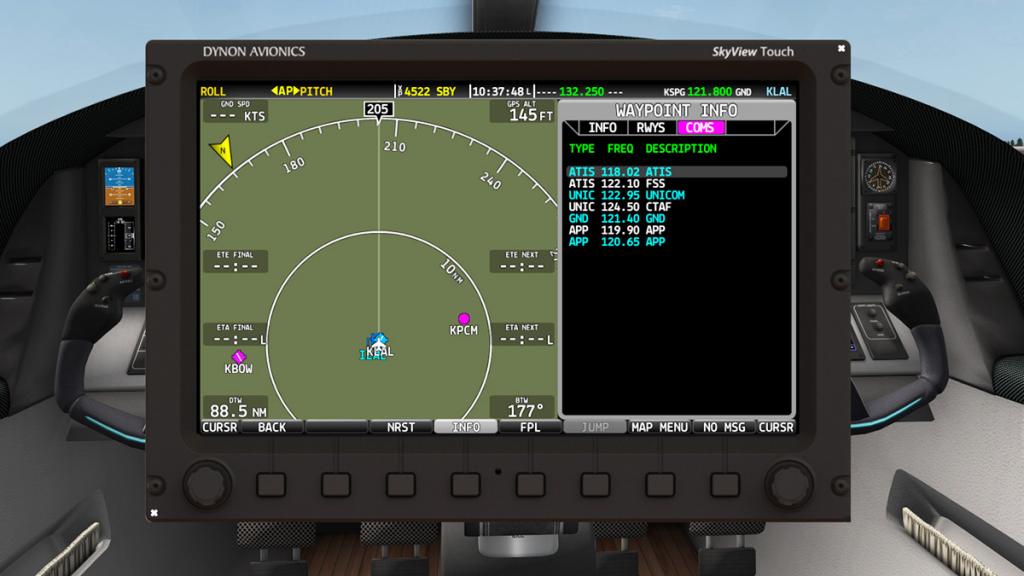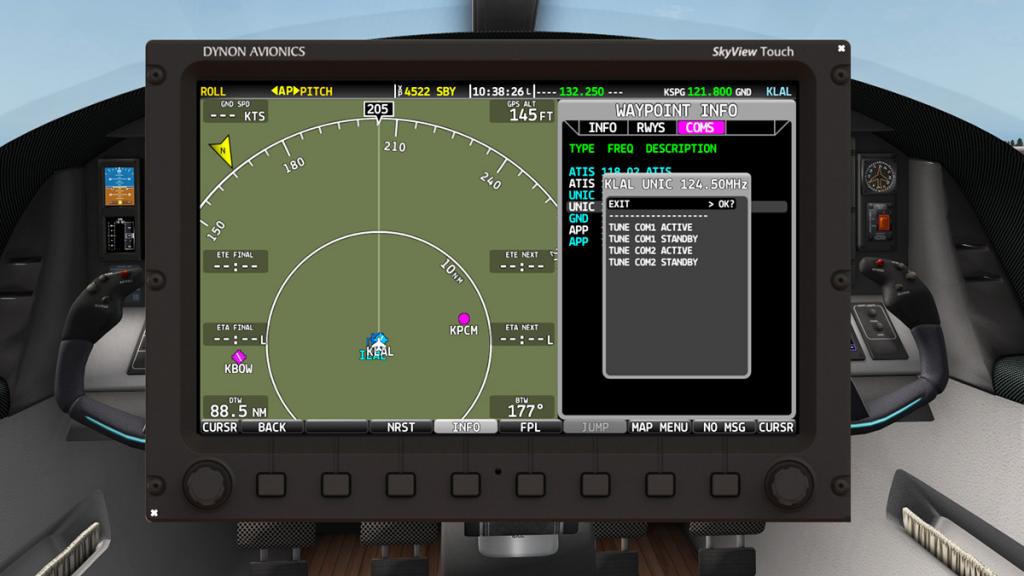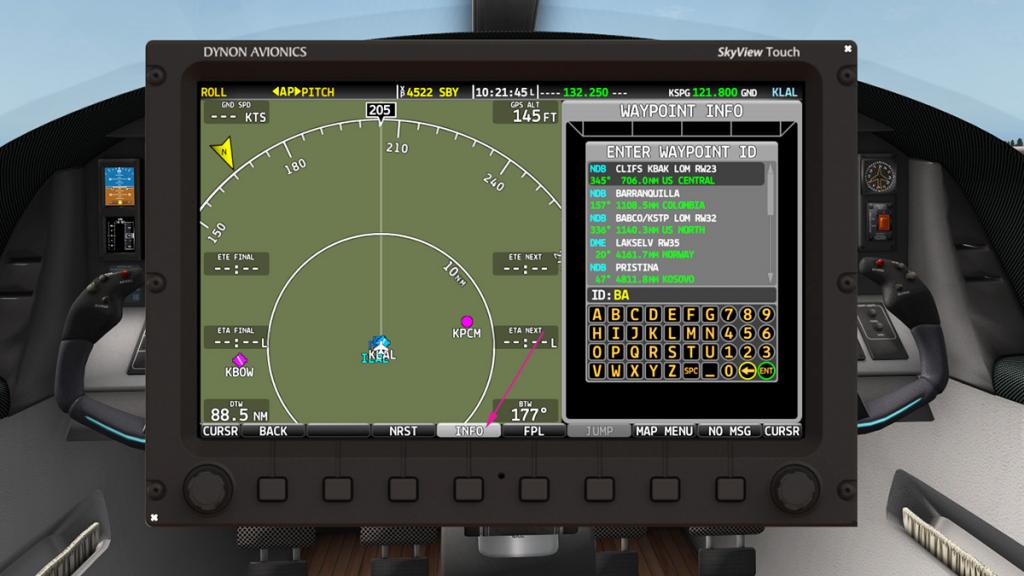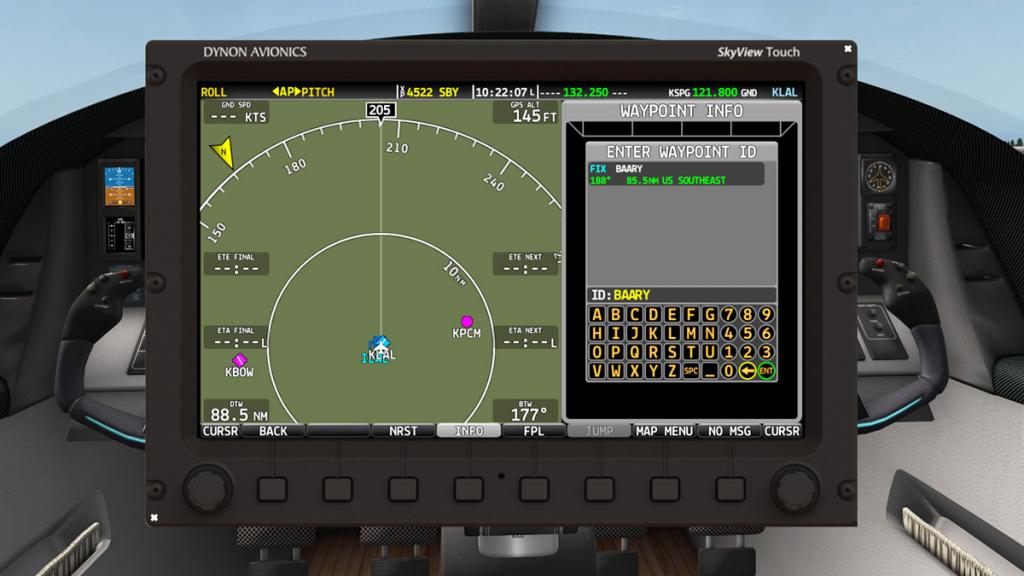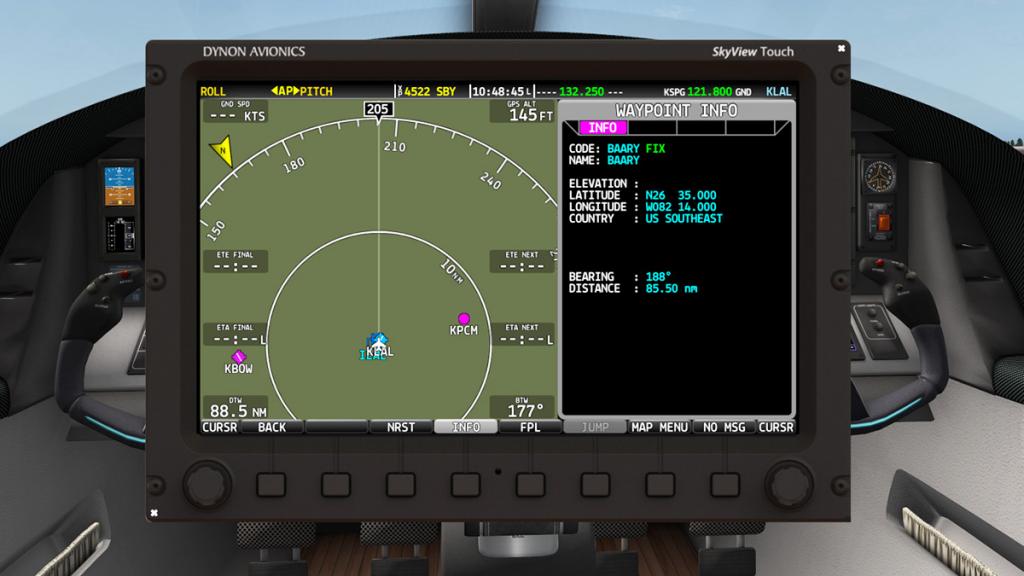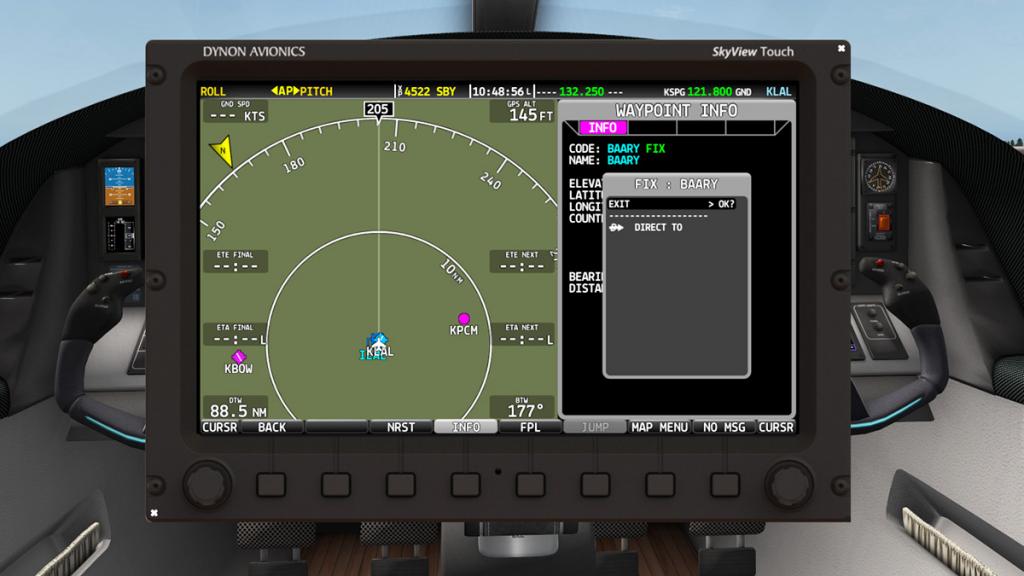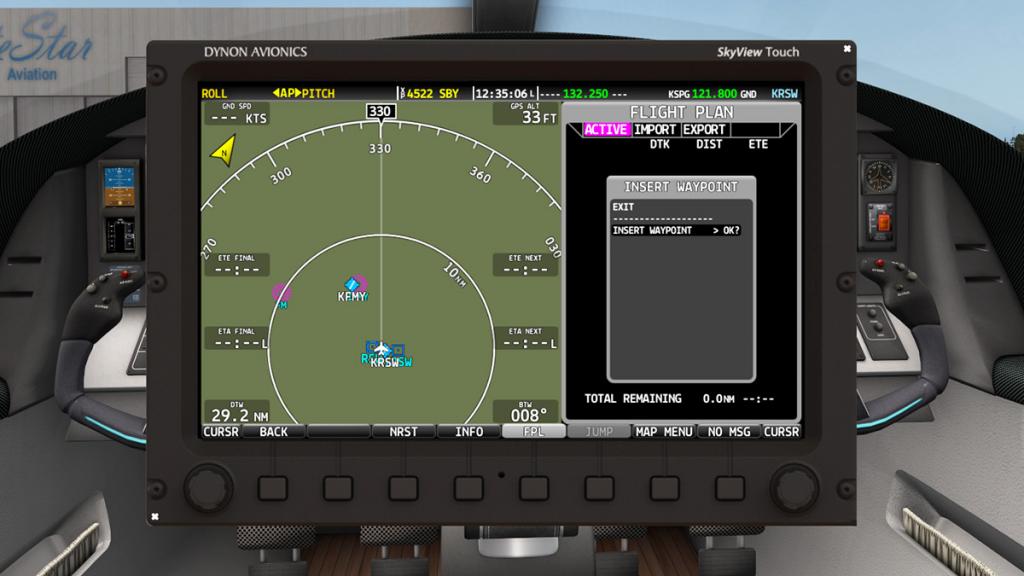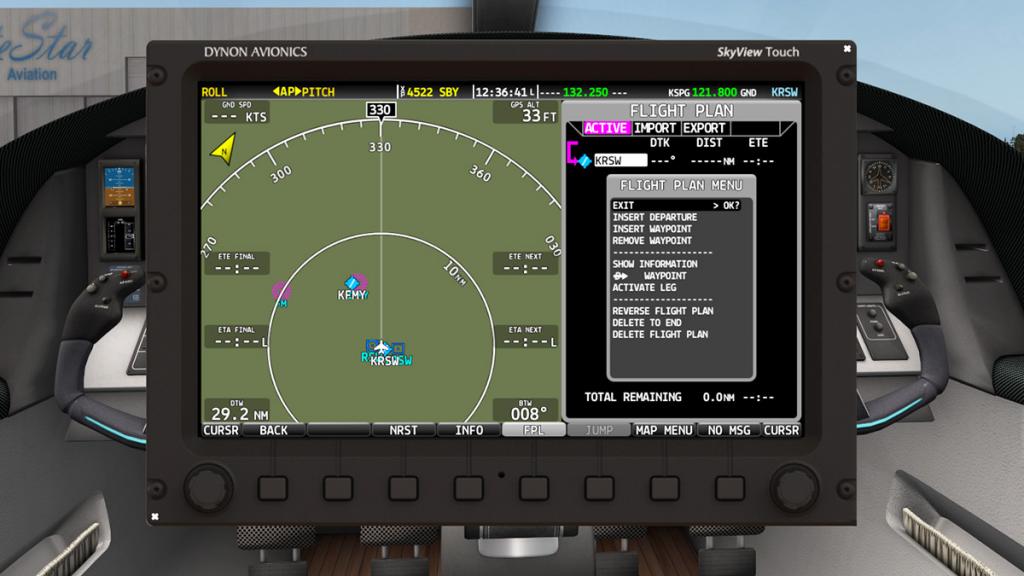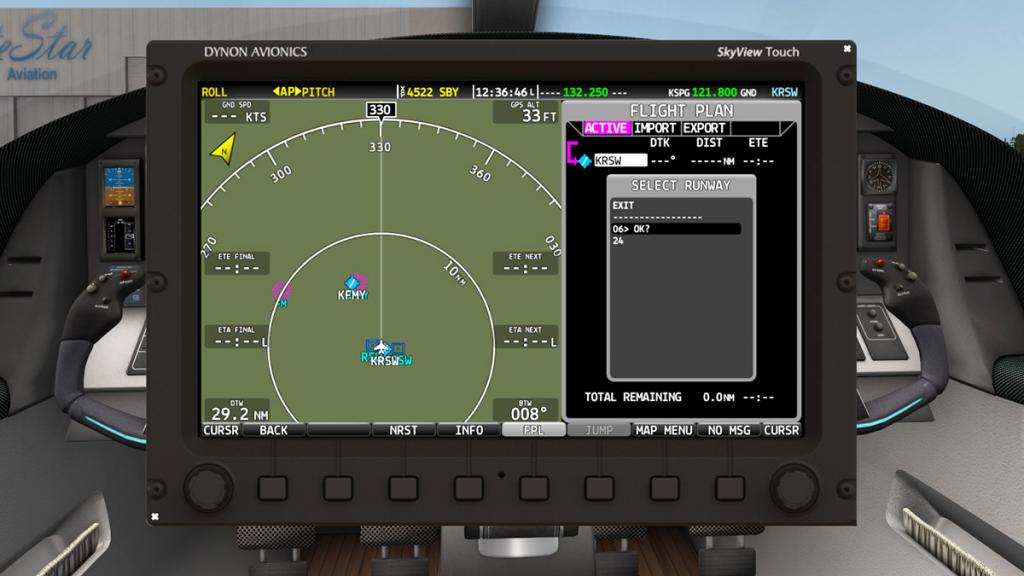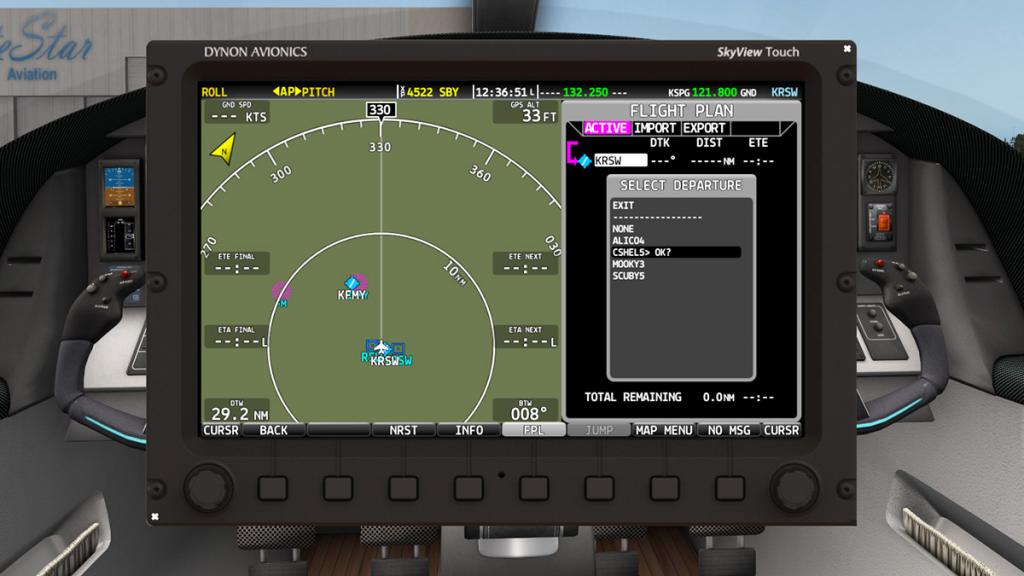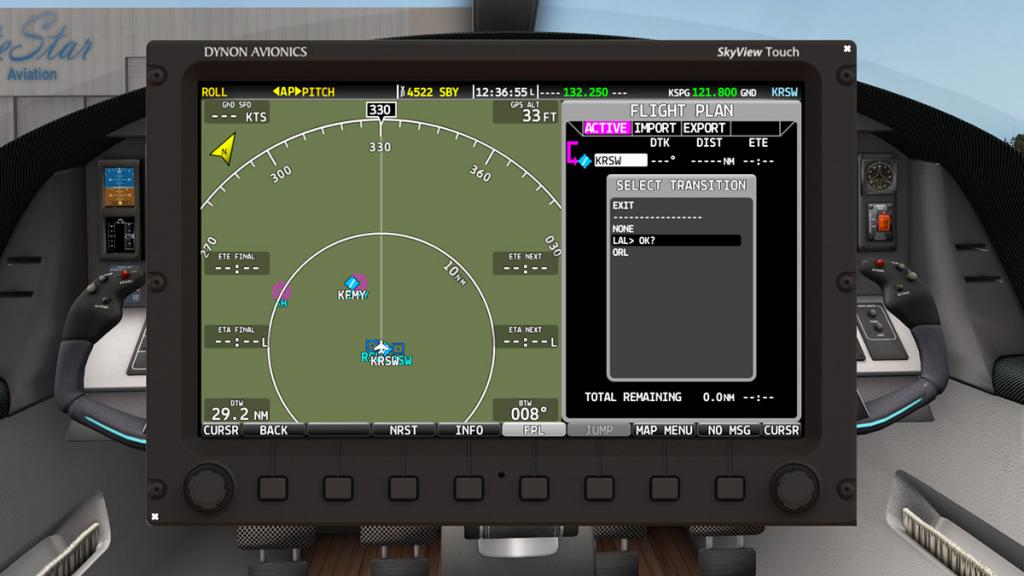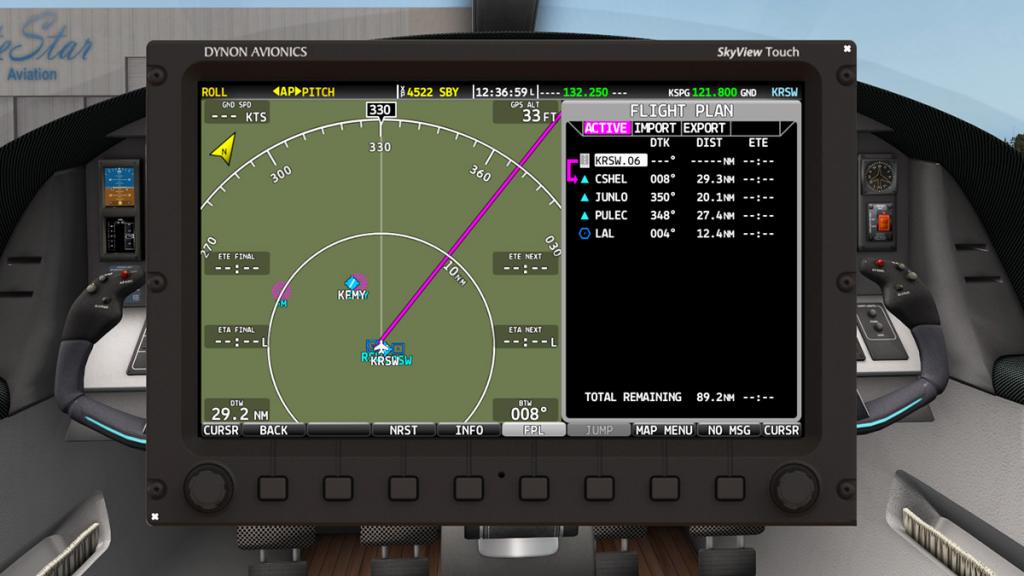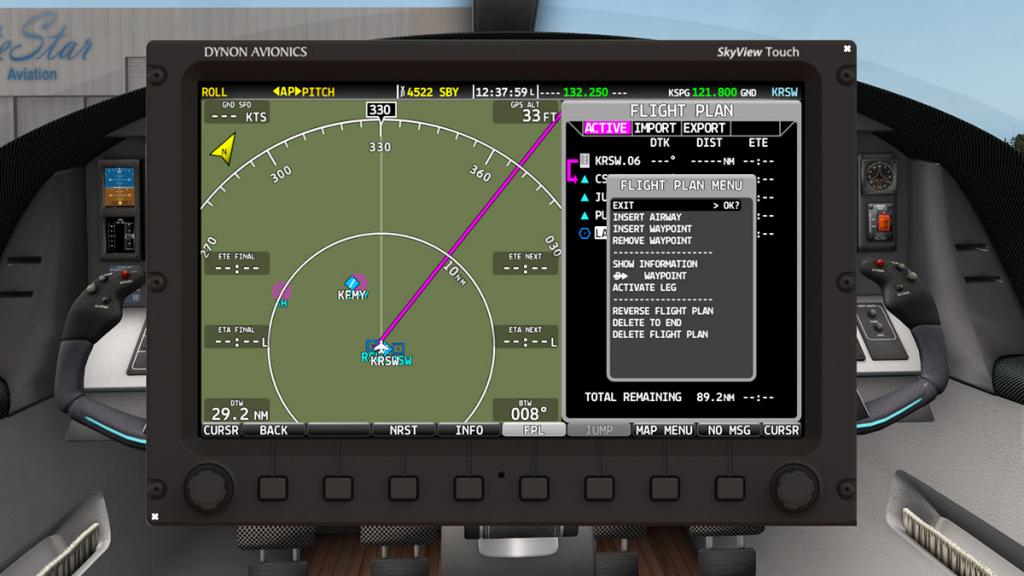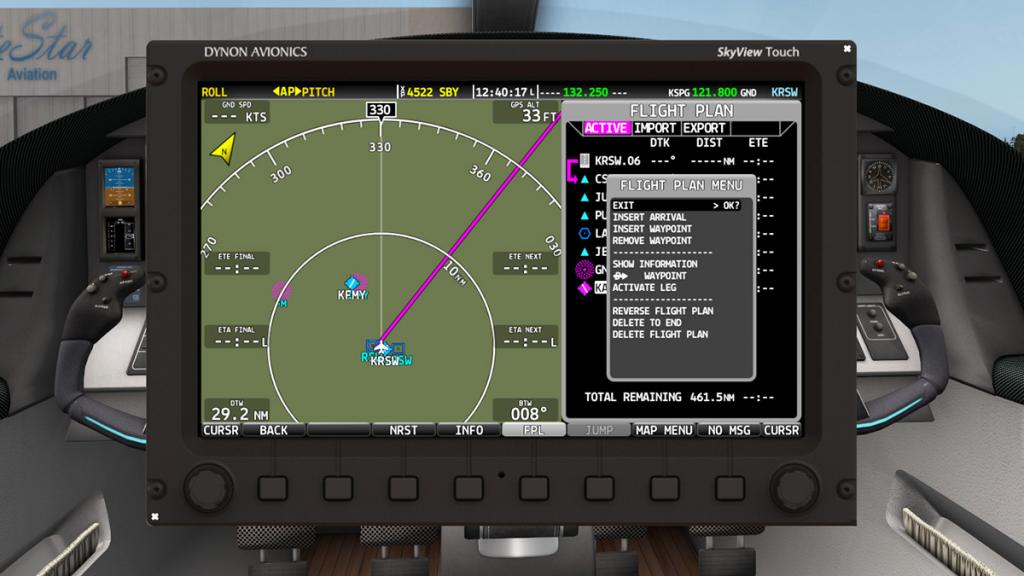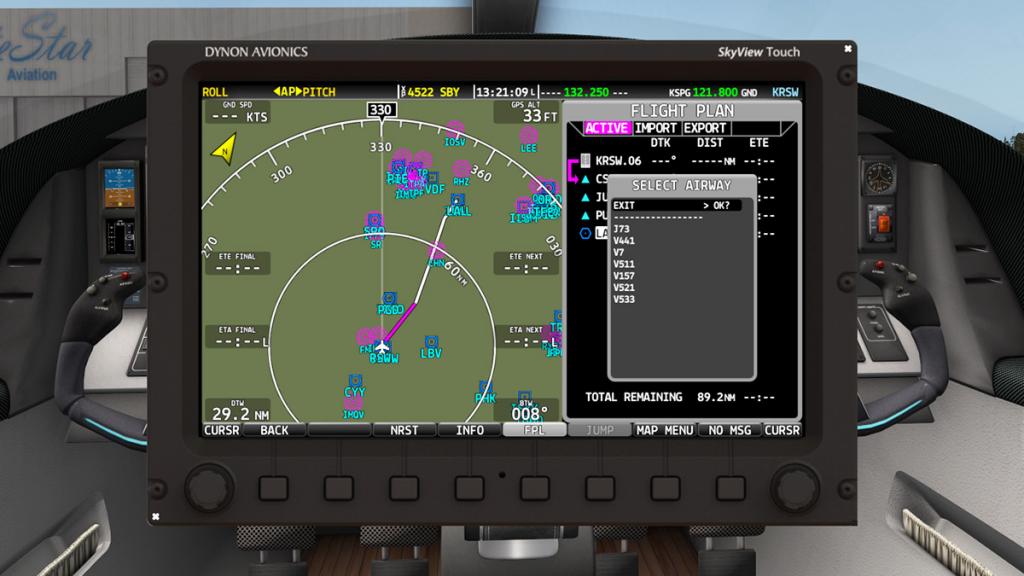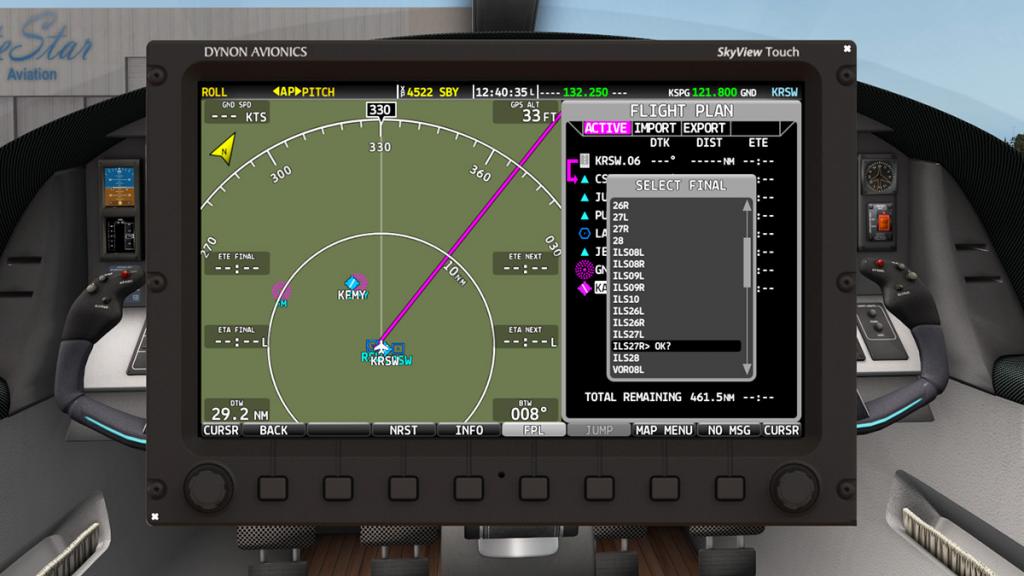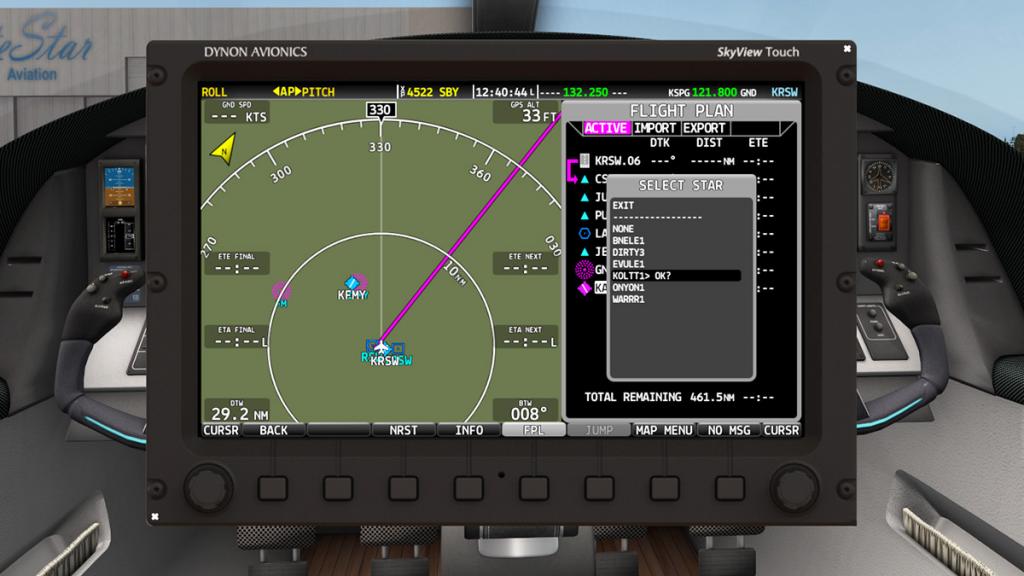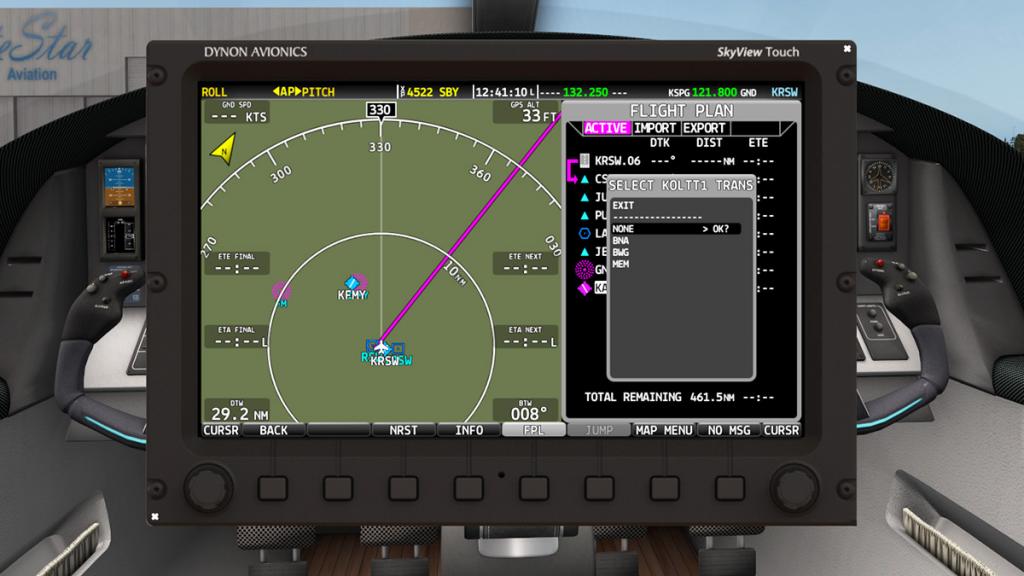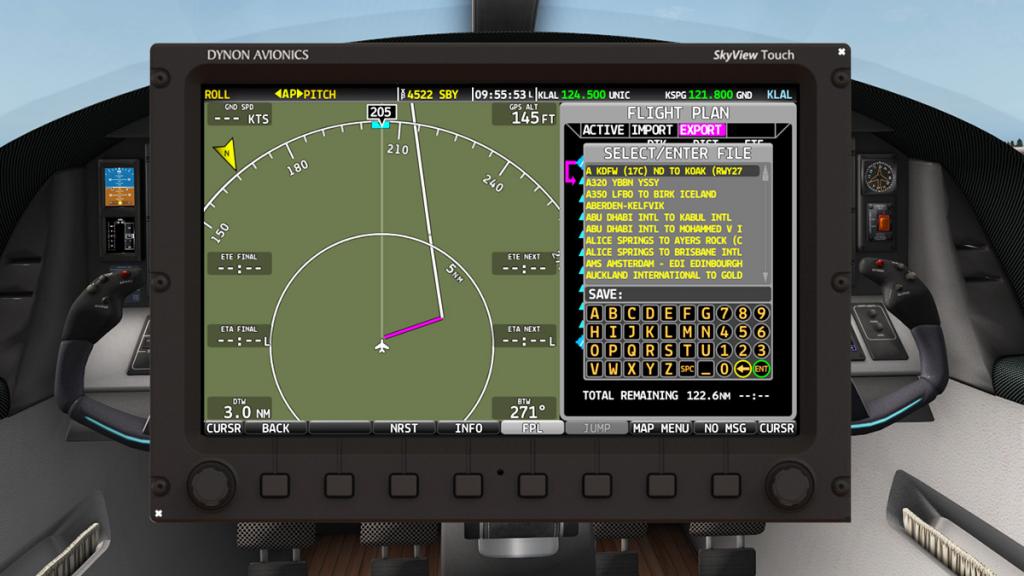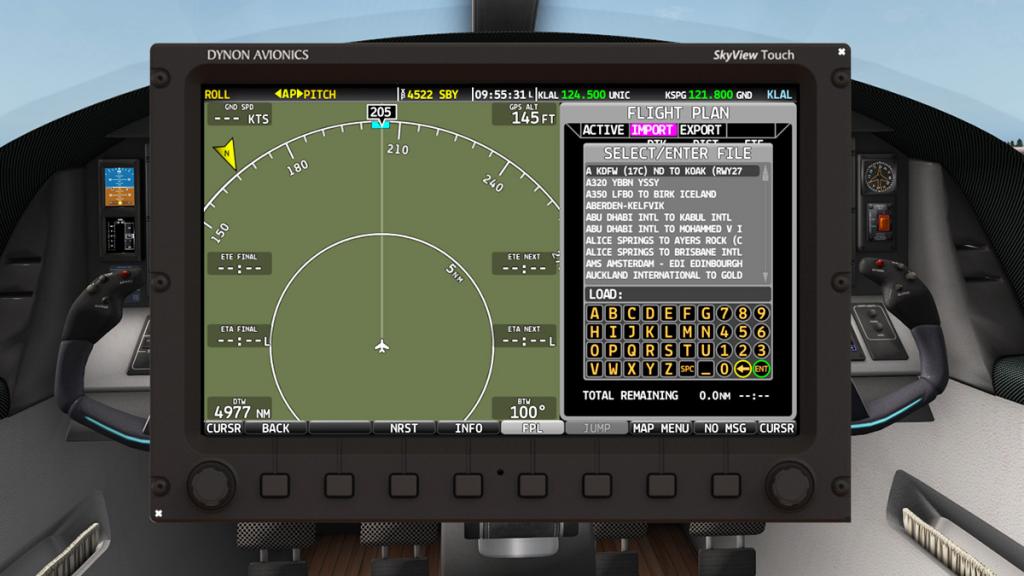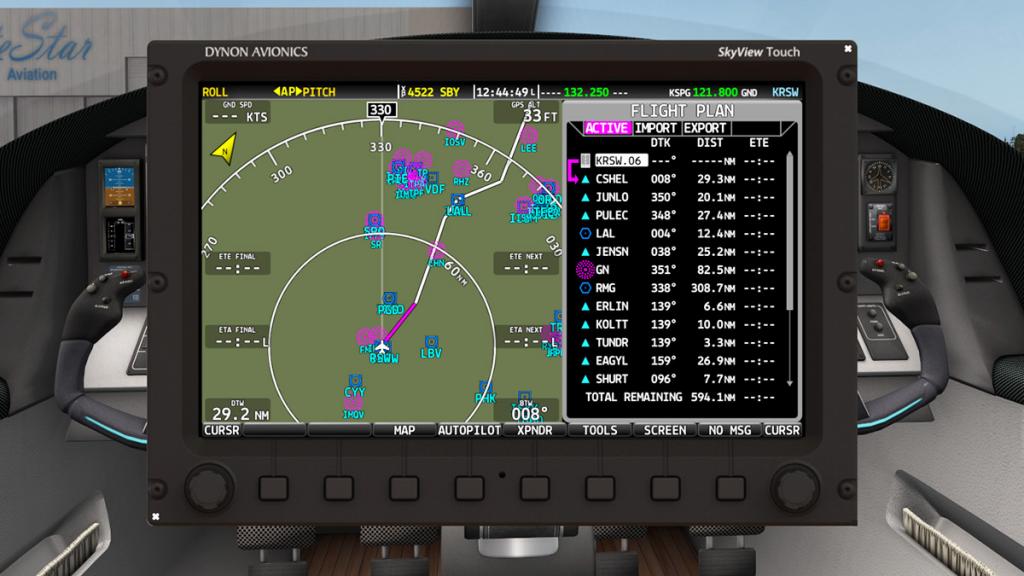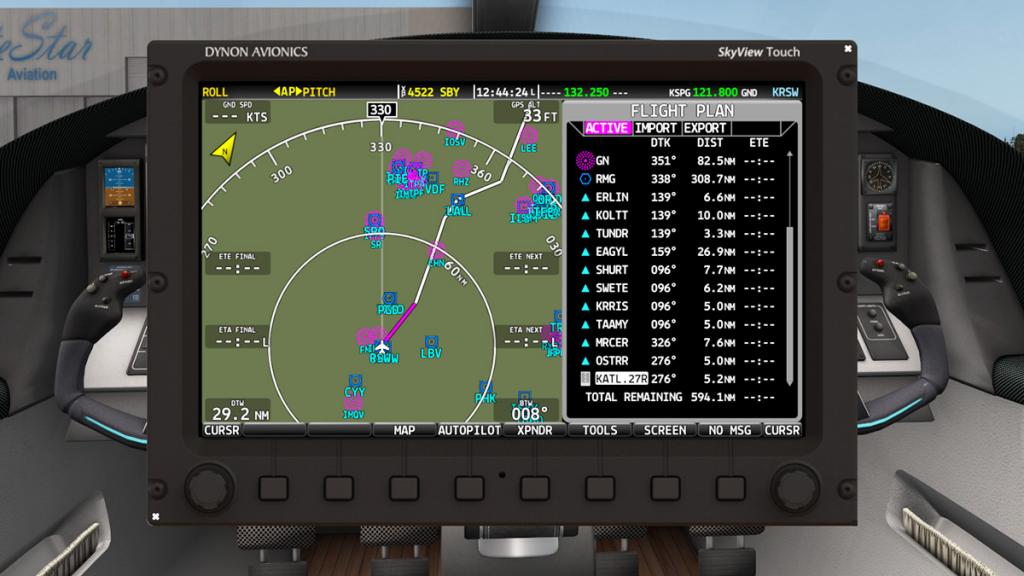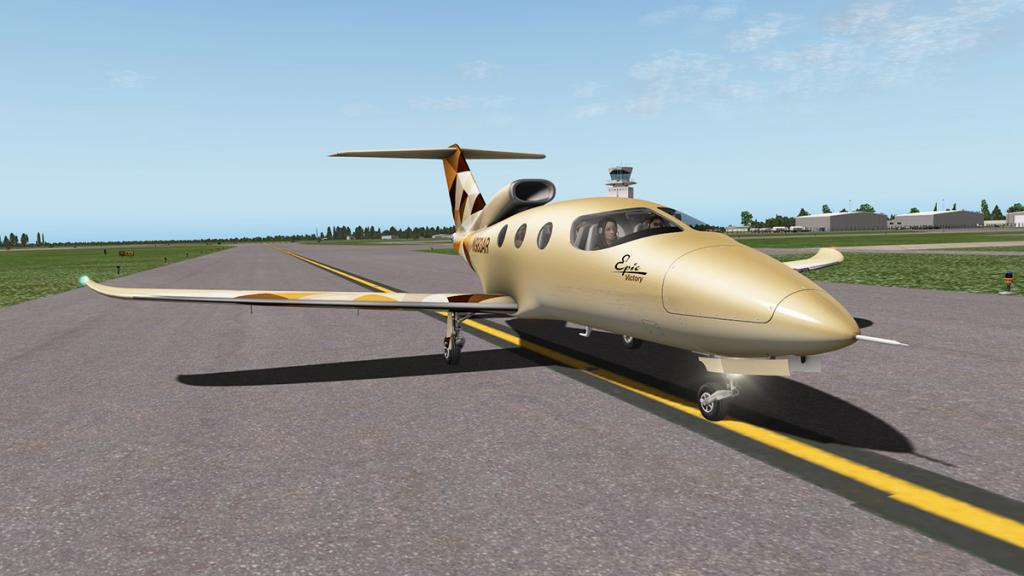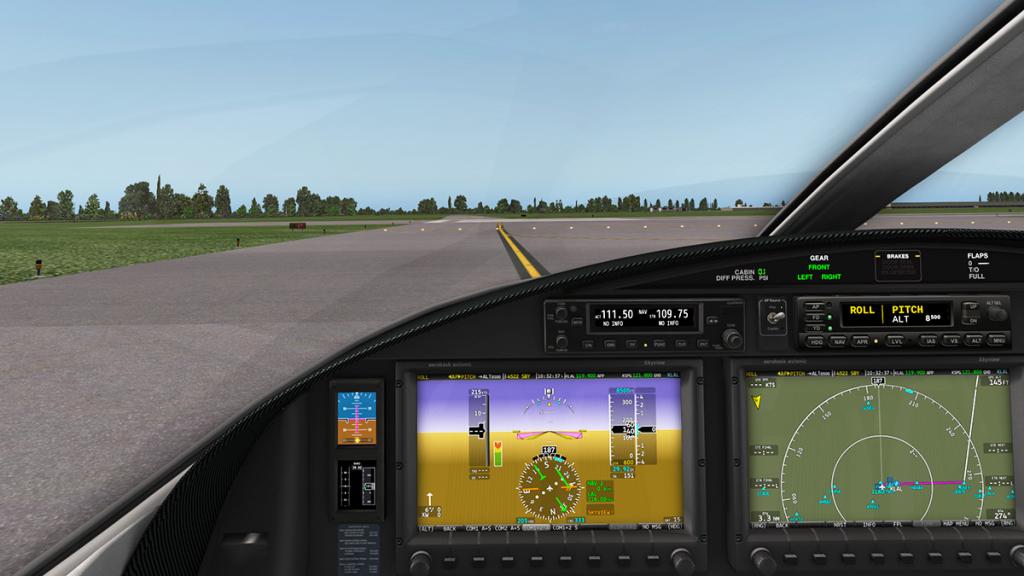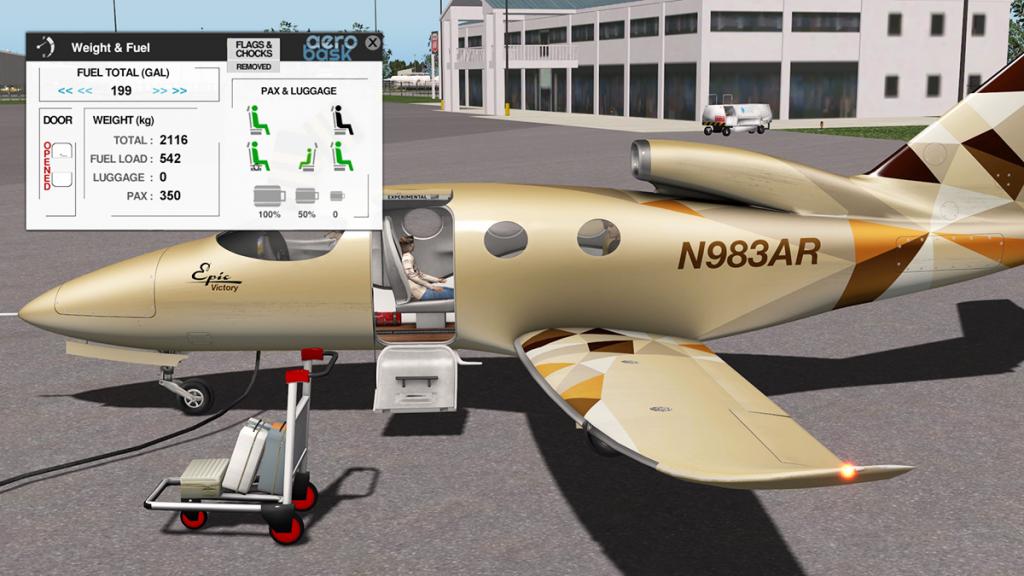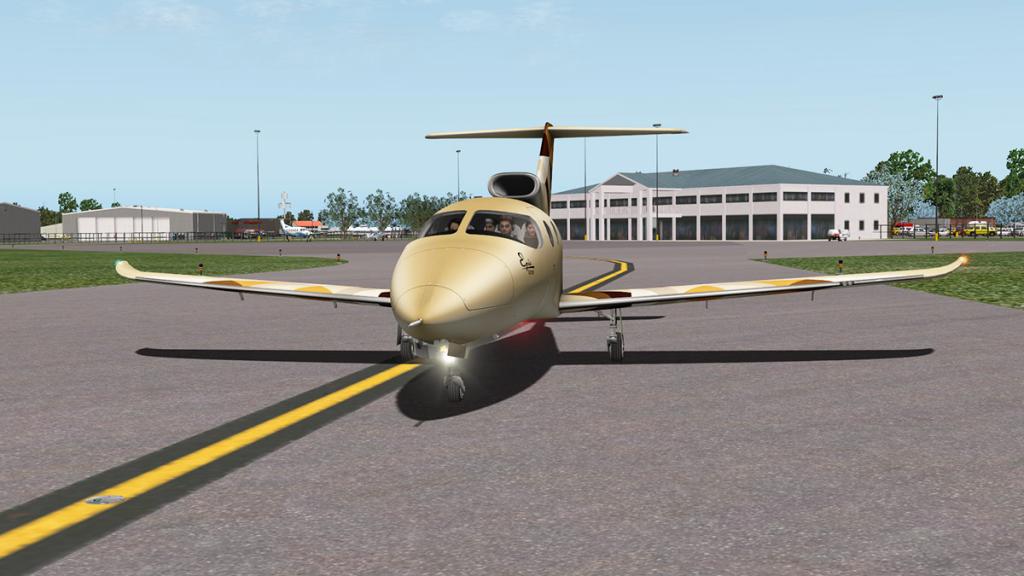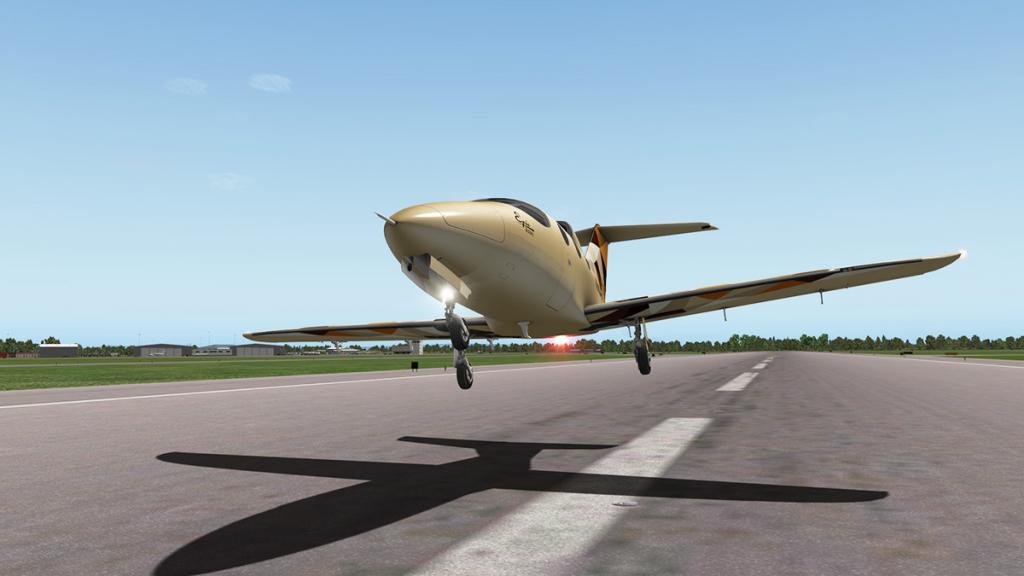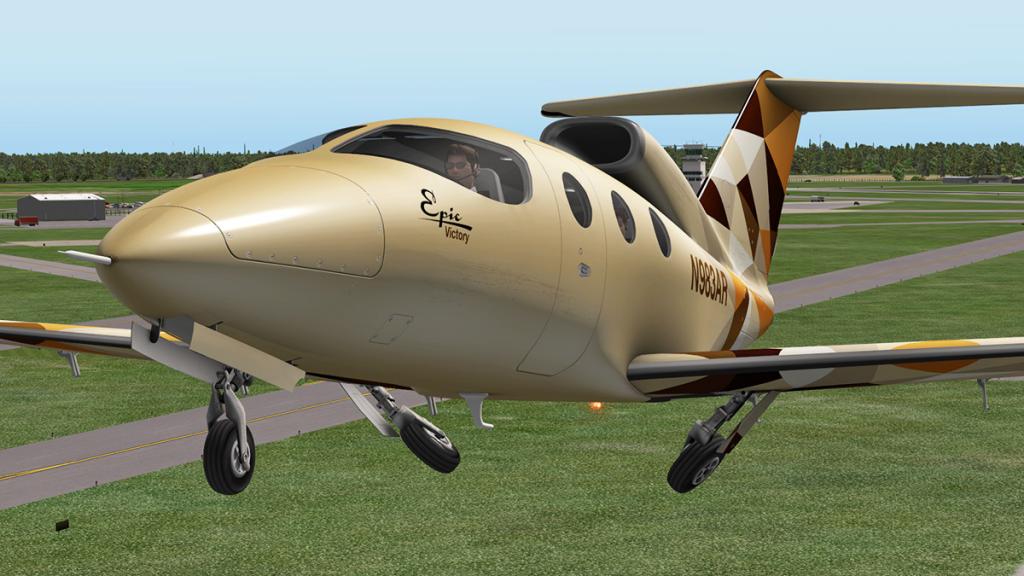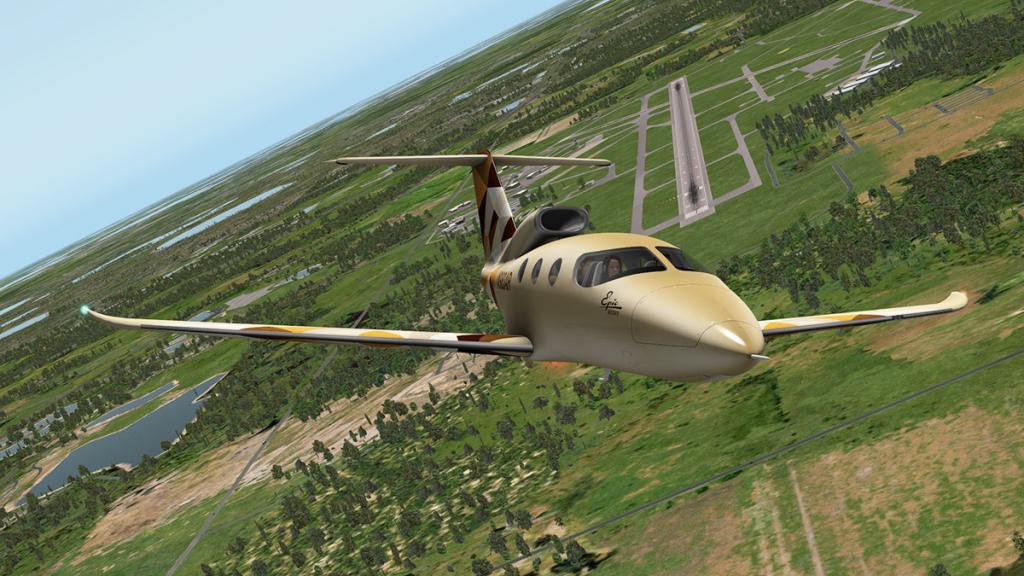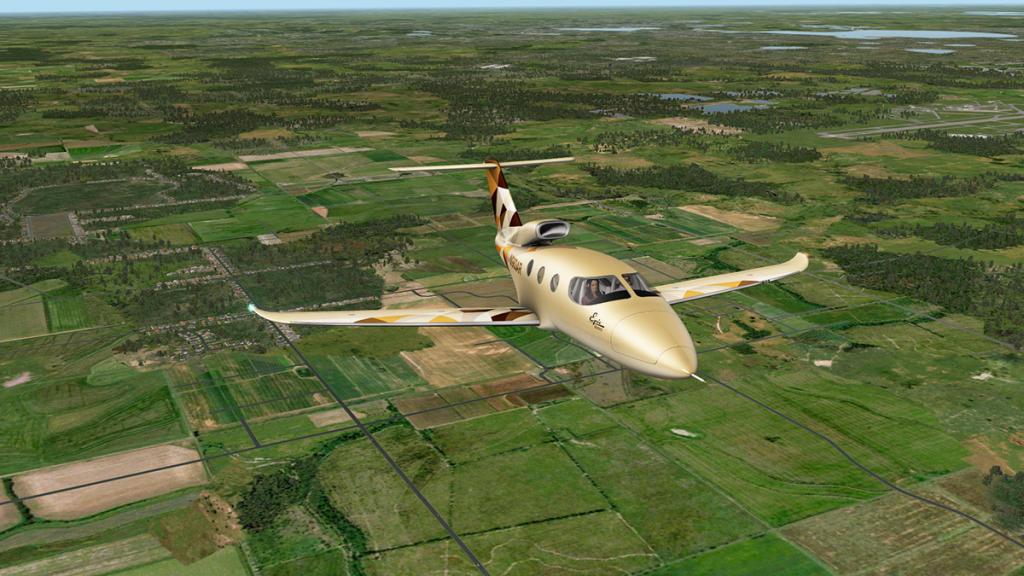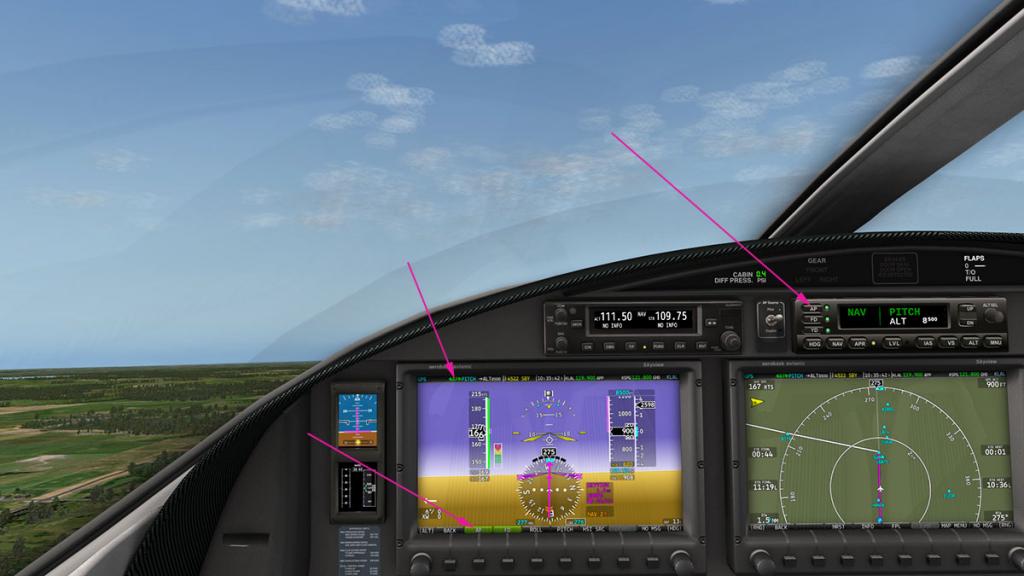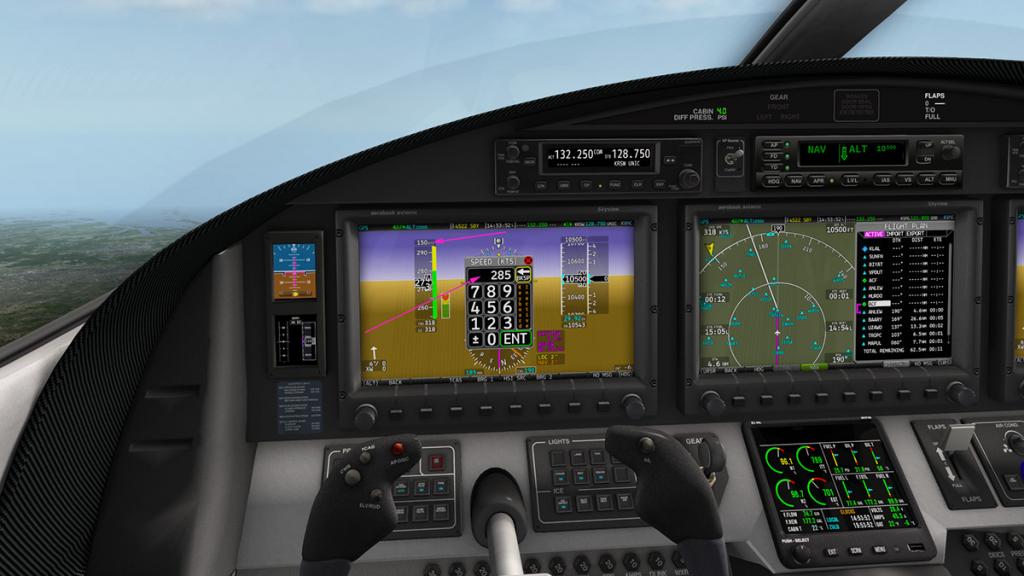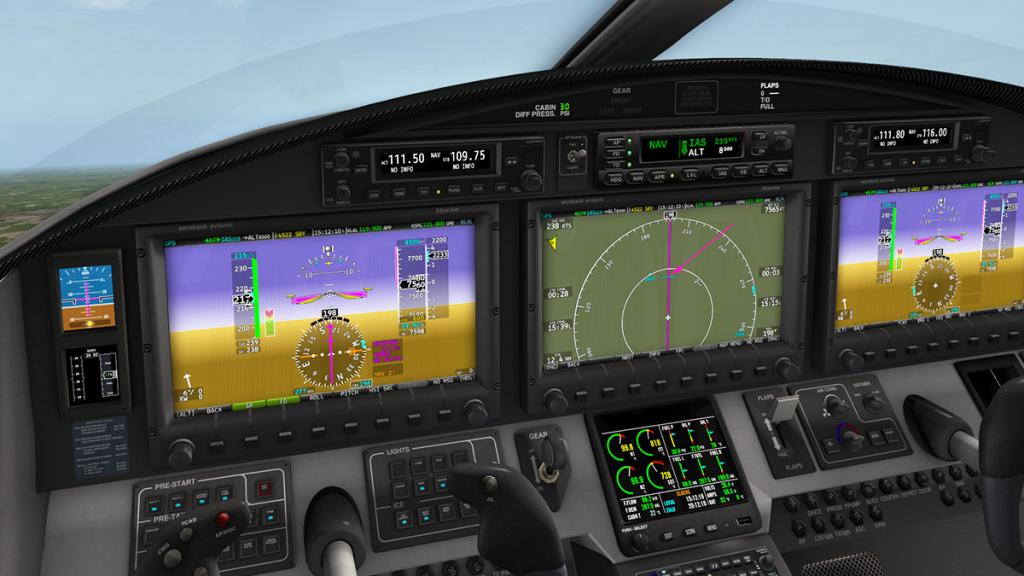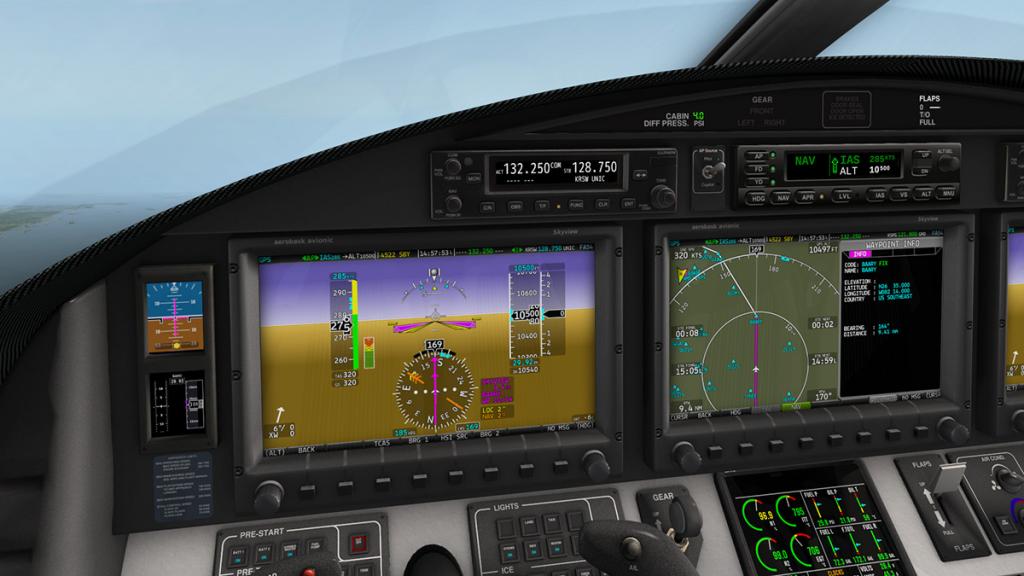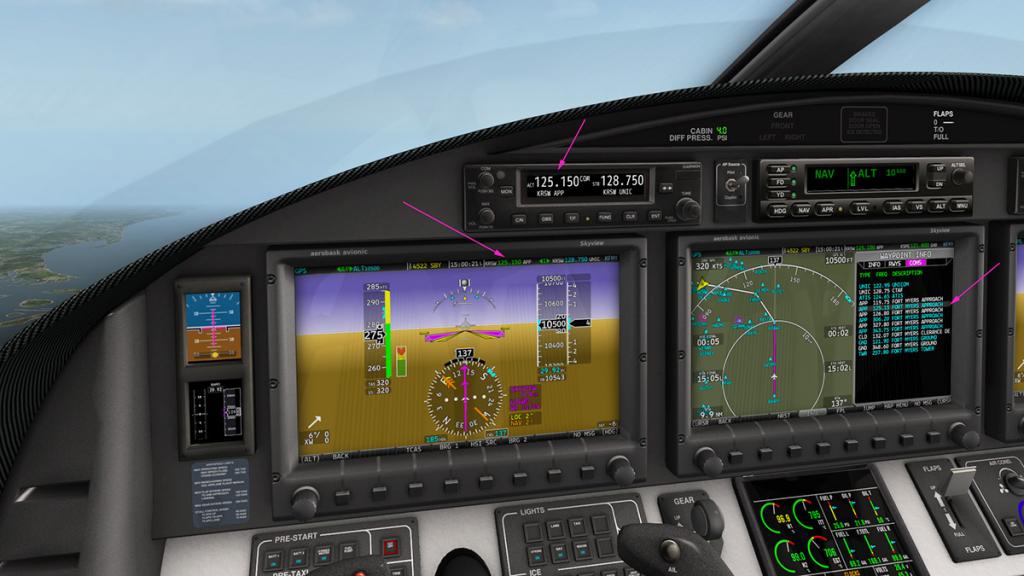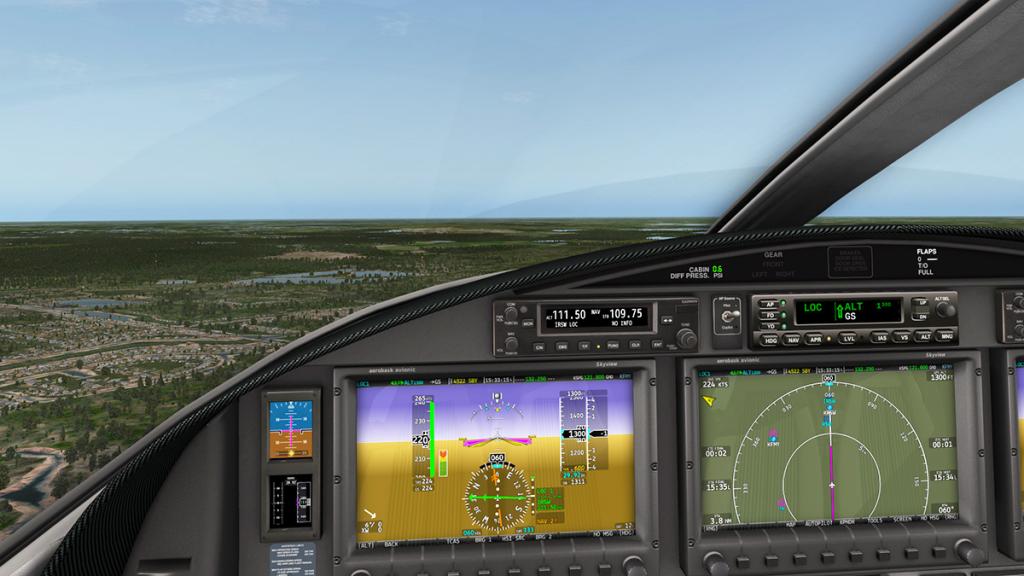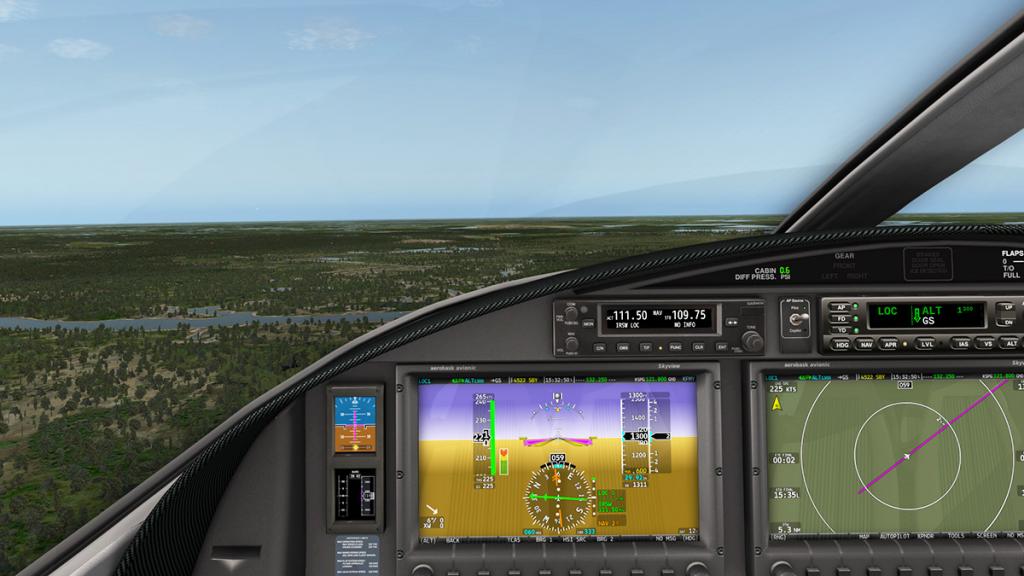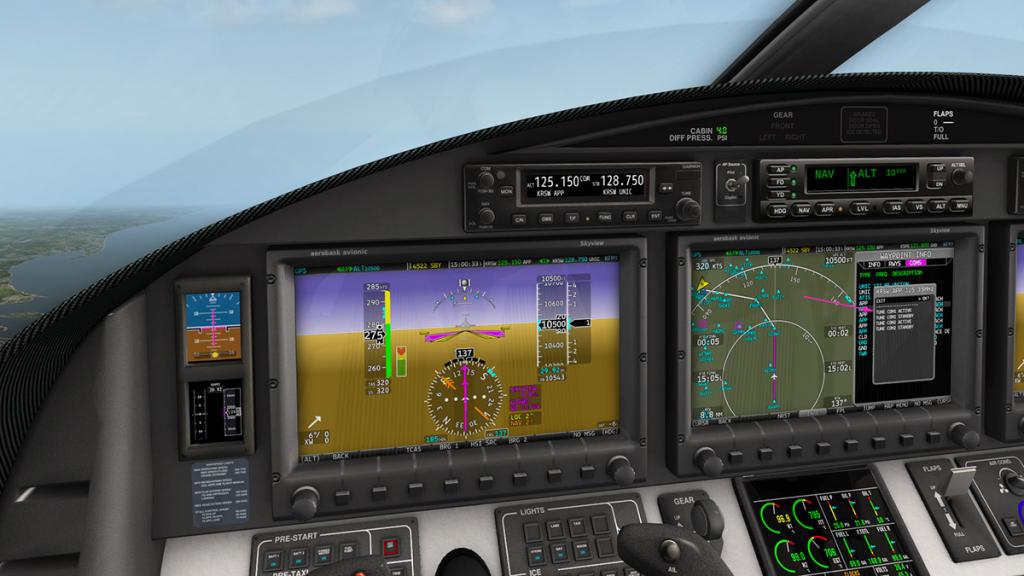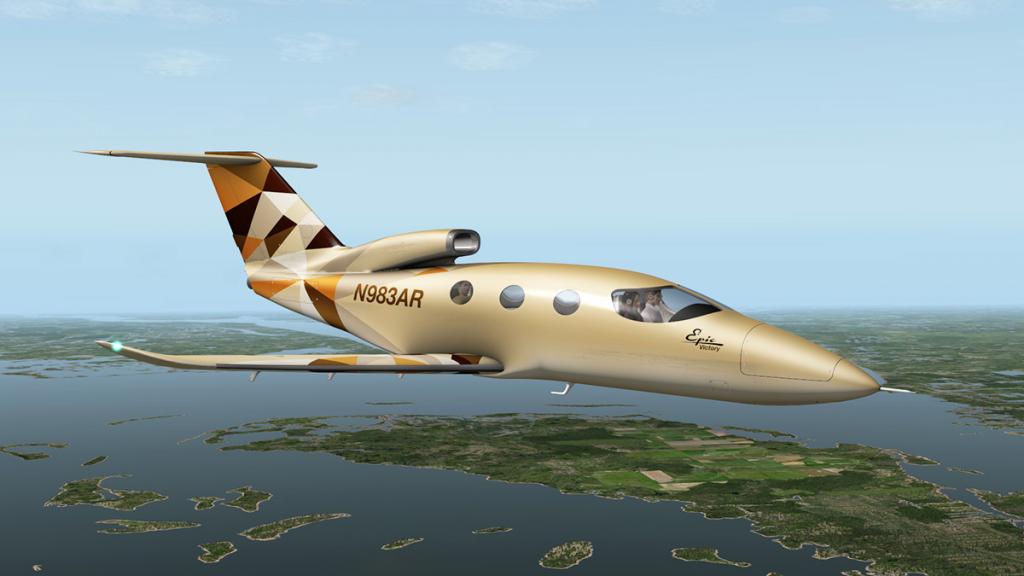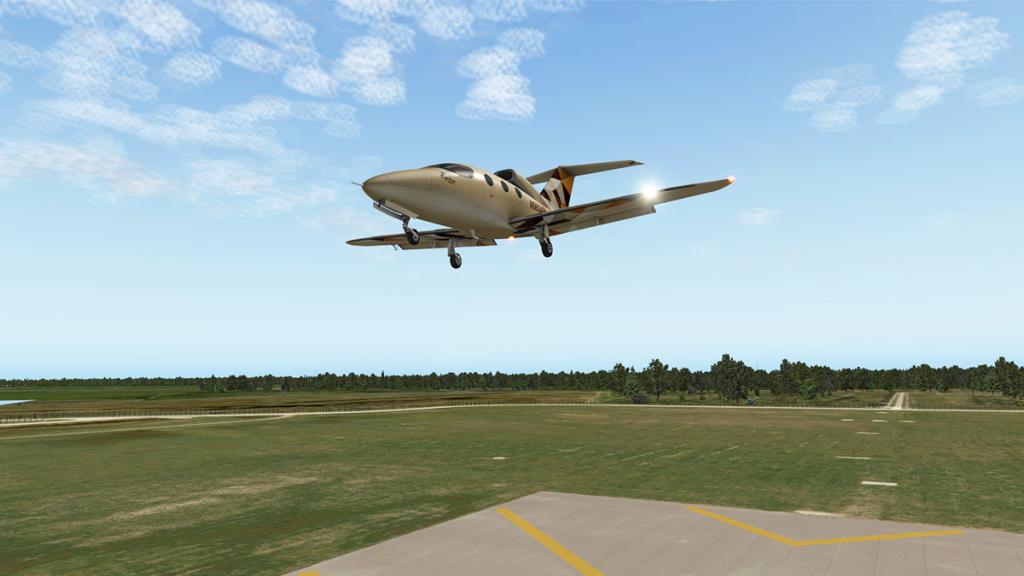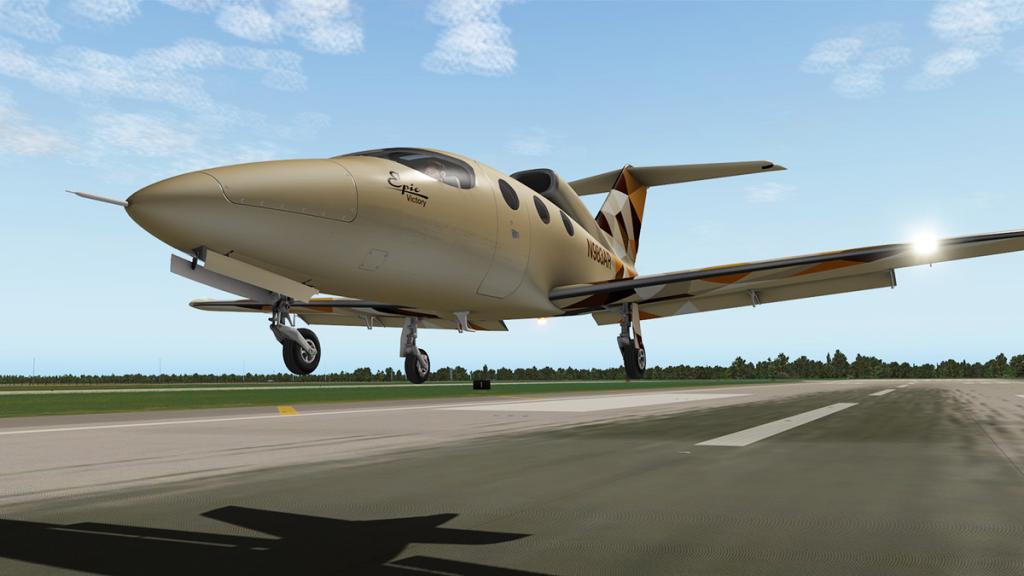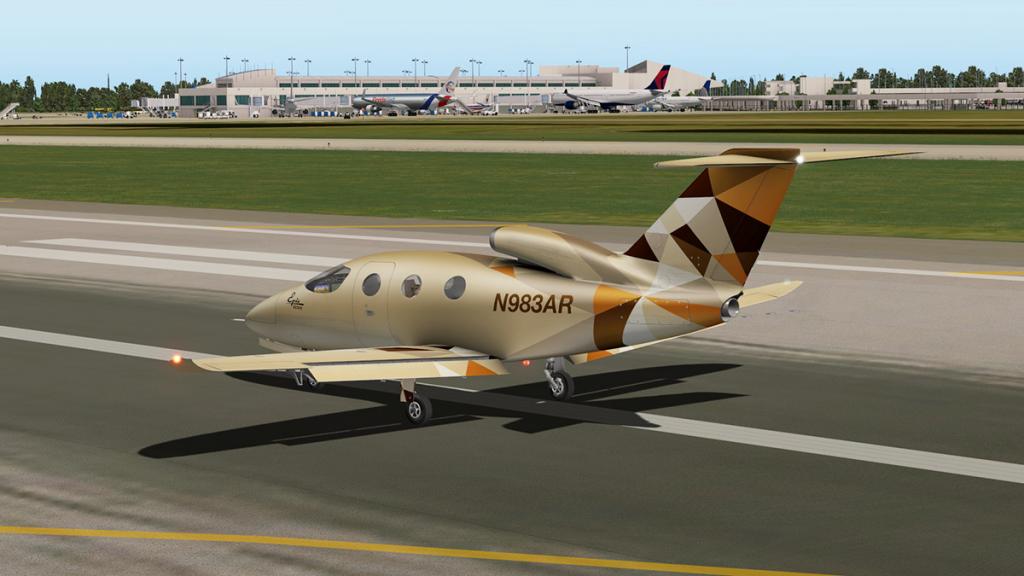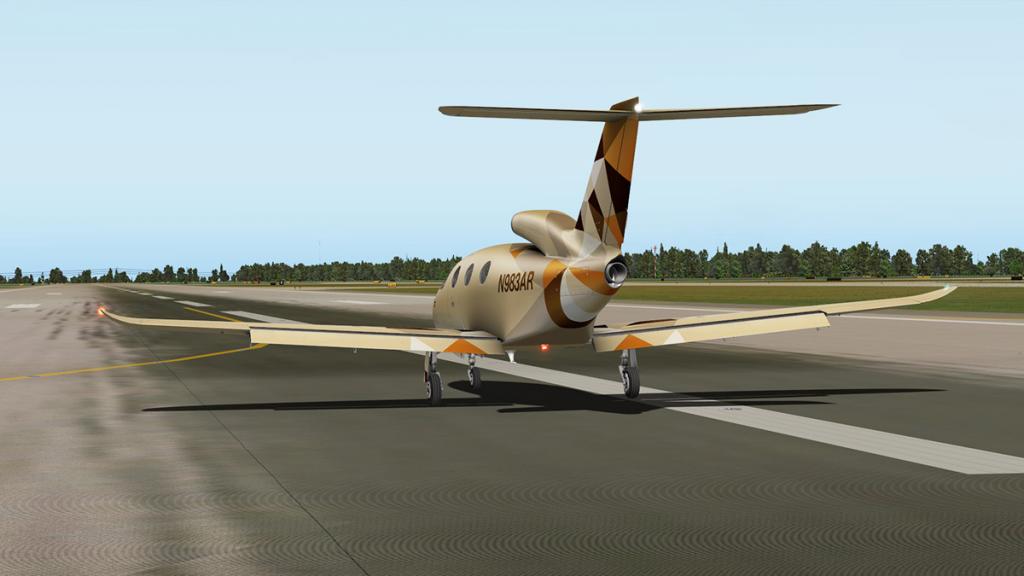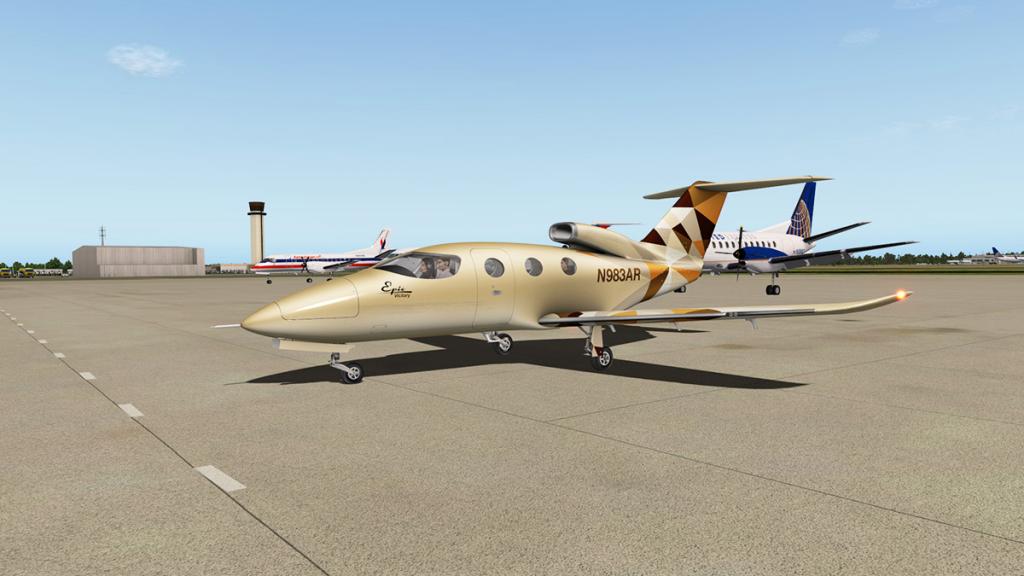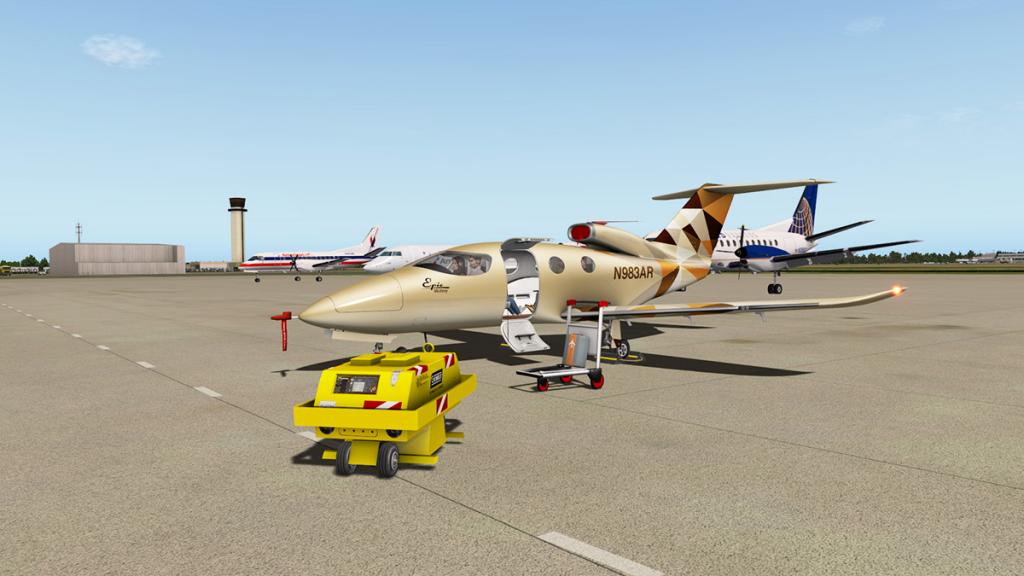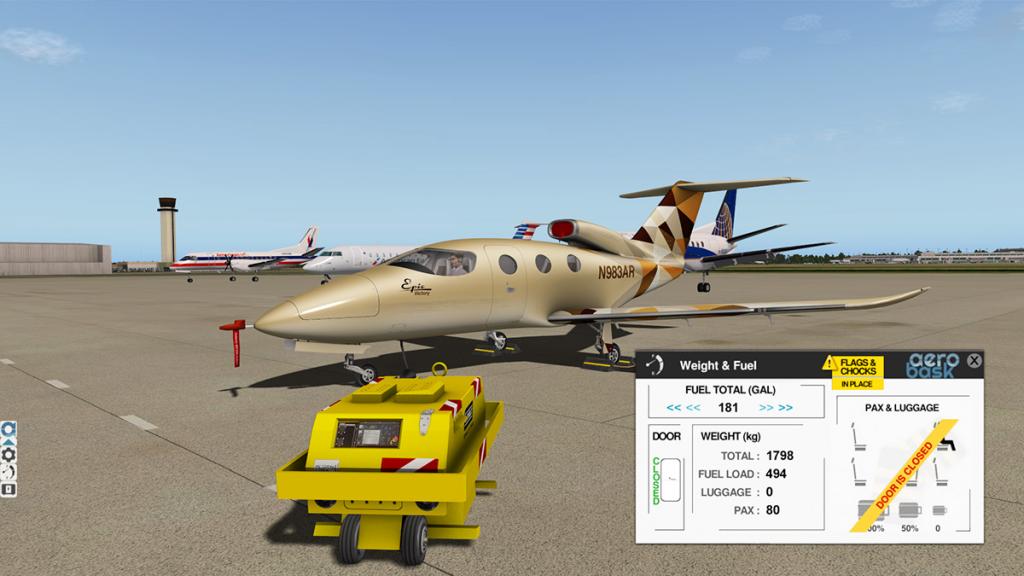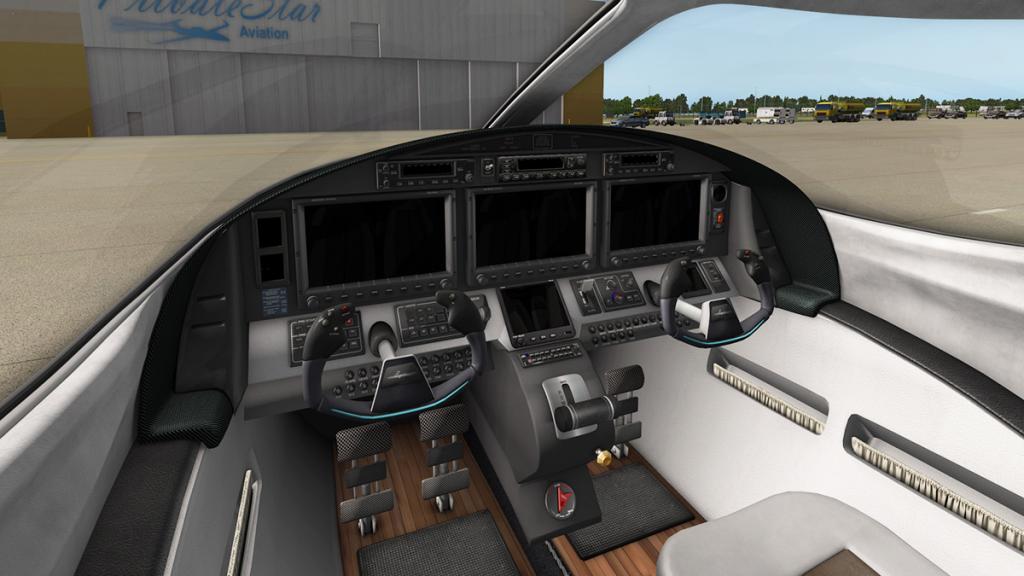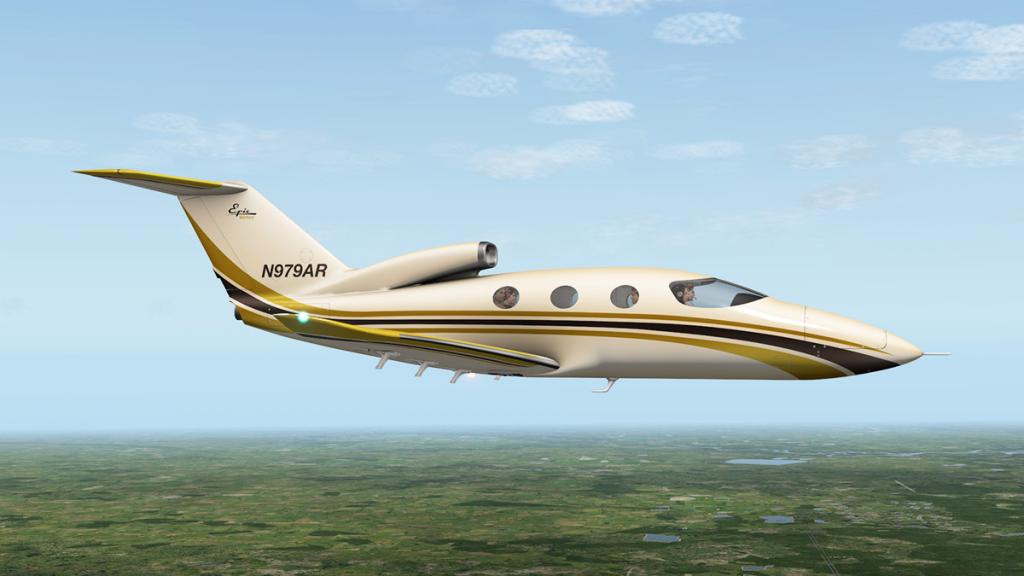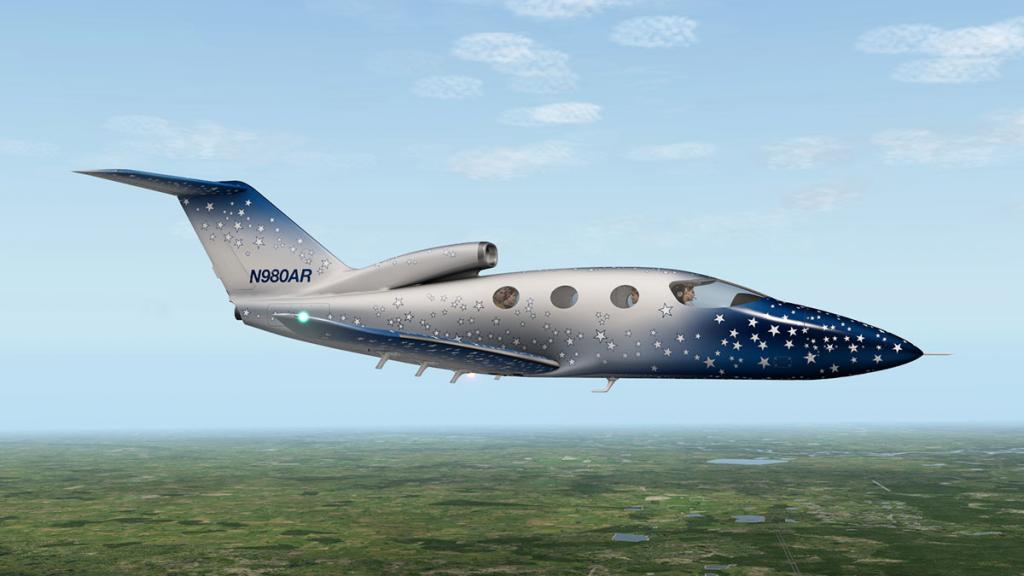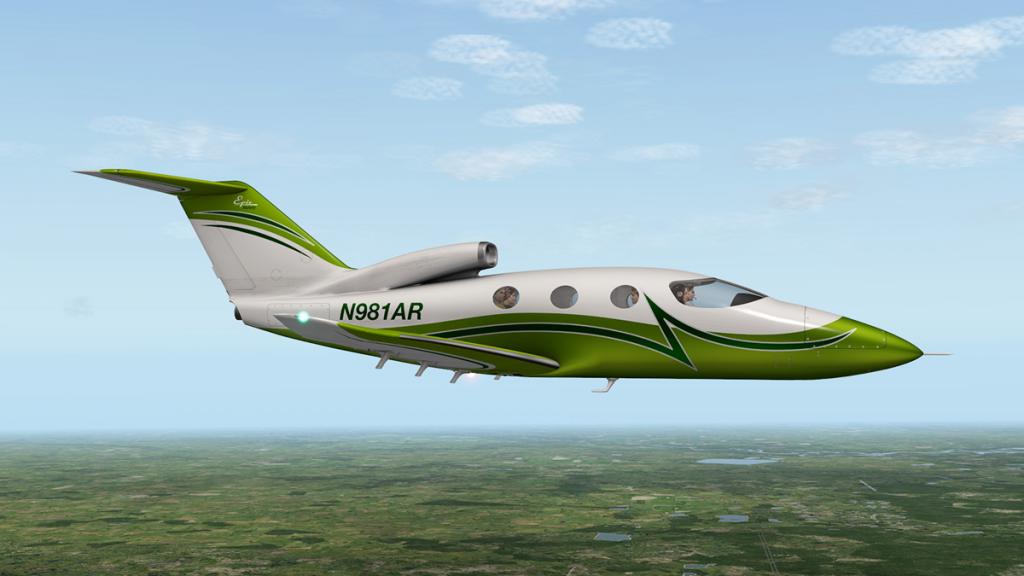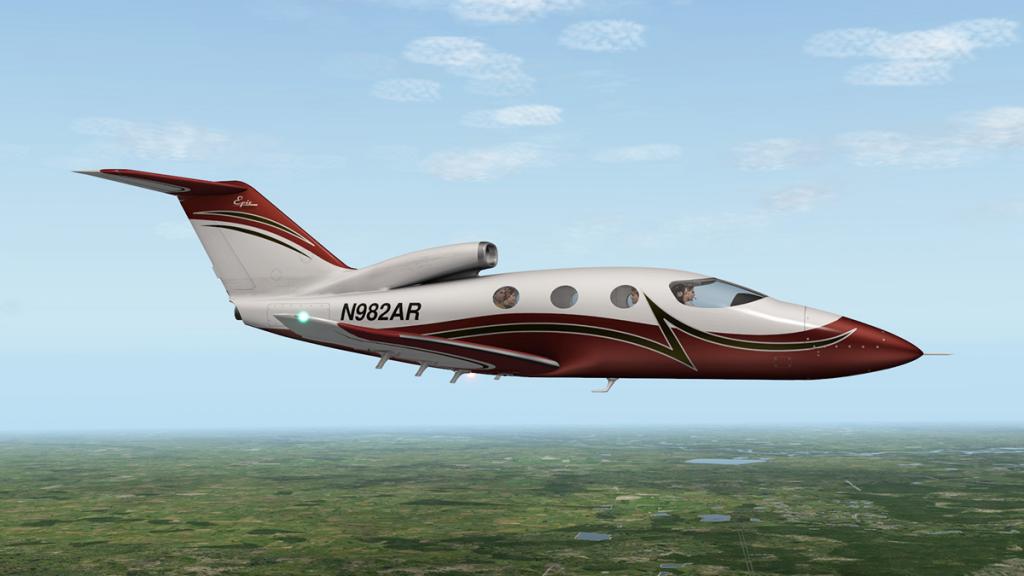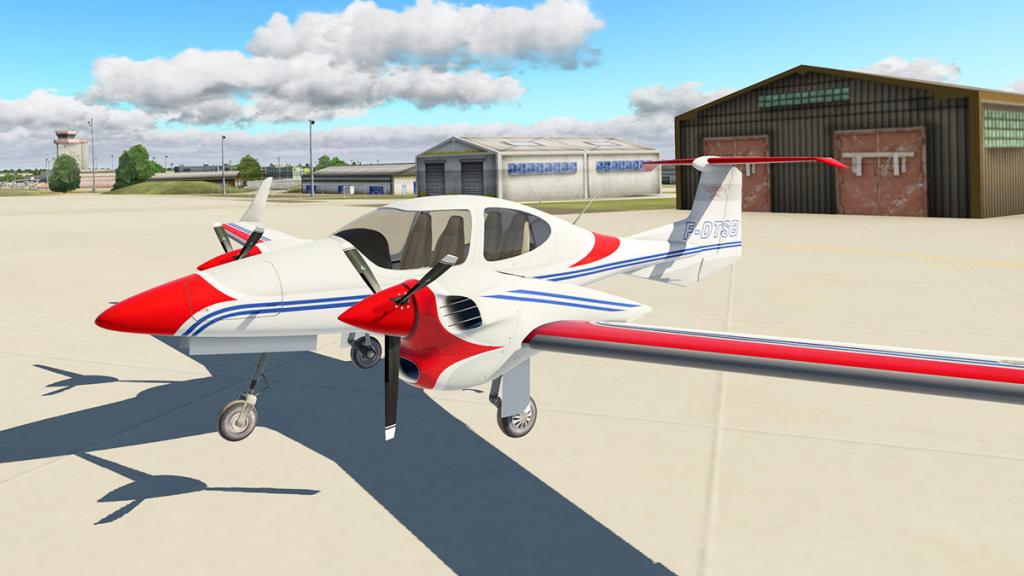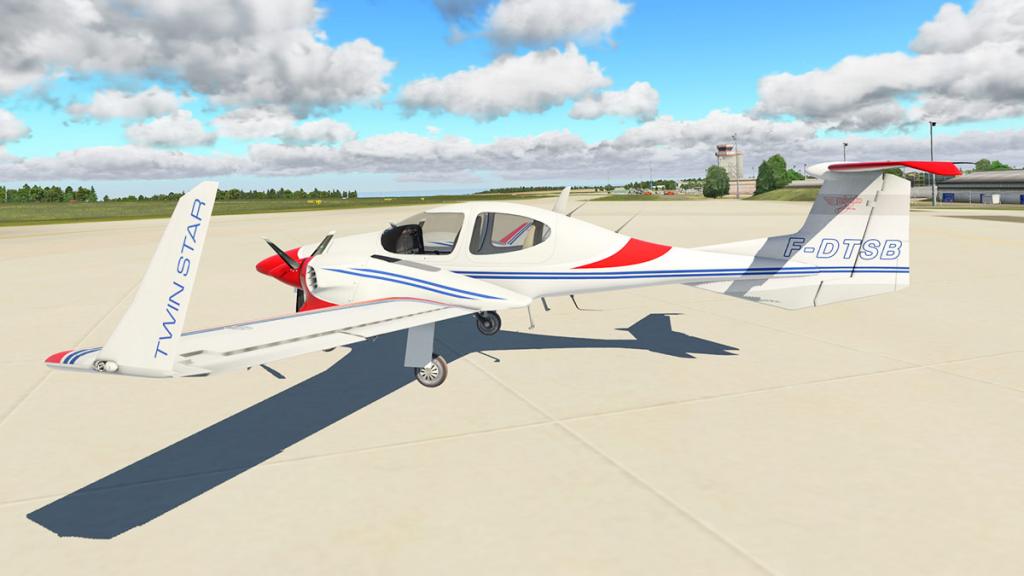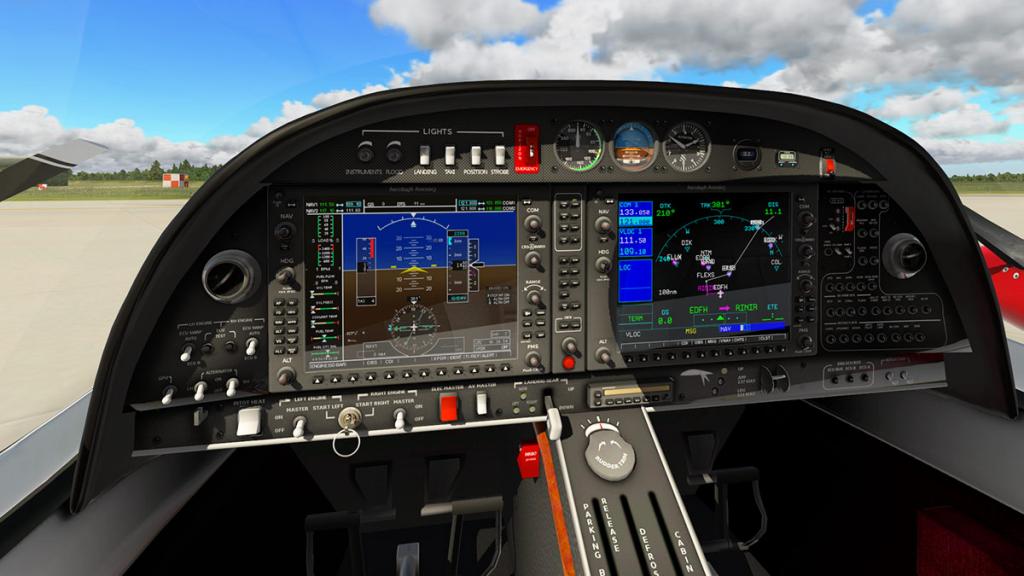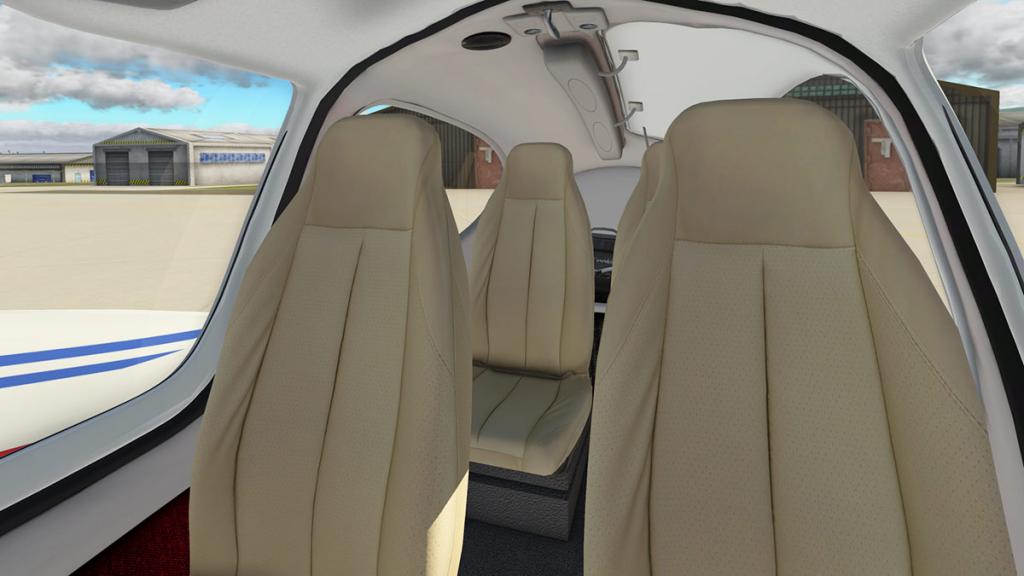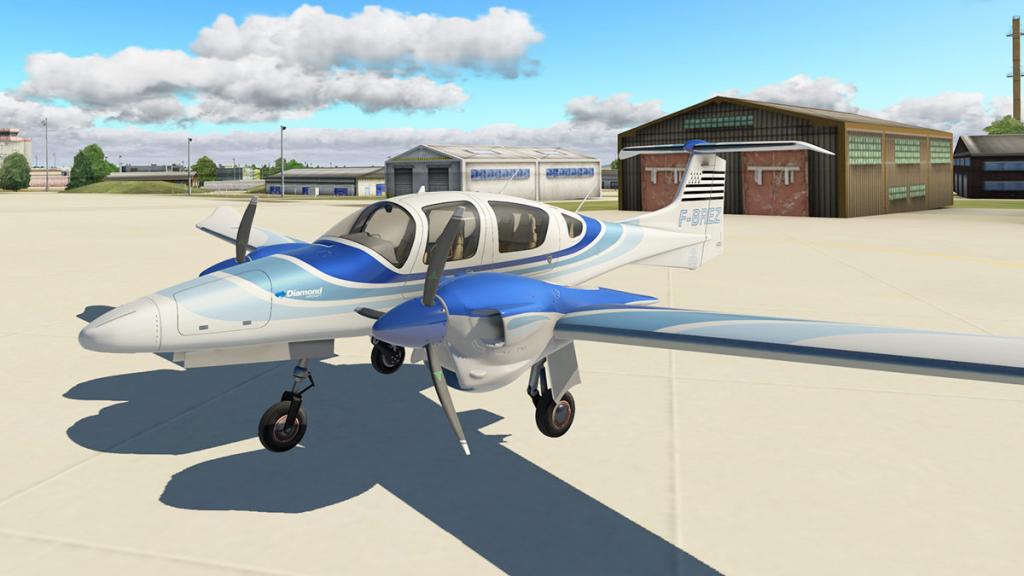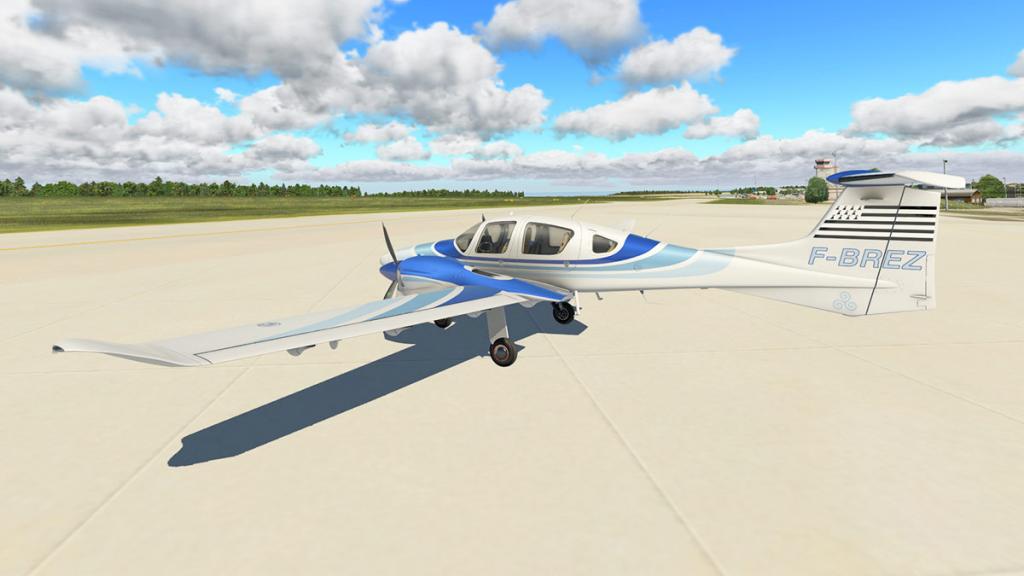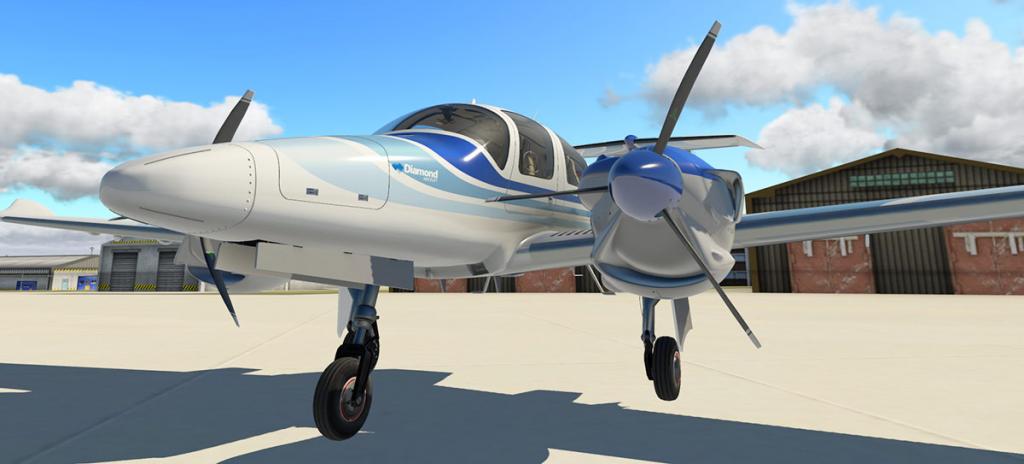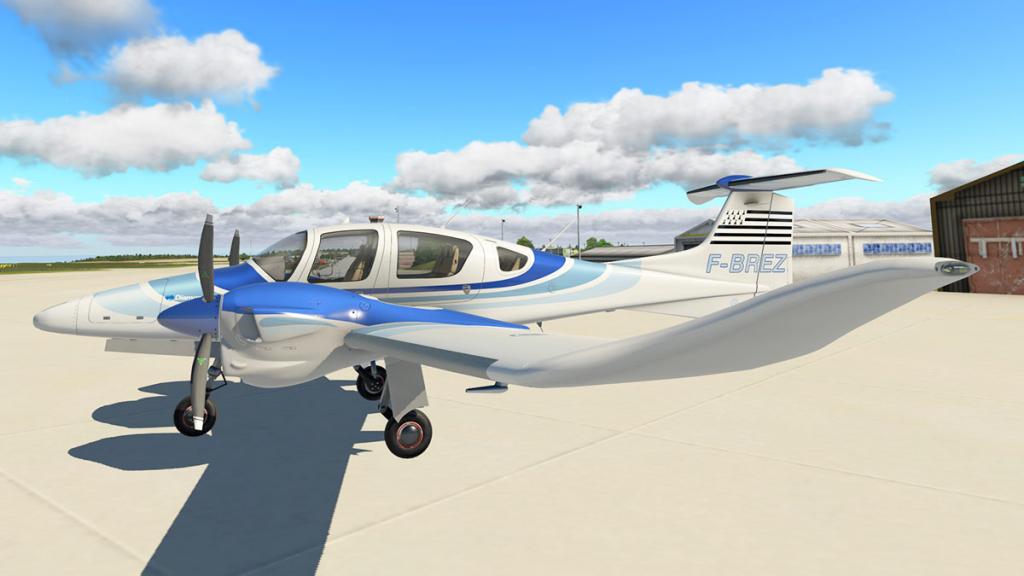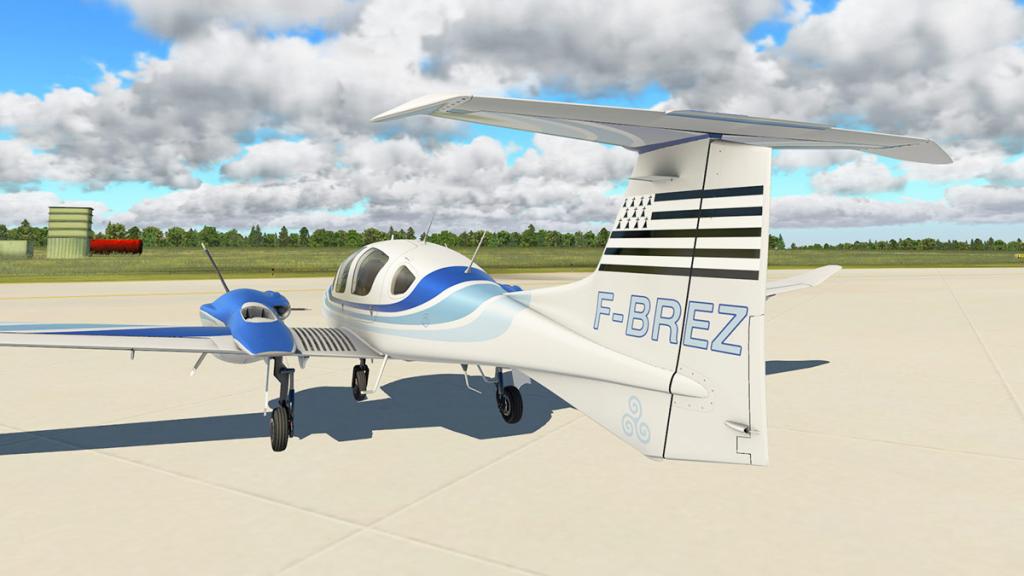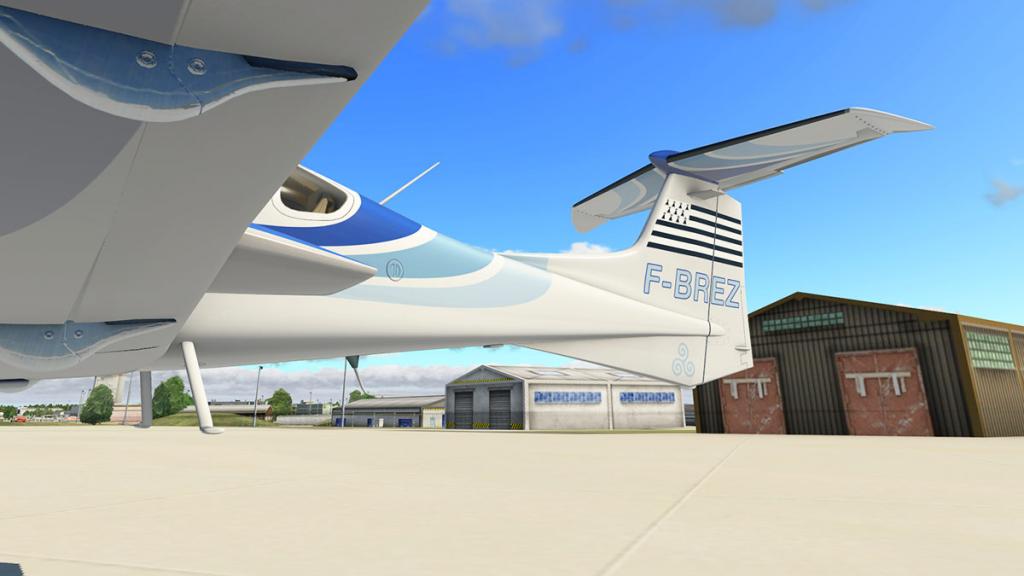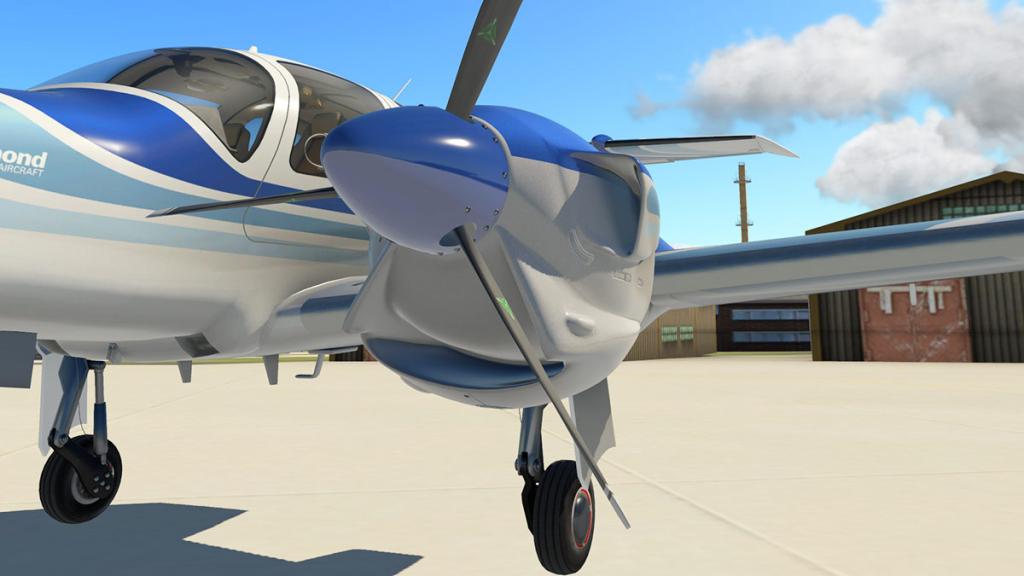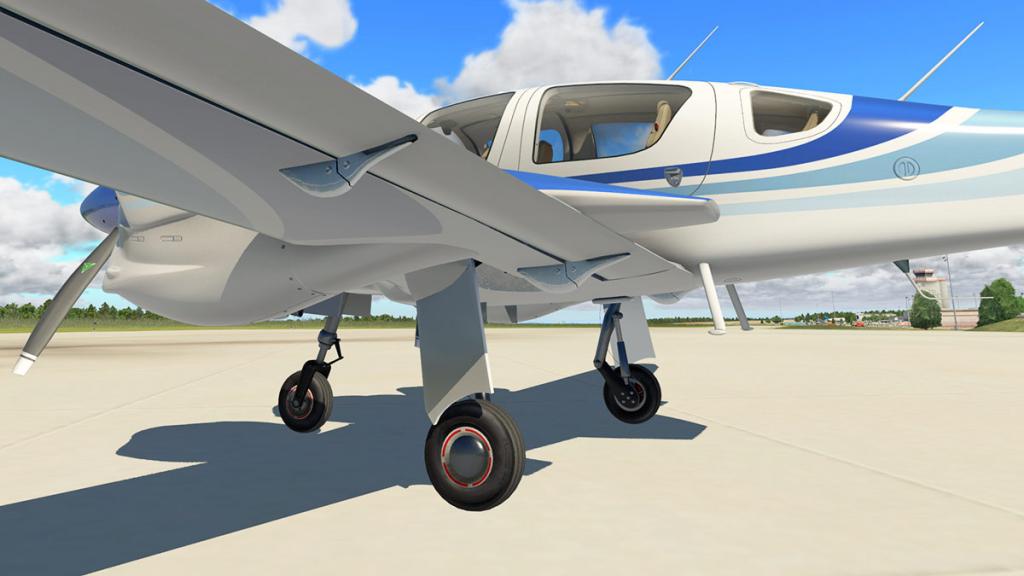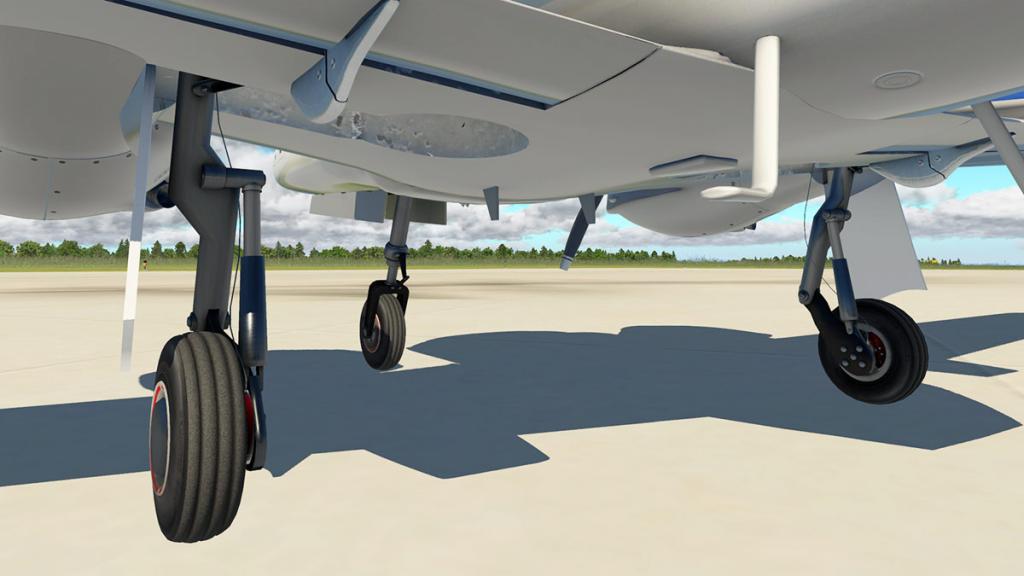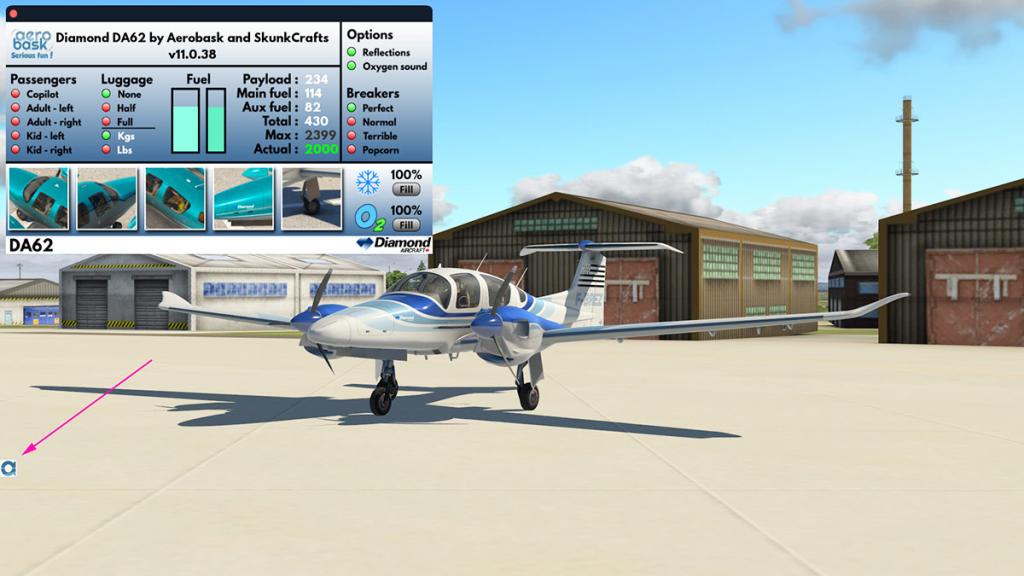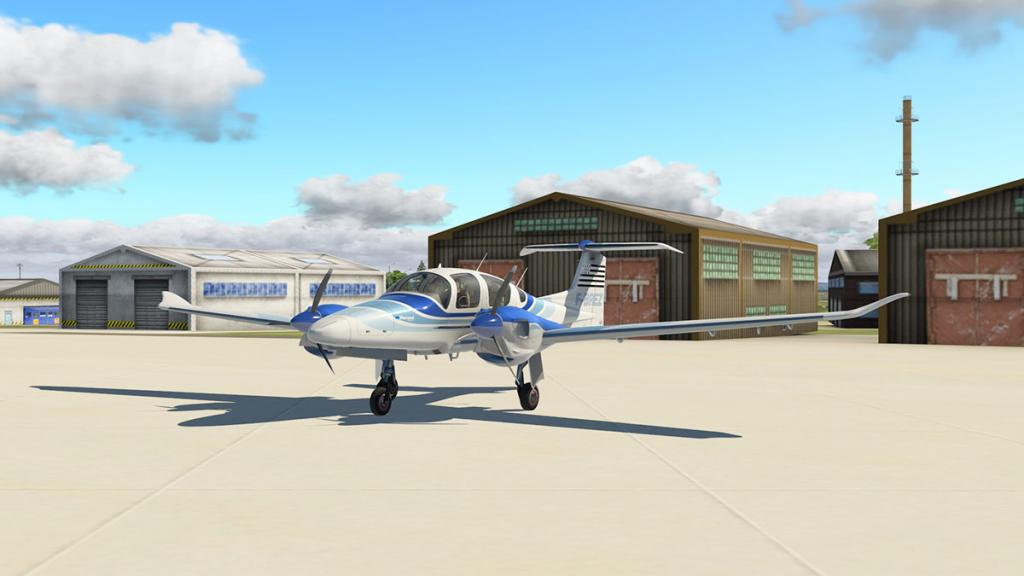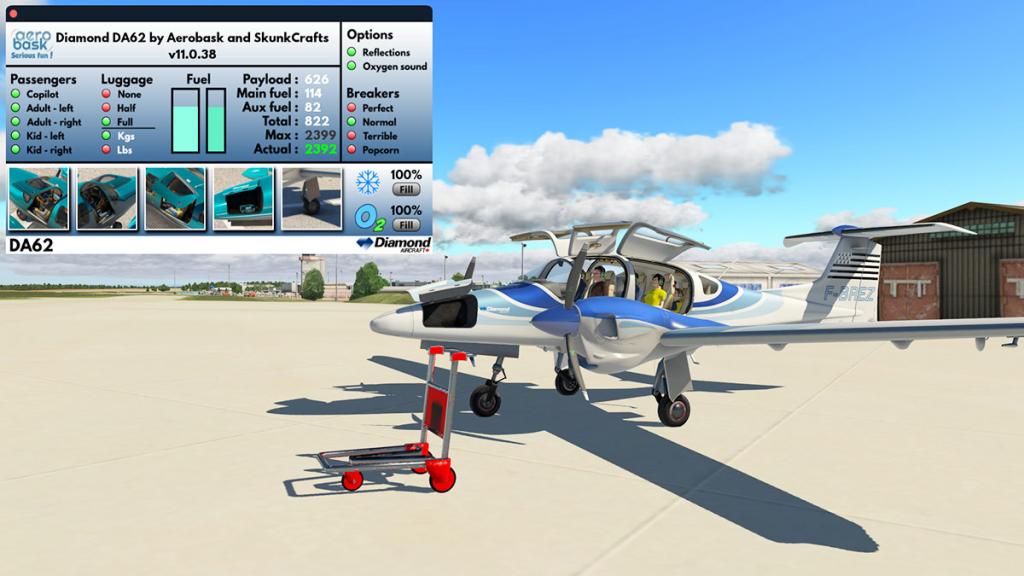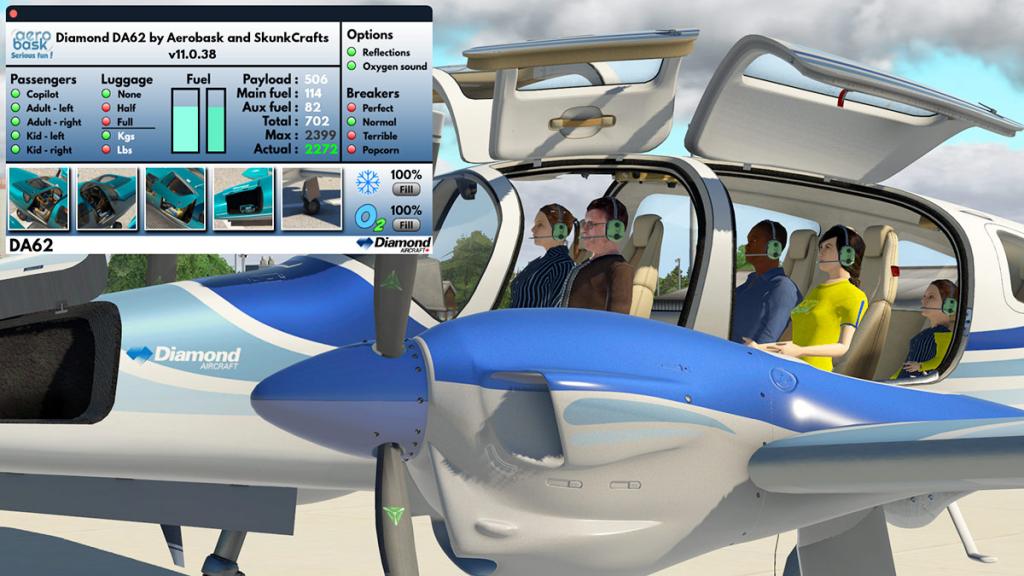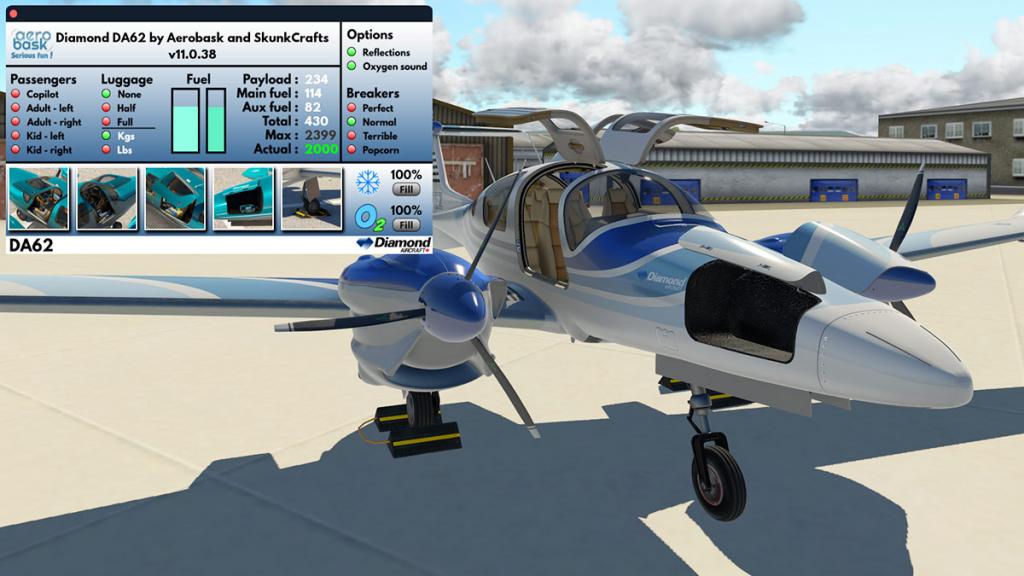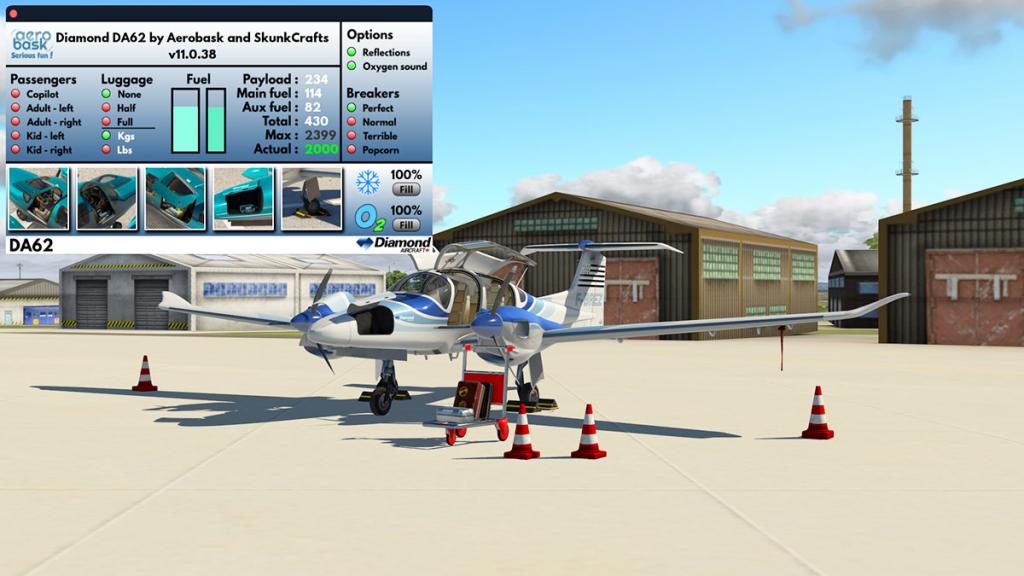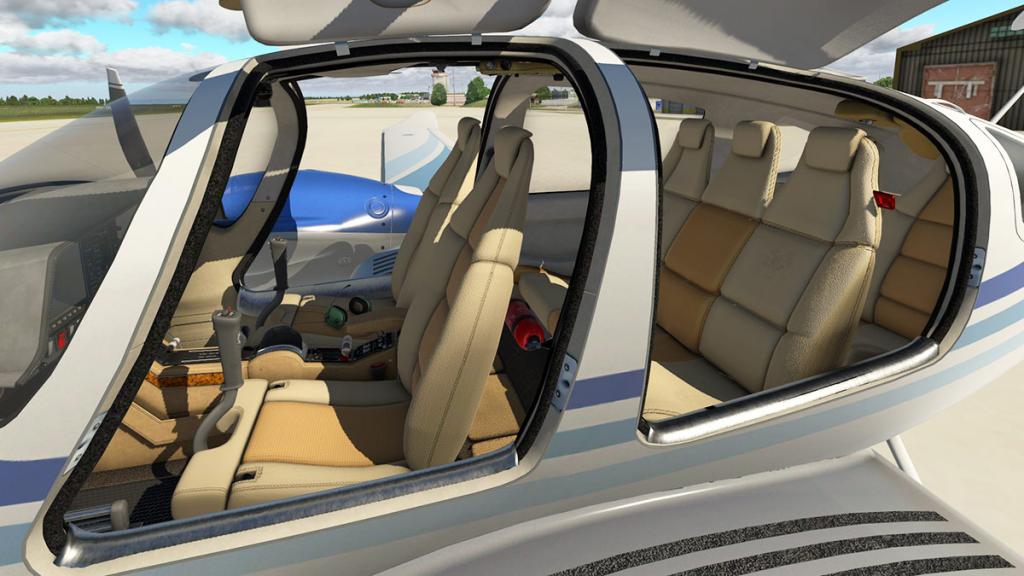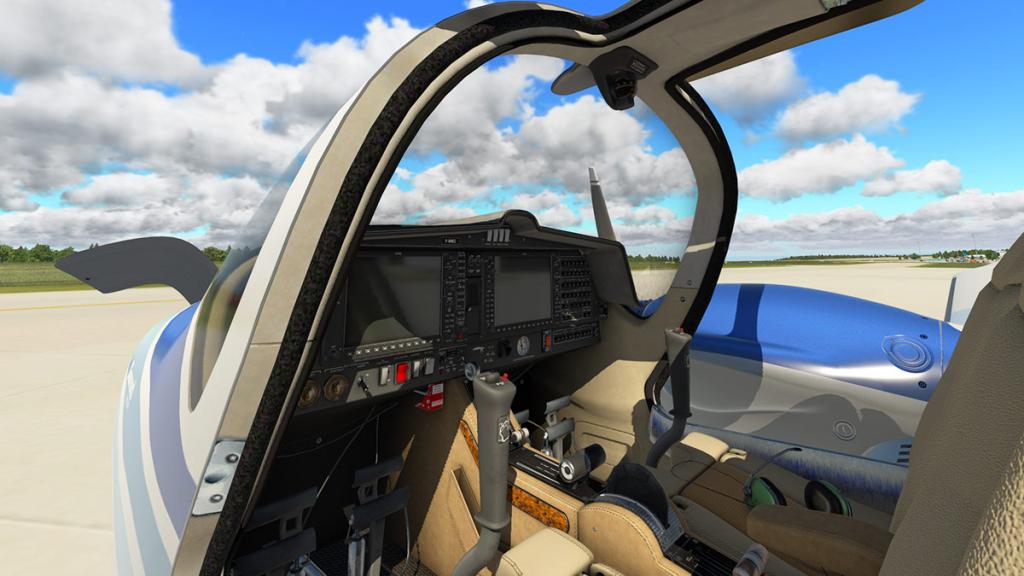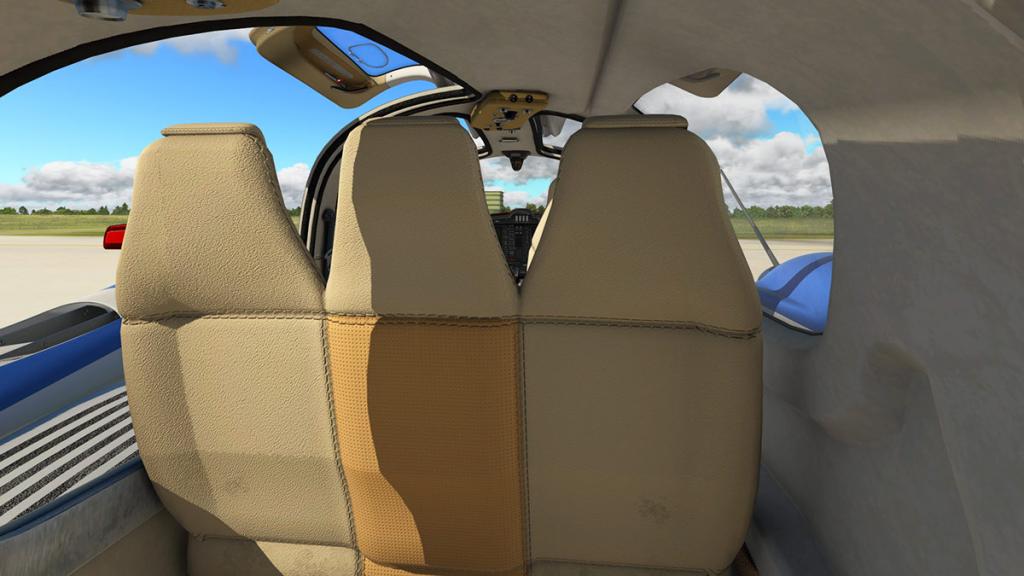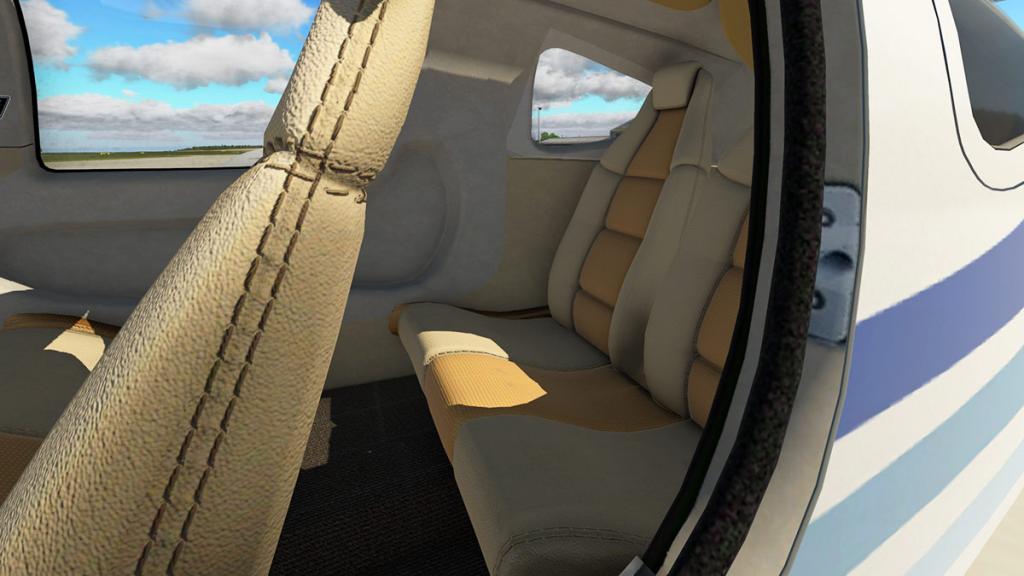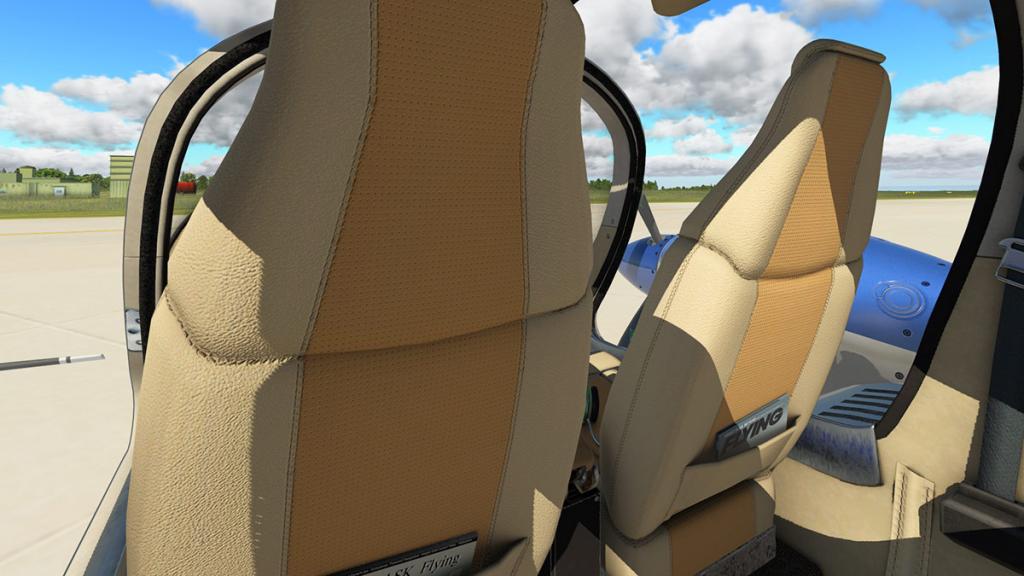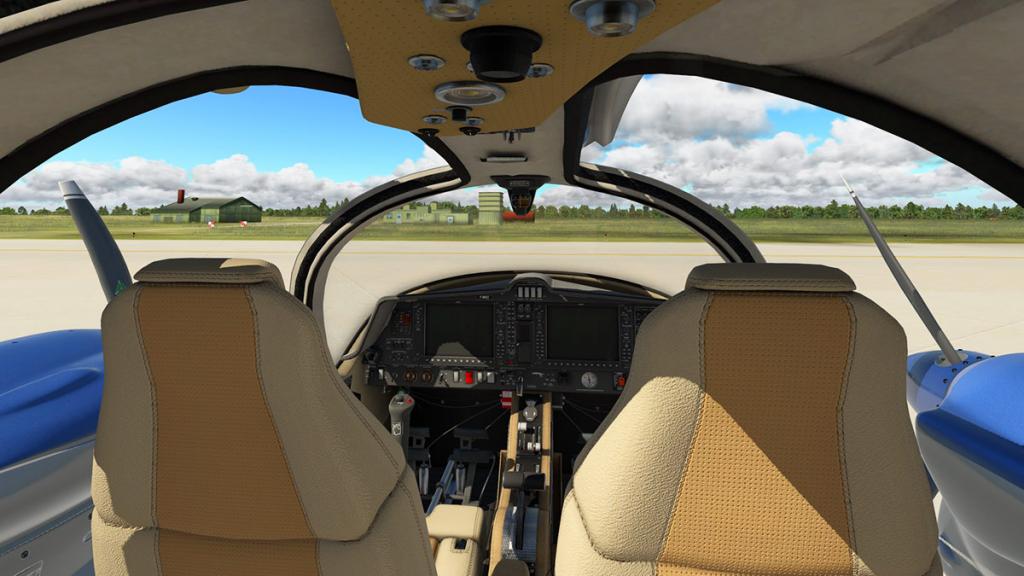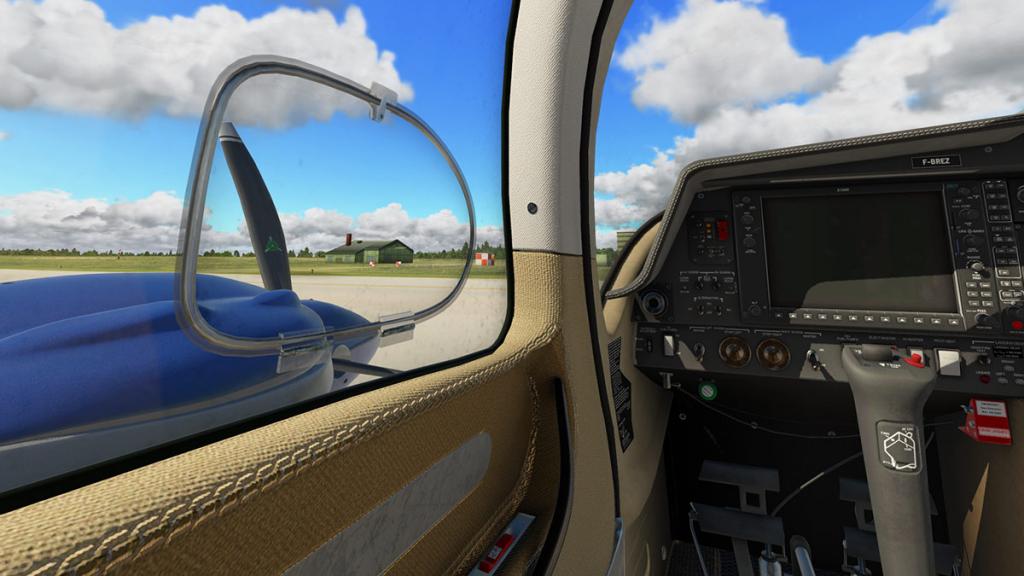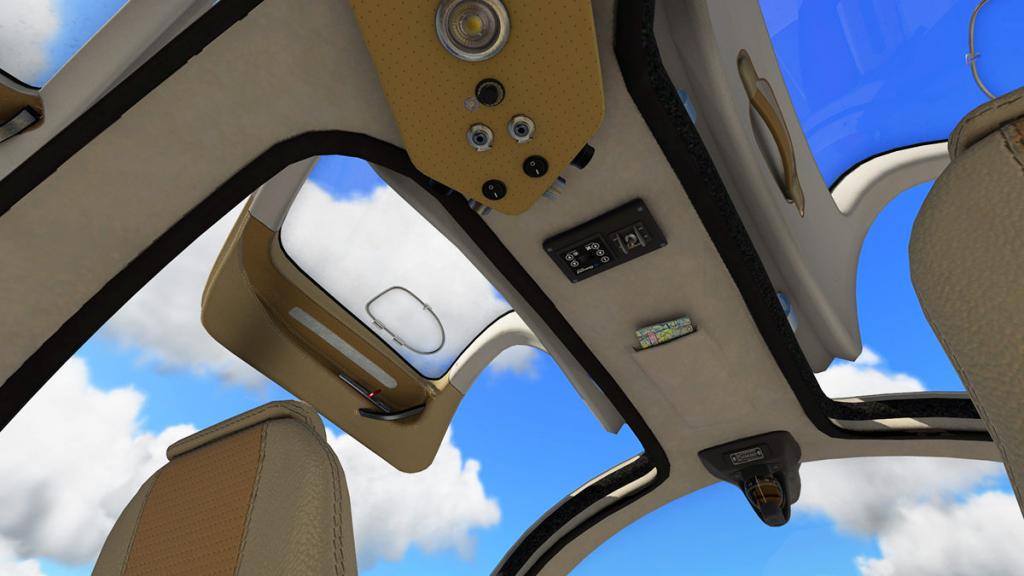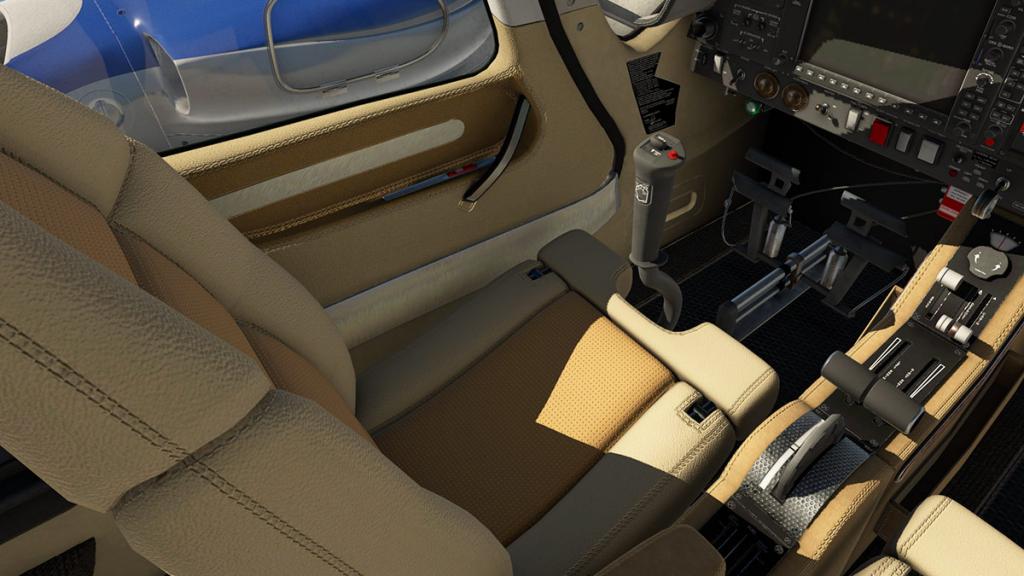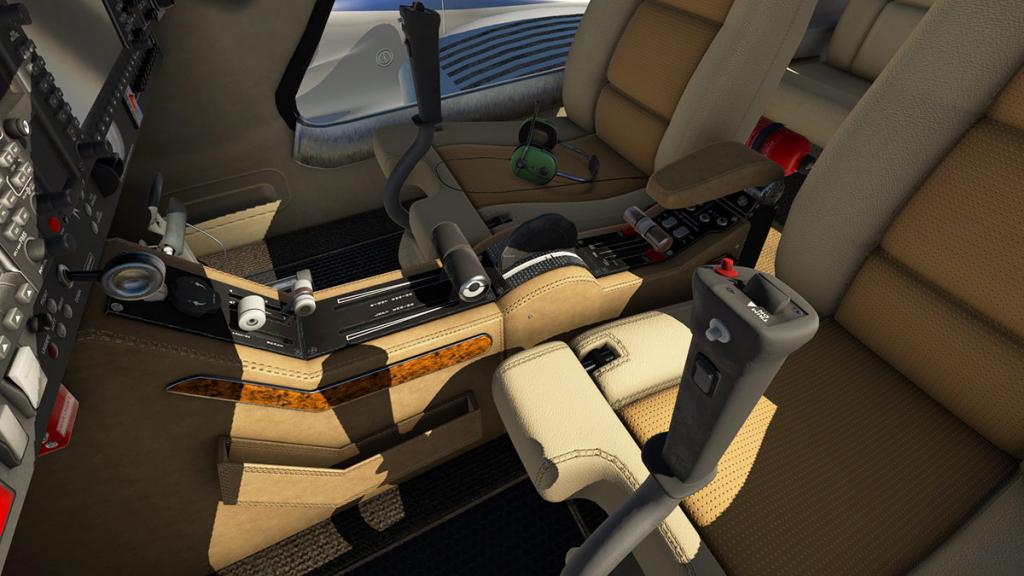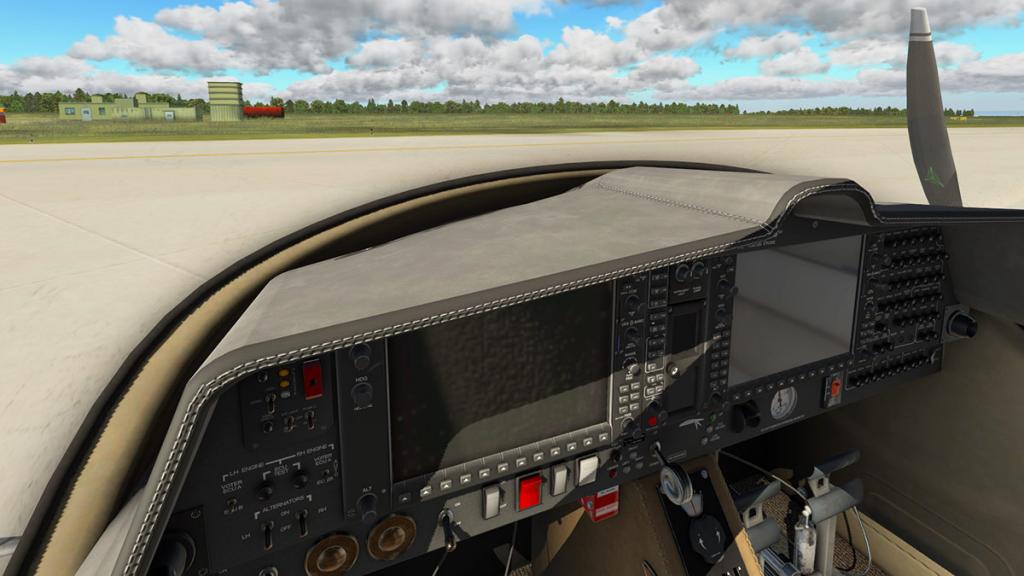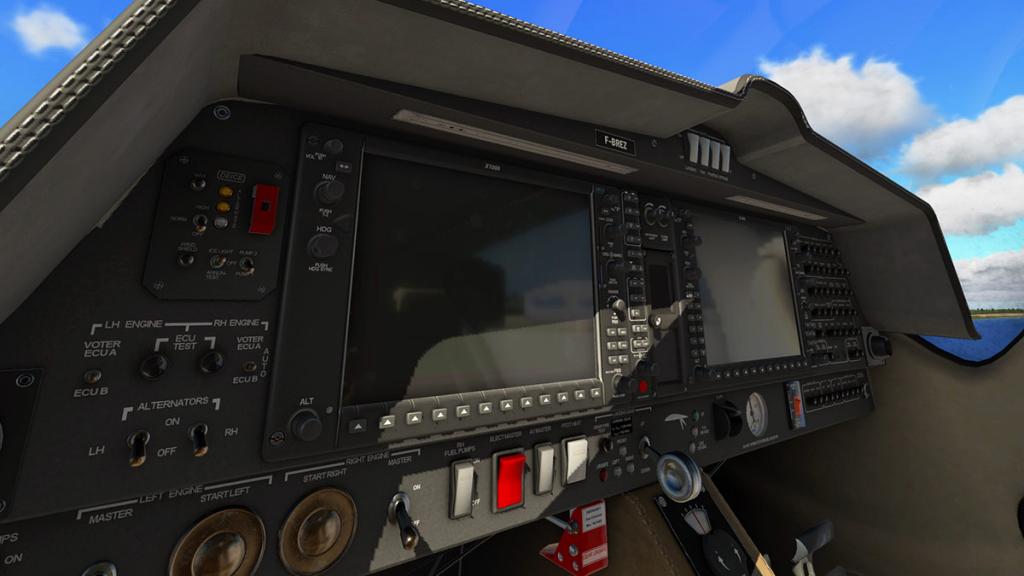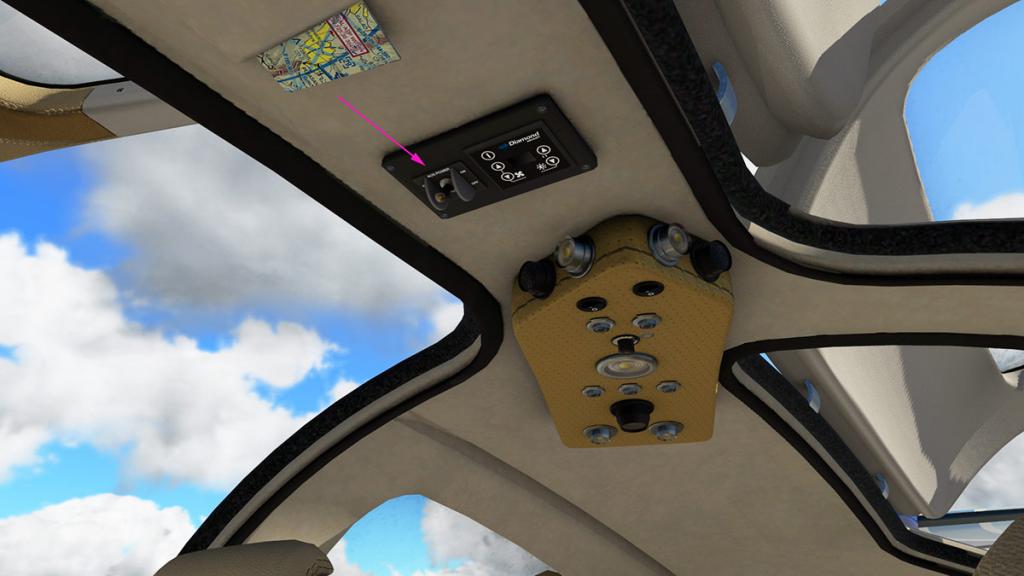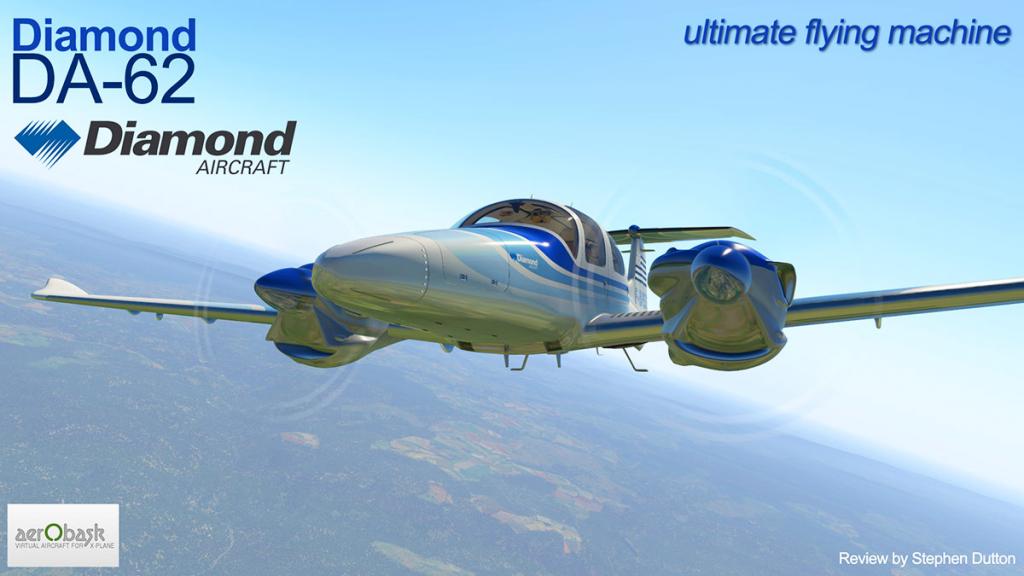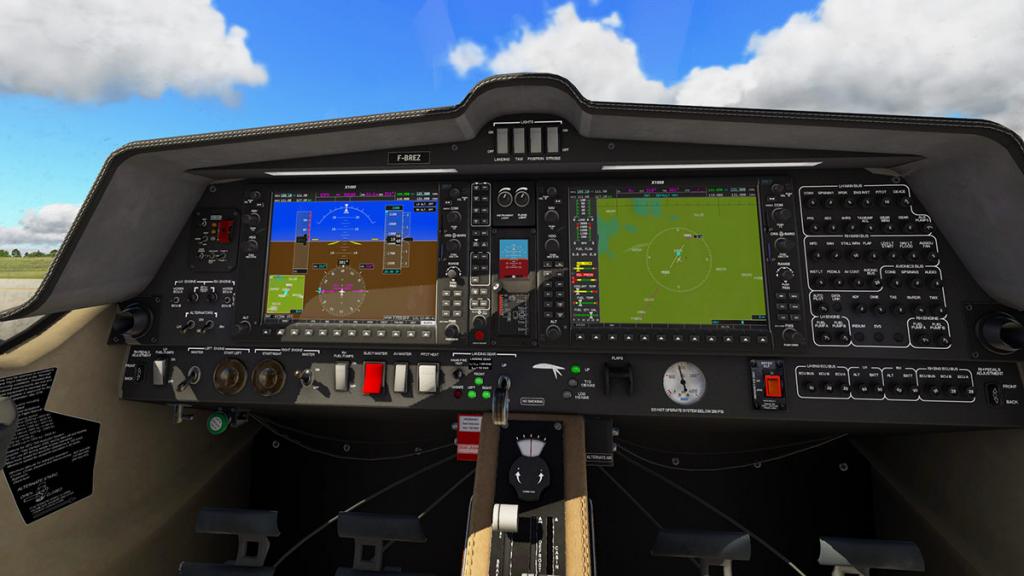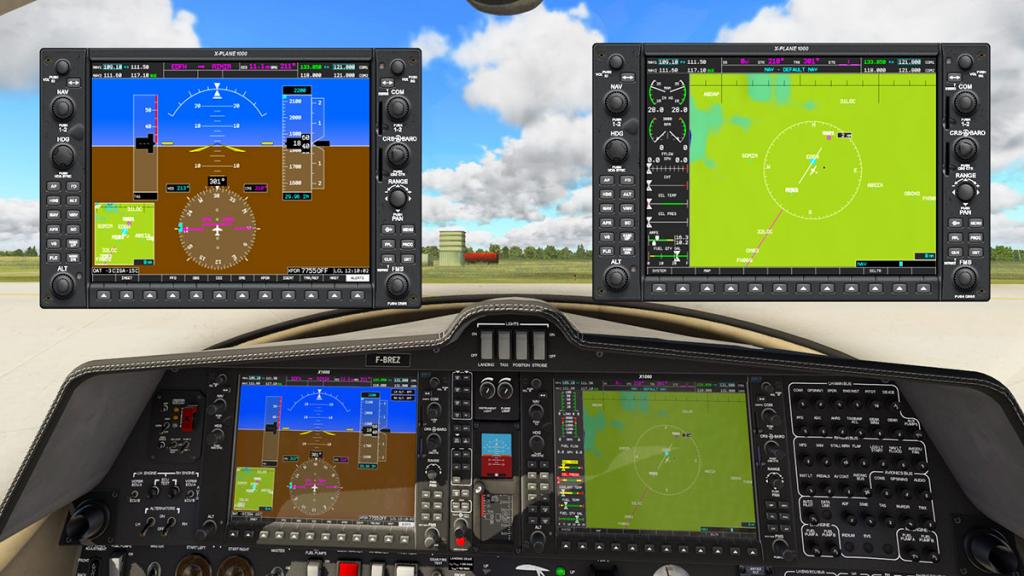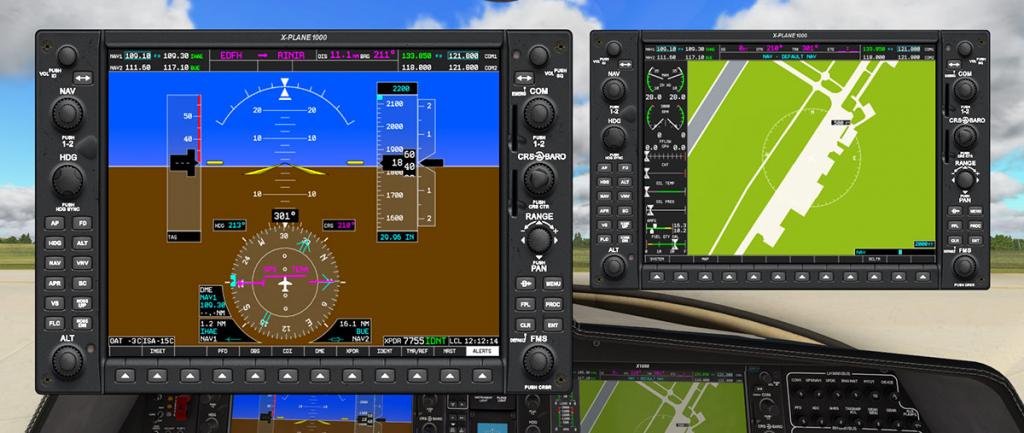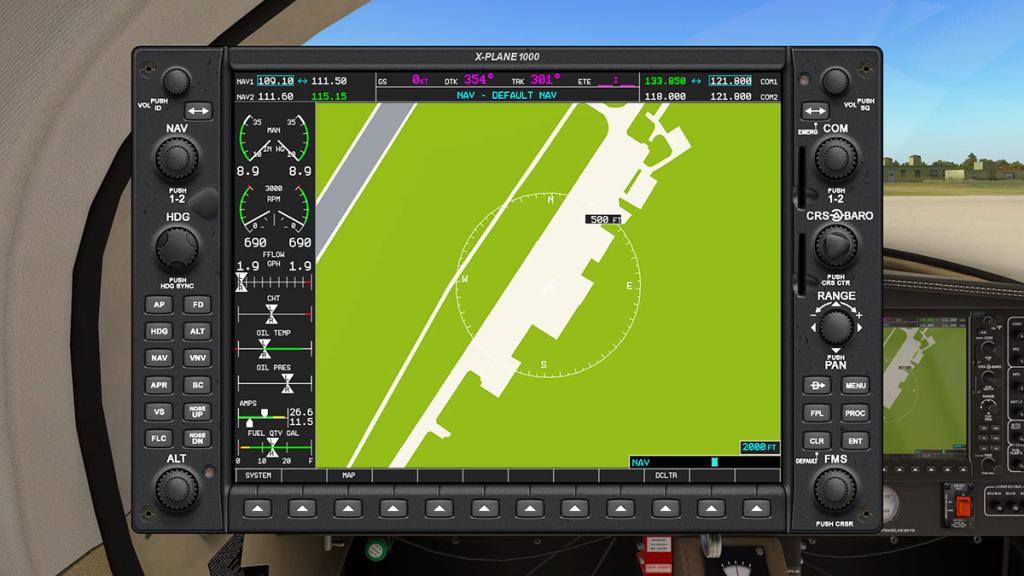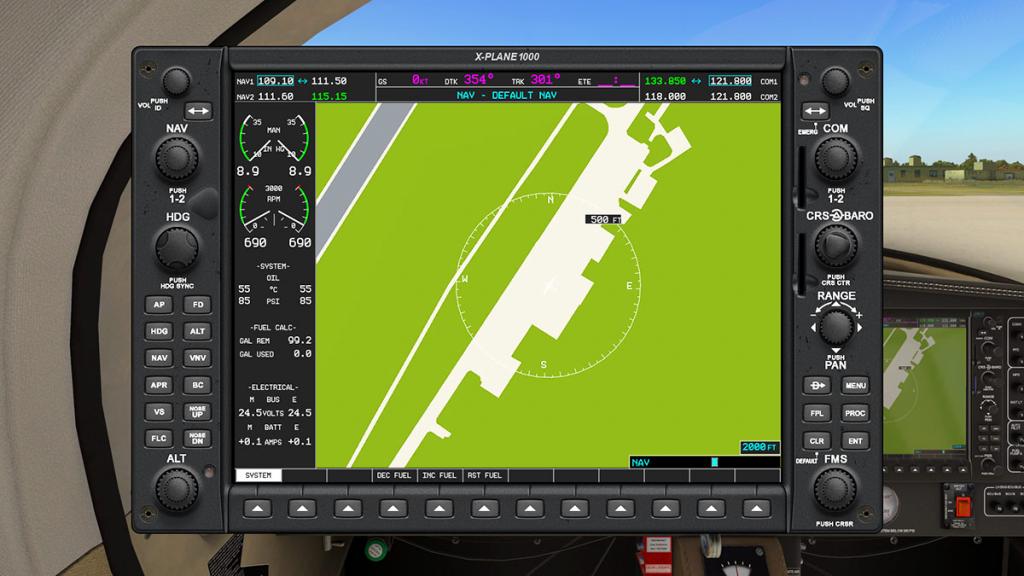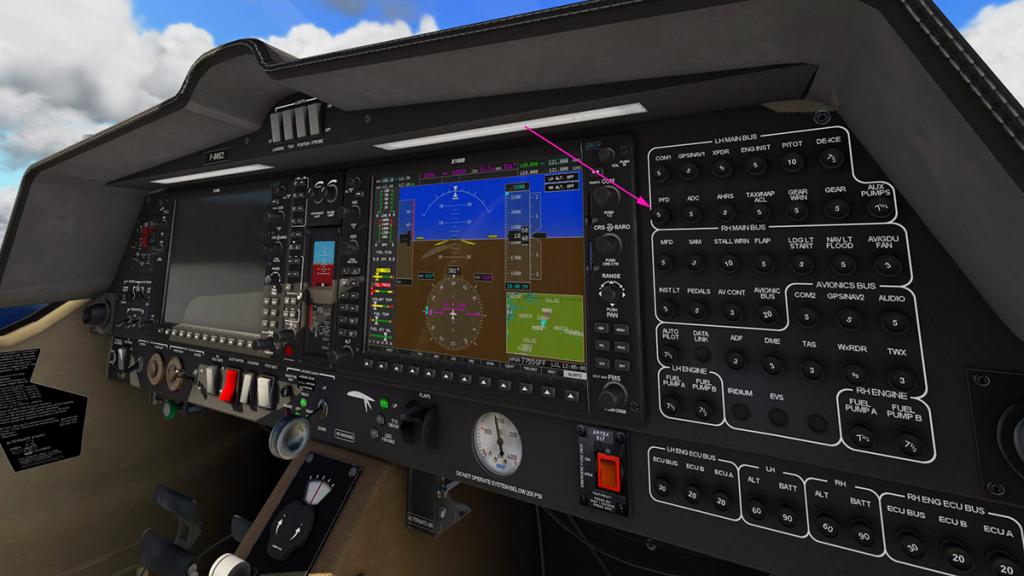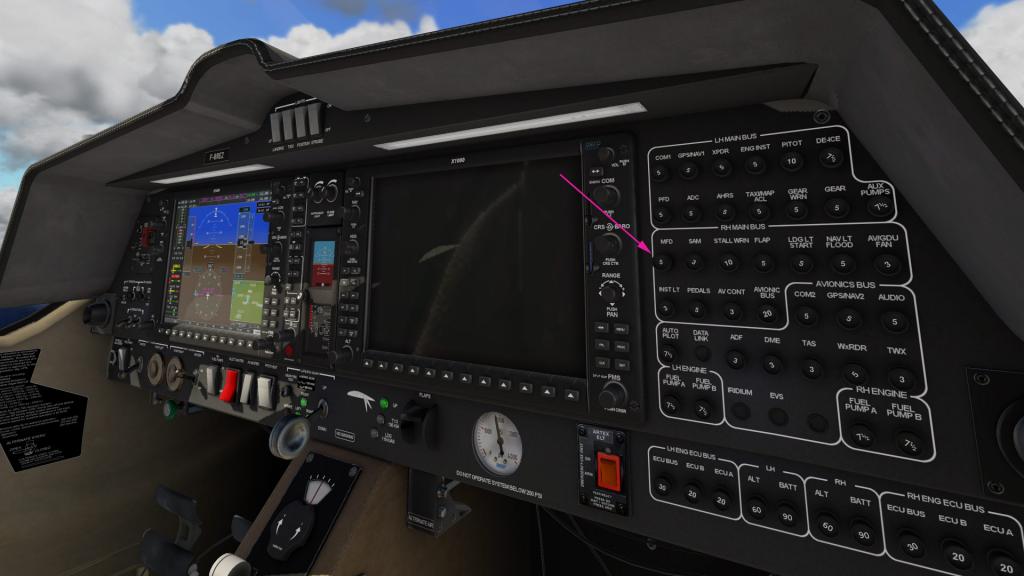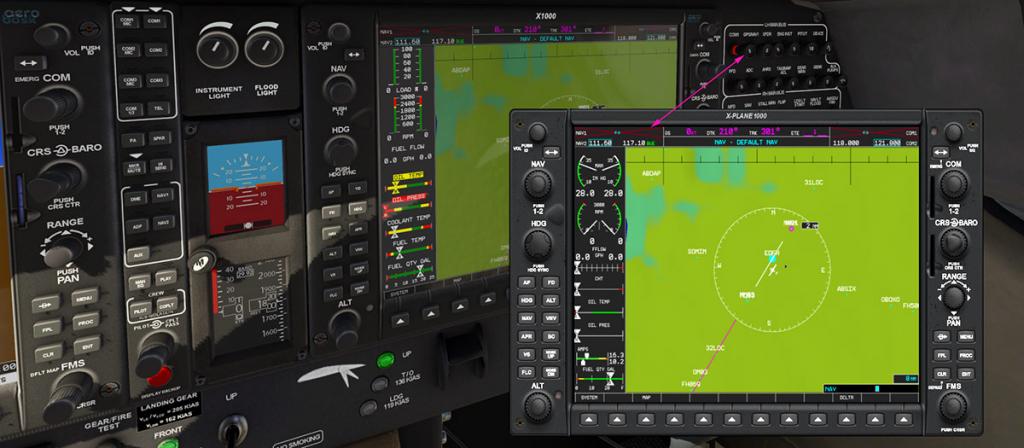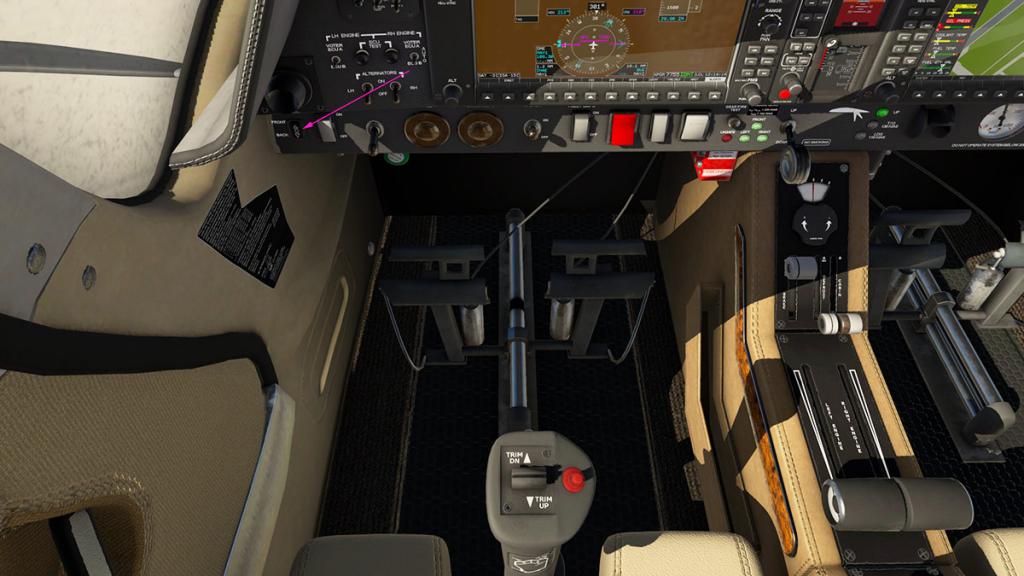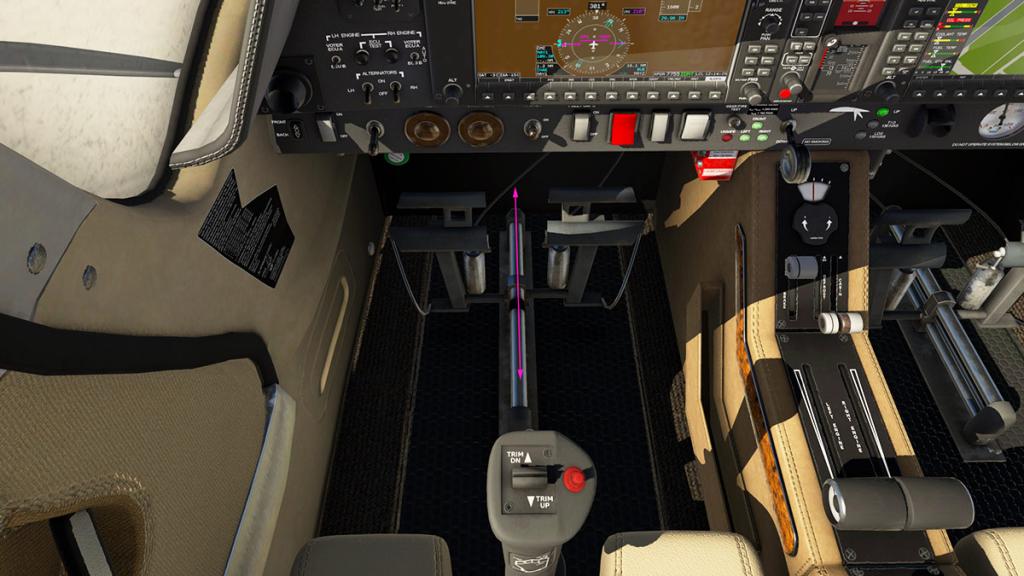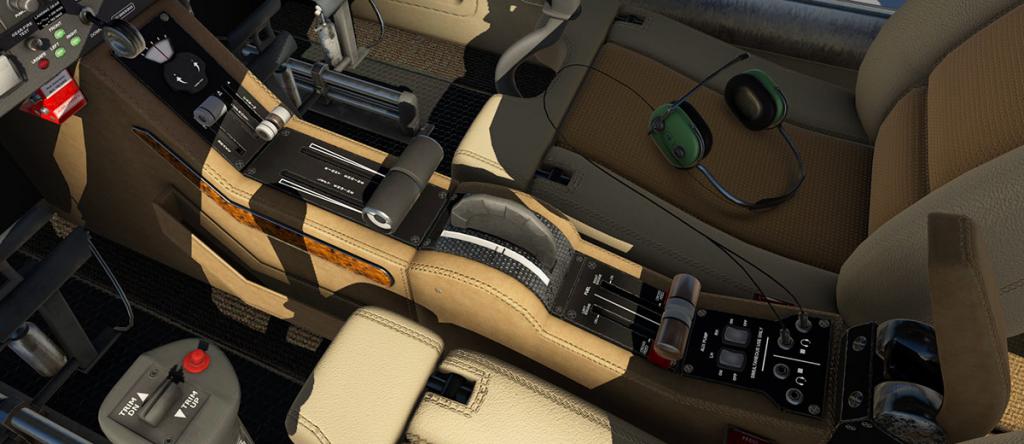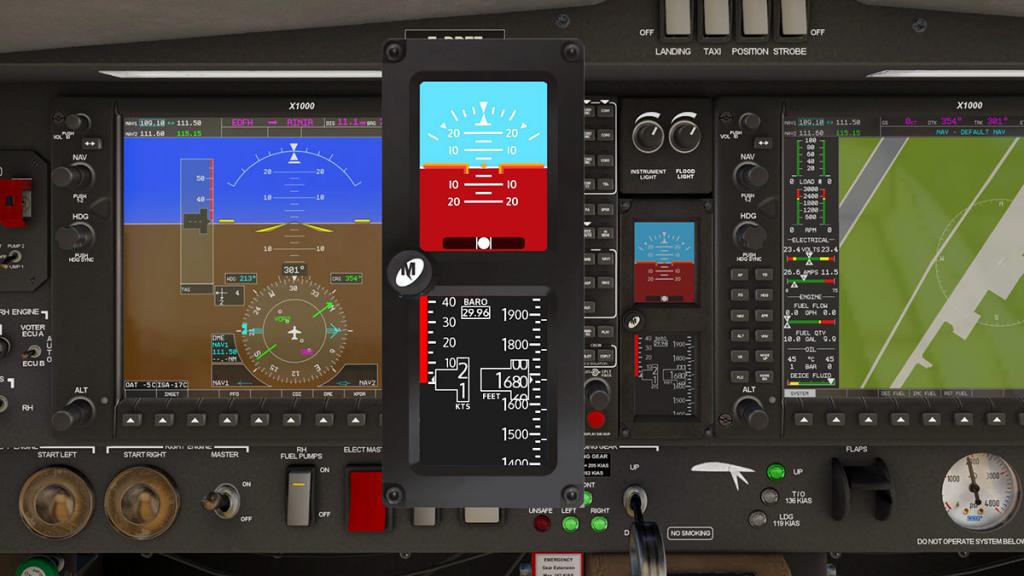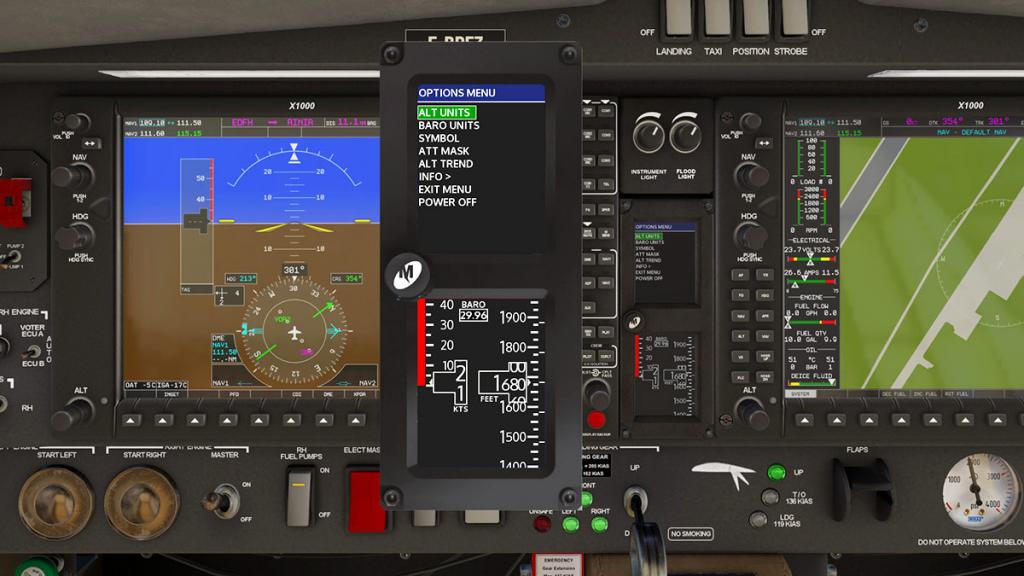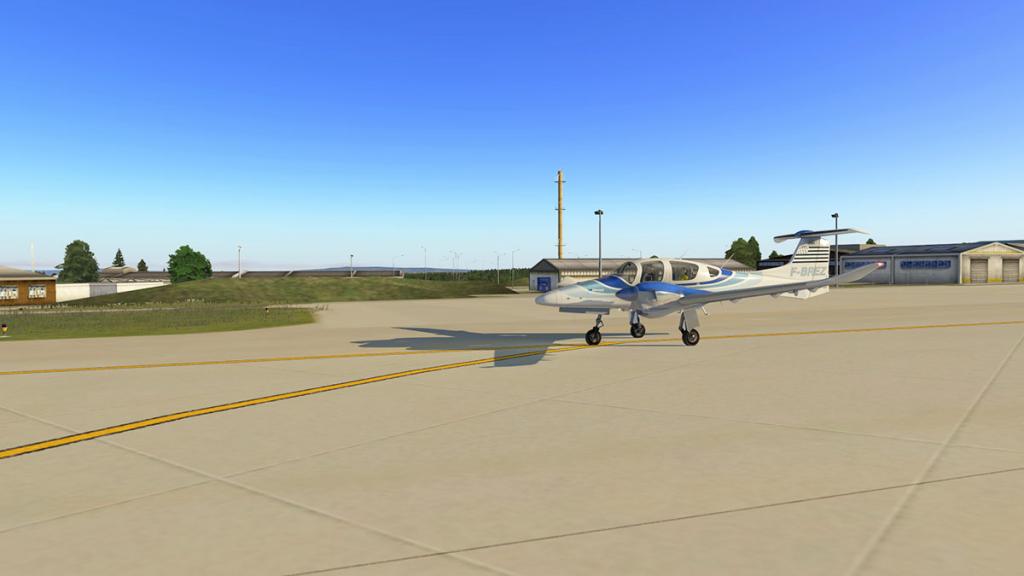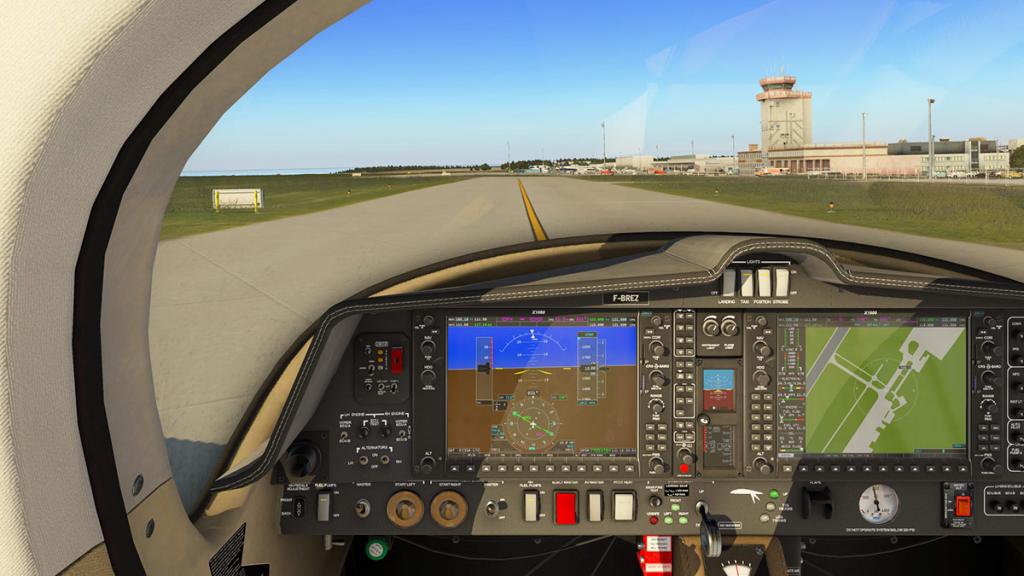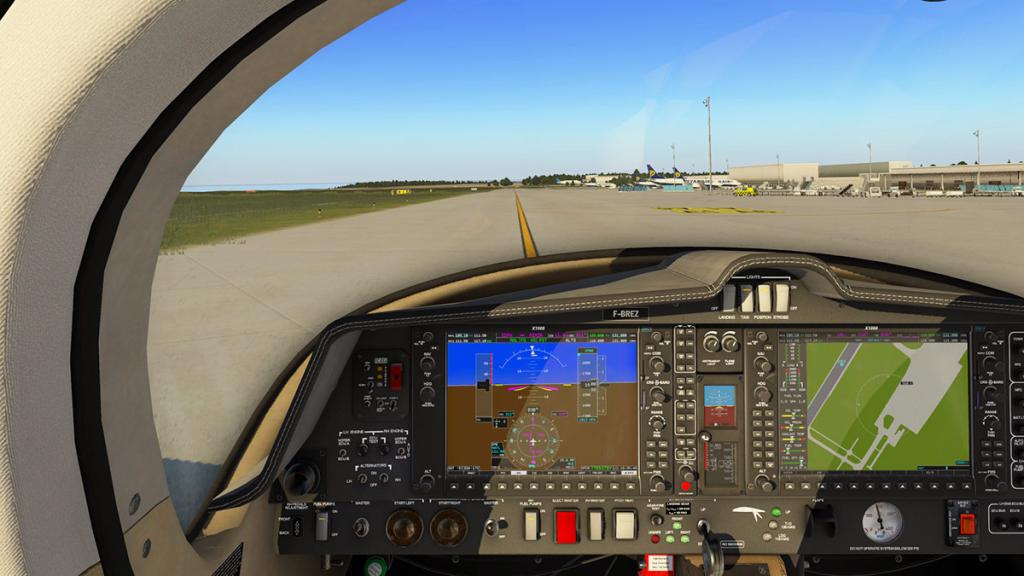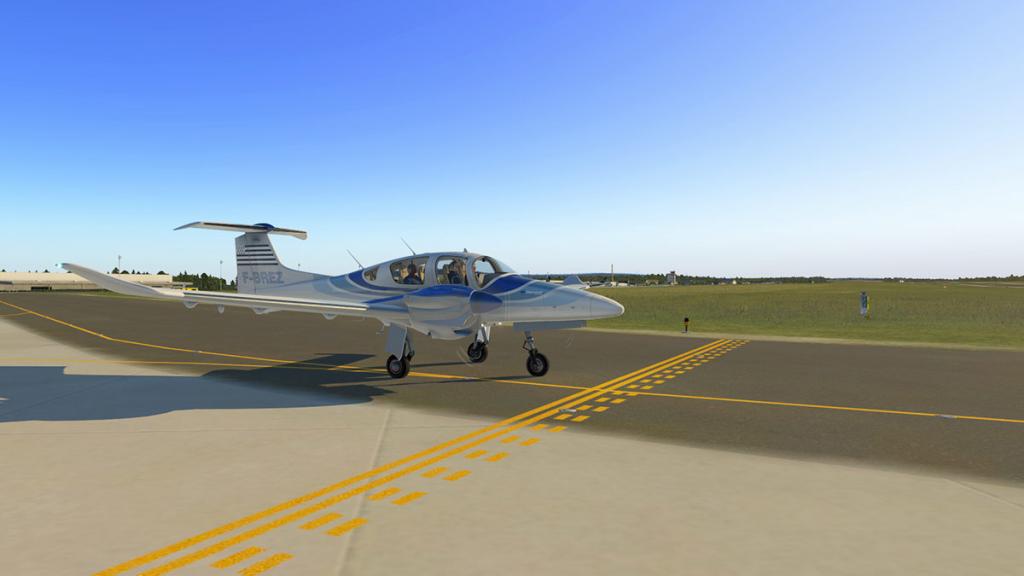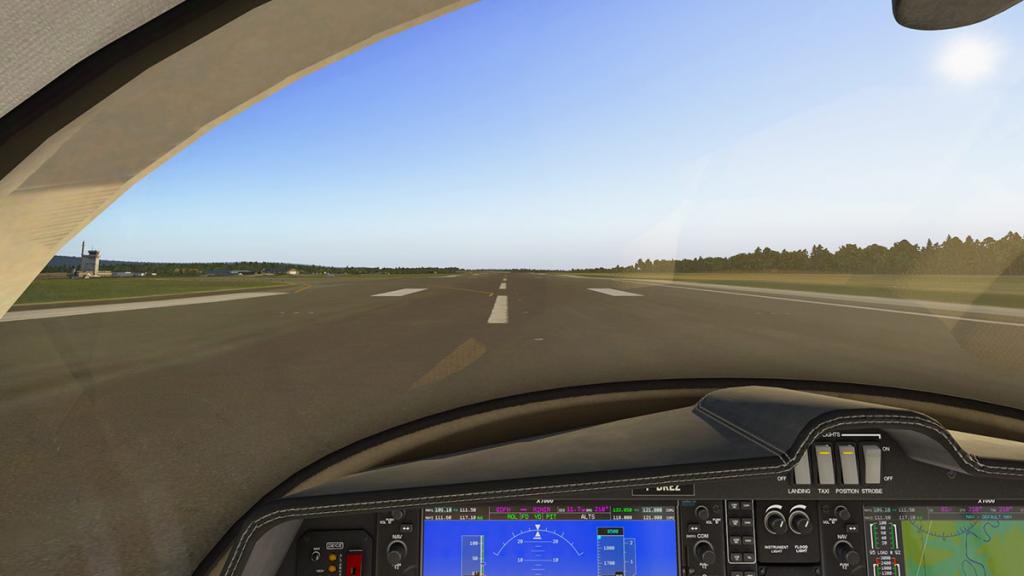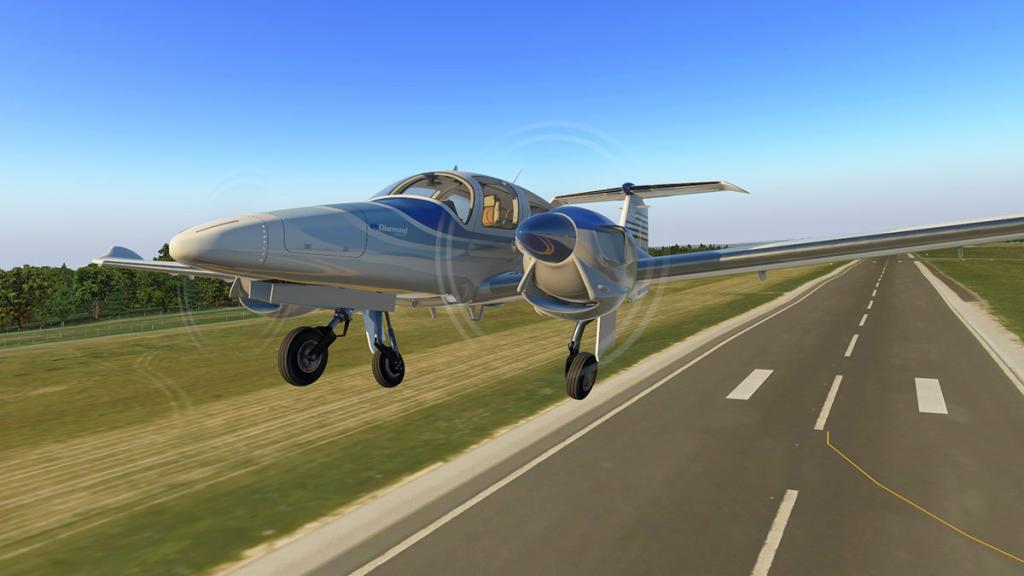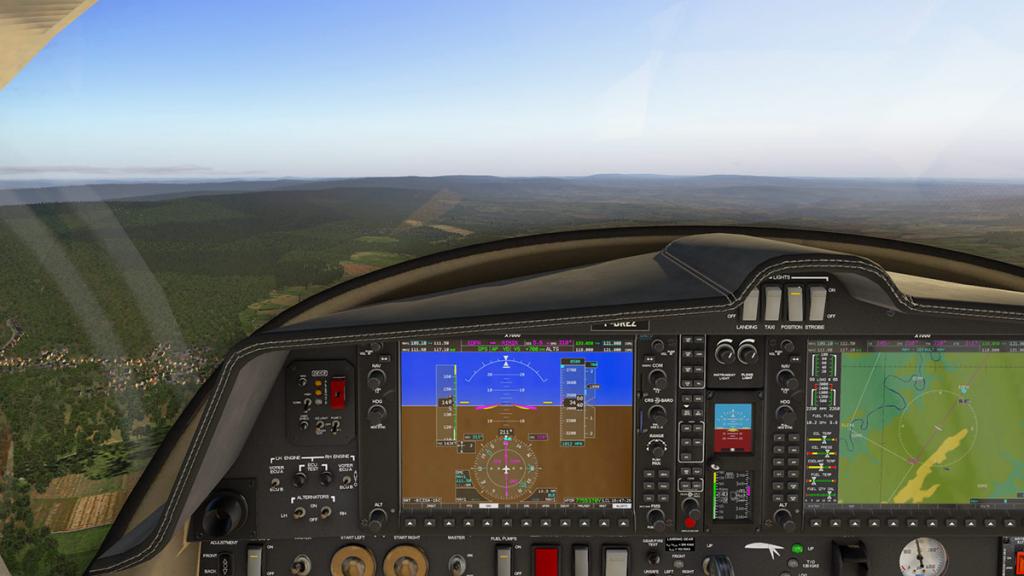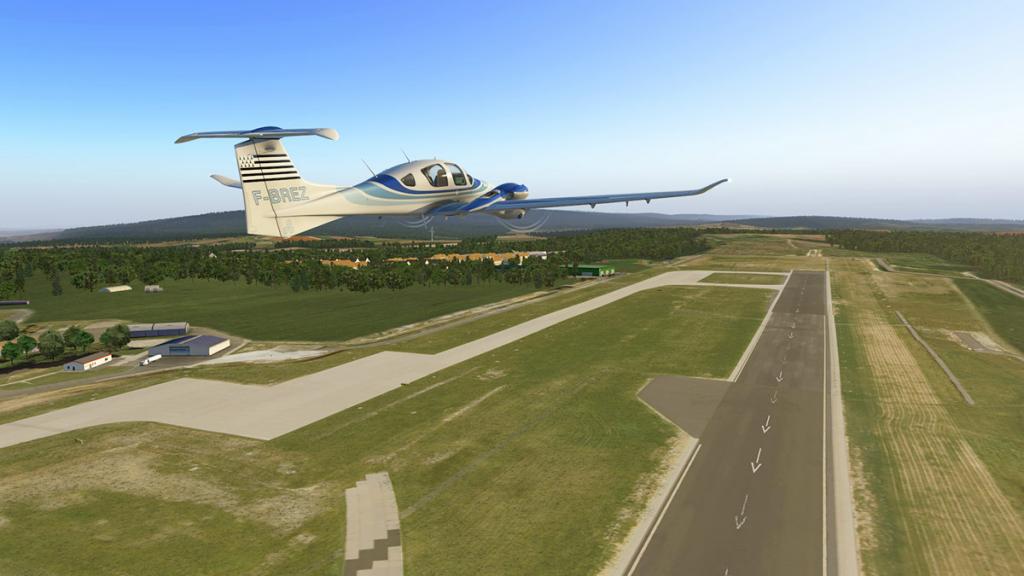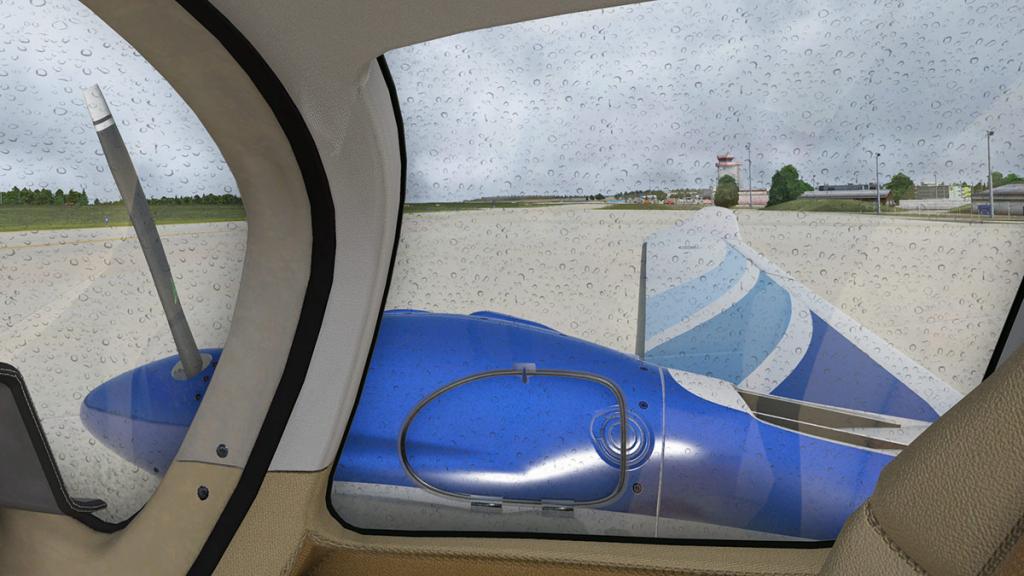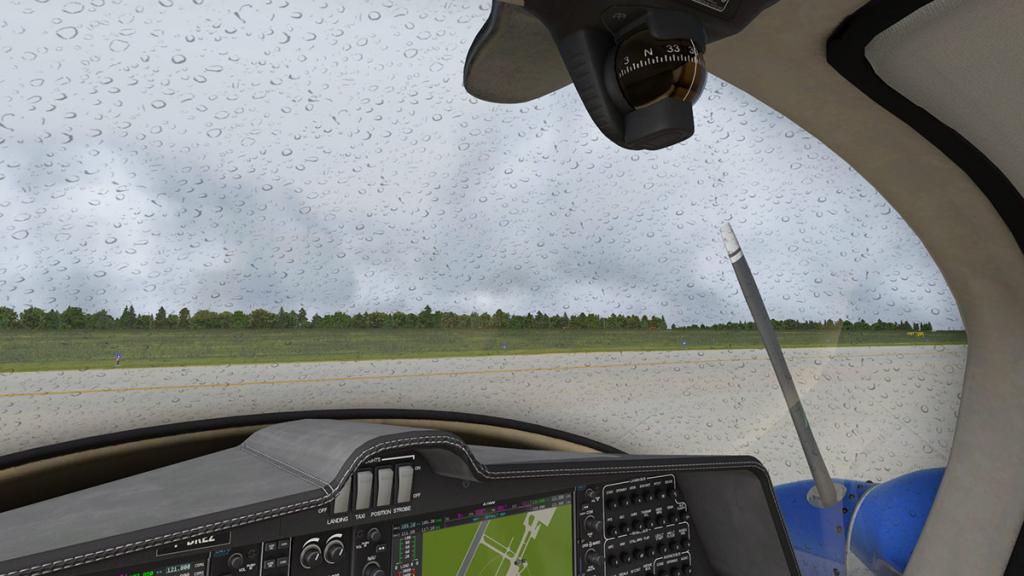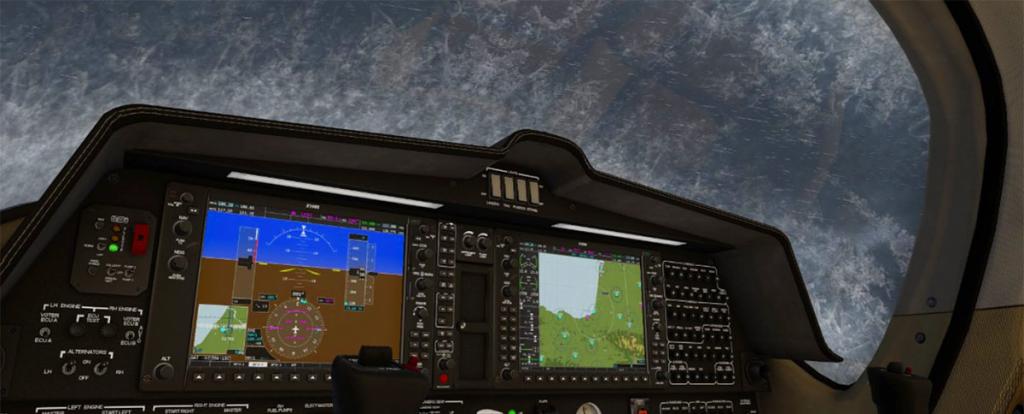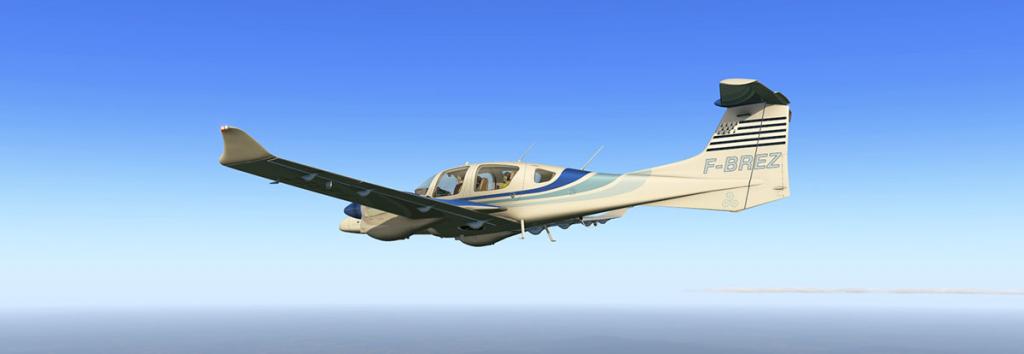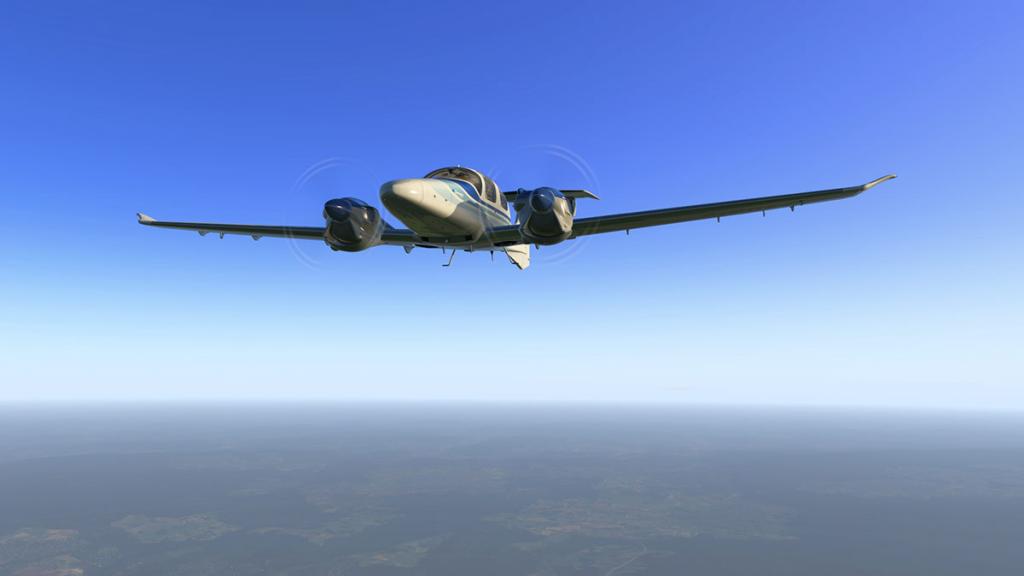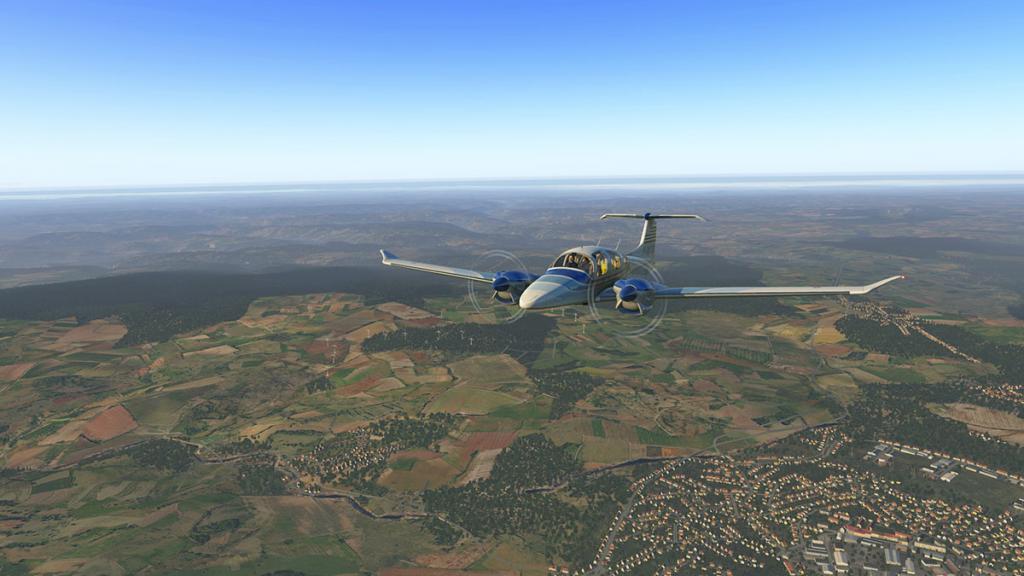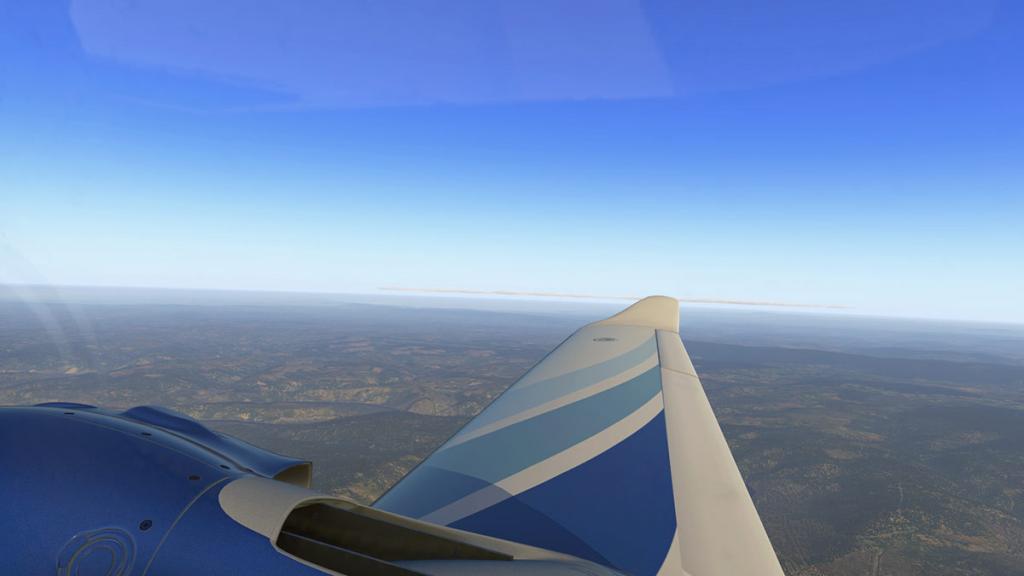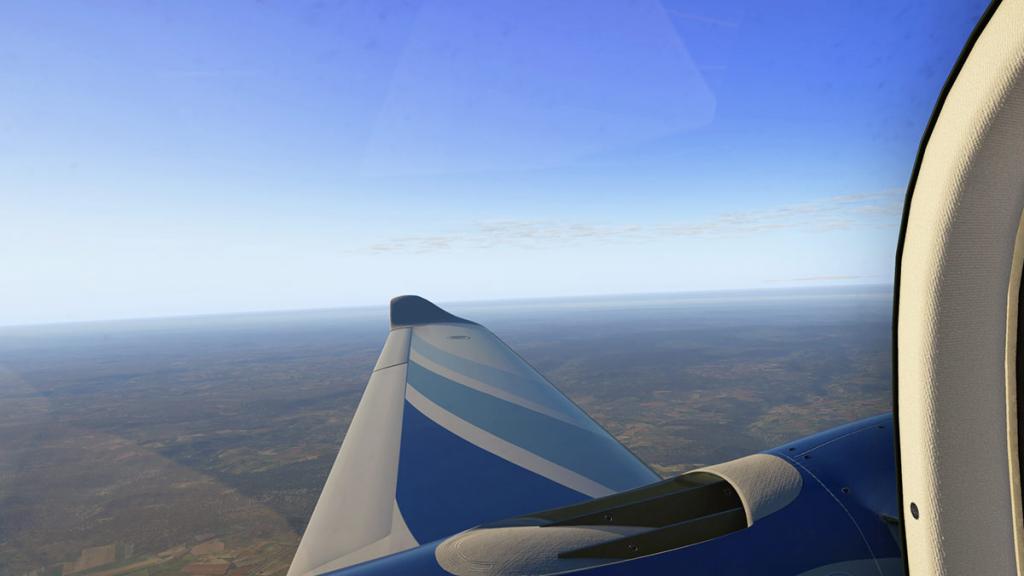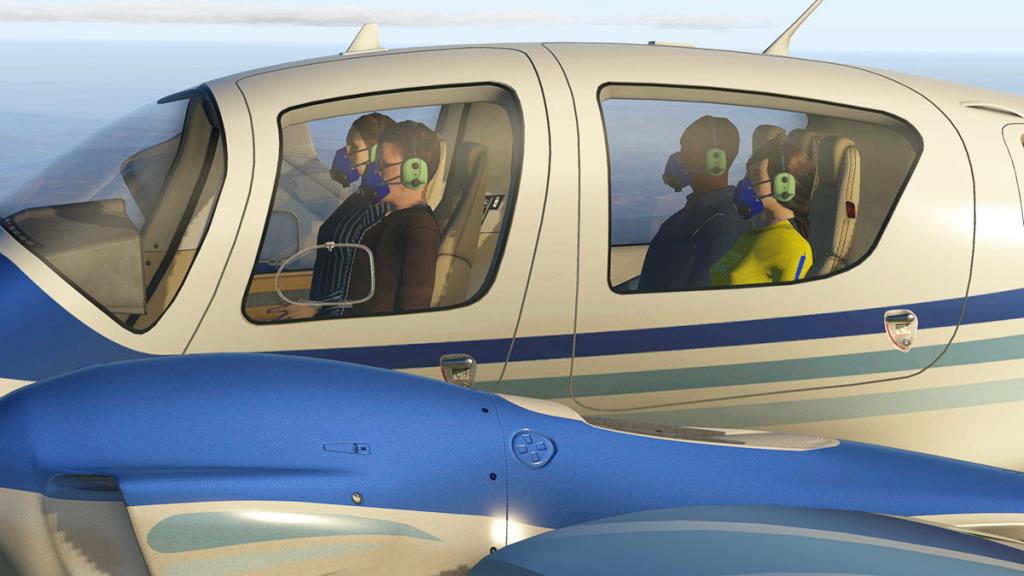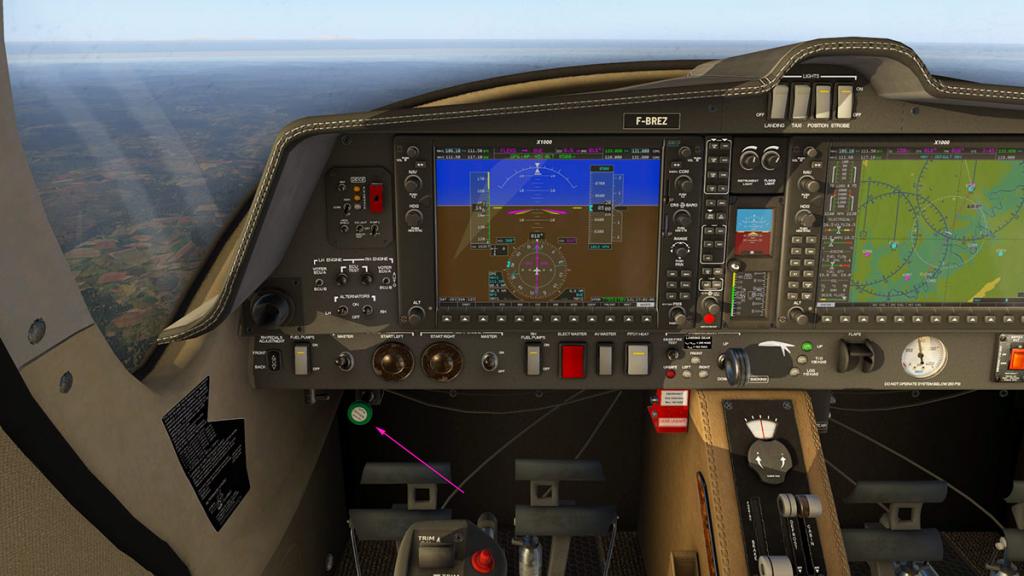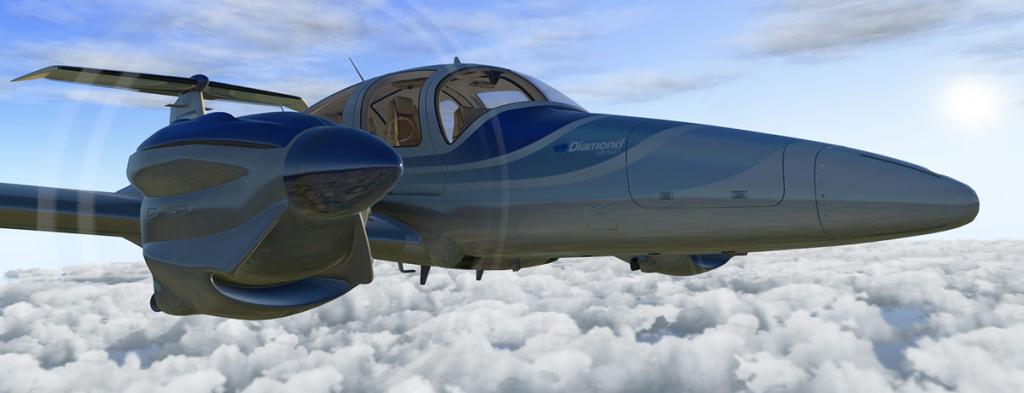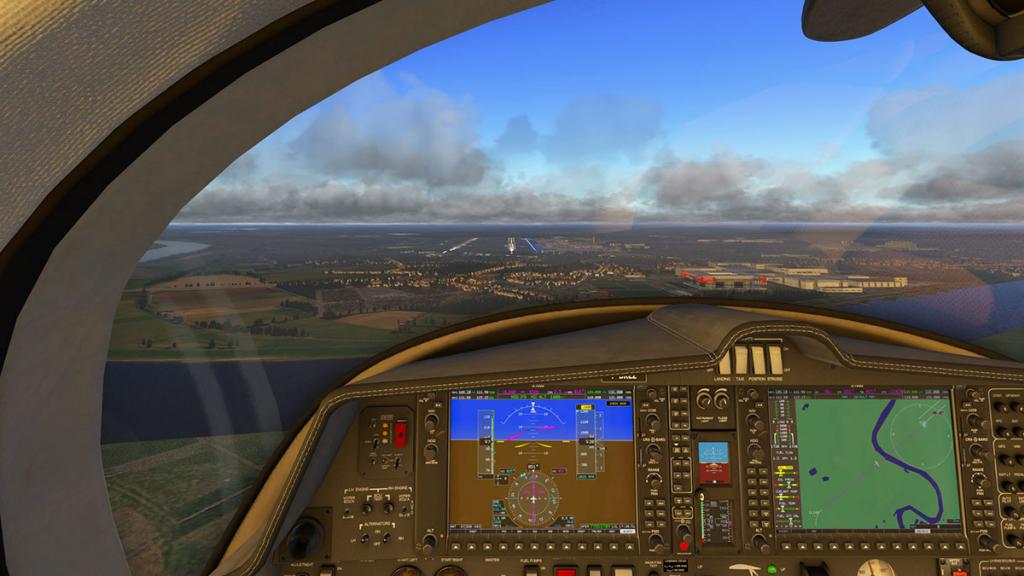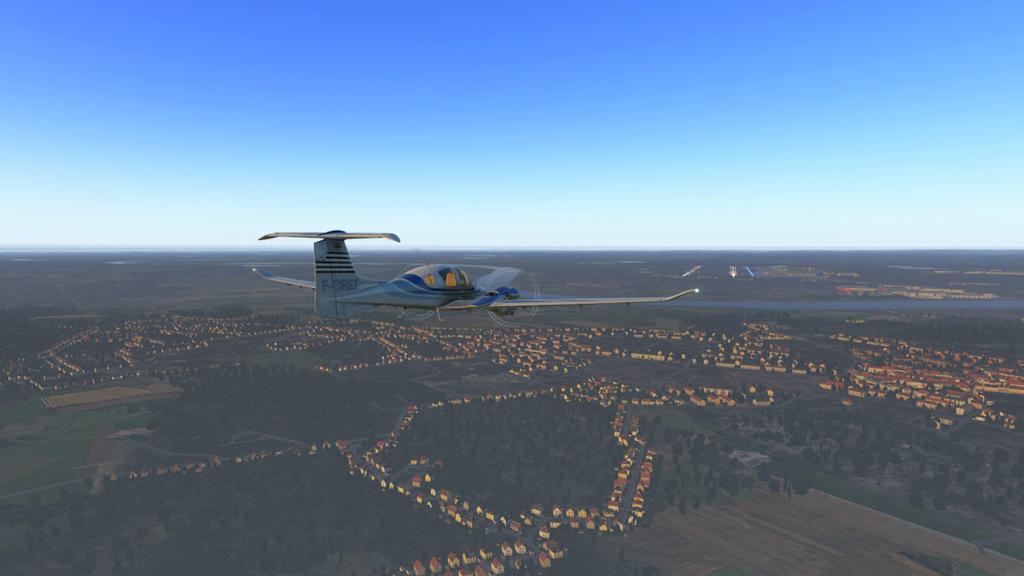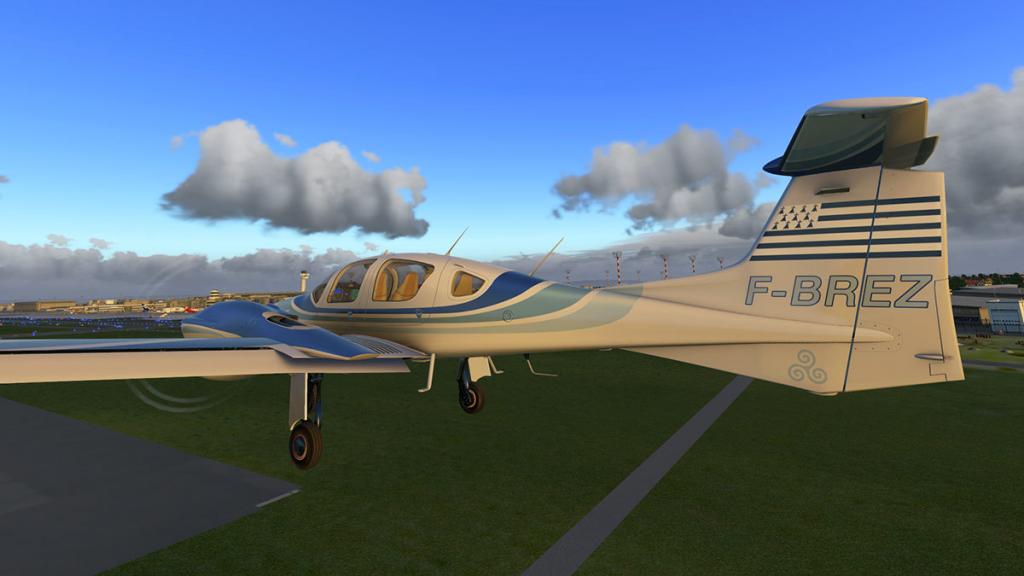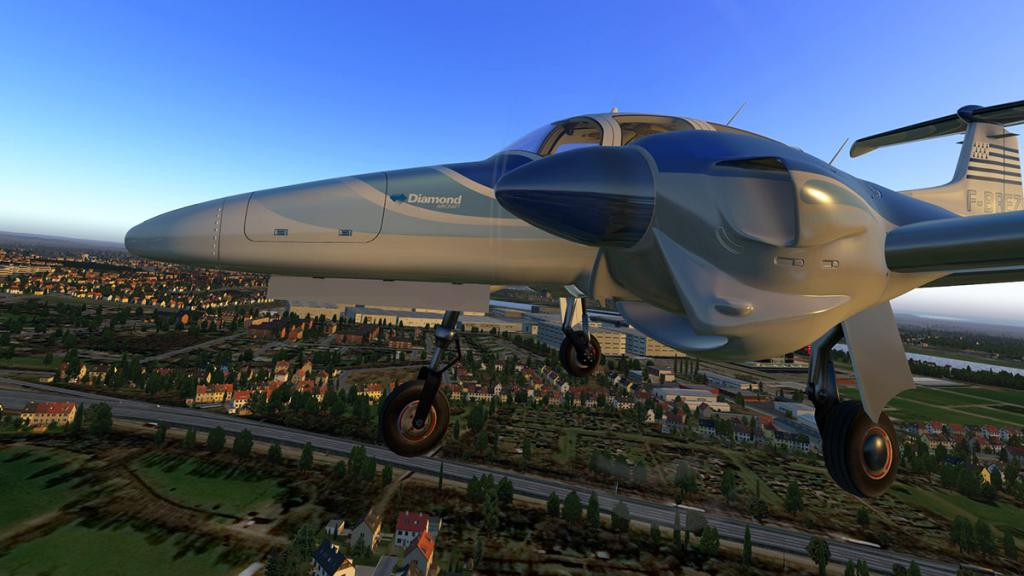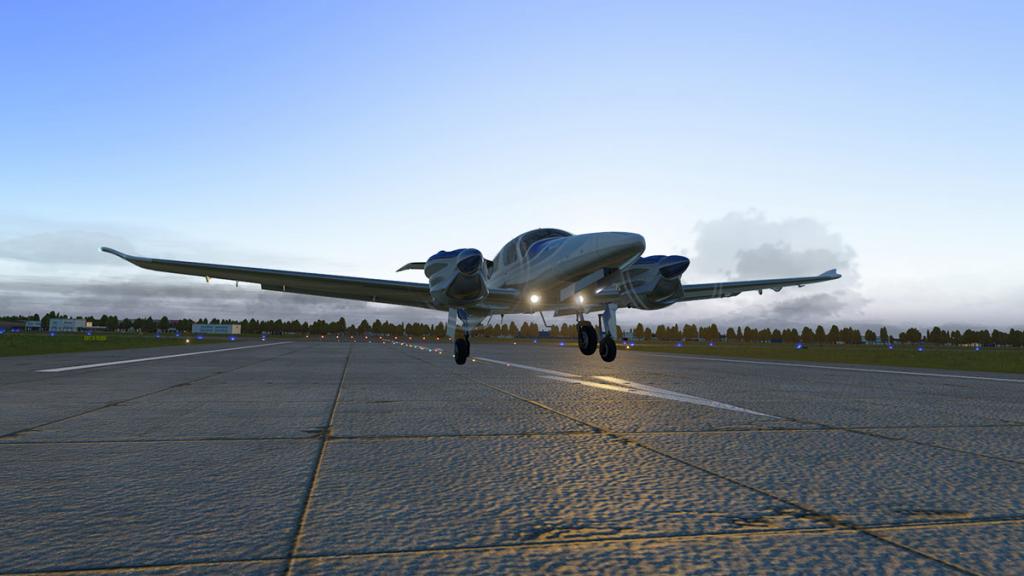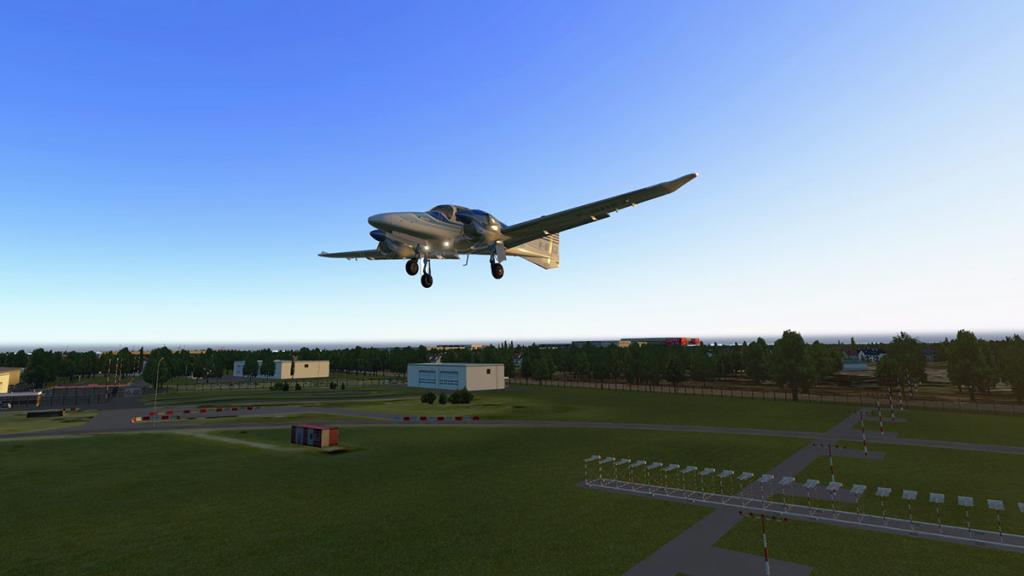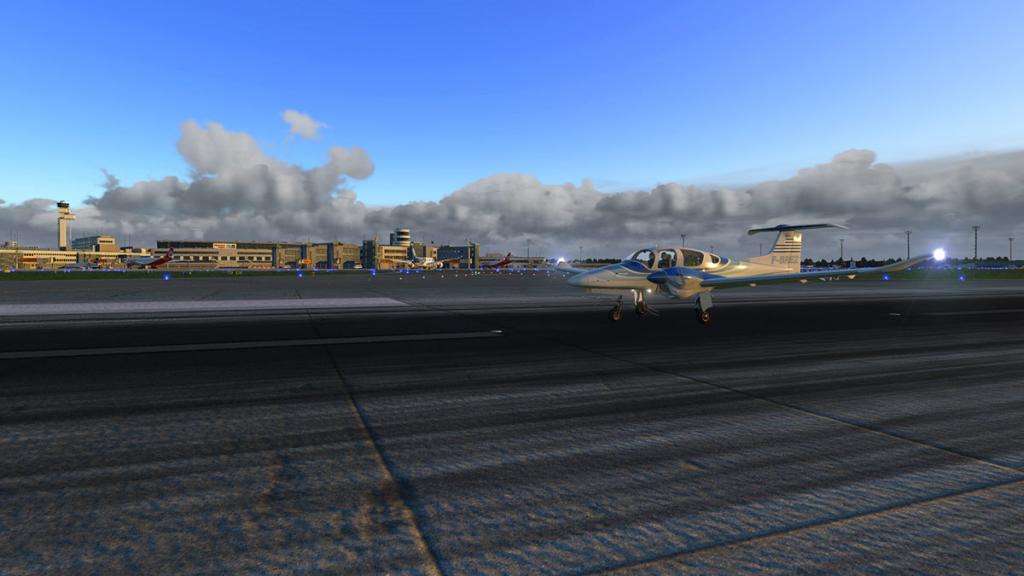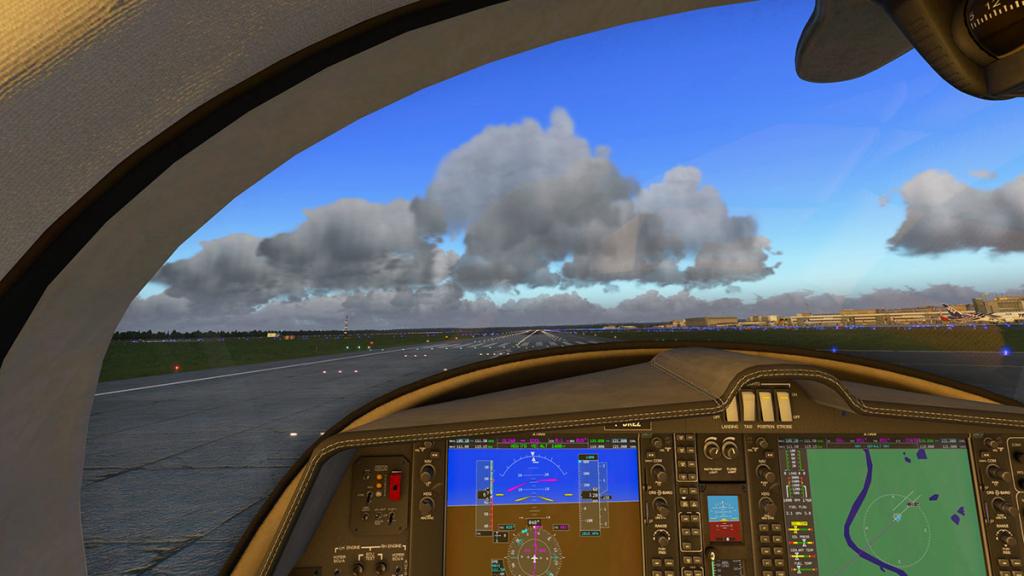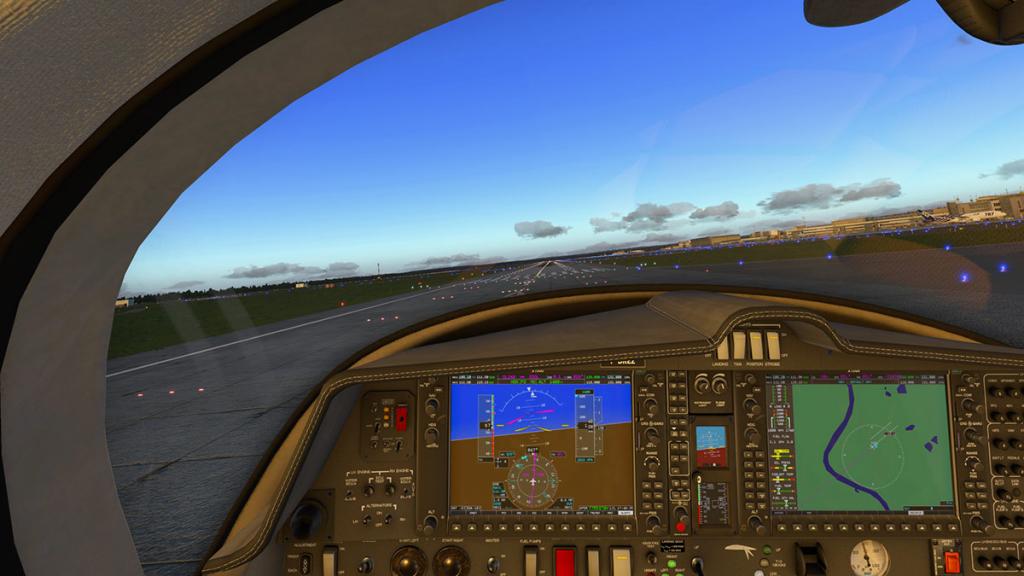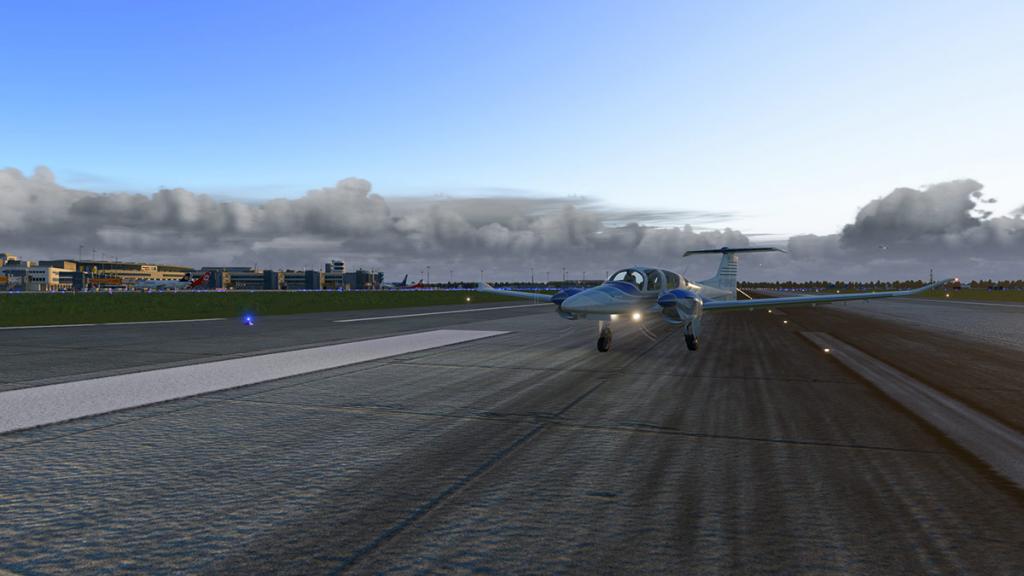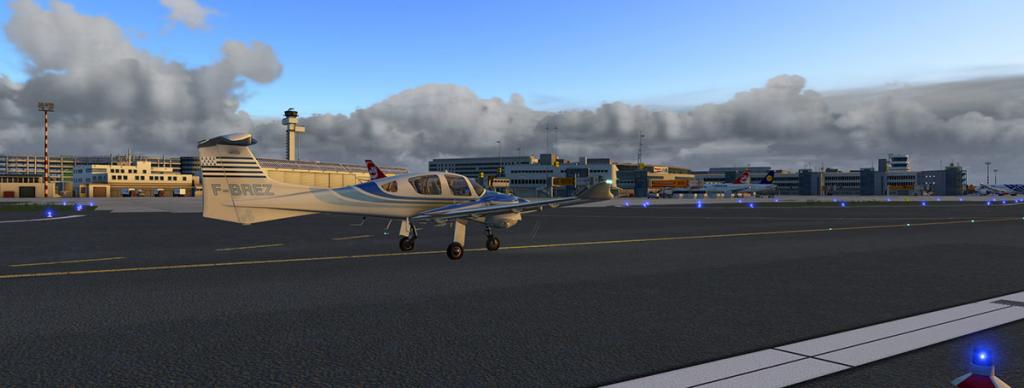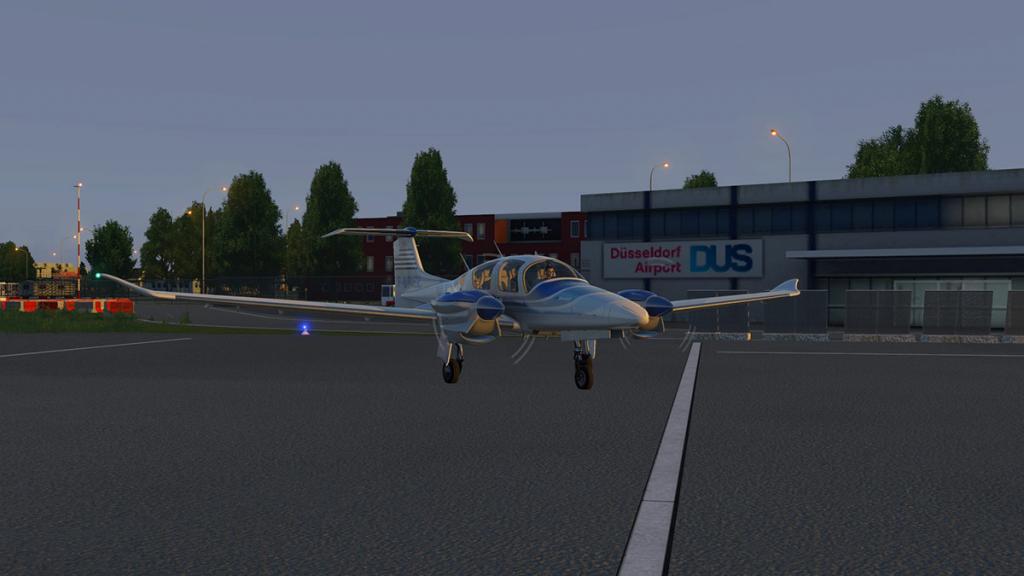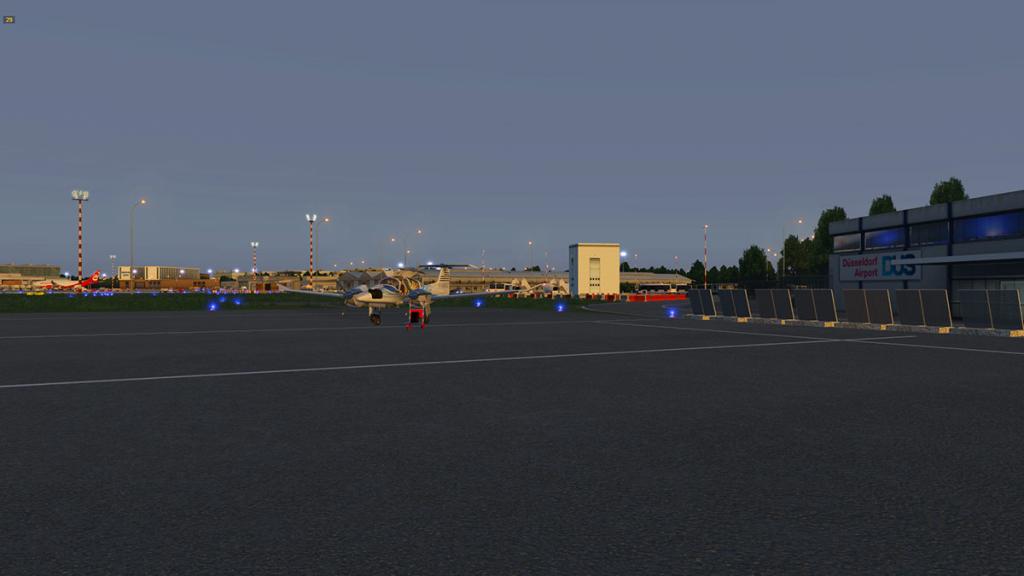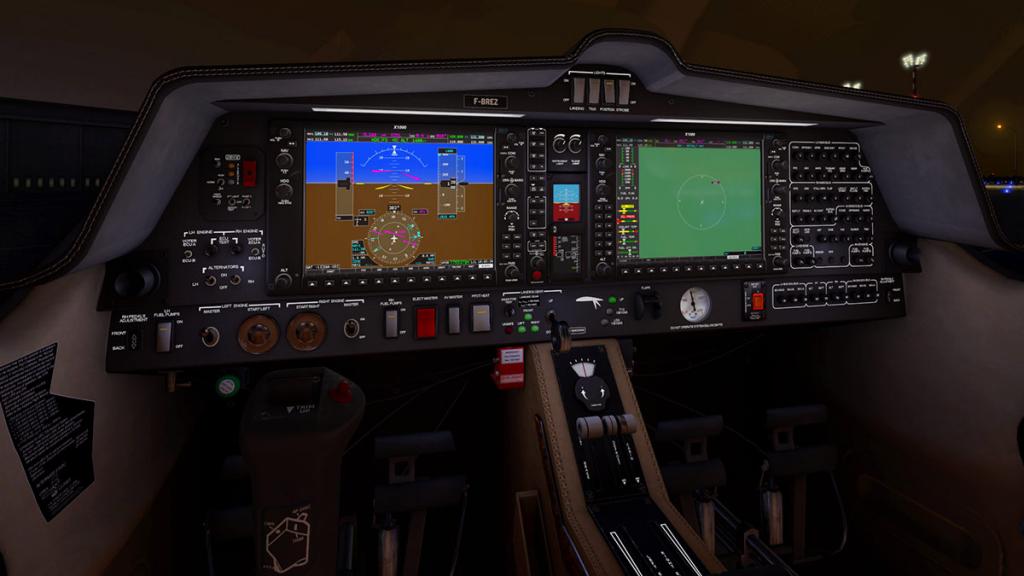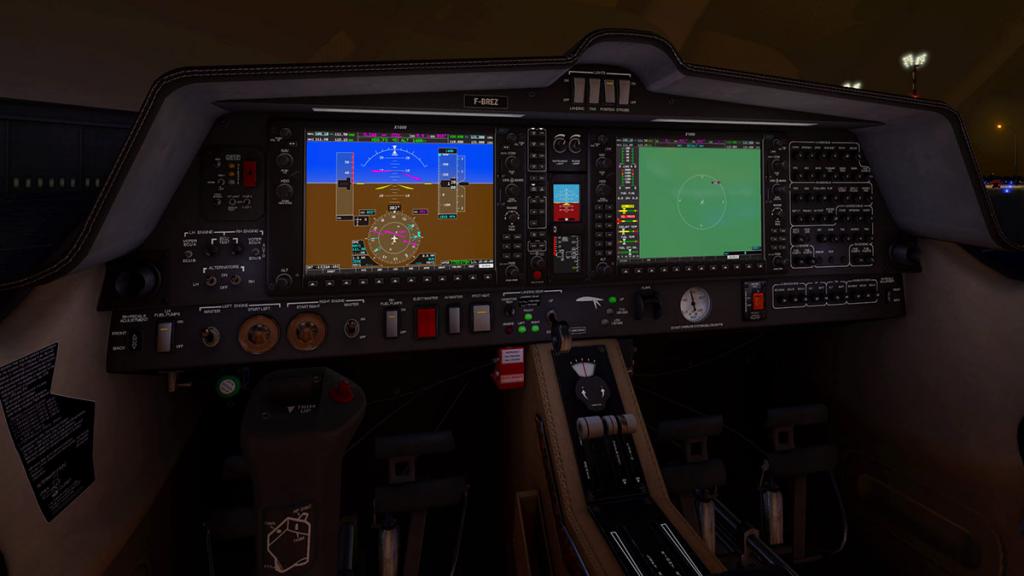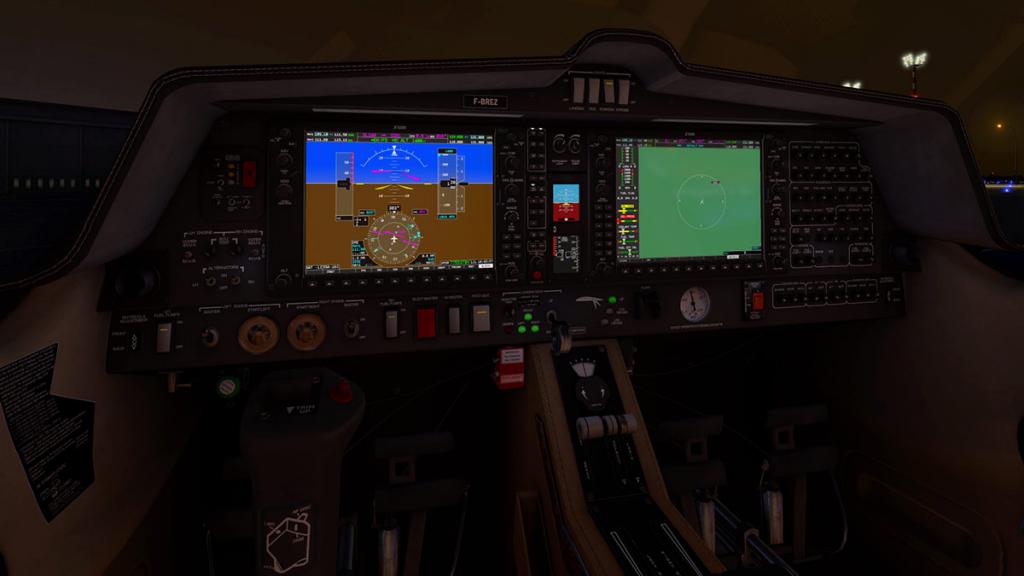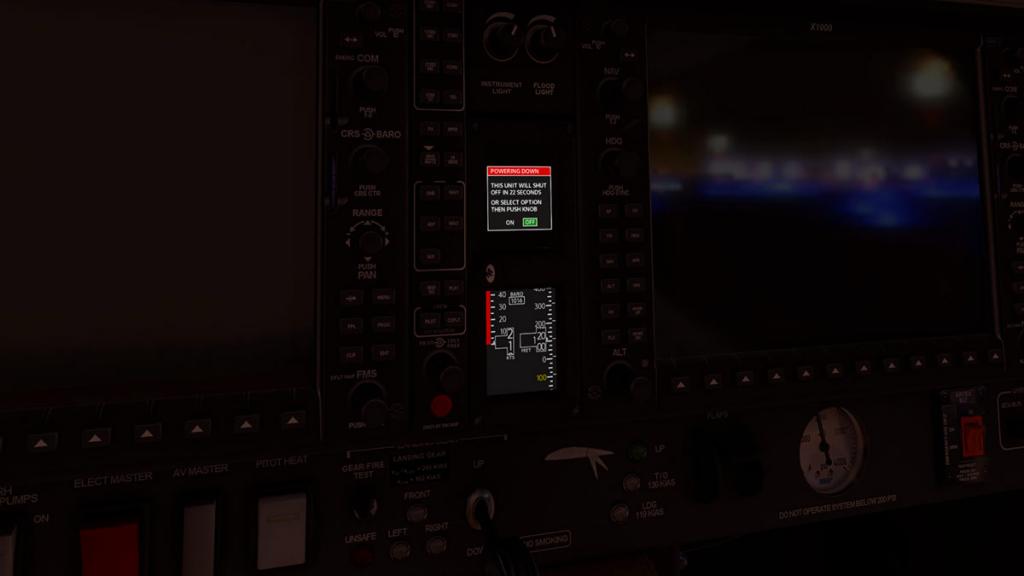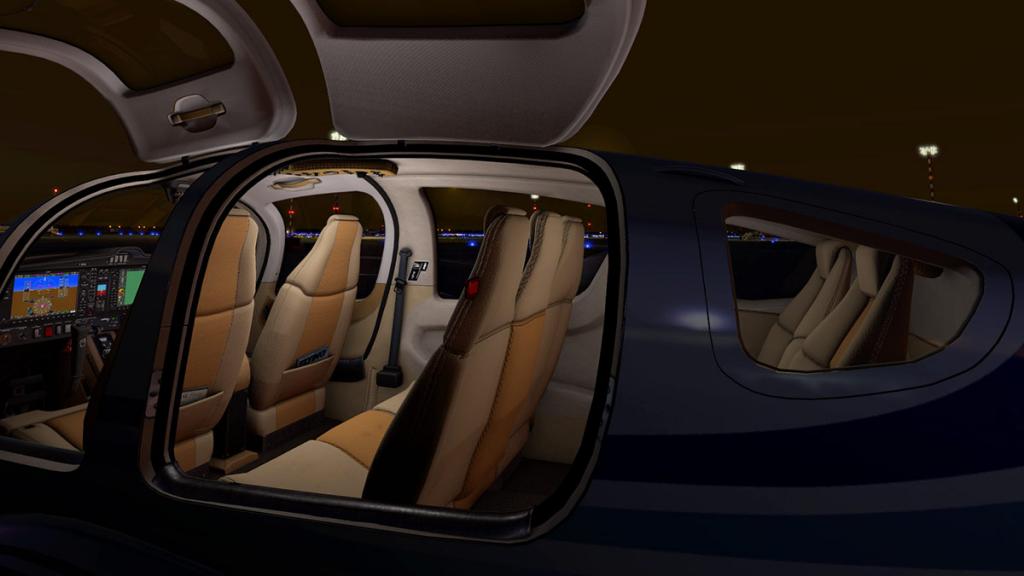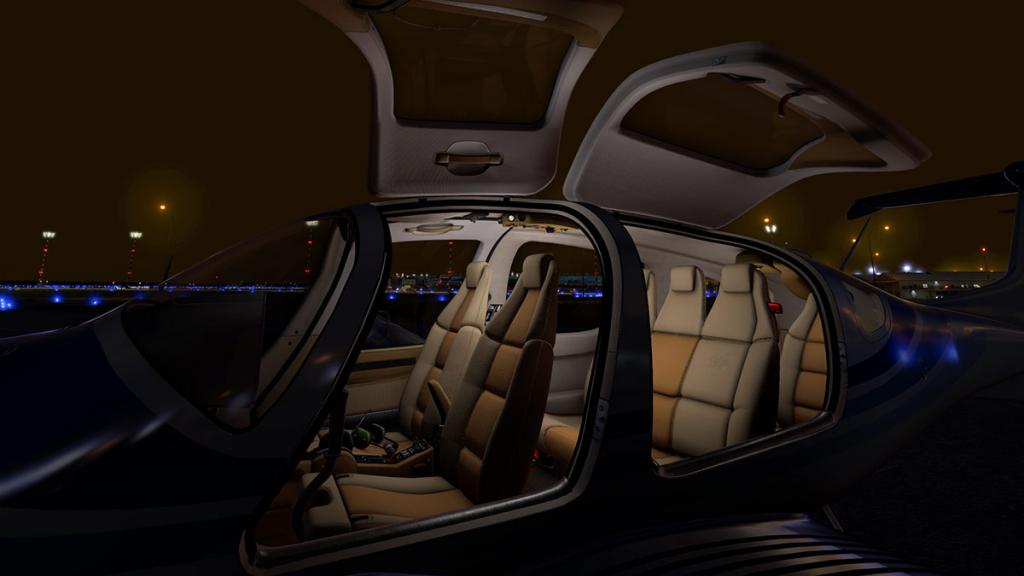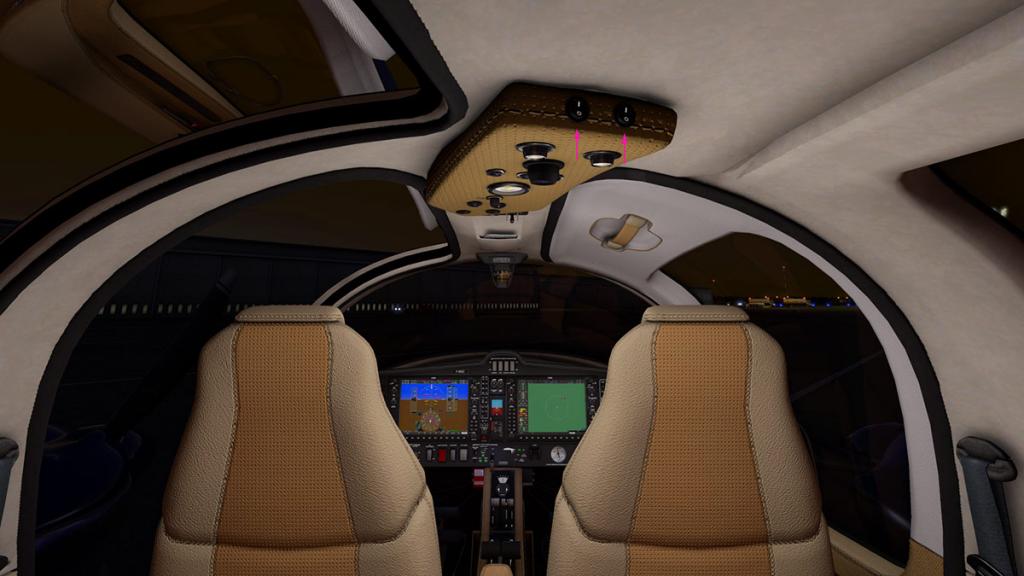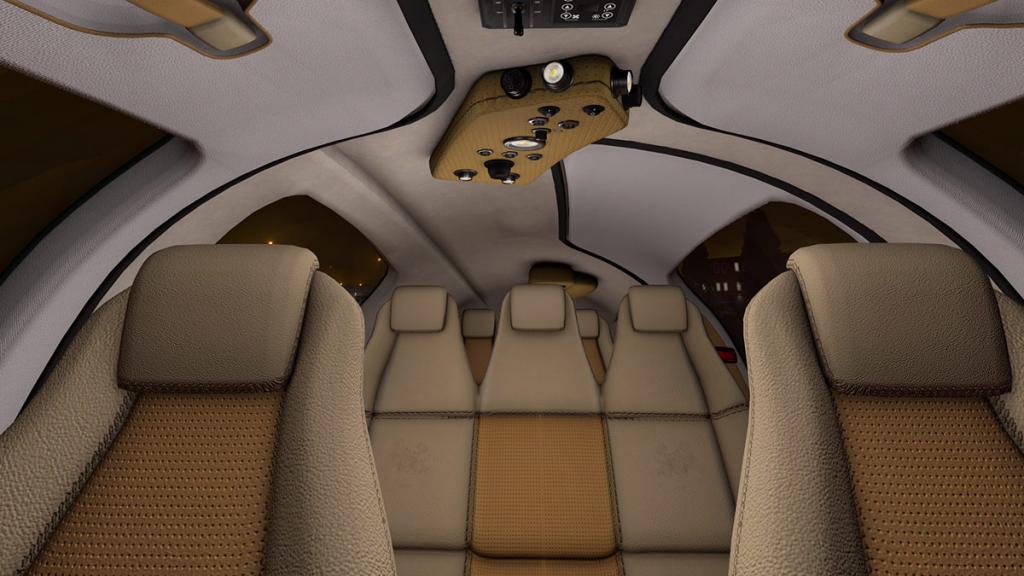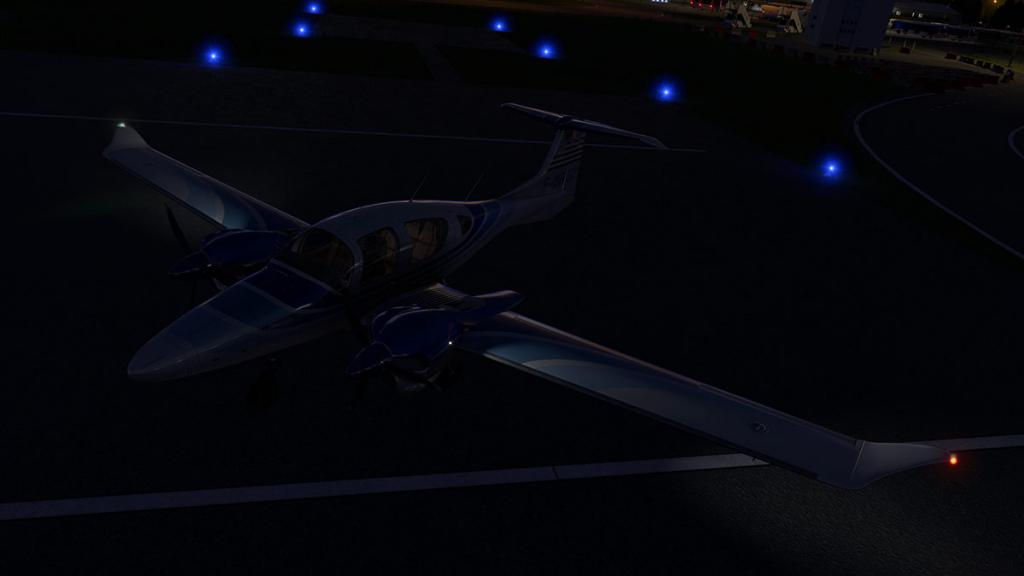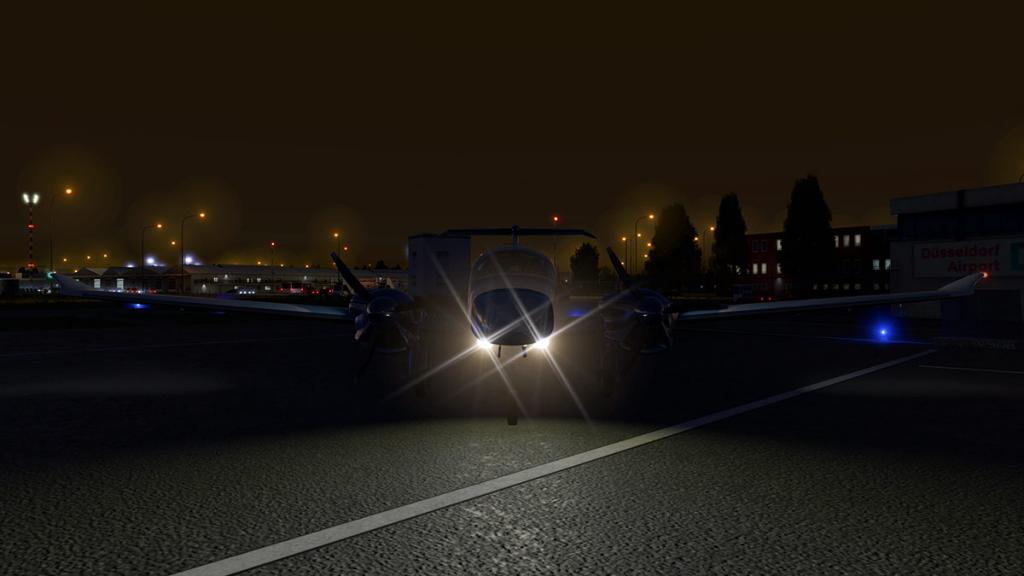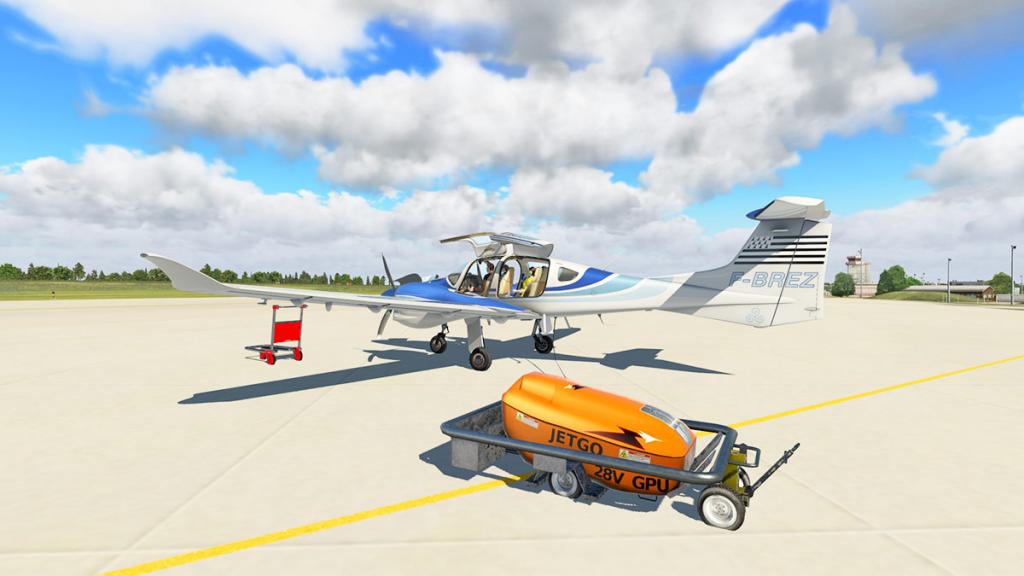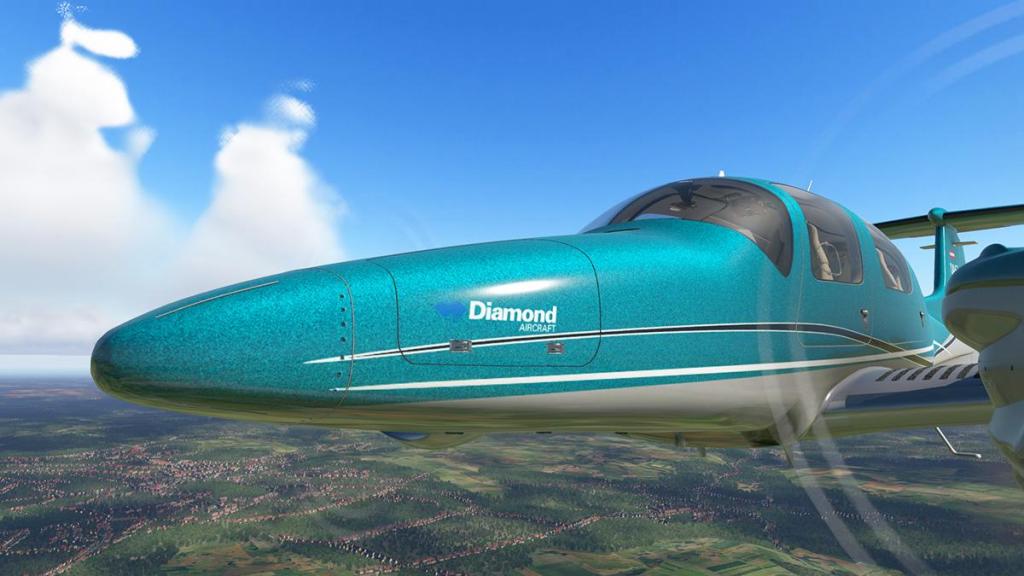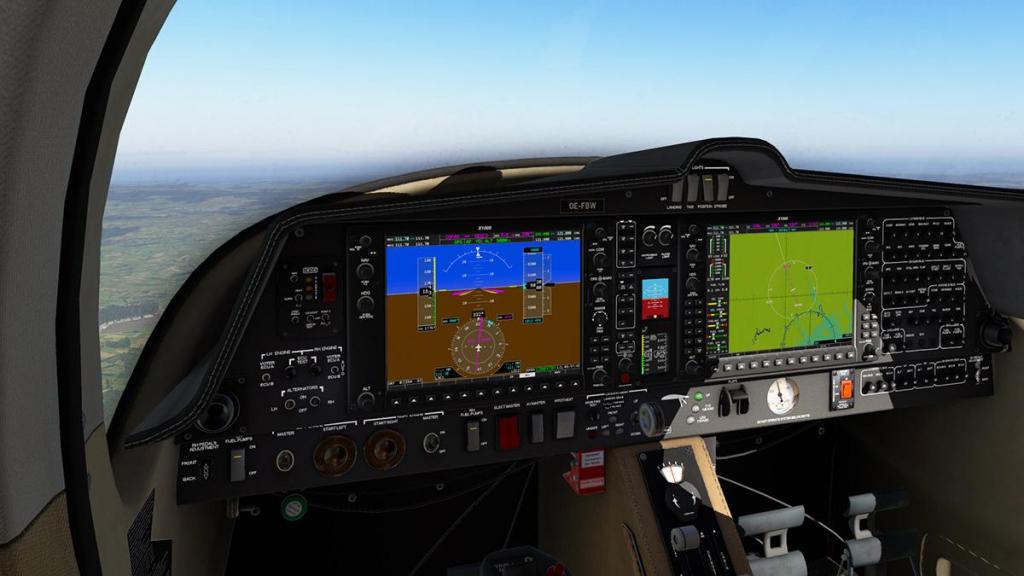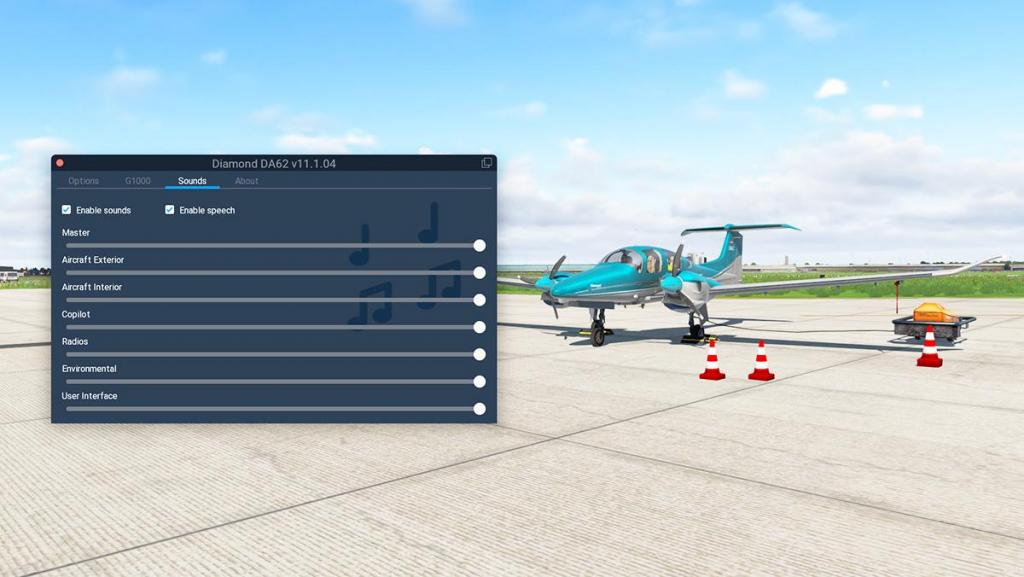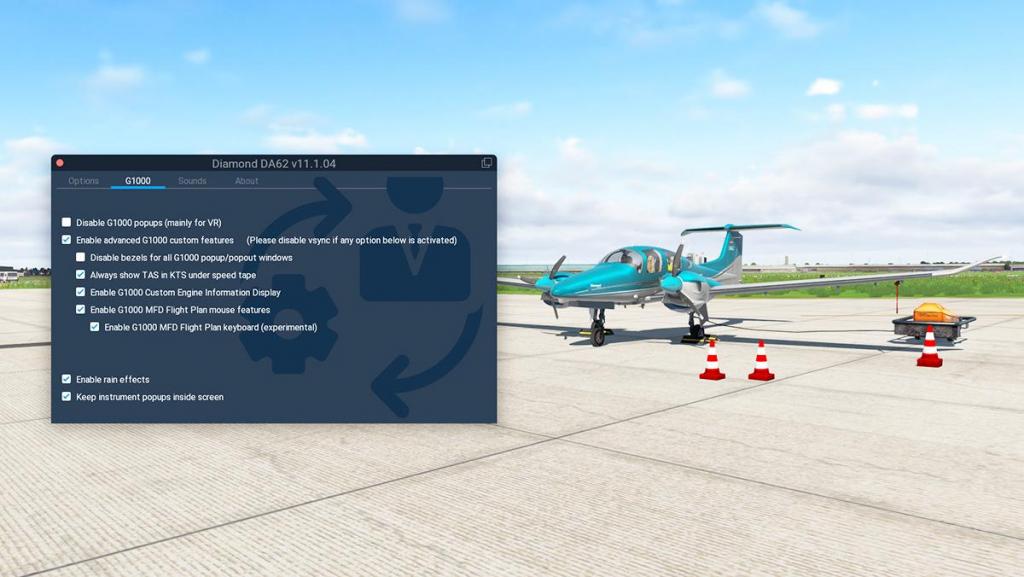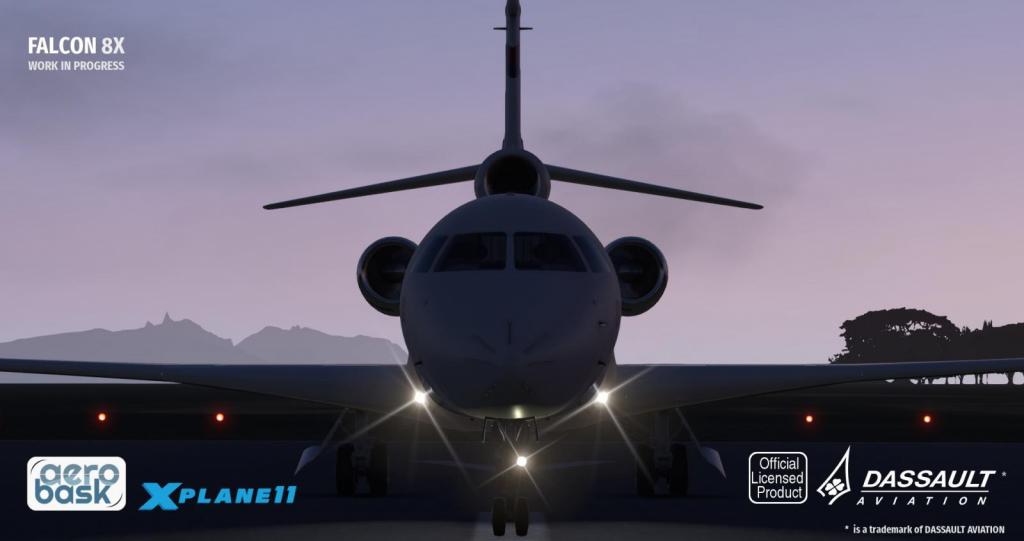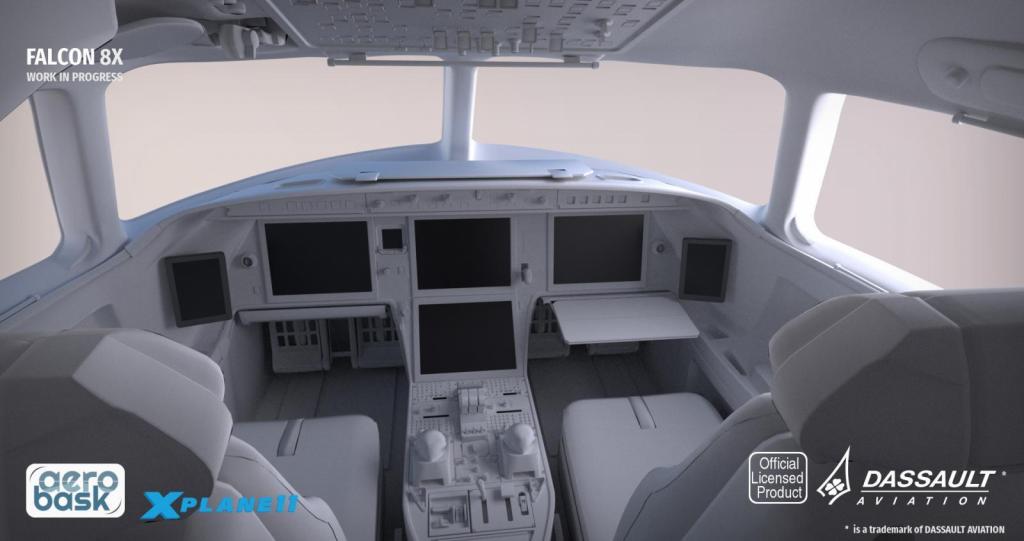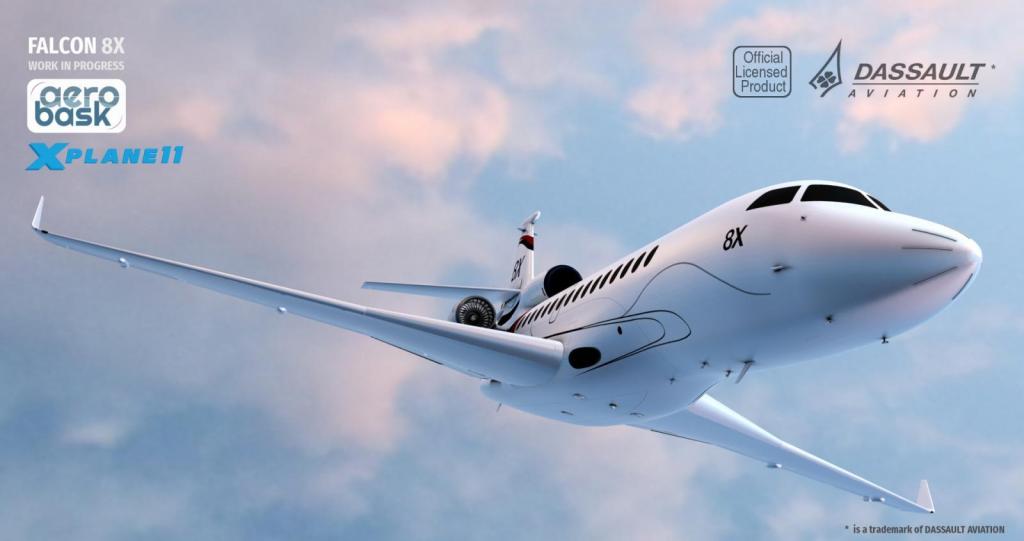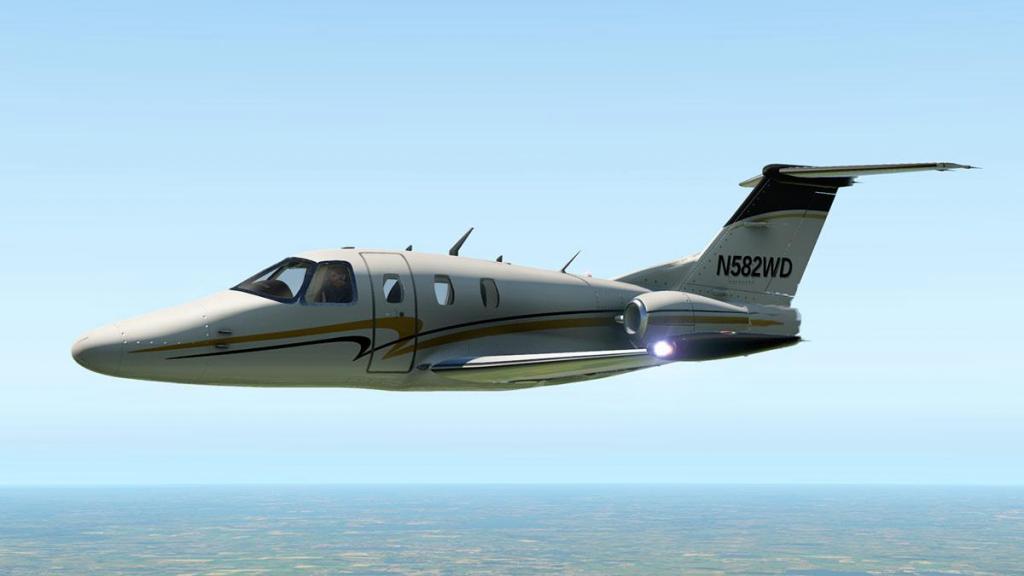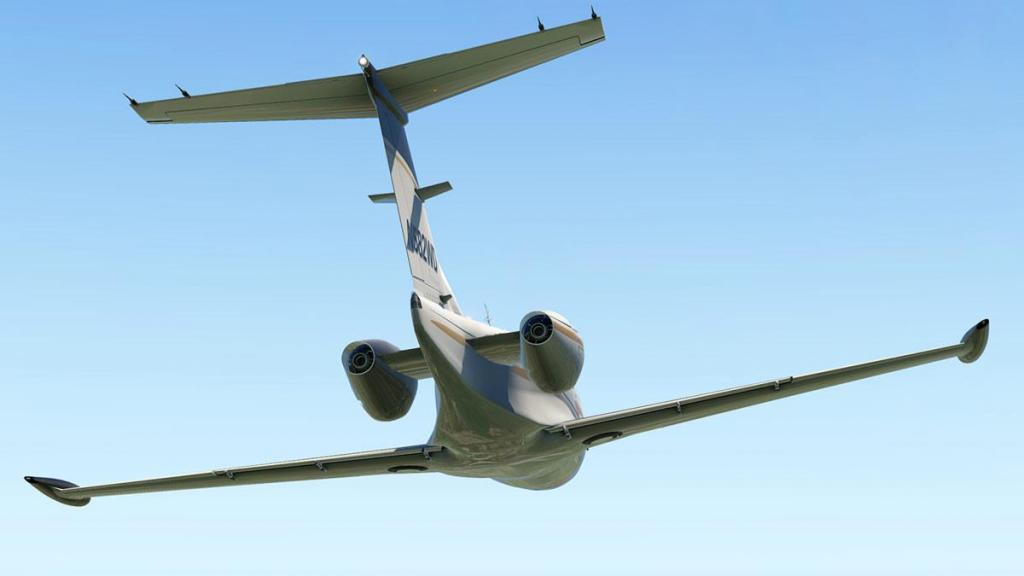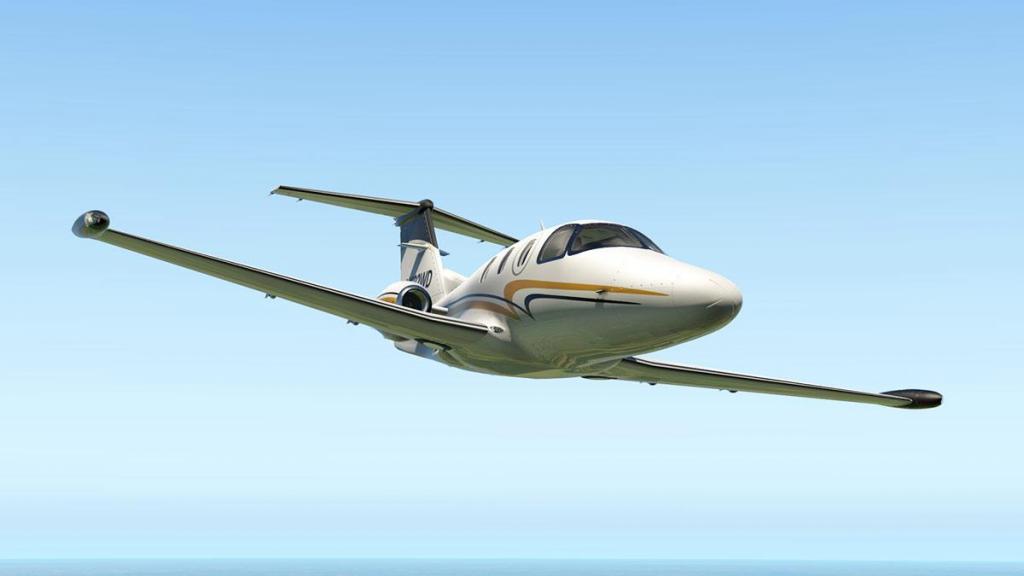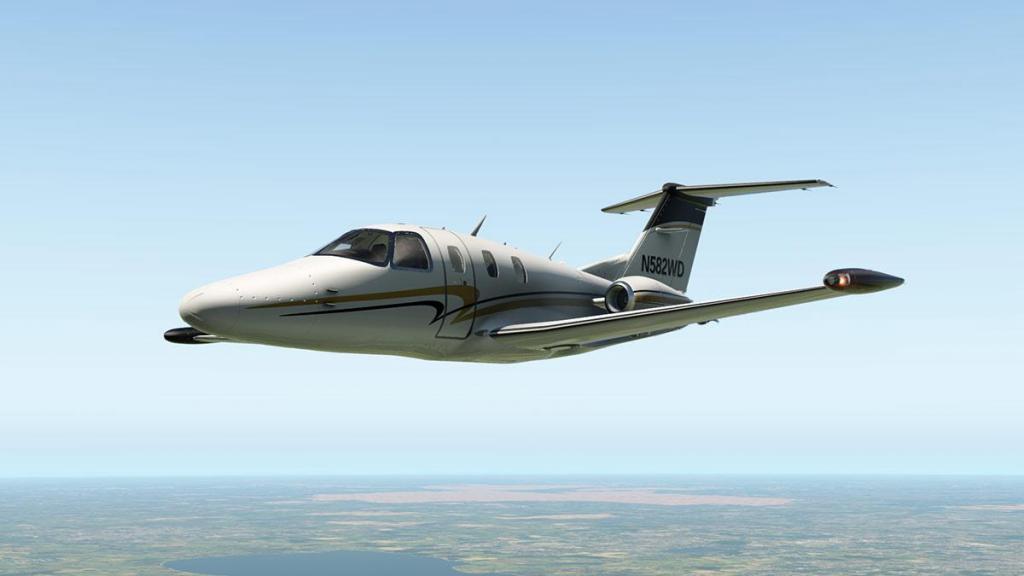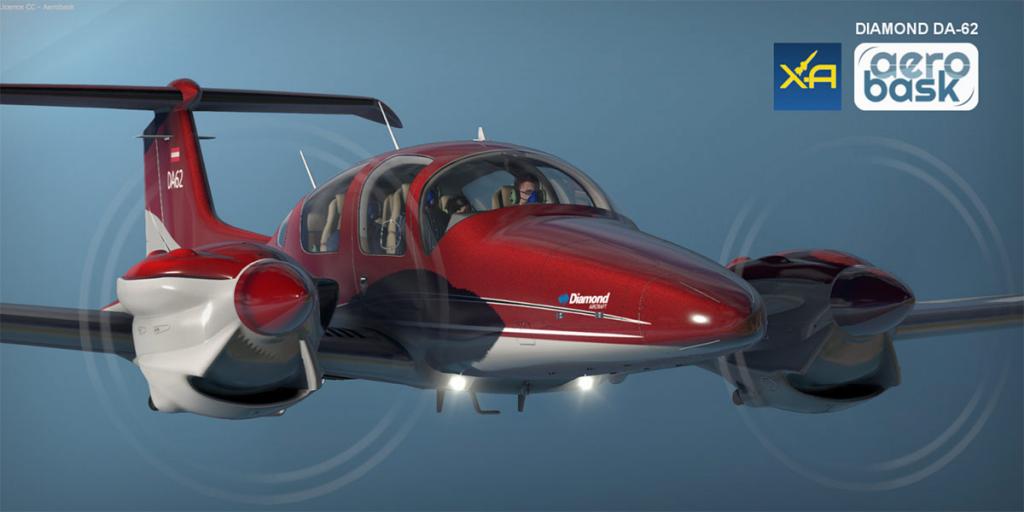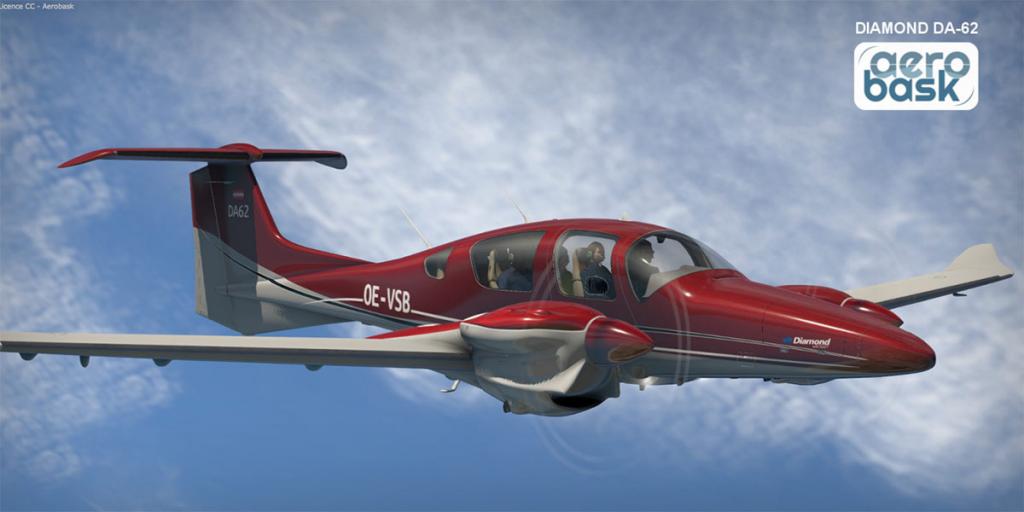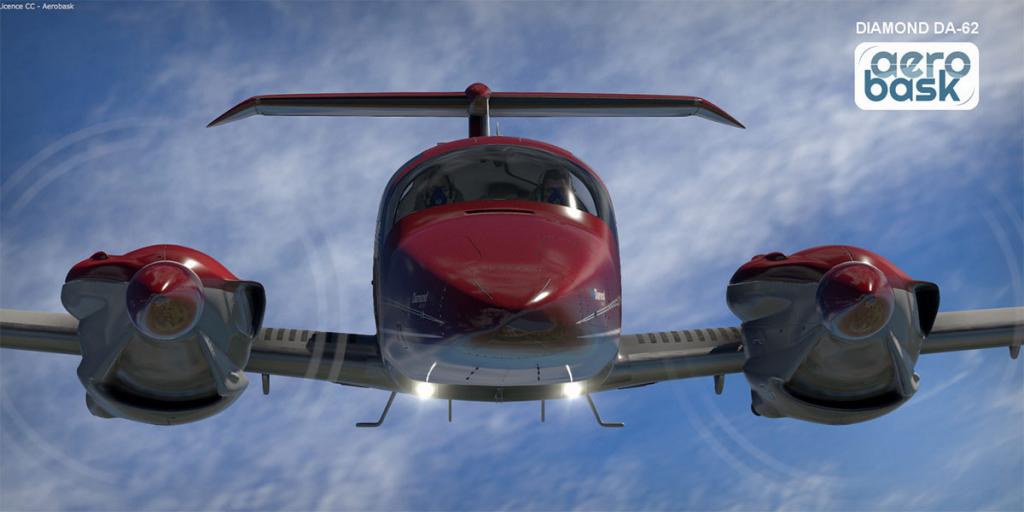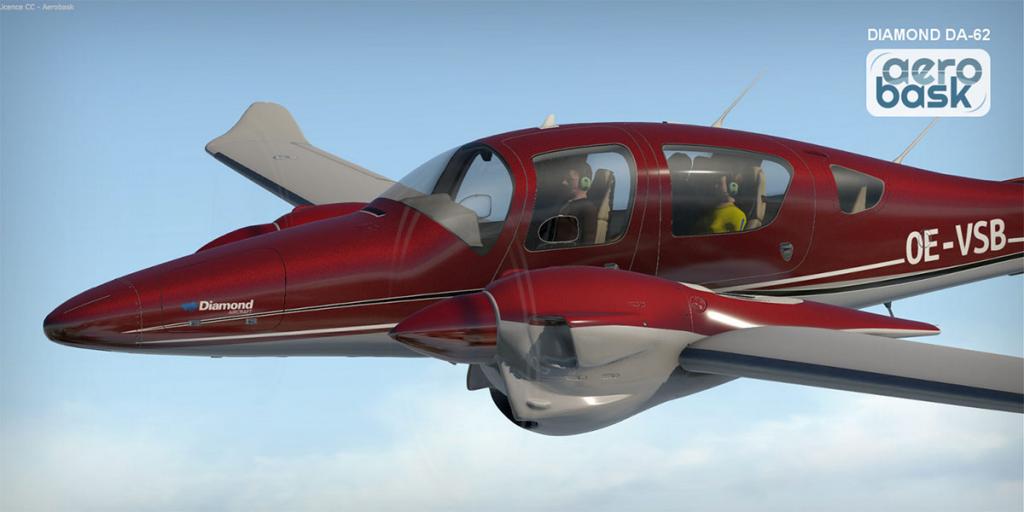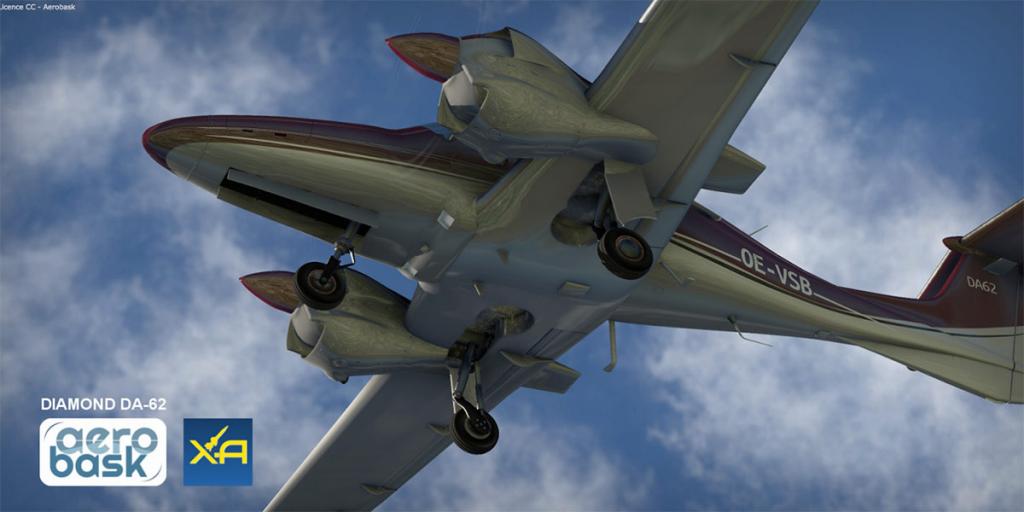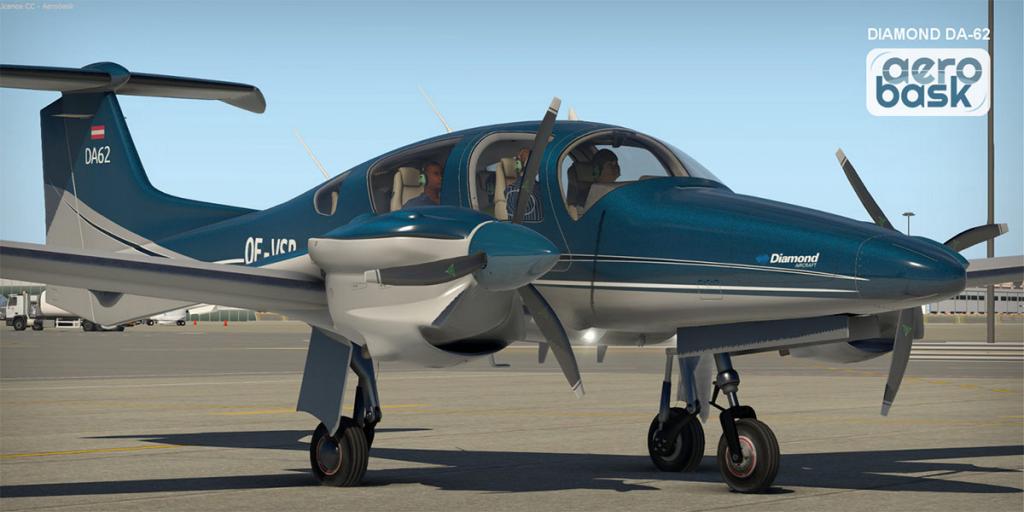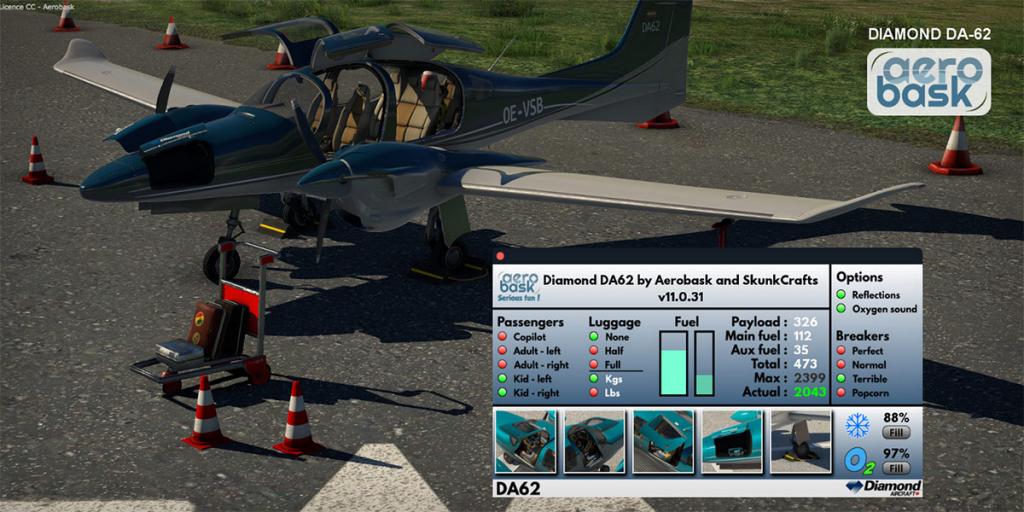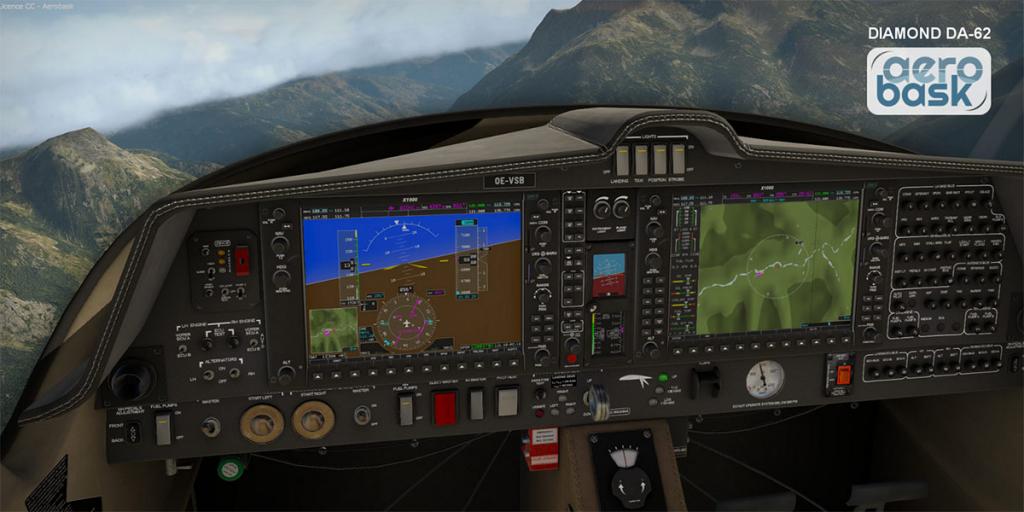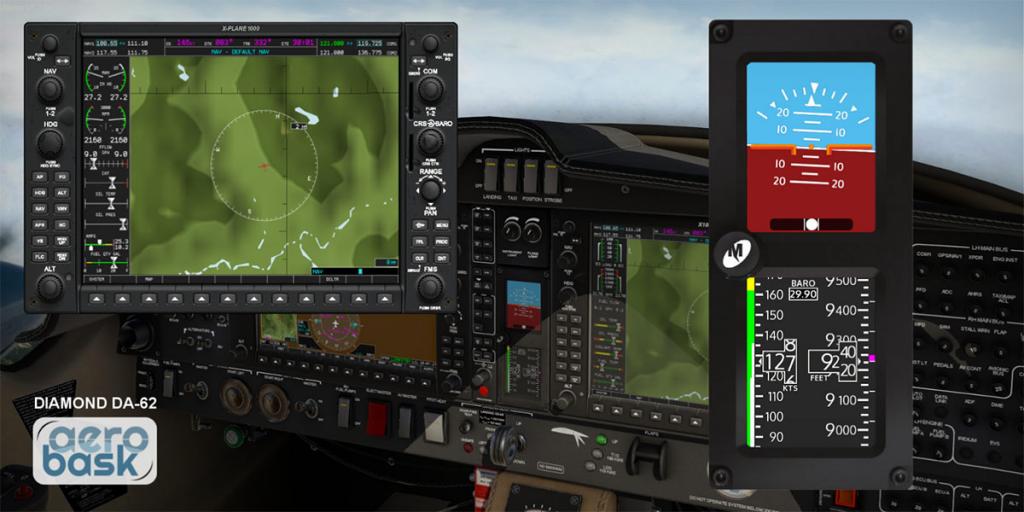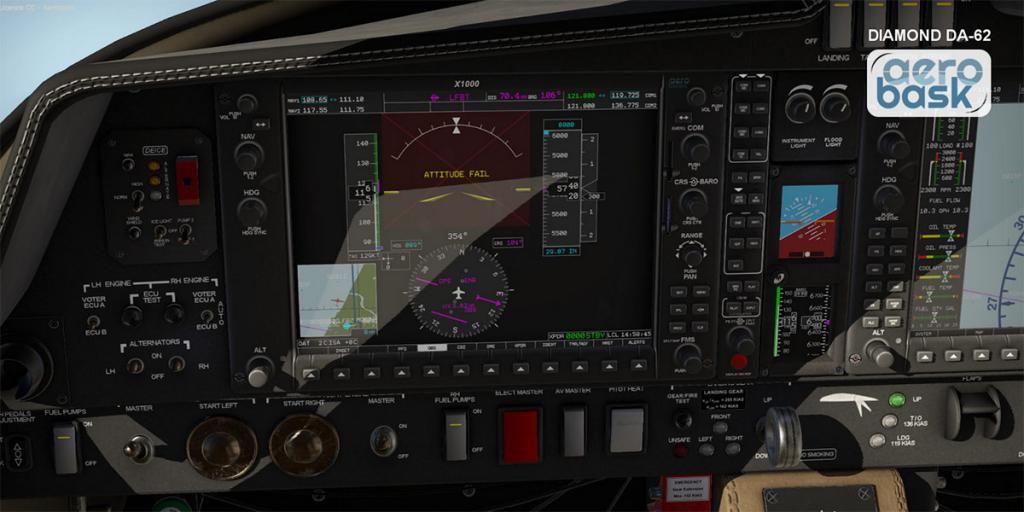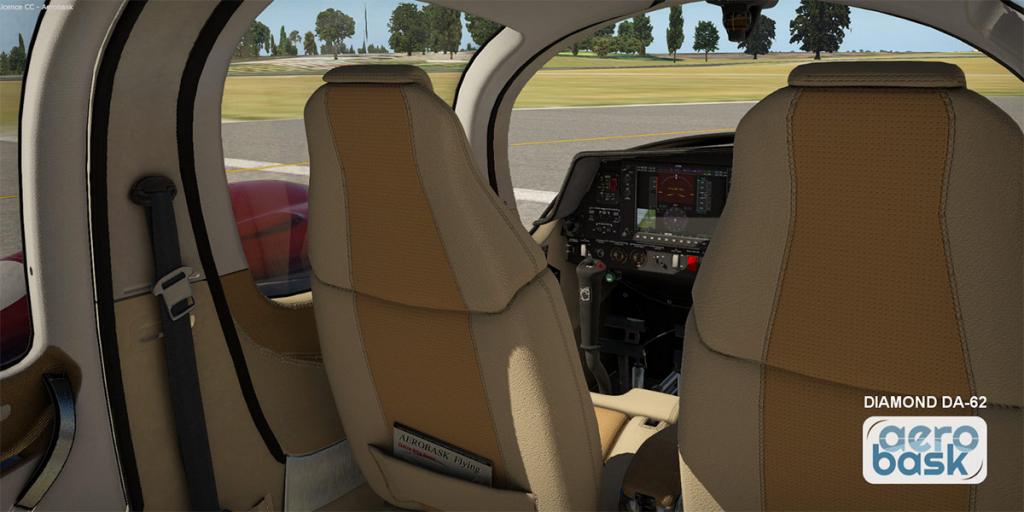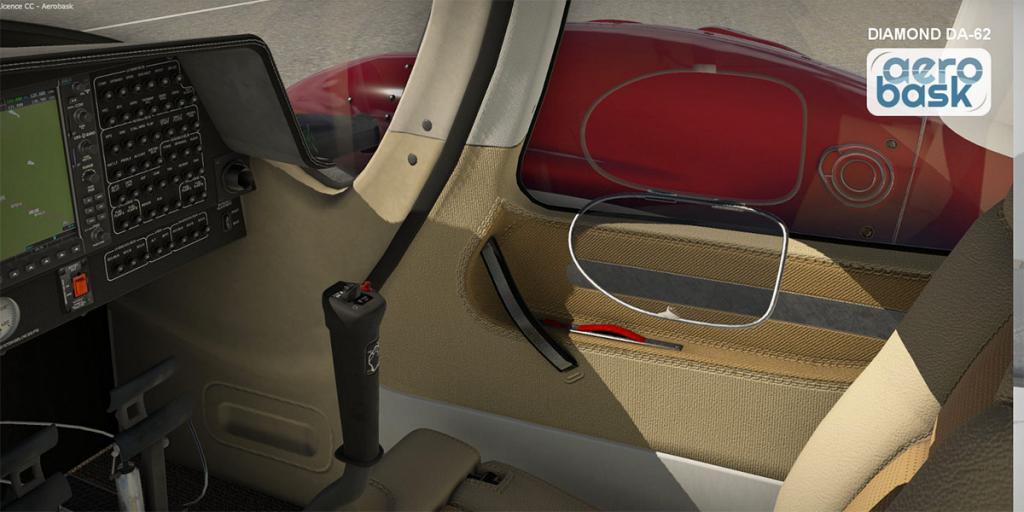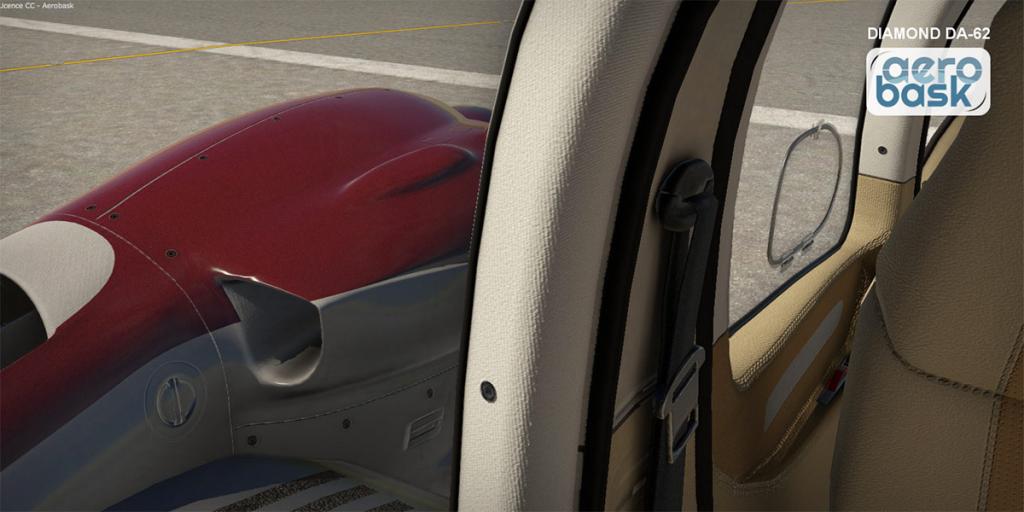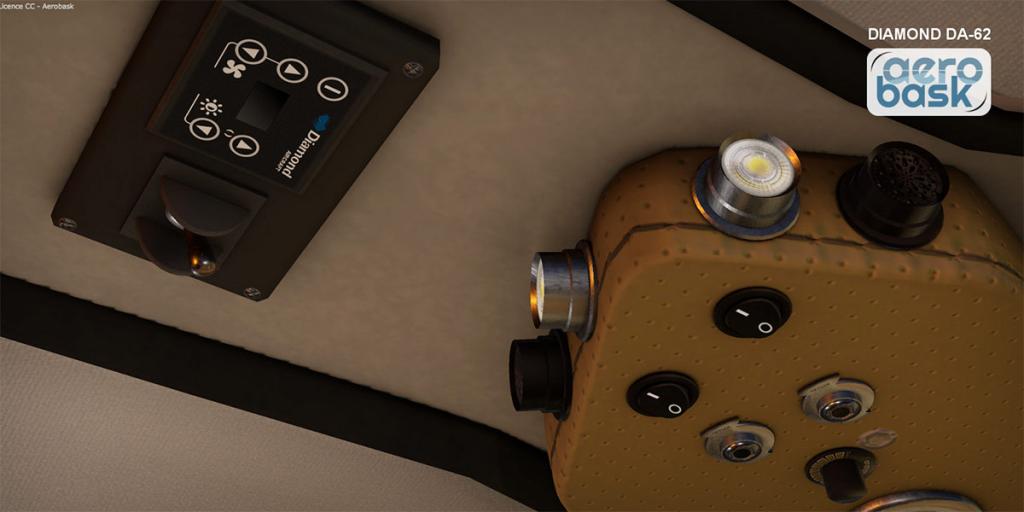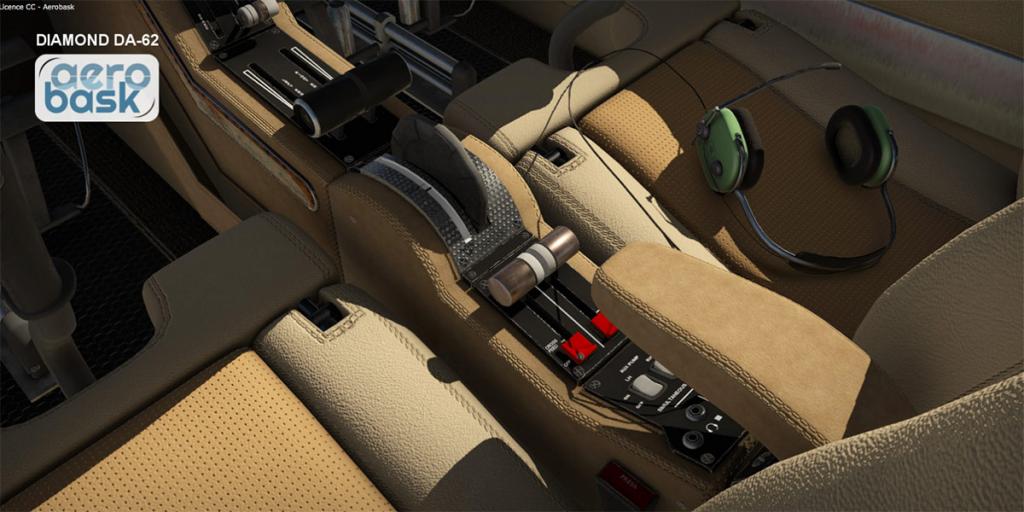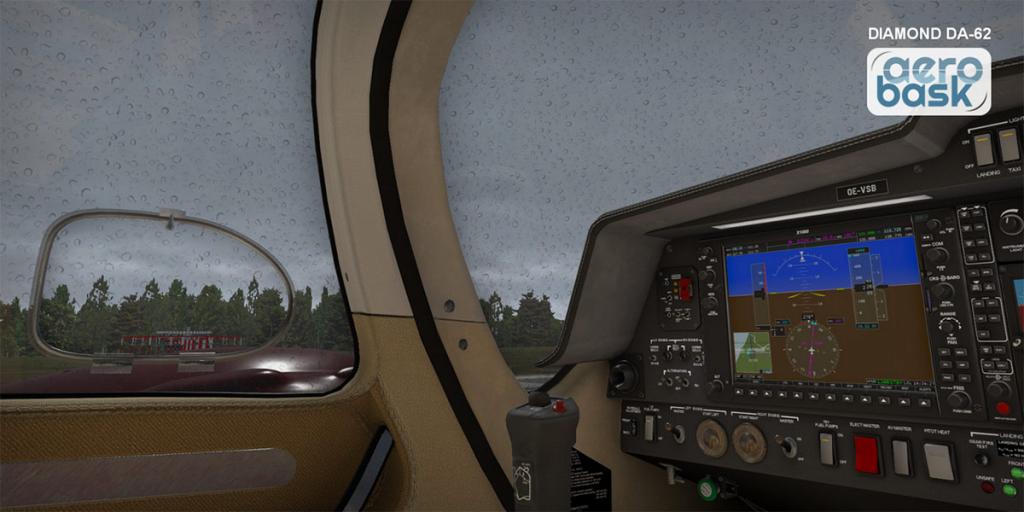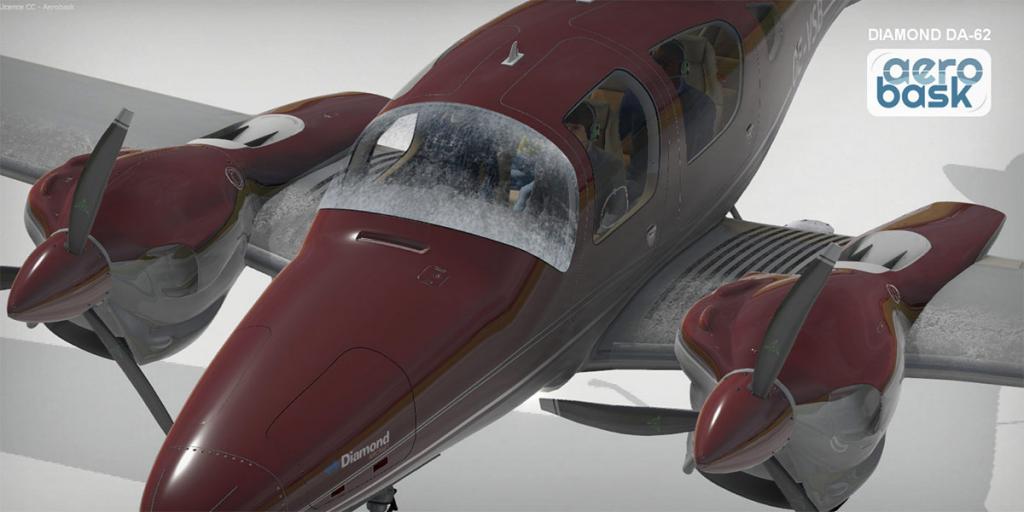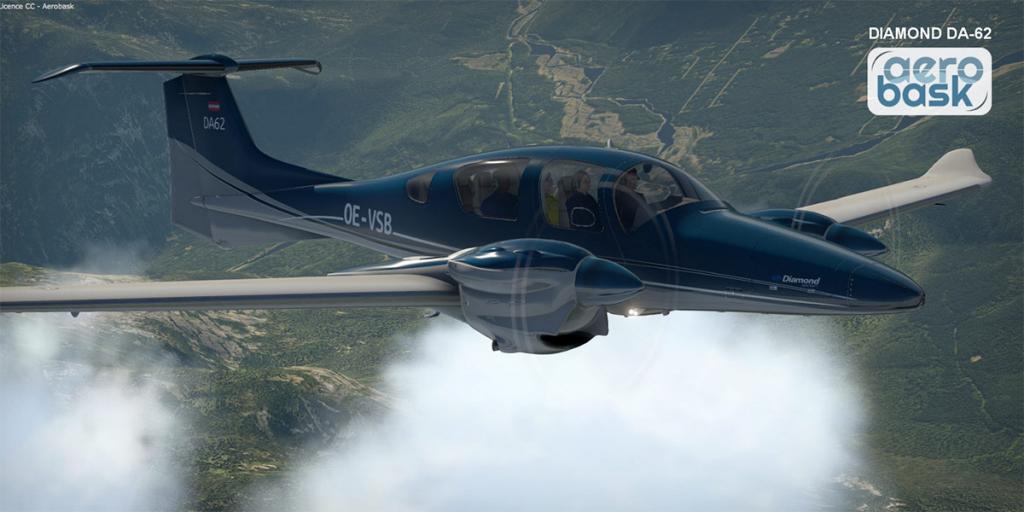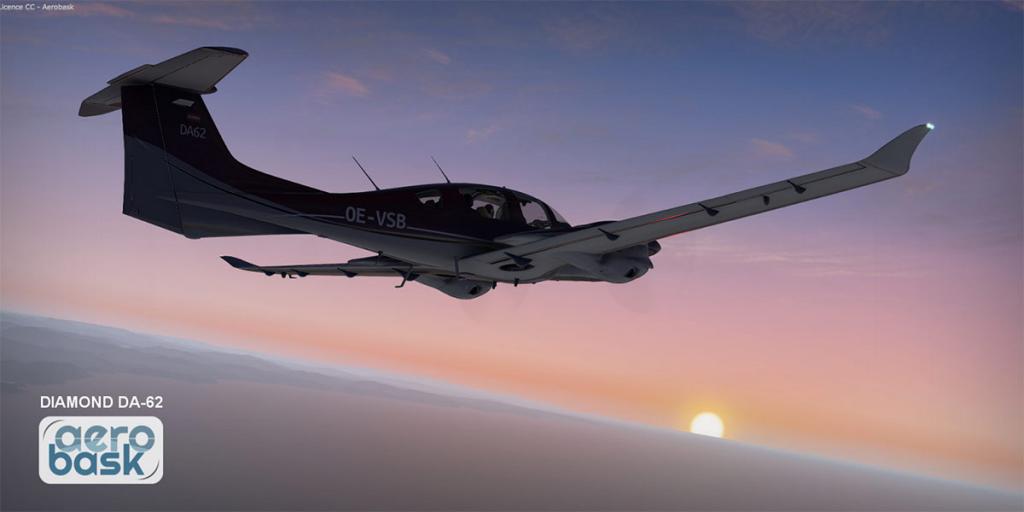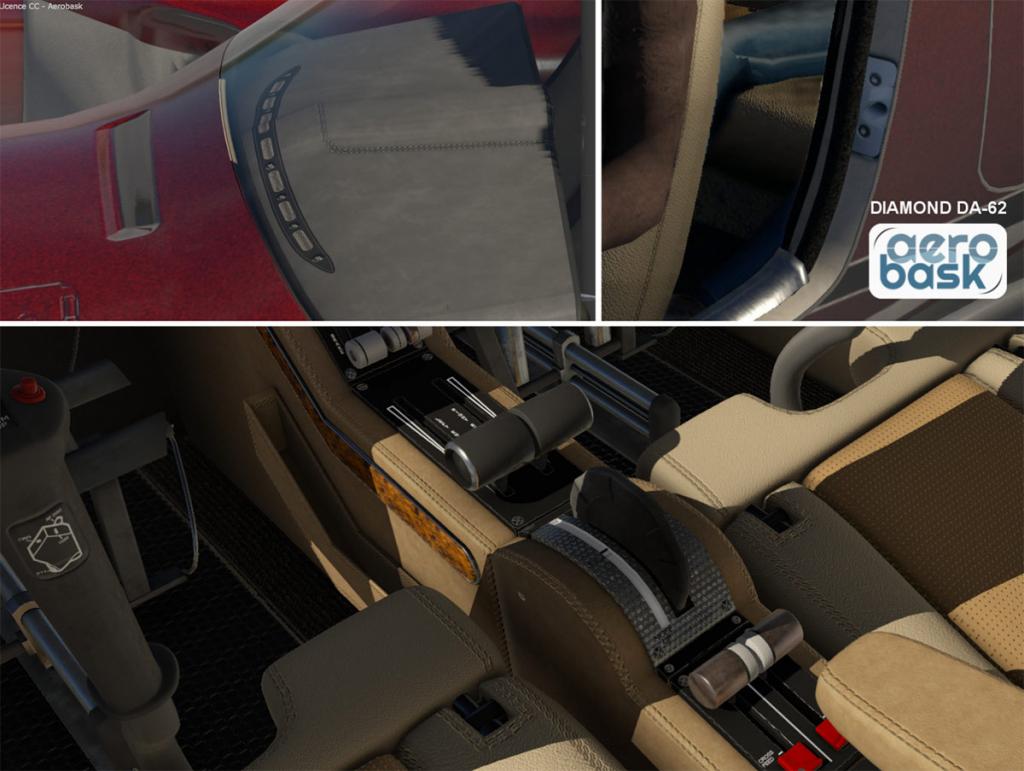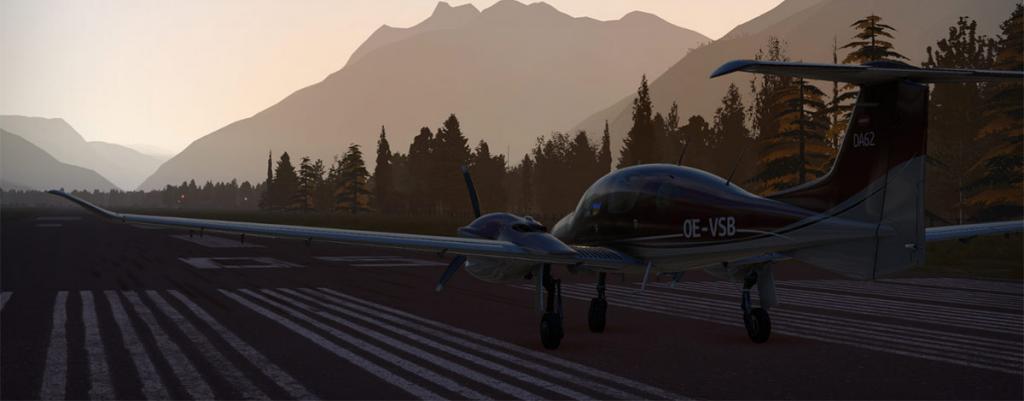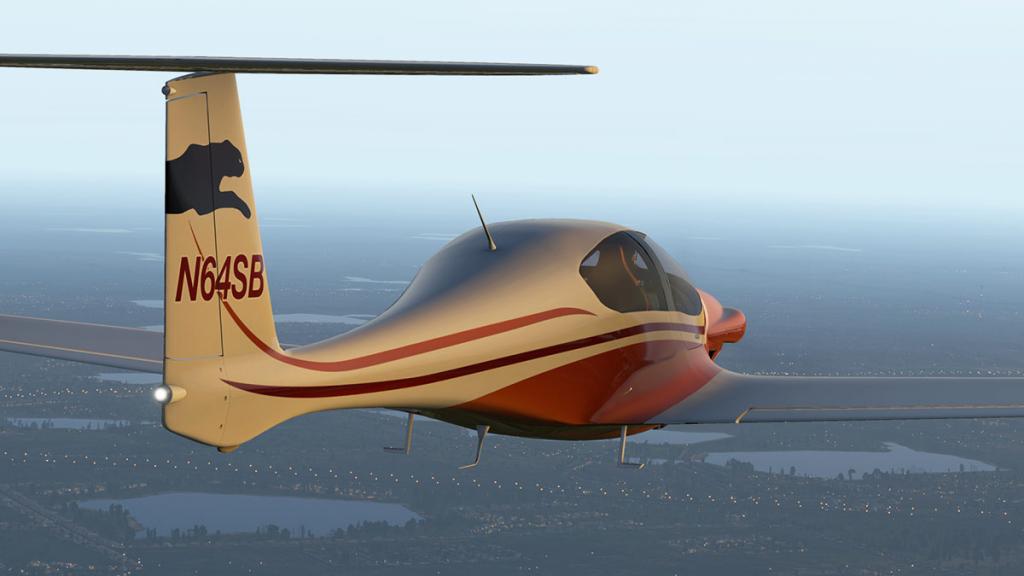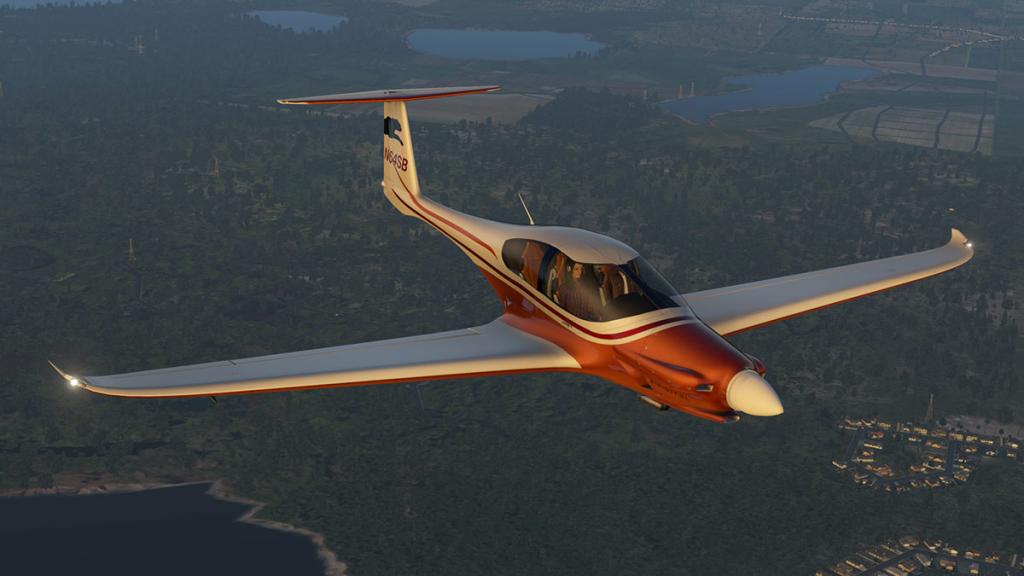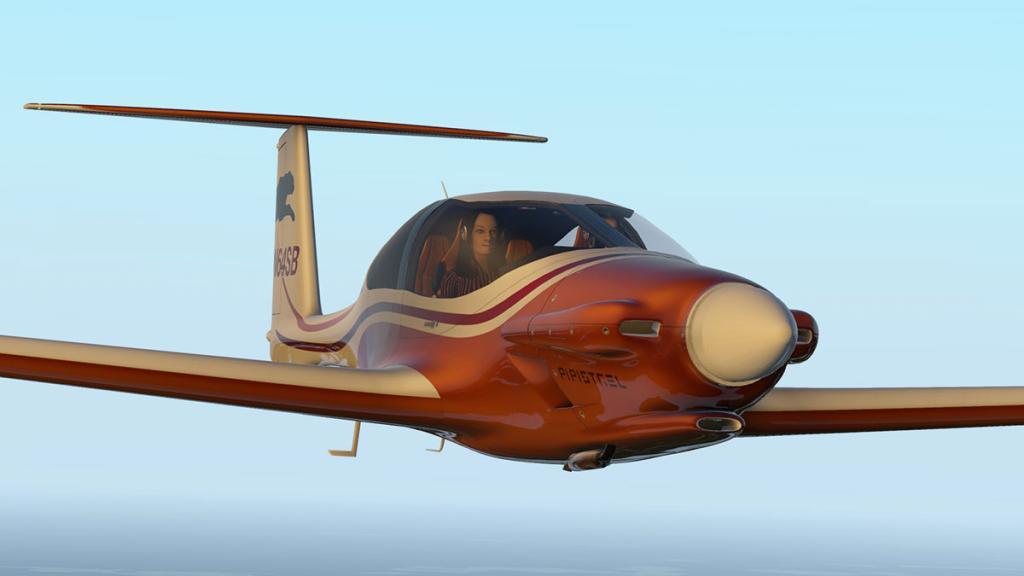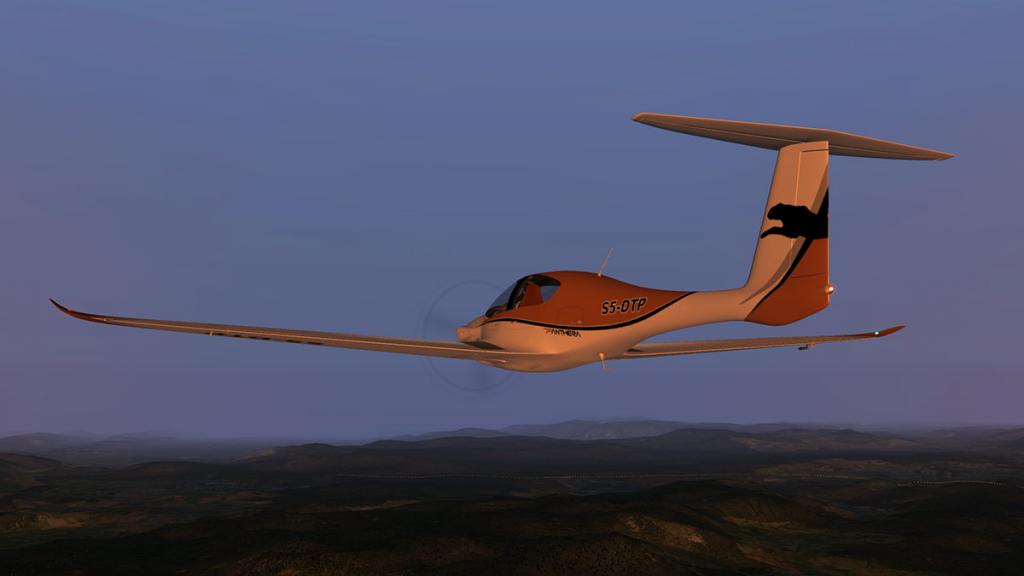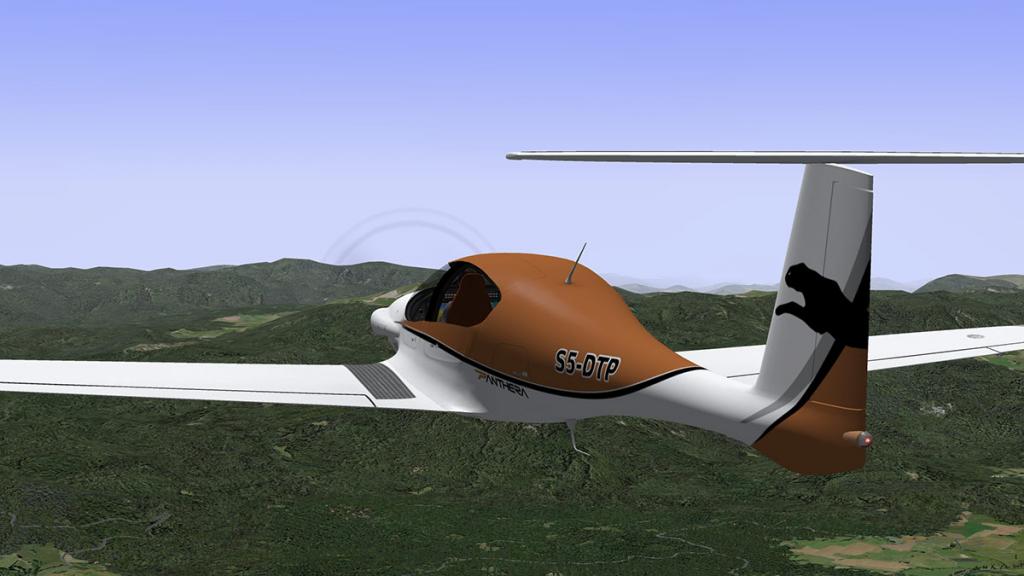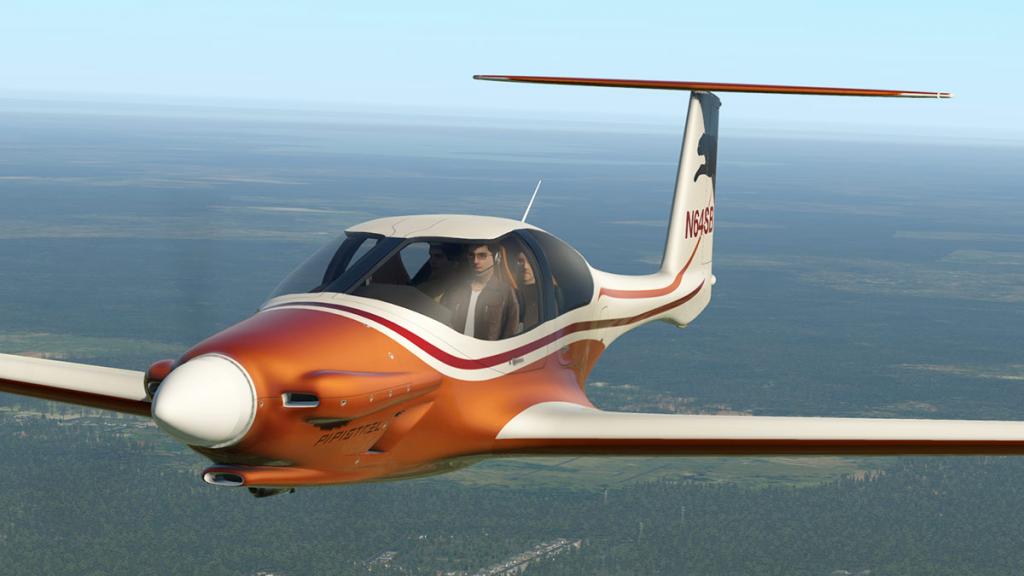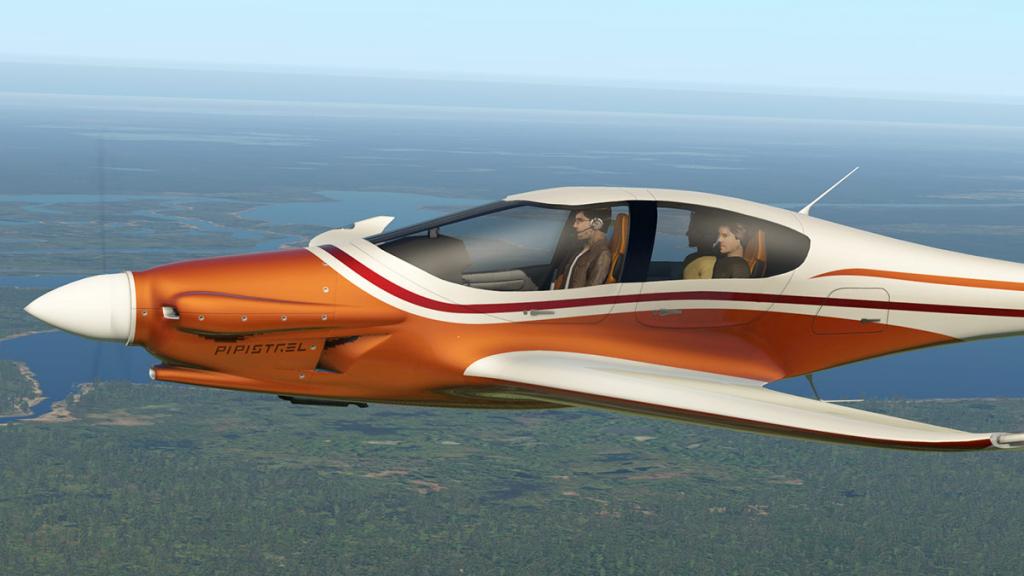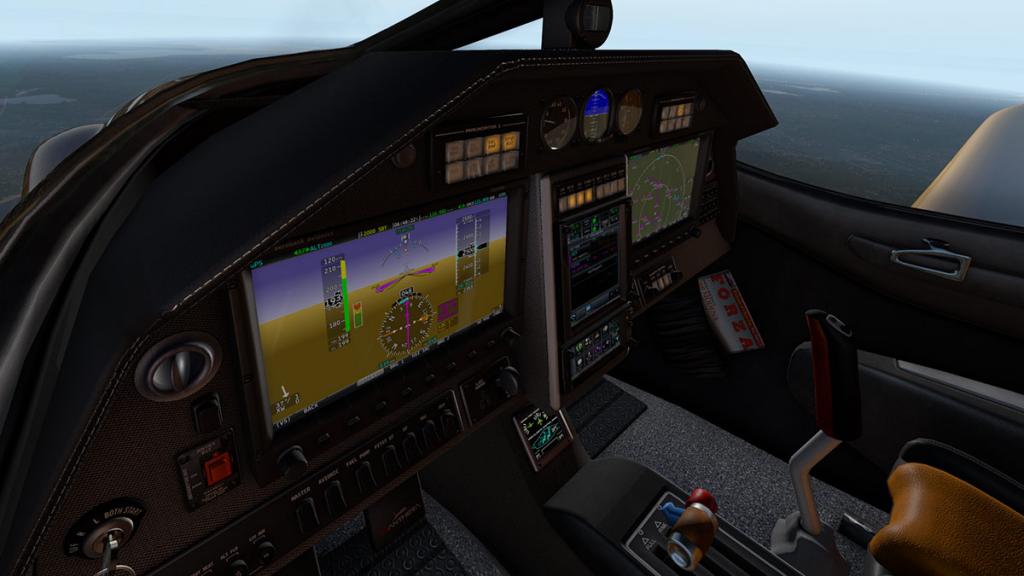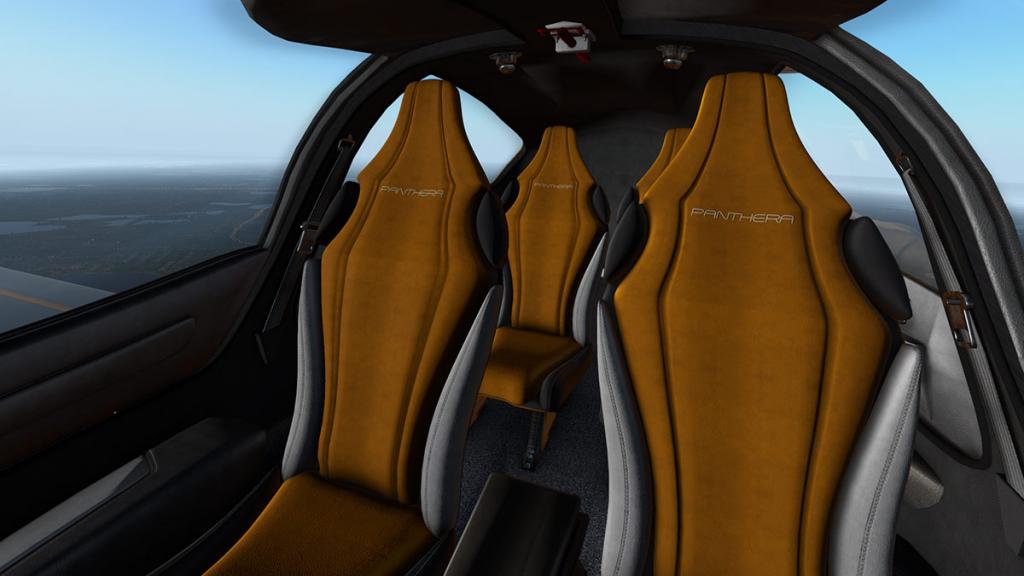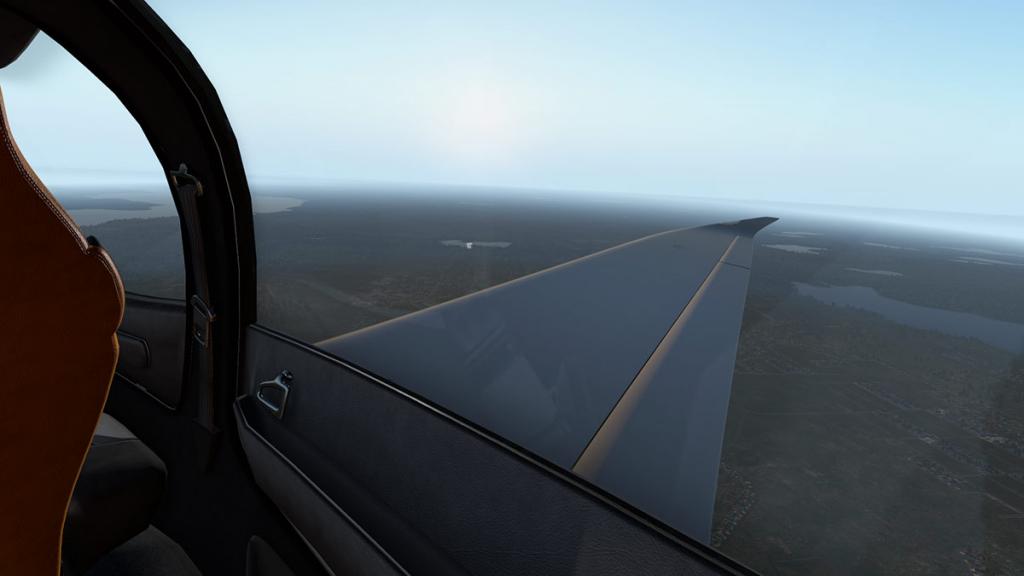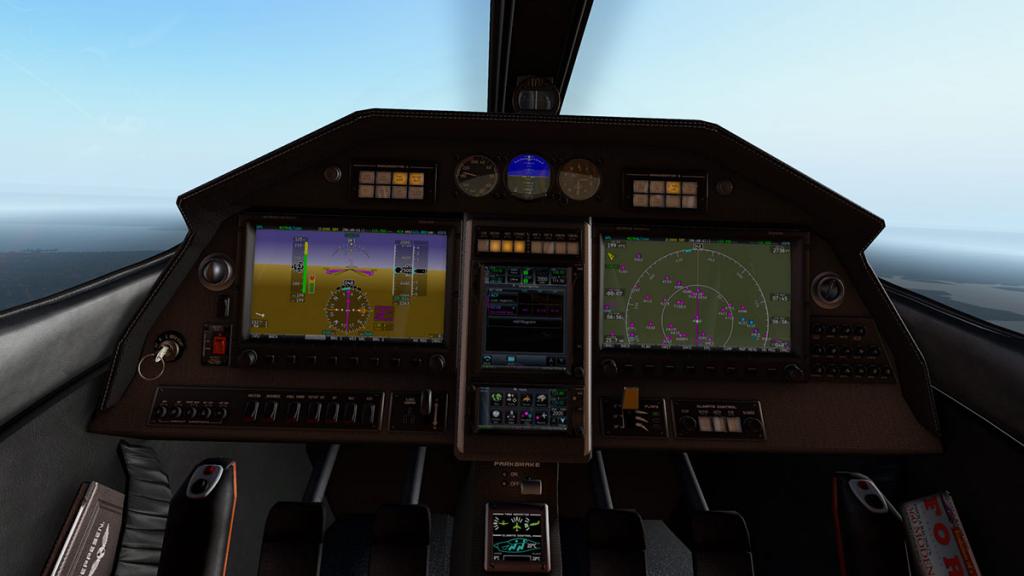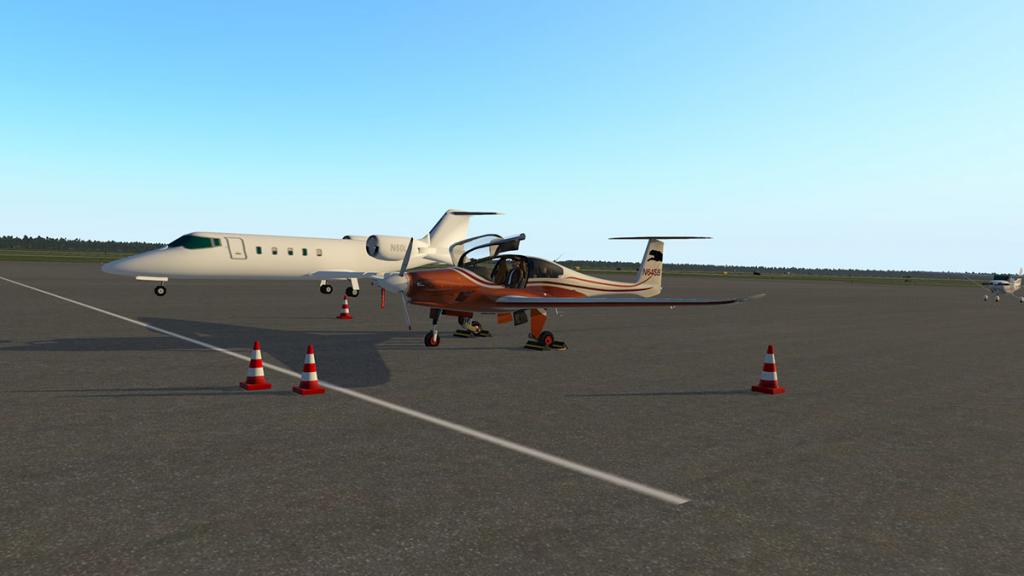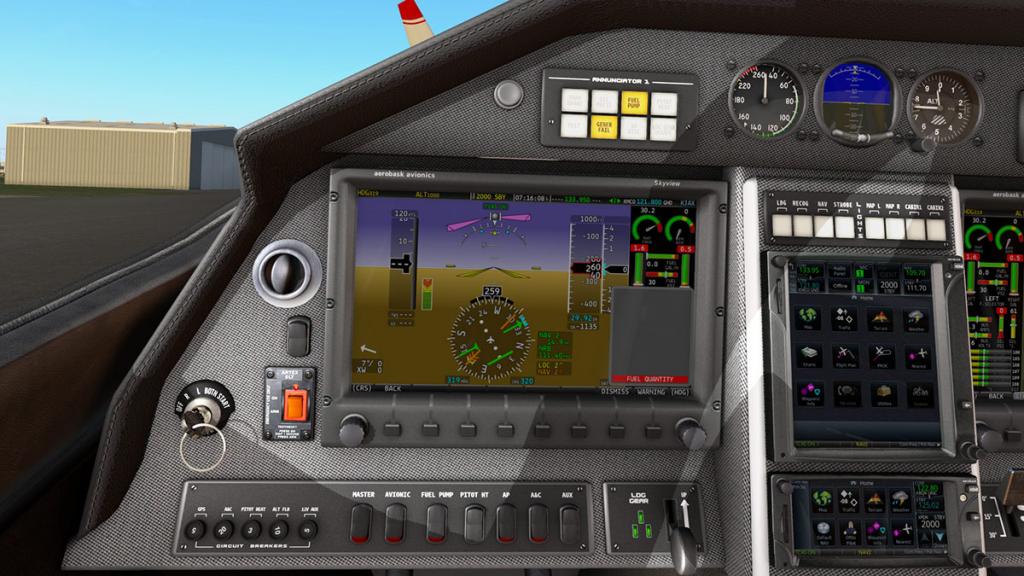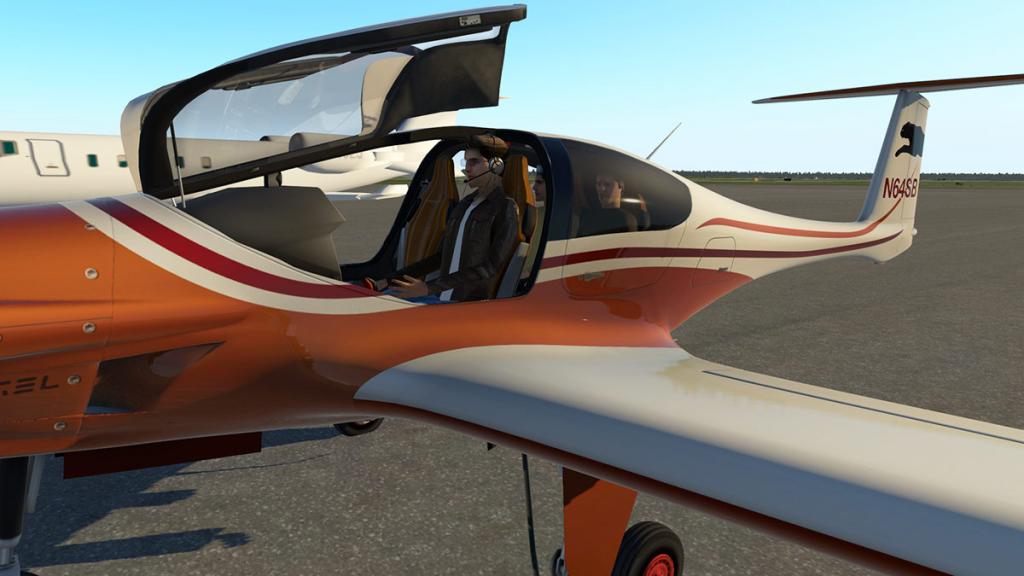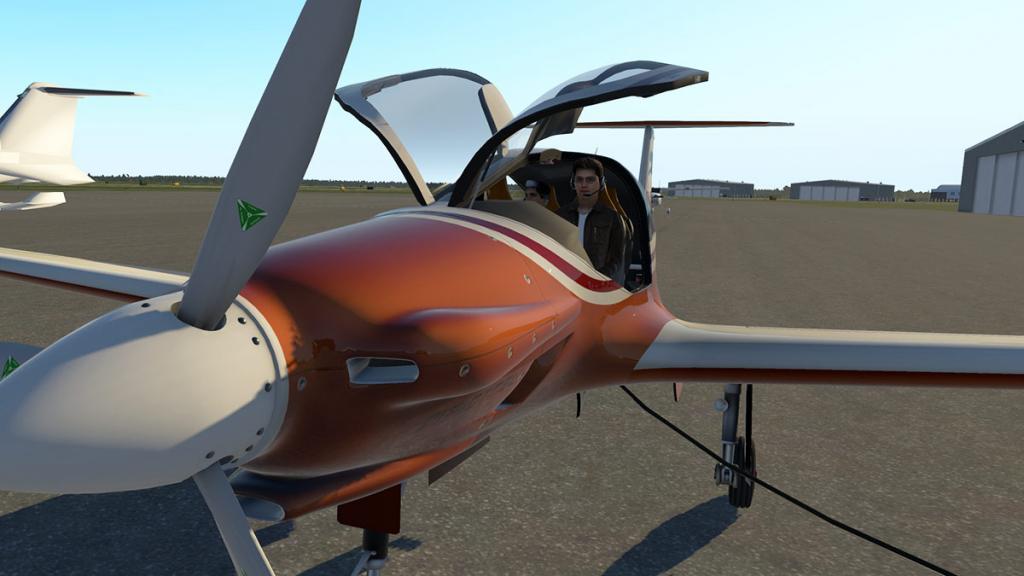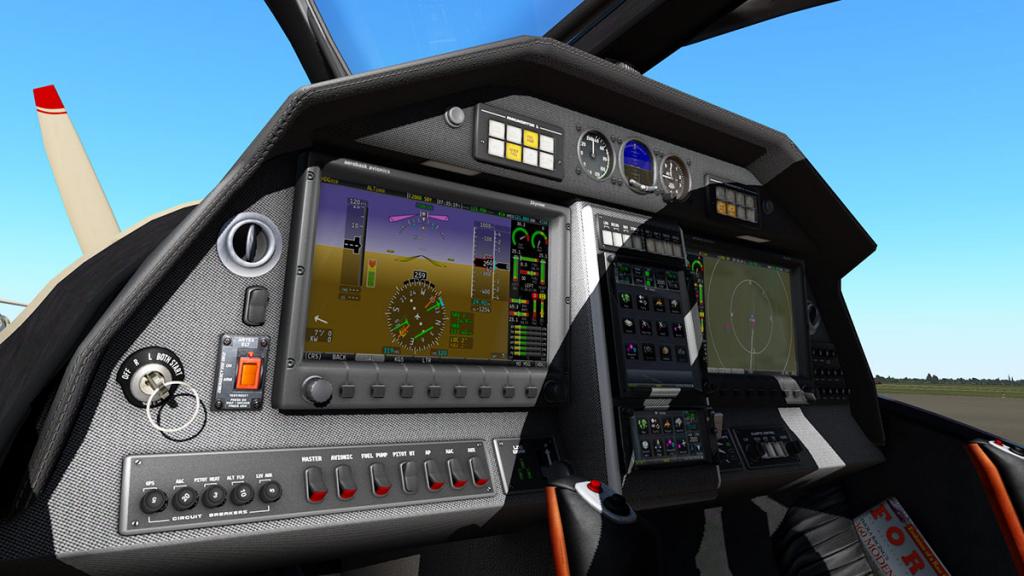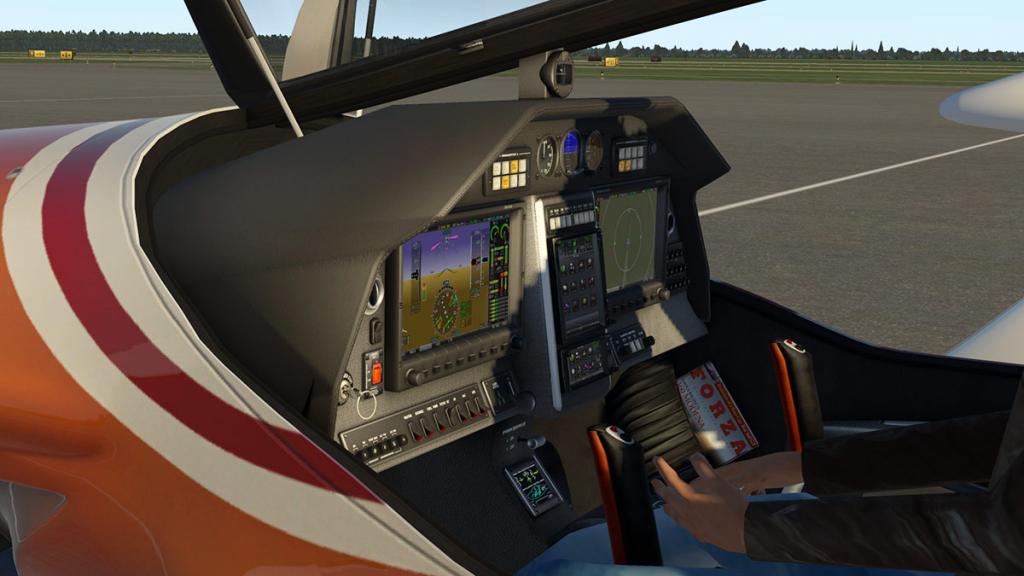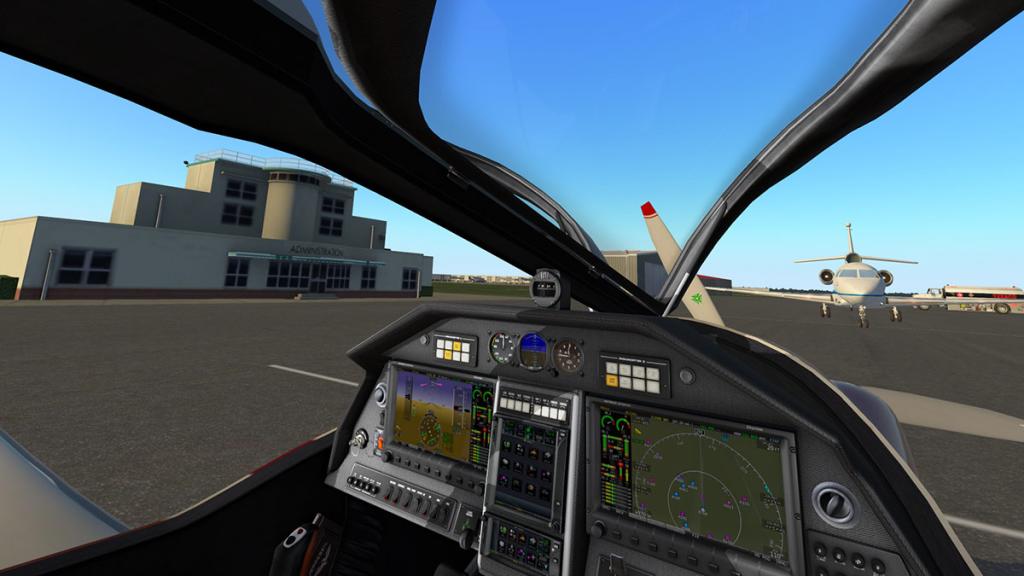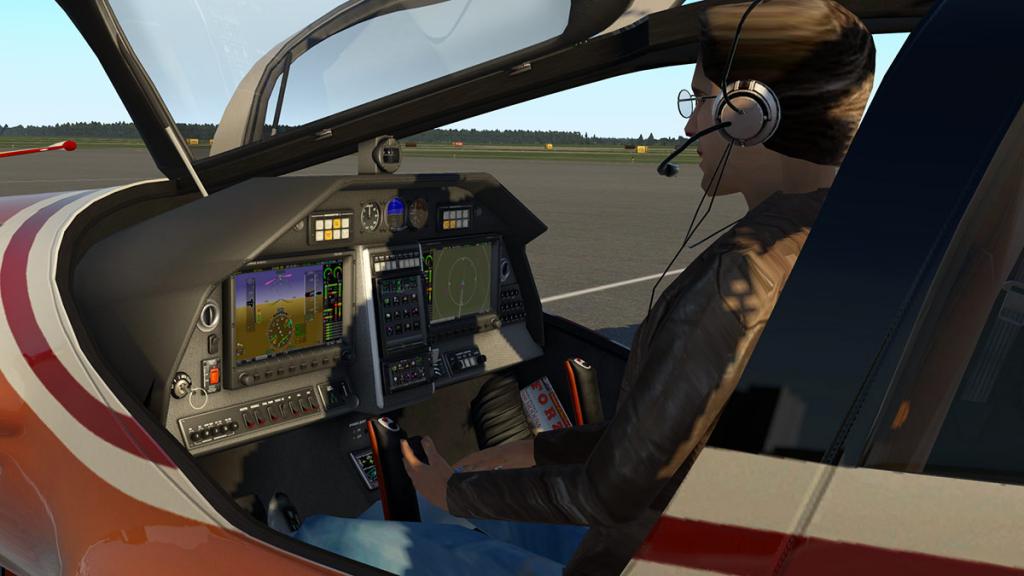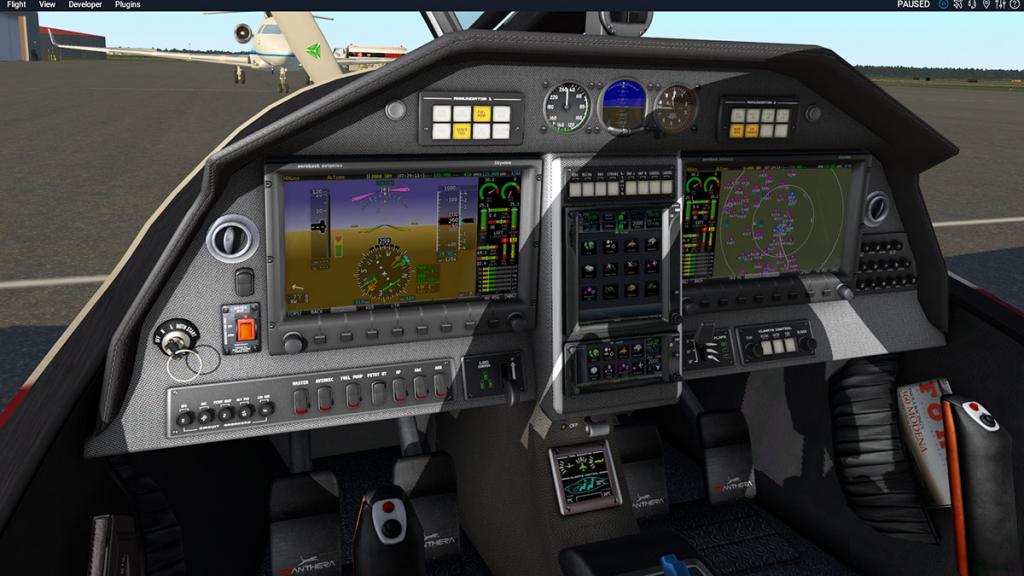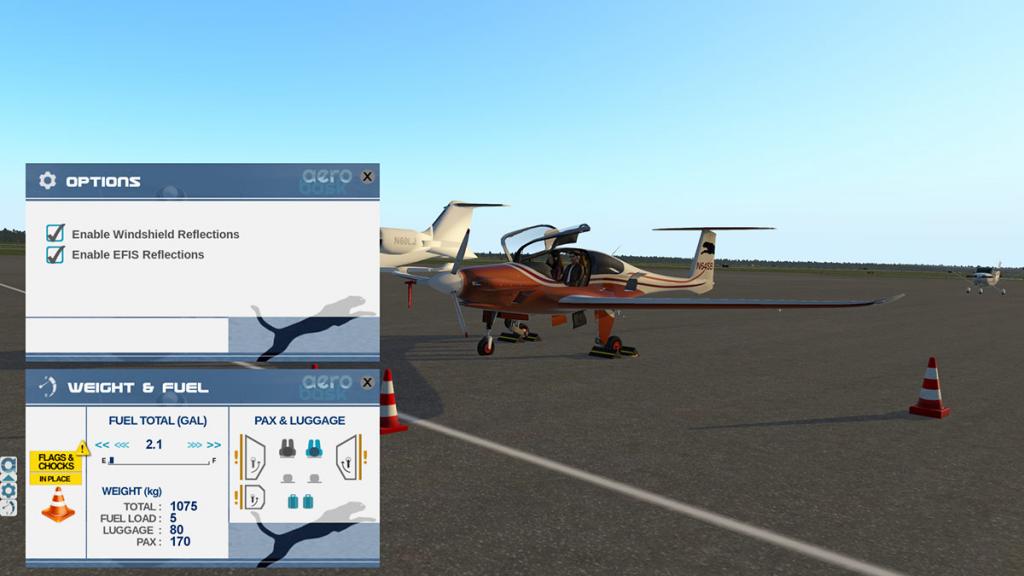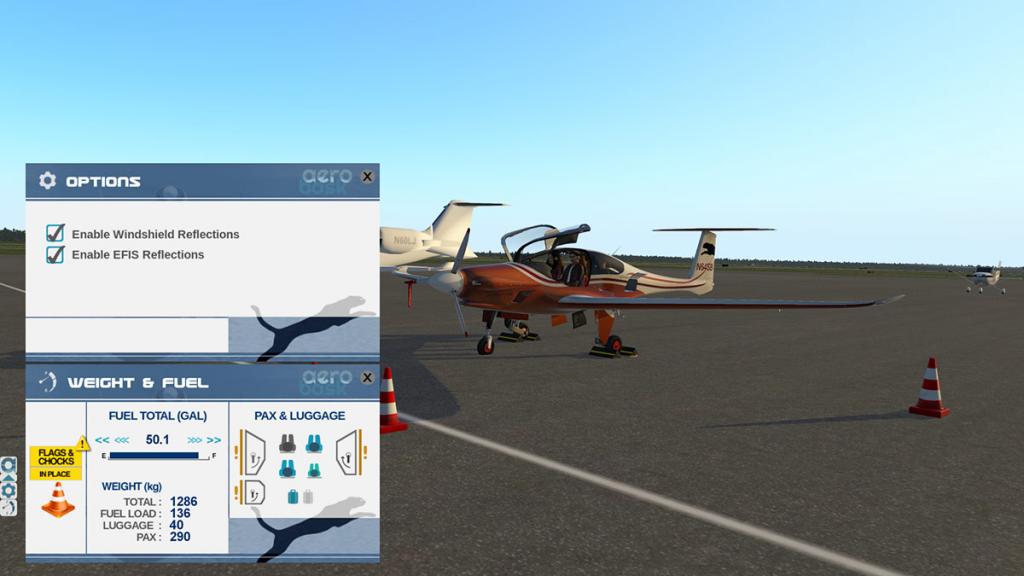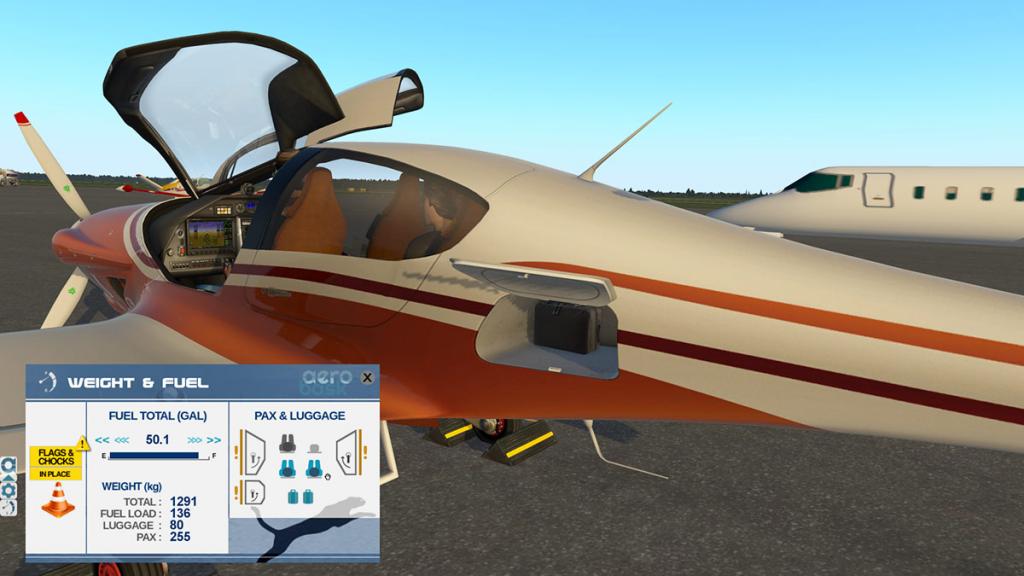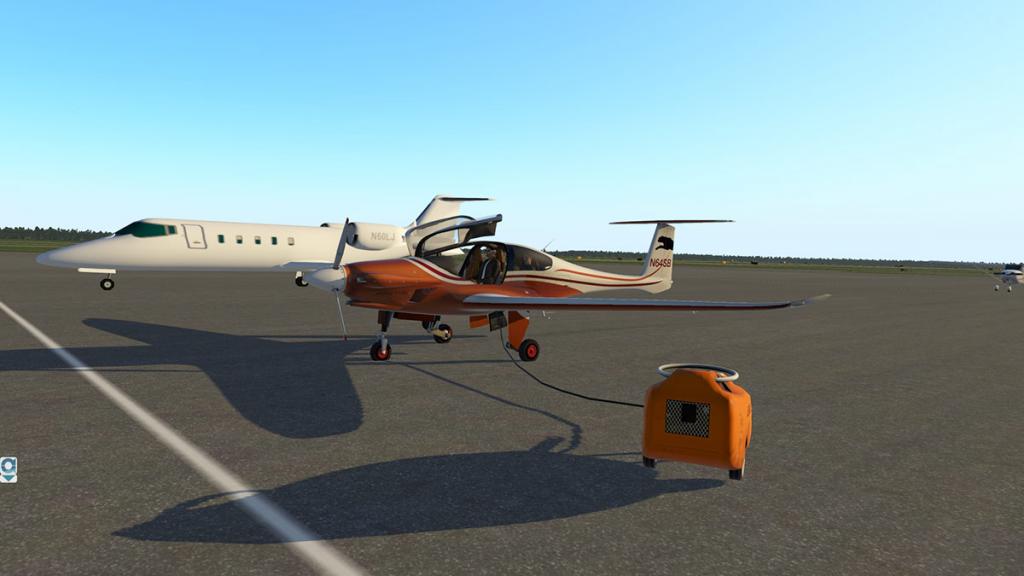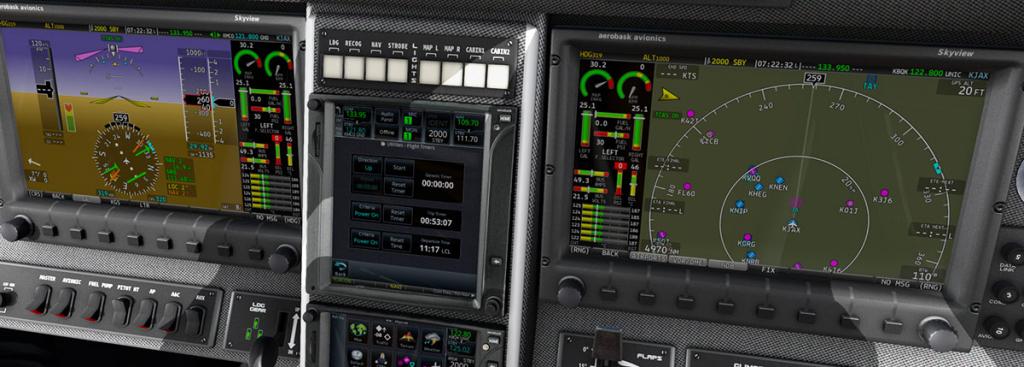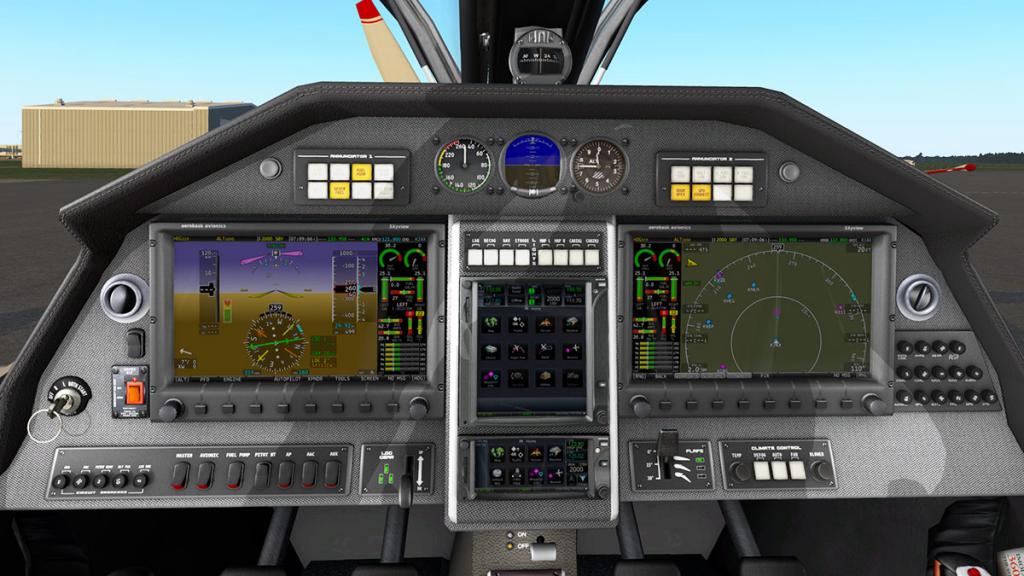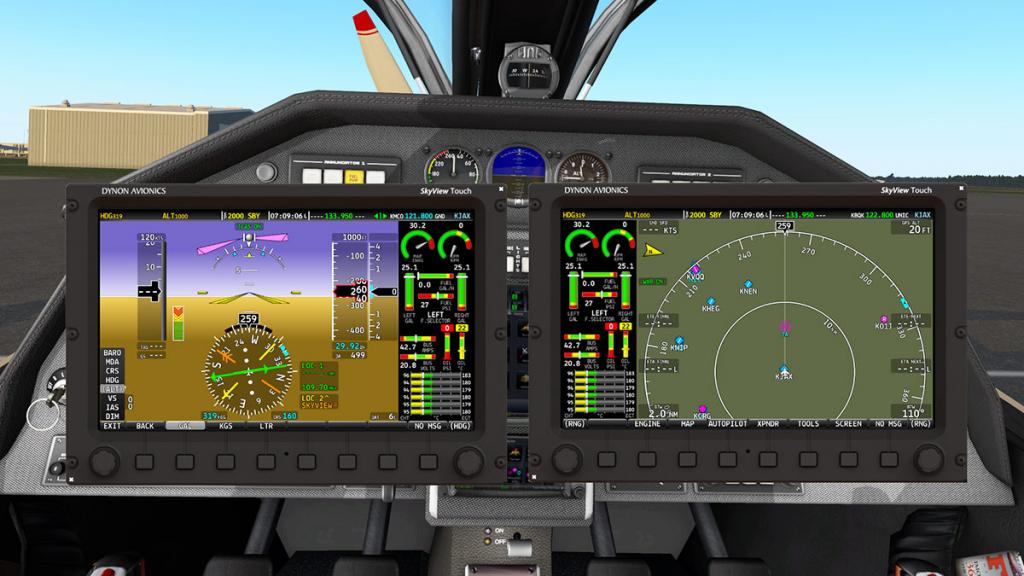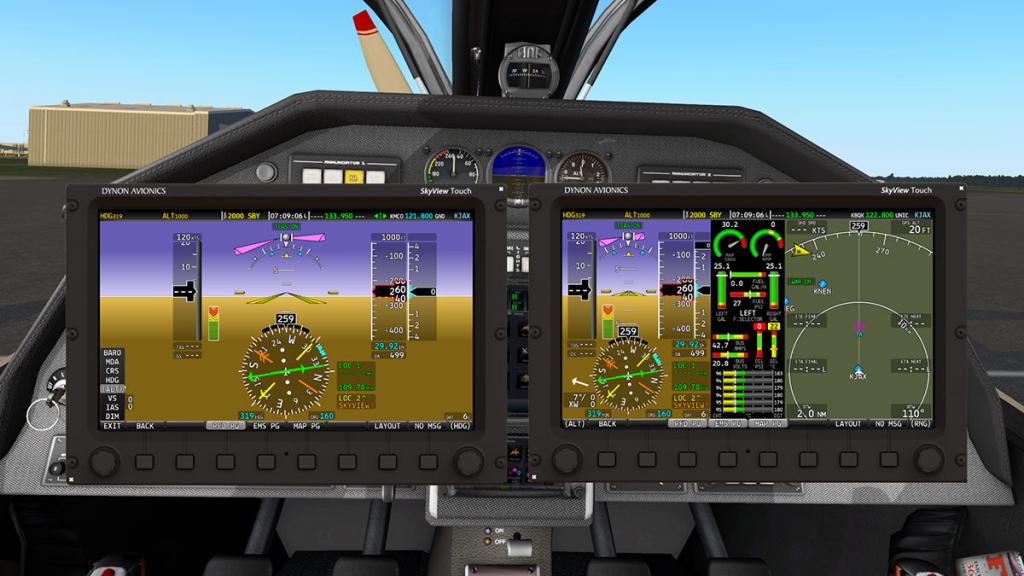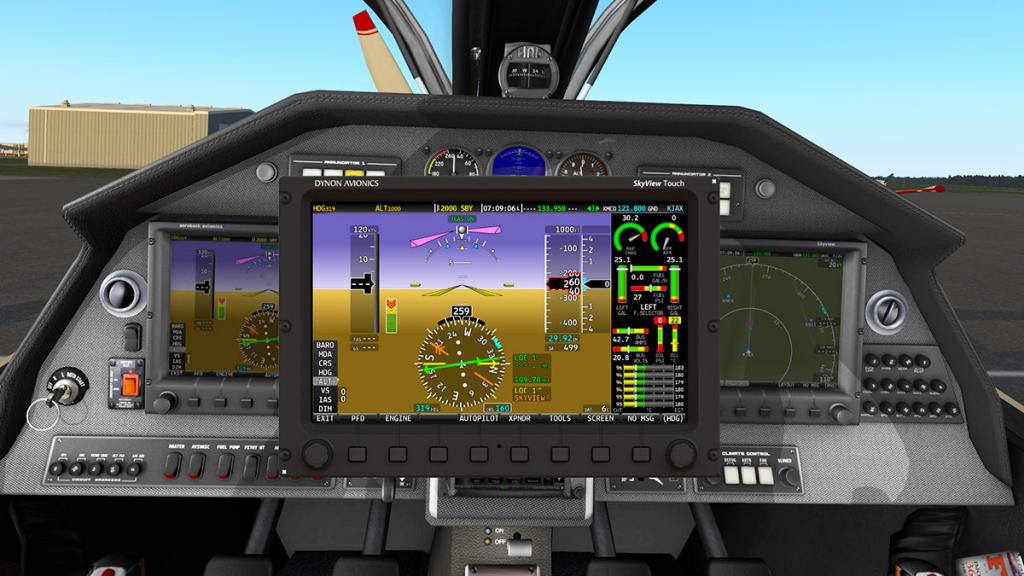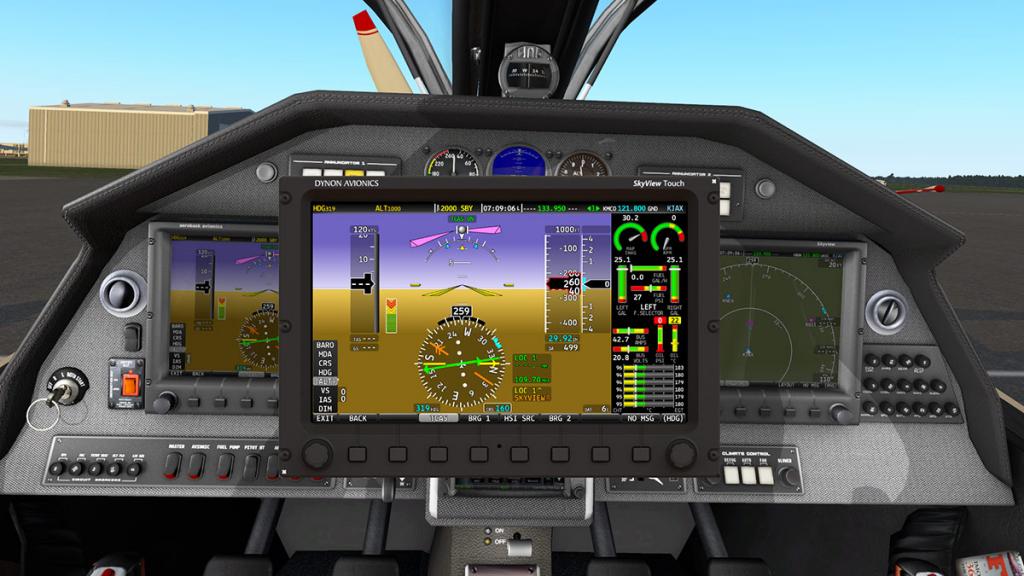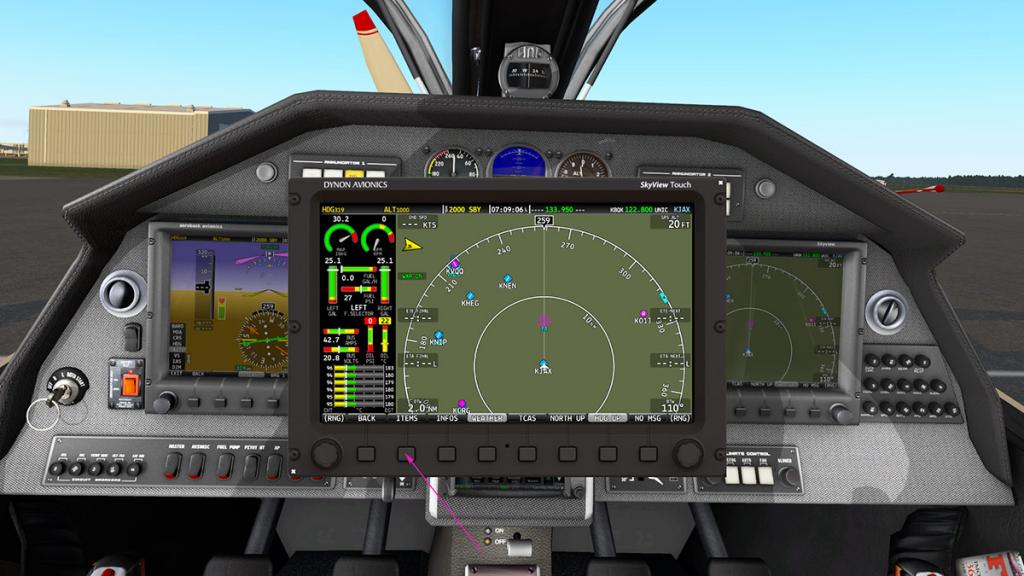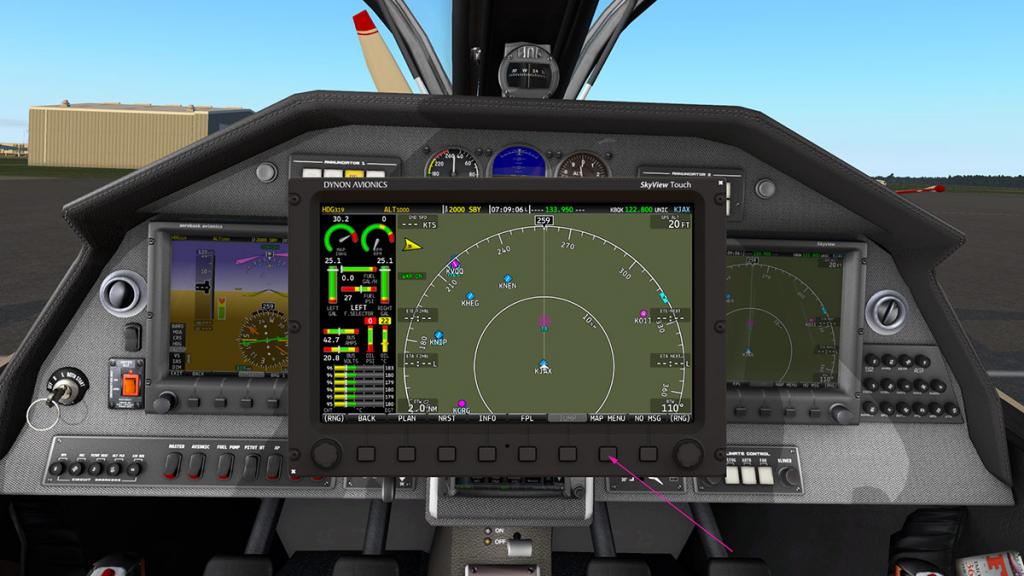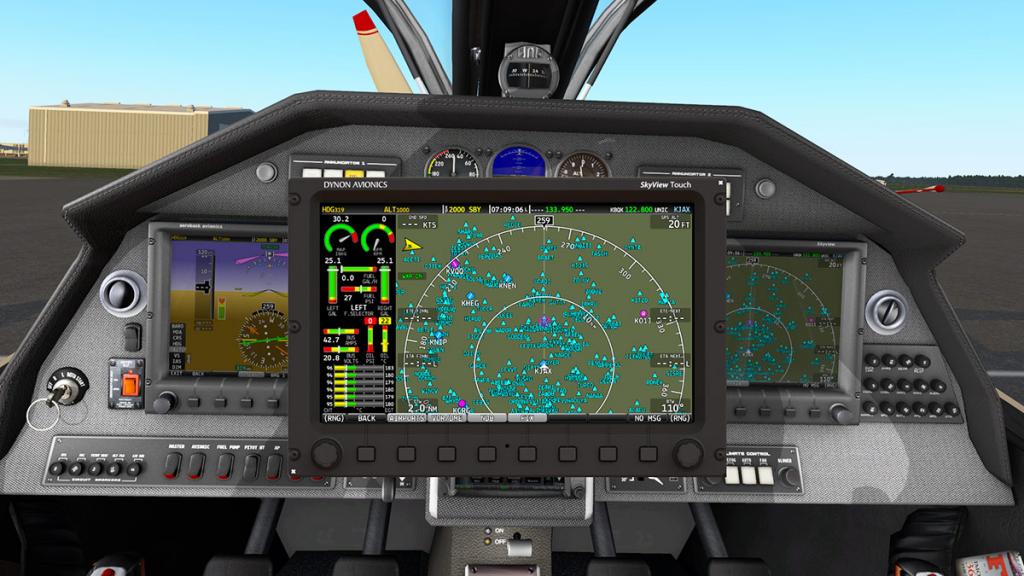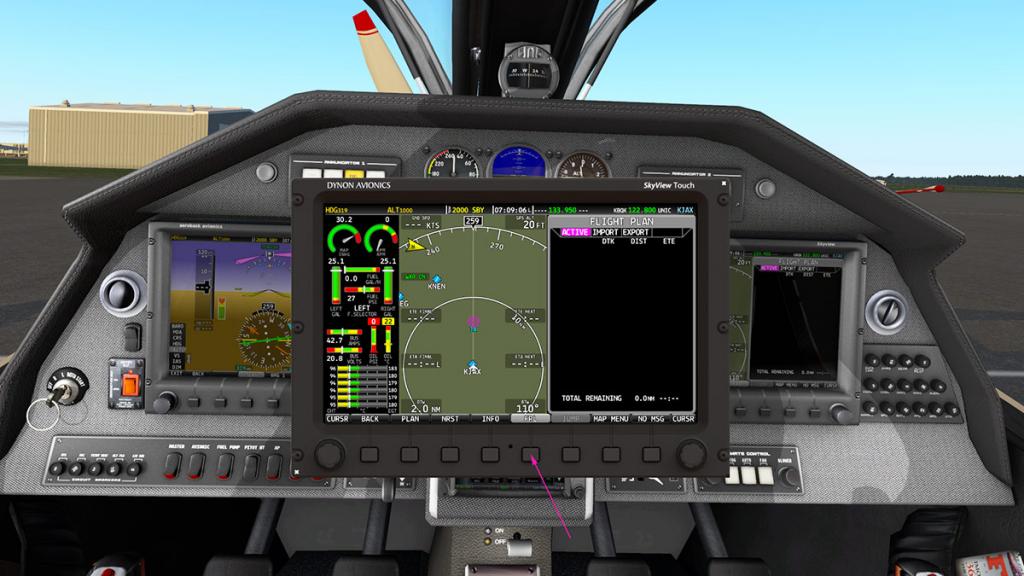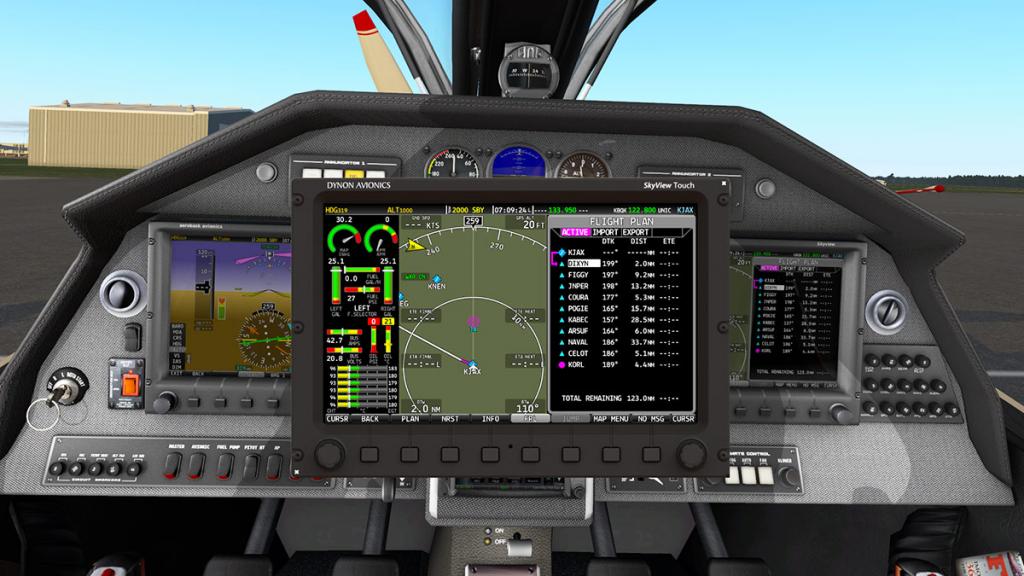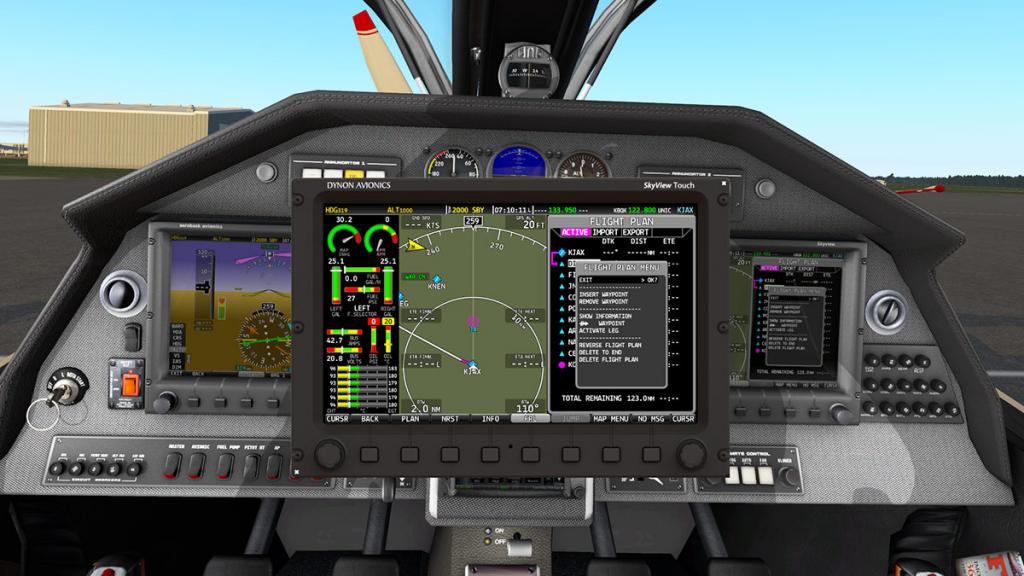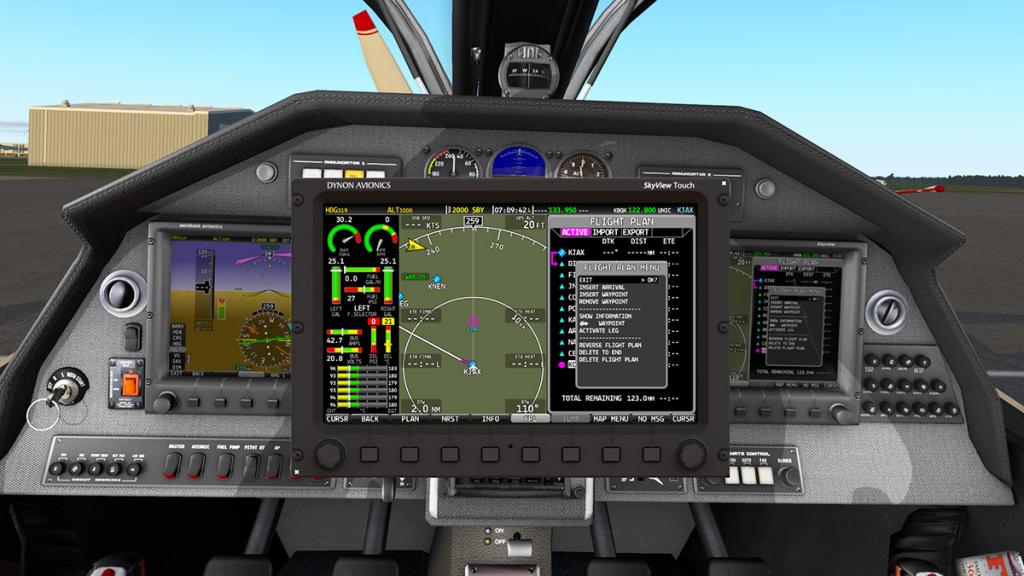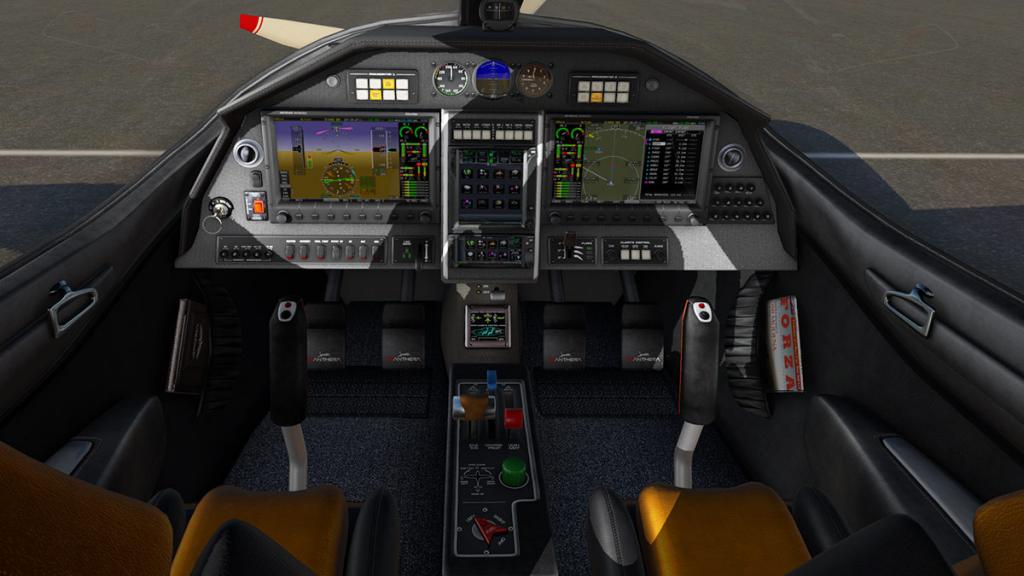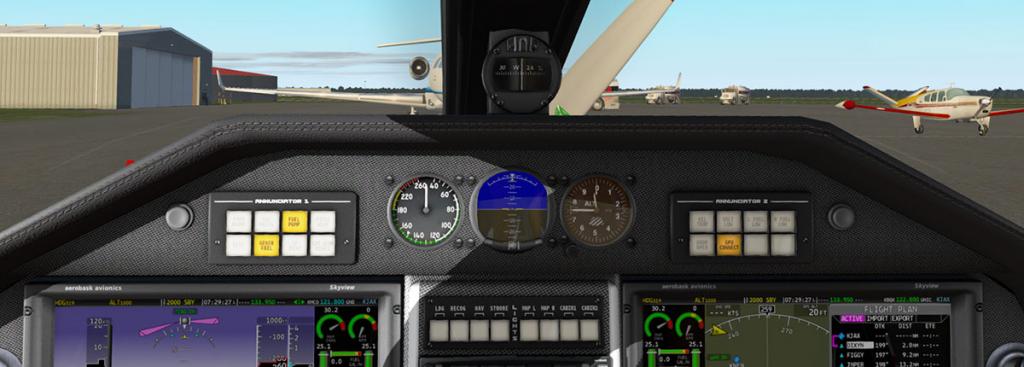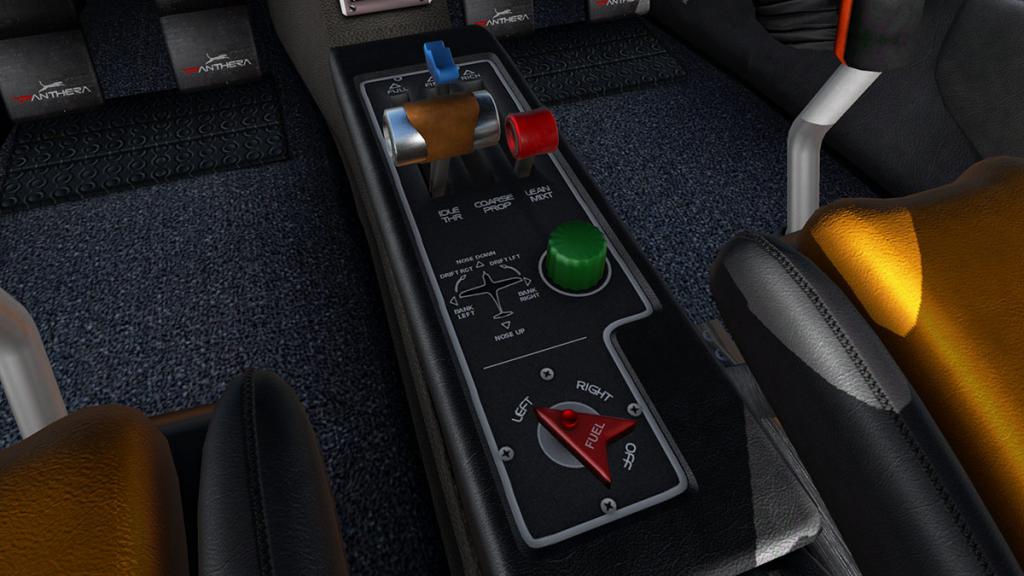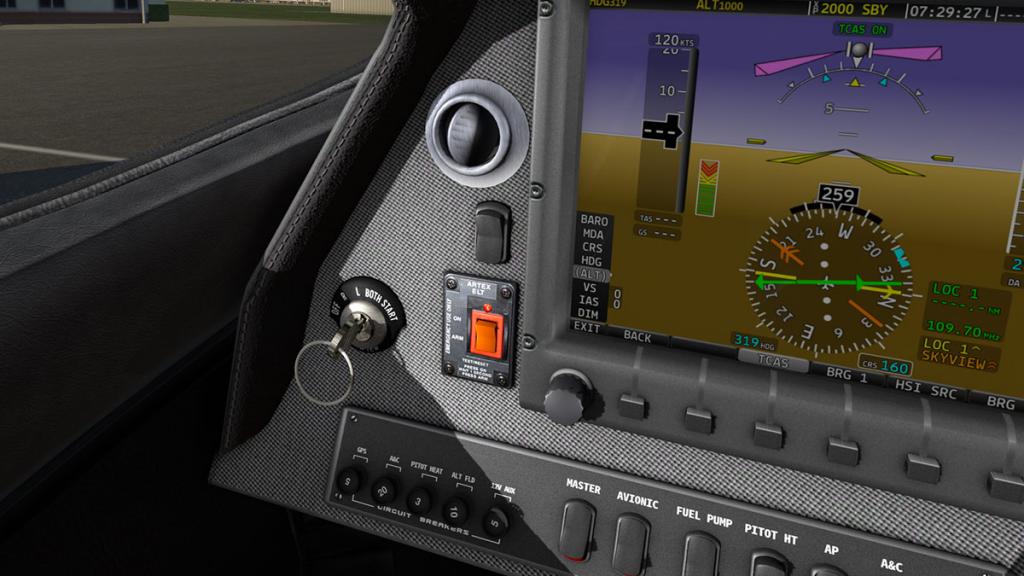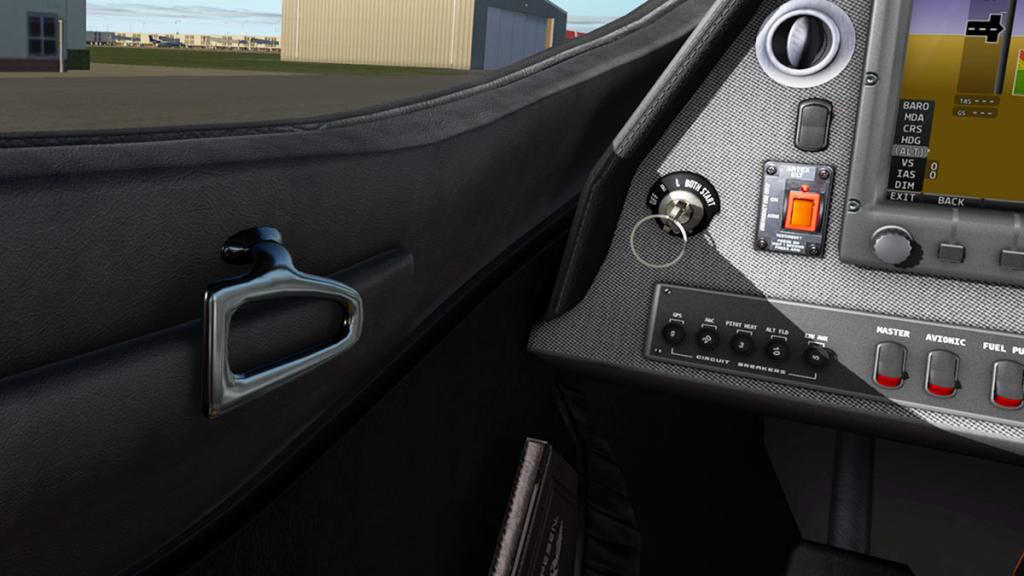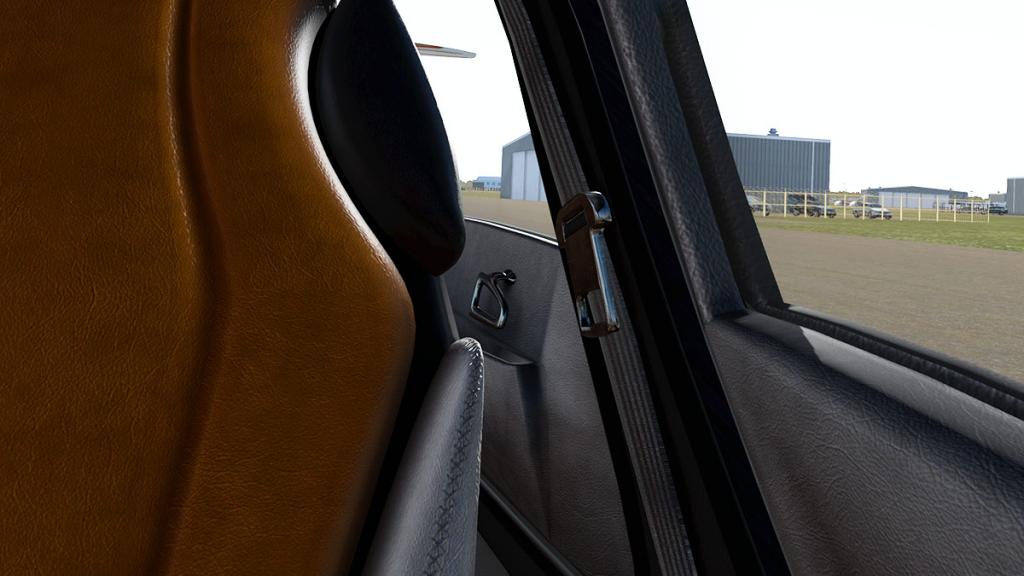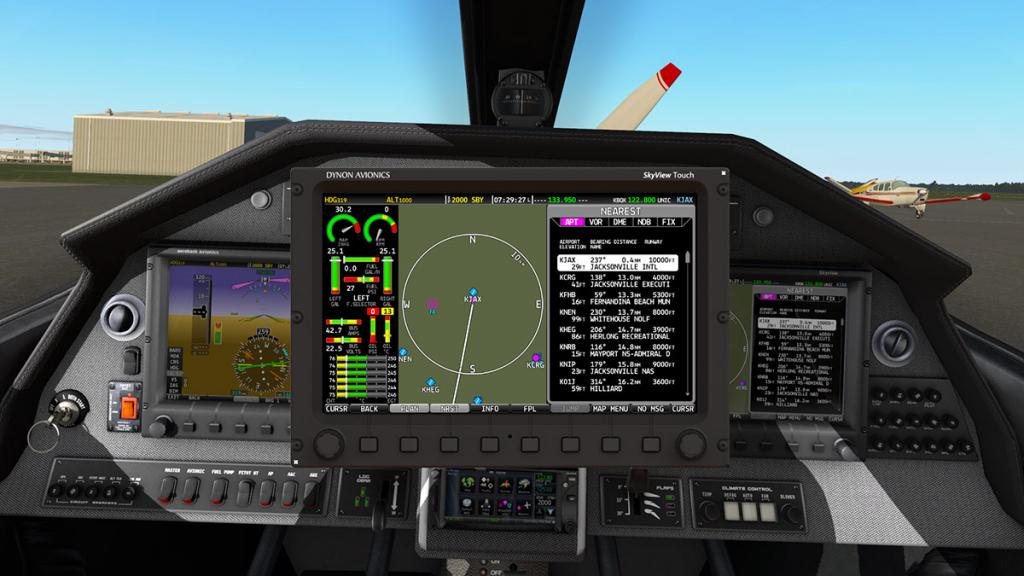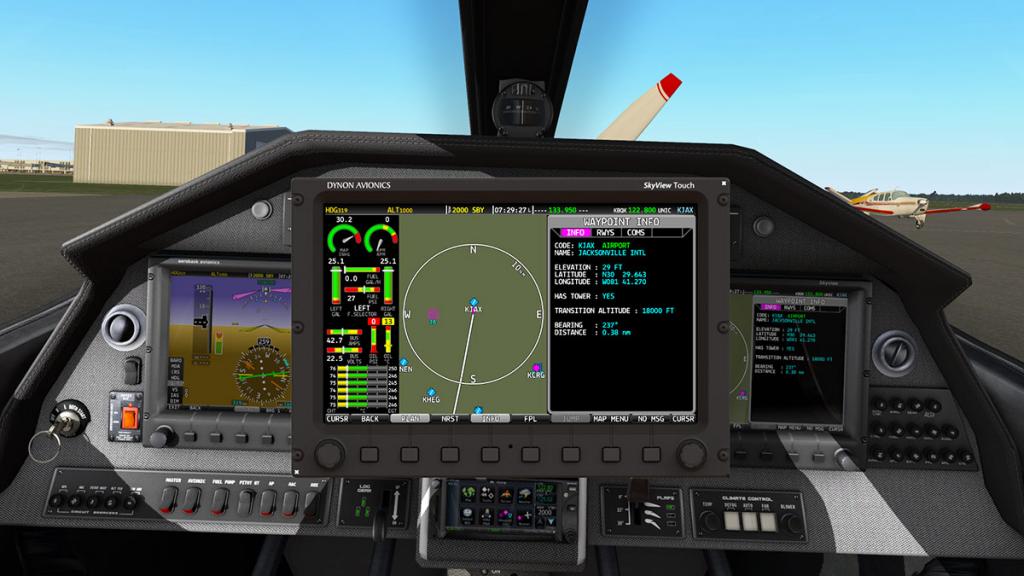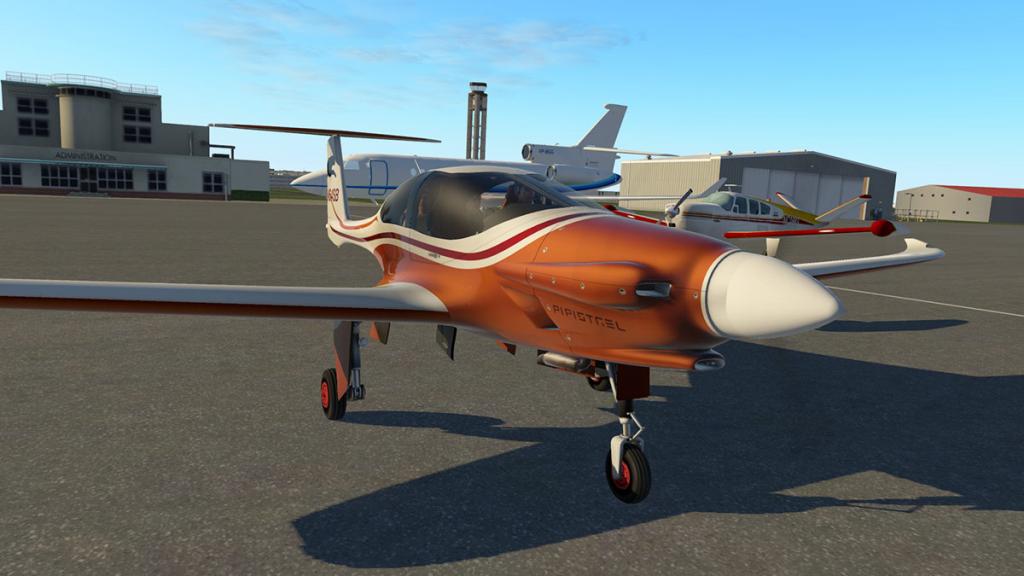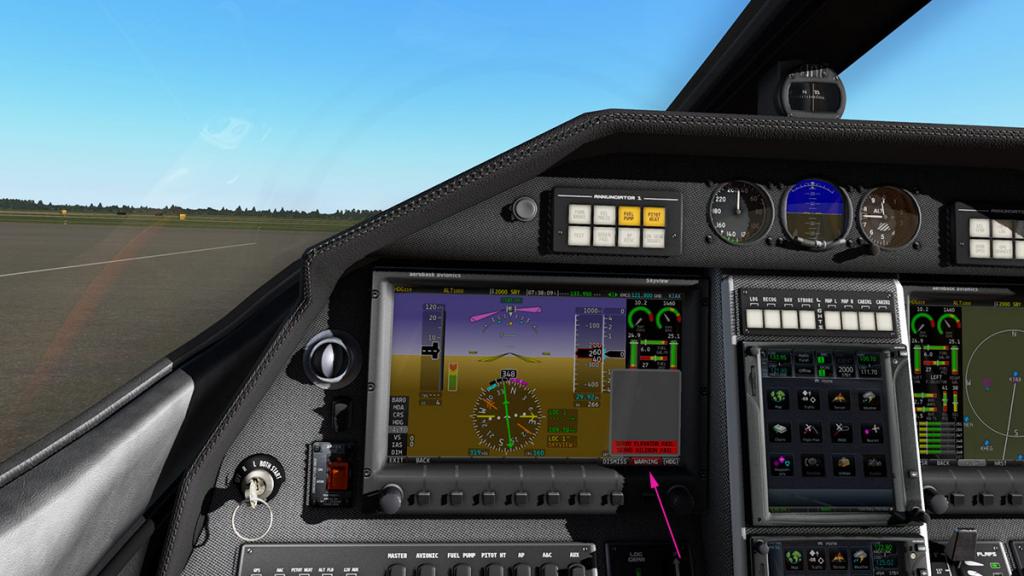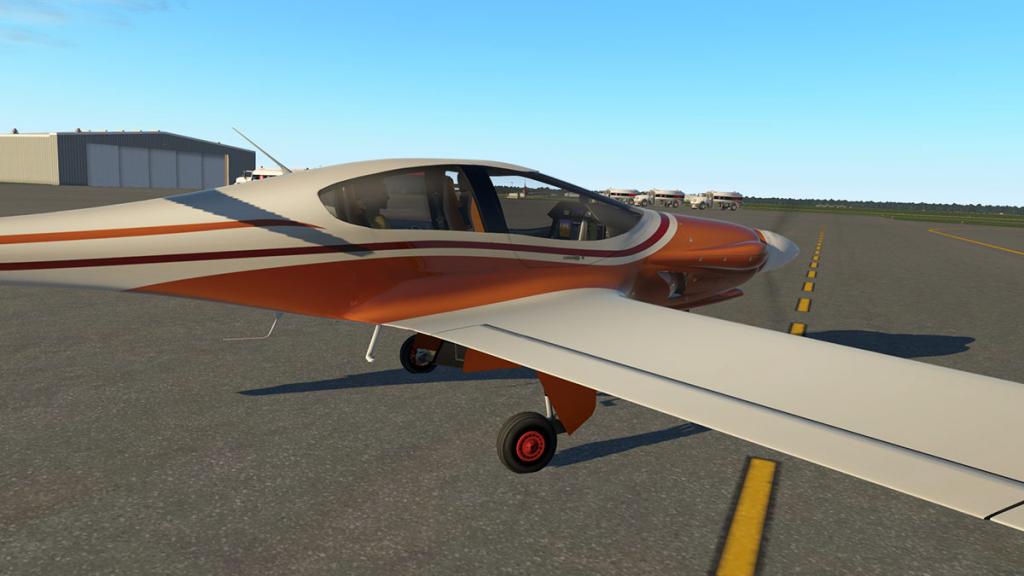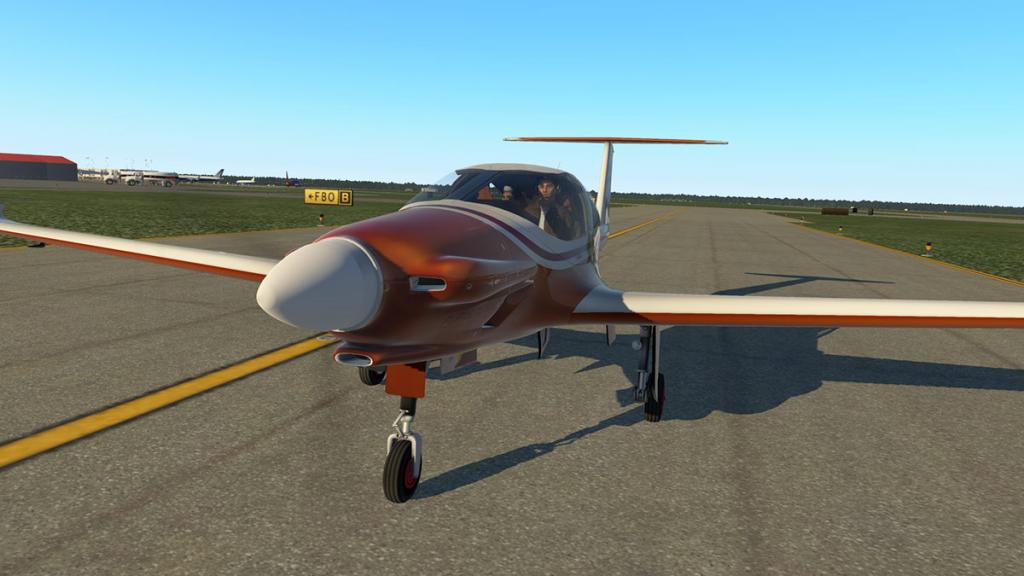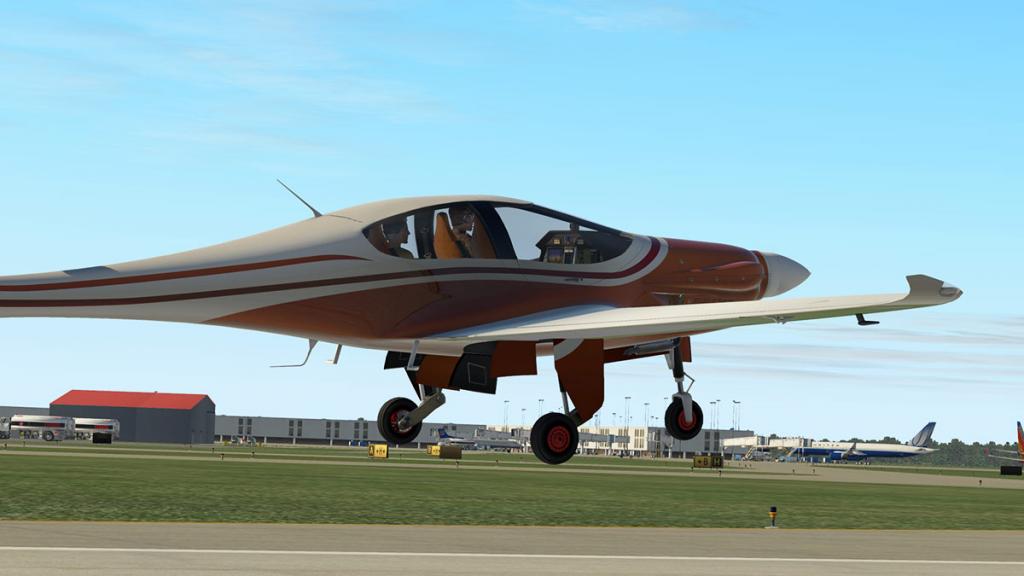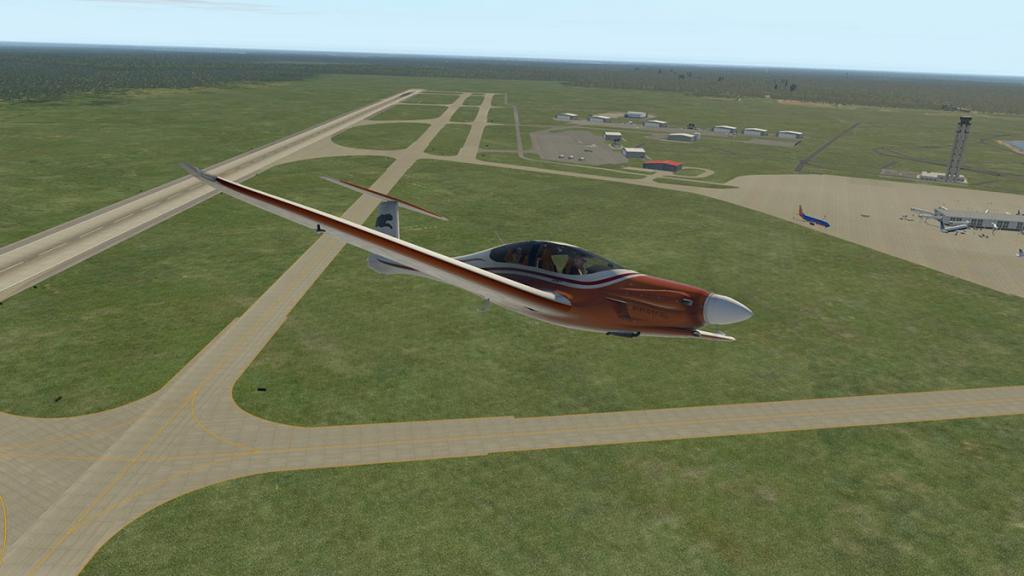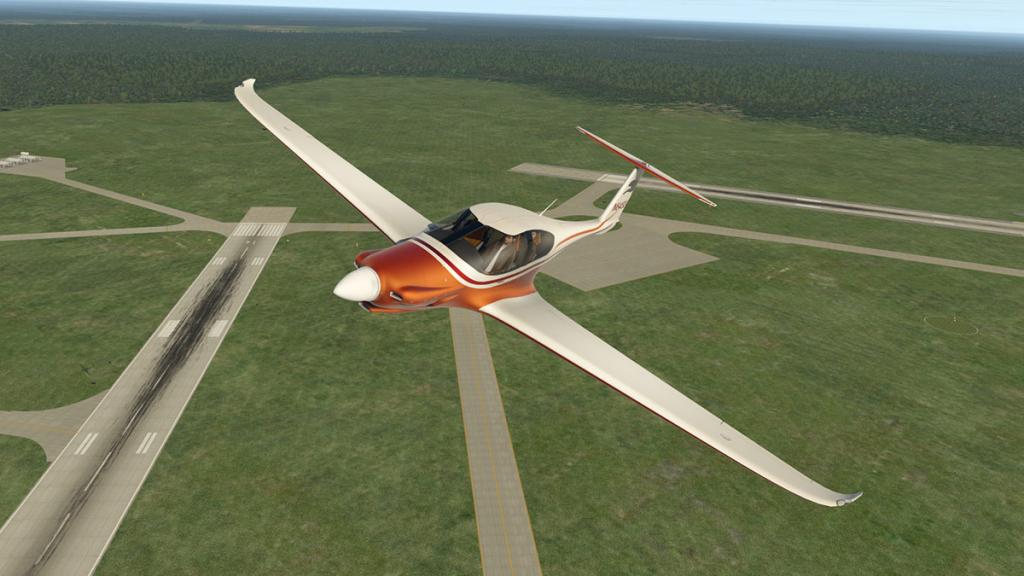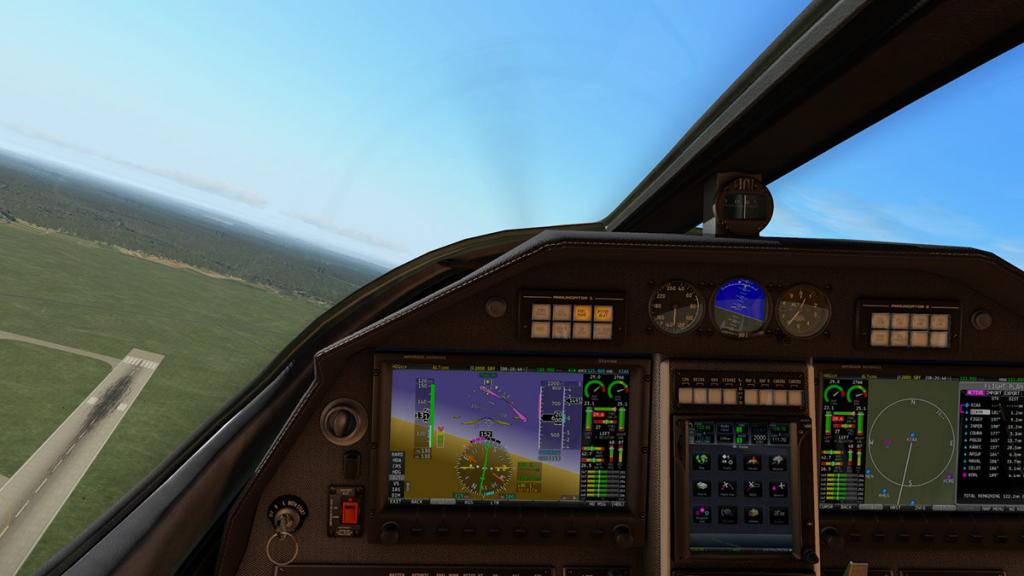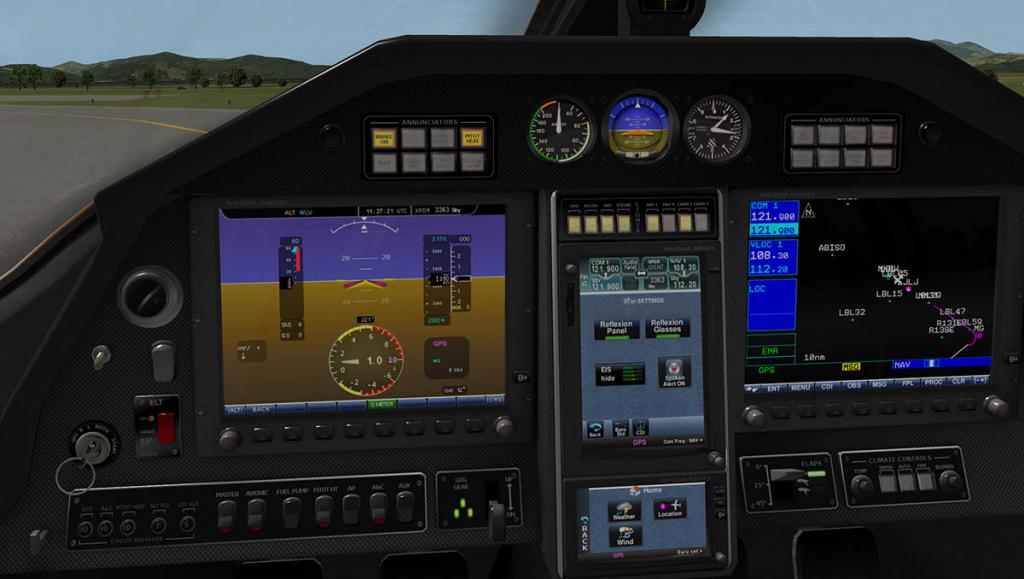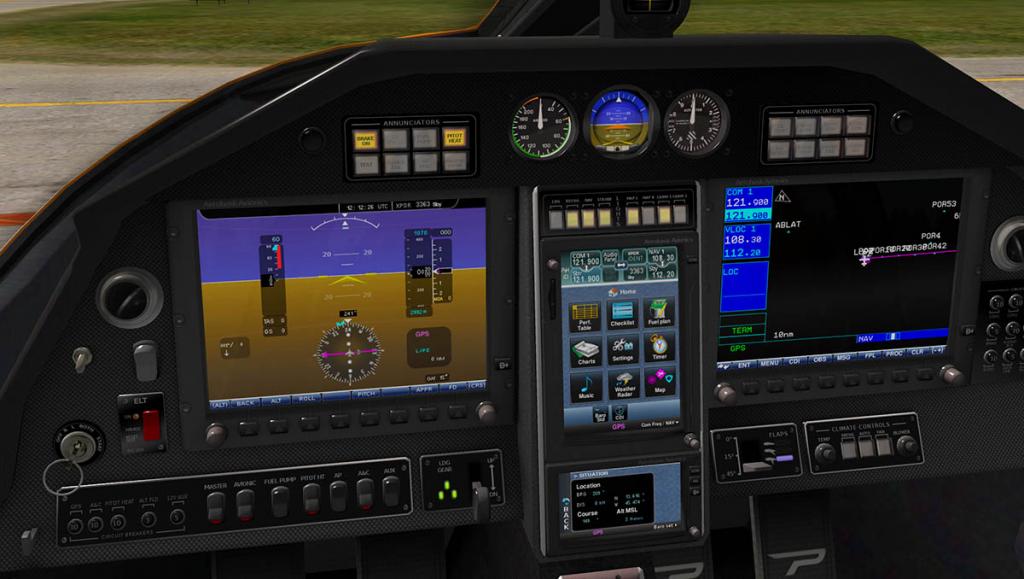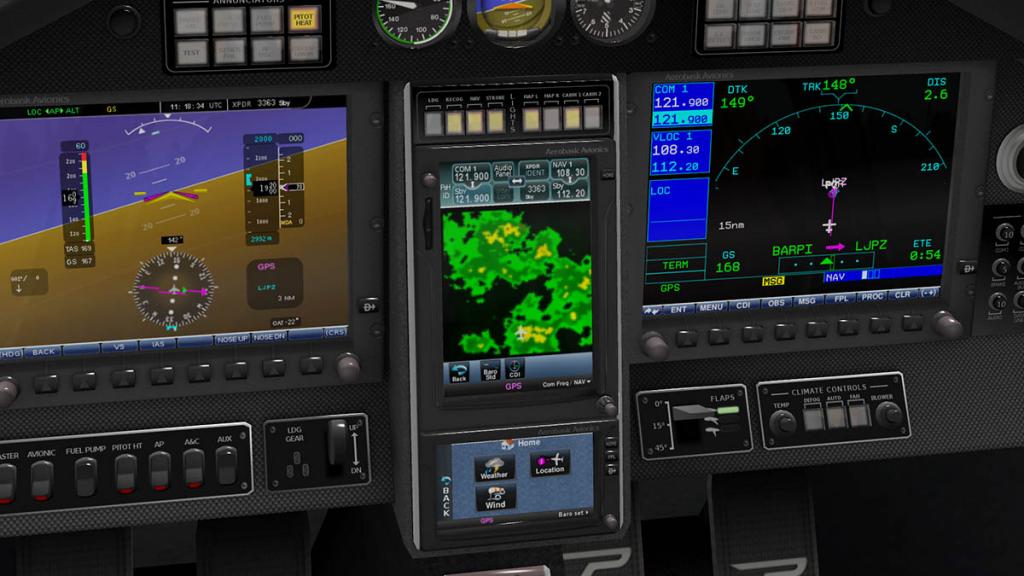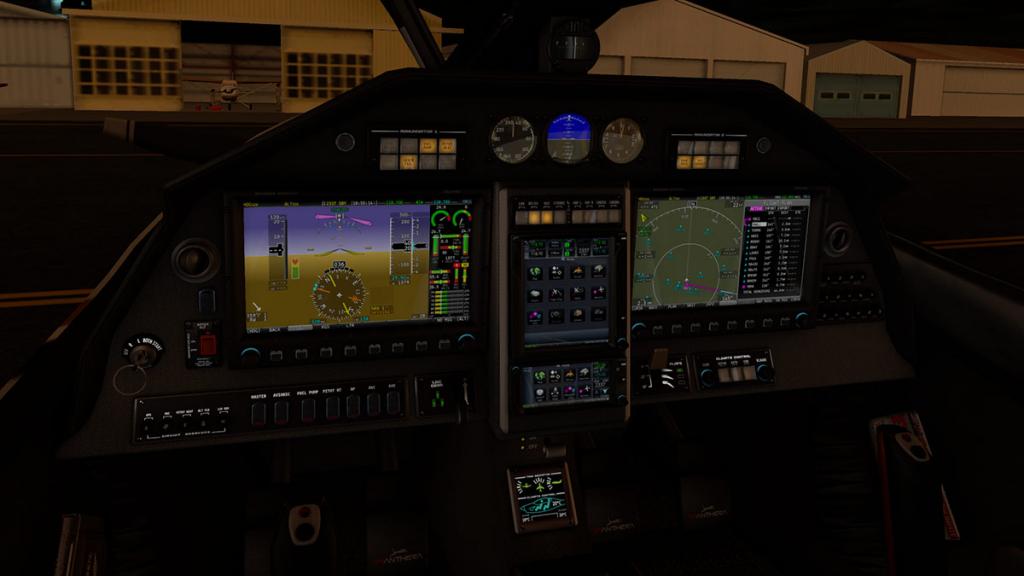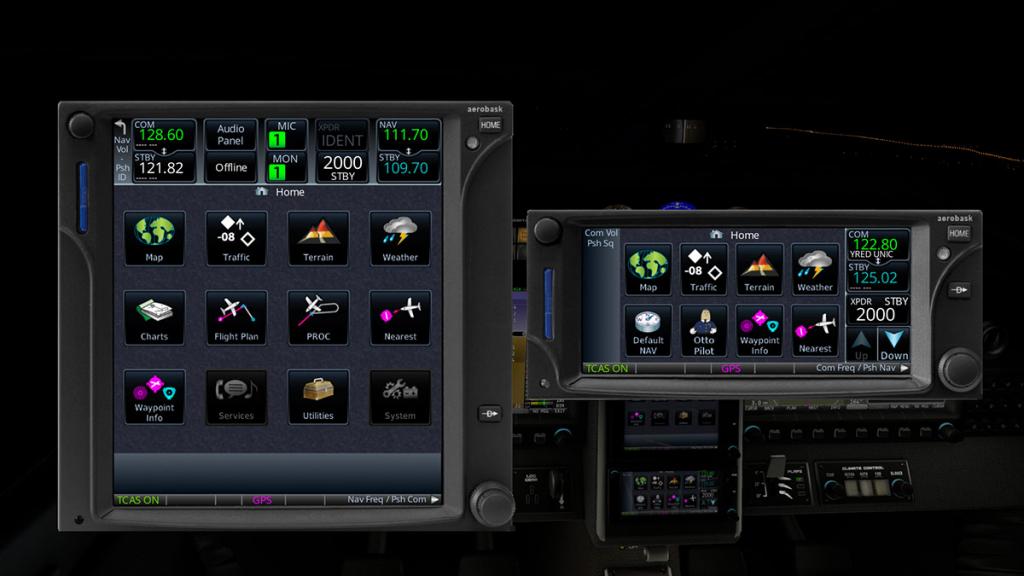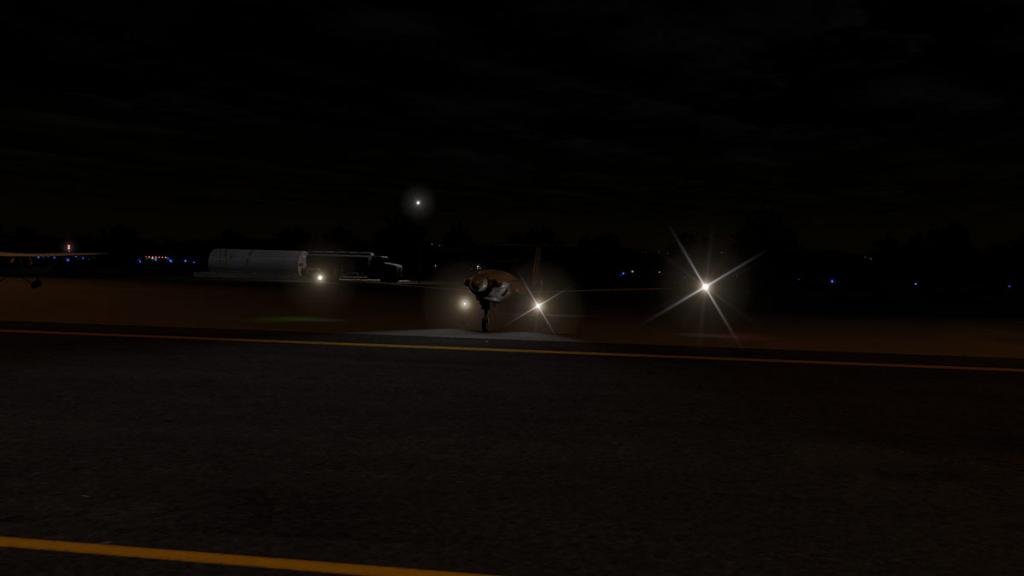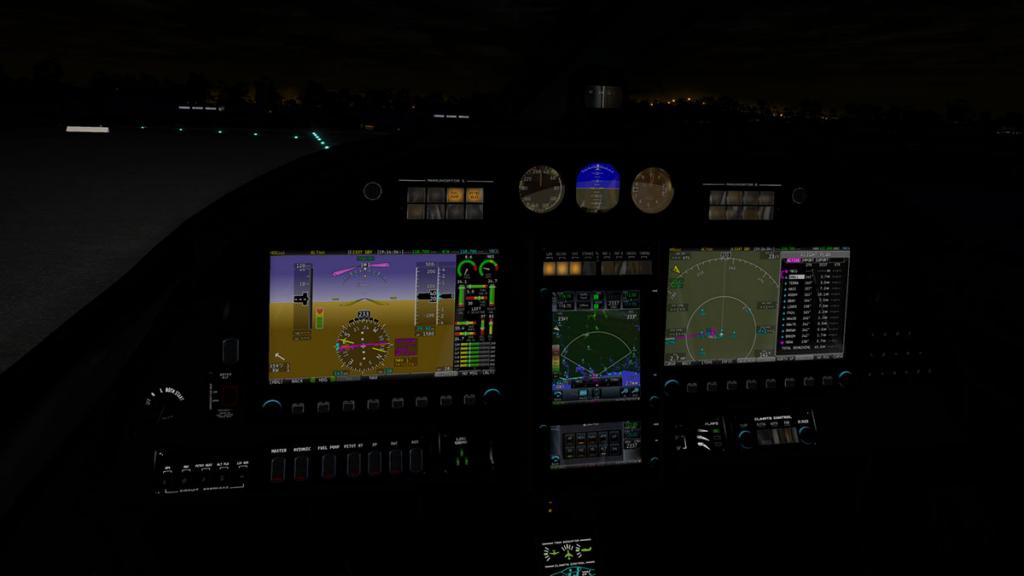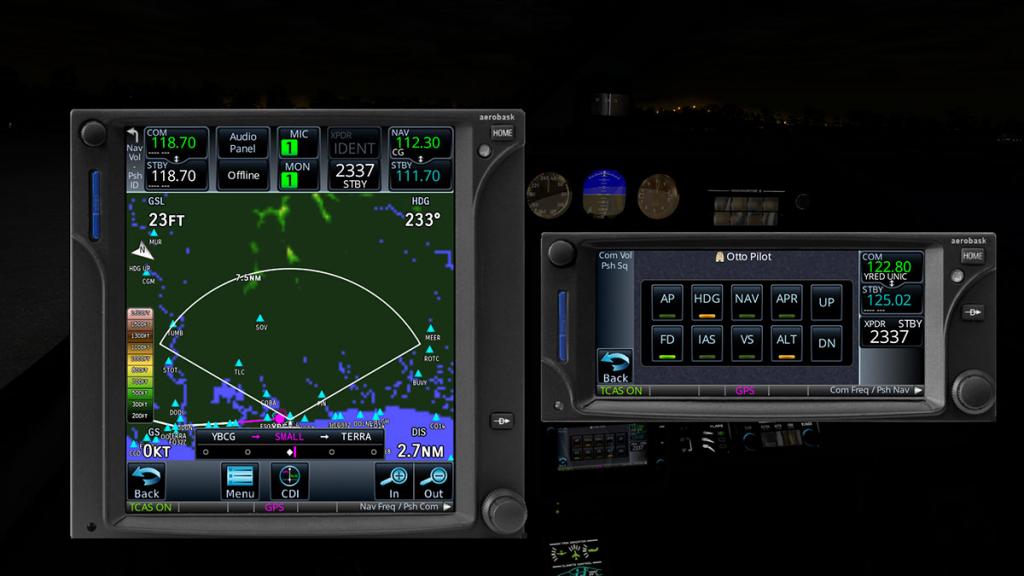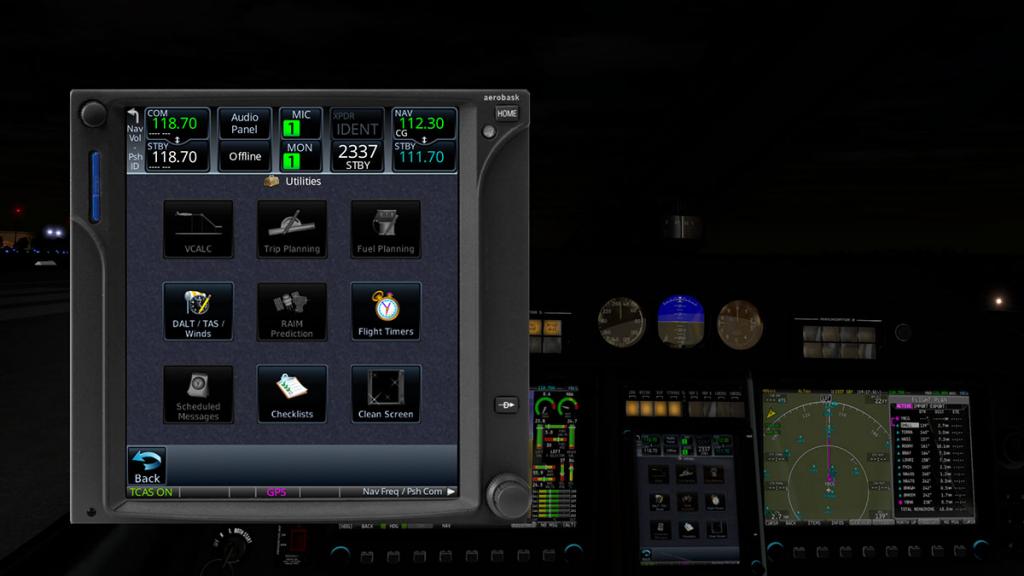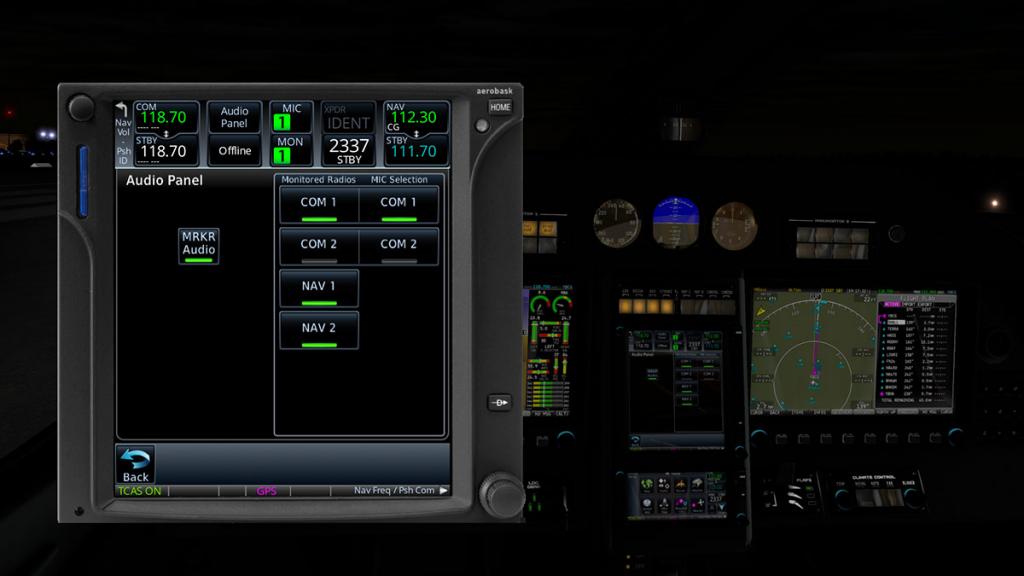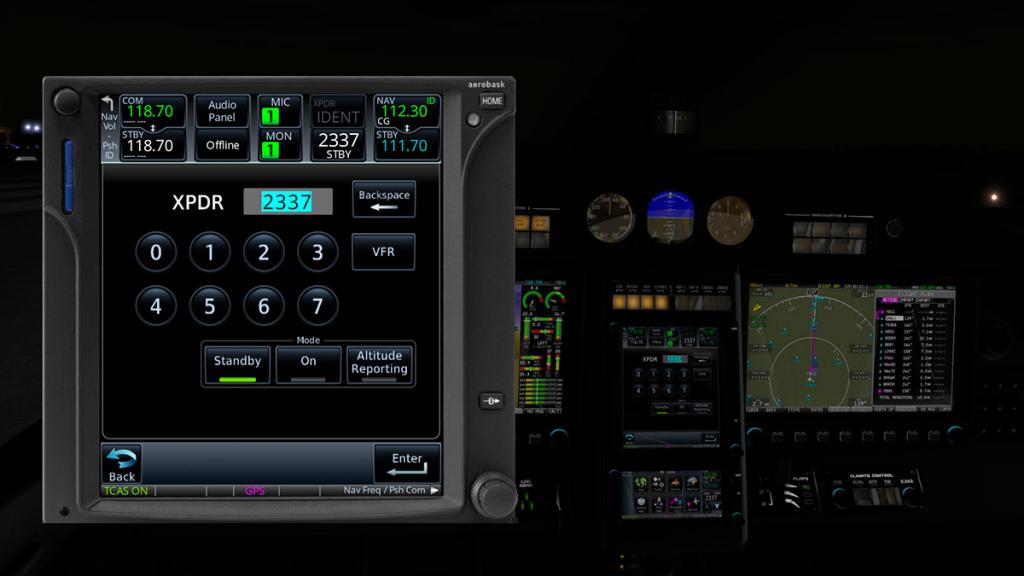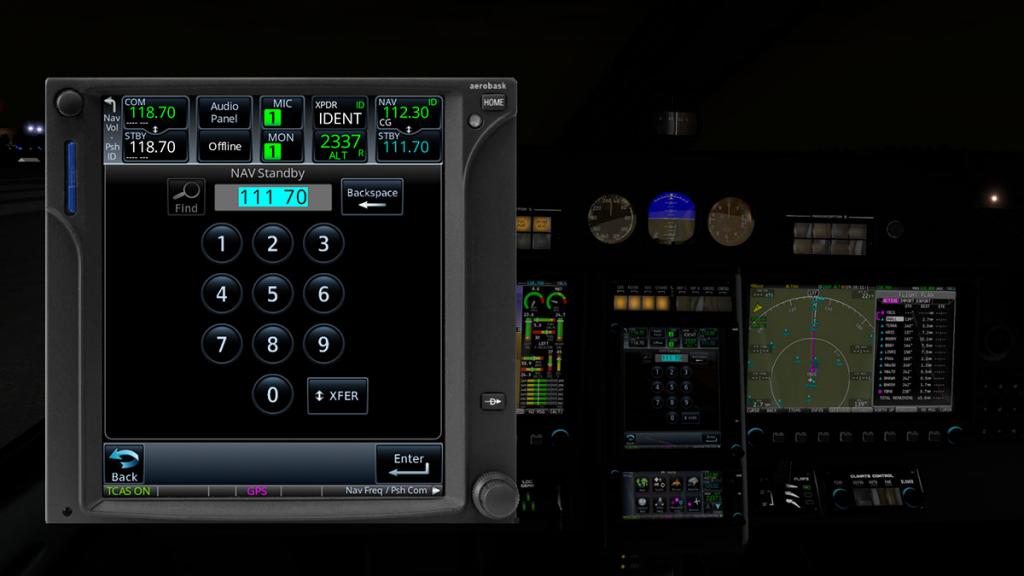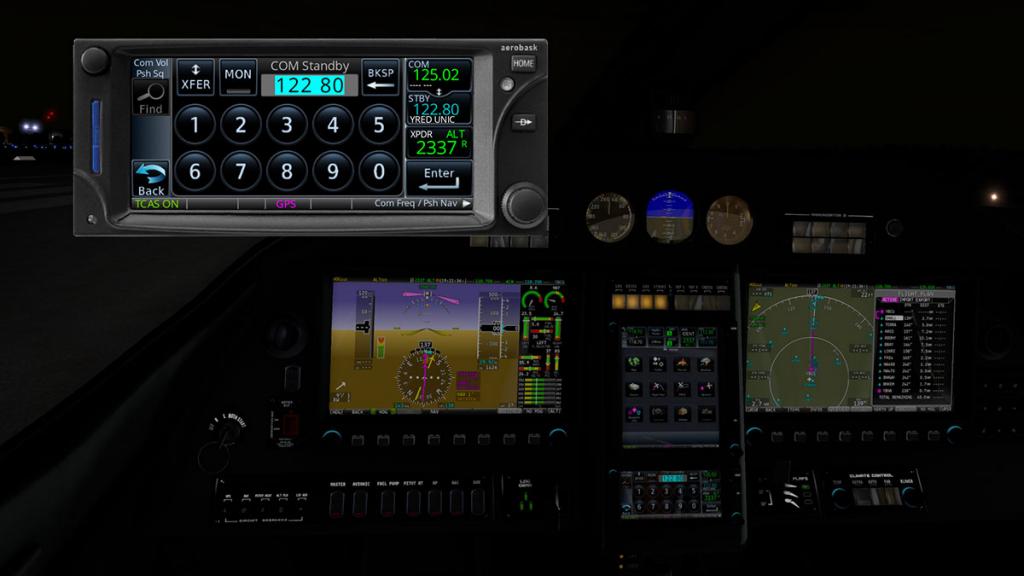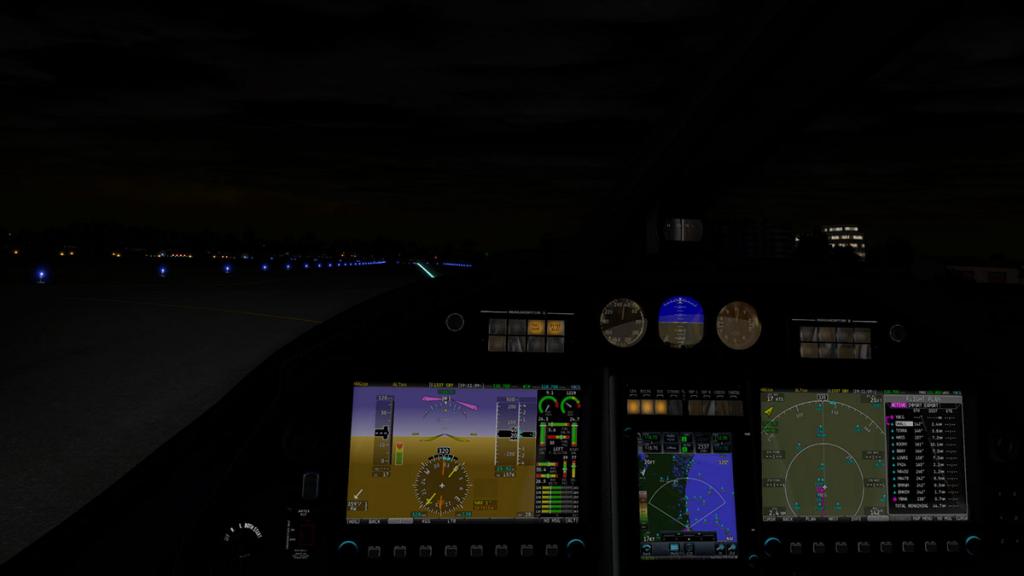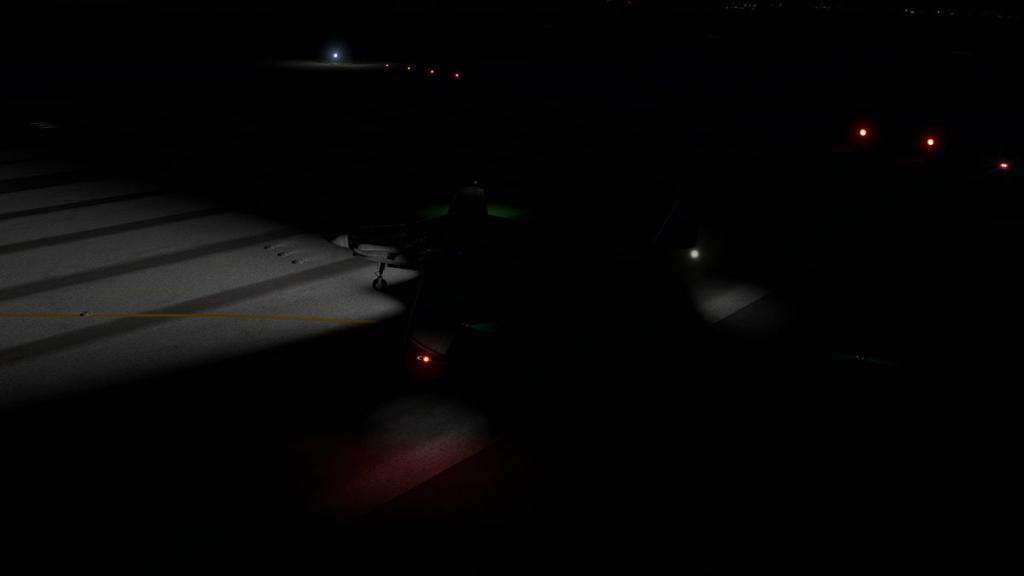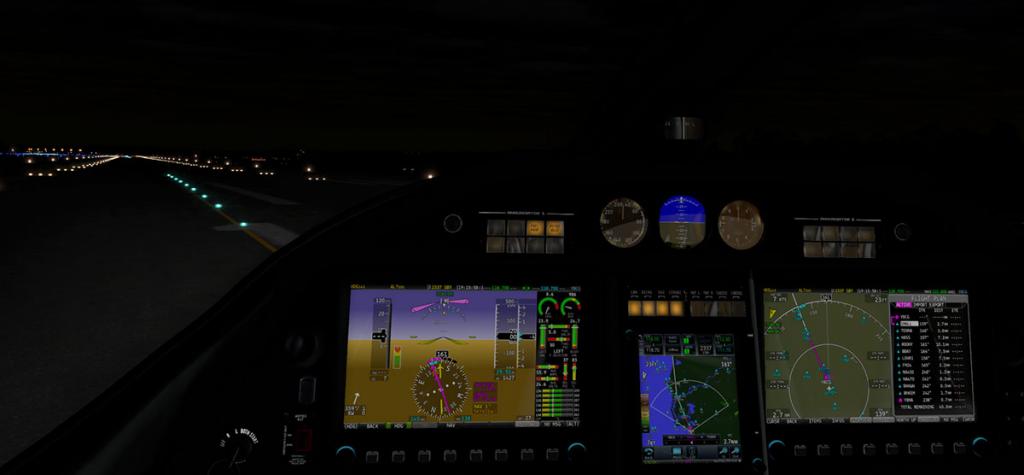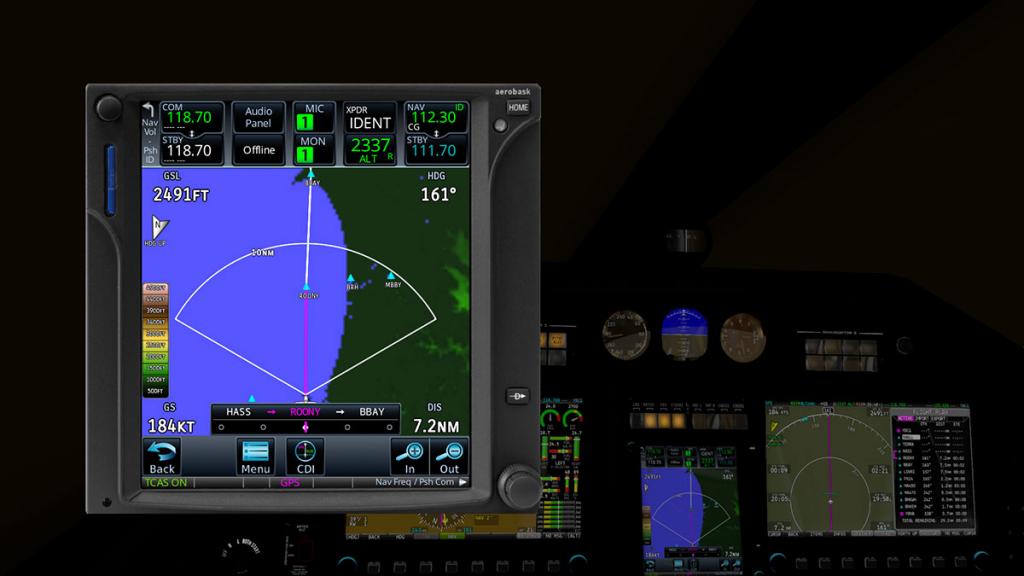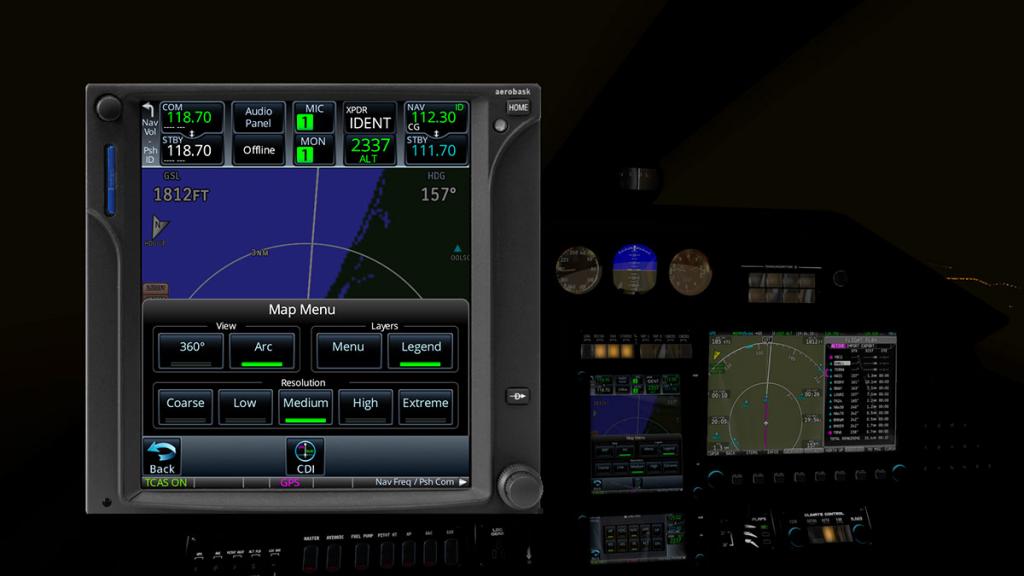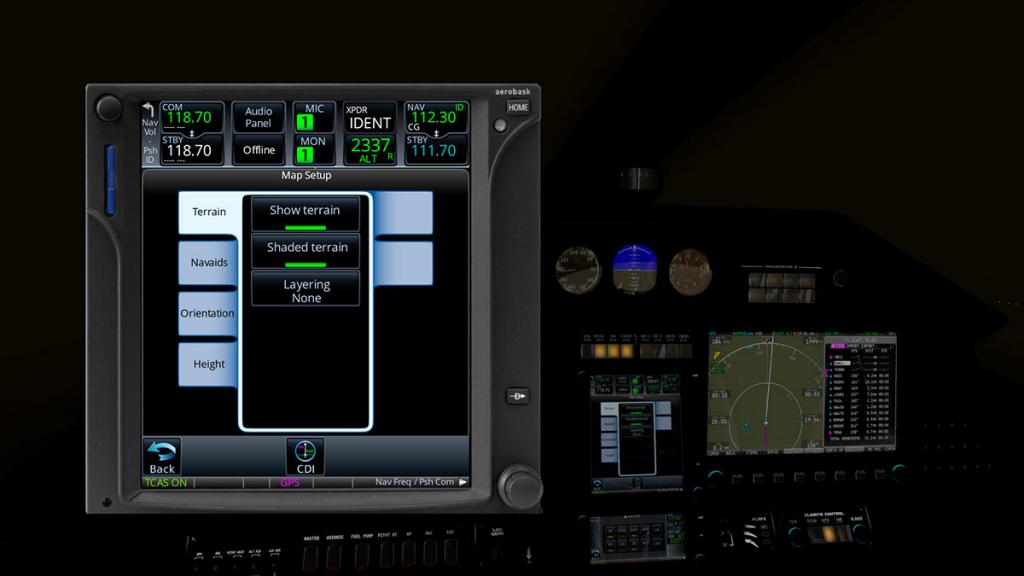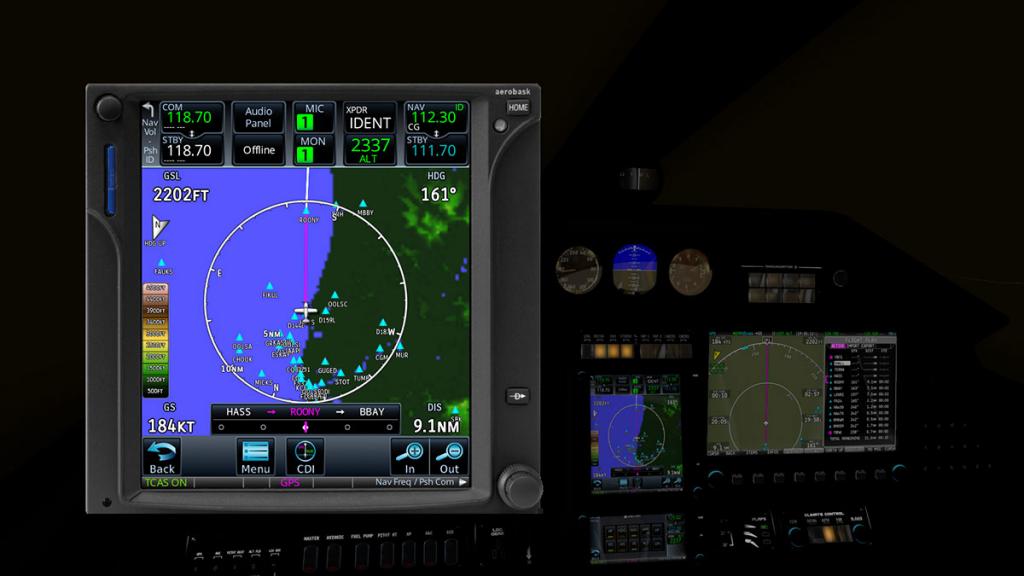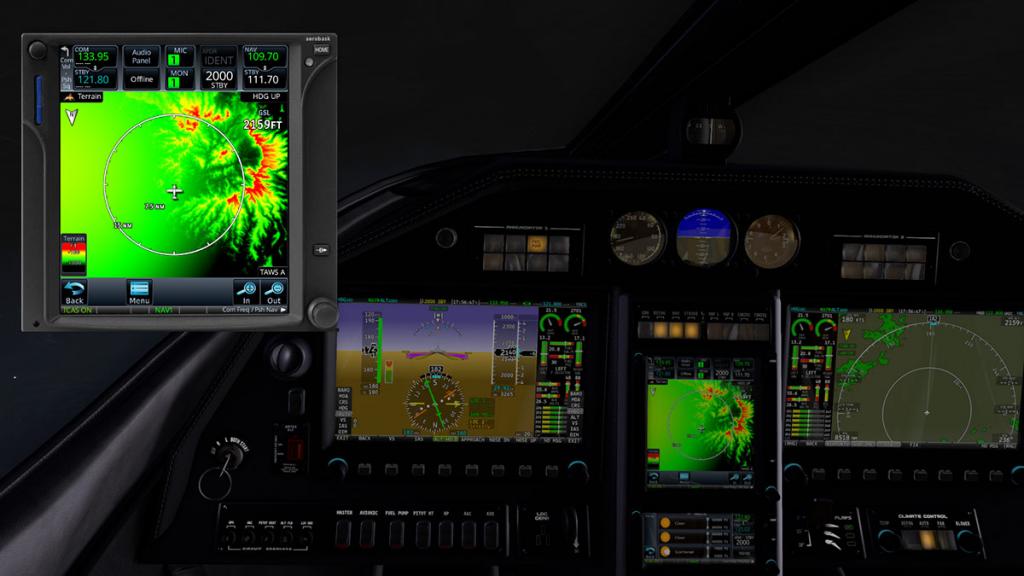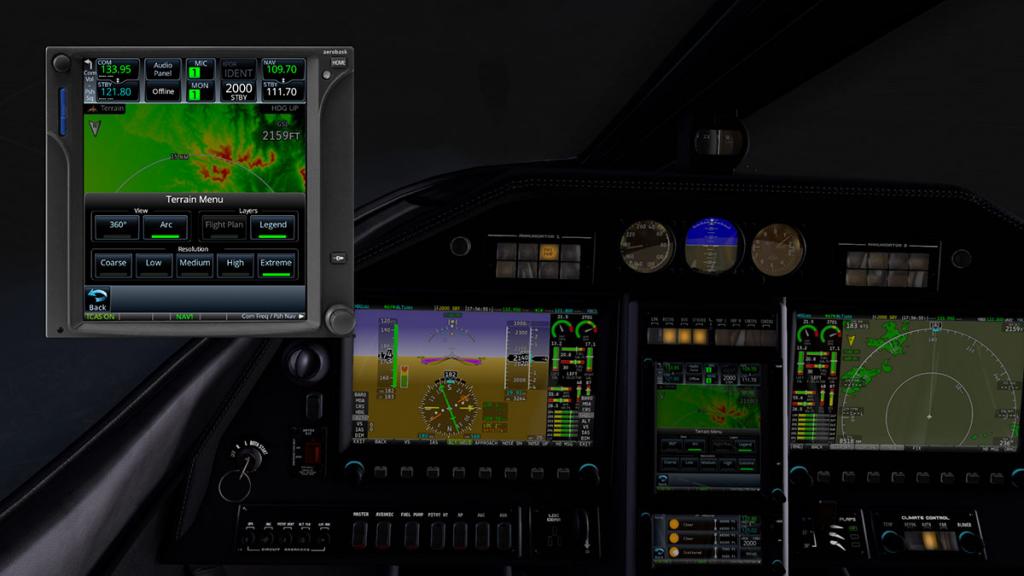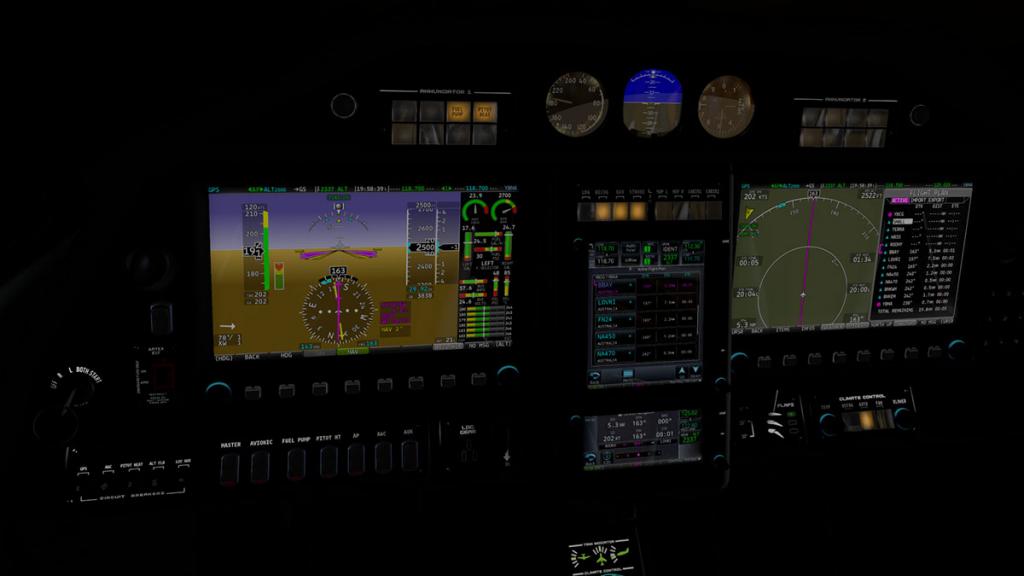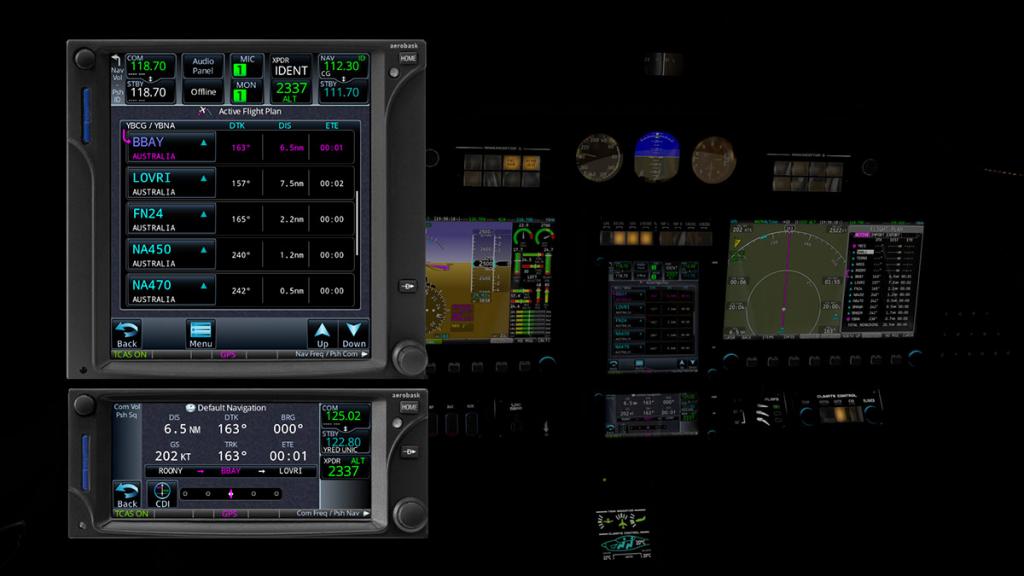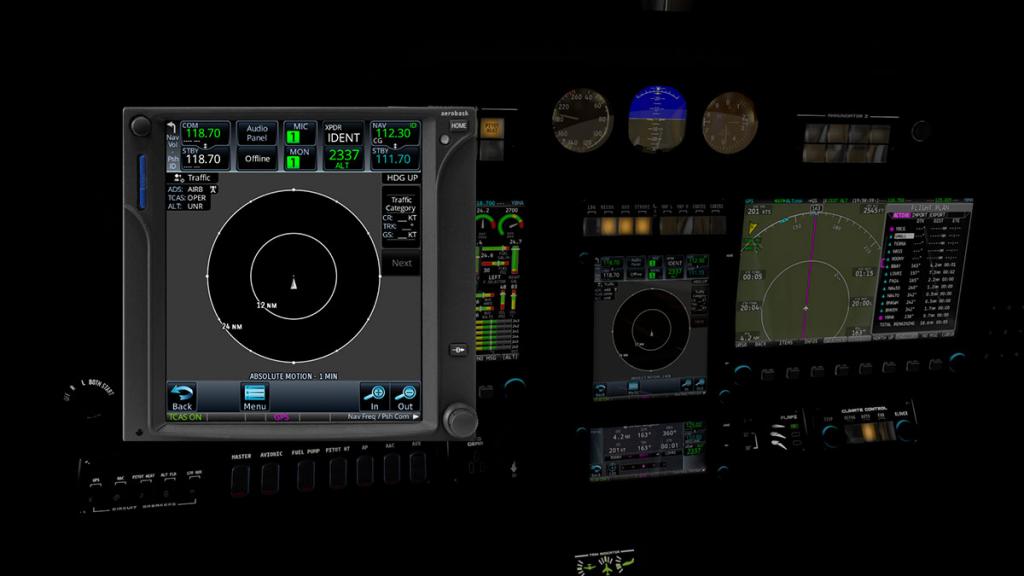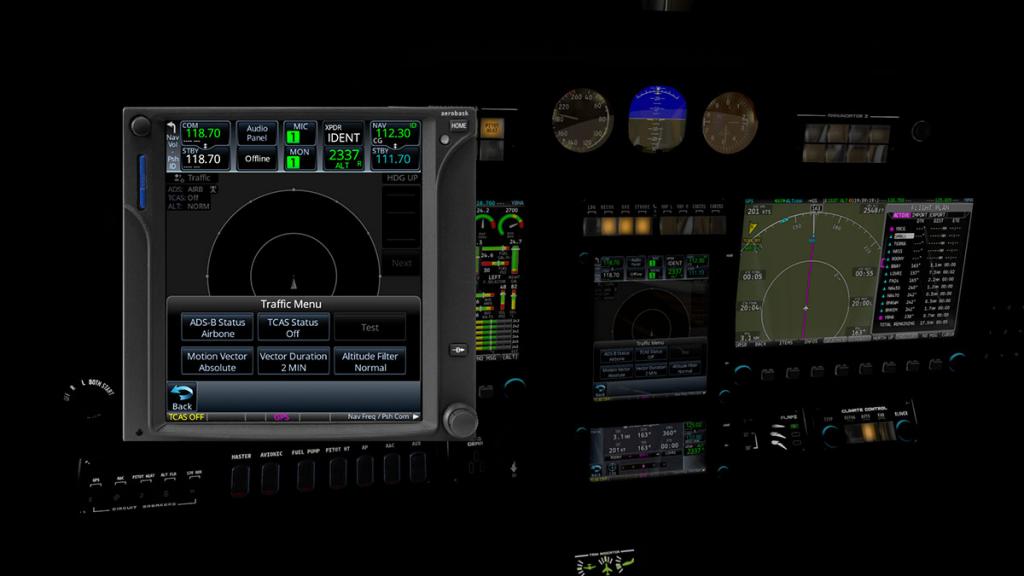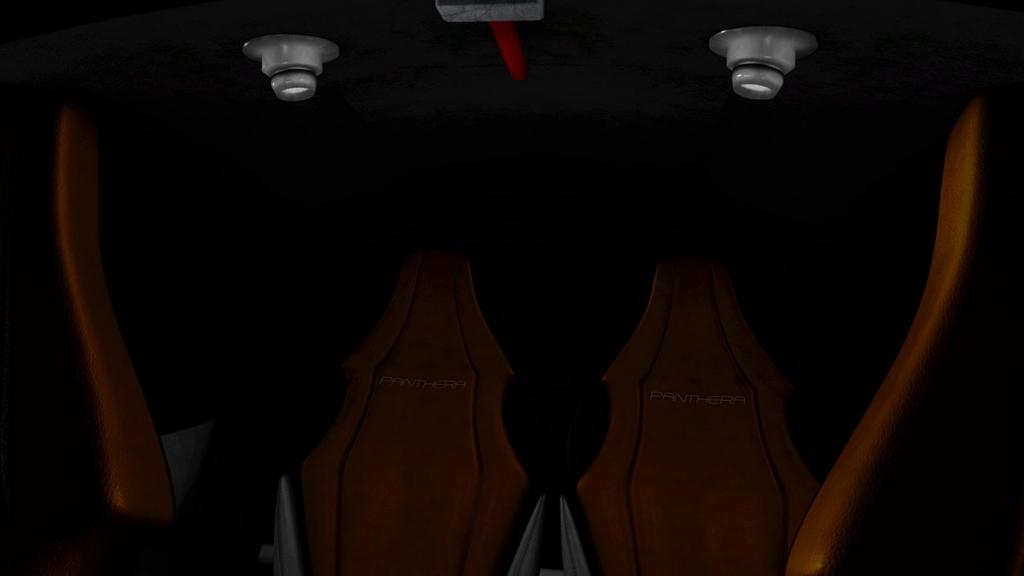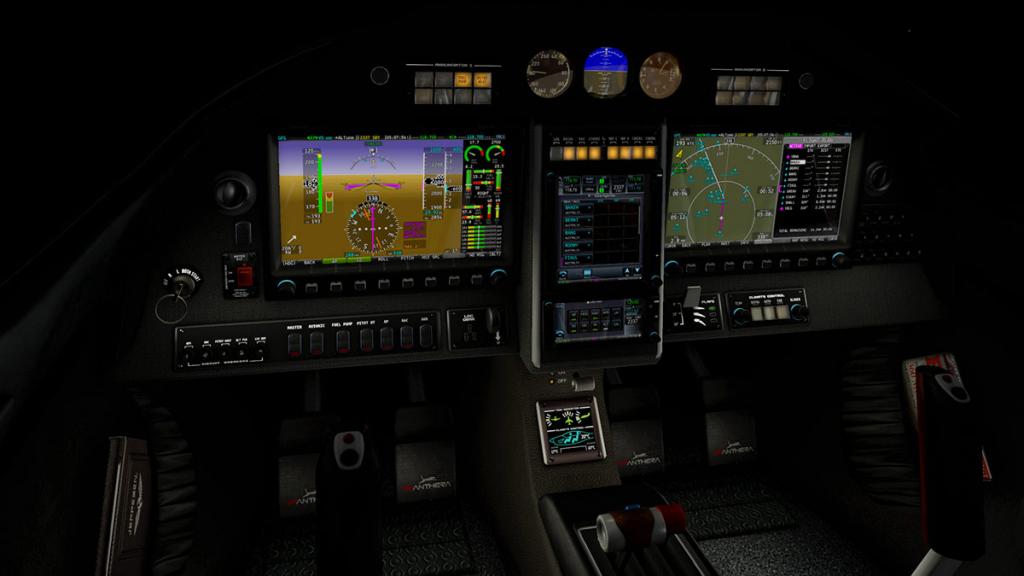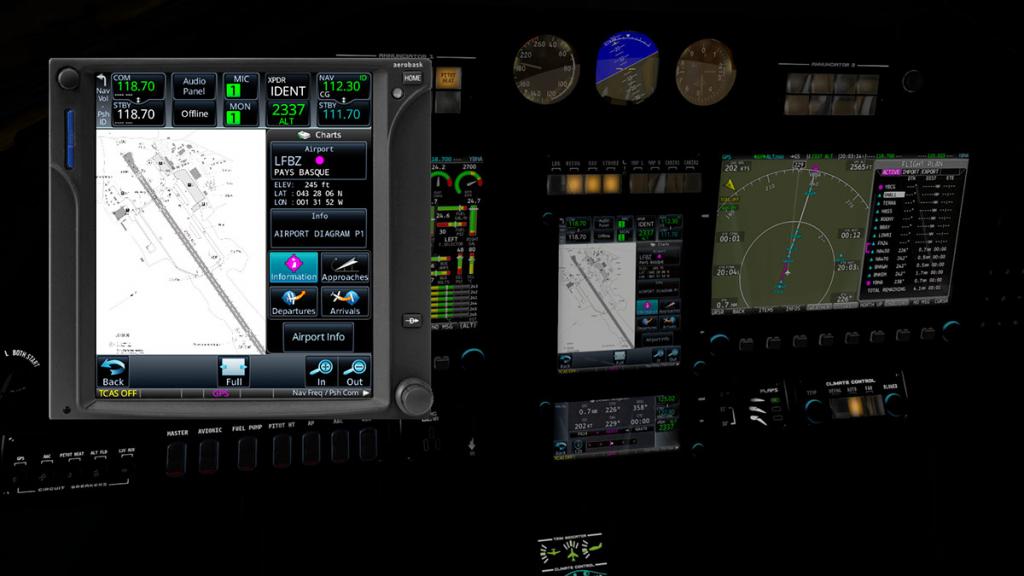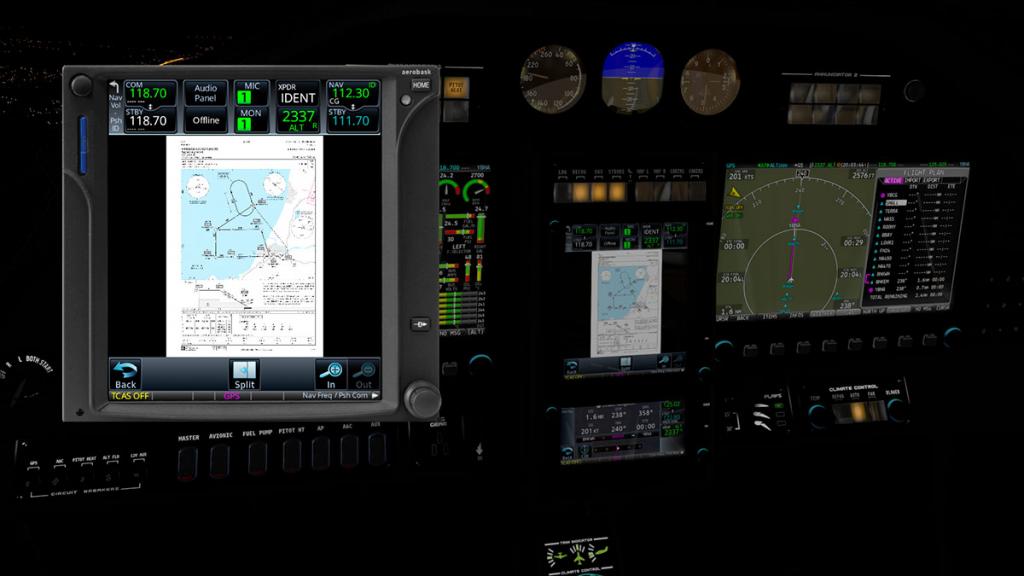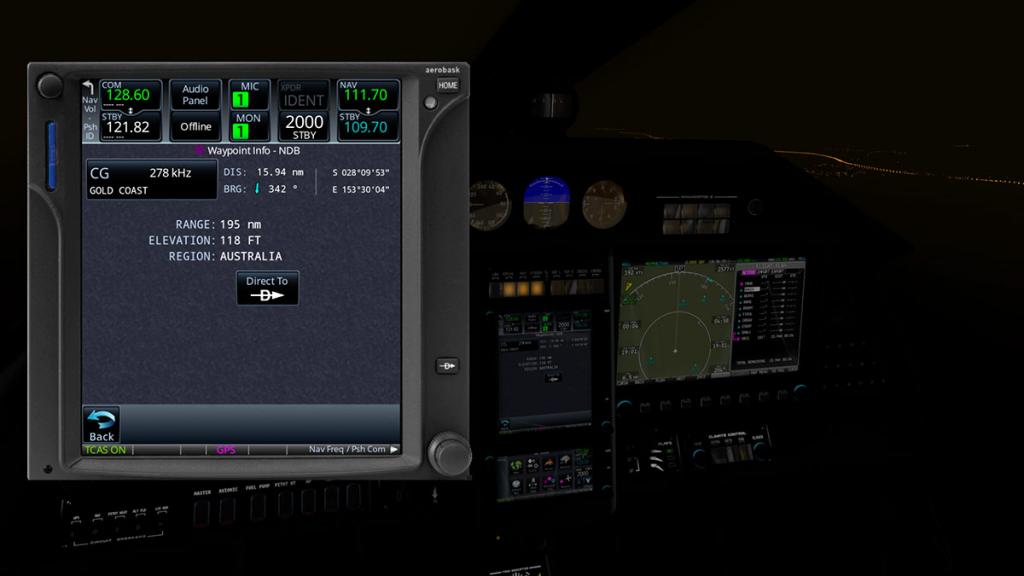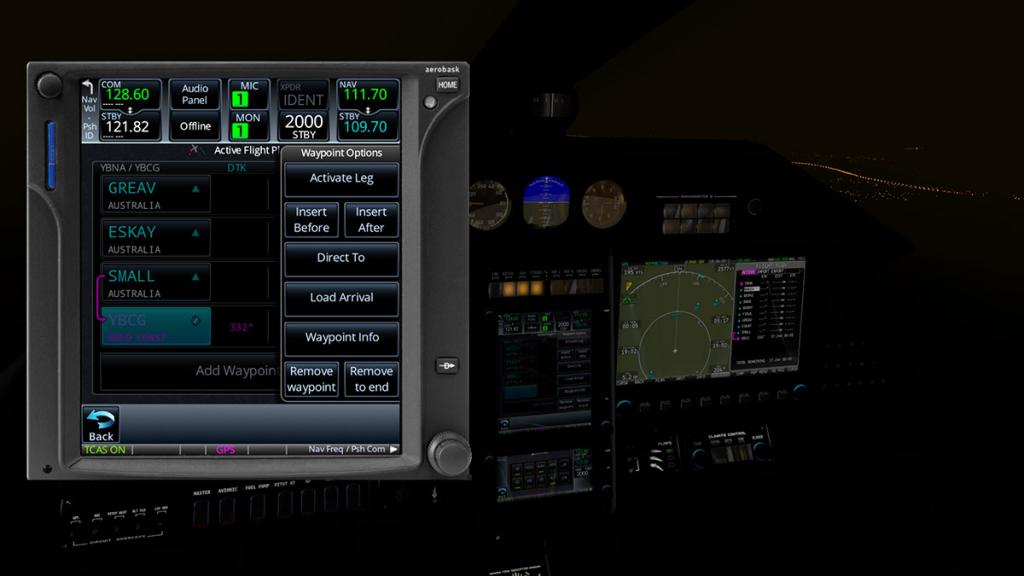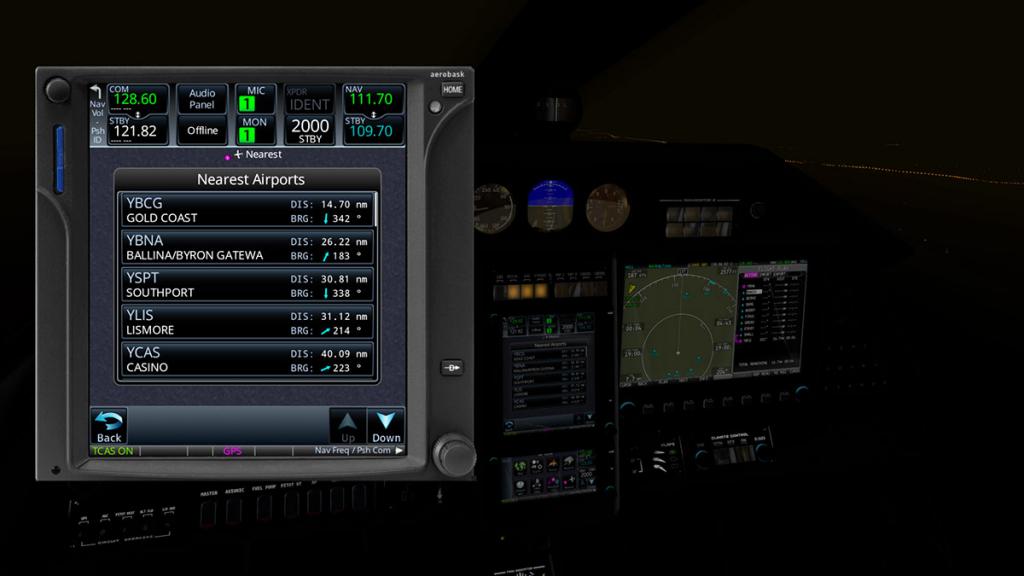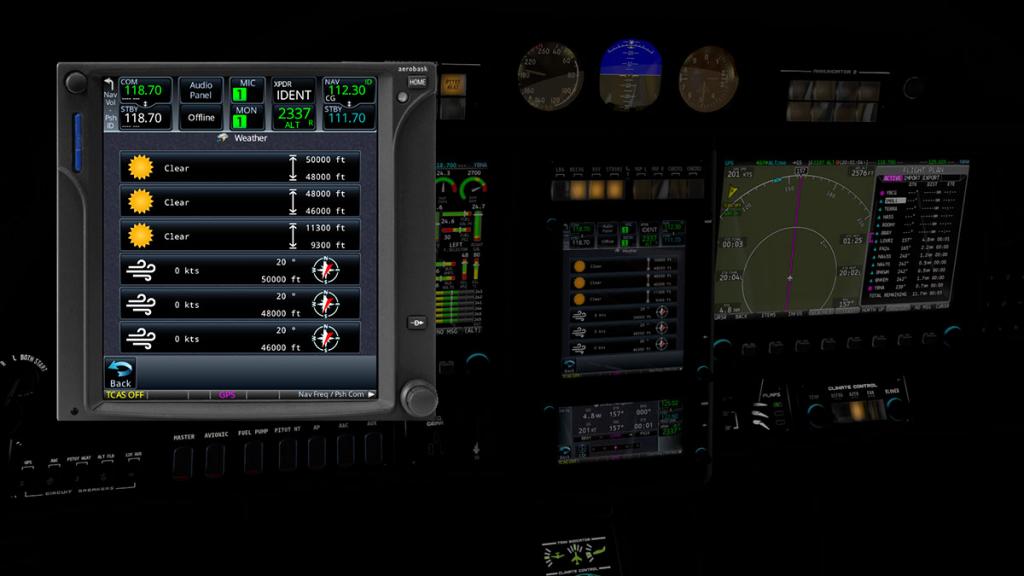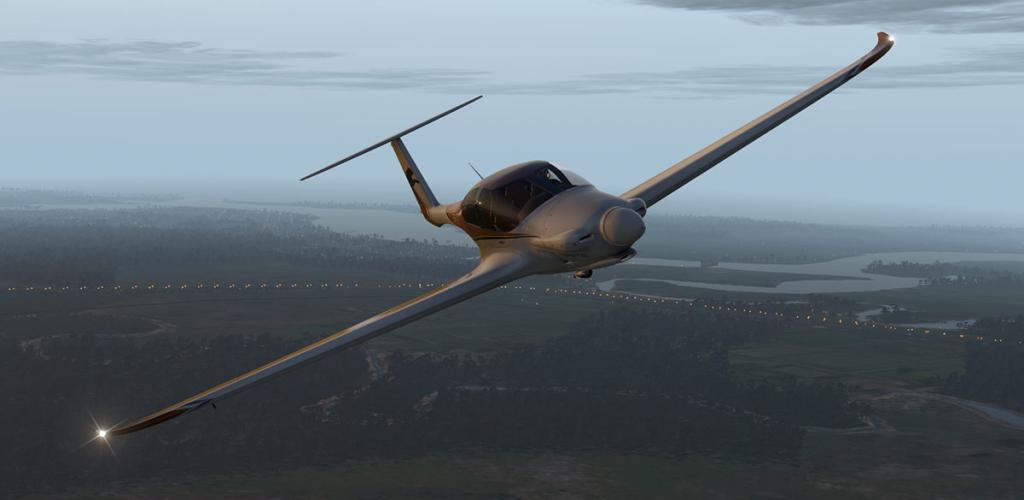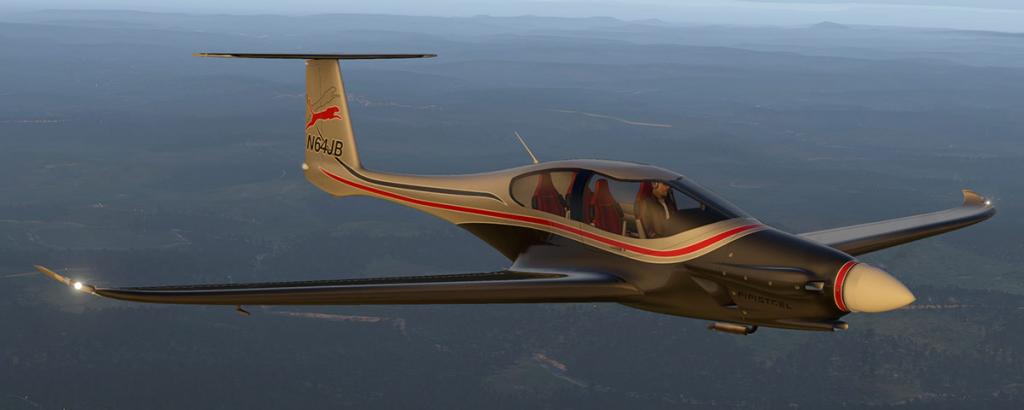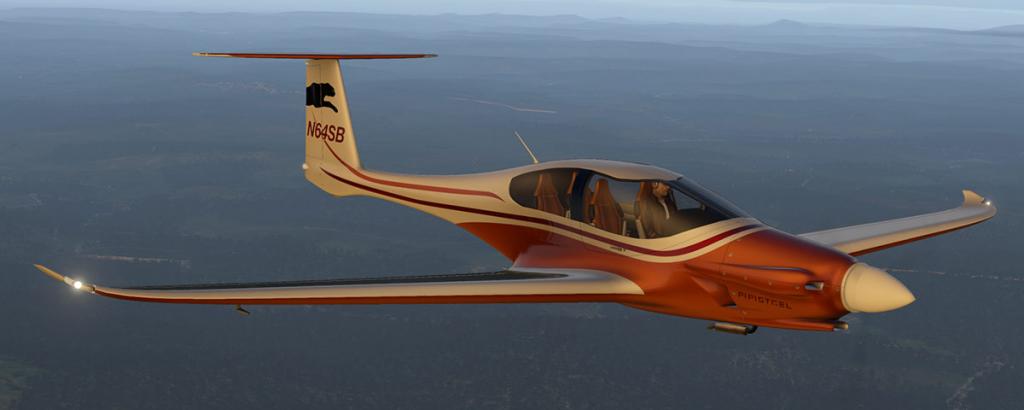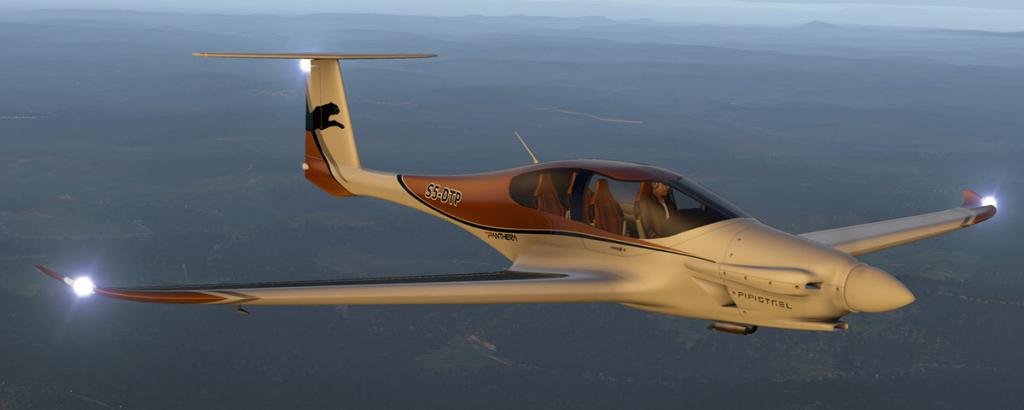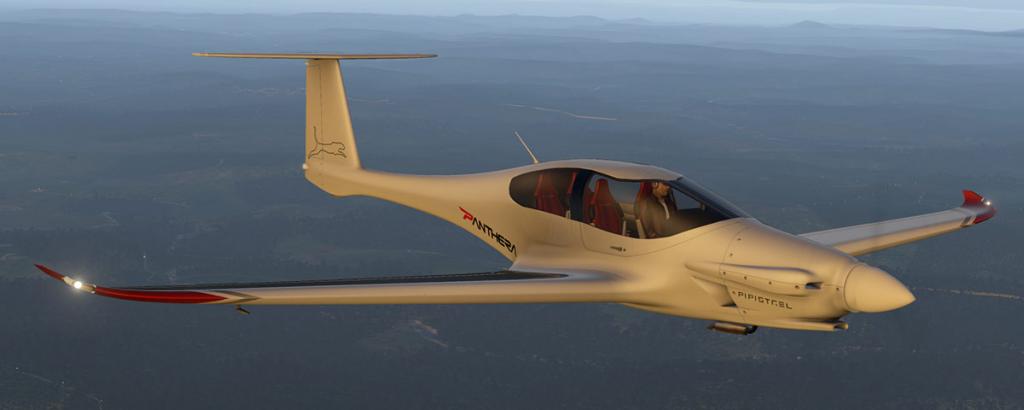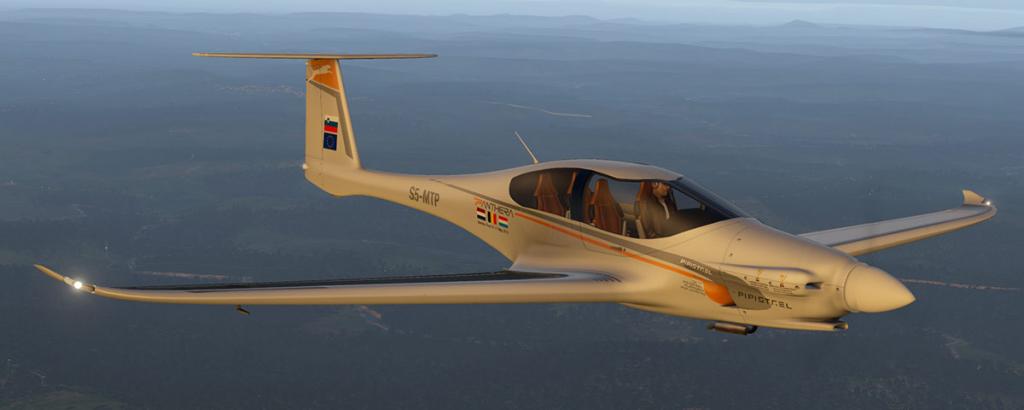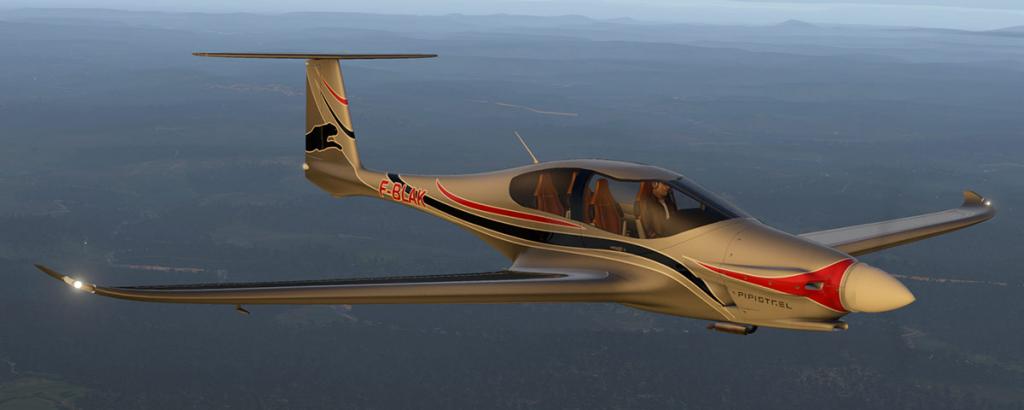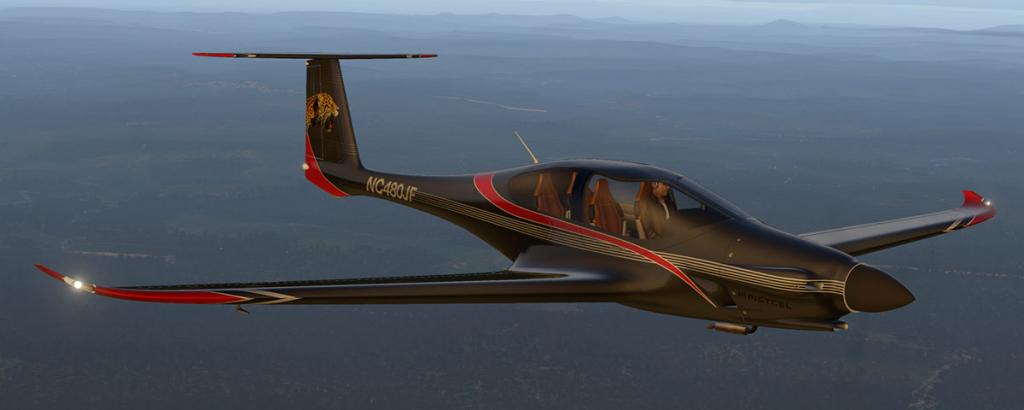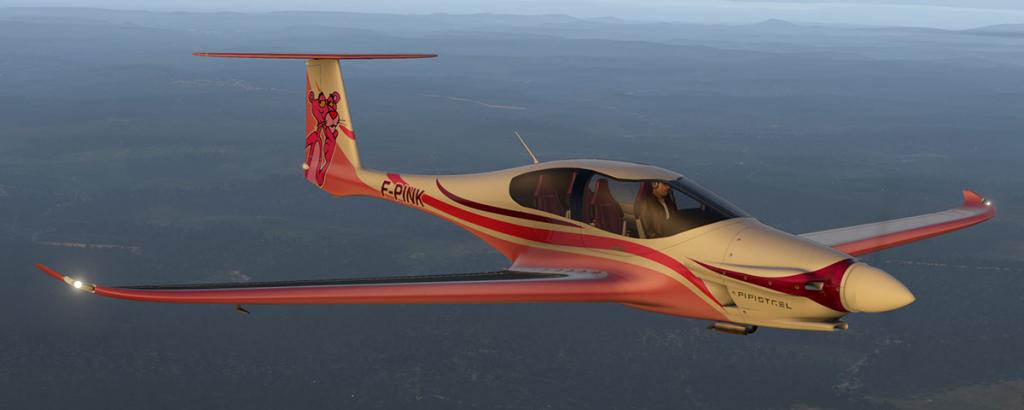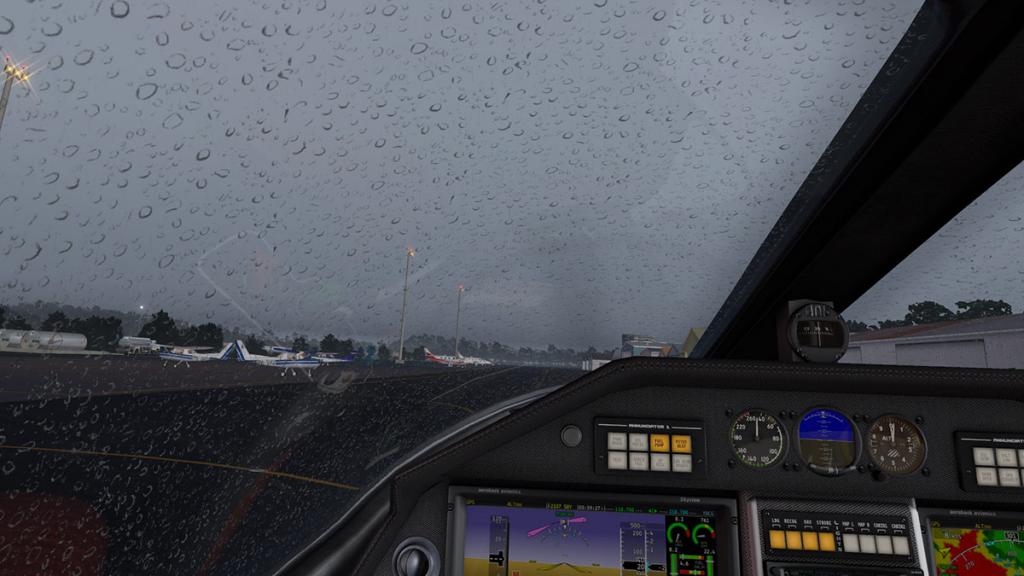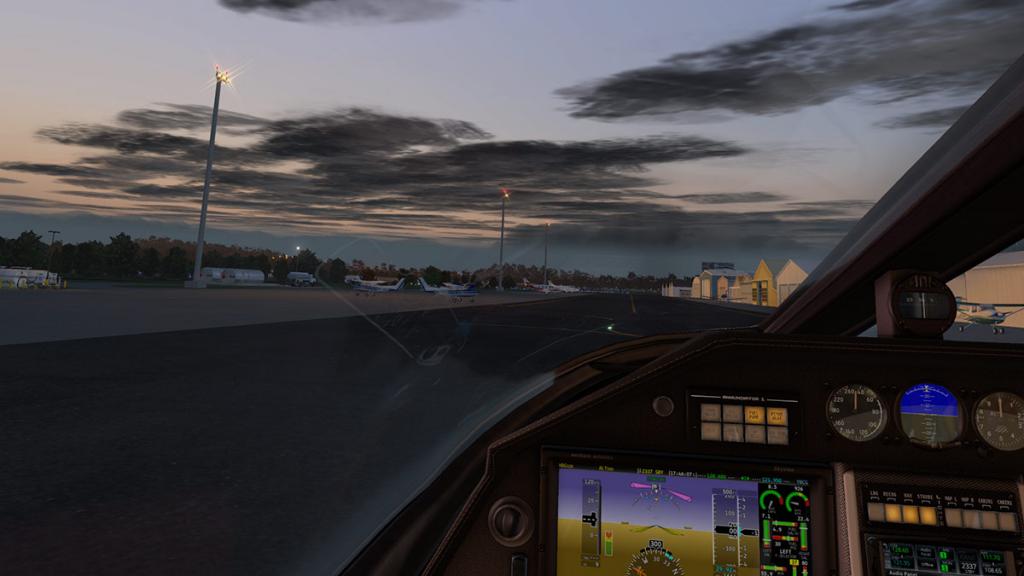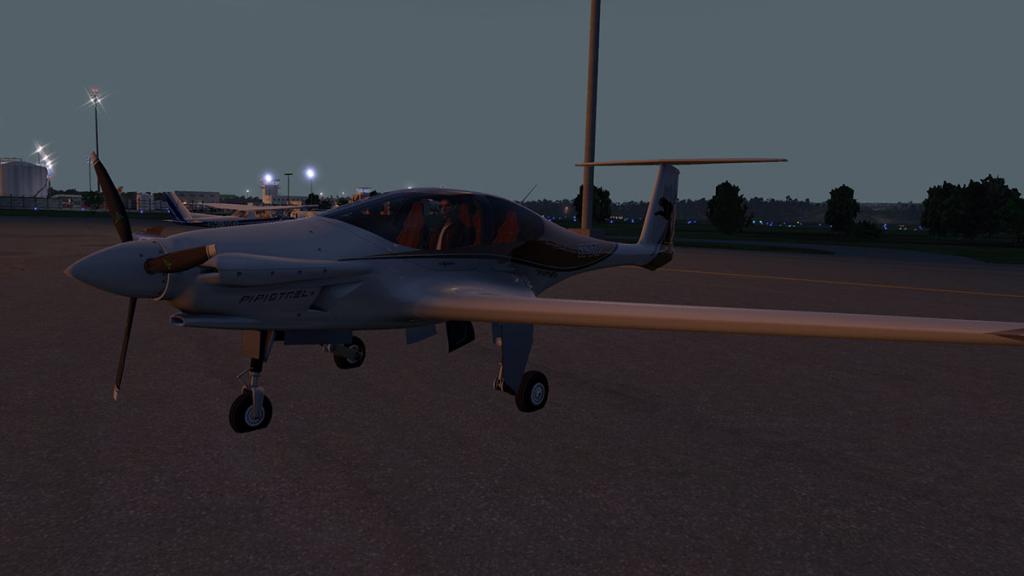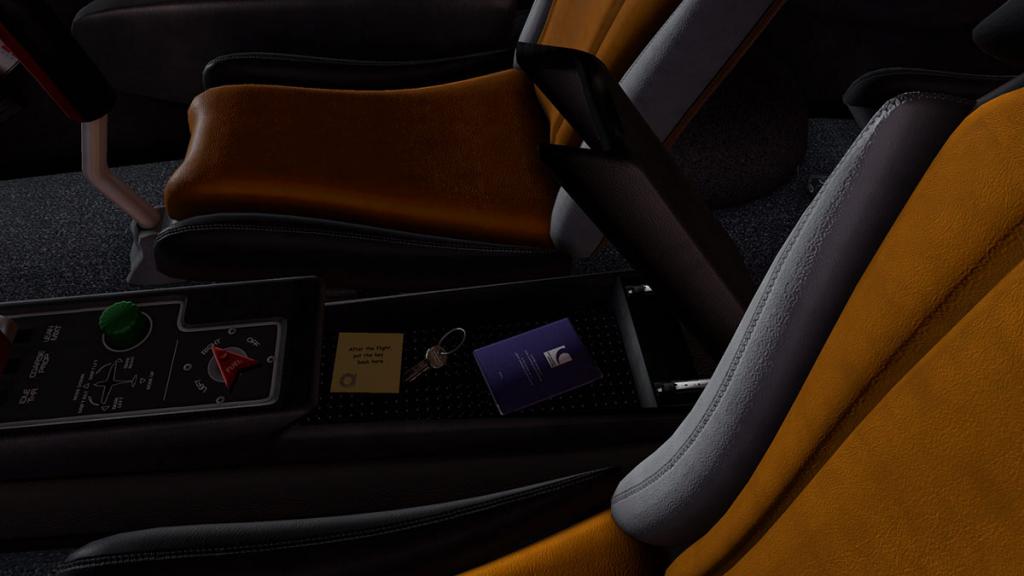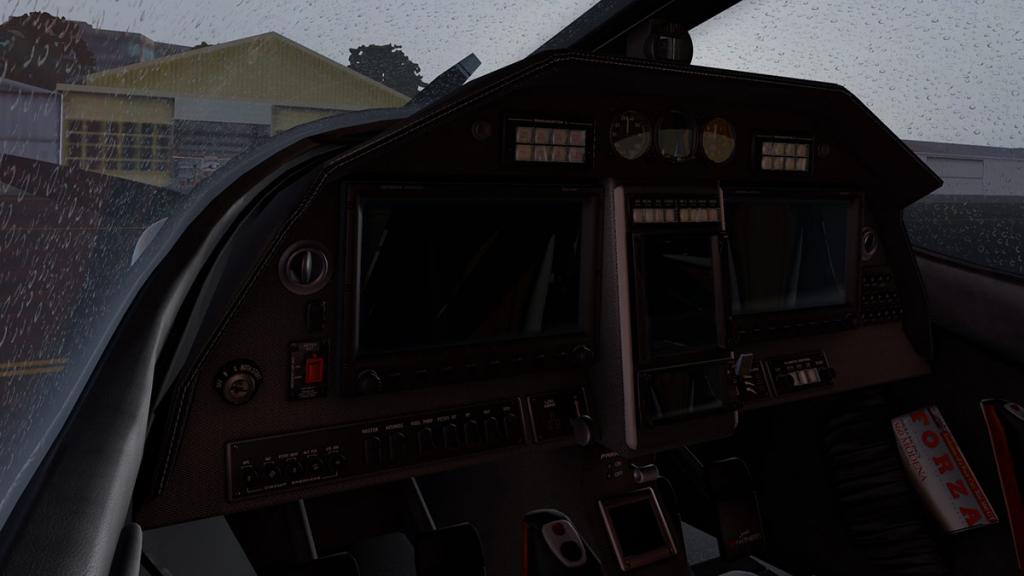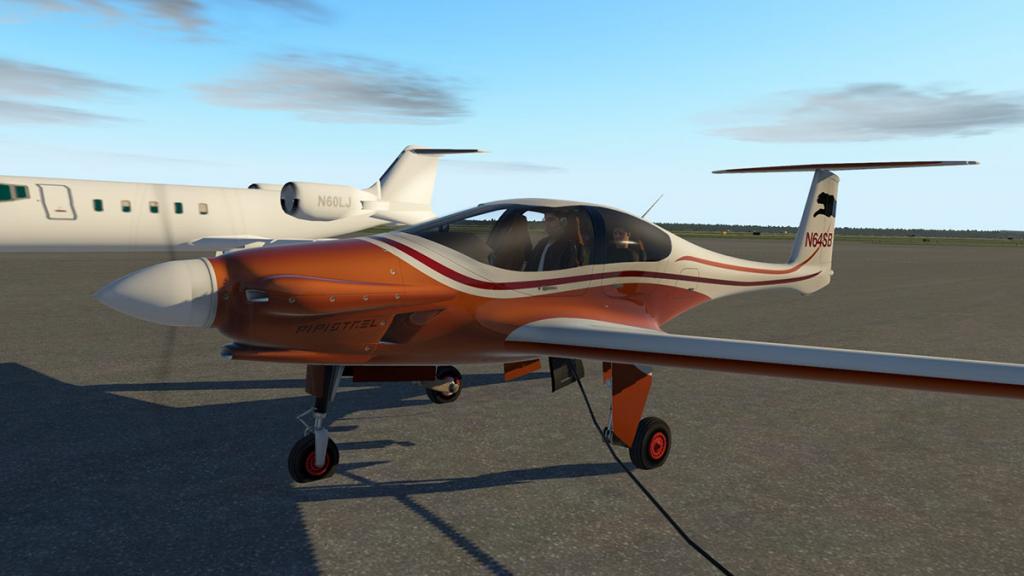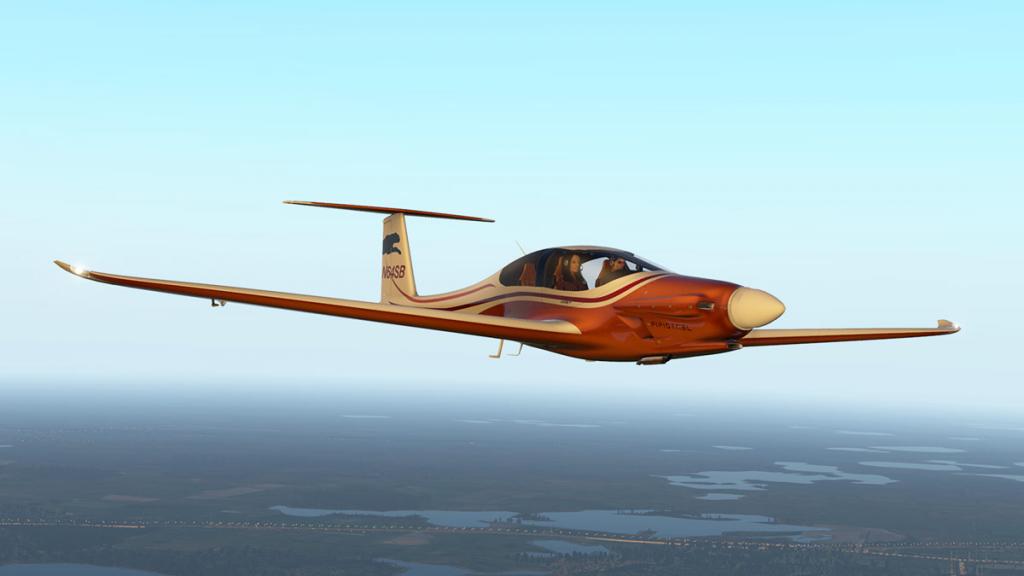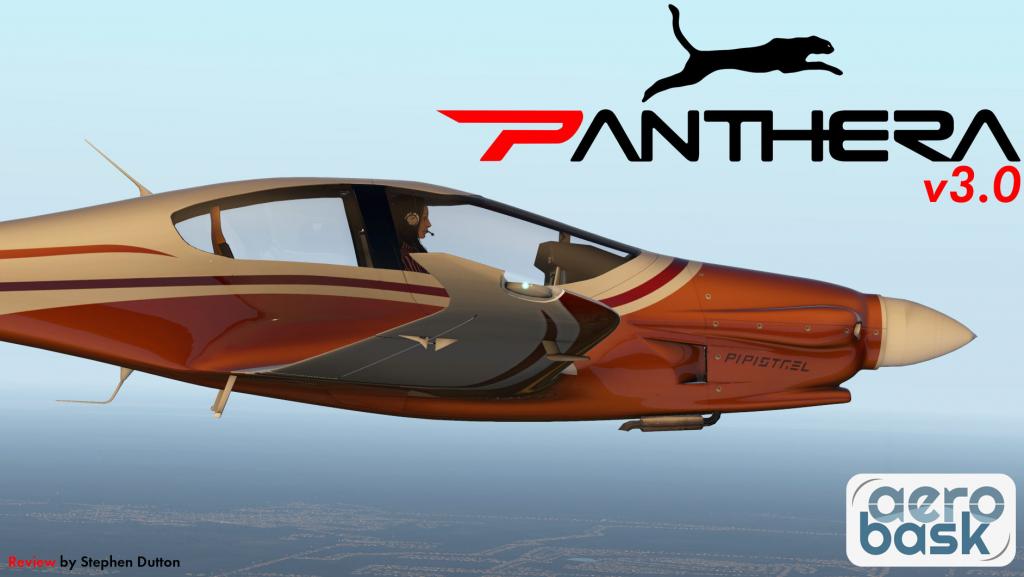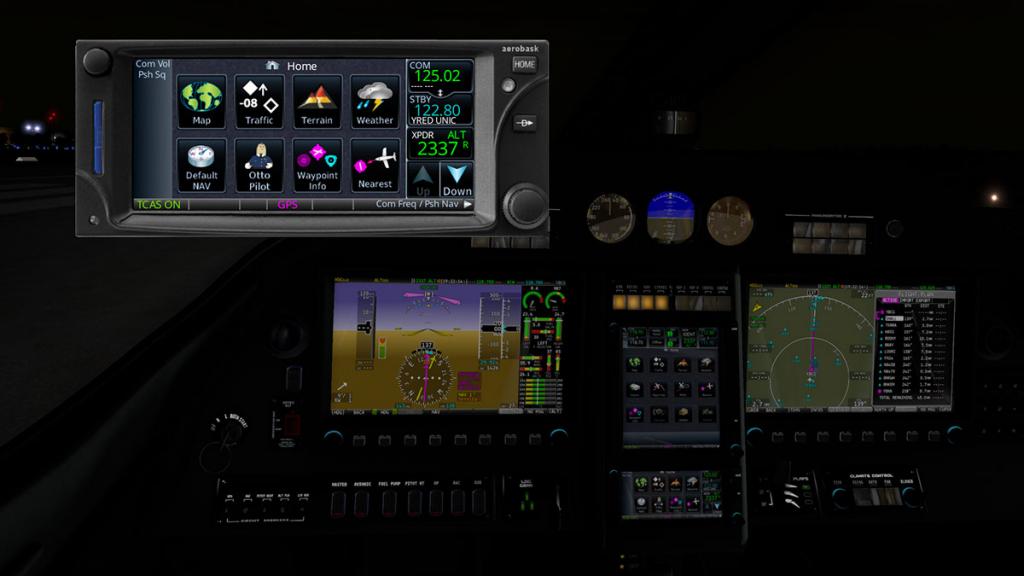Search the Community
Showing results for tags 'aerobask'.
-
Aircraft Review : Shark UL XP12 by Aerobask It is a versatile nimble aircraft, fast as well! this is the "The Shark" or Aero Shark, which is a conventionally laid out, single engine, low wing ultralight aircraft, light-sport aircraft which seats two in tandem. It was first flown on 19 August 2009 and it is built in both Slovakia and the Czech Republic by Shark.Aero. It has optionally fixed or retractable landing gear. You gotta have to love that tail... The fuselage of the Shark is formed with integral fin seat backs, floors and instrument panel. The fin, set forward so the rudder's trailing edge is above the elevator hinge line, is shaped like sharks dorsal fin, high and strongly swept with a curved leading edge. There is also a small ventral fin. From the fin forward the upper fuselage line rises rapidly to merge into the side hinged, single piece canopy. There is baggage space behind the cockpit. Both of the tandem seats have flight controls. Structurally, it is a mixture of carbon-fibre and a small amount of glass fibre composites, with PVC foam filled aramid honeycomb structures sandwiched between the panels. The wing main spar is a dismountable two-piece carbon fibre beam which joins under the front seat; an auxiliary spar carries the aileron and flap mountings. In plan, the leading edge is elliptical, and there is slight taper on the outer trailing edge where the ailerons are mounted. Single slotted, electrically-operated flaps occupy the rest of the trailing edge. Like the wings, the slightly swept tailplanes are also easily detached for storage or transport. You can see where the wings detach, plus the exposed gear in the bays. "UL" represents the retractable undercarriage and the variable-pitch propeller variant as delivered here. Power is by a Rotax 912ULS flat-four, air and liquid cooled engine of 73.5 kW (98.6 hp), connected to a 3-bladed Duc Hélices variable pitch composite propeller. Go into the roll and the Shark responds nicely, climb, then twist and dive, and the aircraft feels SO well balanced and super-smooth to your inputs, in the States the Shark is known as a light-sport aircraft (LSA) (as yet not yet registered) but has certainly all the correct dynamics and the feel for that "Sport" moniker. As noted the Shark is Fast... Maximum speed is 300 km/h (190 mph, 160 kn) with a cruise speed of 250 km/h (160 mph, 130 kn) economical... it will climb at a 7.4 m/s (1,460 ft/min) max, to a ceiling of 4,100 m (13,500 ft). G-limits are also high at +4/-2 Sounds are quite extensive, even excellent here with a full FMOD environment by sound pro Daniela Rodriguez Careri. It comes with accurate doppler effects, distance attenuation and flyby effects. The headset is simulated as well. The Shark also comes with the "Dynon Skyview" Avionics package. A G1000 sized display that has a lot of Garmin G1000 features but comes here with more functionality in depth. Here are a few images of the display working in the air, we will go through the Skyview details and functions later. From the rear you have basic instruments. Artificial Horizon and Speed/Altitude Tapes. The undercarriage indicator (selector) is also present, fuel selector, throttle and joystick, but no rudder pedals? I know you want to check out the goodies in the Shark, so I head back to Half Moon (KHAF)... correct altitude and speed, I approach RWY 12, but the flaps won't extend... "what the?". I have been warned about this odd foible on the Shark, so I pull up the nose to rub off the speed... Even well low in the white flap line at 72 knts, I still get no reaction from the flaps... it is noted that the flaps won't activate above 65 knts for the first extension, 60 for the second and 55 for the full flap position, so you have to run off a LOT of speed before the flaps become active? So it is a bit of a skill or game to get the speed and flaps in position and ready for landing, it takes time, you go slower, then even slower to rub the speed off.... the gear also has a "Pressure Switch", so it won't retract or extend until you reach or are below a certain speed (62 KIAS (115 km/h)... right finally both are done! You can twist this very agile aircraft on a dime to tightly turn the Shark back to the runway, the handling is so docile, so controlled, you can put the aircraft pretty well anywhere you want to, very easy to trim. Approach is interesting... the Shark is not a throttle feel aircraft, so adjusting the throttle will certainly have an effect on your altitude or descent speed, it is not everything, as you will also need some nose (pitch) angle to help you out as well. This was more apparent in descending from an altitude, say 5,000 ft to 2,000 ft, as you required a lot of down forward pitch, which was required to lose the height no matter the throttle position. Approach speed with full flap is a super-slow 45 knts, your just hanging up there, taking your time to line up the runway perfectly, again the handling here is superb.... love it! Your approach is so low, so slow... you can even do some lawnmowing at the same time, easy peasy. Super-handling... X-Plane's v12.08 new landing wheel inertia, it works wonderfully here, as you are finally in total control of the aircraft and in the landing, you want as you touch around 42 kts (ish), slight nose flare! ... and your down stall speed is a super-low 35 kts. Love it, yes I totally love it. This is the first all new aircraft from Aerobask for quite awhile, and is only for X-Plane 12 (X-Plane v12.08 is required). After spending most of the year upgrading the Aerobask fleet for X-Plane 12.... So it is nice to have something totally new and different to look at and fly. Notably the Aerobask and their quality have already a very high prestige, that upper echelon of that X-Plane users will buy on the name alone, no matter the aircraft they deliver. Aerobask also specialise in composite modern aircraft, and the Shark is a current production aircraft since 2019. So the Shark UL fits the brief perfectly. On the ground the Aerobask quality is certainly very evident. Detail is composite super-smooth, but all done to perfection. Love the Shark gills cooling. Landing gear is perfect in design and genuine detail, trailing link, but with enough give (movement) to make it totally realistic. That fin tail and fine wing are both again super-smooth and really well done, so overall there is absolutely nothing in the exterior or the modeling scale that demands attention of any criticism, the standard today in these aircraft are extremely high, so you sort of expect it at this level.... but it is still nice to admire the skilled work. Bubble canopy is also perfection, lovely glass and reflections, you can almost want to open it with your own hand, it opens sideways to the right, almost glider like. Twin-seat cockpit is tight, almost like a two-man bobsleigh, certainly tight in the rear... Frame with slim cushion seats are excellent, highlighted by the bright red seatbelts... you sorta slip into the aircraft and not get into it, as is so tight... comfy? notable is the rear (few) instruments mounted on the canopy, not the fuselage. There are controls both front and rear, if very basic in the back of throttle, joystick (but no rudder pedals) That very high quality Aerobask interior design and materials are in abundance here. Carbon-fibre weave is highly realistic and in different combinations to match the interior design, seat frames are also Carbon-fibre, molded perfectly to realism. There is a soft vinyl lower/floor material, everything is glorious to the eye and completely authentic. For an Ultra light sport aircraft, the instrumentation is quite considerable. The Dynon SkyView HDX System is the headliner here, and starts with the display being available in both 10” or 7" sizes, in the Aerobask Shark we have the larger 10" version, and it dominates the forward view. The "Skyview Touch" is the main feature of the Aerobask aircraft, the first fully mostly authentic reproduction of this popular Avionic suite for the X-Plane Simulator. Even the "Pop-Up" is set in the Dynon Avionics bezel. The pop-up can be scaled from extremely small, to excessive large, and can moved to any part of your screen. The Skyview Touch is quite complex in functionality, you will need to study the system (on the ground, and don't try to wing it!) as you can easily get lost in the myriad of menus, it took even me a fair while to work it all out, in areas they are the same as the G1000 layout, but a lot of the Dynon system is quite different in selections. The PFD is the usual wide Artificial Horizon, with the standard Speed and Altitude/VS Tapes, Roll, Bank and Pitch markers, lower is a Horizontal Situation Indicator (HSI) with NAV 1/GPS BRG (Backgrounds), Speeds, Baro, Altitude, Wind, HDG (Heading) and CRS (Course) are all shown. First option is that you can switch from a HSI to a G-Meter, which you can reset. There is the CONFIG selection. PITCH allows you to set the climb angle you want, in 10º, 20º, 30º and 45º. SYNVIS will revert the Artificial Horizon to a colour background. SIX-PACK puts just the "Standard Six" instruments on the display, plus you can also have a neutral grey background. It is all exceptionally well done by Aerobask, and very authentic to the real Dynon. Layout options are quite a few. First you have the EMS or Engine Monitoring System, this can be shown in three positions in; left, right and centre. All engine outputs, temperatures and pressures are all shown, HOBBS and electrical outputs are also available. There is the standard Skyview PFD background as well as the wide MAP, or both together, and you can even switch them around. In the CONFIG, the "POPUP" selection is here as well. Other MAP options include; GREEN, SLATE, TOPO and TERRAIN... you can also orientate the map HDG or NORTH UP. Flightplan input to the Skyview is via the Garmin GNS 430, this includes saved flightplans, building flightplans and procedures, it basically mirrors the GNS. Another big feature is the use of Navigraph charts in the Skyview. Obviously you need a Navigraph account, and to register the account before use (each time you fly actually?). In MAP, you then select the airport you want to access, this will give you the basic (X-Plane) airport data... ... then in pressing CHARTS, you will then access the Navigraph database for airport charts, then selecting the chart you need. When you have selected a chart, the system goes looking, then loads in the chart you want. CHARTS are available in day or night options (night darker is far easier to read)... ... and charts can be FILL, FIT, ZOOM (in or out) or just scroll (or moved) around the screen for the size you want. Hardware Dynon control panels are also provided. This is the "Rotary Controls" for HDG/TRK, ALT & BARO (top-left), and the secondary "Knob Control Panel" (top-right). These two panels are set above the Skyview Touch. The AP (Autopilot) can also accessed directly in the Skyview Touch, also available are FD (Flight Director), ROLL, PITCH and LEVEL selections. The Dynon Skyview Touch is all so very, very good, and a totally though system to use. There is a video made by Aerobask listing the features of the Skyview Touch avionics system... well worth looking through, and getting the general idea of all the functions. Other digital instruments include; Flybox PR1-P Propeller Regulator, Blaze EMS-2 3 1/8” universal engine monitor color display and a Flybox Oblò backup instrument. A ATR833-II 80mm radio (COM) produced by f.u.n.k.e. (manual provided) and an Aerospace Logic Chrono CO200 OAI (manual provided) are set lower, and note the row of Circuit Breakers (fuses). In the Shark the circuit breakers act also as the switches for the EFIS, Fuel Pump, Pitot Heat, and the three external lighting of Position (Nav), Strobe and nose Landing lights. Side panels are basic, Fuel Tank switch and Throttle left, and Joystick and a PS Engineering PMA4000 Audio Panel right. Notable in the cockpit is the detail, like the excellent canopy window, beautifully methodically createdl, it opens (slides) as well! Menu The Shark Menu is accessed via the banner "Plugins" menu "Shark UL Options Show/Hide". Secondary selections are via a "Hotspot" above the Shark Logo top right of the instrument panel, the Menus is also accessible via the "AviTab" tablet on the right side of the canopy. The Menu is the standard Aerobask menu layout, with four tabs; Ground, Options, Sounds and About. Ground: the first tab "Ground" gives you your FOB (Fuel on Board), and you can select kgs/Lbs and Gal in either of the two tanks, there is the option to "Balance" the fuel in both tanks, lower is your Livery selection. Right panel covers a few basic static elements (pitot cover and a single cone) and the operation of the rear pilot in; Always Visible, Installed Outside only or Not Installed. There are two very nicely modeled (meaning realistic) Female pilots, but there are no other options to swap positions or a choice of a Male pilot. Options: Covers the MAIN, in Instrument Pop-ups, Reflections, Navigraph Charts (subscription and switching to either Day or Night charts) and Breaker Reliability. All main instruments options are covered, for the SKYVIEW, CO200K, MD302, PR1P, EMS2 and ATR883 Almost all options cover the instruments PopUp options, and temperature/pressure options. Sounds: This tab covers all your sound options in eight sliders, Internal, External, Pilots, Radios Environ and User Interface. There is the global options to Enable Sounds and Enable Speech. About: Last tab is the "Credits" for the Aerobask Developer team, the aircraft version No.# is shown in the banner. The AviTab Tablet as we have shown is also available (plugin required), it is the standard AviTab layout and tools, plus the built in Menu. Just press the right side button to hide. Lighting Lighting is pretty basic. Just the instrument lights (no adjustment) in the cockpit, and external Position (Nav), strobe and a single landing light in the nose. At night the instrument reflections are very strong, stronger when darker, very authentic though. Liveries There are twelve liveries, all very colourful and several are shark themed including "Jaws". There is a base white for the painters. ____________________ Summary This is an all new aircraft release from Aerobask... "The Shark" or Aero Shark, which is a conventionally laid out, single engine, low wing ultralight aircraft, light-sport aircraft which seats two in tandem, and is built in both Slovakia and the Czech Republic by Shark.Aero. A typical Aerobask modern composite design, the Shark is a beautifully handling aircraft with the authentic first representation of the Dynon "Skyview Touch" avionics package, a sort of mega Garmin G1000 styled display. Other represented instruments are the Flybox PR1-P Propeller Regulator, Blaze EMS-2 3 1/8”, ATR833-II 80mm radio, Aerospace Logic Chrono CO200 OAI and a very nice Flybox Oblò backup instrument . Focus here is on that "Skyview Touch", this is a comprehensive version with full authentic details that replicates the real Dynon package, there is also built in Navigraph charts, full hard point Dynon switchgear (two), and the side canopy AviTab with built in menus, the four tab menu is also available via clickpoints. Exterior modeling is to perfection, and the Interior is perfectly designed with full carbon-composites and materials. It looks like a Shark and flies swimmingly with purpose (pun intended), it's a seriously nice aircraft, easy to fly and you will soon find your love to the great handling and the ease of use, tricky to note is the authentic use of the landing gear and flaps. The Shark is also X-Plane 12 only and requires the latest v12.08 X-Plane version to fly. Overall a seriously nice package that Aerobask do so well, and yes a great quality and value investment for hours of enjoyable flying with all the mod-cons.... brilliant! __________________ Yes! the Shark UL XP12 by Aerobask is NOW available from the X-Plane.Org Store here : Shark UL XP12 by Aerobask Price is US$29.95 Requirements X-Plane 12 (XP12.08 minimum - will not work with 12.07 or earlier. Not for XP11) Windows, Mac (even native M1, M2 Macs) or Linux 8 GB+ VRAM recommended Current version: 12.01r1 (December 12th 2023) ________________ Installation and documents: download for the Shark UL is 529Mb and the aircraft is deposited in the "General Aviation" X-Plane folder. Full Installation is 1.36Gb Authorisation is required, and a restart. Updates are via Skunkcraft Updater. AviTab Plugin is required for this aircraft Documents supplied are: Quick-Doc ATR833.pdf Quick-Doc CO200.pdf README - XP12 aircraft installation.pdf Shark UL - Checklist Normal.pdf Shark UL Flight Manual.pdf There are a huge amount of Documentation provided here, not only for the Shark UL including: performance charts, reference guides, avionics and a printable checklist. All updates are via the new Skunkcrafts 3.0 Updater Designed by Aerobask Support forum for the Shark UL _____________________ Aircraft Review by Stephen Dutton 15th December 2023 Copyright©2023: X-Plane Reviews Review System Specifications: Windows - 12th Gen IS1700 Core i7 12700K 12 Core 3.60 GHz CPU - 64bit -32 Gb single 1067 Mhz DDR4 2133 - PNY GeForce RTX 3080 10GB XLR8 - Samsung 970 EVO+ 2TB SSD Software: - Windows 11 Pro - X-Plane 12.08rc3 (This is a Release Candidate review). Plugins: Traffic Global - JustFlight-Traffic (X-Plane.OrgStore) US$52.99 : Global SFD plugin US$30.00 Scenery or Aircraft - KHAF - Half Moon Bay by Rising Dawn Studios (X-Plane.OrgStore) - US$19.00 (Disclaimer. All images and text in this review are the work and property of X-PlaneReviews, no sharing or copy of the content is allowed without consent from the author as per copyright conditions) All Rights Reserved
-
NEWS! - Aircraft Updated : Epic E1000 G1000 Edition by Aerobask to X-Plane 12 Aerobask have updated their excellent Epic E1000 G1000 Edition to X-Plane 12. It is easy to get confused here. The E1000 had a very significant update with the addition of Laminar Research's G1000 avionics back in February 2019, and a lot of the features and dynamics were also updated to match the considerable changes in v11.30. but that was still as an X-Plane 11 aircraft. (This aircraft is still available for X-Plane 11 as part of this package). X-PlaneReviews full XP11 review is here: Aircraft Review : Epic E1000 - G1000 Edition by Aerobask This new release is only for the X-Plane 12 compatibility and is only an update, with the addition here of X-Plane 12 features and effects. Obviously it will make a huge difference to the aircraft, a substantial one in fact in lifting the aircraft into a higher quality category. Including... Completely reworked and re-scaled exterior and interior model New 4K PBR textures 8 stunning liveries out of the box Color-matching interior based on livery White (for painters) and Lo-res liveries available through Aerobask website Smooth and VR-friendly manipulators The price is on sale as well... US34.95 is reduced to US$22.72, or a saving of $12.23(35%), so a winner all round with not only a better higher quality aircraft, but at a seriously lower (sale) price... so be quick. The Epic E1000 is an American single-engine, six-seat, turboprop light aircraft developed by Epic Aircraft of Bend, Oregon. The project's aim is that the E1000 will be the fastest single-engine civil aircraft at its time of introduction. A development of the kit-built Epic LT, the E1000 aircraft features a cantilever low-wing, a 6.5 psi pressurized cabin with an airstair door just ahead of the rear seats, retractable tricycle landing gear and a single 1,825 hp (1,361 kW) Pratt & Whitney Canada PT6-67A turboprop aircraft engine, that is de-rated to 1,200 hp (895 kW) engine in a tractor configuration. The aircraft is predominantly made from carbon fiber and its 43 ft (13.1 m) span wing mounted flaps and winglets. To update go to your X-Plane.OrgStore account, and download the "Aerobask_Epic_E1000G_XP12" version, once updated, the E1000 can then be updated by the Skuckcraft's Updater Designed by Aerobask Support forum for the Epic E1000 G1000 __________________ Yes! the Epic E1000 G1000 Edition by Aerobask is NOW available from the X-Plane.Org Store here : Epic E1000 G1000 Edition Price is US$34.95 Currently reduced to US$22.72, or a saving of $12.23(35%) Requirements X-Plane 12 (12.08 minimum) or X-Plane 11 Windows, MAC or Linux 8 GB+ VRAM Video Card Recommended Current version: 12.01r (November 24th 2023) ________________ News by Stephen Dutton 27th November 2023 Copyright©2023: X-Plane Reviews Disclaimer. All images and text in this review are the work and property of X-PlaneReviews, no sharing or copy of the content is allowed without consent from the author as per copyright conditions) All Right Reserved.
-
NEWS! - Aerobask updates Epic Victory G1000 to X-Plane 12 The details released here are light, but noted is that the Epic Victory light jet has been now updated to X-Plane 12. Noted by Aerobask is " This is first release of the Epic Victory G1000 Edition for X-Plane 12, a free update for owners of the XP11 version". No specs, but there is a pretty video... Features Aerobask quality 3D model Fully functional virtual 3D cockpit, with smooth and VR-friendly manipulators High quality 3D model with high resolution PBR textures (4K) Flight model according prototype specifications Fully Integrated Laminar Garmin G1000 with custom EIS and annunciations Synthetic Vision technology by OscarPilote GFC700 autopilot Touch screen features for easy handling GCU476 3D/2D keypad Customized FADEC/ECU with test procedure MD302: accurate custom coded Standby Attitude Module Simulated oxygen system Simulated ice protection system Functional breakers (configurable reliability) Windshield effects: reflections, rain and frost Progressive wing icing Many parameters saved between flights Complete array of custom documentation Avitab tablet, with integrated options panel Detachable and VR-friendly 2D options panel Full FMOD environment by Daniela Rodriguez Careri Accurate doppler, distance attenuation and flyby effects Simulated headset In-game volume control without pausing the sim Remember you get two aircraft for both X-Plane 11 and X-Plane 12 for the price of one! Designed by and Images from Aerobask Support forum for the Epic Victory G1000 Edition _______________________________ Yes! the Epic Victory G1000 XP12 by Aerobask is NOW available from the X-Plane.Org Store here : Epic Victory G1000 Price is US$34.95 Requirements X-Plane 12 or X-plane 11 Windows, MAC or Linux 4 GB VRAM Minimum - 8 GB+ VRAM Video Card Recommended Download Size: 400 MB Current version: 12.0r1 (January 18th 2023) ________________ News by Stephen Dutton 19th January 2023 Copyright©2023: X-Plane Reviews Disclaimer. All images and text in this review are the work and property of X-PlaneReviews, no sharing or copy of the content is allowed without consent from the author as per copyright conditions) All Right Reserved.
-
Aircraft Review : Diamond DA-42 NG by Aerobask Here is the latest release from Aerobask, and yes it is another Diamond Aircraft. But this Diamond is a significant one for Aerobask, as it is not the first series release of the Diamond DA-42 for the developer. That release, which is the original, was also the very first aircraft released by Aerobask, or then the Diamond DA-42 Twinstar by Harranssor. That was almost exactly a decade ago (29th August 2013), and to celebrate, Aerobask not only have released their latest newly minted, highly detailed DA-42 NG aircraft, but created also an anniversary livery as part of this package... I totally recommend to read the original Diamond DA-42 Twinstar by Harranssor review, in that it shows not only the changes in the X-Plane Simulator itself, but the massive changes in detail and quality over the decade. It was for it's time astoundingly good, even incredible for a first time developer (Harranssor did release a Eclipse 550 earlier as freeware), but the DA-42 was in payware and it came with very high expectations.... and delivered. That decade old DA-42 release was in X-Plane v10.22, here we are releasing the new DA-42 NG (New Generation) in the newly released X-Plane 12 (Sorry no X-Plane 11 aircraft will be made available). So this is the very first fully developed aircraft for the new X-Plane version from Aerobask, and the package (price) includes both updates and revisions for the length of the simulator (X-Plane 12) run. The photographic quality of X-Plane 12 brings out the realism of the Diamond Aircraft. Certainly sleek to begin with, the composite smooth design shines (no pun intended) and curves to the natural lighting. Noted as the "Twin Star", this aircraft originally used Thielert Aircraft Engines TAE 125-01 Centurion 1.7... in the real aircraft Diamond has now switched to their 3rd Generation Austro Turbo Diesel Engine or the Lycoming IO-360 engine which is also available as an option, and installed here in the XP12 version is the Austro Turbo Diesel. Bit of trivia... the DA42 Twin Star was the first diesel-powered fixed-wing aircraft to make a non-stop crossing of the North Atlantic in 12.5 hours, with an average fuel consumption of 5.74 gallons per hour (2.87 gallons per hour per engine), give it a try if you want to... I would be explaining nothing to Aerobask converts. They will already know of the quality, forensic detail, superb modeling and the general exclusive experience of Aerobask aircraft... Top Notch, well whatever, it is again all brilliantly done here in the DA-42. Composite aircraft don't have a lot of panels, so most parts of the aircraft are added on, not part of the structure.. say the nose, tail section, so on... Looking hard you can see all this and more in all the sections that make up the aircraft's assembly, but most of the excellent detail is around the engines, cowling, shrouds, and the details and all fastening screws are all visible and checked... if you want detail, then here it is. Also the flying surfaces, tail assembly, high T-Tail elevators, lovely crisp wings with winglets. Notable are the excellent flap and aileron actuators, beautifully designed, ditto the elevator and adjoining trim tab (trailing edge). Glass is supreme, nice curves, great reflection and the right tint. Note the beautifully designed instrument hud (cowling?), here the detail is excellent with window demisting vents. Unlike the DA-62, which has two opening front doors, the DA-42 has a single forward opening canopy, and the rear single left door for rear passengers as is the same as the DA-62, but they all give you ease of access. You can open them via the latches or the menu. Other external items include, opening twin forward storage lockers, chocks and a GPU (Ground Power Unit) Menus You can access the Aerobask Menu, via the Plugins Menu, or the internal tablet.... Since v2 of the Diamond DA-62 the Aerobask menus have been changed to this more cleaner, new style layout, there are four tabs; Ground, Options, Sounds and About. Ground : Covers the standard Fuel loading of the aircraft (with a "Balance" fuel setting), 3d passengers (Pilot and Three passengers), Static Elements of Chocks, Bollards, Pitot covers, GPU (Ground Power Unit) and you can change the liveries via a "Previous" and "Next" selection. Door selections of Canopy, Pax door, right and left boots (storage), Also Remove Chocks, GPU options, Refill Oxygen bottle, Refill anti-ice fluid are all also options on this tab. Options : The "Main" covers Instrument Popups, Reflections, G1000 Shared options and Breakers (Fuses) with a reliability scale. There are three other avionics sets of OPTIONS for the, G1000 PFD, G1000 MFD and the MD302 backup instrument. "Synthetic Vision" is included in the G1000 tab. Sounds : There are seven sound sliders; Master, Aircraft Exterior, Aircraft Interior, Copilot, Radios, Environmental and User Interface. You can Enable (or disable) sounds, and Enable (the) speech. About : Here is listed the Aerobask development team and beta testers, and the aircraft's version number is indicated in the popup menu title, or the changelog.txt in the main folder. As noted there is a pilot and three passengers you can individually view or hide (the pilot hides when you select the Static Elements). The quality of the 3d people are all very good, and seen before in Aerobask aircraft. Internal The internal cabin of the decade old DA-42 was sensational (for it's time). So was the start of Aerobask's reputation for creating seminal interiors of aircraft... and you won't be disappointed here either. It is important to note, that this cabin is of a few generations older than say the DA-50RG or the DA-62, so the materials used here then reflect that heritage, other than that it is all as usual for Aerobask, extremely well done. The four seats are outer leather with a mottle grey pattern insert and red piping, note the lovely folds on the leather surfaces. Diamond logos are also nicely shown on the headrests.... it's all beautiful stuff to admire. With the selection of different liveries, then two more different interiors in red and cream are available. There are several different carpet threads (Grey), and a leather mustard side paneling, so is the centre console covering. Main cabin colour is a slate to light grey... exquisite! Instrument Panel The decade old DA-42 had the same native Laminar Research G1000 twin panel avionics system (both PFD and MFD pop-out), but the X-Plane 12 version is customised far more here with custom EIS and annunciations. It is a very good panel layout, but not as really detailed as a real G1000 system actually is, but it does cover about 85% of the systems. Start up process is excellent with Aerobask logos, and more CREDITS and AIRAC data. Note the great reflections on the G1000 screens. Both PFD and MFD G1000 displays pop-out, as does the MD302 SAM The system has a "reversionary" mode. This is all the primary instruments and engine parameters presented all on the single display, in this case the PFD. (If the PFD failed then the "reversionary" mode switches to the other MFD (Multi Functional Display). Also in the same mode, both displays will show the PFD (Primary Flight Display). PFD (Primary Flight Display) is very good with the large Artificial Horizon dominating the screen with the Speed and Altitude (with built in Vertical Speed) tapes either side, Rate of turn and FD (Flight Director) are all present. Lower is the Heading rose with built in Heading, Wind (3 options), CRS (Course) DME, NAV 1, NAV 2 and OBS. All Radio, Autopilot (AP) settings and data are across the top banner of the panel. Note the inbuilt warnings panel centre right, and INSET MAP This is an option to put a small insert map on the PFD, but I never do (it makes the display too crowded). There is a custom tool in a GCU476 2D keypad to input values directly by touching the screen (i.e. clicking the values or using the mouse scroll wheel to adjust them). For example, for changing a radio frequency or here the heading, you can use the mouse scroll wheel, which is much easier than turning the knobs in the 3D cockpit. it has a small slider or ++ / -- tool to say which items can be manipulated. Synthetic Vision There is the "Synthetic Vision" tool that we mentioned earlier by Oscar Pilote. There are three modes that can be selected from the "More Options" menu. The first is the standard default Laminar one with the blue top and dirty brown lower horizons. Then the "Topology Only", with a light blue (realistic) sky and green lower horizon, the final one is "Topology + Terrain" with the same light sky and brown lower horizon. MAP/Navigation Display (MFD) The secondary MFD in a MAP/Navigation panel covers also all the (EIS) engine outputs which are in two versions with one visual and one in data. This is another custom panel by Aerobask. The colourful engine readouts cover are on page one; Manifold Pressure (Load) and RPM, Fuel Flow GPH (Gallons Per Hour), Oil Pressure and Temp, Coolant Temp, Fuel Temp and Fuel QTY (Quantity). System switch (data) covers the same LOAD and RPM top, VOLTS and AMPS, Gearbox/Coolant Temp, Oil Pressure/Temp and De-Ice Fluid level. Notably missing are the usual two items? FLAPS position (UP-20º-38º) and ELEV (UP-TO-DN) adjustment, rudder adjustment trim bottom, and the Fuel Calculations, GAL (Used), REM (Remain) system which are both on the DA-50RG and DA-62. MD302 SAM® Mid-Panel is the MD302 SAM® or the "Standby Altitude Module" Basically is a standby instrument which is very authentic to the real instrument, this avionic tool is interesting as it replaced the standard three (Airspeed, Artificial Horizon and Altitude) setup in the earlier DA-42, modern times for modern avionics. Other upper panel details include Lighting Switchgear (left), Whiskey Compass, ELT and authentic aerox Oxygen pressure gauge. .. but if you hold the same knob down for two or three seconds then a menu appears that covers In-fight configurable items that are... Altitude units in feet or meters, Barometer units either inHg or mbars, Attitude symbol in traditional or delta, Attitude mask on or off and Altitude trend bar in either on or off. There is a Quick-Doc manual provided that covers the instruments features and their use. Note: The SAM has to be set separately (i.e. Baro) than the main PFD as one adjustment does not cover all the instruments. Last note is the G1000 "Autopilot" buttons are placed normally in this DA-42, between the two displays (PFD/MFD), the original DA-42 used a separate GFC-700 Autopilot! Left panel Electrical setting switches/Avionic Circuit Breakers. Right Panel the full Circuit Breaker (Fuses) panel that is active and De-Ice System. Lower panel has (LtoR), Pitot Heat, Left Engine/Right Engine (Master/Start, Elec. Master, Avionic Master, Landing Gear, Fuel Pumps (L/R) , Flaps and Engine buses. The central pedestal is really well designed as well... Lovely Throttle and Fuel selector levers are very well crafted, the Fuel cutoff is full back with the red tabs clicking into place. Defrost is required as your cabin can go misty in the cold... a great special effect from Aerobask. Two Trims are "Rudder" upper centre panel, and "Pitch" in the large trim wheel centre console, rear are light switches and rear (Working Audio Panel) There is a built in AviTab Tablet (Plugin Required)... it is stored in the left side pocket holder, press to mount on the right side of the instrument panel. You can also press the knob attachment (AviTab) holder on the instrument panel bracket to bring the AviTab up as well (plugin required). As noted the Aerobask Menu is also built in for ease of use. ________________ Flying the X-Plane 12 Aerobask DA-42 There have been a few Diamond DA-42's in X-Plane. The Original Aerobask 2013 version as mentioned in the review, a Diamond DA40NG XP12 by SimSolutions, we reviewed last November 2022, and coming another DA-42 from a new developer group, CreatorOfWorldS (COWS). So you are not short of choice, but how could you go past the authenticity of Aerobask... well you can't. Let us put the numbers up front and center... Maximum speed: 356 km/h (221 mph; 192 kn) - Range: 1,693 km (1,052 mi; 914 nmi)- Service ceiling: 5,486 m (17,999 ft) - Rate of climb: 6.5 m/s (1,280 ft/min)... all pretty impressive. Starting is easy. You have FADEC (Full Authority Digital Engine (or electronics) Control ), so you just switch on the fuel flow (switches centre console), then and then turn the key towards the engine you want to start. The engine is an Austro Engine E4 (marketed as the AE 300), based on the Mercedes-Benz OM640 road Diesel engine. It supplies 168 hp (125 kW) (maximum takeoff and continuous power) at up to 2,300 propeller RPM for each engine. Sounds are modern FMOD and with Enhanced 3D system sounds by Daniela Rodriguez Careri, including Doppler and Flanger effects. They do sound a little different from the normal, but the engines are very different as well in being diesels, but at the cruise speed they have this lovely thrumm that passes the flying time nicely. Start up is almost instantaneous with a slight cranking, so they are almost electric in that aspect. The DA-42, however sounds almost exactly like the DA-62, but then it does use the same engine installation with the same twin-diesel engines. If we go back (again) to the original DA-42, there was one area I really didn't like. This was the stick like undercarriage, it was hard, stiff and very unforgiving (landings were horribly hard nose affairs). The forward angled single nosewheel and trailing link main gear is the same arrangement here, but add on ten years and it is all a very different feel, a slight bounce, say even a cushioning to the gear, which is far, far better and more authentic to real suspension. You can't taxi too fast with that slim nosegear, but get the (low) taxi speed right and the aircraft is fine... Heading on to PAJN's Runway 26, and the runway shows up in "Synthetic Vision" on the PFD, it is very well done.. Tons of low down torque from the Twin AE 300's, gives you push to Takeoff Speed around 100 knts, Rate of climb is noted at 6.5 m/s (1,280 ft/min) but I found that 800fpm gave me the best climb to altitude (5,000ft) without putting pressure on the power output and keeping out of the red zones... This is a modern 4 seater aircraft, efficient, not a 18th Century Gallon Piper. So it handles and flies efficiently as well. Basically it's a cruiser of the air, a sort of GT or Grand Tourer... the just under 1000 nautical mile range gives you the distance to cover a respectable area, and at a just sub 200 knt speed. So it's perfect for a point to point flight. So the DA-42 is not a particularly demanding aircraft for the pilot, as all the mod-cons are in here, with the G1000 (Synthetic Vision) and the MD302 SAM. In flight modeling it is done by X-Aerodynamics who does all the Aerobask dynamics, he's good, so is the feel of the DA-42. Lighting Considering the other DA, Diamond offerings the internal lighting in here is quite basic. Two knobs adjusts the display and instrument brightness. Not very overly effective in the day, but fine at night. Cabin lighting consists of one forward light and and one rear spot, both again very effective at night. Externally, you have the usual Landing and Taxi twin lights under the mid-fuselage, but they interfere with the modeling in creating nasty ant marks around the nose. There is no beacon, but wing navigation, strobe lighting is excellent. At this point in X-Plane 12's evolution (v12.01r1) then expect still more refinement in all the lighting. Haines, Klukwan, Alaska is a double tight airport to get into from the east, PAHN although situated on the Chilkat River, is nestled between a mountain and forests on the Runway 26 approach. A testing airport of nerves and flight skills. You can't even see the airport, never mind the runway on the approach? But it is there, hidden beyond the trees. Even though a Twin, the DA-42 NG is very good for getting into tight slots like this, good visibility really helps, so does Full Flap (LDG) selection and the approach speed in 83 knts. It's tight... and do you see the runway yet, just. Thankfully the Da-42 is wonderful to control and fly in these sort of circumstances, a great platform for tricky approaches. There is not much room between you and the trees as you clear the boundary, then you dive for the runway, then quickly do a heavy nose up flare to arrest the speed and height, you touch around 73 knts If you have a lot of confidence in the aircraft, then you can pull off these sort of manoeuvres, so the DA-42 delivers very well here. Obviously I will be talking to the converted. Aerobask have a lot of admirers (Including myself), so it's not hard to understand what you will receive with these aircraft, that they are so modern in design, and it all gives you more of a conviction to fly one. Liveries There is one blank (white) and six liveries with the DA-42 NG. All high quality and including the 10 Year anniversary livery as we saw earlier. _______________ Summary Aerobask are no strangers to Diamond aircraft, their catalogue is full of them, including currently the DA-50 RG, the DA-62. But Aerobask have also done a version of this DA-42 before, a decade ago, as their very first payware aircraft, it was good if not even brilliant for it's time and era, but we are now in X-Plane 12, another era and another realm, a realm that demands a lot far more quality and detail... the DA-42 NG 2023, delivers on that aspect, a lot. Excellent modeling is a given with Aerobask, as are the curated interiors, both are well highlighted here. Avionics include a custom EIS and annunciations G1000 System, Synthetic Vision technology by OscarPilote, Optional GCU476 2D keypad, MD302 "Standby Attitude Module", Simulated oxygen system, Simulated ice protection system and Fully functional breakers (configurable reliability). The excellent menu is available on the screen, but also on a AviTab tablet internally... there is also a Detachable and VR-friendly 2D options panel. Sounds are excellent and by renowned Daniela Rodriguez Careri, 3d Pilot and passengers, static elements, and the DA-42 also comes with an Auto-Updater (Skunkcraft), all to keep the aircraft up-to-date on-line. In a package, Aerobask delivers everything you want in a high quality aircraft with unique clever custom systems, and that is certainly the case here as well... again, better still everything comes in a competitively priced package below US$40. Remember this aircraft is valid for updates and free changes for the life of X-Plane 12 (Note this is only an X-Plane 12 Aircraft, not compatible with X-Plane 11). As a reviewer Aerobask aircraft are a dream to review, certainly there are a lot of custom options to cover, but in every other aspect they are some of the very best general aviation simulations available today... and for tomorrow in that fact. As a required simulation any Aerobask Diamond is a sensation to own and fly... Highly Recommended. _____________________ The Diamond DA-42 NG by Aerobask is available from the X-Plane.OrgStore!... Here: Diamond DA-42 NG Price is US$39.95 Requirements X-Plane 12 (not compatible with XP11) Windows, Mac (using Rosetta) or Linux 4 GB VRAM Minimum. 8 GB+ VRAM recommended Current version: 12.0r1 (January 12th 2023) Aerobask Systems Suite Fully Integrated Laminar Garmin G1000 with custom EIS and annunciations Synthetic Vision technology by OscarPilote Touch screen features for easy handling Optional GCU476 2D keypad Customized FADEC/ECU with test procedure MD302: accurate custom coded Standby Attitude Module Simulated oxygen system Simulated ice protection system Fully functional breakers (configurable reliability) Advanced Flight Model and Flight Experience Accurate flight model by X-Aerodynamics Smooth wingflex Windshield effects: reflections, rain and frost Many parameters saved between flights Superb 3D Model Aerobask quality 3D model Fully functional virtual 3D cockpit, with smooth and VR-friendly manipulators High quality cockpit model with high resolution PBR textures (4K) Custom Sounds Full FMOD environment by Daniela Rodriguez Careri Accurate doppler, distance attenuation and flyby effects Simulated headset In-game volume control without pausing the sim Other features and docs Complete array of custom documentation Avitab tablet, with integrated options panel Detachable and VR-friendly 2D options panel Included 6 liveries 2K textures pack for low computer Auto-Updater Keep your aircraft up-to-date with a convenient auto-updater (Skunkcraft) Installation and documents: download for the Aerobask DA-42 NG is deposited in the "General Aviation" X-Plane folder. The AviTab plugin is also required to use this aircraft, and it is deposited in your X-Plane Plugins folder. Full Installation is 1.33Gb Documents supplied are: Avitab.pdf checklist_da42.pdf Customized G1000.pdf DA42_AFM XP12.pdf DA42_CHKL XP12.pdf DA42_PERF XP12.pdf DA42_PROC XP12.pdf Quick-Doc MD302.pdf Read Me - XP12 Aircraft Installation.pdf A full set of documents are provided, including detailed manuals for the MD302 and Laminar G1000. A quick setup and deeper system manual is also provided with Performance and (Checklist) Procedures. ________________ Aircraft Review by Stephen Dutton 15th January 2023 Copyright©2023: X-Plane Reviews Review System Specifications: Computer System: Windows - IS1700 Core i7 12700K 12 Core 3.60 GHz CPU / 64bit -32 Gb single 1067 Mhz DDR4 2133 - ASUS GeForce GTX 1080 8Gb - Samsung M.2 EVO+ 2TB SSD Sound : Yamaha Speakers YST-M200SP Software: - Windows 10 - X-Plane 12.01r1 Plugins: Global SFD plugin US$30.00 : RK Apps XPRealistic v2 - US$34.99 Scenery or Aircraft - PAJN - Juneau International, Alaska by NorthernSky (X-Plane.OrgStore) - US$18.00 -PAHN - Haines Airport - Default Global Airports Disclaimer. All images and text in this review are the work and property of X-PlaneReviews, no sharing or copy of the content is allowed without consent from the author as per copyright conditions) All Right Reserved.
-
NEWS! - Aerobask updates EMB-505 Phenom 300 to X-Plane 12 One developer has been active with updates to X-Plane 12, and that developer is Aerobask. First it was the DA-50RG followed by ViperJet eX and then the DA-62. Now here comes the successful EMB-505 Phenom 300, a truly very nice aircraft to own and fly. Full release review is here; Aircraft Review : Embraer EMB-505 Phenom 300 by Aerobask If you have read the review, then yes I seriously loved this aircraft as it was one of the best from Aerobask. But the Embraer private jet is now also available in X-Plane 12... that has to be only a good thing. The New X-Plane 12 Version (XP11 version still also available) has significant changes and the X-Plane 12 new features in it's transition to the new version of X-Plane including: New XP12 flight model by X-Aerodynamics New XP12 Menus New G1000 Features Windshield Rain and Icing New XP12 Lightning The Phenom 300 is a twin-engined cantilever monoplane with low-positioned, swept wings. It has a horizontal stabiliser in a T-tail configuration and a retractable tricycle landing gear. It has two rear-pylon-mounted Pratt & Whitney Canada PW535E turbofan engines. The enclosed cabin has room for nine passengers and a two-pilot crew; during single-pilot operation an additional passenger can be carried. Access to the cockpit and cabin is via an airstair on the left-hand side. Its structural life is 28,000 flight cycles or 35,000 hours. It is built of 18% composite materials; it has winglets, but not thrust reversers. The Phenom 300 also has single-point refueling and an externally serviced private rear lavatory. The aircraft first flew in 2008, with an Introduction into service 2009. Remember you get two aircraft for both X-Plane 11 and X-Plane 12 for the price of one! Designed by and Images from Aerobask Support forum for the Phenom 300 _______________________________ Yes! the Embraer Phenom 300 XP12 by Aerobask is NOW available from the X-Plane.Org Store here : EMB-505 Phenom 300 Price is US$44.95 Requirements X-Plane 12 or X-Plane 11 Windows, MAC (using Rosetta) or Linux 4 GB VRAM Minimum - 8 GB+ VRAM Video Card Recommended Download Size: 600 MB Current version: 12r1 (November 11th 2022) ________________ News by Stephen Dutton 12th November 2022 Copyright©2022: X-Plane Reviews Disclaimer. All images and text in this review are the work and property of X-PlaneReviews, no sharing or copy of the content is allowed without consent from the author as per copyright conditions) All Right Reserved.
-
Aircraft Update X-Plane 12 : Diamond DA-62 by Aerobask Released in March 2019, the Diamond DA-62 followed on from a long line of Diamond composite aircraft from Aerobask. The DA-42 Twin Star and the Diamond DA-50RG. The differences were that the DA-42 was a Twin-Engined aircraft and the DA-50RG is a Single-Engined aircraft. Sadly the Twin-Star has been retired, so the replacement Twin-Engined machine has been this more later and larger DA-62. The larger DA-42 was built as the DA-50, but only one prototype was built and the DA-50 was also only a single-engine aircraft as well. The DA-50 soon morphed into the DA-62 which kept the larger fuselage of the DA-50, but added the Twin-Engined design of the DA-42, and comes also with the more powerful Austro Engine E4 (marketed as the AE 300) which is a liquid-cooled, inline, four-cylinder, four-stroke, diesel piston aircraft engine of which the DA-62 has the 180hp AE330 version. There was a large update (v2.0r) to the original DA-62 just under a year ago in late November 2021, so it is very up to date in systems and detail. So here is the transition aircraft of the same to X-Plane 12. It doesn't have any changes from the 2.0r version, but does have all the X-Plane 12 features added, in the Flight Model by X-Aerodynamics, lighting, texture adjustments (Internal/External) and weather effects. The DA-62 looked very good originally in X-Plane 11, but now the refined X-Plane 12 effect gives the Diamond a more serious "WOW" feel. The aircraft just "OOOOZES" quality, our of every pore and it's skin. The detail is simply of the chart, so get closest inspection that you can. I have always loved the organic shape of the engine cowlings, incredibly well done, masterful modeling. Internally it is just as extravagant, nobody does interiors better than Aerobask, it is a feast for your eyes all in the perfect detail and materials. Since v2 of the Diamond DA-62 the menus have been changed. Now they are more concise and easier to use they cover the standard Weight & Balance of the aircraft, 3d passengers, Fuel and Static Elements of Chocks, Ties, Bollards, Pitot covers, GPU (Ground Power Unit) and non-working pushback trolley. On the Menu "Options", it covers the (Main) or aircraft options and then the three avionics sets of options for the, G1000 PFD, G1000 MFD and the MD302 backup instrument. EDDB (Berlin) to EDDP (Liepzig - Halle) The flight here is quite short, just a few hundered kilometers from Berlin to Liepzig. Starting the DA-62 is simple simon, just switch on the fuel flow (levers centre console), then the main fuel pump, and press the correct dinky button for the engine you want to start, as easy as starting a diesel engine in a car or truck. As this is a very modern GA, and so the engines don't need to be coaxed into life, they will start easily and run up to temperatures very quickly with that odd (in an aircraft) slightly rattly diesel sound. Although the DA-62 is not newly released. I love the fact that all Aerobask aircraft are so fully resolved when being used, virtually no bugs and issues to contend with, it is all a nice clean operation and flying. Notable as usual that we are still in the X-Plane 12 Beta phase, so (I can't find anything wrong with the DA-62) the external beta issues are still there including the odd wind and weather behavior... but thankfully also none of the wild wing behaviour I saw on the DA-50RG. Note the Aerobask "Synthetic Vision" on PFD, that was added in here on the last update. I'm not going to say the DA-62 is easy to track straight because it isn't. Daddy long legs in gear feels like three points on a surface, so you work hard with the rudder in keeping it in line and on track. 100 knts (no flap) and only a small rotate is required, and your flying. Rate of climb is noted at 6.1 m/s (1,200 ft/min) but I found that 700fpm gave me the best climb to altitude (5,000ft) without putting pressure on the power output... Ceiling is a massive 6,096 m (20,000 ft) because you have oxygen. I really liked the custom power outputs on the MAP/NAV screen, but they are native different on the pop-up version. Like most general aviation releases lately the DA-62 comes with the native Laminar Research G1000 twin panel avionics system (both PFD and MFD pop-out), but custom here. It is a very good layout, but not as really detailed as a real G1000 system actually is, but it does cover about 85% of the systems. Mid-Panel is the MD302 SAM® or the "Standby Altitude Module" Basically is a standby instrument which is very authentic to the real instrument. View out is sensational, big front curved screen and large side windows give you the sense of space. Lighting Internally like everything on this aircraft the lighting is above and beyond the best... the Instrument panel is fully adjustable with down strip lighting under the glareshield. You can also adjust both the G1000 screens. But I will note with the X-Plane 12 Beta the lighting is still being worked on. I'm not completely happy with it either, so it feels not yet totally refined as it could be... but the promises are here. Attention to detail shows with the MD302 SAM being on a different power source and shuts down in its own time and speed, you can also shut it down quicker if you wish. There is twist adjustable lighting for the pilots and switchable lighting for the seats. The lighting switches are on the bottom, but two are hidden at the back of the roof assembly, but can still be switched from the front view. The detail of the switchware and lights is phenomenal. The external lighting isn't very comprehensive and there are no (red) beacons on the aircraft. There are twin Taxi and Landing light sets central under the cabin. But it is refined for X-Plane 12 (well for now anyway). And one for each wing Ice lights and that lighting switch is on the de-icing panel and not with the main lighting switches. Position or Navigation lights are on each wing, but none on the tail and wing double flash strobes covers all the external lighting. Sounds are modern FMOD and with Enhanced 3D system sounds, including Doppler and Flanger effects. They do sound a little different from the normal, but the engines are very different as well in being diesels, but at the cruise speed they have this lovely thrumm that passes the flying time nicely. Start up is almost instantaneous with a slight cranking, so they are almost electric in that aspect. The Oxygen system is very active. It is activated by the knob under the panel far left of the pilot. When the juice is flowing all the occupants on board get oxygen masks, but you have to use it sparingly and only for short periods of flight as it soon used up. You can replenish the oxygen from the menu but only on the ground. All Circuit Breakers (Fuses) work, here I have pulled the MFD fuse... The 3d world of X-Plane 12... loving it all. Here I settled into a 150knt cruise, with 325 km/h (202 mph; 175 kn) (TAS) the official cruise speed and a Max speed of 367 km/h (228 mph; 198 kn) and the Range is outstanding at 2,380 km (1,479 mi; 1,285 nmi). Now approaching EDDP EDDP (Liepzig - Halle), it's time to get ready for landing. 1,500 ft is my goal on approach (from 5,000 ft) and 100 knts... I am still amazed at the quality of X-Plane 12, is this really the same X-Plane Simulator? It shows how much decent lighting can make a difference. There is the EDDP field and Rwy 26L. 78 knts on final at Full flap is very nice. On experience the DA-62 can be a bit niggly on approach in winds, but thankfully today is calm. Being niggly on approach means a bit of skill in getting the touch down about right, the gear doesn't have a lot of give, but this X-Plane 12 version feels better (more supple) than the earlier versions... nice. Oddly the speed doesn't change much as you transfer into the flare, it says around the same 78 knts, but you still have full control. The biggest trick here is trying in not dig in your nosewheel, you can't flare to much either, so it is a bit of a balance to get it all right. Note the runway in the "Synthetic Vision". Transition to taxi can be tricky, but you can get a feel between using the rudder pedals for fine steering, and the yoke yaw for the more tighter turns, like with everything in Simulation Flying you soon adapt. X-Plane 12 icing and rain effects are also available as well, the original DA-62 did have icing and rain, but here it is far better and built in as default. Liveries There are Eight liveries (down from 10 in the earlier version) and one white paint livery. There are a four older designs (but updated for X-Plane 12), and four new ones added. All liveries are 4K extreme high Def quality and picked for their extreme reproduction in X-Plane 12 (in other words very nice). The White is the default. Summary Released in March 2019, the Diamond DA-62 followed on from a long line of Diamond composite aircraft from Aerobask. Here is the X-Plane 12 version, not a full X-Plane 12 release, but a compatible aircraft as we are still in the Beta (11) phase of X-Plane 12. There are no actual new features or changes since the last DA-62 v2.0r (November 25th 2021) release. But you do get the full package of X-Plane 12 Flight Model, lighting, texture adjustments (Internal/External) and weather effects. Liveries have dropped to eight (from ten), but overall better quality. Notable as usual that we are still in the X-Plane 12 Beta phase, so (I can't find anything wrong with the DA-62) the external beta issues are still there including the odd wind and weather behavior... but thankfully also none of the wild wing behaviour I saw on the DA-50RG. All the huge feature list are still there, including; "Synthetic Vision", active Circuit Breaker Panel, Icing and rain systems, Oxygen System, MD302 SAM Backup instrument, power rudder adjustment and top level FMOD sound. G1000 system is still native X-Plane, but customised and well intergrated and excellent to use. Aerobask would be on anyone's "Must Buy list", on just their name alone, that is the solid reputation the developers already have, and I have absolutely no reason to discount that aspect. Aerobask make brilliant modern composite aircraft, excellent modeling and extraordinary interior design... they fly pretty good as well, and are very good value with excellent back up service... now all available in X-Plane 12, basically how much more do you want? Highly Recommended of course. ______________________ Yes! the Diamond DA-62 X-Plane 12 by Aerobask is NOW! available from the X-Plane.Org Store here : Diamond DA62 Price is US$39.95 Features Now supports X-Plane 12 Both X-Plane 12 and X-Plane 11 versions included Advanced Flight model Flight model by X-Aerodynamics, very closely matching real performance (based on public data). Aerobask Systems Suite Fully Integrated Laminar Garmin G1000 with custom EIS and annunciations (In 3D only) Customized FADEC/ECU with test procedures allows engines and propellers to deliver their documented performance with unprecedented accuracy, including in fuel usage Auto-feathering is also accurately managed, for a total immersion Simulated oxygen system Simulated ice protection system MD302: custom coded Standby Attitude Module Fully functional breakers (configurable reliability) High Resolution Model High quality 3D model with high resolution PBR textures (4K textures) Fully functional virtual 3D cockpit, with smooth and VR-friendly manipulators Windshield effects: reflections, rain and frost Many parameters saved between flights Configurable pilots, passengers and luggage Optimized to save FPS Custom Sounds FMOD High Quality Enhanced 3D system sounds, including Doppler and Flanger effects Auto-Updater Keep your aircraft up-to-date with a convenient auto-updater Requirements: X-Plane 12 or X-Plane 11 Windows, Mac (using Rosetta) or Linux 4 GB VRAM Minimum. 8 GB+ VRAM recommended Current version: 12r2 (October 27th 2022) Installation Download of the Diamond DA-62 is 376mb and it is installed in your General Aviation Folder as a 933mb folder. Documents Documentation is excellent. Great manual with feature details, checklists/Performance tables and MD302 manual. Quicklook views.pdf DA62 Flight Manual.pdf DA62 Checklist Normal Operations.pdf Airspeed Normal Operation.pdf DA62 Checklist Emergency Procedures.pdf DA62 Performance Tables.pdf Install_Settings.pdf Quick-Doc MD302.pdf ______________________ Review by Stephen Dutton 4th Nov 2022 Copyright©2022: X-PlaneReviews (Disclaimer. All images and text in this review are the work and property of X-PlaneReviews, no sharing or copy of the content is allowed without consent from the author as per copyright conditions) Review System Specifications: Computer System: Windows - S1700 Core i7 12700K 12 Core 3.60 GHz CPU / 64bit -32 Gb single 1067 Mhz DDR4 2133 - ASUS GeForce GTX 1080 8Gb - Samsung Evo M2 2TB SSD - Sound : Yamaha Speakers YST-M200SP Software: - Windows 11 Pro - X-Plane 12.00B11 (This is a beta review). Plugins: JustFlight-Traffic (X-Plane.OrgStore) US$52.99 : Global SFD plugin US$30.00 : RK Apps XPRealistic v2 - US$34.99 Scenery or Aircraft - EDDB - Berlin-Brandenburg V2 XP by Aerosoft (X-Plane.OrgStore) - US$29.99 - EDDP - Leipzig/Halle International Airport by JustSim/Digital Design (X-Plane.OrgStore) - US$20.00 (Disclaimer. All images and text in this review are the work and property of X-PlaneReviews, no sharing or copy of the content is allowed without consent from the author as per copyright conditions) All Rights Reserved
-
NEWS! - Aerobask updates Diamond DA-62 to X-Plane 12 They have been busy over at Aerobask. Already they have developed for current X-Plane 12 compliance has been the Diamond DA-50RG and just lately the Viperjet. Now here is the Twin-Diesel engined Diamond DA-62, a cracker of an aircraft that now has the X-Plane 12 features as well . The original X-Plane 11 review is here; Aircraft Review : Diamond DA-62 by Aerobask The Diamond DA62 is a five- to seven-seat, twin-engine light aircraft produced by Diamond Aircraft Industries and was first announced in March 2012. After the success of the Diamond DA-50, it was soon morphed into the DA-62 which kept the larger fuselage of the DA-50, but added the Twin-Engined design of the DA-42, and comes also with the more powerful Austro Engine E4 (marketed as the AE 300) which is a liquid-cooled, inline, four-cylinder, four-stroke, diesel piston aircraft engine of which the DA-62 has the 180hp AE330 version. This is still Beta patch version, not a full X-Plane 12 aircraft file. So changes can still happen as can you find bugs in the new simulator beta run. DA-62 Features include Now supports X-Plane 12 Both X-Plane 12 and X-Plane 11 versions included Advanced Flight model Flight model by X-Aerodynamics, very closely matching real performance (based on public data) New Synthetic Vision New GCU476 - Alphanumeric Keyboard Aerobask Systems Suite Fully Integrated Laminar Garmin G1000 with custom EIS and annunciations (In 3D only) Customized FADEC/ECU with test procedures allows engines and propellers to deliver their documented performance with unprecedented accuracy, including in fuel usage Auto-feathering is also accurately managed, for a total immersion Simulated oxygen system Simulated ice protection system MD302: custom coded Standby Attitude Module Fully functional breakers (configurable reliability) New Laminar oxygen system New Laminar GFC700 Autopilot Saso Kiselkov's librain.plugin support Support for Avitab Plugin More features than products priced at $50 or $60 High Resolution Model High quality 3D model with high resolution PBR textures (4K textures) Fully functional virtual 3D cockpit, with smooth and VR-friendly manipulators Windshield effects: reflections, rain and frost Many parameters saved between flights Configurable pilots, passengers and luggage Optimized to save FPS Custom Sounds FMOD High Quality Enhanced 3D system sounds, including Doppler and Flanger effects Auto-Updater Keep your aircraft up-to-date with a convenient auto-updater All Images here are updated X-Plane 12 images and are all courtesy of Aerobask! Remember you get two aircraft for both X-Plane 11 and X-Plane 12 for the price of one! Designed and images are courtesy of Aerobask Support forum for the DA62 _____________________ The Diamond DA-62 X-Plane 12 by Aerobask is available from the X-Plane.OrgStore!... Here: Diamond DA-62 Price is US$39.95 Requirements X-Plane 12 or X-Plane 11 Windows, Mac (using Rosetta) or Linux 4 GB VRAM Minimum. 8 GB+ VRAM recommended Current version: 12r1 (October 27th 2022) ________________ News by Stephen Dutton 31st 🧙♀️ October 2022 Copyright©2022: X-Plane Reviews Disclaimer. All images and text in this review are the work and property of X-PlaneReviews, no sharing or copy of the content is allowed without consent from the author as per copyright conditions) All Right Reserved.
-
Aircraft Review - Viperjet by Aerobask When it appears you think "why didn't anyone else do that"? And there is a point to that question. A two seater personal Jet aircraft is not your average General Aviation aircraft is it, as most aircraft in this category are for military (training) and in fact all personal tandem seaters except for a few odd aircraft from Burt Rutan like the VariEze which was a forerunner of the Viperjet because this Viper aircraft was also originally created with a pusher propeller 350 hp (261 kW) Continental TSIOL-550 powerplant then known as the Viperfan. Basically the ViperJet is a kit aircraft, homebuilt. The kit costs US$182,000 and you are going to spend another US$300,000 to $500,000 get it airborne, that is if you can find a General Electric J85 jet engine lying around. This J85 version is the MkII as the MkI didn't really fly very well with the underpowered Turbomeca Marboré installed. The original Viperjet prototype flew late in October 1999 at EAA AirVenture Oshkosh in 2000.The MKII prototype flew on 12 June 2005 and you can upgrade your Mk1 to the MkII. The LXR version here uses the P&W JT15D-1A (2200 lbs thrust). This is a thoroughly composite material aircraft for lightweight and strength. And you have to admit the Viperjet is a very striking aircraft for the sort money it costs as you would usually pay about 10 million apiece for something of this nature in built for the military (notwithstanding the military hardware and the outrageous development costs). The Viperjet has all the Aerobask traits, composite aircraft (tick), modern glass instruments (tick), lightweight (tick) and not usually mainstream aviation (tick). But aerobask do these aircraft very well, and they are a lot of fun to fly as well. In saying that the Viperjet is quite different in that "fun" category in the flying aspect. so it makes the aircraft not really fit in anywhere and maybe it is that definition in why Viper Aircraft have sold only a handful of aircraft. Performance: Rate of climb (aerobatic weight) 7500fpm / Rate of climb (gross weight) 5000fpm - Mmo (FL250) 0.72 / VNE (Sea Level) 375 KIAS - Maximum speed cruise (FL280) 400 KTAS - Economy cruise speed (FL280) 350 KTAS - Approach speed 120-130 KIAS / Landing Speed 95-105 KIAS - Landing speed Range economy cruise (with Tip Tanks) 1450 nm. The Viperjet is a striking aircraft, like a slightly smaller smoother version of the Hawk Trainer without the canted rear tailplanes. being composite you don't have the minute detailing of panels and screws, but were they are required they are well done for instrument or wing access and the wing tanks are very well detailed and realistic. The left and right wing sections can clearly be seen as separate construction items and the curves and shape design is excellent. Internally it is very well crafted, no bulky ejector seats in here but leather couches and carpet... not very military in look or feel. Underneath that huge opening canopy, is the two seat formation layout. The front pilot's position has full instrumentation and the rear is for basic instrumentation flying and aircraft control and a handy handgrip to hang on. But at least you can fly the aircraft from the rear position. In the front the panel/glareshelid is quite high and restricts the viewpoint forward, in the rear it is far better and the view is simply excellent. Aerobask has taken a little liberty in the instrumentation and flat displays, but every Viperjet built is different and so there is really no standard in this area, so that is to our advantage than non-compliance. Below on the center panel are four round backup instruments in Artificial horizon, Altitude, Speed and HSI (Heading indicator) and the main fuel switch is set below. Joysticks front and rear are beautiful and realistic, and the rudder pedals are basic lightweight metal. This aircraft you would think being powered by a jetengine would be complex... but it is not, and in fact quite the opposite in being actually very basic. Left panel holds mostly all your main aircraft switches and controls. GPU (Ground Power Unit), Main battery and Avionic power switches, Igniter (to start the engine), Combined Starter & Generator switch (very clever), Boost pump, L&R Fuel Tanks transfer pump, Main fuel Throttle/cutoff and Airbrake levers. An important dial (unless you want to die) is the Pressurization Dial that shows you your cabin pressure. Your outside static elements can be switched on and off here as well that includes wheel chocks and pitot covers. Right Panel is mostly covered in circuit breakers (breakers for gear, avionics and engine are operational). But there are three important pressurization switches and cockpit heating switches. Canopy seal is three actions in pressure, safety lock and the actual canopy release lever. Power on and avionics switched on and the panel starts to come to life. It takes a few moments to start up the avionics but when completed you have nice set of instrumentation. Left to right is first your Falcon AOA (Angle of Attack) Kit with a simple three position flap switch below. Then your main Electronics International MVP-50T EIS engine display that covers most of your engines operational parameters. Below is a Garmin SL 30 VOR (VOR1 & VOR2) Radio and the standard Garmin 240 Radio set below that. Central is the huge Garmin GDU 370 PFD, with built in Artificial horizon, Speed and Altitude tapes, Rate of turn and pitch indicators, and an excellent HSI (Heading indicator) with built in NDB and VOR indicators. You have the excellent X-Plane default GNS 530 built in with popout screen, but the list of buttons on the right of the GDU 370 PFD mostly just duplicate the GNS 530 buttons in operation. The MEGGiTT autopilot is powerful but simple as well and a great addition if you are flying over a distance combined with the GNS 530. Final set is the Garmin GTX 330 Transponder, which is a very nice unit. Undercarriage gear switch is to the side with three green lights showing extended. There are a row of annunciators across the top of the panel (and airbrake extended annunciators) and the main light switches below the GDU 370 PFD for Land, Taxi, Nav, Strobe and beacon. The menus are quite simple in one button for one action and to adjust anything on the MFD you turn the knob top right and the buttons cover HDG (heading), CRS (Course), CDI selection (Nav1/Nav2/GPS) BARO and ALT. On the MVP-50T EIS on the menu you have a Fuel Management Data page that covers Fuel Level Data, Fuel Flow Data, Fuel Tank including dumping the Tip Tanks. GPS data is also shown. You can fill the fuel tanks but only when the aircraft is cold and dark. On the GDU 370 PFD the menu will give you the option of having the WRX weather screen on or off. The rear left switch and lever panel is a duplication of the front pilots panel. The instruments set in an upper console panel are a nice three screen set for Artificial horizon/Pitch/Rate of Turn, central Speed and Altitude tapes and right a basic HSI (Heading indicator). The GTX 330 Transponder and SL 30 VOR units are set out below. Flaps and undercarriage switches are set out left and right like on the front panel. Below on the bulkhead is the MVP-50T EIS and default GNS 530 units. All basic units but you could easily fly as well in the rear as in the front seat as you have everything except the Garmin 240 Radio. Flying the Viperjet You have an external GPU to provide power and a starter for the aircraft and that is activated by a switch on the left console. Central Fuel switch to on, boost pump switch to on, and igniter switch to on... You must take throttle out of the fuel cutoff gate and then just hit the "Start" button and the engine whine will start up behind you, engine startup is fully automatic. "Start" switch to "Gen" is a failsafe clever way to make sure the generator is switched on. Once the engine parameters have steadied down you can switch off the boost pump and igniter switches and close down the external GPU. It is noted that you never exceed maximum EGT (exhaust gas temperature, 710 °C) for more than 5 minutes, to avoid engine failure and that is simulated in this aircraft. Closing the huge canopy is a push of the red lever, once down then pressurize the cockpit with the "canopy seal switch" then switch the engine bleed switch to on to redirect the bleed air to the pressurization system, If correct it will show the pressure on the Pressurization Dial. In the front is is slightly claustrophobic and the view a little tight with the high panel. The undercarriage from a distance is basic and a little spindly but close up wheel detailing is excellent, with all the nuts, bolts and brake components well done. Small details like the push-pull rod that controls the rear tailplanes is well done, and so are the minute flaps and huge main wing ailerons. There are a set of default views set out to the numeric keypad, but I have my own set of default views, so I over-rode them. Lining up the center line and throttle up and the aircraft leaps off the brakes. It is skittish as the speed builds so you have to work to keep the aircraft straight. The Viperjet feels all the bumps and lumps on the taxiways and runway, so you have to be wary of any big ones throwing you off course. Around 85knots and rotate and then your flying nicely and the shuddering stops. The Viperjet will climb well, but this is no MD Eagle F15D, In fact it runs out of puff early and at this weight I found only 10º pitch up was the maximum I could achieve without losing power. You have to keep rechecking the artificial horizon when leveled out as you tend to look slightly down the nose and through the gap in the front and that makes you fly slightly nose up, it is perspective thing. But once level the aircraft will very quickly go to its cruise speed and here about 260knts. As an aircraft to fly manually it is totally easy and brilliant, but I couldn't find the trim knobs or tabs? Instinctively you just want to throw the aircraft around. You can do aerobatics in this aircraft and it would be interesting to see a pro fly this aircraft around, but it is great on the stick and you know you want too... but "hey, lets barrelroll" and yes it is as much fun as it looks, but also harder than it looks in getting the aircraft to come out of the roll cleanly. You keep an eye on that cabin pressure gauge as it keeps you comfortable. Inside the rear the view (10.36 for the review, is now a crap view without the extended scenery in 10.40) but it still gives you the feeling of space and glorious openness inside the aircraft, the window reflections were always a aerobask trademark, and they are very good here as well. The overwhelming feeling while cruising along at 20,000ft is that the real Viperjet must be simply an amazing aircraft to fly and be in, and to own one must be incredible... why, why, is there not hundreds of Viperjets flying around? The MEGGiTT autopilot is a great tool for flying high and fast point to point over a distance, 1,400nm range is not to be sneezed at for such a small aircraft. The panel displays are very good, clear and precise you can target a runway by VOR and NDB points and set to line up the runway by your CRS (course) direction and follow your markers. On approach (I tried both APP and manual) and the aircraft is easy to place and control, the flaps are small but effective and you can sit at 120knts and down to 95knts on landing. The Viperjet is easy to place and it is also easy to mark your point of landing... and make it perfect. Airbrakes are like tabs under the inner wing area and are effective to a point. Your landing speed is critical, but if you have a choice between a long runway and a short one then pick the longer one. As I found out on my first adjustment circuit in that I did stop, but... just. Speed does not run off quickly and the jet is light, and on top of that the bumps and notches in the runway that can have you working the rudder hard to keep it in line, like what happened on the takeoff run. Liveries There are six liveries, White/Red (noted as Red), Silver/Black (noted as black), Checkerboard, Gold/Black (noted as yellow), Silver/Blue and Orange. All are excellent and most are real Viperjet liveries. Lighting The Viperjet's lighting is fine but quite basic. The cockpit is a nice place to be at night. But you only have two adjustments in Instruments and overhead, strangely the backup instruments are lit by the overhead lights and not the instrument adjustment? In the rear it is just as good and it looks professional in quality. External lighting is okay, but the taxi lights shine through the wingpods from the side, tail-light is a bit blobby and is too big. lighting spread is okay but not very wide for taxiing. Summary Overall this is an amazing aircraft, a jet and a small powerful one at that. So who would not want one in their hangar, certainly I would and flying it would be an amazing experience. We can only get a glimpse of that dream here and actually get a chance to fly an aircraft that can be as close as you want to be with out joining an airforce, certainly this aircraft has some potential in being a cheap jet trainer? Aerobask has again pulled out and delivered a different aircraft experience, and one you can fly and even do some basic aerobatics in jet style. Design and great instrumentation means the Viperjet can be a fun all over sky afternoon or a distance flight point to point. The overall theme is the aircraft is very easy and basic to use and fly, yes you still have great gizmos and wonderful instrumentation, but the important bits and radio units means it can be professional flyer aircraft as well, so it is really a good all round trainer and great for VOR to VOR and NDB trials. If you want to learn to fly a faster GA, then this is your aircraft. Set up and flying is easy, nice to fly and you can cruise at 30,000ft and feel on top of the world. Great aircraft and another great design from Aerobask. _____________________ Fully featured and including: The Viperjet by Aerobask is available from the New X-Plane.Org Store here : Viperjet LXR And is priced at only US$21.95 _____________________ Fully featured and including: High quality 3D model with high resolution textures (4K), ambient occlusion, specular and normal mapping Flight model defined according to the specifications of the LXR version. Fun to fly. Fully functional virtual 3D cockpit. Functional rear cockpit (instructor). Panoramic windshield with reflections Integrated systems: Start sequence, pressurization, engine failure, radar weather, setup page Many custom sounds: rolling, gear, flaps, canopy, vocal alert, callout, ... Enhanced sound engine using SASL scripts ____________________ Installation : Download file size is 369.30mb to your X-Plane - GA Aircraft Folder. Installed file size is 435.90mb Notes: None Documents : You get a lot of documents including a good Manual including a basic checklist, Your liveries, Recommended settings and a very good set of real Viperjet documents and MVP50 instruction sheet. Requirements : Windows, MAC or Linux - X-Plane 10.36 or higher - 32 and 64 bit compatible. (X-Plane 9 not supported) - 1.5 GB VRAM Video Card Recommended Current version: 1.0 (Last updated August 20th 2015) Developer Support Site : (Aerobask- Harransor Support .Org) ____________________ Review by Stephen Dutton 21st August 2015 Copyright©2015: X-Plane Reviews Review System Specifications: Computer System: - 2.66 Ghz Intel Core i5 iMac 27”- 9 Gb 1067 Mhz DDR3 - ATI Radeon HD 6970M 2048 mb- Seagate 512gb SSD Software: - Mac OS Yosemite 10.10.1 - X-Plane 10 Global ver 10.35 (final) Addons - Saitek x52 Pro system Joystick and Throttle : Sound - Bose Soundlink Mini Scenery or Aircraft - KLAL - Lakeland Linder Regional Airport 2.01 by Drankum (X-Plane.Org) - Free
-
Aircraft Review : Diamond DA-50RG by Aerobask It is hard to believe that it is nearly nine years since Harranssor burst onto the X-Plane Simulator scene with a freeware Eclipse 550 personal jet. The quality of that jet for a freeware was off the charts for the period, so it was also always a forward plan to release payware aircraft... that came with the Diamond DA-42 Twinstar in Mid-2013, and it set a archetype in the type of aircraft Aerobask, now a team set out to develop in X-Plane ever since. Notable is that Aerobask's future feature development is of the Falcon 8X, breaking the pattern of nearly a decade. That format set back then for Aerobask is of very modern carbon-fibre aircraft or light jet, (VLJ) with a particular association with the Diamond Aircraft of Austria. The DA-42 is now long gone, but Aerobask released a Diamond DA-62 in 2018. So here is a followup Diamond to the DA-62 in the Diamond DA-50 RG (the RG relates to the Retractable Gear version). There is currently only two DA-50's, First one was shown in 2006, and it made it's maiden flight on 4 April 2007. The project has been proposed to be powered by several different engine configurations, but was certified on 9 September 2020 with the Continental Aerospace Technologies CD-300 which is a geared, liquid-cooled, turbo-charged and jet-A1-fueled engine controlled by two redundant full FADEC systems. The original DA-50 had the FG or Fixed Gear configuration, the second this "RG" configuration. The DA-62 uses the very same fuselage as the DA-50 (Originally called the DA-52), but the DA-62 has two Austro AE300 Diesel engines burning Jet A fuel, so in some aspects it can be slightly confusing in their different configuations. The evolution from the American upright designs, say Cessna, Piper and Beechcraft is shown here in this smooth curvy and very aerodynamic aircraft. It is what a modern General Aviation aircraft should be. There is no doubting the quality from Aerobask, they were renowned for it from the start, so the detail oozes out of every external or internal area. You expect with the same fuselage that Aerobask would just copy the same to the single-engined aircraft from the twin, but that is not the absolute case here. There are of course a lot of similarities with the same instrument panel shape and decor, but everything including the front seats are completely different. Being a reviewer you are faced with other developers hard work. It is really good work as well, and you have to account for the time and effort put into creating these little replicas of real world aircraft... but how do you rate that level of quality? The problem is created by developers like Aerobask, because their work is so sublime, and the situation is as pro's they are "Bloody well" good at it, and it all shows in the intimate detail of their aircraft. Look at the mesh oil-cooler air intake, and the supreme shape of the main engine intake, it is just levels above of everyone else in this category, so you look at other developers work and say it is average, even if it very good... so Aerobask have created that ultra level of detail and quality that everyone should aspire too. Wing shape and feel is excellent as is the supreme shaping of the winglet, it looks like the real part it is, not a modeled part of the aircraft, and there is a difference. Leading edge ice buffers are also beautifully shaped, and the tail trim and the under elevator detail is excellent. A highlight is the 3-blade composite, electrically de- iced variable pitch propeller from MT Propeller. Glass is brilliant too. Glass is very hard to shape with these very bulbous curvy aircraft, and it has to look right, I mean look right to be this perfect or it would look out of place... and Aerobask get it spot on. If I am going to criticise, the window surround lines are a bit Lo-Res and jaggy at close inspection. But items like the door handle that look flat from a distance are excellent and 3d when observed at close quarters, with fine natural detail and logos. The gear is the same as the DA-62, the rears are trailing link and very well done, if a little factory fresh. The link components are individual in fine detail with the correctly crafted bolts holding the assemblies together, I like the fancy red wheels hubs which are deftly done.... .... the nosegear assembly is just as good with the upper brackets showing real detailing, notable is that the nosewheel is freewheeling and not steered on the real aircraft (steering is via the rudder pedal braking). Menu Before looking at the internal cabin... we will go through the menu. It is located in the banner X-Plane Plugin menu "Aerobask DA50RG Options show/hide" The pop-up card menu is very good and expanded out from past Aerobask card menus with tabs, of which there are four; Ground Options, More Options, Sounds and About. Ground Options Top left is the fuel settings. There are two tanks in MAIN (left), and AUX (Right) both of 73.1kg/24.0GAL capacity. And the Total fuel on board shown top. You can also reset the fuel balance via the "Balance Fuel" button. There are two selections with the lower left "Load Manager' or Weight&Balance. One choice is were you select manually, or you can use the slider to set the overall payload of the aircraft via the "Custom Load Manager" tickbox. Lower left are your weights in Kgs and Lbs, that cover; Empty Mass (or a non-fuel or loaded aircraft), Total Fuel, Payload, Total Mass and Max Mass (don't exceed weight). You load the aircraft via the right column of Bags (with a slider), Co-Pilot, Left (rear) Pax (Passenger), Right (rear) Pax. And you can select either a Male or Female pilot (good in this era of diversity). You have to find a balance between fuel load (meaning range) and payload, load in too much fuel, baggage or people and you get a "Red" and a "Total Mass overweight" warning. The weights (except for the payload, baggage or fuel) are fixed. Right top are the "Static Elements". These include; Chocks, Cones, pitot covers and a static towbar, there is also a GPU (Ground Power Unit). (also selectable internally). The GPU is a small hand unit, but very well done. Notable is that if the Static Elements are used, the pilot then disappears from inside the aircraft. There are two panels lower right. One covers the Breakers or Fuses. You can set the breaker failure or reliability to either; perfect, realistic, entertaining, challenging or can "Reset all breakers" to fixed. The secondary lower panel covers the aircraft's fluids, in the; Oxygen Level (0%-100%) and the De-ice Fluid (0%-100%) More Options Second tab covers the more detailed options available on the DA-50RG, it is quite a complex list of features and ideas. There are seven option choices on the left... Disable Instrument popups (for VR) Keep Instrument Popups inside screen Popup/popout brightness always full Free-caster nosewheel (realistic) (switched off it reverts to tiller control) Bezel-less MD302 (for cockpit builders) Enable (or disable) instrument reflections Enable (or disable) windshield reflections On the right side the list of options are for the G1000 avionics system of which there are eight selections... G1000: Show Ground speed on PFD next to TAS G1000: Show radar height below 2,500ft G1000: FLC mode does not synchronize AP speed G1000: Enable touchscreen features G1000: Disable bezels of popup/popout (again for cockpit builders) G1000: Keep aspect ratio of popup/popout G1000: Synthetic vision (experimental) When selecting the "Synthetic Vision" you get more options. These G1000 options we will cover later to see the options directly on the G1000 system. Sounds There are seven sound sliders; Master, Aircraft Exterior, Aircraft Interior, Copilot, Radios, Environmental and User Interface. You can Enable (or disable) sounds, and Enable (the) speech. About Here is listed the Aerobask development team, but version number is indicated in the popup menu title, and changelog.txt in the main folder. The menu can be moved around your screen, but not scaled... it is also accessible (or popup) via pressing the aircraft registration number on the instrument panel. Interior Aerobask's interior fitouts are always of the absolute highest quality in the X-Plane Simulator, always incredibly well done and detailed, with perfect realism, and again you are not disappointed here with the DA-50RG. Open those huge upward swinging doors and here is another amazing cabin, and it is different to the DA-62, certainly in the front seats. The decor theme here is dark grey with orange piping, and very, very light grey inserts, with a breathable dot material... ... and the "Diamond Aircraft" branding is everywhere, it is all so classy. In the rear it is a bench three seater thanks to that bulbous cabin mid-section, but in reality it is a two-seater back here or a child in the middle. Behind is the net covered baggage area. Seat shape and detailing is simply superb, with excellent casual placed seatbelts and the headphones that are thrown onto the seat. The DA-62 had interesting seats in that the side cushion supports were separate, here they are intergrated back into the seat base, but the separate thigh supports are still there, supported by the same lovely chrome brackets. It is a much more brighter cabin than the DA-62, with lighter tones than the earlier darker browns. Note the lovely finer blue seat stitching, it is used all around the seats and the instrument panel. The room mounted console is the same that is in the DA-62. It holds the internal lighting and ventilation controls. The right hand switch on the forward panel will connect and activate the external GPU as mentioned, and we will look at the lighting later. Forward are two folded neatly window blinds, that drop down when required. They however can't be adjusted in place to an angle, they just store themselves again if you touch them, but they are well done, above in the pocket is an aircraft log book. Instrument Panel The layout of the facia is almost the same as the DA-62, in almost I mean there are a few switches that are positioned differently, but otherwise you would slip in here and know exactly where everything is, if you have earlier flown the DA-62. Front and centre is the native Laminar Research G1000 twin panel avionics system, but it does have a lot of Aerobask custom features. Power up and you get the left PFD (Primary Flight Display) first "Initializing" the system, then the "Aerobask" logo. The system then goes into "reversionary" mode. This is all the primary instruments and engine parameters presented all on the single display, in this case the PFD. (If the PFD failed then the "reversionary" mode switches to the other MFD (Multi Functional Display). Switch on the "Avionics" (AV MASTER), then the right MFD, starts and goes through the same Initializing and logo procedures... ... then settles on the system info page that shows you your navdata database and credits. Press ENT or rightmost softkey to access the right side MFD display. It is all very good and detailed in these startup procedures, and you feel it is very professional in operation. Both displays popup (or out) and can be scaled and moved around the screen. You can of course hide the bezels for home cockpit builders via the menu. Both screens can be popped out via a hotspot on the centre banner logo (arrowed)... PFD (Primary Flight Display) is very good with the large Artificial Horizon dominating the screen with the Speed and Altitude (with built in Vertical Speed) tapes either side, Rate of turn and FD (Flight Director) are all present. Lower is the Heading rose with built in Heading, Wind (3 options), CRS (Course) DME, NAV 1, NAV 2 and OBS. There is the option to put a small map on the PFD but I never do (it makes the display too crowded). All Radio, Autopilot (AP) settings and data are across the top banner of the panel. Note the inbuilt warnings panel centre right. There is a custom tool to input values directly by touching the screen (i.e. clicking the values or using the mouse scroll wheel to adjust them). For example, for changing a radio frequency or here the heading, you can use the mouse scroll wheel, which is much easier than turning the knobs in the 3D cockpit. it has a small slider or ++ / -- tool to say which items can be manipulated. Synthetic Vision There is the "Synthetic Vision" tool that we mentioned earlier. There are three modes that can be selected from the "More Options" menu. The first is the standard default Laminar one with the blue top and dirty brown lower horizons. Then the "Topology Only", with a light blue (realistic) sky and green lower horizon, the final one is "Topology + Terrain" with the same light sky and brown lower horizon. An extra option selection is "Real Pitch Scale", With a Flight Director (FD) Cross-pointer and Sky Pointer instead of a roll pointer, both Topology and Topology + Terrain with pitch scales can be switched off or on are shown below. The Synthetic Vision by Oscar Pilote does not work very well in a hard stand position, so I will leave it set in the Topology + Terrain mode while flying. Other PFD settings lower menu include the HSI Rose and Tape transparency. There are three modes to choose from; Opaque, Medium and Full, to see the full Synthetic Vision display. The secondary MFD in a MAP/Navigation panel covers also all the (EIS) engine outputs which are in two versions with one visual and one in data. This is another custom panel by Aerobask. The colourful engine readouts cover are on page one; Manifold Pressure (Load) and RPM, Oil Pressure and Temp, Coolant Temp, Gearbox Temp, Volts and Fuel quantity for both tanks. and right the FLAPS position (UP-20º-38º) and ELEV (UP-TO-DN) adjustment, the rudder adjustment trim is on the bottom. System switch (data) covers the same LOAD and RPM top, Oil Temp and Pressure and Engine Hours, Fuel Calculations in FFLOW GPH (Gallons Per Hour), GAL (Used), REM (Remain) and can they be reset via the keys. Lower is the same Fuel quantity gauges and Electrical Bus Volts and Battery amps. Flaps and both Trims are also still shown. MD302 SAM® Mid-Panel is the MD302 SAM® or the "Standby Altitude Module" Basically is a standby instrument that "pops"out and the centre knob adjusts the Baro... .. but if you hold the same knob down for two or three seconds then a menu appears that covers In-fight configurable items that are... Altitude units in feet or meters, Barometer units either inHg or mbars, Attitude symbol in traditional or delta, Attitude mask on or off and Altitude trend bar in either on or off. There is a Quick-Doc manual provided that covers the instruments features and their use. Note: The SAM has to be set separately (i.e. Baro) than the main PFD as one adjustment does not cover all the instruments. Top mid-panel are the Instrument and Flood lighting knobs. Top glareshield are four external lighting switches for; LANDING, TAXI, POSITION (Navigation) and STROBE. One of the big features on the DA-50RG are the active circuit breakers. Demonstrated here is "popping" the GPS/NAV2 Breaker that crosses out the NAV2 display... Another great feature is the power adjustable rudder pedals for both the pilot and co-pilot that are moved by the switches on either side of the instrument panel (arrowed lower). Far Left upper on the facia is the changeable aircraft registration, with the nice De-Ice panel below. FADEC (Full Authority Digital Engine Control) switches with test option are set below, then below again are the 1&2 Alternator switches... lower knee panel are the main electrical and start, pitot heat switches/button. Landing gear central, Flap switch and indicators, ELT and more Circuit Breakers. Unlike the DA-62, the Air Pressure gauge is hung below on the right side, with on the left side the manual gear extension. Top centre console has the Environmental Control panel. Mid-console has the main single throttle level. The Diamond has a unique throttle/mixture (FADAC) system that controls both the fuel and power outputs, there is also a GO-AROUND (power) switch built in as well... Top left is the Park Brake, and lower is the Cowl-Flap switch... .... this opens and closes a cowling around the exhausts to cool the engine or smooth out in flight. Centre is a very nice large manual trim-wheel, and under the armrest is the three point NORMAL-EMERGENCY-OFF Fuel tank selector. A handy pen and a soft drink can (sorry no coffee cup in here). One of the primary features in the DA-50RG is the GCU447 (FMS Keypad) that is built into the centre armrest. It is a fully custom control pad for the MFD. It can also be popped out in a separate panel for home builders, or for ease of use. Pressing the “K” button on top the GCU will enable physical keyboard entry, like the “PFD Touch”. To resume normal keyboard, press again. Aerobask has also provided a GCU447 shortcut by pressing the "GCU476 POPUP" sticker on the panel. The GCU447 is very good, very easy to use, but you do lose all manipulator control of the aircraft when in the keyboard mode, so it is best used on the ground before flight if typing in data.... which is the general idea anyway. The twin flight sticks can't be hidden but that is no concern here as they don't at all cover the instrument panel. Beautifully done, with a built in trim switch and ATC mike, and admire the excellent twin plate rudder pedal design. There is a built in AviTab iPad (Plugin Required)... it is stored in the left side console holder, press to mount on the left side of the instrument panel. You can also press the knob attachment (AviTab) holder on the windscreen pillar to bring the AviTab up as well (plugin required). ________ Lighting Internal With the vast array of lighting options available in X-Plane. It is rare to get really bad cockpit lighting in simulation. But there is also the other extreme in getting it perfectly correct as well, in other words to reflect the real aircraft's environment. Aerobask are obviously very good in this aspect, and so it it is in here. Overall with the same cabin architecture as the DA-62 it is very similar, but the lighting in here certainly feels a bit more modern and adjustable than in the DA-62, which feels less dynamic. The two lighting knobs centre panel give you a lot of adjustment, so you can control the glare and brightness to your own particular preferences. Areas like the lower panel, circuit breakers and switch panels are all separately illuminated.... it is all very nice as well. The overhead console has a lot of lighting options built in... The two built in (large knobs) adjust (dim) the front two highly adjustable spot lights and a large centre-positioned cabin light... Two switches rear of the console switch on another two passenger adjustable spot lights, and with all the lighting switched on the cabin is very bright and well lit. The lighting all looks very effective externally. There is a left wing Ice spot-light built into the door, but to note the Ice panel system has to be active to use it. Under the fuselage there are two lights for the Landing and Taxi lighting. They do come through the fuselage at some angles like on the DA-62, but this is par normal as it is a X-Plane lighting bug, that was never rectified. Navigation lights are basic wingtip only with nice ground reflections, but there is no rotating beacon. Strobe lights are also nicely tuned. Flying the DA-50RG Setting up the Diamond is very easy. Programming the G1000 Flightplan is quick with the GCU447. Not completely true as I only used the GCU447 to adjust the flightplan from EGHI (Southampton,UK) to EINN (Shannon, IRL) on the GCU447, the rest was downloaded from SimBrief. But I always look at how you can adjust and edit, rather than the actual inputting in the first place. This is still the standard Laminar G1000 avionics, but the additional option of the GCU447 really does help in the Departure and Arrival edits. My payload is quite heavy at 4346 Lbs, and the flight distance to Shannon is 371 NM, so the tanks are brimming as well with 48.5 GAL (147.6 Kgs), SimBrief note I need 357 LBs of fuel, but that does not compute because the range of the DA-50RG is 1,389 km (863 mi, 750 nmi) incl. 30 min. reserve. So I am taking notes on this. As noted the Fuel selector is hidden under the arm rest... it is very easy to forget it with it positioned under here, and worse is that in flight you have to monitor and then switch tanks to keep the fuel balance correct, I put a small note on my monitor "Switch TANKS!" so I didn't forget. Like everything on the DA-50RG, the trim wheel is lovely to use. There is a Trim marker to set for T/O Takeoff, easy-peasy. Once the power is on, the avionics sorted and the fuel flowing... all you have to do is hit the big round button to start the CD-300. No setting of the mixtures or jiggling the throttle (or even moving the throttle lever), no priming the engine. All you do is just hit the button and the fully electronic FADAC management does all the work, and the Continental Aerospace Technologies jet fueled engine just bursts into life! You have to wait a short time though for the numbers to sort themselves out and settle down , there is a lot of red at first that slowly goes one on one all yellow, then you are ready to go... So starting the DA-50 is far easier than starting my own car... no easier. Setting the Baro is very easy as well with the pop-out tool, just use the keyboard to type it in and then press the actual Baro number in the number rectangle box to insert, ditto in don't forget to set the separate backup Baro on the MD302 SAM. The sounds are INCREDIBLE... from the moment the CD-300 catches you are in there... realism 101. There is so much feel low down, push the throttle up slightly and the tone changes to magnificent. But it is the wide range of sound variations that brings out the sheer realism of this engine... go external and the sounds are actually quite different from this perspective, as they are slightly muffled internally. The only problem is that the external sounds is they are also quite loud, no make that really loud, so the external slider goes way down to a third. You will never ever tire of this aircraft and the way it sounds. All these custom sounds were created by Laminar sound master Daniela Rodriguez Careri. Flaps to T/O and off goes the park brake, there is no aircraft movement until you add in a little power, perfect. Again what I like is throttle reaction on the ground. Throttle up slightly and you move, throttle to idle and you slow down or even stop... perfect, I mean how hard can it be to do things right like this, as you have to usually contend with runaway aircraft all the time on the brakes with too much power? Do I have a pet peeve with this aircraft, well there is one? As noted the nosegear is castered, but you can use the tiller to turn the aircraft (or choose not to via the menu). Both are not ideal for perfect taxiing... ... not even touching the tiller and the aircraft will weave around, even at slow speeds. Up the taxi speed a little and you can lose control. So you just try to find a speed to go straight and not lose any nasty movements, and any counteracting adjustment will just send you into a worse weaving and throwing and to be honest it is not at all very realistic. Any turns have to be very carefully done, just a touch on the tiller in the direction you want to go is enough to do even a tightish turn. The "Synthetic Vision" kicks in when we hit the runway, sadly it doesn't work with custom scenery, but that changes as soon you hit the default textures. At the turnaround on the end of EGHI's Rwy 06, I turn the DA-50RG, quite more easily this time as I adjusted to the system, not perfect but better. A last check of the checklist and everything is sound, so power up. To be honest I was not looking forward to taking off and losing a wayward aircraft, It was not easy and it took a lot of skill but I kept the DA-50 pretty much going in the right direction... once the rudder kicked it it of course got a lot easier... but tricky it is at the start of run. At 78 knts I could pull back on the stick. I'm heavy and I really felt the weight (that is very good), so I had to feel my way up and find the best climb rate (I used 10º). The second the wheels left the hard runway surface, they automatically retracted, nice... but don't get the takeoff wrong, or you will doing an embarrassing belly landing on the runway? The aircraft was a bit bloated in it's handling, but that is fine here and expected with the weight. I didn't even have to adjust the trim for the climb rate, recommended is 5.3 m/s (1,040 ft/min), but at this weight a little sluggish, so I came down to around 750 fpm, and that was really good. Flaps to UP. Now the "Synthetic Vision" starts to show some Topology, but not so much terrain as there is not much around Southampton. Now turning a whole 360º to go north, the Diamond is really lovely to fly, with great feel and movement to my commands, That weight is there, you feel it and use it... this is a very nice aircraft to pilot, a lot of fun as well and you easily find your groove. I trim back a little more for speed, but still want 600 fpm to climb up to my 8,000ft cruise altitude. You feel it is not as highly powered as the DA-62, but that is fine, as there is more than enough. Now the "Synthetic Vision" really comes alive as the English countryside is caught in it's gaze. I pick up my EGHI-EINN flightplan north of EGHI and everything is "Hunky Dory". And yes I am watching those fuel tanks! There is actually a pump system to level out the tanks called "FUEL TRANS", if you want to be lazy, but I can do this fuel monitoring stuff anyway. Your maximum speed in the DA-50RG is 335 km/h (208 mph, 181 kn) (ISA, 16,000 ft, 1,700 kg, MCP), with the already noted range of 1,389 km (863 mi, 750 nmi) incl. 30 min. reserve, and the FF or Fuel consumption at max range is 34.1 L/h (9 US gal/h official). You don't feel you are stuffed into a tight doghouse in the Diamond cabin.... It is bright and open in here with tons of space, the windows are extra large and go high up into the doors, so you even feel a little exposed, but it is a very nice way to fly! Approaching Wales and the terrain now shows on the "Synthetic Vision", you can of course clear most of the tapes and rose off the screen for almost a full synthetic screen... The Syn vision comes into it's own as I reach the Irish Sea. Outside there is a lot of light cloud cover, but the Syn Screen shows me the Welsh coast and my current position... It is very good. Less light brings out the quality of the aircraft in the nice curves and the shapes on the fuselage, that Aerobask extreme quality is built in here. You have to admit the Diamond is a brilliant modern general aviation aircraft. It has everything you need in power, space and speed. The Diamond does have windshield/instrument reflection effects and some nice wingflex, but notable is that rain and frost and other features will only be only be available with the coming X-Plane 12 aircraft version. The DA-50RG will also be X-Plane 12 compatible or updated on release of the new X-Plane version. I'm over the Irish coast at Wexford (STRUMBLE (STU) 113.10), and now heading towards Shannon. The STAR is TIPUR 2E approach, which you pick up at TIPUR. From there I step down by 2,000 ft steps from my cruise altitude as I enter the STAR, to do a final turn of 1,500ft. Soon I get my first glimpse of EINN Shannon on my right. The final turn is at ELPON the joint T point to finals of Rwy 06. Shannon is now directly ahead. The white flap band on the speed tape can be a little deceiving... as you can go to the first 20º flap selection below 133 Knts, not that I recommend it, as it is too fast... and the DA-50 will struggle to find it's balance in a pitching movement, I recommend go slower then put the flap down. The ILS 06 LOC (109.50 ISE) point is barely a few NM past the turn, but I am only using the beams for guidance, not for actual use, and marker point to begin my descent into the airport. Again nicely you can control the height by the throttle power, no stick pitch is required, steeper approaches however would need a little slight forward pitch.... The gear goes down at this ILS Threshold point as well. The gear noises internally are also very authentic, even brilliant as the three gear carriage locks into place. Descending I have to be careful as the Atlantic Ocean is pushing a steady breeze east, it pulls me (slightly) off centre, but it is very easily corrected, as the feel through the controls are very good in their feedback, certainly a pilot's aircraft. You can set directly the Baro MIN height aural warning directly, and it is very effective on finals... In the descent slope I slip down from a 100 odd knts (Flap 20º) to around 90 knts (Flap 30º) towards the absolute final "over the wall". You bleed the speed off until you get around 83 knts, then you touch down nicely... The gear here has more give than the earlier Aerobask stick style undercarriages, even supple, and to a point you have to watch that, if not you will bounce. Stall speed is 106 km/h (66 mph, 57 kn) or a round 60 knts in the landing configuration, I will admit is was a bit fast. The landing however was good, then trying to slow and not weave badly was not... the Diamond was a real handful? Finally I got some control and was surprised I was still on the runway hard stuff... ... like all of flying, I think it needs practice to get your landings really right in the DA-50RG, so practice is going to the order of the day. Now the long, long trek down Taxiway C and D to the terminal area, So I had to taxi at a slow pace to get there in one piece and not do any field excursions with the loose nosewheel.. The stop switch is the ENGINE MASTER switch left lower panel, so you shutdown (or select power) to the CD-300 via this switch. So some numbers... I covered a distance of 360.80 NM, and used 35.7 GAL (48.1 GAL T/O) of A1, with 12.3 GAL left in the tanks, with a FF of around 16 GAL per hour, so get your slide rulers out and compute that for your distance flying, it feels a bit high in fuel consumption for the range, because as noted it should be around FF 9 GALPH in cruise, the lowest I saw was 12 GALPH, but there you go. But this Aerobask is a considerable aircraft, incredible really for what you get for your money. But overall it feels so modern and so easily flyable... the Diamond DA-50RG is just a brilliant simulation. Notable is the change of the updater for Aerobask. The DA-62 had originally when released the STMA updater, then half-way through to date it changed to the Skunkcrafts updater, the DA-50RG however uses the Skunkcrafts Updater plugin, which is far better and more efficient, a good steady change there. Liveries The exceptional eight liveries are listed via their colours, OD-VFR Orange (grey) is default, then Gold, Grey, Purple, Yellow, Green, Blue and the only name livery in "The Black Knight. All are excellent with very good built in light diffusion effects and the metals/chrome are exceptional. A blank white is provided for painters. ____________________ Summary For over nine years now in the X-Plane Simulator, Aerobask have been developing high quality composite modern propeller and small (VLJ) light jets with a focus on the Diamond Aircraft from Austria. A few years ago Aerobask released the DA-62, a uniquely powered twin-engined aircraft. Here in this release is the single propellered CD-300 which is a geared, liquid-cooled, turbo-charged and jet-A1-fueled engine powered aircraft that could be noted as the sister aircraft to the DA-62RG, because they share the same fuselage and size. The RG moniker relates to the "Retractable Gear" version, the only other DA-50 in existence is the FG or "Fixed Gear" aircraft (the earlier prototype). Those who have already purchased or have flown an Aerobask aircraft will have no problems in knowing what they will get from this top-tier developer. Aerobask's quality and detail is second to none and again the DA-50RG is a supreme example of their highly coveted work. The aircraft in detail externally and internally is excellent, an almost photographic reproduction of the real aircraft. Details and quality is outstanding. The DA-50RG comes with a fully customised G1000 avionics system, MD302 SAM® or the "Standby Altitude Module", and a brilliantly intergated GCU447 (FMS Keypad). Full menus with static options, pilots and passengers and a very good Weight&Balance setup page (but no CG Graph). There are a lot of finer options for VR and Home based cockpits. Also included and a major feature is the Synthetic Vision by Oscar Pilote. This visual system on the Primary Flight Display can give you visual feedback in poor environmental conditions, it is noted currently as "experimental" but it works fine, except in custom scenery situations. FADAC engine controls are also included and very good they are, but the CD-300 sounds are simply glorious inside and out by Daniela Rodriguez Careri. The internal lighting is again glorious as is the basic external lighting. It is really hard to find anything in a negative slant with this superb aircraft. Troublesome though is the real world caster wheel on the nose. Even with the option to tiller the wheel it weaves badly in taxiing, taking off and landing... hard to master, you will have to find your own way of learning to fly and move around it's limitations. To note this is a Laminar Research tuning issue, as tillers can be extremely sensitive on even far bigger aircraft, but very notable here. Also notable is that Aerobask aircraft are highly developed when released, there is no later run of updates to correct faults here, the aircraft are usually perfect out of the box. In a package Aerobask delivers everything you want in a high quality aircraft with unique clever custom systems, and that is certainly the case here as well... better still everything comes in a competitively priced package below US$40. As a reviewer Aerobask aircraft are a dream to review, certainly there is a lot of custom options to cover, but in every other aspect they are some of the very best general aviation simulations available today... and for tomorrow in that fact. _____________________ The Diamond DA-50RG by Aerobask is available from the X-Plane.OrgStore!... Here: (release is noted as today 15th March 2022) Diamond DA50 RG Price is US$39.95 Requirements X-Plane 11 - Support for XP12 when available Windows, Mac or Linux 4 GB VRAM Minimum. 8 GB+ VRAM recommended Current version: 1.0 (March 15th 2022) Aerobask quality 3D model Fully functional virtual 3D cockpit, with smooth and VR-friendly manipulators. High quality 3D model with high resolution PBR textures (4K). Accurate flight model Flight model by X-Aerodynamics Enhanced Laminar G1000 --> Synthetic Vision technology by OscarPilote superb! Fully Integrated Laminar Garmin G1000 with custom EIS and annunciations Touch screen features for easy handling Systems Customized FADEC/ECU with test procedure. Simulated oxygen system. Simulated ice protection system. MD302: custom coded Standby Attitude Module. Fully functional breakers (configurable reliability). Other Smooth wingflex Windshield effects: reflections. Rain and frost only available with X-Plane 12 aircraft version. Visual icing effect on the wings. Many parameters saved between flights. Configurable pilots (male or female), passengers and luggage. High quality sounds Full FMOD environment by Daniela Rodriguez Careri Accurate doppler, distance attenuation and flyby effects. In-game volume control without pausing the sim Liveries 8 beautiful 4K liveries out of the box White (for painters) and additional liveries available through Aerobask website Installation and documents: download for the Aerobask DA-50RG is 830MB and is deposited in the "General Aviation" X-Plane folder. The AviTab plugin is also required to use this aircraft, and it is deposited in your X-Plane Plugins folder. Full Installation is 830Mb Documents supplied are: Install_Settings.pdf Avitab.pdf Quick-Doc MD302.pdf DA50 Performances.pdf DA50 Procedures.pdf Customized G1000.pdf DA50 AFM.pdf A full set of documents are provided, including detailed manuals for the MD302 and Laminar G1000. A quick setup and deeper system manual is also provided with Performance and (Checklist) Procedures. ________________ Aircraft Review by Stephen Dutton 15th March 2022 Copyright©2022: X-Plane Reviews Review System Specifications: Computer System: Windows - Intel Core i7 6700K CPU 4.00GHz / 64bit -32 Gb single 1067 Mhz DDR4 2133 - ASUS GeForce GTX 1080 8Gb - Samsung Evo M2 2TB SSD - Sound : Yamaha Speakers YST-M200SP Software: - Windows 10 - X-Plane 11.55 Plugins: Global SFD plugin US$30.00 : Environment Engine by xEnviro US$69.90 : RK Apps XPRealistic v2 - US$34.99 Scenery or Aircraft - EGHI - Southampton Airport by Pilot+Plus (X-Plane.OrgStore) - US$19.95 - EINN - Shannon Airport by Boundless (X-Plane.OrgStore) - US$23.99 Disclaimer. All images and text in this review are the work and property of X-PlaneReviews, no sharing or copy of the content is allowed without consent from the author as per copyright conditions) All Right Reserved.
-
NEWS! - New Images : Aerobask shows off more images of the Falcon 8X Teasers are the name of the game lately, keep you wanting... but still waiting. It is Aerobask's turn this time with new images of their ongoing development of the Dassault Falcon 8X, the long range version of the successful Falcon 7X. The aircraft is being developed with Dassault Aviation as a partner (or authorised in partnership with Dassualt) to create the most authentic Private Jet yet. Details continue to filter out, but again there is no release date or even any idea of a release of this most anticipated aircraft for the X-Plane simulator, but notable was the book and vase of flowers in the aircraft... personally I would rather have a coffee machine, but then again that is just me. Note the excellent EASy III Flight Management Window display... Price, around US$50 would be about right... The Aerobask X-Plane.Org development page is here - Dassault Aviation Falcon 8X Images are courtesy of Aerobask ___________________________ News by Stephen Dutton 6th July 2021 Copyright©2021: X-Plane Reviews (Disclaimer. All images and text in this review are the work and property of X-PlaneReviews, no sharing or copy of the content is allowed without consent from the author as per copyright conditions) All Rights Reserved
-
Aircraft Review : Epic Victory G1000 Edition by Aerobask Throughout the last year, Aerobask has revised most of their aircraft over from a custom G1000 system to the default X-Plane Laminar G1000 GPS avionics system. Both the Diamond DA-62 and the (freeware) Robin DR401 CDI 155 have had conversions, more closer and noticeable is the Epic E1000 - G1000 Edition from early 2019, now it is the time or the re-tune of the Epic Victory. The Very Light Jets (VLJ) were created for a market in air taxi services that never really came to pass. But that should not take the quality away from this very clever and even brilliant design of a very small private jet from Epic Aircraft Company of Oregon in the United States of America. The aircraft seats five including the pilot, and the Victory is very small modern aircraft and it is very easy to operate and fly. In this version from Aerobask the engine has been upgraded to the more powerful PW617F engine, from the earlier Pratt & Whitney Canada PW600, the PW617F produces 1,615 pounds-force (7.18 kN), to the earlier 900 pounds-force (4.0 kN) in the PW600, a significant power increase. The new default "Green Bird" livery is bright... green, the aircraft however looks brilliant. Complex surfaces and the modeling is also simply brilliant... ... if you think this composite style is easy to do, then it isn't, as to get it wrong it looks plain and fake, the opposite of the expert skills at work here. Undercarriage is excellent as well. All the extensive linkages and assemblies are perfect, and note the way the trailing front gear assembly rotates around the upper solid section, and the trailing arm main gear is also very well constructed and well detailed. Glass is very good, with depth and reflections (reflections can be turned off if required)... ... single entry door is split upper and lower, You open (or close) via the catch (or menu) and it unfurls nicely. Aerobask is all about materials, excellent material detailing and from the moment you open the door you are not disappointed on the inner door textures, they are lovely. Cabin Internally the cabin is exceptional... as per any Aerobask aircraft, but those materials are to die for.... ... twin-style roof lining is really nice and textured as is the lovely side material, all the detailing comes with a nice wooden teak touch. It is an especially roomy cabin for a small aircraft with plenty of leg space, but your luggage comes with you. Notable details include a folding out table with an iPad and drink glass, below the lower seats opens a pillow draw and water cooler storage. All three passenger seats can adjusted via the switches and the side panels, movement of the back-rest (forward/backward) and head-rest (forward/backward) are all available on every rear seat. And If you don't think, things don't change then look at the original Victory Interior, and understand how far we (in X-Plane) and Aerobask has come. Cockpit The detail and quality of this modern cockpit is again exceptional, again to note it is far harder to make modern detail more authentic than the older clockwork dial cockpits, and again it is very, very good in here. It is again the material detail that blows you away, quality, quality and more quality. The Victory comes with the Laminar Research G1000 Avionics system, but obviously it also comes with some custom tweaks. It is a PFD - MFD - PFD (Primary Flight Display/Multi-Functional Display/Primary Flight Display) configuration... ... with the COMMS panel set between the Pilot's PFD and the MFD. The GFC700 autopilot with custom CSC mode (FADEC-based autothrottle) is set mid-top panel. Laminar G1000 Primary Flight Display/Multi-Functional Display Aerobask originally created for the Victory a Garmin G900 Primary Flight display (PFD) for each pilot, and the center display (MFD) as a modified X-Plane GNS530 unit. And to note that those G900's were only an accurate representation of a real G900 even then. It worked, but as the MFD G1000 avionics suite it was a bit of stretch in more ways than one. But at the time it was actually very good. Since that time Laminar Research have created as default in X-Plane a full G1000 avionics suite, and so the "G1000" moniker on this aircraft package reflects the install of that default system on the Victory, and that is the system now installed here. There is a PFD - Primary Flight Display and a centre MFD - Multi-Functional Display (or MAP). Both displays can be popped up or out.. ... either with the Aircraft symbol, centre PFD, The pop-out selector is also quite hard to find on the MFD as it is not like the PFD centre aircraft symbol, but a touch spot that comes on to the screen for you to select (arrowed). Screens are highly adjustable and you can hide the bezels (for home cockpit use or custom setups). PFD - Primary Flight Display The main PFD has the split horizon which is here even more darker than the dreary brown and blue of the default look... of which I don't really care for, the older version was the far nicer gradient version, and this bland default background display can be actually be adjusted as Carenado did on their Cessna 172SP G1000. The G1000's PFD main flight instruments that are all correct with the artificial horizon, speed and altitude tapes, bank roll scale and roll pointer and HSI (horizontal situation indicator), course and heading pointer which are all in one. The FD (Flight Director) elements are also shown. Other features include "Inset" map, alerts, REF/TIMER, NRST, XPDR, both VOR 1 and 2 pointers, DME and Wind (3 options) ... top banner includes Radio NAV (left) and COM (right) Autopilot info (centre). A few custom features allow you to adjust the radio frequencies directly with a mouse scroll wheel while holding the cursor over the frequency you want to adjust. Another custom pop-out adjuster panel can also be used with the "Altitude" (press arrowed), Heading and Baro pressure... you just press the green band to insert the number, very quick and easy. The optional Engine Information System (EIS) is available on this version in the PFD in the Emergency mode, selected by the Red button (arrowed), it also shows the EIS and an insert Map left lower screen. A Backup Horizon and Speed Tape that is situated far left is the MD 302 Standby Attitude Module (SAM®) made by Mid-Continent Instruments and Avionics. MFD - Multi-Functional Display The Multi-Functional Display covers the Engine Information System (EIS), MAP and Flightplan. There is a custom setting top left (arrowed) on the EIS that changes the N1, EGT and N2 readouts to N1 (with number readout) and ITT- Inter Turbine Temperature (with number readout). Centre EIS shows DIFF PSI, ALT FT, Fuel Flow GPH (Gal per hour). Oil Pressure and Temperature, Electrical Bus AMPS and Volts, Fuel quantity (GAL) is for both tanks (100.0 Gal per tank) in a scale... and AIL (Aileron) and RUD (Rudder) position, More engine readouts can be accessed via the "System" button. Fuel readouts are top with Fuel Flow GPH, Fuel Flow PPH (lbs per Hour), Fuel Pressure (PSI) and quantity left and right tanks (lbs) - Fuel Totalizer shows lbs Remaining and lbs Used. Totalizer amount can be increased, decreased or reset. Lower is the Electrical Gen A (amps)and ALT A (amps) and Bus 1 Volts and Bus 2 Volts. On both EIS displays are also the Aileron position marker, Rudder position marker, Elevator position marker and Flap position UP-10º-35º. Top banner has the same layout as the PFD... Radio NAV (left) and COM (right) Autopilot info (centre). MAP, is standard Laminar, but still extremely good in range from 2000ft to 800nm, Options include TROPO and AIRWAYS. Garmin Flight Management System (FMS) GCU477 The biggest change from the earlier Aerobask Victory is the removal lower panel of the MVP50 EIS (Engine Information System), and it is replaced by a Garmin Flight Management System (FMS) GCU477 (alphanumeric keypad) supporting new LR commands, similar to the panel used in the SR-22... ... I am a big fan of these bigger keyboard panels as they make data and route (flightplan) entry into the FMC and much more a far easier option. GCU477 Panel pops out via a clickpoint on any corner of the dash's panel, panel is size adjustable as well. Inputting direct letters or numbers is a huge time saver than the knobby, clicky affair of using the G1000 knobs, editing, like this a complex short route between KRSW (Florida Southwest) to KTPA (Tampa) is far easier, and flightplan altitudes were also a breeze to input. You can click the upper left ‘K’ to enable/ disable your physical keyboard to use the GCU unit manually via keys. GFC 700 Autopilot The Victory comes with a full custom GFC 700 AHRS-based Autopilot with a CSC mode : CURRENT SPEED CONTROL (CSC). This makes the CSC a basic autothrottle. Adjustable pop-out is again via any corner clickpoint. GFC 700 has an extensive set of contols; CRS 1&2, FD 1&2, NAV, APR (Approach), BANK, HDG, AP, YD, CSC, CPL, ALT, VNV, VS (Vertical Speed) and FLC (Flight Level Change). Lower Panel There are a twin switchgear panels set out behind each of the lovely yokes (both yokes can be hidden, but not separately) On the left side shoulder panel is the main switchgear. The Victory like the E1000 aircraft has a unique way of switching on the various systems... the three rows of buttons are set out to be used at the various points of getting the aircraft ready for flight and in switch order. Top row is the "Pre-Start" Second row is the "Pre-Taxi" and the lower row is the "Systems". The layout although arranged by the same rows of buttons as the earlier Victory, but the sequence of activation of the items are actually arranged differently, so you will need to relearn the buttons sequence. Pre-Start includes - Batteries (Batt 1 & Batt 2), Avionics Master, Fuel Pump and (Engine) Cut off Pre-Taxi Includes - Igniter, Start, Starter Gen, Fuel Auto, Autopilot, Trim Master Systems Includes - Press Air, Emerg Press, Dump Valve and Emerg Oxygen On the right is the "LIGHTS" panel the lighting panel. Items included are; Land and Taxi lights, Strobe and Navigation lights and a Beacon. Another lower button panel is your "ICE" buttons for; Ice Detect, Surf Heat, Inlet Heat, Windshield Heat and the Pitot Heat (Pitot Stall HT). Below are a set of 16 active fuses (Circuit Breakers), and the landing gear knob is to the right. All the breakers are functional and animated and click any breaker to enable/disable the dedicated system, You can choose in the Options menu the breaker reliability and a full reset. Right lower side shoulder panel are the cabin's Air Cond and Cabin Oxygen controls and another 16 active Fuses (circuit breakers). There is also the Flap Panel (T/O and Land) Cabin overhead spot lighting panel and PSI Oxygen gauge, the Oxygen system works, so you can fly high! (Ceiling is 28,000ft). There is a very nice in your face active warning annunciator panel (testable), and the mini-pedestal is lovely in detail and finish. Throttle is a single unit that covers all three actions, Throttle, Propeller and Mixture, above is a panel lighting adjustment, and below the park brake... the lower section has a lovely crafted Fuel Switch for CLOSE- LEFT- RIGHT (Tanks). Note the finely crafted Rudder Pedals. VR iPad AviTab One of the great features is the iPad and it is located in the side storage bin. Obviously created for VR interaction, it is highly useful for the 2d generation as well as It works with the Avitab (Aviators Tablet) plugin. It works quite well in a basic form with mostly for access to stored pdf files and note taking, but internet access would be a nice feature. My use here was with the Navigraph Chart (Subscription) access that is now available (make sure you have AviTab v0.3.18). You login and create access to your Navigraph account, it is all seemless and it works extremely well... You can bring up all your charts and airport information to have it all by your fingertips. My only wish (again) is for the tablet to be in both landscape and Portrait modes because most charts are set in the portrait orientation. Menus There are three ways to access the Victory's menu. One is from the pull down plugin menu, Two is from the 'Epic Logo" symbol tab top panel, Three is via the iPad in the side storage bin. The menu is laid out in the new Laminar XP11 pop-up style and there are four tab selections with : Ground, Options, Sounds and About. Ground : Is both a menu and a basic Weights and Fuel setup in one. Fuel sliders top will set the amount of fuel required in both kgs and Gal and show the fuel weight... A side note here on refueling the Victory. You have to be really careful to balance out the fuel on the Victory, both on the ground and in flight. The aircraft will lean, let alone fly. There is a "Custom Load Manager" option, that changes from your basic weights to the full set of options available. You can select passengers (pilot is free but he still counts in the aircraft weight). With a Co-Pilot, Front Passenger and rear R&L Passengers. Baggage is None, 60kg and 120 kgs... and all weights of loaded Fuel and passengers are shown in detail with full all up weight and Maximum weight allowed. There is no CoG scale or graph. All passengers are shown but the bags that were shown on a luggage trolley has been removed, Passengers are not visible internally and only externally except for the Co-Pilot, which is a shame as the modeling of the people is very good and racial diversity applies. Static elements include: Chocks, Engine inlet/outlet covers, pitot covers, towbar, exhaust cover and loads of flags... but they are all or nothing. So it makes closing up the aircraft a bit awkward with say the towbar attached or if you just want the chocks after a flight? The Ground Power Unit (GPU) is now a more heavy duty design than on the earlier Victory, it is very nice... but also extremely noisy if the door is open. Button will open the single door or via the internal/external handle. Options : Are mostly for selections of the G1000 and custom features, like the change of the custom to default G1000 engine display, disable G1000 pop-ups (VR), enable custom popups and touchscreen features, enable disable Bezels, keep aspect ratios (PFD/MFD), Show TAS (True AirSpeed) in Knts under the speed tape. You can choose to keep the pop-ups inside the screen (VR) and switch on/off the instrument and window reflections. Top of the menu is the reliability of the electrical system via the circuit breakers, or you can reset them all in one push of the button. Top of the Options page is the Breaker reliability slider and reset. Sounds : The sound panel is just a carbon copy of the X-Plane11 sounds panel and if you adjust it here, then you adjust it there and vice-versa, there are just two added buttons with the "Enable Sounds" and "Enable Speech" selections. About : The final selection is a credit page on who created the Aerobask aircraft. There maybe a bit of a confusion in that as you are reading through the details of the Victory, and wondering "well it is all very familiar"? well it is because the instrument layouts and the menus are very, very much the same as the earlier Epic E1000 from Aerobask. There are differences, but most refer to the propulsion in a prop for the Epic E1000, and a jet engine for the Victory, in most other aspects the aircraft are very similar. So if you know and fly the Aerobask E1000, then the change over to the Victory is going to be very easy. Internal Lighting The lighting is quite exceptional. There are so many different lighting aspects for you choose from, and various settings you could twiddle around with for hours. There are basically two sets of lighting panels, one on the mini-pedestal, and a cabin set of three overhead lights, right panel. For one there is a lovely "Halo" effect that fills the cabin (Ceiling knob)... and the three overhead lights that can be adjusted via the right panel or directly with manipulators... ... but the centre light stays on all the time. With the right settings you can always find the right feel in the cabin. There is the excellent dropdown "Shield" lighting and the panel lighting, again you can perfectly adjust the instrument panel to find the right ambience. If you want the full 2001 lighting effect, then you can have that as well. Lighting detail is also outstanding... entry lights on the door and all the warning signs are lit up.... ... when the aircraft is pressurised it is noted via four LEDs on the upper door! And the external Power Cart has a built in light to unconnect the cable... amazing detail. Flying the Victory G1000 Daniela Rodríguez Careri has done a FMOD sound package for the Aerobask Victory G1000, and very, very good it is. Sit in the pilot's seat and have the door open, then activate the External Ground Power unit, and the start up (and shutdown) sounds are very authentic, while running it can be easily heard as well. Piloting a Epic Victory is not really like owning an aircraft, more like a car ownership that flies. Everything is made absolutely basically simple to use. Turn on the two power switches, avionics, fuel pump (top row) and then press the igniter and "Start' buttons (second row)... and that is it, it is just like turning a key in a car and going. Again leave open the door to hear that excellent whine up of the Pratt & Whitney Canada 617F engine, then close the door to a hush quiet, and don't forget to shutdown the external GPU. Engine n1 settles down around 26.7%, and the cabin is just a nice hum... brakes off and a small nudge of the throttle and your moving.... so very easy and simple. Taxiing is excellent, touch a bit of throttle and you move forward, pull back the throttle and the speed decreases, lovely to set the right speed and movement... view out is also very, very good with the wide and long embracing front windows... ... 2000ft Map range means you can navigate around any airport with ease, Flaps set to T/O position, lights on and we are good to go. You can check your flap position on the EIS, and adjust your trim to TO... then it is power up, and bang... away you go with a shove in the back. I am half fuel and a full passenger load at 5500lbs, but the Epic just goes... rotation is around 125kts, and the Victory bites the air. Gear goes up in a "whoosh", and your climbing.... Climb rate is 3000 feet per minute, but you need to hold the Epic at 10º pitch, or it will keep on pitching upwards, in a moment I am already flying past my set 6000ft altitude... "where did that go? so I readjust for 9000ft. If you want to channel your inner "Chuck Yeager" then the Victory feels like a boated X-1, with passengers in the back. Note that I had to centre the rudder trim to refine a bank in level flying, then when under the autopilot, I had to again readjust the same rudder trim to take out another slight bank... but the aircraft did respond well both times to the trimming. Nice is the engine particle effects, a little dark smoke gives it that pure jet exhaust look. Sounds have full Full-mode FMOD aircraft and accurate doppler, distance attenuation and flyby effects. You hear those excellent sounds them and feel them as well Epic looks amazing in the air. There is an auto selection to switch the fuel tanks over, but if you do it manually and forget, you will get a warning until you switch the tanks over. It is so very fast this Victory... Max Cruise speed is 320 knts, 592.22 km per hour or 368 mph, range is 1,380 mi (2,222 km, 1,200 nmi) and I covered the distance over Florida like a bullet, so the aircraft, climbs and covers the ground like nothing else. In the back it is first rate luxury as a passenger. In heading to Tampa, I nearly flew right over it? Reducing speed is about finding balance, put the flaps down to LAND (a noted 150 kias) and then you need to find that perfect position speed of around 110 knts, the speed margin is extremely small, drop slightly under 100 knts and your nose up, go too fast and your nose down, the line and the balance inbetween is extremely tight. Ditto when you drop the gear... suddenly the drag will pull down your speed, so you have re-find and reset that neutral throttle balance again... .... so your throttle actions have to sublimely smooth and only come with small adjustments, get it right and the aircraft responds nicely... so flying the Victory it certainly brings out a bit of a character in the aircraft, it looks extremely easy on the surface, but there is a deeper hidden layer to really fly the aircraft perfectly and need the use all of your flying skills to do so... I love it. In the ILS glideslope or on final approach you drop to 90 knts to keep that perfect balance (gear and flaps full down)... .... again those slight throttle adjustments are absolutely required... 80 knts is required for a slight nose up landing, but I am happy with that. Nice touchdown is at around 70 knts, but now comes the tricky part? You have no airbrakes or thrust reversers, so you have to do a long rollout... ... and it takes forever to rub off the speed, you just can't touch those brakes, until you are well down to around the 30 knts mark, even then only very lightly, so there is a bit of skill needed here. Fast taking off, fast climbing... but also fast when on landing, it is a rapid little aircraft. KPTA - Tampa is a complicated airport to navigate, so the AviTab and Navigraph charts are essential, I like the size and position, not too big or in your face, but handy for use. It is a long, long taxi to the GA area, but the passengers are happy. External lighting The Victory's external lighting is pretty basic, but good. There is a red beacon lower, navigation and strobe lights. The landing lights are in the left wing and there is a single taxi light on the front wheel strut. It is now far, far better than the original lighting. Liveries In reality there is only one livery in "Prototype". But Aerobask have created eleven unique liveries with clever names. Green Bird is default... ... there is also; Blue Sky, Cubism, Deep Purple, Desert Storm (old default), Gold Curve... two Prototypes are in 4K and 2K sizes, Matte Grey, Red Line and Red Vic... all are excellent, but Cubism is amazing. __________________ Summary Aerobask released back in early 2016 an interesting light jet in the Epic Victory. This aircraft had been designed as a world beating air-taxi aircraft to carry a pilot and four passengers and their luggage, Sadly the concept did not get off the ground (no pun intended). But that is not to say what was created by Epic Aircraft which was a ground breaking design. There was an update to the Aerobask victory later that year 2016 in v2.0. So here is a completely new version of the Epic Victory from Aerobask, a fully ground up design and it brings the aircraft up to date to current design and X-Plane parameters and features. It's biggest change is to the Laminar Research (default) G1000 avionics package, but it still comes with a few custom features above the default layout. Aerobask have always been an outstanding developer, and this aircraft is another of their outstanding machines. Modeling externally is excellent, but it is in the internal aspect and the use of materials that this aircraft is just another if layers above what it was in quality before, superlative is a word to associated with this internal design. Not only is the cabin excellent, but so are the lighting effects, high quality sounds, adjustable seats, drink cabinet, seat draw and folding table and a authentic sounding GPU. The G1000 comes with a host of features as well, including the Flight Management System GCU477, GFC 700 AHRS-based Autopilot, MD 302 (SAM®) and AviTab intergration, againn the cockpit qualiy and lighting is first rate. Liveries are excellent in ideas Menus have also gone Laminar based, basically the same, they however do look more bland compared to the original menu layouts, static elements are fixed (one and all), and the passengers are not seen internally (god knows why), but there is a basic weights and fuel page. Personally I would love a separate static elements page, the current idea is just too restricting, and the AviTab to rotate portrait wise There are a lot of similarities between the earlier Aerobask Epic E1000 - G1000 Edition released earlier last year 2019, if you have that aircraft then it is an instant step into this aircraft, or a Propeller version with the E1000, and jet engined version with the Victory, they are quite the same. The only area they differ is in performance. Like I noted in the original review, the Epic Victory looks quite simplistic in it's design and operation, but under that simple exterior is quite and interesting aircraft that requires skill to fly and in finding a deeper and fulfilling simulation, so the Aerobask Epic Victory- G1000 is quite an outstanding package... Highly Recommended. _______________________________ The Epic Victory- G1000 Edition by Aerobask is NOW available! from the X-Plane.Org Store here : Epic Victory G1000 Edition Priced at US$34.95 Features : Aerobask UHD Model High quality interior and exterior 3D model High quality PBR 4K textures Various 4K PBR liveries Additional 2K PBR livery for low-spec hardware Enhanced night-time lighting ambience with more of 200 spill lights for a great rendering Livery-dependent assorted interiors VR-ready and VR-friendly New Flight model New flight model fitting the powerful PW617F engine Fun to fly both fast and slow Custom engine failure High quality sounds High quality FMOD sounds from Daniela Rodríguez Careri Full-mode FMOD aircraft - Accurate doppler, distance attenuation and flyby effects. Deep system emulation G1000 PFD and MFD from Laminar Research - Custom popups G1000 custom EMS (optional) G1000 TouchScreen features (optional) GFC700 autopilot with custom CSC mode (FADEC-based autothrottle) - GFC700 2D popup GCU477 (alphanumeric keypad) supporting new LR commands for XP11.50 - GCU477 2D popup GCU477 physical keyboard on-demand capture MD302 Standby Attitude Module AH500SD Programmable annunciator - Aero Safety Systems Simulated breakers with custom reliability Simulated pressurization and oxygen system Avitab support in 3D tablet Requirements X-Plane 11 Windows, MAC or Linux 4 GB VRAM Minimum - 8 GB+ VRAM Video Card Recommended Download Size: 708 MB Current and Review version: G 3.18 (November 11th 2020) Installation and documents: Download for the Epic Victory - G1000 Edition is 725.50 Mb and the unzipped file is deposited in the aircraft "General Aviation" X-Plane folder at 823.70 mb. Avitab (Aviators Tablet) requires the download of the plugin and for the Navigraph charts you need a Navigraph account. Documentation: Huge amount of documentation, with an excellent full manual, recommended settings and performance guidelines Install_recommended_settings.pdf Aerobask Victory Checklist Normal Operation.pdf Performance_Guidelines.pdf Aerobask Victory G1000 Edition Flight Manual.pdf ______________________________________________________________________ Aircraft review by Stephen Dutton 13th November 2020 Copyright©2020 : X-Plane Reviews (Disclaimer. All images and text in this preview are the work and property of X-PlaneReviews, no sharing or copy of the content is allowed without consent from the author as per copyright conditions) Review System Specifications: Computer System: Windows - Intel Core i7 6700K CPU 4.00GHz / 64bit - 16 Gb single 1067 Mhz DDR4 2133 - ASUS GeForce GTX 1080 8Gb - Samsung Evo 1Tb SSD Software: - Windows 10 - X-Plane 11.51 Addons: Saitek x56 Rhino Pro system Joystick and Throttle : Sound - Bose Soundlink Mini Plugins : Avitab (Aviators Tablet) - Free : Skunkcrafts Updater (required) : Traffic Global US$52.99 Scenery or Aircraft - KRSW - Southwest Florida International Airport by Aerosoft (X-Plane.OrgStore) US$24.95 - KTPA - Tampa International Airport by VerticalSim (X-Plane.OrgStore) - US$26.99
-
Aircraft Review : Embraer EMB-505 Phenom 300 by Aerobask Traditionally Aerobask are associated with very light, even quirky composite propeller or very light jet aircraft. So it came as a surprise when they announced that their next project was for them an extremely different and a far larger aircraft in the Dassault Falcon 8X, the new flagship of the Falcon range, and an aircraft that can can connect Paris to Hong Kong and Los Angeles to Beijing with no stopovers. Certainly an aircraft that is very far removed for what of anything they had created before. Their Falcon 8X has also been in development now for quite awhile with also a lot of previews and details leaking out about the project... so you would expected a release, well.... soon. Instead Aerobask announced the release of another aircraft in the Embraer EMB-505 Phenom 300, and to a point it is still in the same Private Jet or as we say the "Privileged" Jet category. The aircraft is a size and category smaller than the extreme intercontinental Falcon 8X, but still a huge step up in the other major differences from their other Aerobask aircraft... you could say it is a big and significant stepping stone up to the Dassault, or an intermediate filler, the points to be seen here in this review of the Phenom 300, is what will be also coming in the Falcon 8X, and could also be a noted major sweetener on where Aerobask is now going as a developer. This -300 is not the first Phenom in X-Plane, that release goes to Carenado and the Phenom 100, and like Aerobask they were also taking a next step up from their usual General Aviation single and twin aircraft categories. Oddly I didn't much take to the Carenado Phenom 100, it was slow (really slow for a jet) and it had some really odd and annoying quirks... so overall I passed on the aircraft. So here is the Aerobask Phenom 300... .... the first thing you notice is the quality of this aircraft, as it just leaps out at you, it is not just good, but in a high class of excellence. Everything is so smooooth and contoured. Mapping and NMLs (normals) are excellent, as are all the pronounced areas of the fuselage, and note the rivet work around the excellent metal window frame, the details like the APU vent and lower rudder trim are also really perfectly done. The up-swept wingtip fences are sharklet in shape and are beautifully mastered, intimate detail, like wing screws are also really well done in their details. All aerials and beacons are also well rendered, as are... ... the rear mounted pods that hold the twin Pratt & Whitney PW535E1 turbofans, that produce 15.471 kN (3,478 lbf) thrust each, they are both beautifully proportioned and realistic. Note there is no reverse thrust system on the Phenom. The fuselage concave around the engine mounts is excellent modeling in detail, can't be seen, but to know it is perfectly created for that perfect realism. If you like to gawp at all the lovely work and a lot of detail, then there is a lot of gawping you can do here, the underbody with the built in landing and taxi lights are all excellent, as are all the NACA ducts. The undercarriage is very well detailed as well. You can almost feel the aluminium alloy castings and the way the gear assemblies are held together in their detail. Debatable is that that the castings are certainly well done, but they come with not a lot of wear or tear and grunge, oil or grease on their working parts? but the fineer material detail of all the assemblies is certainly there and are extremely authentic in detail. The main landing gear is a trailing-link arrangement, and all the supports, piping, linkages are all expertly completed, even with the required circlips and pins to hold it all together. The Goodyear tyres are expertly created, with nice shaping with the raised logo/lettering. Hubs and aluminium alloy wheel rims are also first rate. Good glass and surfaces have become the normal now in X-Plane. Even a few years ago we used to do loads of "oohs" and "aahs" at these reflections and the expert depth of glass and nice glossy paint finishes since the introduction of Physically based rendering (PBR), in that models the flow of light in the real world and with the aim to achieve the real effects of photorealism... So externally the Phenom 300 is overall excellent.. but there are a few slight wobbles like around the cabin windows which are not absolutely perfectly rounded, but are modeled more with straighter lines than curves. Before we move inside there are a few details to note in the options on the menu. Menu The popup menu (X-Plane window) is accessed by the X-Plane plugins, and the menu selection is at the bottom, or by pressing the "Aerobask" logo by the IESI. There are Five tabs that cover; Ground Options, VSpeeds, More Options, Sounds and About Ground Options : The ground options page has on the left a Fuel Loading set of sliders, and another for weights of the Pilot, Passengers and their Luggage. Lower are all the aircraft weights of the selections chosen. Right on the page are Ten Selections; Open Passenger Door, Open Baggage FWD LH, Open Baggage FWD RH, Open Baggage AFT, Open Fuel Panel, Camera to Fuel Panel, Open GPU Panel, lower are three options covering Ground Power Unit (GPU), Static Elements and finally you can hide the cabin. As noted you can open/close both front nose baggage compartments, the main access door, and the rear baggage door... Static Elements consist of; Wheel Chocks, Cones, Pitot and Vane covers and engine inlet/exhaust covers... and all of the baggage compartments have a number of cases inside depending on the passenger load. At the rear left there is also an Ground Power Unit (GPU), that you have to switch off the engines and open the GPU Panel to use. Right front wing there is also a Fuel Panel. This is an active panel that can be used to refuel the aircraft, and to get there quickly then select the "Camera to Fuel Panel" selection. There is a Power Switch and the selection of which tank to fill, and to INC (Increase) or DEC (Decrease) the amount of fuel you want in the tank. Finally you remove the fuel cap, and select the "Refuel" switch to start the refueling which is noted above the refuel switch, and the full fuel capacity is 2428kg (5353 lbs), Lamp Test and Shut-Off Test also both work. But there is no external Fuel Truck. The quality of these options is sensational in detail. Pressing the Static Elements "off" will remove the covers and show you the engine fan blades, which are again expertly created. VSpeeds : Second Menu Tab is for the adjustable setting of the vSpeeds, in;V1/Vr, V2, Vac, Vfs and Vref, you can also enable (or disable) the ATR or Automatic Thrust Reserve system. More Options : Third Menu Tab covers the general options of the VR (Virtual Reality), Screen popups, G1000, G1000 Synthetic Vision (options), Instrument Tape transparency (three options in Opaque, Medium and Full), Instrument and Windshield reflections and if you want the Co-Pilot visible in the cockpit, there also two options for the IESI (Intergrated Electronic Standby Instrument) for popout options. Sounds : Fourth Menu Tab covers the sound sliders About : The Fifth Menu Tab covers the people that worked or were involved in the Aerobask Phenom 300 project. Cabin Aerobask always did sensational cabin interiors, so you know it will be something special... as usual they didn't disappoint. Up the stairs and into the cabin, and there is three person sofa on the right side of the aircraft, on the left is a small buffet/galley encased in a nice light wood finish. The cabin has nine seats, the sofa for three as mentioned, a club arrangement for four and two rear single seats. Both tables are animated and when opened, the left has an iPad on a stand and on the right there is a full cup of hot coffee... .... there is an orange juice as well if the coffee is too strong. Each seat has an opening panel that contains two switches to raise or lower the blinds, and switches for the overhead spot light, the blinds can also be raised or lowered by the lever on the lower line of each window. Rear of the cabin there are two in panel doors that can be opened... ... inside to the right is a handwash sink, of which the water does pour out of the tap, the right hand drawer can also be opened to reveal the image of that elusive other Aerobask project the Falcon X8, a sign of a "Coming soon'? On the right is a toilet under a flip up seat... ... when you have done your (um business), then just press the button on the wall to flush! Certainly a first in X-Plane, flushing toilets, god MS2020 users will now get really seriously jealous. And at least you can now use the toilet in flight before landing. Cabin materials and decor is absolutely first rate in quality, this is cabin you would want to spend a lot of time in, and for once in the back. A super nice feature (it does not work unless you have set the Flightplan?). Are two screens on the roof to show the aircraft's position in it's flight profile, the departure and destination airports are shown as is the current UTC time. There are five different cabin fitouts to match the exterior livery (you could also mix and match the interiors if you are so apt). My favorite is the dark wood and light material textures, but all are interesting, and even the lovely abstract patterned carpets change in colour as well. As an option you can hide the whole cabin, if your framerate or computer specs are suffering (that badly?). But to me that is like tearing the heart out of the aircraft and is just leaving it in a big black hole. Cockpit It is usually surprising how small it is in aircraft like these, if you have had the chance to sit in, say a Lear jet then fitting into a small round tube is the feeling. Here in the Phenom the cockpit it is also small, tight and crowded. Cockpit detail is again excellent. You would have been quite disappointed if Aerobask had been a bit shortshifted in here, but it is an extremely nice place to fly and be in this aircraft. In an odd note though, is the curtains don't close, or the armrests are not animated either, which is a given on most of these aircraft. But the cockpit design and as the quality of the materials in here is simply first rate. There is no doubt about that Aerobask feel and look in the design, but here it is all display in a bigger scale and palette than we have ever seen before. The detail and the quality all around you is astounding. Power (external) on and the instrument panel comes alive. Here you have the X-Plane three screen G1000 system, but highly modified by Aerobask. The twin ram-horn yokes can be hidden, but not individually, only together... detail and design of the rams though is excellent. When powering up there is a full system align sequence. The IESI (Intergrated Electronic Standby Instrument) is not just a backup Artificial Horizon, but a full separate system to the main avionics of the aircraft (in other words if everything fails, then the IESI will still (should) work). The IESI displays; Attitude (pitch and roll), Standard or barometric-corrected altitude, Indicated airspeed and VMO Limitation, Indicated Mach number and MMO Limitation, Lateral acceleration/slip indication, Vertical speed, ILS (alignment), Altitude in meters and the Heading. G1000 Avionics The Phenom comes with the Laminar Research G1000 Avionics system, but obviously it also comes with some custom tweaks. It is a PFD - MFD - PFD (Primary Flight Display/Multi-Functional Display/Primary Flight Display) configuration... ... either both the PFD or MFD display can be popped-out either with the Aircraft symbol in the centre PFD, however the pop-out selector can be also quite hard to find on the MFD as it is not positioned like with the central PFD centre aircraft symbol, but it is a touch spot that comes on to the screen in the top centre info boxes for you to select (arrowed). Screens are highly adjustable and you can also hide the bezels (for home cockpit use or for custom setups). I have found over the last few years the PFD and the MFDs have been getting duller, with maybe the reflection effects, but they are and can sometimes be quite hard to see in brighter light. The G1000's PFD main flight instruments are all the standard layouts, with the artificial horizon, speed and altitude tapes, bank roll scale and roll pointer and HSI (horizontal situation indicator), course and heading pointer which are all in one. The FD (Flight Director) elements are also shown. Other features include "Inset" map, alerts, REF/TIMER, NRST, XPDR, both VOR 1 and 2 pointers, DME and Wind (3 options) ... top banner includes Radio NAV (left) and COM (right) Autopilot info (centre). Note the Crew Alerting System (CAS). it comes as standard with the G1000 system, the CAS system of the Aerobask Phenom 300 will display WARNING (Red), CAUTION (Yellow) and ADVISORY (White) alerts, in that order of priority. A few custom features allow you to adjust the radio frequencies directly with a mouse scroll wheel while holding the cursor over the frequency you want to adjust. Another custom pop-out adjuster panel can also be used with the "Altitude" (press arrowed), Heading and Baro pressure and all can be inserted directly from the keyboard for speed... then you just press the green band to insert the number, very quick and easy. A note is that when you use this function, the view movement is frozen (keyboard focus), until you hide it again. The optional Engine Information System (EIS) is available on this version in the PFD in the Emergency mode, selected by the Red button (arrowed bottom left), it also shows the full EIS. MFD - Multi-Functional Display The Multi-Functional Display consists of; Engine Information System (EIS), MAP Functions and Flightplan (planning and execution). Top left shows in systems the ATR Symbol. In the event an engine loses power after V1, an Automatic Thrust Reserve (ATR) feature kicks in. ATR looks for a difference in fan speed of 20 percent or more between the two engines. Should this happen, the thrust of the operating engine is boosted by 5 percent (about 170 pounds), helping the climb rate during the rest of the takeoff profile. Engine Information System has the system pages in having two selections, but the second system option in only changing the Oil Temperature to a "Fuel Calc" (Fuel Calculation) readout, and showing the amounts that can be; Decreased, Increased or Reset. EIS systems shows; N1 (with number readout) and ITT- Inter Turbine Temperature (with number readout), N2 (number only) and N2 Oil Pressure and Temperature readouts, Fuel Flow (FF-Kilo per hour), Temperature, Oil Temperature, Landing Gear Position, Cabin data, Flap Position and finally Roll, Pitch and Yaw Trim positions. MAP, is standard Laminar, but still extremely good in range from 2000ft to 800nm, Options include TROPO and AIRWAYS. Flightplan creation and operation is all Laminar G1000 standard, with PROC (Procedures) for departure and arrival. To date the G1000 is really the standard version with a few nice Aerobask tweeks, but there are also two custom options in this system. The first custom option the set on the MFD lower left of the panel (arrowed), and that is a set of custom coded synoptics pages that are displayed to the Multi-Function Display (MFD). The MFD synoptic indication is designed to provide additional information to the flight crew about the system state and operation. There is an Electrical Page, Fuel Page, Anti-Ice Page and an (aircraft) Status Page,. Synthetic Vision The second custom option is one of the main features of the aircraft, in the Synthetic Vision tool made by Oscar Pilote and Aerobask. You can switch to the original default (below) darker brown and duller blue by turning the Synthetic Vision option off. We will look at the Synthetic Vision and it's features more so in flight. GCU 477 Line Replaceable Unit (LRU) is a “Keypad” based system that provides alphanumeric, softkey, and flight planning function keys used to interface with a Garmin Integrated Flight Deck. On the glareshield is the GFC 700 AHRS-based automatic flight control system (AFCS) The GFC 700 has an odd quirk to be aware of... pressing the ALT (Atitude) button is the way in here to change your speed from IAS to Mach, and not with the usual Speed section which just "Syncs" to the current speed. The HGD (Heading) knobs then syncs to the current heading position. There is also a nice Whiskey Compass positioned on the centre windshield partition. Lower panel has three panels that cover; left - Fuel, Pusher, HYD Pumps (hydraulics), ELT, Pusher and Signs/Belts (seat). Centre - Heating, Ice Protection, TAWS (Terrain Awareness and Warning System) and Landing Gear. Right - Pressurization and Air Conditioning. Lower centre panel covers; Fire, Trim, ENG (Engine) Start/Stop and Engine Ignition Left Pilot side are seven panels; Top is a very nice a functional "Test" panel that covers - Fire, SMK DET (Smoke Detection), Annunciators, Stall Prot (Protection) and Ice Prot (Protection). Next is the Pneumatic panel (bleeds), Electrical (Main and External), Oxygen Mask, Oxygen, Voice/Data Recorder... Audio panel. Right CoPilot side is mostly blank, but has another Oxygen Mask and Audio panel. Centre pedestal/console is quite simple, with the small twin throttle levers, with settings of; MAX, TOGA, CON/CLB, MAX CRZ (Maximum Cruise), note the TO/GO button on the side of the throttle handle. Left top is the Flap position; 0 (up) - 1-2-3-FULL. There is a Speed Brake (Open/Close) here as well. The red pull up handle is the Parking Brake. VR iPad AviTab One feature is the AviTab iPad and it is located in the side storage bin. Obviously created for VR interaction, it is highly useful for the 2d generation as well as It works with the Avitab (Aviators Tablet) plugin. It works quite well in a basic form with mostly for access to stored pdf files and note taking, but internet access would be a nice feature. My use here was with the Navigraph Chart (Subscription) access that is now also available (make sure you have AviTab v0.3.18). The sited just left of the pilot's eyesight, the tablet is very good as is the size in, not to big or too small for ready use. Internal/External Lighting As you would expect the lighting is pretty impressive. The main lighting panel is above the windshield, with the External switches to the left, and the Internal switches to the right. The actual lighting panel is nicely lit for use at night and above the switches is a main cockpit light (dome) that is lit by a button... Between are two spot lights, that you press to turn on, and turn to adjust the brightness... Main instrument and text lighting is all connected altogether, but adjustable... ... Main cabin lighting is also very good. The "Upwash" adjustment is really the overall cockpit and cabin lighting set together... ... but the lighting is highly adjustable to get the right feel. There is also four (above the club seating) lights, that can be activated directly on the roof or by the switch in the seat side console... ... another feature is the "Effect" switch that has three positions; Off/Dim/Bright. This turns on the highlights under the table and on the edges of the console in the club section, and highly effective it is. There is however no lighting in the rear toilet area or the sofa/galley area, so if you want to go to the toilet or wash your hands, pour a drink.. whatever, you will have to ask the pilot(s) to up the main overall lighting. The closed door however does light part of the front of the cabin. Personally I think a few more lights connected to the "Effect", for the front galley and rear amenities area would fill out the cabin a bit more fuller and nicer. External on the ground does have two clever lights on the Fuel Panel and around the rear luggage/GPU area... .... the door entrance lighting is pretty impressive as well. External lighting has the front Taxi/Landing lights that are very effective, but all four underside lights come on for both settings... ... wingtip lighting is sensational. There are the navigation lights (red/green), and a rear white light that lights up the sharket, and all for a nice view out of the cabin. Top and bottom fuselage strobe lighting is also excellent with a nice bright LED effect, but there is no tail lighting or top of tail beacon. Overall the lighting is highly impressive. Flying the Phenom 300 The flightplan today is Dublin (EIDW) to Bristol (EGGD). Passengers are in and the fuel is loaded at 1298.9 kg. Not really a major stretch for an aircraft like this, that has a range of 3,723 km (2,313 mi, 2,010 nmi) with IFR reserves, and we are loaded with five occupants. Starting the Phenom 300 is a breeze, okay... certainly very, very easy. You don't need the GPU actually running to to start the engines, but it does help... Switch up the ignition switch for the selected engine and then turn the "Engine START/STOP" knob to "START" and that is it, just hold the START position until you get a slight "thunk" and the engines start their start sequence. The engines have a Full Authority Digital Engine Control, known as FADEC. So most of the starting, the running procedures and the limits are all controlled electronically, So from a pilot's point of view the Phenom is very easy to set up and start... most actions here are automatic in systems, but there are a few procedures to cover to get the aircraft ready for flight, and they can be found in the Crew Alerting System (CAS), but you will still need to cover the very good and provided checklists to cover them all. Once all the engines are running and settled, then just turn off the ignition switches, then to go, release the park brake and push up slightly the throttles, and it is all as easy peasy as driving a car. Taxiing around airports is also easy as easy, the aircraft is very nice to point and turn, with nice control of the required thrust... ... this is aspect very helpful on busy traffic days, like today at Dublin. Setting yourself up to fly is also easy, as there is nothing else like setting flaps or something, but to simply push up the throttles to just below the MAX... and GO! If you get the yellow bands in the top N1 readout then your throttle setting is too high, so just knick them both back a touch under the N1 100% limit... You can rotate around V2 140knts+10 or 150knts, and the Phenom will simply leap into the air... ... be careful in not over-rotating, as about 12º-15º is perfect, Your climb rate can be as high as a massive 4,000 fpm... ... and the Phenom just climbs up like a banshee, but the aircraft is also very sweet to roll left as you power away from the airport. TO/GA and MAX are the same thing and the only setting that the FADAC system will over-ride the throttle. But beware that MAX Thrust is only intended for Emergency Usage (OEI). As in case of an OEI event detected by the FADEC, the APR (Automatic Power Reserve), if armed, will engage and force the operating engine into MAX Thrust Rating without the need of pushing the Thrust Lever to the MAX Position. Reducing the Thrust to CON will, however, disengage APR and switch back the to CON Thrust Rating. But overall like most Private Jets there is no ATR or Auto-Thrust, so all the power or throttle settings are done manually, the setting CON/CLB is best used for the climbing... There is a full dynamic FMOD soundpack by Daniela Rodriguez Carari, and very good sound it is with accurate doppler effects, distance attenuation and full aircraft flyby effects. The volume externally is quite loud , and I had to reduce the volume to about 25%, internally the Phenom is a pretty quiet quiet machine, because the powerplants are set so far to the rear... in the cabin you get a slightly muffed roar... but acoustically the sounds are very good. The Phenom though is simply Phenomenal looking in the air (pun intended). Maximum Performance is 834 km/h (518 mph, 450 kn), with a Service ceiling of 13,716 m (45,000 ft), which is very high, and the fuel burn is 346 kg/h at 364 kt and 456 kg/h at 431 kt (at FL410). My cruise is set at FL320, or 32,000ft... with the climb over I select the "MAX CRZ " position on the throttle and the Phenom settles down at around 284 knts... ... the Phenom does however have a slight pitch nose down in the cruise, Aerobask say this is normal, but may try to refine the pitch later, but it does not effect the speed, the long droopy nose sort of exacerbates the angle of the look. Synthetic Vision The big feature as noted in the Aerobask Phenom 300 is the Synthetic Vision plugin tool made by Oscar Pilote and Aerobask themselves. This visual system was actually created for the Falcon 8X, but is actually debuted here on the Embraer. Access to the Synthetic Vision as noted is via the Menu/More Options tab. Once activated then the outside heavy cloud cover disappears and you can see all the terrain below, you can select to have just the Topology showing or both the Topology and the Terrain together. It is very similar to the very old X-Plane forward view from years back, but totally refined here into something far more realistic... ... it is also available on the pop-out screen, and both PFD displays. The Instrument Tape transparency over the Synthetic Vision has three options in; Opaque, Medium and Full, and in the end of testing all three, I selected the middle medium transparency as the best compromise, unless you wanted a full external view... A note though. The plugin relies on the X-Plane default textures to show the terrain and runways, if you land or use a custom airport, then once you come off the runway the visual aspect goes to a blank colour, so you have no outside visuals in those conditions, however even in this context the visual look is far lighter and far better that the dark browns and blues of the default Artificial Horizon. The Synthetic Vision is also highly usable at night for following terrain and Topology in the dark. I'll let the very capable Co-Pilot follow the flightplan and have a little rest in the rear sumptuous cabin. Have a cup of coffee and watch the clouds fly by, it is not all heavy work when doing reviews. Anyone that flies Private Jets in X-Plane will tell you the tricky part of flying them is the descent and landing phases. The aircraft itself is nice to fly, but you have to very skilled in the thrust requirements. There is of course no ATH or AutoThrottle, so you have to set or find your own Vref speeds (many are well noted in the manual). In time you will note the correct speeds and throttle settings, the feel of the aircraft's pitch is important as well... but if new to Private Jetting it may take a few or more flights to get expert on the machine in these vital phases of flight... Over South Wales it is time to descend from FL320... if descending around 2,000 fpm, then you will always use the airbrakes as these small sized jets are slippery buggers. The spoilers are also semi-automatic, electrically commanded and hydraulically powered, and they also act as a Ground Spoilers System (on the ground or when landing), Automatic Roll Spoiler (in Flight) and as a manual Speed Brake (in Flight). The "Bank" allowance is shown on the FD (Flight Director), in Full bank it is to the full out side of the marker, a 1/2 bank sits just inside of the yellow inner markers, this is your only indication the "bank" function is actually activated. Down into the low dense cloud below 5,000ft, the Synthetic Vision tool starts to play major dividends, I can see the landscape easily, but the windows are now just a total white (grey?) out... The low cloud breaks out around 2,500ft, but still it is highly misty and you have very low visibility, again the Synthetic Vision is a godsend. More so on this eastern approach into Bristol RWY 27, as there are deadly hills just before the airport parameter, it would be very, very easy to fly too low in the mist and directly into them around Winford. Finding the speed sweet spot on the final approach is tricky? early approach is around 180 knts, then the settings are Flaps 3 and Gear Down, 45% N1 to hold around 130-150 knts. In most cases it is easy to get a nose up (pitch) at the setting you think you need, only to go lower in the speed to get the aircraft correctly posied to land... that speed I found (finally) was around 120 knts, Full Flap... With now several landings under my belt, I have got that approach speed right, but I still have a habit of reducing the throttles too quickly once over the threshold of the runway, just a little slower in reducing the power will give me more lift and a smoother (if longer) landing... ... but, and there is a big but here? As you are very conscious you have no reverse thrusters or any help in slowing the aircraft down once on the ground. So you tend to do the slowest approach and landing you can... Overall though the worry is unfounded. The Phenom does have those auto-spoliers working for you, and the brakes are also highly effective in rubbing off the speed, so the Embraer does actually slow down quite quickly and effectively. Not much flare is required or needed at the last minute either, but your pitch angle has to be right to do so. Note that once I leave the Laminar default textures and move to the custom airport textures, I lose the ground (in this case taxiiway) imagery in the Synthetic Vision (arrowed). You do think about you approach in the Phenom every time after you have landed, and start to work out how to do it better the next time around. Overall it is the only phase of the flight that does require skill, in every other phase the Phenom 300 is very easy to fly. As a note, there is an incredible video to share on a full transfer flight from FTW (Fort Worth) to SAT (San Antonio), I have listed the video below, there is a lot of information in here to learn and practise, to get the full experience of flying the Phenom 300. ______________ Liveries There are ten liveries and everyone is highly detailed and sensational, two are shiny metallics including the N33ZF "Lighting Blue" Default. One livery HZIBN is in both 4K and 2K resolutions. _________________ Summary A full size Private Jet from Aerobask is a step up in scale and design for Aerobask, it isn't the promised Dassualt Falcon 8X, but a category smaller jet in the Embraer Phenom 300, but this aircraft is a huge indication of where Aerobask are going as developers and what to expect from the Falcon 8X when it is released. Aerobask are renowned for their quality externally, but overwhelmingly more for their lavish interiors, and in this respect the Phenom 300 is outstanding in modelling, quality and design. Excellent in all aspects is certainly in it's internal design, the cabin comes with five different interiors or to blank out the cabin altogether to save frameweight. Lighting is also very good, with plenty of internal options, but the galley and rear amenities areas are not lit, but only adjustable with the overall cabin lighting. Notable is the running tap water on the sink and a toilet that actually flushes. Blinds can be dropped, ceiling route display, console controls and coffee and orange juice is also on offer via the folding animated tables. Aircraft systems are excellent. From a fully customised Laminar Research G1000 three display set up, with a IESI (Intergrated Electronic Standby Instrument), GCU 477 Line Replaceable Unit (LRU) “Keypad”, GFC 700 AHRS-based automatic flight control system (AFCS), Automatic Thrust Reserve (ATR) and a Full Authority Digital Engine Control (FADEC) system. The pop-up AviTab tablet is also installed. Main feature is the Synthetic Vision plugin tool made by Oscar Pilote and Aerobask, that allows you to see through cloud or have a visual on the terrain in the dark. The Phenom 300 is very easy to set up, start up and fly, but a little tricky on approach like all Private Jets with no ATR (AutoThrust), but that is also the attraction. The slight nose down pitch is unusual at cruise, but you get used to it. A release from Aerobask is always an occasion, notably for not only the quality of the product, for the list of extensive and spectacular features, but also for the refinement on release. Testing and refining is done before and not after release, so you are purchasing quality and fulfilment in the aircraft from the start and not long, long after your purchase via updates, yes they will be few bugs, but mostly the aircraft is total and complete on release... the built in Skunkcrafts updater will cover those bugs quickly anyway. High quality releases like the Phenom 300 from Aerobask, only come along once once every quarter of the year, so savour this exceptional aircraft and enjoy the freedom of owning your own personal private jet... Highly Recommended! _______________________________ Yes! the Embraer Phenom 300 by Aerobask is NOW available from the X-Plane.Org Store here : Phenom 300 Price is US$44.95 Features: - High quality interior and exterior 3D model - High quality PBR 4K textures - Flight model and performances based on the real datas. - Custom FADEC, ATR and Thrust Levers behaviour. - Realistic engine behaviour (as far as XPlane allows us to customize it). - X1000 PFD and MFD from Laminar Research - Custom system pages, EIS, VSpeed and CAS - Synthetic Vision made by Oscar Pilote and Aerobask - Aerobask X1000 TouchScreen feature - GFC700 autopilot with custom CSC mode (FADEC-based cruise adaptive thrust system) + 2D popup - GCU477 (alphanumeric keypad) supporting new LR commands for XP11.50 + 2D popup + physical keyboard on-demand capture - Accurate custom coded IESI with 2D popup - High quality FMOD sounds (recorded from a real aircraft) from Daniela Rodríguez Careri - Full-mode FMOD aircraft - Accurate doppler, distance attenuation and flyby effects. - Enhanced night-time lighting ambience with spill lights for a great rendering - Simulated Stall Protection and Stick Pusher system - Custom Electrical, Bleed Air, Fuel, Pressurization (ECS), Engine Fire and Ice Protection systems. - Avitab support in 3D tablet (requires the Avitab free plugin). - Animated Cabin with Passenger Control Tablet (Shades, Tables, Doors and “airshow” system). - Various 4K PBR liveries and additional 2K PBR livery for low-spec hardware - VR-ready and VR-friendly - Custom documentation based on AFM, POH, PTM and QRH. - Tested and approved by real EMB-505 Phenom 300 pilots Requirements X-Plane 11 Windows, MAC or Linux 4 GB VRAM Minimum - 8 GB+ VRAM Video Card Recommended Download Size: 600 MB Current and Review Version: 1.0r (23rd March 2021) ___________________________________ Installation and documents: download for the Phenom is 600.00Mb and the aircraft is deposited in the "Aircraft" X-Plane folder. Full Installation is 1.24Gb "AviTab" VR-compatible tablet is required, download is free, and installation is in your X-Plane/Plugins Folder. Documents supplied are: Install_Recommended_settings.pdf Aerobask Phenom 300 Checklists.pdf Aerobask Phenom 300 - Normal Checklist.pdf Aerobask Phenom 300 - Reduced Normal Checklist_2xA5 (1).pdf Aerobask Phenom 300 - Procedures.pdf Aerobask Phenom 300 - TOLD Card kg.pdf Aerobask Phenom 300 - TOLDG Cardboard x4 KG.pdf Aerobask Phenom 300 - TOLDG Cardboard kg.pdf Aerobask Phenom 300 - TOLD Card lbs.pdf Aerobask Phenom 300 - TOLDG Cardboard x4 lbs.pdf Aerobask Phenom 300 - TOLDG Cardboard lbs.pdf Aerobask Phenom 300 - Flight Manual.pdf Aerobask Phenom 300 - Performances.pdf Manual(s) are excellent with full aircraft data, system references, and full checklists and flying tips Support forum for the Phenom 300 FTW to SAT full flight video... ___________________________________ Aircraft Review by Stephen Dutton 23rd March 2021 Copyright©2021 : X-Plane Reviews (Disclaimer. All images and text in this preview are the work and property of X-PlaneReviews, no sharing or copy of the content is allowed without consent from the author as per copyright conditions) All rights reserved Review System Specifications: Computer System: Windows - Intel Core i7 6700K CPU 4.00GHz / 64bit -32 Gb single 1067 Mhz DDR4 2133 - ASUS GeForce GTX 1080 8Gb - Samsung Evo 1TB SSD Software: - Windows 10 - X-Plane 11.53 Plugins: Traffic Global - JustFlight-Traffic (X-Plane.OrgStore) US$52.99 : Global SFD plugin US$30.00 : Environment Engine by xEnviro US$69.90 Scenery or Aircraft - EIDW - Airport Dublin V2 by Aerosoft (X-Plane.OrgStore) US$24.95 - EGGD - Bristol International Airport by Pilot-Plus + (X-Plane.OrgStore) US$22.95
-
News! - Aircraft Update : Phenom 300 v1.1r by Aerobask Certainly already the aircraft release highlight of the year 2021 is Aerobask's sensational Embraer Phenom 300. Just as quick is this post-release update to version v1.1r (not v1.0r, as a few other commentators have noted?). The changelog is quite substantial and covers a lot of (slightly) missed areas. You can update the Phenom 300 by using the built in "Skunkcrafts" updater, but to note to use the updater via loading in first another aircraft. Otherwise you can go to your X-Plane.OrgStore account and redownload the aircraft. Changelog v1.1r Fixed aircraft not working if Aerosoft cycle_info.txt present in Custom Data Fixed holes in cabin ceiling Now supports axis mapping for the flaps lever FLC mode now synch AP speed with actual speed. New option for overriding this Smoother elevator action Put GFC700 IAS/MACH action at proper location Reworked GCF700 textures Fixed PFD lateral mode when new mode engaged after TO New logic for TRIM CAS/aural Fixed GCU477 FPL button animation Yokes now moving with servos Fixed speedbrakes actuators animation Fixed missing strobe and nav spills VR config: fixed fuel switch VR: clickable sliders (but not draggable) Added fictionnal button to force narrow EIS (for using Wide FPL mode) Disabled animation of backup pitch trim when using yoke trim or commands Fixed altitude alert Reduced seepbrakes/ground spoilers efficiency Fixed cockpit lightning New fmod adapted to the some of above fixes X-Plane Reviews have done a through comprehensive review on the Aerobask Phenom 300, here; Aircraft Review : Embraer EMB-505 Phenom 300 by Aerobask And here are just a few images out of the review... Please watch the inserted YouTube video on the review page, as it is a very good detailed overview on how to fly the real Phenom 300 Private Jet. ______________________________ Yes! the Embraer Phenom 300 v1.1r by Aerobask is NOW available from the X-Plane.Org Store here : Phenom 300 Price is US$44.95 Features: - High quality interior and exterior 3D model - High quality PBR 4K textures - Flight model and performances based on the real datas. - Custom FADEC, ATR and Thrust Levers behaviour. - Realistic engine behaviour (as far as XPlane allows us to customize it). - X1000 PFD and MFD from Laminar Research - Custom system pages, EIS, VSpeed and CAS - Synthetic Vision made by Oscar Pilote and Aerobask - Aerobask X1000 TouchScreen feature - GFC700 autopilot with custom CSC mode (FADEC-based cruise adaptive thrust system) + 2D popup - GCU477 (alphanumeric keypad) supporting new LR commands for XP11.50 + 2D popup + physical keyboard on-demand capture - Accurate custom coded IESI with 2D popup - High quality FMOD sounds (recorded from a real aircraft) from Daniela Rodríguez Careri - Full-mode FMOD aircraft - Accurate doppler, distance attenuation and flyby effects. - Enhanced night-time lighting ambience with spill lights for a great rendering - Simulated Stall Protection and Stick Pusher system - Custom Electrical, Bleed Air, Fuel, Pressurization (ECS), Engine Fire and Ice Protection systems. - Avitab support in 3D tablet (requires the Avitab free plugin). - Animated Cabin with Passenger Control Tablet (Shades, Tables, Doors and “airshow” system). - Various 4K PBR liveries and additional 2K PBR livery for low-spec hardware - VR-ready and VR-friendly - Custom documentation based on AFM, POH, PTM and QRH. - Tested and approved by real EMB-505 Phenom 300 pilots Requirements X-Plane 11 Windows, MAC or Linux 4 GB VRAM Minimum - 8 GB+ VRAM Video Card Recommended Download Size: 600 MB Current and Review Version: 1.1r (25th March 2021) ___________________________ News by Stephen Dutton 26th March 2021 Copyright©2021: X-Plane Reviews (Disclaimer. All images and text in this review are the work and property of X-PlaneReviews, no sharing or copy of the content is allowed without consent from the author as per copyright conditions) All Rights Reserved
-
News! - Aircraft Announcement : Embraer Phenom 300 by Aerobask Aerobask have continued it's journey into light jet territory to announce that their next aircraft will be the Brazilian Embraer Phenom 300 - EMB-505,. Most pundits were expecting a Falcon 8X announcement, but instead we got another light jet like the already released Aerobask Epic Victory. On the Falcon 8X, Lionel “Yoyoz” Zamouth of Aerobask / Skunkcrafts still assured users that in the development of the Phenom 300 aircraft it has also actually benefited the larger Falcon 8X. The reason given for this was that the development allowed the developer to reduce VRAM usage in the Falcon 8X by roughly 1GB. But lets look at the HUGE feature list coming in the Phenom 300... Aerobask quality 3D model Detailed cockpit, cabin and exteriors Functional baggage, GPU and fuel doors 4K PBR textures 8 beautiful liveries out of the box White (for painters) and Lo-res liveries available through Aerobask website Smooth and VR-friendly manipulators High quality sounds full FMOD environment by Daniela Rodriguez Careri in-game volume control without pausing the sim Enhanced Laminar G1000 New Synthetic Vision technology by OscarPilote Laminar's GFC700 autopilot with popup Custom MFD engine parameters, with reversion mode on PFD. Optional mouse, scroll-wheel and dial-pad support for easy PFD data input Keyboard support for GCU478 and flight plan input Detailed ELEC, ANTI-ICE, FUEL and STATUS synoptic available through fictional buttons Custom detachable popups with fixed ratio and all optional features above Note: some of the optional features may need VR-mouse at the moment Deep system emulation Custom-coded Integrated Electronic Standby Instrument (IESI) Custom Current Speed Control (CSC) Working refueling panel Realistic engine startup procedure, electrical circuit and anti-ice functionalities Oxygen system for emergencies Functional breakers, with configurable reliability Other Avitab tablet, with integrated options panel Detachable and VR-friendly 2D options panel Preferences saved between flights And a video to cry over while having your breakfast... The aircraft will also come with the excellent feature of "Synthetic Vision" technology by OscarPilote, there is a video here to show you the Synthetic Vision in action, but on the Falcon 8X and not the Phenom 300. The G1000 three screen avionics are fully custom as well. Release of the Aerobask Phenom 300 is noted as "ETA is end of March - E meaning Estimated", but to be noted as before Easter 2021 No price was announced, but the Epic Victory was US$34.95, so expect the same price position, or around the US$40 mark. Announcement is here: X-Plane.Org Forums Video and images are courtesy of Aerobask ____________________________ News by Stephen Dutton 27th February 2021 Copyright©2021 : X-Plane Reviews (Disclaimer. All images and text in this review are the work and property of X-PlaneReviews, no sharing or copy of the content is allowed without consent from the author as per copyright conditions) All rights reserved.
-
Aircraft Review : Eclipse 550NG by Aerobask Only a week after the release of Aerobask's excellent Pipistrel Panthera v3. Here is another fully featured aircraft in the Eclipse 550NG and a great companion to their Panthera it is. First thoughts are that this aircraft is just a upgraded aircraft, but no it isn't as it is an all new design, the aircraft you were thinking of is probably the Victory also done by Aerobask and it in the same style and type of machine as a VLJ (Very Light Jet). Sadly the Eclipse Aerospace company is now no more as they went bankrupt in 2009, some 260 aircraft were built, and the business is still in (officially) chapter 7 bankruptcy, but you never know. This was another aircraft caught up in the "Air-Taxi" fiasco as Day Jet which had 1400 orders for the aircraft also went bankrupt in 2008, causing a ripple through the "Air'Taxi" concept. The current Eclipse was raised from the ashes by One Aviation (of Cirrus Aircraft fame) and only 10 were built in Albuquerque, New Mexico. In March 2017 the company announced that 550 production would end after four more aircraft are completed, to concentrate production on the new "Canada" model of the aircraft. The Eclipse 550 follows the "Air-Taxi" requirements very closely in four passengers and pilot, Cruise speed around 430 mph (692 km/h; 374 kn), ceiling of 41,000 ft (12,000 m) and a range of 1,295 mi; 2,084 km (1,125 nmi). Which is impressive performance for such a small aircraft. X-Plane11 Install With X-Plane11 going into release all developers are now providing two aircraft files for both X-Plane10 and X-Plane11. My version came with X-Plane10 as default, but you can switch to either X-Plane version of the one you require. You need to first remove the current .acf file, and there are two spare files in "Eclipse_NG.acf.v10" & "Eclipse_NG.acf.v11". You then need to select from either version the one you want by changing the version to just "Eclipse_NG.acf". I chose the X-Plane11 version as noted here, and you still have the X-Plane10 file if you want to switch over later to the older simulator version. You are also required to copy the GNS430 data from X-Plane 10, Navigraph or Aerosoft and to be installed into the X-Plane11 Custom data (root) folder. Eclipse 550NG by Aerobask Aerobask specialise in these light composite aircraft categories, and they do them very well. This aircraft was not released until X-Plane11 went final, so yes it is X-Plane11 compatible and it is also optimised with PBR support. The 550 also has installed the features of Aerobask's latest designs in their Dynon Skyview and GTN avionics. A walkaround reveals another beautiful design from Aerobask. Detailing is superb., and the added reflections and lighting from PBR is simply excellent with 4K textures, ambient occlusion and specular mapping... note the lovely reflections and shine on the curves of the aircraft. Window frames are also well done and authentic. Fine external detailing like the lighting houses and the static wicks is excellent as well and to the level of quality we expect in X-Plane today and from Aerobask. propulsion is provided by two tiny PW610F 900lbf (4.0 kN) podded thrust engines sitting aft. Metalness and chrome is in the new toolset that developers can now use and put to great use here on the Eclipse undercarriage components, the front strut is a beautifully molded support as is the trailing rear wheel gear support. Menu and Features The aircraft comes with a lot of features and a great polished tablet menu system. There is a tab lower left of your screen, or the tablet is positioned by the door for use. On the tablet there are six tabs that include: Options, Ground, Weight, Sound, Lights and Shades. Options includes, TCAS Alerts, Windshield and Instrument (EFIS) reflections. Ground tab includes; Static Elements including chocks, tags, engine covers and cones. GPU (Ground Power Unit) and Door (open/close). Weight is an excellent weight and balances sheet. If the door is closed or the aircraft is in flight you are not allowed to change the items. You can select your passenger load from adults and children (Kid) or have an empty seat and the choice of one or two baggage. Fuel can also be added and the system adds the all up weight... go over and you are red flagged. Passengers and baggage (loaded from a trolley) are loaded onto the aircraft, but are sadly are only viewable from the external view? And the pilot is always in the cockpit even if the aircraft is switched off and disconnected from the power? Two tabs cover the "Sound" and "Lighting" in the aircraft which are very good And you can also open and close six shades on the windows via the arrows on the bottom of the tablet, but only fully open or fully closed. Interior and Cockpit Cabin design and highlighted textures are simply astounding! Very modern design and all is insanely good, you just want to touch! Lovely detailing like with this Comm unit that opens to reveal switch and plug fittings, the units are on both sides of the cockpit. One quirk is the (moveable) side cockpit window shades are both down when you load the aircraft and can get into your line of sight... so you need to put them into their upper tucked away position every time before you fly. Cockpit is also extremely well modeled, but simple in layout as this is an Air-Taxi and not a Boeing. Like with Aerobask's Panthera the panel is breathtaking in X-Plane11. Great panel and switch-gear design and has very heavy reflections for ultimate realism. Panel glareshield has the same nobbled textures and lovely edged stitching, yes again you just want to touch it and run your fingers over the craftmanship of it all. Power on (GPU start up on the ground recommended) and the panels come to life. Both Dynon Skyview panels are each side of the top and bottom GARMIN GTN 750/650 system. The layout is almost exactly the same as the Panthera, with all four panel being able to pop out (Aircraft symbols on the Skyview and right side frames on the GTN), and all panels are scalable (via a small hand) and movable around your screen. A really great setup. Dynon Skyview Like the Panthera the Eclipse comes with the two panel display version of the "Dynon SkyView" system. Pressing the aircraft symbol in the centre of each display will bring up the pop-up version of the panel, the panels are also adjustable for scale via the right hand lower corner. Both screens are independent of each other and all can be configured to suit your preferences. Within each configuration you can select even parts of full screen views to cover the full spectrum. This includes a massive Artificial Horizon with excellent rate of turn indicators, speed and altitude tapes and heading rose (with Course (CRS) - double VOR 1 and 2 and Skyview - FMS pointers) in the lower portion of the screen. An Engine and Aircraft status block known as the EMS which can be positioned left/right or centre of the display and also the MAP/NAV screen. The system is menu driven by the buttons below the screen. This is a great version, but menu driven tree and branch systems can be complex and time consuming to use. But the system does also give you a huge amount of options. Theses huge amount of selections on the Dynon menu driven interface, with which selections are accessed by the lower row of buttons, or my favored setting of two knobs (covering Altitude and Heading adjustment) on the left display and "Range" for map changes on the right. I also like the Airport, VOR/DME, NDB and Fixes tabs viewable for quick screen declutter as the Tree and branch navigation can be complicated to find them quickly in the air. BARO - MDA - CRS (Course) - HDG (Heading) - ALT - VS - IAS - DIM, all use the knob as a selection tool with a centre push of the knob for selection and arrows for changing selections. It works very well but the arrows are a bit small and fiddly sometimes (hard in bumpy weather). Personally I kept it all simple with just the main PFD in front of me with the EMS and the MAP/NAV screen shared with the EMS and the loaded flightplan to the right. Garmin GTN750/650 The aircraft also come like the Panthera with the brand new version of Aerobask's GTN750/760 system... The GTN750 is the larger unit with a 6.9 inch TFT touchscreen display with icons to cover features such as : Map, Traffic, Terrain, Weather, Charts, Flight Plan, PROC, Nearest, Waypoint Info and Utilities with Services and System blanked out. The "Utilities" button covers : DALT/TAS/Winds, Flight Times and Checklists and Clean Screen with Trip Planning, Rain Prediction, Scheduled Messages blanked out. The GTN650 is smaller at 4.9-inch TFT display and has a few different options from the GTN750. Features on the smaller unit available includes : Map, Traffic, Terrain, Weather, Default Nav, Otto Pilot, Waypoint Info and Nearest. Radio unlike GTN750 is situated to the right with the same built-in tuners. The comprehensive system gives you a lot of power here at your fingertips, but the trick is to find the right combinations of all your tools to get the maximum ease of use from your flying. You will find a lot of functions in this cockpit doubled up or even tripled, the idea is find the best set up or layout to cover your workload. To that effect I have the "Flightplan" on the bigger GTN750, and the "CDI" ready on the lower GTN650, I find the flightplan on the GTN750 closer than the Skyview monitor view and better if you need the full map view open, so it is simple, clear information system and it works. Top of the GTN750 unit is the radio section, with easy switching of frequencies, XPDR and COMM, NAV selection. Same radio settings can also be done on the smaller GTN650 as well, large buttons and clear interface works very well. For more information I covered all the Garmin GTN750/650 features and options in the Aerobask Panthera review, as well as the way you can create a flightplan in the Skyview system. Autopilot Panel One big difference from the Panthera is the upper autopilot panel. If you have read the Panthera review you would note I used the GTN650 "Otto" autopilot feature for using the autopilot systems. Not in the Eclipse because you have a larger more easier and versatile panel for autopilot selection and use. It is very nice to use and covers all the standard functions that is required to operate and use the autopilot systems, from ENG FIRE (Engine Fire) (L - left and R - right sides),BARO (Barometer) selection, YD (Yaw Damp) AP (Autopilot activation) ATS, FD (Flight Director), SPD (Speed) select, NAV and APPR (Approach), HDG (Heading) selection, ALT CHG (Altitude Change) V/S (Vertical Speed) and ALT (Altitude) select. Flying the Eclipse 550NG Starting the Eclipse is very easy and totally automatic, there is a sort of engine bleed to start (start switches are on the roof) on "Cabin Air Switch, but it must be returned to normal before altitude, the cabin pressures can be monitored by the two dials in "DELTA P" and "RATE/ALT". You will need a fair bit of throttle travel (nearly half) before the Jet will move forward as the light thrust pushes against the aircraft's weight. It also makes a big difference on how much weight is on the aircraft which is obvious. But as soon as you have momentum then you need to then pull back the throttle to control the taxi speed, the jet just needs that initial push to get it moving, and not a lot of thrust once it is taxiing. The aircraft is totally engineered for ease of use. Flaps are set in three positions as noted on the panel in front of you... UP - T/O (takeoff) - LAND, easy! You are expecting the 550 to be sluggish with the power right up, but it is not. The 550 is no lightweight Boeing, but there is a nice shove once it gets moving and the speed builds quite fast even when fully loaded of which you need around 140knts and 2,500ft or so to get airborne. The 550 will climb solidly as well at a maximum of 2,400 feet per minute, so takeoff performance is very good. Displays are nice, bright and clear, but the switchgear is slightly dark, I couldn't find any other adjustment except for the panel screen brightness levels. All sound is enhanced and scripted 3D sound and that includes the rain effects and those excellent PW610F thrust engines providing the perfect aural feedback to go with the wind effects... Sound is very good, and noticeable throughout the whole range of engine sounds from start up to shut down... GTN functions are very good for flight changes, like a last minute "Direct-To" in the flightplan. One other note is that when the 550 gets to its set altitude (10,000ft) you have to adjust the throttle (slow) to allow it to settle on the height correctly, if not the aircraft will hunt up and below between the set altitude and not settle in at the right point. Fuel efficiency at 41,000 ft is nearly 10 gallons per hour better than at 37,000ft. 430 mph/375 ktas, as the Eclipse can maintain a maximum cruise speed of 430 mph (375 ktas) and that allows rapid travel between airports or even states. So the higher you fly the further you will go. It will however take you time to climb to up to even 35,000 ft (10,688 meters) which is around 22 minutes. The aircraft's professional flight model and handling characteristics has been created by experts and tested by Eclipse pilots and the aircraft does totally feel very complete and in those important areas. X-Plane11 effects look very nice in flight. Chrome is sensational with the window surrounds and engine inlets, note the lovely sheen on the lower wing. You are always wanting to fly in X-Plane11 now, just for the brilliant shadows and cross cockpit feel... My hop from KLAL (Lakeland) to KMCO (Orlando) is short. For descending and landing you don't have any reversers or air-brakes, but one positive characteristic that you can use is the exceptional slow landing speed, stall is around 69 Knts, which is still very low. But there is a slight quirk with that point. If you allow your speed to drop too far to quickly the nose will rise as it should, but worse is the aircraft's horizon bar disappears behind the compass heading indicator and so you lose your perspective on the aircraft's pitch nose angle. You can keep the pitch correct of course, by using your speed (faster) but it does not allow you to lose speed earlier than you would like, so it is a learning curve to get the approach speeds correct and keep the pitch in check. All except the slowest GA and STOL (Short TakeOff and Landing) aircraft does your approach speed feel so slow... 85Knts (note the "Land" flap setting). Approaching the field you feel you could walk there faster... .... slooooow, but you can still go as slow as even 80knts on landing. So once down the speed drops off enough to easily slow on the brakes to taxi speed. Landing distance required is 2,250 feet or 686 Meters. Overall the Eclipse is a lovely aircraft to fly and manoeuvring speed is around 180knts. You really feel this VLJ in your hands and feet and it does have great performance built in as part of the package. Eclipse Lighting Panel lighting is via two modes for Day or Night (that is why the panel does not appear to be lit in the day? The switch is under the panel lighting dim knob... The problem with this set up is that if you want the panel instruments lit during the day, then the main display panels will be dimmed as well with "night" switch on? The tablet allows you to control the brightness of the lighting in three settings, there is also a white and red torch light function. So you have to fiddle a bit to get the lighting feel you want, but mostly it is too dark or too bright. Same with the cabin lighting, and it turns the chrome to grey, however cockpit foot-lighting helps the feel. External lighting is good, but in someplaces it comes out as rings more than lights as the source is set behind an object. Liveries There are ten 4K quality liveries. Mostly US registered, but a couple European and one "Flower Power" design, which is very nice and way cool if Hippydom is your thing... man. _____________________________________________________________________________________ Summary Aerobask are at the top of their game right now, with not only the fabulous Pipistral Panthera but now this excellent jet powered Eclipse 550NG as well, Not only is there simply brilliant design built in here but the aircraft is also packed to the rafters with exceptional avionics with the highlights in the "Skyview" and the brilliant GTN760/650 systems. Certainly I would recommend the X-Plane11 version over the X-Plane10 aircraft as simply the aircraft has also been also refined for that version and looks and feels just that much better with the X-Plane11 effects doing their thing. The Eclipse is quite powerful in range but also very easy to use and fly. That is not to say this is a simplistic simulation because it is not, in fact with all the gear on board and to use, you should be happy for hours flying the aircraft. The point I am making is that the Eclipse is an easy aircraft to fly and use as it's original purpose is for an Air-Taxi role, so load, start, fly, land then unload, then with a new set of passengers you then load, star... you get the idea. The feature list is huge, quality is excellent and on the list goes on and on.... So the Eclipse 550NG is a brilliant addition to X-Plane, and a worthy addition to your flightline... a real gem. Positives : Almost everything, Developers at the top of their game, brilliant Avionic suites with two sets in the Skyview and GTN systems, great 3d sound, great high quality design especially with X-Plane11 effects, loads of features... on and on the list goes. Negatives : Not much, but if you want to be picky then here is another aerobask pilot that want to sleep in the aircraft, no internal passengers and the internal lighting is a bit strange to work out and very black or white. _____________________________________________________________________________________ The Eclipse 550NG by Aerobask is NOW available! from the X-Plane.Org Store here : Eclipse 550NG Your Price: $39.95 Exclusive features Professional flight model from X-Aerodynamics In-house coded GTN 750 and GTN 650 with touchscreen and scroll-wheel support: Exclusive multi-threaded and fps-friendly map and terrain display Map topography display based on actual X-Plane mesh data Terrain awareness display based on actual data Configurable map rendering TCAS with online flying support Airways, SID and STAR support (waypoint-based) Flight plan import/export compatible with stock XP10 fms format Built-in chart viewer - easily import yours COM support for PilotEdge (Connect/disconnect, TX/RX, COM1&2 volume control) COM awareness for IVAO and VATSIM (conneciton status) COM, NAV and XPNDR dialing pad Interactive checklists Resizable pop-ups VIP controller, in cabin and in popup for aircraft management Latest revision of Dynon Skyview with added scroll-wheel support NEW! Scroll-wheel support on lists, map, HDG, CRS, MDA, ALT, VVI, etc... Airways, SID and STAR support (waypoint-based) Weather map display on multiple screens and orientations TCAS with Traffic Advisory and Resolution Advisory Resizable pop-ups Optimized for XP11 with PBR support, compatible with XP10 (separate acf file included). Enhanced and scripted 3D sound Compatible with GoodWay 5.0.1 or higher Features: Ultra-High quality 3D model with: 4K textures ambient occlusion specular map PBR normal mapping (XP11) Pop-up menus for weight & fuel and options Saved fuel and passenger configuration Fully functional virtual 3D cockpit, with livery-dependent interior design. Windshield and EFIS reflections Rain graphic and sound effects Script-driven custom sounds Ground Power Unit Requirements: X-Plane 10.50 or X-Plane 11 Windows, Mac or Linux - Running in 64bit Mode 1Gb VRAM Minimum. 3GB+ VRAM Recommended on X-Plane 11 X-Plane 11: this aircraft requires GNS430 data from X-Plane 10, Navigraph or Aerosoft to be installed into Custom data folder. _____________________________________________________________________________________ Installation and documents: Download for the Eclipse 550NG is 441mb and the unzipped file is deposited in the "General Aviation" X-Plane folder at 595.70mb . Key authorisation and a restart is required. You can use the Navigraph or Aerosoft navigation data with this aircraft or the built in X-Plane GNS430 data installed in your main root folder. Comprehensive set of documents covers all aspects of the (complex) avionics systems and flightplanner _____________________________________________________________________________________ Review by Stephen Dutton 6th April 2017 Copyright©2017: X-PlaneReviews (Disclaimer. All images and text in this review are the work and property of X-PlaneReviews, no sharing or copy of the content is allowed without consent from the author as per copyright conditions) Review System Specifications: Computer System: Windows - Intel Core i7 6700K CPU 4.00GHz / 64bit - 16 Gb single 1067 Mhz DDR4 2133 - GeForce GTX 980/SSE2 - Samsung Evo 512gb SSD Software: - Windows 10 - X-Plane 11b15 and also used in X-Plane v10.52 and checked with current flight route and details Addons: Saitek x52 Pro system Joystick and Throttle : Sound - Bose Soundlink Mini Plugins: Environment Engine by xEnviro US$69.90 Scenery or Aircraft - KLAL - Lakeland Linder Regional Airport 2.01 by Drankum (X-Plane.Org) - Free (note: personal added items in an office (okay demountable building and vehicles) - KMCO - Orlando International Airport by Freddy De Pues, NAPS Advanced Sim Scenery and upload by Nicolas (X-Plane.Org) - Free
-
News! - Now Released - Velocity V-Twin by Aerobask "And now for something completely different!" Here is a preview of Aerobask's Velocity V-Twin, twin-pusher and canard aircraft. You have to admit... "its different" Listed features with the Velocity include: Realistic simulation of the Dynon SkyView and Garmin 750/650 – no default instruments used. A master piece of art, full custom-coded. Very usable with Touch Screen Operation and full mouse scroll wheel support. Flight model maked by X-Aerodynamics, according to the public data. High quality 3D model with high resolution textures (4K), ambient occlusion, specular and normal mapping. Dedicated X-Plane 11 PBR rendering. FMOD Enhanced 3D system sounds. Accurate simulation of dual OPT-1 gauge. Simulated oxygen system. Fully functional virtual 3D cockpit, with a different interior design based on the selected livery. Windshield with reflections & rain effect. Configurable pilots, passengers and luggage. Volumetric propeller. Aerosbask have already delivered two amazing and high quality aircraft this year with the Pipistrel Panthera v3 and the Eclipse 550NG and now the amazing Velocity V-Twin is going to join the fleet. The excellent Dynon SkyView and built in Garmin 750/650 is included in the Velocity... As is the excellent quality cabin... Options include ground elements including GPU (Ground Power Unit) opening doors, luggage locker, flags, chocks and a weights and fuel set up menu. Note this aircraft is available for X-Plane11 only Released.... The Aerobask Velocity V-Twin is now available on the X-Plane.OrgStore... see details below _____________________________________________________________________________________ The Velocity V-Twin by Aerobask is NOW available! from the X-Plane.Org Store here : Velocity V-Twin XP11 Your Price: US$34.95 Requirements X-Plane 11 Windows, Mac or Linux 2Gb VRAM Minimum. 4Gb+ VRAM Recommended Full list of features! The Velocity V-Twin is a four-seat, retractable tricycle landing gear, composite construction aircraft with a twin-engined pusher configuration and a canard layout. --> First High-Quality 'Canard' Aircraft for X-Plane --> Super High Detailed Aircraft in and out (Stunning visuals and comprehensive systems) --> Complete Dynamic Sound system using FMOD Advanced Aeroback Avionics Suite Realistic simulation of the Dynon SkyView Garmin 750/650 Completely custom-coded, no default instruments used Very usable with Touch Screen Operation and full mouse scroll wheel support FMOD Enhanced 3D system sounds dedicated to X-Plane 11. Designed by Daniela RC Inside acoustic isolation, responds to open doors. Engines: interior/exterior recordings of Lycomings IO-360, starter, shutdown, distance attenuation, cone angle response) Engines: prop angle effects and distance flange/doppler effect, no phasing effect between engines Equipment: armrest, battery, gyroscope, fuel pump, doors, gear motor, GPU start/stop, oxygen mask, all switches and buttons Environment: airflow, ground roll on hard and noisy surfaces, tire skid and impact, airframe shaking and stressing) Ambiance: exterior ambiance, rain interior/exterior with several degrees of intensity Alerts: gear up, minimums, fire bell, autopilot disconnect, stall warning All sounds recorded at 44Khz 16bit stereo, correctly positioned in 3D, optimized to save space. Pop-Up menu options, fuel & weight, ground thingies. Configurable passengers and luggage. High quality model High Resolution 3D Modeling High resolution textures (4K), ambient occlusion, specular, and dedicated PBR normal mapping for X-Plane 11. Accurate flight model according the public data maked by X-Aerodynamics. Fully functional virtual 3D cockpit, with a different interior design based on the selected livery. Simulated oxygen system - Windshield with reflections and rain effect - Volumetric propeller. Accurate simulation of dual OPT-1 gauge. Complete Avionics In-house coded GTN 750 and GTN 650 with touchscreen and scroll-wheel support: Exclusive multi-threaded and fps-friendly map and terrain display Map topography display based on actual X-Plane mesh data Terrain awareness display based on actual data Configurable map rendering TCAS with online flying support Airways, SID and STAR support (waypoint-based) Flight plan import/export compatible with stock XP10 fms format Built-in chart viewer - easily import yours COM support for PilotEdge (Connect/disconnect, TX/RX, COM1&2 volume control) COM awareness for IVAO and VATSIM (conneciton status) COM, NAV and XPNDR dialing pad Interactive checklists Resizable pop-ups VIP controller, in cabin and in popup for aircraft management Latest revision of Dynon Skyview with added scroll-wheel support NEW! Scroll-wheel support on lists, map, HDG, CRS, MDA, ALT, VVI, etc... Airways, SID and STAR support (waypoint-based) Weather map display on multiple screens and orientations TCAS with Traffic Advisory and Resolution Advisory Resizable pop-ups 7 High Resolution liveries (+ 1 low res) Flight Manual + Dynon Skyview Manual + GTN manual and several documents included ____________________________________________________________________________________ News Announcement by Stephen Dutton 16th September 2017 Copyright©2017: X-PlaneReviews (Disclaimer. All images and text in this review are the work and property of X-PlaneReviews, no sharing or copy of the content is allowed without consent from the author as per copyright conditions)
-
Aircraft Review : Lancair Legacy RG by Aerobask While work continues on the announced Dassault Aviation Falcon 8X, then Aerobask can still surprise us with another aircraft to fill in the immediate time. This is a Lancair Legacy, and your first thought is "well there is already a Lancair Legacy, so why do another one?". The point is first the earlier Lancair Legacy is from 2014 (yes that long ago), and that version was the FG or "Fixed Gear" version... this new version is the RG, or "Retractable Gear" and although based on the earlier version, then this new version is quite different in really the only similarities between the two aircraft is that they both have the same outer skin, otherwise they are quite different aircraft in every other area. Also in the last six years no other developer has improved and advanced their skills to the level Aerobask are at today and that is no mean feat. To note the RG version is actually the original Legacy version, the FG version came later as the Colombian Air Force ordered 25 modified Legacy FGs to be used as basic trainers. The main advantage that Aerobask have over most developers is their ability and the unique understanding of textures, not just materials, but metals, composites, glass and then ccombine that with excellent mapping skills you get something quite unique. The Lancair Legacy is also an extremely hard aircraft to get any realistic look and feel out of the design, as composites can be called "Plastic Aircraft" because the design is so clean, so plain and even to some eyes even bland. But that is not the case here as you are in the hands of masters, yes believe it or not this is still the same exterior as the FG version, but with very high quality PBR effects and great mapping creates something out of the sheer plain design, it is extremely well done. The FG had only a twin-propeller arrangement, were as here on the RG you have the more powerful Hartzell 3-bladed constant speed version and the 310 hp (231 kW) Continental IO-550 engine can be seen through the air intakes, the shape and the lovely panel fit here is excellent. The retractable three point gear design is simple but very well reproduced here, all the links and struts are perfect with even the different metals and materials that are produced and used really well here. Note the landing light on the main strut, and there is a light on each of both of the main gear struts. The Legacy came out of the design of the Lancair 320, so it is a turn of the century built and designed aircraft in kit form. Considering the 90's design the Legacy aircraft form even today is extremely modern and clean. There is not a lot of actual detailing but for a few access panels and registration plates, but it is very well done in the perfect modeling and lovely contoured shapes Glass is simple as well with a forward bubble canopy and single right/left rear windows, glass is excellent in shape, reflections and thickness. The huge canopy tilts forward for access to the two-seater cockpit... .... you have to unlatch the canopy in one of two ways. First there is a latch side rear right or use the large handle set between the seats, once unlatched you then push/touch the canopy open, same in closing... again touch the canopy then latch it, a nice detail is the slight gap between the canopy and fuselage until it is totally and securely latched down. Cockpit quality and internal detail is an Aerobask speciality and they don't disappoint here. The mixture of the choice of materials and fabrics are excellent, as is the detail to create a realistic cockpit environment, note the excellent metals (seatbelts), straps and the reproduction of the expensive headset... X-Plane 11 is visible in the door pocket, a nice touch but we haven't used DVD disks for years? Two bags are situated in the well tailored rear shelf and overall the cockpit presentation is outstanding. Although basically a kit aircraft which means that most instrument panels don't have much commonality, the layout here is what you would expect as the standard for a modern layout with a semi-glass installation with modern avionics.... again the panel presentation is exceptional with a lovely facia and perfect reflection elements. The highlight though is the use of aluminium as the centre console material and it is so realistic you can feel it's rawness and this item alone shows you the advances in materials from in the earlier FG version, rudder pedals are highly and beautifully detailed as are the rubber hand grips on the between the legs sticks.... ..... Alcantara is used for the covering of the instrument glare shield and it has been reproduced highly realistically here, again a huge attention to detail and the though use of specialist materials. Note the nice Throttle, Prop and Mixture push/pull knobs centre console. There are two very nice lifelike pilots, a male and a female... but sadly they are both not animated. Instrument Panel Power on and the avionics are powered by a separate bus and switch... turn on the bus and the AVIDYNE logo is animated to scroll up the screen... ... once powered up the EXP5000 EFIS (Electronic Flight Instrument System) is also known as the "FlightMax Entegra" The display has both a Primary Flight Display (PFD) top that combines all standard instruments (airspeed indicator, altimeter, vertical speed indicator, slip/skid indicator, attitude indicator with flight director FD) and a Horizontal Situation Indicator (HSI), with selectable textual and numerical bearing information, incorporating information on wind speed, true airspeed (TAS) and ground speed (GS) are shown lower. The EXP5000 is actually a nice and simply display to use. Selections on the left use the lower knob for adjustments as does the right knob for the adjustments on the right side selections on the screen. The left selections are the more actual selections in (top to bottom) NAV - VLOC 1 & 2, GPS1 and to note the COURSE adjustment is also set here, BEARING is NAV 1, NAV 2, GPS1, IAS is Airspeed adjustment and finally is the Range/View adjustment. Right side selections are for the more aircraft's in flight adjustments in (top to bottom) Heading, Altitude, VSI (Vertical Speed) and BARO setting. Very easy and a nice simple layout to use with a lot of detail. Two digital trims surrounding the EXP5000 show AoA (Angle of Attack) left and Aileron Indicator top. And the electrical and lighting switchgear is set out below. Left panel is a CO200 digital clock and Outside Air Temperature display produced by Aerospace Logic Inc. It is a clever instrument in delivering three displays that cover 1) Clock and OAT, 2) Stopwatch/Countdown and 3) FlightTime and reminder... ... note the blue line that moves across the bottom of the display and when it reaches the left side the instrument goes back to the default clock and OAT setting. Top centre is a very nice annunciators panel that can be tested. Below is a Garmin GMA345 radio. GPS instrument is the default Garmin GNS530 or you can use the optional RXP GTN750 in the same slot. A Garmin SL70 mode C transponder is next as well as a very nice Garmin combined COM/NAVSL30 COM/NAV radio... bottom of the stack is a Avidyne DFC 90 autopilot which is both is Digital Autopilot and Flight Director FD, and obviously it is part of the EXP5000 avionics suite. Three panel and cockpit lighting adjustment knobs are top right. The right side panel is dominated by the huge VM1000C VISION MICROSYSTEMS Engine Information System. It covers all the engine parameters including Manifold Pressure, RPM, EGT (Engine Gas Temperature), TIT (Turbine Inlet Temperature), Oil (Temp/Press), Fuel (Temp/Press) and quantity in both tanks at 65 US gallons (246 litres) and electrical Voltage and Amperes. Notable is the five buttons under the VM1000C in that you can get more accessible engine and display information... left to right, (Short press) toggle Peaking Mode on/off brightness down and (Long press) switch between MAN and %HP display and brightness up, Cycle through each cylinder, Toggle Autotrack Mode on/off, switch between Gallons and Litres and finally (Short press) switch between °F and °C, (Long press) adjust night brightness. Sadly the VM1000C is now discontinued, but still well regarded as one of the best for engine system displays. To the right of the VM1000C is an MD302 backup Artificial Horizon and Speed and Altitude Tape instrument. Lower is the flap indicator and EDS-2ip oxygen management system is which is produced by MHOxygen which is fully workable in D and N modes. To note every instrument here is covered by a separate indepth instrument manual to get the very best out of these modern tools at your disposal. All are also custom designed and made for Aerobask by Lionel Zamouth. There are 32 fully functional circuit breakers (Fuses) that can be set to of various reliability in: Perfect, Realistic, Entertaining or Challenging... the range goes from no fuse actions to a lot of intermittent fuse failures depending on your nerves. All the major elements of flight displays and avionics all pop-out and are scalable for ease of use and for Home-Build cockpits. Menu The aircraft's pop-up menu can be accessed in three ways: by clicking the ‘Lancair’ icon on the panel, use the selection on the Avitab tablet or use the X-Plane menu ‘Plugins’ menu. On the menu there are four tab selections: Main Items, More Options, Sounds and About. Main Items: Covers the Co-Pilot in being installed, visible externally and visible always. The above Fuse/Breaker reliability, Instrument and Canopy Reflections on/off and to enable or disable the Librain (rain effects). Selections for the static elements of Chocks and Pitot cover are quite basic, and a battery "StartStick" that is eyewatering expensive! The Stick also acts like a GPU for ground power. Also you can refill the Legacy's oxygen supply lower right menu. Not in the actual menu but related in options is the AviTab... situated on the right side canopy the AviTab can be hidden and stored in the left side pocket. This setup is one of the better AviTab placements, not too big, but not to small either for use and the attachment detail is also an excellent detailed window sucker. More Options: covers the layout of the EXP5000, VM1000C and EDS-2ip oxygen pop-ups, again focused more for the Home-Builds as you can hide the bezel and force the proportional resizing and finally to keep the inside screen on all three instruments. You can also set the nosewheel to "Free-Castor" as on the real aircraft. Sounds: Sound adjustments cover Master, Aircraft Interior and Exterior, Co-Pilot, Radios, Environmental and the user-interface volumes. About: Listed are the collaborators that created the Lanclair Legacy. All menus are very good and nice to use, but there is not a Weight and Balance tab with CoG graph included with the aircraft? Flying the Lanclair Legacy RG Fuel on and press the lovely starter to bring the Continental IO-550 into life... I really like the avionics flicker when you push the starter, very realistic. Sounds are taken from a real Legacy RG to get that realism and they do sound very nice... all set and off goes the parking brake and your ready to roll. Power is good as you have a lot of bite to the air, but I like the throttle feel as you need a little power to move forward, but pull back on the throttle and you feel the weight pull back in again and the bite of the thrust dies and your speed slows. You would be surprised how many developers get this on then off throttle feel wrong in that you can actually feel the weight of the aircraft as you adjust the throttle. Propeller movements are also very good, the prop shows one way spinning then the effect of the reverse as you reduce the power, the effect of idle to power throttle is also very good. The cockpit feels also very open with the full bubble space around you, there are no obstacles in any view point angle at all unless you turn almost completely around and look rearwards. To taxi cleanly is a little tricky as the hockeystick feel of the front strut is very fine and you need only very slight movements to stay on the centreline, my worry was immediately apparent in the fact of keeping the aircraft straight on the takeoff roll if the steering is already shifty enough like this on the taxi? You feel a little vulnerable with the huge canopy exposure even when the threat is only an Airbus 319, so I let him go first. The nose gear anxiety was not as bad as I thought it would be, the Legacy tracked pretty straight and was no worse than the usual Carenado, but the same slow build and then higher power through the throttle trick was still required, in the air the Lanclair felt a little twichy, so you need to very smooth in the way you fly this tiddler of an aircraft, it is not in that very extreme light aircraft feel or category, but it is still quite small and light. Clean I rotated around 110 knts which is pretty fast and it took a fair amount of takeoff roll to do so, unlike the FG version you can reduce a lot of the drag with the RG and retract the gear and so it feels far faster... a nice touch is that the landing lights go off as the gear retracts. Trim is all electric, and tricky to use in this low console position... ... the trim steps quite wide as well so you don't have that finesse setting of a wheel, you can however easily find that neutral setting and balance, but you will need a key or joystick input to do so. I do like as it was set out in the earlier FG version the active AoA display on the left of the panel. I earlier expected the EXP5000 to be easy to use and it is... just select and adjust and it is a very nice system to use without any confusion... the DFC 90 autopilot is sensational as well, big buttons and it is very easy to see and use, and by pressing the "Straight & Level" button (the centre BIG BUTTON) it does what is says in setting the aircraft straight and level and holding the altitude. The pop-up panel is nice as well. Performance is really impressive... 276 mph (444 km/h, 240 kn) at 8000 feet is the cruise speed and the RG DOES feel very fast, and people are known to race them and in this form the max speed is an impressive 274 kts. Climb rate is impressive as well at 2,000 ft/min (10 m/s) and that is at full gross weight! so any lighter then 2,300 ft/min is easily attainable. Service ceiling is 18,000 ft (5,500 m) as you have oxygen and the range is 1,150 mi (1,850 km, 1,000 nmi) at 8000 feet with reserves. A note on the use of oxygen is that you need to seal the canopy via a switch on the panel before using the oxygen system, and to unseal again to open the canopy when at a lower altitude. There are fabulous if lethal airbrakes built into each wing, when activated they can pull you back with force, so use sparingly, the action is very well done. Lighting Internal lighting in the RG is excellent... there are three adjustment knobs in: Back, Hood and Ceiling. Back is short for background, which is the lighting of the switches and avionics buttons in a nice blue tone and very nice it all is too.... ... the main adjustment is "Hood" and that adjusts the amazing LED strip lighting under the glareshield... ... final lighting choice is "Ceiling" for two lights on the rear roof pointing forward to light up the forward cockpit. Externally the cockpit looks brilliant. I was very easily able to find that comfortable panel lighting condition, nice! Externally lighting is pretty basic with navigation, strobe lighting and the landing/taxi lights on the main gear struts. You power across the landscape at an incredible speed for an aircraft this small, so if you want to cover ground quickly then the Legacy RG is perfect... ... thoughts are that if you are flying under manual control is the Legacy too niggly or very nervous, the answer is really no, but you do have that aerobatic fine control feel, so inputs have to be very fine and smooth... you don't treat it like an aerobatic aircraft though, but as a super streamlined machine. I simply powered my way over Florida back to KRSW, Florida Southwest. I love the blank ILS vertical marker until it becomes active... Flaps are 0º, 10º, 20º, 30º and 40º, but the system is one of those "no you can't have that flap angle until you reach the right speed" affairs", and I felt the gap between 10º and 20º was way too wide and a bit nose high for me until it pointed down again to the flap movement. But at least you have a lot flap angle choices... approach speed 40º flap was around 80 knts. A 2 knt gust threw me left, I would have usually landed manually and caught it, but under the ILS it took me too far left as I approached Rwy 06 78 knts and then into flare around 73 knts, but it felt too slow as the Legacy was grabbed by the X-Plane gravity hand and dragged it down to the runway... .... the the wind gust and gravity pull and I was soon right over on the left side of 06, not the best sort of landing that I like, but then I was confronted by that spindly nosewheel and over-reacting the Legacy started to twist around on me, I caught it, then over reacted to the twist and then finally got the squirming under control. Not the best landing of the year, but it highlights the sort of precision and focus required to land the legacy well, certainly you have to control the approach speed better and the same... if more power in that flare mode, stall is noted at 65 mph (105 km/h, 56 kn) flaps down, but I didn't get even close to that low number? So the Legacy needs a bit of practice, but I don't remember the LG version being this nervous. A note is that I do have the "Experimental flight model" activated, but there is no notice if the selection has to be on or off?. Liveries All twelve liveries are all excellent. Although a few look the same and are of the same theme as they were with the FG version like the "Stars and Stripes", they however are all new and with more variations. The Yellow N335AJ is the default, but there is also a 2K version of the same livery. Summary Aerobask created a Lancair Legacy in 2014 in the FG (Fixed Gear) version, this latest version of the aircraft is the RG, or "Retractable Gear" version that is the main original kit-form version of the Legacy that was created out of the early and successful Lancair 320. Outwardly both the earlier FG and RG versions of the aircraft look the same. but in reality they are worlds apart in the sheer differences of the high end quality and extensive avionics of this later RG version, in truth you can't really compare them on any level except they are the same shape. Detailing quality of most Aerobask aircraft are usually off the scale in the use materials in fabrics, metals and even here Alcantara, and certainly the Legacy RG that will not disappoint even the most faddish expert in aircraft interiors, yes in realism it is simply off the scale but in a brilliant way. All avionics are also highly specialised and created. The excellent EXP5000 EFIS FlightMax Entegra system is also joined in here by a DFC 90 autopilot, VM1000C Engine information System, GMA345 radio, SL70 mode C transponder, EDS-2ip oxygen system, MD302 backup Artificial Horizon and Speed and Altitude Tape instrument and even the clock is a three mode digital selection. Sounds are recorded via a real Legacy Continental IO-550, and also the Librain (rain) and AviTab are plugin tools are included. The aircraft is fast, and even furious to fly and more speedster than aerobatic, so some skill is required to get the very best out of this airframe (Real Legacys are used for racing!). Aerobask aircraft are fully formed directly out of the box, lovely design and huge deep layers of systems and highly defined quality design, could you really ask for more.... not really, Highly Recommended. _______________________________ Yes! the Lancair Legacy RG by Aerobask is NOW available from the X-Plane.Org Store here : Lancair Legacy RG Price is US$34.95 Main features: Highly detailed 3D model interior and exterior PBR 4K textures High quality FMOD sounds from Daniela Rodríguez Careri, based on custom recordings from Legacy reg. N637PG High accuracy flight model by X-Aerodynamics (tuned for experimental flight model) Real and custom 4K liveries with assorted interiors Stock but highly realistic GNS530 Native support of RXP GTN750 in replacement of GNS530+SL70 (Windows only, separate product needed) Continental IO-550 310hp engine VR ready Custom-coded SASL instruments: Avidyne EXP5000 EFIS Avidyne DFC90 Autopilot J.P. Instruments VM1000C engine management system Mountain High EDS-2ip oxygen system A.F.S. AOA Pro angle of attack indicator Garmin SL30 COM/NAV Apollo SL70 Transponder Aerospace Logic CO200 digital clock Mid-Continent MD302 Standby Attitude Module Other Features Full-mode FMOD aircraft (no legacy/default sounds) Full Continental IO-550 simulation (separate combustion, prop, starter, exhaust sounds). Accurate doppler, distance attenuation and flyby effects. Aviation headset simulation based on binaural recordings. Oxygen system sounds (mask donning, breathing for both pilot and copilot) Custom ambiance sounds (rain, skid, rolling on different surfaces, strut compression, airframe shaking). Dynamic airflow effects on extreme manoeuvres and airframe stress on high Gs. Custom radio sounds (morse, markers) Canopy airflow simulation (if you don't follow proper canopy procedures!) Based on actual recordings and references from a custom built real life Lancair Legacy. Tested intensively in VR for maximum immersion Requirements X-Plane 11 Windows, MAC or Linux 4Gb VRAM Minimum - 8Gb+ VRAM Video Card Recommended Current and Review version: 11.1.20 (June 23rd 2020) Installation and documents: Download is 969mb and the aircraft is deposited in the "General Aviation" X-Plane folder at 1.03gb Librain and AviTab plugins are required for use with this aircraft. Documents supplied are: Quick-Doc AOA Pro.pdf Quick-Doc CO200.pdf Quick-Doc VM1000C.pdf Quick-Doc SL70.pdf Quick-Doc SL30.pdf Legacy RG - Checklist Normal.pdf Quick-Doc EDS-2.pdf Quick-Doc DFC90.pdf N8448J notice.pdf Legacy RG Flight Manual.pdf Quick-Doc EXP5000.pdf And all the documents have extensive information on the aircraft and all the avionics _____________________________________ Aircraft Review by Stephen Dutton 30th June 2020 Copyright©2020 : X-Plane Reviews (Disclaimer. All images and text in this preview are the work and property of X-PlaneReviews, no sharing or copy of the content is allowed without consent from the author as per copyright conditions) Review System Specifications: Computer System: Windows - Intel Core i7 6700K CPU 4.00GHz / 64bit - 32 Gb single 1067 Mhz DDR4 2133 - ASUS GeForce GTX 1080 8Gb - Samsung Evo 1TB SSD Software: - Windows 10 - X-Plane 11.41 and X-Plane 11.50b10 (fine in the beta, but the Librain effects don't work?) Addons: Saitek x56 Rhino Pro system Joystick and Throttle : Sound - Bose Soundlink Mini Plugins: Traffic Global US$52.99 Scenery or Aircraft KRSW - Southwest Florida International Airport by Aerosoft (X-Plane.OrgStore) US$24.95
-
News! - Released : Lancair Legacy RG by Aerobask Aerobask have released a new version of the Lancair Legacy in the RG version. This not the first Lancair Legacy from Aerobask as they earlier had released a Legacy FG version. FG is "Fixed Gear" and the RG is the "Retractable Gear" version. The FG Lancair was released in 2014, so although extremely good for its time this newer version will be certainly a very Aerobask quality level version to match the current X-Plane dynamics in design and with the famous Aerobask internal detailing. Main features: Highly detailed 3D model interior and exterior PBR 4K textures High quality FMOD sounds from Daniela Rodríguez Careri, based on custom recordings from Legacy reg. N637PG High accuracy flight model by X-Aerodynamics (tuned for experimental flight model) Real and custom 4K liveries with assorted interiors Stock but highly realistic GNS530 Native support of RXP GTN750 in replacement of GNS530+SL70 (Windows only, separate product needed) Continental IO-550 310hp engine VR ready Custom-coded SASL instruments: Avidyne EXP5000 EFIS Avidyne DFC90 Autopilot J.P. Instruments VM1000C engine management system Mountain High EDS-2ip oxygen system A.F.S. AOA Pro angle of attack indicator Garmin SL30 COM/NAV Apollo SL70 Transponder Aerospace Logic CO200 digital clock Mid-Continent MD302 Standby Attitude Module Other Features Full-mode FMOD aircraft (no legacy/default sounds) Full Continental IO-550 simulation (separate combustion, prop, starter, exhaust sounds). Accurate doppler, distance attenuation and flyby effects. Aviation headset simulation based on binaural recordings. Oxygen system sounds (mask donning, breathing for both pilot and copilot) Custom ambiance sounds (rain, skid, rolling on different surfaces, strut compression, airframe shaking). Dynamic airflow effects on extreme manoeuvres and airframe stress on high Gs. Custom radio sounds (morse, markers) Canopy airflow simulation (if you don't follow proper canopy procedures!) Based on actual recordings and references from a custom built real life Lancair Legacy. Tested intensively in VR for maximum immersion Overall an excellent aircraft and also with Aerobask quality... Now available at the X-Plane.OrgStore! ______________________________________________________________________ Yes! the Lancair Legacy RG by Aerobask is now available from the X-Plane.Org Store here : Lancair Legacy RG Price is US$34.95 Requirements X-Plane 11 Windows, MAC or Linux 4Gb VRAM Minimum - 8Gb+ VRAM Video Card Recommended Current version: 11.1.20 (June 23rd 2020) ________________________________________ News by Stephen Dutton 24th June 2020 Copyright©2020: X-Plane Reviews
-
Aircraft Update : Epic Victory v2.0 by Aerobask Aerobask has done a significant upgrade to their Epic Victory Light Jet. This is version v2.0 and it comes with a very clever new interface feature called "Skyview Touch" and we will go over that system in detail in a moment. First a small recap on this light jet. The Eclipse 500 and the Honda Jet with this Victory single engined Pratt & Whitney Canada PW600, Very Light Jet (VLJ) were created for a market in air taxi services that never came to pass. But that should not take the quality away from this very clever and even brilliant design of a very small private jet from Epic Aircraft Company of Oregon in the United States of America. The aircraft seats five including the pilot, but the Victory is very small modern aircraft and it is very easy to operate and fly, just like.... well a taxi. Aerobask Epic Victory 2.0 The design of this Epic Victory from Aerobask is excellent, and for his latest designs Stephane Buon has teamed up with Lionel Zamouth to create some very interesting and clever systems in the aircraft. Externally and Internally v2.0 does not look that much different from the release version back in February this year. The aircraft still looks amazing and comes with a good selection of menus and features. For a full detailed description of all these items and features then read X-PlaneReview's full release review: Epic Victory Light Jet by Aerobask If you do read over the original release review you will notice the time and difficulty in setting up the aircraft and flightplans via the button menu system... that all changes here in v2.0. "Skyview Touch" The first view of the Victory's v2.0 cockpit and panels if you are familiar with the aircraft will not look that much different, and it all looks the same as if any changes had not taken place at all... But if you touch any of the panels of the Dynon Avionics Skyview to pop them out like on the release version it won't work that way now... Now you touch on the aircraft symbol in the centre of each display for them to now pop-up. You do the same thing to close them. The radio and Autopilot panels pop-up the old way and you press the centre of the panel's (glass) screen to make them disappear again. One of the really hard things to do in simulation is to create an interface that allows you to touch on the items on (in this case the display panels) and also the built in X-Plane button and knob commands. The question is always are you in say a keyboard position of typing directly into the interface or in the other standard interface and not get confused of which mode you are actually in. It is harder to create this input mode without confusing the situation than you think it is... So here is a solution from Aerobask to that interface dilemma. Instead of working your way through the tree and branch methods of digital menus (complex and time consuming) you can here select directly on the item that you want to change, and with each selection change it will go and show in the menu bar the actual menu item as well. Navigation Pointers Three pointers cover LOC 1 (NAV1), VOR 2 (NAV 2) and Skyview (GPS) and all three pointers can be set in what display you want in two boxes. The larger top box is the active one for VOR 1 (NAV 1) ILS and Skyview (GPS) connect with the NAV on the autopilot, and so with a click you can have what you want in an instant. Here it is shown as the Skyview (GPS lock) and VOR 2 (NAV 2) pointer direction. Direct input The touch screen allows for direct input. Say you want to set your CRS (Course) position for RWY 27. CRS has to be on LOC 1 to move, then press the CRS area bottom right of the heading dial. This pops up a panel that is noted in Orange as "Keyboard Inactive". Press the pop-up panel and it turns "Keyboard Active" and then you can type in or use the panel keyboard to enter the CRS 270 number, press ENT to enter the data and click away the panel. It looks more laborious step by step than it actual is using it, as in reality it is very intuitive and you do the inputs very quickly as the panel is there and then done... with the seemless join between the X-Plane environment and the keyboard input being smooth and not noticeable at all, and it all feel like one single interface. But if you do linger in the "Active" zone you are of course still cut off from the X-Plane interface. Overall the interface is very good and easily adaptable. There are several other zones that can be changed on the PFD (Primary Flight Display) panel besides the CRS. You can also change the heading, Speed (IAS), Altitude, MDA (ft) and the Barometer. Heading/North A direct click on the yellow arrow (top left) can change the MAP orientation from North to Heading easily. There are three buttons in the MAP section for NRST (Nearest), INFO and FPL (Flightplan) at the bottom of the MFD (Mulifunction Display). These buttons were on the original release version, but the difference now is that you can input the data directly. NRST (Nearest) First is NRST. Here is all the data for APT (Airports), VOR, DME, NDB and FIX waypoints. Double click on a selection and you get a menu of options... Here are the Airport selections in Airport information data, RWYS, and airport COMM frequencies and the selections can be inputted either into the radios or GPS system for flightplan building. Information provided is detailed and clear to read. If you want area selections of waypoints in VOR, DME, NDB or FIX then there are the direct selections of them as well. INFO (Information) Middle button (INFO) brings up information on selected items for Airports, VOR, DME, NDB or FIX's and again you have the options to input the data into the system. Best of all is the search system that will give you global, local and direct waypoint information by the way you search. Waypoint information is very good with the DIRECT function to that waypoint available. Searches are easy with either keyboard or mouse inputs, again the colour "Inactive" or "Active" of the keyboard shows you your status. FPL (Flightplan) The power of the "Touch" system is shown best with the FPL or creating a flightplan. Loading or creating a flightplan is quick, easy and you have a lot of information at your disposal. Press the third tab FPL... Press on the FPL panel and it will ask you for a waypoint... First one is your departure airport, in this case KRSW. If you reclick on the inserted airport you get a menu covering... Your departure (SID), Inserting another waypoint or remove a waypoint (selected). You can show info on that waypoint or go DIRECT or activate a certain leg of the flightplan. You can reverse the finished flight plan, delete to end or totally delete the route Pressing the "Insert Departure" line will allow you to set your departure runway, SID (Standard Instrument Departure), and TRAN (Transition) and that is your departure complete. Route waypoints includes also airways which makes the system versatile, but I am not using an airway here. All waypoints entered have the correct logo's associated with them for easy identifying of the item in APT, VOR, DME, NDB. On arrival you insert the "Arrival" airport waypoint. Then click to get the selection of arrival runway, then the STAR (Standard Terminal Arrival Route) and it's TRAN (Transition) point. Smooth, quick and easy and the flightplan is complete. Saving with keyboard text is fast and Loading in flightplans is so easy and very quick than going down them one item at a time. The system is very good, the only note is that it is restricted to the MAP's range and you don't have a "step" function and joining up the route to the STAR is out of sight, and any editing to make this seemless arrival is not available. So you may have to do it enroute when the MAP limit comes on the screen. But this is a full FMS system and not just a knockoff of the X-Plane default GPS although based on the GNS. It is powerful but more importantly very elegant in that it is versatile in that it is easy to change runways or SID and STAR's and not screw the route up and have to re-edit it all. For a small aircraft it is a full FMS in scale as you have with the heavy aircraft. Flight I took the Victory for a quick flight from KLAL to KRSW to feel the new "Touch" system in action. Setting up the aircraft is quick and easy. All COMM's are done via the touch screen or if you want to change it directly in the menu then just touch the frequency on the PFD screen banner and the flightplan is loaded. I like the loading menu with the fuel load, then loading the passengers and luggage with the correct weights when on board. A child selection is very good. All aboard and you have a full aircraft. Loads of power even with a full load on board. The Victory tracks nicely, but this is still a VLJ, and a slight crosswind can easily catch you out. Sounds are excellent with that fine jet whine and whistle and you do feel jet powered and ready to fly high and head south. Lots of options now on how you interact with the aircraft. Top banner menu, lower button menu or straight to the Autopilot panel as well. A great feature is the altitude marker of when you will reach your set altitude, another feature from the heavies, but very desirable. Want to set the IAS speed, then just click on the speed zone on the PFD and in the pop-up set the speed you require and ENT. Setting is also set on the AP (IAS). The TCAS is now also active and the button is on the lighting panel, I am not running any X-Plane A.I. aircraft, so they don't show here. Waypoint information is in active real time, you can go DIRECT TO as well if you want to. Setting up the COMM's (below) for arrival is easy, by using the menu, a click will insert the frequency into the PFD bannner and the radio set, options include both active and standby COMM 1 and 2 You get instant MAP alignment in either North or Heading which is great for landing patterns. One thing you do feel, is the aircraft even in this low v2.0 release is now very polished, and does everything very well in every aspect of the flight envelope. Everything has been refined and tested. So very quickly you can fly it well and the new interaction only heightens that appeal. Approach and landing at KRSW was too perfection, but you have to watch the track carefully on the runway and keep the aircraft tightly on the straight ahead. It will quickly wander and worse don't hit the brakes until the speed has run out... and that could take up a fair bit of tarmac as you have no other aids on slowing the aircraft down, so you roll on forever. Parking up and unloading is a breeze with the good menus, pilot refuses to come out though, even when the aircraft is cold and shutdown. Liveries You already receive seven great liveries with the original release. With v2.0 you get another Five that are numbered from 979 to 983. All are extremely high quality and diversely well created in design. Summary Outwardly the v2.0 looks almost the same as the original release, but as we have gone through this review the aircraft is now nothing but. It is a total interface redesign, but there is also lot of fight dynamic and improvements right through the aircraft, in many cases not by much, but that real solid professional feel is right there. And professional is the word about that interactive interface. It is seemless in operation that is hard to describe on a page unless you actually use it and it goes a long way in getting around the complexity of the glass panel tree and branch menu operation. In other words it make changes very easy and you have so much information at your disposal and it is all usable information that can be easily inserted into the system. The system is deep as well with not only waypoints but airways as well, SID, STARS and transitions and runway changes on the go and all in one elegant package that is a great feature to have on any aircraft, never mind a VLJ. So a great upgrade and a useful one as well to the Epic Victory, great value and a great aircraft to fly, for a more visual view of the new "touch" system then look over this video with the system in operation... ______________________________________________________________________ Yes! the Epic Victoryv 2.0 by Aerobask is NOW available from the new X-Plane.Org Store here : Epic Victory 2.0 Price is US$29.95 If you already have purchased the Aerobask Epic Victory then go to your X-Plane.OrgStore account login and upgrade to v2.0 The free Akoya Seaplane deal is still available with your purchase. features include: Awesome version 2.0 SkyView Touch - Similated Skyview with easy to use TouchScreen SID - STAR and Airways. They can be entered with ease thanks to the new Skyview Touch TCAS Aerobask Quality 3D Model High quality 3D model throughout Flight model defined according to the specifications of public data. Fun to fly. Ultra-High Resolution textures. 4K, Ambient Occlusion, Specular, Normal mapping and night lightning. Fully functional and animated Virtual 3D cockpit. Panoramic windshield with reflections, rain and icing effects. Ground Power Unit First ever modeled Skyview for X-Plane 3 EFIS Skyview Extensive custom logic to simulate the real Skyview Custom MAPs & FMS Flight Plans Management Transponder AutoPilot and radio All EFIS can be displayed in Pop-up view Other Systems EIS MVP50, 2 Garmin GNC255, 1 STEC5000 Autopilot, ADL110B weather radar, TCAS and vocal alerts. Can also be viewed as Pop-up windows Dynamic Menus Options Menu Fuel & weight management GPU Custom 3D Sounds Engine, gear, flaps, door, vocal alert, callout. Enhanced 3D sound engine using SASL functions. Requirements: X-Plane 10.42+ - Running in 64bit mode Windows 7+. Mac OSC 10.7+, Linux - 64bit Operating System 2Gb VRAM Minimum Current version: 2.0.14 (Last updated Sep 3rd 2016) ______________________________________________________________________ Aerobask site : aerobask.com Aerobask Developer Support : Support forum X-Plane.Org _____________________________________________________________________________________ Update Review by Stephen Dutton 2nd September 2016 Copyright©2016: X-PlaneReviews
-
Aircraft Review : Diamond DA-62 by Aerobask American based general aviation has been the rule for decades and except for the really out there but clever designs of Burt Rutan's Scaled Composites aircraft, the general consensus was why change something that is so good in the first place, so mostly the latest Pipers, Cessnas and Beechcraft's are still not that dissimilar from their original designs of well over half a century ago, if going as far back as the 1940's. But Bert Rutan was on to something. As he realised there was far more better and modern materials to build aircraft out from and hence his companies name in "Scaled Composites", and not only could these new materials be molded to a far better and more slipstream design but they were far stronger and lighter as well. Scaled Composites did have an impact, but Mr Rutan's designs were a bit too far out for the average casual pilot. So the change in composite aircraft design didn't come the United States but from Europe and from nations that were not burdened with an heavy national legacy. And so European manufacturers like those from the Czech Republic, Italy, Switzerland and most of all from Austria are the innovators that have lead the way with their highly developed composite designs. The Diamond Aircraft Industries company of Austria has been the biggest and the most successful of them all as an Austrian production of general aviation aircraft. Their first production initial aircraft was a motor glider initially known as the HK36 Dimona. This aircraft proved to be a commercial success, leading to improved models and further types of aircraft being derived from it. Following several changes in ownership and naming, the company received the current name Diamond Aircraft Industries in 1998. By this point, Diamond was producing a range of light aircraft, including the Dimona, the Diamond DA20, and the very successful Diamond DA40 but all designs were mostly single-engined wide (glider-style) winged aircraft. The 2002 DA-42 design then changed that aspect because it was a composite Twin-Engined aircraft and with not the usual water or air-cooled engine, but a Thielert "Centurion" 135 hp (101 kW) diesel engine and it burns both diesel or jet fuel. The engine had debuted on the DA-40, but found its real capacity in the four-seater DA-42 Twin Star. Success breeds success, and a larger DA-42 was built as the DA-50, but only one prototype was built and the DA-50 was also only a single-engine aircraft as well. The DA-50 soon morphed into the DA-62 which kept the larger fuselage of the DA-50, but added the Twin-Engined design of the DA-42, and comes also with the more powerful Austro Engine E4 (marketed as the AE 300) which is a liquid-cooled, inline, four-cylinder, four-stroke, diesel piston aircraft engine of which the DA-62 has the 180hp AE330 version. Aerobask DA-42 If you have been around X-Plane for a few years you would know of the Aerobask DA-42 that was released back in 2013 by a brash new developer called Harranssor or his real name in Stephane Buon. Stephane very quickly created a whole new category in X-Plane of composite aircraft and likewise designs, but more so for their sheer quality and innovative features. Harranssor became Aerobask and now they are known as one of the very best if not the best in many areas of still innovative and high quality aircraft in X-Plane. The original DA-42 v3 from 2014 still holds up extremely well. It was only available in X-Plane10 as the design was not updated to X-Plane11 and is currently not available on the Aerobask site and is not currently available for sale on the store for purchase either and the developer has noted it is going to be retired... But you do really still feel the innovation and design in the aircraft, even one as old as this aircraft now is, it was a long way ahead in design back then, but only surpassed now by the features and effects of today's X-Plane standards, three years may not sound that long ago, but by X-Plane standards it could be as long as a decade ago. Diamond DA-62 Which brings us to Aerobask's latest release in the Diamond DA-62. At a first glance you may not see much difference between the earlier DA-42 and the newcomer DA-62, basically their designs are the same, but the detail and the current far higher quality makes them far more differential than meets the eye. Spend time with the DA-42 compared with the DA-62 and the former will feel quite basic very quickly. The DA-42 was 8.56 m (28 ft 1 in) long and with a wingspan of 13.42 m (44 ft 0 in) with the DA-62 at 9.19 m (30 ft 2 in) long with an extended wingspan of 14.7 m (48 ft 3 in) so the DA-62 is the bigger aircraft, but not by that a far a larger margin. These super smooth clean shapes of composite aircraft have always been hard to model, but now the finer detailing that X-Plane now allows can finally bring out the smaller details and the PBR lighting goes a long way in creating the shapes into a more realistic fashion. It also brings out a more realistic feel to the aircraft than what was not possible before. Note the excellent Austro Engine E4 housing with all the air vents and outlets, as all the detailing is high class work. The better detailing helps as well, like the DA-42's undercarriage was more stick like than realistic, but here the DA-62's wheel and strut assemblies are more finely designed and created to make the DA-62 a far better aircraft in realism, and their action animations are years apart in movement as well. Internal Detail The Aerobask Pipistal Panthera v3 debuted ultra quality interior textures, the so real "to touch" variety. And in this DA-62 the internal quality is continued and is still as brilliant as ever. The cabin is beautifully kitted out to an outstanding level. Three rows of seating in an 2+3+2 arrangement is excellent, although the last rear row is bit on the tight side, I don't know if would want to travel back there for any distance. Material textures are again the best in X-Plane, and not just in one style but a large mixture of fabrics and seat coverings. (note the excellent overhead lighting and oxygen assembly). It is outstanding detailing, and there is none better in this a very modern cabin. Note the exceptional work on the seat thigh support, with separate cushion sections with built-in metal supports and those lovely wooden inserts on the central console make this a high quality interior. Joystick controls are also very highly detailed. The rear front seat central armrest also flips up to uncover the fuel tank levers, and is a safety cover when down arrangement. Glareshield is covered and stitched to perfection. And clever is the odd stitching that is over stitched double as it really would be where the stitches meet together, window air-vents are well noted but out of sight here. Everywhere you look this cabin it is simply outstanding. Instrument Panel Like most general aviation releases lately the DA-62 comes with the native Laminar Research G1000 twin panel avionics system. It is a very good layout, but not as really detailed as a real G1000 system actually is, but it does cover about 85% of the systems, the bonus is the extremely close MAP layout that can range down to almost eye level 2000ft that is ideal for navigating airports. PFD (Primary Flight Display) is very good with the large Artificial Horizon dominating the screen with the Speed and Altitude (with built in Vertical Speed) tapes either side, Rate of turn and FD (Flight Director) are all present. Lower is the Heading rose with built in Heading, Wind (3 options), CRS (Course) DME, NAV 1, NAV 2 and OBS. There is the option to put a small map on the PFD but I never do. All Radio and Autopilot (AP) settings and data are across the top of the panel. The secondary MAP/Navigation panel covers also all the engine outputs which are in two versions with one visual and one in data. Twin engine readouts cover Manifold Pressure and RPM, CHT (cylinder head temperature ), Fuel Flow, Oil Temp and Pressure and amps. Fuel quantity is for both tanks. System switch (data) covers Oil Temp and Pressure, Fuel Calculations REM (Remain) GAL (Used) and can be reset. Lower is the Electrical Bus Volts and Battery amps. Overall the displays are excellent, but as noted before in other reviews I am not a big fan of the darker brown lower PFD and they are quite dull even with the brightness full up. One of the big features on the DA-62 are the active circuit breakers. Demonstrated here is "popping" either the PFD or the MAP/Nav display... "Pop" the PFD and the MAP/NAV becomes the PFD with a map insert, do it the other way around and the PFD then gets the missing MAP insert, it is all very clever. All the circuit breakers are active and as noted in the MENU later in that you can set the failures to your liking. Another view is "popping" the COM1(and COM2) breaker and the COMM1 and COMM2 displays on the PFD and MAP/Nav displays are inactive... impressive. Lighting switches are top central panel (Landing, Taxi, Position and Strobe) and the main electrical switches and gear/flaps are lower panel including the metal starting disks. De-Ice is upper left and engine ECU (Engine Control Unit) test and active "VOTER" switches is below with Alternator (L&R) switches lower. MD302 SAM® Mid-Panel is the MD302 SAM® or the "Standby Altitude Module" Basically is a standby instrument that "pops"out and the centre knob adjusts the Baro... ... but if you hold the same knob down for two or three seconds then a menu appears that covers In-fight confgurable items tha are: Altitude units in feet or meters, barometer units either inHg or mbars, attitude symbol in traditional or delta, attitude mask on or off and altitude trend bar in either on or off. There is a Quick-Doc manual provided that covers the instruments features and use. Note: The SAM has to set separately (i.e. Baro) than the main PFD as one adjustment does not cover all the instruments. Another great feature is the power adjustable rudder pedals for both the pilot and co-pilot that are moved by the switches on either side of the instrument panel. The centre console is excellent and detailed and very easy to use. Rudder Trim is top, with the parking brake to the left and the heating via defrost and cabin levers. Then the two stubby combined throttle and Propeller (pitch) levers with a nice large pitch trim wheel set out behind. Rear console are the two protected Fuel tank switches with built in crossfeed. The crossfeeds work with the two rear AUX PUMP switches that moves the fuel into the main tank from the reserve, you can't feed from the AUX tanks but have to transfer the fuel to use it. On the headphone jacks, you can adjust the volume settings with the right jack for the external sounds and the left for the internal sounds. Menu There was no menu's on the DA-42 but there is an excellent one on the DA-62. It is now only a single pop-up menu (not many as in the past) via the tab lower left of your screen (If you wish you may move the tab anywhere up or down on the left side of the screen for your use!). It is only a single page of options, but it is a very good one, and you can move the menu around the screen, but you can't scale it. And that makes the older earlier but more separate smaller menu system actually more versatile because the windows were smaller as to this very one large version. Static elements are excellent, with cones, chocks and a luggage trolley. Animations selected will open the three doors for the Pilot, Co-Pilot, and large left rear passenger door. There are two forward baggage compartments that open together... Aircraft Weight's and balance is done with adding in passengers and children, but you can't mix passengers up. Pilot stays in and only disappears with the static elements activated. As you add in the passengers you also add in the weight as so it is the same with the baggage in three steps none, half and full. The bags disappear off the trolley as you load the aircraft, but don't appear in the baggage compartment like they used to. Fuel is added here also via the Main and Aux fuel tanks and all weights are listed for your notes. Options cover both (Window) reflections and Oxygen sounds. (Circuit) Breakers are interesting. You can set the level of circuit breaker failure by: Perfect (never ever), Normal (the very odd now and then breaker popout), Terrible (worrying) and Popcorn (you simply don't want to go there). You can also refill the De-Ice liquid and Oxygen tank. There is a Auxiliary Power Unit (APU) but it is not selected on the menu, but by a switch on the roof panel... It is not a very big menu selection but it is very effective and very easy to use... but I would have liked a weight and balance visual scale (graph) to balance such a small aircraft with the CG. Flying the DA-62 - EDFH (Frankfurt Hahn) to EDDL (Dusseldorf) The weather today is very clear but cool... But you do have great rain effects if it is wet. There is also the new X-Plane ice feature as well... but I couldn't generate it... even at -17º and a wet wind blowing the aircraft almost over, but it will work as noted by the manual image... I did create some ice on the wing and can confirm the de-Icing on the aircraft works very well... ... but If I can create some serious icing I'll add the images in later to the review. As this is a very modern GA and the engines don't need to be coaxed into life, they start easily and run up to temperatures very quickly. I am quite heavy at 5240lbs and even an extra case in the front baggage area will put me easily over the 5289lb Max weight. You feel the aircraft's weight with the brakes off and a little power is needed to move the aircraft forward, once moving it is very nice to taxi with then only a little power now and then required. Once clearance is given then you can enter RWY 21 and line up. I gave the aircraft half-throttle to build up speed and keep a nice tracking line and then full throttle around 50knts. It does track fine (here in light winds) but the undercarriage is quite tall and spindly. The animations do a great job, but you do find the aircraft at speed starting to flow up and down quickly to the bumps on the runway. The speed ribbon blue marker notes the takeoff speed point (v2) at 96knts but I do +10 and takeoff at 106knts and that feels perfect. Slight pull of the stick and you can easily climb away from the runway. Rate of climb is noted at 6.1 m/s (1,200 ft/min) but I found that 700fpm gave me the best climb to altitude (8500ft) without putting pressure on the power output... I really liked the custom power outputs on the MAP/NAV screen, but they are native different on the pop-up version. Power is to be controlled very carefully... I found several times in flying the DA-62 you can very easily overheat the engines if you hold onto full power for far to long, in fact they will burst into flames very quickly. So be very aware of the red/yellow power zones on the RPM readout and keep the power well within the green zone. Here I settled into a 150knt cruise, with 325 km/h (202 mph; 175 kn) (TAS) the official cruise speed and a Max speed of 367 km/h (228 mph; 198 kn), as noted I am almost at full gross weight so that speed is very good with a full load aboard. Range is outstanding at 2,380 km (1,479 mi; 1,285 nmi) with a Service ceiling of 6,100 m (20,000 ft) makes the DA-62 a very versatile cruiser.1 The view out is outstanding, with no cramped spaces up the back in the DA62 and the glass curves right up into the roof for a spectacular vista. Sounds are modern FMOD and with Enhanced 3D system sounds, including Doppler and Flanger effects. They do sound a little different from the normal, but the engines are very different as well in being diesels, but at the cruise speed they have this lovely thrumm that passes the flying time nicely. Start up is almost instantaneous with a slight cranking, so they are almost electric in that aspect. The Oxygen system is very active. It is activated by the knob under the panel far left of the pilot. When the juice is flowing all the occupants on board get oxygen masks, but you have to use it sparingly and only for short periods of flight as it soon used up. You can replenish the oxygen from the menu but only on the ground. Approach to EDDL's RWY 05R and I took manual control. The aircraft is quite fine, if a little nervy under the stick and rudders, but the blustery 9knt crosswind didn't help either... so your inputs have to be smooth and small and stay in control or ahead of the aircraft. The very smooth shape of the aircraft also doesn't help in rubbing off the speed either, in that you need to rub the speed off early in the approach and not at the last minute to have full control of the speed under the throttle control. Flaps are two stage in Up then T/O 136knts and LDG (full) at 119 Knts. The white marker line on the PFD speed ribbon only notes the LDG stage (below 119knts) so that can be a little off putting... Tricky is with that windy wind... even the big boys are feeling the pressure on landing on RWY 05L. I don't know either if the DA-62's very wide and gliderish wing span doesn't really help in my course? Over the fence and I am fighting the stick a bit to keep my line... ... stall is noted around 125 km/h (78 mph; 67 kn) and I find that 76knts to 72knts is a nice point to flare. Those long stick like legs do have a fair bit of trailing absorption, but you still feel that they are like long three prongs sticking out from the bottom of the aircraft more than a set of soft wheels to land on. Squirrelling the aircraft down to a straight line I still found myself off right to the centre of RWY 05R's centreline, but with the conditions I count that a decent landing and at least it is straight and clean in the slow down... So your first question is going to be... "so this DA-62 is tricky to fly", but in fact the opposite is true, in fact it is lovely to fly and responds "very nicely thank you very much", but it is slightly nervy in certain weather conditions and you just have to be smooth and precise in your movements, but pretty soon you will be loving the design. The DA-62 feel is just different more than challenging and you have to adjust your flying skills accordingly to meet those requirements. Dusseldorf DUS Reception... Lighting Internally like everything on this aircraft the lighting is above and beyond the best... the Instrument panel is fully adjustable with down strip lighting under the glareshield. You can adjust the G1000 screens but you wish for a bit more control on the adjustment, but I think this a Laminar Research issue more than a Aerobask one here. Attention to detail shows with the MD302 SAM being on a different power source and shuts down in its own time and speed, you can also shut it down quicker if you wish. Cabin lighting is just simply sensational. Three sets of lighting covers the three sets of seats and there is even a light towards the open door for entry/exit. There is twist adjustable lighting for the pilots and switchable lighting for the seats. The lighting switches are on the bottom, but two are hidden at the back (arrowed) of the roof assembly, but can still be switched from the front view. The detail of the switchware and lights is phenomenal. External Lighting The external lighting isn't very comprehensive and there are no (red) beacons on the aircraft. There are twin Taxi and Landing light sets central under the cabin. And one for each wing Ice lights and that lighting switch is on the de-icing panel and not with the main lighting switches. Position or Navigation lights are on each wing, but none on the tail and wing double flash strobes covers all the external lighting. Liveries There are ten graphic liveries and five are house Austrian liveries in production order. Three US regos and one French and one Swiss livery. All liveries are 4K extreme high Def quality. The red OE-VSB is the default. Summary Any aircraft released by Aerobask now is usually an absolutely top notch design, there isn't much left to anything as every single base is usually covered and it is a fully rounded and very complete aircraft. There is very little of negative comments here, maybe the menu could be split again as the single version is a bit large and more menu features could be split between the two panels instead of one, that is a scale thing here and the amount space it takes up on the screen. The G1000 screens could be a bit brighter, and better control at night, but that option may not be up to Aerobask but Laminar Research. Clever features here include the active Circuit Breaker Panel, Icing and rain systems, Oxygen System, MD302 SAM Backup instrument, power rudder adjustment and top level FMOD sound. G1000 system is native X-Plane, but well intergrated and excellent to use. The Diamond DA-62 is just mesmerizing in features and overwhelming in quality and certainly in its textures and fittings. The design work externally and internally is the best in X-Plane and that is no feat in today's very demanding market and up against the sheer high quality of the Carenado's and JustFlight's out there, and they are brilliant to start with. These Aerobask's are the quality benchmark in X-Plane right now and that is no mean feat, so you know what you are purchasing with any Aerobask today, and that is in the best all round design and quality aircraft that are unique and interesting to fly as well... what more would you want than that. ________________________________________ Yes! the Diamond DA-62 by Aerobask is NOW! available from the X-Plane.Org Store here : Diamond DA62 Price is US$34.95 Features Advanced Flight model Flight model by X-Aerodynamics, very closely matching real performance (based on public data). Aerobask Systems Suite Fully Integrated Laminar Garmin G1000 with custom EIS and annunciations (In 3D only) Customized FADEC/ECU with test procedures allows engines and propellers to deliver their documented performance with unprecedented accuracy, including in fuel usage Auto-feathering is also accurately managed, for a total immersion Simulated oxygen system Simulated ice protection system MD302: custom coded Standby Attitude Module Fully functional breakers (configurable reliability) High Resolution Model High quality 3D model with high resolution PBR textures (4K textures) Fully functional virtual 3D cockpit, with smooth and VR-friendly manipulators Windshield effects: reflections, rain and frost Many parameters saved between flights Configurable pilots, passengers and luggage Optimized to save FPS Custom Sounds FMOD High Quality Enhanced 3D system sounds, including Doppler and Flanger effects Auto-Updater Keep your aircraft up-to-date with a convenient auto-updater Requirements: X-Plane 11.10+ Windows, Mac or Linux 2Gb VRAM Minimum. 4Gb+ VRAM recommended Current version: 11.043 (last updated March 23rd 20180 Installation Download of the Diamond DA-62 is 376mb and it is installed in your General Aviation Folder as a 638mb folder. Framerates are good as those textures have been highly refined for use and with my specs I got framerates in the mid-30's to the early 40's Documents Documentation is excellent. Great manual with feature details, checklists/Performance tables and MD302 manual. Quicklook views.pdf DA62 Flight Manual.pdf DA62 Checklist Normal Operations.pdf Airspeed Normal Operation.pdf DA62 Checklist Emergency Procedures.pdf DA62 Performance Tables.pdf Install_Settings.pdf Quick-Doc MD302.pdf _____________________________________________________________________________________ Review by Stephen Dutton 24th March 2018 Copyright©2018: X-PlaneReviews (Disclaimer. All images and text in this review are the work and property of X-PlaneReviews, no sharing or copy of the content is allowed without consent from the author as per copyright conditions) Review System Specifications: Computer System: Windows - Intel Core i7 6700K CPU 4.00GHz / 64bit - 16 Gb single 1067 Mhz DDR4 2133 - ASUS GeForce GTX 1080 8Gb - Samsung Evo 512gb SSD Software: - Windows 10 - X-Plane 11.10 Addons: Saitek x56 Rhino Pro system Joystick and Throttle : Sound - Bose Soundlink Mini Plugins: Environment Engine by xEnviro US$69.90 : XPRealistic Pro v1.0.9 effects US$19.95 : WorldTraffic 3.0 Plugin - US$29.95 Scenery or Aircraft - EDFH - Airport Frankfurt-Hahn by Aerosoft (X-Plane.OrgStore) US$17.06 - EDDL - Airport Dusseldorf by Aerosoft (X-Plane.OrgStore) US$27.53
-
Aircraft Update : Diamond DA62 XP11v1.04 by Aerobask "Where did that time go?" I thought the release of Aerosbask's excellent Diamond DA62 was still earlier this year, no last year... "Middle" no it was actually "March" last year, so already the new X-Plane11 version is now 14 months on from it's release... "Where the hell did that time go?" As it only did seem like a few months ago since I was reviewing it here at X-PlaneReviews, here is that review: Aircraft Review : Diamond DA-62 by Aerobask Not that Aerobask have been sitting on their hands or not updating the DA62, because they have been very busy with quite a few changes this year alone... so this update review covers v1.0 to v1.04 or four updates. We packaged them all together here because even with the few version numbers there wasn't a lot to note as the first two updates only covered SASL (Plugin) updates from v3.4.3 to v3.5.0. Stunning the DA62 is, so XP11 in dynamics and feel... and Aerosbask do this modern age design so well. Still so different are those twin Austro E4 engines (marketed as the AE 300) which are a liquid-cooled, inline, four-cylinder, four-stroke, diesel piston aircraft engine of which the DA-62 has the 180hp AE330 version.... and both engines come with those fancy bulky cowlings. Note the deluxe paintjob, I don't think I have seen better in X-Plane. XP11 v1.04 Updates G1000 Screen brightness was a noted issue in the original version, so they have been brightened here, there is also in direct lighting as well under the glareshield... ... well certainly the G1000 displays are far better in daylight, but are also still quite high in saturation, so I still don't think they are perfect, but they are however better... at night they look really, really good. It is really nice in here... Both displays pop-out (PFD is the centre aircraft, MFD it is an area left of the radio frequencies), but it can be tricky to find the scale area. Updated here is the AP to the newer Laminar GFC700 Autopilot, although it is hard to tell as the facia plate is still the same and the changes are in the details not the display. Another change is that the SYSTEM page on MFD that has been updated and Aerobask have removed unused key inputs. More SASL updates to v3.6.4 covers some mouse and display fixes. The Oxygen system has been updated to take advantage of the X-Plane 11.30 changes, in that the oxygen is now depleted "on demand" instead of all ways on as in a continuous flow. Therefore duration may depend on the altitude you use, in someways this means your oxygen will last longer, because it is not always being used, but when it is, then it uses more... but you have a pretty big tank for supply. The fuel pump switches lighting now goes out when switched off, before they were always on. Glass reflection has been fine tuned for more realism in the different conditions, the reflections were good before, but are now excellent... .... and the cabin interior is still one of the very best in X-Plane. Somewhere between the release version and this update, then Aerobask have done a menu upgrade... mostly to add in tabs and pages. The original "Options" page is still the same, but added in now are: "G1000", "Sound" and "About" G1000: gives you options for the G1000 system... you can now disable the G1000 pop-ups (2D) for VR flying, Enable Custom Features (see review), Disable Bezels for pop-outs, Show TAS in Knts under the speed tape, Display custom engine display, G1000 Flightplan mouse features (scroll) and there is an experimental flightplan keyboard you can try out. Lower are two options in: Enable Rain Effects (see below) and keep the Pop-up screens inside the cockpit (for cockpit builders). Sound: the "Sound" panel is a duplicate of the X-Plane default sound panel and is really just a shortcut. But there is one extra option to enable/disable speech. About: Credits for creators of the DA62 One note with the "Options" is that the statics elements were not always visible in C&D, and that has been fixed. Librain The Saso Kiselkov's librain.plugin support has also been added.... very nice. The DA62 already had nice rain support and icing, obviously the librain is a better option, but I checked if the icing effects were still in there? the tests proved inconclusive. One note I will make is that Aerobask says to download the 3rd party librain plugin and insert it into the DA62's plugin folder... I have my librain plugin in the X-Plane/resources/plugin folder? and it still worked fine and here it is more global in it's effectiveness. Summary This isn't really an update per se, even with all the point version releases put together it is more of what I call a "nip and tuck". In reality the Aerobask Diamond DA62 was pretty well conceived right out of the original release aircraft. All Aerobask does here is keep the aircraft within the current standards and features (X-Plane v11.35) and that is simply what you get here. Updates include a lot of SASL plugin updates, display and reflection refinements, new Autopilot to the GFC700, Librain water effects and the menu system has been upgraded with more tabs and pages. Aerobask's standards are now always some of the best in X-Plane, all their aircraft are so well sorted on release, in quality and with clever innovated features and with that you can never really go wrong with any of their aircraft... and so it is here with their Diamond DA62... is it corny to say it is a "gem of an aircraft" maybe... but it is. Highly Recommended. ________________________________________ Yes! the Diamond DA-62 by Aerobask is NOW! available from the X-Plane.Org Store here : Diamond DA62 Price is US$34.95 Features: Advanced Flight model Flight model by X-Aerodynamics, very closely matching real performance (based on public data) Aerobask Systems Suite Fully Integrated Laminar Garmin G1000 with custom EIS and annunciations (In 3D only) Customized FADEC/ECU with test procedures allows engines and propellers to deliver their documented performance with unprecedented accuracy, including in fuel usage Auto-feathering is also accurately managed, for a total immersion Simulated oxygen system Simulated ice protection system MD302: custom coded Standby Attitude Module Fully functional breakers (configurable reliability) New Laminar oxygen system New Laminar GFC700 Autopilot Saso Kiselkov's librain.plugin support Support for Avitab Plugin High Resolution Model High quality 3D model with high resolution PBR textures (4K textures) Fully functional virtual 3D cockpit, with smooth and VR-friendly manipulators Windshield effects: reflections, rain and frost Many parameters saved between flights Configurable pilots, passengers and luggage Optimized to save FPS Custom Sounds FMOD High Quality Enhanced 3D system sounds, including Doppler and Flanger effects Auto-Updater Keep your aircraft up-to-date with a convenient auto-updater Requirements: X-Plane 11 (Fully updated) Windows, Mac or Linux 4Gb VRAM Minimum. 8Gb+ VRAM recommended For Avitab, version 0.3.10 or higher is required Current and review version: 11.1.04 (last updated June 11th 2019) Installation Download of the Diamond DA-62 is 376mb and it is installed in your General Aviation Folder as a 638mb folder. Framerates are good as those textures have been highly refined for use and with my specs I got framerates in the mid-30's to the early 40's Documents Documentation is excellent. Great manual with feature details, checklists/Performance tables and MD302 manual. Quicklook views.pdf DA62 Flight Manual.pdf DA62 Checklist Normal Operations.pdf Airspeed Normal Operation.pdf DA62 Checklist Emergency Procedures.pdf DA62 Performance Tables.pdf Install_Settings.pdf Quick-Doc MD302.pdf v11.1.04 Changelog v11.1.04 Changelog.rtf _____________________________________________________________________________________ Update Review by Stephen Dutton 14th June 2019 Copyright©2019: X-PlaneReviews (Disclaimer. All images and text in this review are the work and property of X-PlaneReviews, no sharing or copy of the content is allowed without consent from the author as per copyright conditions)
-
News! - Announcement : Aerobask Announce Falcon 8X Aerobask have announced their next project and it is the Dassault Aviation Falcon 8X and the design is in association with the manufacturer Dassault Aviation themselves in a collaboration and even under the supervision of the Dassault Aviation manufacturer themselves, with step-by-step validation of the aircraft and according to their specifications with provided real documentation of the aircraft from Dassault (The aircraft is officially licensed). This is an interesting project for more ways than one for X-Plane and to a point for Aerobask as well. A move to this scale of aircraft for Aerobask breaks their past composite specialisation of designs (although the Falcon would still have a lot of composite construction). It is also an aircraft of a far larger scale for Aerobask, but we all do not doubt they will deliver on the project... and that is what makes it all very exciting. X-plane is also in dire need of intercontinental private business aircraft as well. The success of Careando's epic Citation S550 shows that when Business jets are done very well they will be highly received by the users. But considering the zero range of intercontinental aircraft now available, it is surprising that X-Plane is so dire in this area, and an area of greater focus in the future. Early images show great quality, but the Falcon 8X will not be released to well into the last part of the 2019 year. Features noted.... Flight Model Precise flight model built and tweaked by Cameron Garner (X-Aerodynamics), complemented by custom-coded FBW and protections, all validated by certified Falcon 8X pilot and in compliance with expected performance. 3D Modeling Exact model based on original blueprints provided by Dassault Aviation, with high resolution PBR textures (Physically Based Rendering). Fully functional cockpit with smoothly animated buttons and switches. External animations include passenger and cargo doors, RAT (Ram Air Turbine) and GPU socket, in addition to all moving surfaces, and including wingflex. Cabin modeled according to Dassault Aviation standard configuration, with optional very high resolution model for static display purposes*. Official house livery from Dassault Aviation, with plans for some extra fictional liveries. Cockpit and Systems High resolution EASy III avionics (without options) with pop-up screens. Simulated PFDs and MFDs with reversion*, custom FMS, at or close to study-level simulation of electrical, hydraulic and pneumatic systems and synoptics. Custom failures are planed for a post-release update. Sounds Precise sound modeling and effects by Daniela Rodríguez Careri, based on samples taken from real aircraft, courtesy Dassault Aviation. No doubt the Falcon 8X will be highly detailed and Aerobask are very well known for their exclusively detailed interiors, a custom FMS is also a nice addition than the usual filler X-Plane default FMS.... yes Aerobask/Dassault Falcon 8X will be well worth waiting for. Images and text are courtesy of Aerobask ________________________________________ News by Stephen Dutton 13th March 2019 Copyright©2019: X-Plane Reviews
-
News! - Aircraft Update : Eclipse 550 NG patch v1.1.12 by Aerobask The sweet Eclipse 550 NG has had a small upgrade to version v1.1.12. Update is small but it keeps the Eclipse right up to date! Changelog Version 1.1.12 (Sep 20th 2018) Folko's Avitab plugin integration in shared tablet with FDCOM Windshield defog no more active without power fixed air dum cover fixed flaps manipulator new reflections for cockpit windows no more SASL reloading after a crash fixed pitot and static heat (now always on) Update can be done without a full download to the installed aircraft via the SkunkCrafts Updater. Or via a redownload from the X-Plane.OrgStore. Full X-PlaneReviews review is here: Aircraft Review - Eclipse 550NG by Aerobask _____________________________________________________________________________________ The Eclipse 550NG by Aerobask is available! from the X-Plane.Org Store here : Eclipse 550NG Your Price: $39.95 Requirements X-Plane 11 + Windows, Mac or Linux - Running in 64bit Mode 2Gb VRAM Minimum. 3GB+ VRAM Recommended on X-Plane 11 X-Plane 11: this aircraft requires GNS430 data from X-Plane 10, Navigraph or Aerosoft to be installed into Custom data folder. Current Version 1.1.12 (Sep 20th 2018) Highlights: FMOD sound system by Daniela Rodríguez Careri VR compatibility, new and revisited manipulators ________________________________________ Update News by Stephen Dutton 21st September 2018 Copyright©2018: X-Plane Reviews
-
News! - Coming Soon! : Diamond DA-62 by Aerobask Aerobask have release images and information about their next release which is the Diamond DA-62. This aircraft is not to be mixed up with Aerobask's other Diamond the DA-42? This is the larger five to seven seat version of the aircraft. The flight model has been done by X-Aerodynamics for more closely matching real performance from the DA-62. The aircraft is fully featured and with a Garmin G1000 avionics system. It is based on the Laminar (native) version and includes custom EIS and annunciations. Quality is astounding!, Last year's Aerobask Panthera v3 was a significant leap forward in texture quality, but again it looks like Aerobask have gone even better again in cloth/material texture detail... Fixtures and chrome fittings are unbeliviably realistic. Great effects as well with realistic rain and icing, not only inside on the glass but also on the actual aircraft as well. Full menu features and static elements... Here is the full feature list: Flight model by X-Aerodynamics, very closely matching real performance (based on public data). Fully Integrated Laminar Garmin G1000 with custom EIS and annunciations (In 3D only). Fully functional virtual 3D cockpit, with smooth and VR-friendly manipulators. High quality 3D model with high resolution PBR textures (4K). FMOD High Quality Enhanced 3D system sounds, including Doppler and Flanger effects. Customized FADEC/ECU with test procedure. Simulated oxygen system. Simulated ice protection system. MD302: custom coded Standby Attitude Module. Fully functional breakers (configurable reliability). Windshield effects: reflections, rain and frost. Many parameters saved between flights. Configurable pilots, passengers and luggage. Optimized to save FPS. Requirements Available for X-Plane 11 | Windows/Mac/Linux. 4GB+ VRAM Recommended Release of this Aerobask DA-62 has been noted as Mid-March! ________________________________________ News by Stephen Dutton 23rd February 2018 Copyright©2018: X-Plane Reviews Images and info text are courtesy of Aerobask
-
Aircraft Review : Pipistrel Panthera v3 by Aerobask One of the great satisfaction's of being a reviewer is seeing great talent mature. Many new developers come into X-Plane and have a huge amount of natural ability, but from a reviewers position it is in the many new introductions to the simulator that they have great ambitions for their future prospects are then hit with the realities of producing brilliant work. First releases are initially very good, but the novice will always be not totally aware of the smaller minute details of what goes into a fully formed product. So from the reviewers point of view you have to be critical and supportive at the same time, too much either way and the developer will think he really is number one were as in reality there is a long way to go, or the fact that being too harsh could make great talent walk away from a brilliant career and the loss therefore is for not only the future product for users to enjoy but the loss of talent to the simulation platform. But if the developer stagnates after a period of time, then the criticism will hurt, but the reality is that you should know by now on how the deal works, and the minute should have been addressed and absorbed, "picking on this or that" by critics is not the point here, as the point after the initial growth time is over is that is it now at a level that people do expect quality for their money, or the fact that "picking on this or that" means the product can be now that much better to deliver the quality the developer is capable of. Worse is the fact that for just a few extra weeks of fine tuning, it is in fact a "False Economy" in that the product goes out there to an audience that will quickly tell you it is not ready, and once the word gets around that the product is below expectations or just plainly not finished. Once that tag is on your reputation it is a very hard one to shake off, and some developers will never shake off a reputation badly gained just to get the product out there. That last 5% of the 100% of creating a product is the very hardest ground of all to cover, and more so as the aircraft and sceneries are so very complex today, get it right and you go into the upper echelons of being a must buy developer. In other words with every release you will be an automatic sale to the customer. It is called value for money. So what does this comment has to do with this review. Everything in fact as Aerobask is one of the really great talents that didn't fall into any of the above liabilities, and they prove what is required for greatness. Pipistrel Panthera v3 The Pipistrel Panthera is a great example of this. The first aircraft they released were very good, but they were all still a little slightly rough in some small areas. Version two (v2) showed more development and design, but more importantly Aerobask (then Harranssor) not only improved their actual modeling and design but started to explore new areas and developments to bring users another level of usability, functionality and most importantly that sublime quality of smoothness and feel to the ideas. And more importantly would not release an aircraft unless it was actually ready and they did not try to hit a locked in sales date, "it will be released when it is ready" is a good mantra. The major development we are talking about here is Aerobask's version of the built in FMS (Flight Management System) called "Dynon SkyView" and complimentary GTN 750 and GTN 650 systems. This system is not new as it was introduced on the v2, but back then it was a hybrid version with part of the default X-Plane GNS530 used as the navigation display and flightplan editor to supplement the GTN 750 and GTN 650. The Epic Victory from Aerobask introduced a development of the system yet again and a full avionics suite of the "Skyview - GTN 750/650"without the need of using the default GNS530 innards. With the Pipistrel Panthera v3 the system is again moved forward, but more internally than from the visual aspect, we will explain this later, but first let us look at the aircraft. When the original Pipistrel Panthera by then Harranssor was introduced the developer was at a disadvantage. Aerobask is a lover of composite aircraft, modern sleek and of very clean moulded lines. But in computer visuals these aircraft can come across as very bland or even cartoonish in appearance, there is no detail in soft clean shapes unlike the panel and riveting detail on 60's era aircraft. At this time of the review X-Plane11 is still in beta (b15) and the focus of this v3 release is in and only for X-Plane10.52. But the Panthera does fly fine in the beta, no issues for me except for an overuse of fuel. But the biggest benefit for Aerobask is the way that X-Plane11's PBR (Physically Based Rendering) shininess and harder shadows give these composite aircraft finally a feeling of reality, "oh it's so good" stunning and throughout this review you can see the huge benefits of what PBR brings to the simulator. If any aircraft have a huge visual benefit from X-Plane11 it is certainly Aerobask's designs. Earlier versions in X-Plane10 required that I had to use a lot of cheap lighting tricks to get something out of the blandness of the fuselage as shown below. But that is all swept away with X-Plane11... .... and there is better yet still to come! Aerobask have fine tuned the textures for PBR to match and it really shows. As the high quality 3D model has been totally reauthored with UHD 4K textures, Ambient occlusion, Specular mapping and PBR normal mapping (for XP11). For this review I set off from early from KLAL - Lakeland, Florida and headed out to KEVB - New Smyrna Beach Muni, but decided to carry on up to KJAX - Jacksonville along the eastern Floridian coastline. I was enjoying the great feel of the Panthera and the still newish feel of X-Plane11. I was certainly enjoying the aircraft, but I can't fly around up here all day as my fuel load is getting very low and that in X-Plane11 the Panthera does gobble up fuel at an alarming rate. Safer on the ground at KJAX... Let us now look at some "catch your breath images"... The realism is astounding, look at the light on the engine intake curves.. The panel design from the outside of the aircraft is just excellent, very, very realistic. The pilot shakes his head with your stick movement, but not much else and he can't seem to get a grip on the stick? As good as the panel is from the outside a closer inspection is overwhelming In the X-Plane11 PBR lighting it is just simply unbelievably brilliant, as the carbon matrix design is almost feel to touch. Cockpit detailing is excellent. All items are beautifully modeled with perfect textures and you can just feeeel everything is so nice to the touch. Top panel has sixteen in two sets of annunciators either side of the backup instruments of Speed, Artificial Horizon and Altitude. Lower panel has switchgear to the left that covers Power, Avionics, Fuel Pump, Pitot Heat, AP (Autopilot), A&C and AUX (GPU). Flaps and Climate Controls are to the right. Park Brake, Trim Indicator and Climate Control display are lower. All climate controls and systems are simulated also here. Key is used to start, just push the key to turn or use the manipulators. When you do start the engine throws out a lot of exhaust smoke and you have to work to get the idle right, it will churn a lot sometimes and you don't get that clean startup every time, very realistic. Cabin fitting out is exceptional, to note the detail then just look at the perfect chrome handles and seatbelt catches, are just perfect chrome. Dynon Skyview The Panthera comes with the two panel display version of the "Dynon SkyView" system. Pressing the aircraft symbol in the centre of each display will bring up the pop-up version of the panel, the panels are also adjustable for scale via the right hand lower corner. Yes we have seen these displays before, but there is a new efficiency to the activation and movements that shows the system has been upgraded, it is now far more fluid in operation as is Scroll-wheel support on lists, map, HDG, CRS, MDA, ALT, VVI... and more. Both screens are independent of each other and all can be configured to suit your preferences. Within each configuration you can select even parts of full screen views to cover the full spectrum. This includes a HUGE or massive Artificial Horizon with rate of turn indicators, speed and altitude tapes and heading rose (with Course (CRS) - double VOR 1 and 2 and Skyview - FMS pointers) in the lower portion of the screen. An Engine and Aircraft status block known as the EMS which can be positioned left/right or centre of the display and also the MAP/NAV screen. Personally I kept it all simple with just the main PFD in front of me with the EMS and the MAP/NAV screen shared with the EMS again to the right. The system is menu driven by the buttons below the screen. This is a great version, but menu driven tree and branch systems can be complex and time consuming to use. But the system does also give you a huge amount of options. There are a huge amount of selections on the Dynon menu driven interface, which selections are accessed by the lower row of buttons, or the two knobs (covering Altitude and Heading adjustment) on the left display and "Range" on the right. BARO - MDA - CRS (Course) - HDG (Heading) - ALT - VS - IAS - DIM, all use the knob as a selection tool with a centre push of the knob for selection and arrows for changing selections. It works very well but the arrows are a bit small, but overall I prefer the GNS500 version with just a row of buttons that simply do the same job without scrolling up and down in menus for your selection. Tree and branch navigation can be complicated, and so you have to write down the routes to the selections you want. Take for instance the Map Nav-Aid selections. You require four branch selections just to declutter your screen. First MAP then MAP MENU (again) then ITEMS and then your actual selections and do that while trying to fly and navigate as well? I just leave it on the "ITEMS" menu all the time so I don't lose them again in the forest of menu selections. You do wonder if the budget cuts to the FAA are really messing up with their jobs, how did this complex routing really pass cockpit ergonomics for user friendly applications... "god knows". Flightplans Creating and editing flightplans are very (very) easy and quick with this system, you can IMPORT and EXPORT standard .fms flightplans as well. The big in screen map help building flightplans, and editing or adding in extra Nav-Aids (waypoints) on to the plan is as easy as a select and click. Nearest (APT/VOR/DME/NDB/FIX) is excellent as is the search function and any selections can be directly inputted into the flightplan and Airways, SID and STAR (waypoint-based) fixes are supported. Overall very impressive. Menus There are two pop-up menu tabs on the lower left of your screen for "Options" and Weight & Fuel" "Options" covers two items for windshield and EFIS (instrument) reflections. "Weight & Fuel" covers static elements which turns yellow with the tag to add or hide the wheel chocks and the aircraft's parking flags. You have a fuel selector to add or empty the aircraft's fuel tanks (two), which is easy to use. Lower right is a clever system of adding in weight and passengers. click on a seat or bag and you can load either an adult or a child in the seats (any except the pilot's) and with the baggage select a bag from the menu. All the fuel, passenger and baggage weight is then calibrated on a display on the left to show you your actual aircraft weight. And it is all very well done and easy to do. I found that four people up is too much weight with a full load of fuel on board, and I had to leave the second passenger behind to get the two adults and their luggage in the aircraft. Rear left door is outlined, but doesn't open. External GPU (Ground Power Unit) is not on the menus but activated via the button "AUX" on the panel. This GPU is definitely required if you are setting up the aircraft for flight, certainly if programming in a flightplan, as the battery goes flat very quickly if the GPU is not attached. Review Routes : KJAX - Jacksonville to KLAL - Lakeland Then YBCG - Gold Coast to YBNA - Ballina On leaving Jacksonville I got another warning in two "Servo" failures and a dive into the manual and I was none the wiser, so a contact with Aerobask was in order, I couldn't takeoff with broken Elevator and Aileron failures now could I... These were not actual failures as it turned out, but just disconnected servos as the "AP" switch was off?, Switch now on and the warning went away, time to fly. Note the beautiful trailing link undercarriage, all the gear is extremely well made, but the nosewheel can be awkward to use at low turning points, it can stall you easily, and only a lot of thrust will get you moving again? You tend to taxi positioned just to one side as the glareshield is quite big and the view ahead a little bit restricted, it is worse at night looking for the centreline on approach or finding the middle of the taxiways, to which you tend to take a little bit off line. Sounds are all new as well with script-driven custom sounds with rain graphics and noisy sound effects, and yes it all sounds very good. Departure was fast... Is the Panthera "Twitchy", I personally don't really think so as it is more "nimble" or "touchy" then it could be that. But with the very light frame to the power ratio with this version in having the 260HP equipped Lycoming IO-540V, you definitely feel the light composite structure through the controls. So the inputs have to be small, slow and smooth, and those glider like wings are very effective and so this Pipistral is nothing like a C175 or the like. So my advice is just slow down and go smooth through any manoeuvres. Leaving the grip of the runway there is a significant drift to the left to be compensated for as the powerful thrust can take you off line very quickly, so you are very active in those first few moments of flight until you are used to the Panthera's handling and feel. Feel of course is everything here, but this is certainly a "feely, Feely" aircraft, but in a nice way. Landing is very touchy as well, you need to control the speed to descent as the window is small (Those wings?) too slow and they quickly stall and you lose height, so it is a very throttle control on landing... and a few practise landings to get it right. In-flight instrumentation is very good. with on the Navigation display note the good on screen data that covers ETE (Estimated Time Enroute), ETA (Estimated Time Arrival) Final and ETE, ETA Next. Garmin/Aerobask GTN750/650 System Centre panel is the aircraft's pièce de résistance! the GARMIN GTN 750/650 system or Aerobask's version of the system. As with the Dynon the panels both pop-up (press the right perimeter) and this is a nice bit of kit. You may say "I've seen this before?" and you would be right as you have, but not the more completed working version. Back in the day this was the original version. It was quite basic but this is now the full version of the system... To see the best effects of the GTN 750/650 we will head to the Gold Coast for a night flight down to Ballina. The GTN750 is the larger unit with a 6.9 inch TFT touchscreen display with icons to cover features such as : Map, Traffic, Terrain, Weather, Charts, Flight Plan, PROC, Nearest, Waypoint Info and Utilities with Services and System blanked out. The "Utilities" button covers : DALT/TAS/Winds, Flight Times and Checklists and Clean Screen with Trip Planning, Rain Prediction, Scheduled Messages blanked out. Top of the GTN750 unit is the radio section, with easy switching of frequencies, XPDR and COMM, NAV selection. It is very, very impressive and easy to use once you get used to it, but a little time is required to learn all the abundance of functions, mouse scroll is handy as well for volume and frequency changes. The GTN650 is smaller at 4.9-inch TFT display and has a few different options from the GTN750 Feature available include : Map, Traffic, Terrain, Weather, Default Nav, Otto Pilot (from the movie "Flying High" and yes I am that old) Waypoint Info and Nearest. Radio is situated to the right with the same built-in tuners. The system is very, very impressive, but to note that all the functions as listed on the displays have not been covered yet. You have a lot of power here at your fingertips, but the trick is to find the right combinations of all your tools to get the maximum ease of use from your flying. You will find a lot of functions in this cockpit doubled up or even tripled, the idea is find the best set up to cover your workload. To that effect I have the "Map" on the bigger GTN750, and the "Otto Pilot" ready on the lower GTN650 and just the Heading and Altitude adjustment on the left Skyview display, simple and it works. Note the excellent flight plan leg with CDI selection below... Cockpit is nice at night but I can't find any screen brightness adjustment. External lighting is very good with the usual navigation, recognition and two landing lights on the main gear. The strobes are very good, but very bright and so not to be used on the ground. Panel can be completely dark, or you have two note pad lights to light up the instruments. In the rear there are two overhead spot lights. Remember the looking a little offset past the glareshield, here is the view at night... MAP function is impressive. Map choices include Arc or 360º and resolution. Other Layers include Terrain, Nav-Aids, Orientation (North or Heading) and Height. Terrain Terrain function is very detailed, but only when closer to the ground (the radar, not the aircraft)... ... the menu is same as with the Map. One of the most used layouts with the two units I like to use is the flightplan. You can have the usual flightplan on in the right hand side navigation display, but the GTN's are a great addition for excellent detail of you route with the route in the upper 750, and the CDI flight plan leg in the lower 650, it is a great layout for easy route visuals. Nearest and Waypoint Information is comprehensive, easy to use and very visual. There has been a lot of thought put into online support. Both for communication with PilotEdge (Connect/disconnect, TX/RX, COM1&2 volume control) and awareness for IVAO and VATSIM (connection status). TCAS is also supported for online flying with a "Traffic Information Service" (TIS) which is an advisory. There won't be much activity around this area tonight, but there are a few options on the traffic menu. Charts are good, but not very readable at full size, zoom in and they are then usable. PNG. files makes them easy to create and inset into the "Charts" folder in your aircraft folder. Weather and PROC (Proceed). The Weather just shows the levels of weather around you, but it is pretty basic, but the PROC is used like the "DIR-TO" or Direct-To a Nav-Aid or Waypoint, and can be used as a waypoint editor for the flightplan. For a small four-seater aircraft the Panthera has a lot of gear, it feels like there is more than the Space Shuttle used... Liveries Outwardly the liveries look the same as the original versions. But they have been all updated to UHD 4K and the detailing shows compared to the earlier textures. Eight liveries in all and the collection still includes the "Pink Panther" design Special Effects There are some great special effects. One is rain drops (left) that are excellent and look beautiful on the curved canopy doors. Fog (right) is in there as well. You don't know it is fogging up until it clears a little in the front view position, again really well done and I love these effects for their realism under the weather. When you park up, you take the key out and store it in the centre console... ... But the pilot stays in there? Why can't he go home after disconnecting the key... Summary I started this review with the point that to really succeed in X-Plane as a developer there is a continuous growth and upward scale of quality you have to deliver. X-Plane design is now extremely high, the quality in X-Plane11 with PBR is just simply enormous. Aerobask has joined easily that upper echelon of being a must buy developer. This aircraft and the others that will follow are simply overwhelming aircraft in design and features, and yes there is still more to come. The light and design of the aircraft will take your breath away, X-Plane11 is delivering and with aircraft like this you are now going into a higher realm of quality and realism, areas that you only dreamed of a few years ago. That realism while using and flying this aircraft is second to none (in X-Plane11) but the great attraction is that everything in the systems and the complex on board navigation and flight control (Autopilot) is that it has a seemless use and what coders call elegance in the coding in that it doesn't feel like it is a model or even a simulation... it feels real. It is to your best advantage to set up and use the systems to better your flying. Autopilot and Flightplan control is far better and simpler to use than the complex tree and branch menus of the Dynon units. Yes you have loads of functionality, but you can get lost just trying to find your way around all those menu settings. So set everything out for simple selection. Earlier owners of the v1/v2 Panthera from Aerobask can get US$10 off the updated v3 aircraft... see details below. There are no highlights here (well maybe the excellent GTN Units) as everything is good or brilliant, the designs from Aerobask are now trendsetters as much as Carenados are but in a totally different area. And flying the Panthera will challenge you as well... I could go on and on, but why... it is just brilliant. Positives : Almost everything! Beautiful design inside and out, realism in spades and incredible equipment packs. Negatives : Almost nothing, except letting the Pilot go home and learning all the complex systems and using them to your best flying abilities. _____________________________________________________________________________________ The Pipistrel Panthera v3 by Aerobask is NOW available! from the X-Plane.Org Store here : Pipistral Panthera v3 Your Price: $34.95 Features In-house coded GTN 750 and GTN 650 with touchscreen and scrollwheel support: Exclusive multi-threaded and fps-friendly map and terrain display Map topography display based on actual X-Plane mesh data Terrain awareness display based on actual data Configurable map rendering TCAS with online flying support Airways, SID and STAR support (waypoint-based) Flight plan import/export compatible with stock XP10 fms format Built-in chart viewer - easily import yours COM support for PilotEdge (Connect/disconnect, TX/RX, COM1&2 volume control) COM awareness for IVAO and VATSIM (connection status) COM, NAV and XPNDR dialing pad Interactive checklists Resizable pop-ups Latest revision of Dynon Skyview with added scrollwheel support NEW! Scrollwheel support on lists, map, HDG, CRS, MDA, ALT, VVI, etc... Airways, SID and STAR support (waypoint-based) Weather map display on multiple screens and orientations TCAS with Traffic Advisory and Resolution Advisory Resizable pop-ups Dual compatibility XP10 and XP11, with PBR support Volumetric propeller (XP11) Enhanced and scripted 3D sound Compatible with GoodWay 5 Requirements: X-Plane 10.50 or X-Plane 11 Windows, Mac or Linux - Running in 64bit Mode 1Gb VRAM Minimum. 3GB+ VRAM Recommended on X-Plane 11 X-Plane 11: this aircraft requires GNS430 data from X-Plane 10, Navigraph or Aerosoft to be installed into Custom data folder. Previous Panthera Owners: If you own the prior Panthera v1/v2 versioion, you can get the new Panthera v3 for $10 off. The upgrade code can be found in your original Panthera invoice at the store. or you can request it at [email protected] _____________________________________________________________________________________ Installation and documents: Download for the Pipistrel Panthera v3 is 117.10mb and the unzipped file is deposited in the "General Aviation" X-Plane folder at 246.70mb . Key authorisation and a restart is required. You can use the Navigraph or Aerosoft navigation data with this aircraft or the built in X-Plane GNS430 data in your main root folder. Comprehensive set of documents covers all aspects of the (complex) avionics systems and flightplanner _____________________________________________________________________________________ Review by Stephen Dutton 23rd March 2017 Copyright©2017: X-PlaneReviews (Disclaimer. All images and text in this review are the work and property of X-PlaneReviews, no sharing or copy of the content is allowed without consent from the author as per copyright conditions) Review System Specifications: Computer System: Windows - Intel Core i7 6700K CPU 4.00GHz / 64bit - 16 Gb single 1067 Mhz DDR4 2133 - GeForce GTX 980/SSE2 - Samsung Evo 512gb SSD Software: - Windows 10 - X-Plane 11b15 and also used in X-Plane v10.52 and checked with current flight route and details Addons: Saitek x52 Pro system Joystick and Throttle : Sound - Bose Soundlink Mini Plugins: Environment Engine by xEnviro US$69.90 Scenery or Aircraft - KLAL - Lakeland Linder Regional Airport 2.01 by Drankum (X-Plane.Org) - Free (note: personal added items in an office (okay demountable building and vehicles) - KJAX - Jacksonville International Airport 1.01 by ThePrivateer (X-Plane.org) - Free - YBCG : Gold Coast International v1.0 by tdg (X-Plane.Org) - Free - YBNA - Ballina - VOZ Australian Scenery by Barry (Bazza) Roberts (X-Plane.Org) - Free































